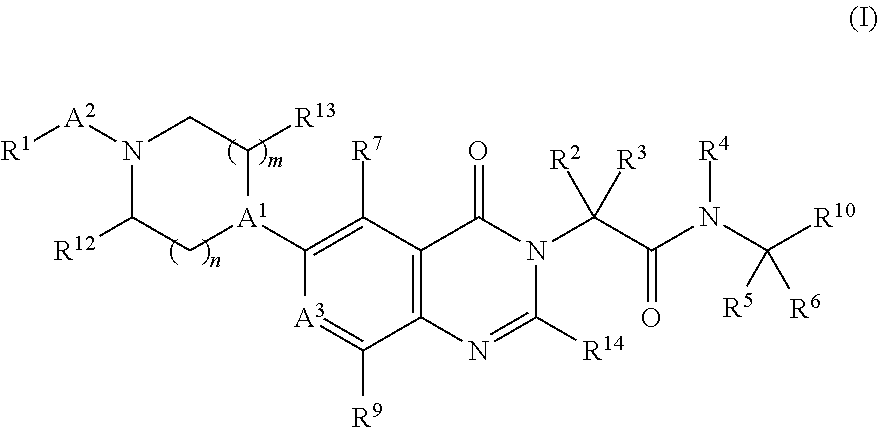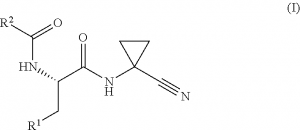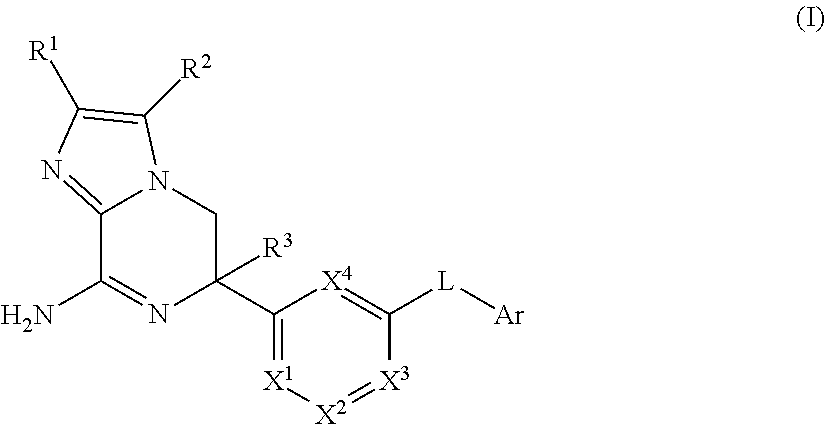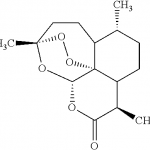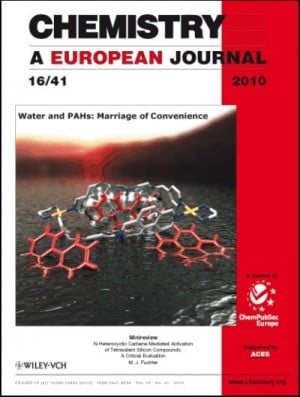To date, the Vapourtec R-Series system has featured in 1003 or more peer reviewed publications.
Use the filter tools to see the sort of things that are possible, but note that most published papers will require a journal subscription.
Publications abstracts
The Photochemical Mediated Ring Contraction of 4H-1,2,6-Thiadiazines To Afford 1,2,5-Thiadiazol-3(2H)-one 1-Oxides
- Emmanouil Broumidisa, Christopher G. Thomsona, Brendan Gallaghera, Lia Sotorríosa, Kenneth G. McKendricka, Stuart A. Macgregor*a, Martin J. Patersona, Janet E. Lovettb, Gareth O. Lloydc, Georgina M. Rosaira, Andreas S. Kalogiroud,e, Panayiotis A. Koutentis*e, and Filipe Vilela*a,f
- aInstitute of Chemical Sciences, School of Engineering & Physical Sciences, Heriot-Watt University, Edinburgh, EH14 4AS, United Kingdom
- bSUPA School of Physics and Astronomy and BSRC, University of St Andrews, St. Andrews, KY16 9SS, United Kingdom
- cJoseph Banks Laboratories, School of Chemistry, University of Lincoln, Brayford Pool, Lincoln LN6 7TS, United Kingdom
- dDepartment of Life Sciences, School of Sciences, European University Cyprus, 6 Diogenes Str., Engomi, P.O. Box 22006, 1516 Nicosia, Cyprus
- eDepartment of Chemistry, University of Cyprus, P.O. Box 20537, 1678 Nicosia Cyprus
- fContinuum Flow Lab, School of Engineering & Physical Sciences, Heriot-Watt University, Edinburgh, EH14 4AS, United Kingdom
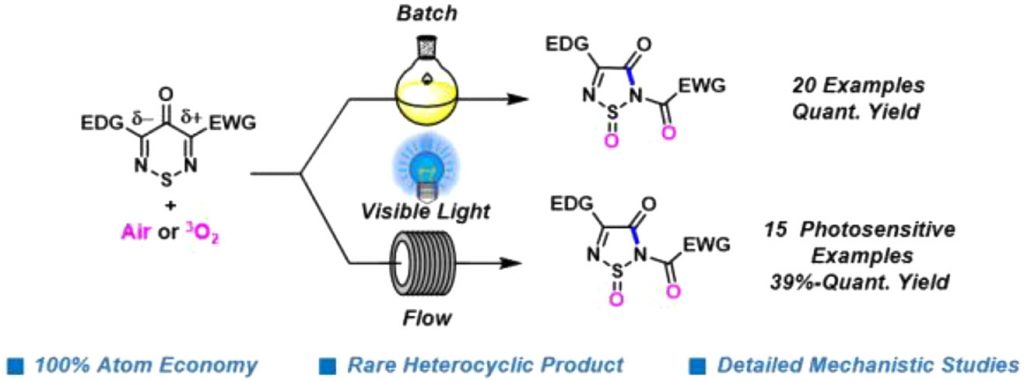 Read the publication that featured this abstract
Read the publication that featured this abstract1,2,6-Thiadiazines treated with visible light and 3O2 under ambient conditions are converted into difficult-to-access 1,2,5-thiadiazole 1-oxides (35 examples, yields of 39–100%). Experimental and theoretical studies reveal that 1,2,6-thiadiazines act as triplet photosensitizers that produce 1O2 and then undergo a chemoselective [3 + 2] cycloaddition to give an endoperoxide that ring contracts with selective carbon atom excision and complete atom economy. The reaction was optimized under both batch and continuous-flow conditions and is also efficient in green solvents.
Development of a Continuous Flow Baldwin Rearrangement Process and Its Comparison to Traditional Batch Mode
- Arlene Bonnera
- Marcus Baumanna
- aSchool of Chemistry, University College Dublin, Science Centre South, Belfield, Dublin 4, Ireland D04 N2E2
 Read the publication that featured this abstract
Read the publication that featured this abstractA new and highly efficient continuous flow process is presented for the synthesis of aziridines via the thermal Baldwin rearrangement. The process was initially explored using traditional batch synthesis techniques but suffered from moderate yields, long reaction times, and moderate diastereoselectivities. Here we demonstrate that the process can be greatly improved upon its transfer to continuous flow, which afforded the aziridine targets in high yields, short reaction times, and consistently high diastereoselectivities, with the high-throughput process rendering multigram quantities of product in short periods of time. In addition, flow processing extended the substrate scope including several examples that had failed in batch mode, thus demonstrating the value of this overlooked entry into valuable aziridine species.
Continuous Flow Oxidation of Alcohols Using TEMPO/NaOCl for the Selective and Scalable Synthesis of Aldehydes
- Parth Naika, Jorge García-Lacunaa, Patrick O’Neillb, and Marcus Baumanna
- aSchool of Chemistry, University College Dublin, Science Centre South, Belfield D04 N2E5, Ireland
- bPfizer Ireland, Ringaskiddy P43 X336, Ireland
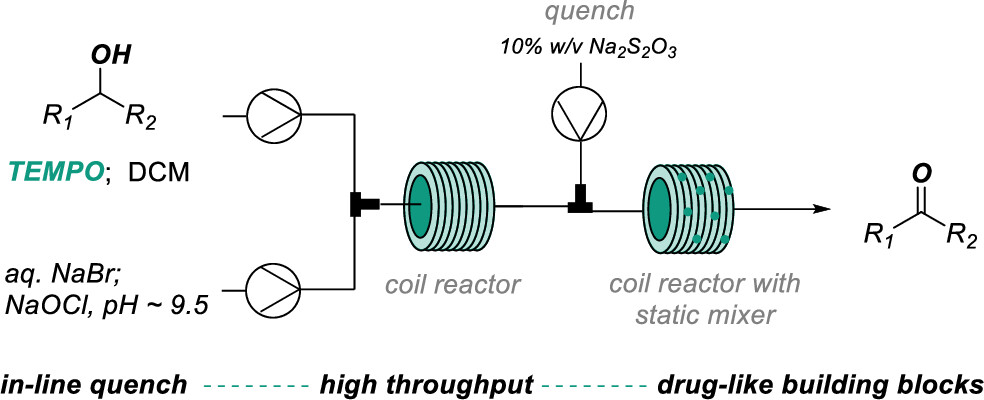 Read the publication that featured this abstract
Read the publication that featured this abstractA simple and benign continuous flow oxidation protocol for the selective conversion of primary and secondary alcohols into their respective aldehyde and ketone products is reported. This approach makes use of catalytic amounts of TEMPO in combination with sodium bromide and sodium hypochlorite in a biphasic solvent system. A variety of substrates are tolerated including those containing heterocycles based on potentially sensitive nitrogen and sulfur moieties. The flow approach can be coupled with inline reactive extraction by formation of the carbonyl-bisulfite adduct which aids in separation of remaining substrate or other impurities. Process robustness is evaluated for the preparation of phenylpropanal at decagram scale, a trifluoromethylated oxazole building block as well as a late-stage intermediate for the anti-HIV drug maraviroc which demonstrates the potential value of this continuous oxidation method.
Development of Continuous Flow Processes to Access Pyrrolo[2,1-f][1,2,4]triazin-4-amine: An RSM for the Synthesis of Antiviral Drugs
- Maksim Vasileva, Aravind S. Gangua, Praveen Gajulaa, Nathaniel D. Kaetzela, Vasudevan Natarajana, Bimbisar Desaia, Gopal Sirasania, Bo Qua, and Chris H. Senanayakea
- aTCG GreenChem, Inc., 701 Charles Ewing Boulevard, Ewing, New Jersey 08628, United States
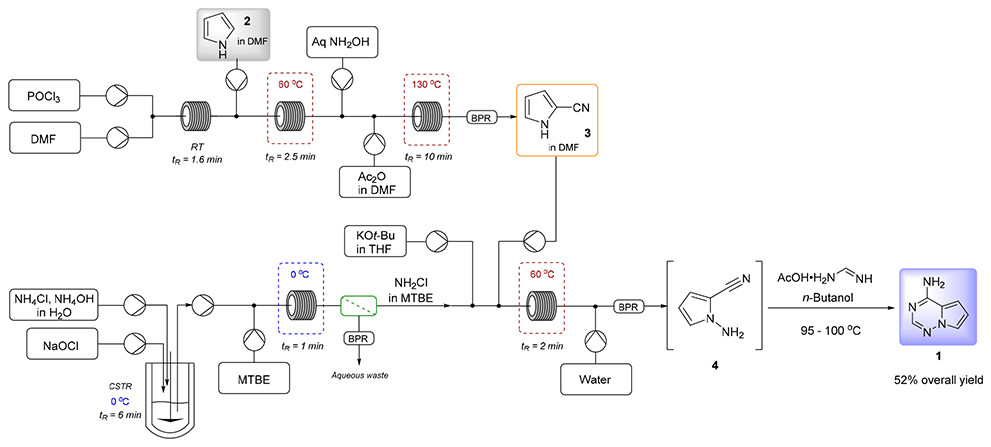 Read the publication that featured this abstract
Read the publication that featured this abstractPyrrolo[2,1-f][1,2,4]triazines are important scaffolds in a number of active pharmaceutical ingredients with a broad range of biological activities to treat broad-spectrum viral infections. We recently reported the synthesis at the kilogram scale in batch mode with extensive process safety studies, where NaH was applied as the base to deprotonate 2-cyanopyrrole, and then in situ prepared monochloramine solution was utilized for the N-amination, followed by cyclization with formamidine acetate to produce the required pyrrolo[2,1-f][1,2,4]triazine (1) as the regulatory starting material for the antiviral drug Remdesivir. To meet the market demand of Remdesivir for the treatment of the recently emerged severe acute respiratory syndrome coronavirus 2 (SARS-CoV-2), a high-throughput process is required to supply this key starting material on a large scale in a timely manner. In this Article, we report the second-generation synthesis of pyrrolo[2,1-f][1,2,4]triazine 1 by employing continuous flow chemistry tools. The amination step was adapted to continuous flow by applying in situ monochloramine synthesis and utilizing a process-friendly soluble base KOt-Bu. The new multistage continuous flow approaches, including both chemical steps, extractions and separations, afford a viable process to access this widely employed key starting material 1 for the synthesis of Remdesivir.
Late-Stage C(sp2)–C(sp3) Diversification via Nickel Oxidative Addition Complexes
Carlota Odena1,3, María Lourdes Linares4, Nahury Castellanos-Blanco1, Ryan T. McGuire1, Jose Manuel Alonso4, Alejandro Diéguez5, Eric Tan5, Jesús Alcázar4, Peter Buijnsters5 Santiago Cañellas4 and Ruben Martin1,2
- 1Institute of Chemical Research of Catalonia (ICIQ), The Barcelona Institute of Science and Technology, Av. Països Catalans 16, 43007 Tarragona, Spain
- 2ICREA, Passeig Lluïs Companys 23, 08010 Barcelona, Spain
- 3Department de Química Analítica i Química Orgànica, Universitat Rovira i Virgili, c/ Marcel·lí Domingo 1, 43007 Tarragona, Spain
- 4Janssen Research and Development, Janssen-Cilag, S. A. c/ Rio Jarama 75, 45007 Toledo, Spain
- 5Medicinal Chemistry, Janssen Pharmaceutica, N. V. B-2340 Beerse, Belgium
Read the publication that featured this abstractNickel catalysis has emerged as a powerful technique for streamlining the access to exceedingly complex organic molecules from simple precursors. However, nickel-catalyzed cross-couplings with advanced synthetic intermediates still remain a considerable challenge. Herein, we describe a technique based on the utilization of nickel oxidative addition complexes (Ni-OAC) of drug-like molecules as a platform to rapidly and reliably generate lead candidates with enhanced C(sp3) fraction. The potential of Ni-OACs to access new chemical space has been assessed in three different C(sp2)–C(sp3) bond-forming events without recourse to specialized ligand backbones. Reactions with Ni-OACs proceed under exceptionally mild conditions and with improved generality when compared to nickel-catalyzed reactions. The development of an automated process for forging C(sp2)–C(sp3) architectures further illustrates the robustness and generality of Ni-OACs, thus offering a new gateway to expedite the design-make-test-analyze (DMTA) cycle in drug discovery
Recent advances in photoredox catalytic transformations by using continuous-flow technology
- Xin Yuana
- Hai-Bin Fana
- Jie Liua
- Long-Zhou Qina
- Jian Wanga
- Xiu Duana
- Jiang-Kai Qiua,b
- Kai Guoa,b
- aCollege of Biotechnology and Pharmaceutical Engineering, Nanjing Tech University, Nanjing 211816, Jiangsu, China
- bState Key Laboratory of Materials-Oriented Chemical Engineering, Nanjing Tech University, Nanjing 211800, Jiangsu, China
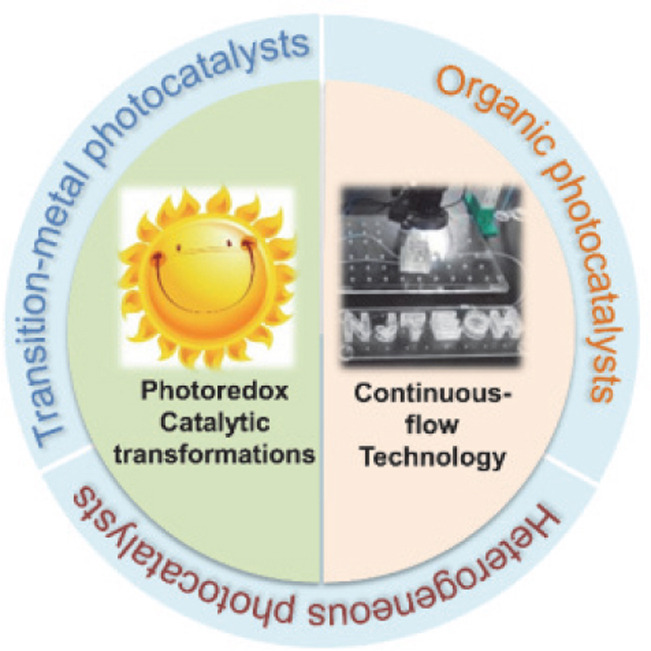 Read the publication that featured this abstract
Read the publication that featured this abstractPhotoredox catalysis is regarded as an economically appealing method for highly efficient and sustainable chemical syntheses. Nevertheless, numerous recent studies have revealed several unresolved disadvantages; for example, based on the Bouguer-Lambert-Beer law, the short propagation distance of photons in traditional batch reactors hampers the scalability of photocatalytic reactions. The introduction of continuous-flow technology for photochemical synthesis has resolved several of these problems. The use of photochemistry in microreactors has resulted in various transformations. Superior mixing ability, more effective heat transfer, and the easier magnification of continuous-flow chemical reactions are key to its success. Continuous-flow technology has allowed the optimization of several different types of conversion. Photoredox catalysts are effective under various reaction conditions because of their single-electron transfer properties. Common photocatalysts include transition metal complexes containing ruthenium, iridium, copper, iron, or manganese; organic photocatalysts; and heterogeneous photocatalysts. This review covers the types of photocatalysts that have recently been used in continuous-flow photochemistry.
Metal-Free Addition of Alkyl Bromides to Access 3,3-Disubstituted Quinoxalinones Enabled by Visible-Light Photoredox Catalysis
- Jennie Liaoa, David N. Hunterb, Ugochinyere Nancy Oloyedeb, Joseph W. McLaughlinb, Cheng Wangb, and Abdellatif El Marrounib
- aProcess Research & Development, MRL, Merck & Co., Inc., West Point, Pennsylvania 19486, United States
- bDiscovery Chemistry, MRL, Merck & Co., Inc., West Point, Pennsylvania 19486, United States
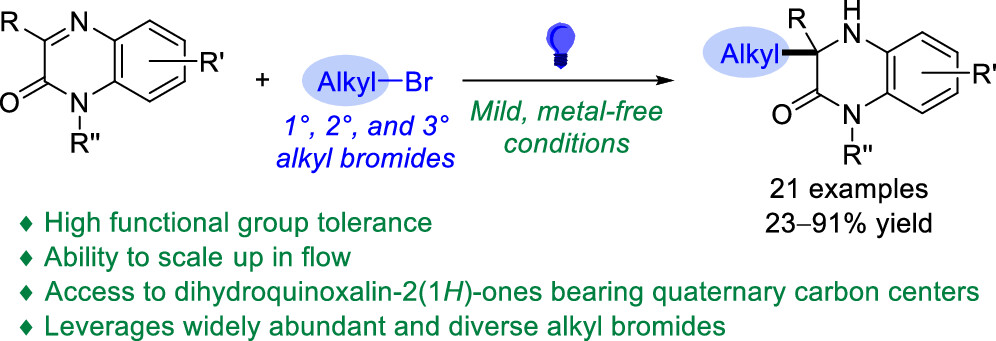 Read the publication that featured this abstract
Read the publication that featured this abstractA metal-free addition of unactivated alkyl bromides to quinoxalin-2(1H)-ones is described. This method enables the construction of valuable 3,3-disubstituted dihydroquinoxalin-2(1H)-ones bearing quaternary carbon centers under mild, visible-light photoredox catalysis. High functional group tolerance is observed in both the quinoxalinone and alkyl bromide partners. The ability to scale up this method was demonstrated under photo-flow conditions to enable gram-scale synthesis.
Direct Arylation of Thiophenes in Continuous Flow
- Alessandro Petronillia, Prof. Tommaso Carofiglioa and Dr. Paolo Zardia,b
- aDepartment of Chemical Sciences, University of Padova, Via Francesco Marzolo 1, 35131 Padova, Italy
- bDepartment of Chemical and Geological Sciences, University of Modena and Reggio Emilia, Via Giuseppe Campi 103, 41125 Modena, Italy
 Read the publication that featured this abstract
Read the publication that featured this abstractSynthetic methodologies involving direct C−H functionalization are promising to improve sustainability in organic synthesis. However, these newly developed strategies may have a scarce appeal for larger scale applications due to the high catalyst loading, harsh conditions or their typically long reaction times that affect severely the process productivity. Flow chemistry technology is a recognized tool to improve both the efficiency and scalability in organic synthesis that can overcome these issues. In the present paper we studied an “in flow” method for the direct arylation of thiophene derivatives with aromatic bromides to promptly afford heteroaromatic biaryls, which are recurrent motifs both in biologically active molecules and in functional materials. By using a packed-bed reactor containing potassium carbonate as the solid base and an automated system, we could develop a reliable methodology for thiophene arylation in flow with yields up to 90 % within a residence time of 30–60 minutes. This strategy is suitable for a wide variety of substrates and allowed the reaction to be carried out at gram-scale reaching a productivity value of 1.1 g h−1.
Metal-free synthesis of selenoesters directly from carboxylic acids using bifunctional selenoureas under batch and continuous-flow conditions
- Mouzma Mhatea, Chandra Sekhara Mahantaa, Devendra K. Dhakedb, Velyutham Ravichandirana and Sharada Prasanna Swaina
- aDepartment of Medicinal Chemistry and Centre for Marine Therapeutics (CMT), National Institute of Pharmaceutical Education and Research-Kolkata, 168, Maniktala Main Road, Kolkata 700054, India
- bDepartment of Pharmacoinformatics, National Institute of Pharmaceutical Education and Research-Kolkata, 168, Maniktala Main Road, Kolkata 700054, India
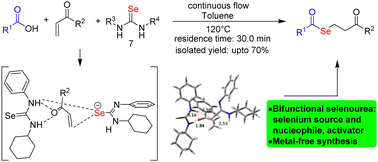 Read the publication that featured this abstract
Read the publication that featured this abstractA new metal-free method for the synthesis of selenoesters directly from carboxylic acids in a flow reactor is reported. The carboxylic acids, Michael acceptors, and bifunctional selenoureas (source of selenium and nucleophile, activator of carbonyl group) were reacted to obtain selenoesters (up to 70% yield). An evidence-backed plausible mechanism is also presented.
Continuous Flow Synthesis of Cycloparaphenylene Building‐Blocks on a Large Scale
Jan H. Griwatza,b, Mika L. Kesslera, Hermann A. Wegnera,b
- aInstitute of Organic Chemistry, Justus Liebig University Giessen, Heinrich-Buff-Ring 17, 35392 Giessen, Germany
- bCenter for Materials Research, Justus Liebig University Giessen, Heinrich-Buff-Ring 16, 35392 Giessen, Germany
Read the publication that featured this abstractThe synthesis of [n]cycloparaphenylenes ([n]CPPs) and similar nanohoops is usually based on the combination of building blocks to a macrocyclic precursor, which is then aromatized in the final step. Access to those building blocks in large amounts will simplify the synthesis and studies of CPPs as novel functional materials in applications. Herein, we report a continuous flow synthesis of key CPP building blocks using versatile synthesis techniques such as electrochemical oxidation, lithiations and Suzuki cross couplings in self-built reactors on up-to kilogram scale.
Continuous Flow Chemistry: A Novel Technology for the Synthesis of Marine Drugs
- Laura F. Peñaa, Paula González-Andrésa, Lucía G. Partea, Raúl Escribanoa, Javier Guerraa, Asunción Barberoa and Enol Lópeza
- aDepartment of Organic Chemistry, Campus Miguel Delibes, University of Valladolid, 47011 Valladolid, Spain
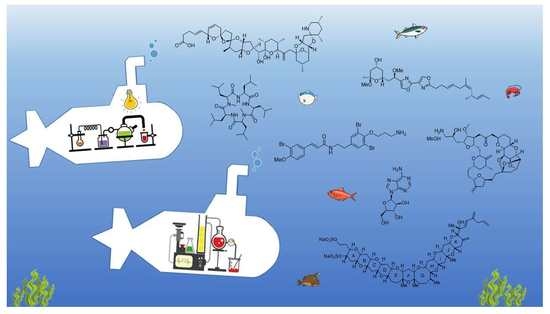 Read the publication that featured this abstract
Read the publication that featured this abstractIn this perspective, we showcase the benefits of continuous flow chemistry and photochemistry and how these valuable tools have contributed to the synthesis of organic scaffolds from the marine environment. These technologies have not only facilitated previously described synthetic pathways, but also opened new opportunities in the preparation of novel organic molecules with remarkable pharmacological properties which can be used in drug discovery programs.
Visible-Light-Mediated TiO2-Catalyzed Aerobic Dehydrogenation of N-Heterocycles in Batch and Flow
- Junghoon Noha, Jun-Young Choa, Mincheol Parkb, and Boyoung Y. Parka
- aDepartment of Fundamental Pharmaceutical Science, Kyung Hee University, Seoul 02447, South Korea
- bDepartment of Biomedical and Pharmaceutical Sciences, Kyung Hee University, Seoul 02447, South Korea
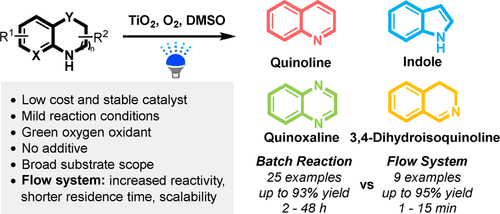 Read the publication that featured this abstract
Read the publication that featured this abstractWe report a simple and environmentally friendly method for synthesizing N-containing heterocycles via a visible-light-mediated aerobic dehydrogenation reaction. Using a nontoxic, stable, and inexpensive titanium dioxide catalyst, a variety of substituted quinoline, indole, quinoxaline, and 3,4-dihydroisoquinoline derivatives could be synthesized using the green oxidant molecular oxygen. Improved reactivity and scalability of this reaction were demonstrated by adapting the photochemical multiphasic reaction to a continuous flow system. To gain insight into the mechanism, we also conducted several mechanistic studies, including absorption analysis, light on–off testing, and NMR analysis. Especially, oxygen is reduced to hydrogen peroxide, and dimethyl sulfoxide is a critical scavenger of the oxidant byproduct for ensuring high yields.
Continuous flow synthesis of pyridinium salts accelerated by multi-objective Bayesian optimization with active learning
John H. Dunlapab, Jeffrey G. Ethierab, Amelia A. Putnam-Neeb ac, Sanjay Iyerd, Shao-Xiong Lennon Luoe, Haosheng Fenge, Jose Antonio Garrido Torresf, Abigail G. Doyleg, Timothy M. Swagere, Richard A. Vaiaa, Peter Miraua, Christopher A. Crousea and Luke A. Baldwina
- aMaterials and Manufacturing Directorate, Air Force Research Laboratory, Wright-Patterson AFB, OH 45433, USA.
- bUES, Inc., Dayton, OH 45431, USA
- cNational Research Council Research Associate, Air Force Research Laboratory, Wright-Patterson AFB, OH 45433, USA
- dDepartment of Chemistry, Purdue University, West Lafayette, IN 47907, USA
- eDepartment of Chemistry, Massachusetts Institute of Technology, Cambridge, MA 02139, USA
- fDepartment of Chemistry, Princeton University, Princeton, NJ 08544, USA
- gDepartment of Chemistry and Biochemistry, University of California, Los Angeles, CA 90095, USA
Read the publication that featured this abstractWe report a human-in-the-loop implementation of the multi-objective experimental design via a Bayesian optimization platform (EDBO+) towards the optimization of butylpyridinium bromide synthesis under continuous flow conditions. The algorithm simultaneously optimized reaction yield and production rate (or space-time yield) and generated a well defined Pareto front. The versatility of EDBO+ was demonstrated by expanding the reaction space mid-campaign by increasing the upper temperature limit. Incorporation of continuous flow techniques enabled improved control over reaction parameters compared to common batch chemistry processes, while providing a route towards future automated syntheses and improved scalability. To that end, we applied the open-source Python module, nmrglue, for semi-automated nuclear magnetic resonance (NMR) spectroscopy analysis, and compared the acquired outputs against those obtained through manual processing methods from spectra collected on both low-field (60 MHz) and high-field (400 MHz) NMR spectrometers. The EDBO+ based model was retrained with these four different datasets and the resulting Pareto front predictions provided insight into the effect of data analysis on model predictions. Finally, quaternization of poly(4-vinylpyridine) with bromobutane illustrated the extension of continuous flow chemistry to synthesize functional materials.
Liquid/liquid heterogeneous reaction monitoring: Insights into biphasic Suzuki-Miyaura cross-coupling
- Yusuke Sato1, Junliang Liu1, Ikenna Edward Ndukwe2, Maria Victoria Silva Elipe2, Daniel J. Griffin3, James I. Murray4,5, Jason E. Hein1,5,6,7
- 1Department of Chemistry, The University of British Columbia, Vancouver, BC V6T 1Z1, Canada
- 2Pivotal Attribute Sciences, Drug Substance Technologies, Amgen, Inc., Thousand Oaks, CA 91320, USA
- 3Pivotal and Commercial Synthetics, Drug Substance Technologies, Amgen, Inc., Cambridge, MA 02142, USA
- 4Pivotal and Commercial Synthetics, Drug Substance Technologies, Amgen, Inc., Thousand Oaks, CA 91320, USA
- 5Acceleration Consortium, University of Toronto, Toronto, ON, Canada
- 6Department of Chemistry, University of Bergen, Bergen, Norway
 Read the publication that featured this abstract
Read the publication that featured this abstractMonitoring the reaction progress of biphasic reaction mixtures has long presented a significant challenge to modern analytical techniques. While a multitude of widely utilized chemical transformations have been performed under such conditions, in-line separation and analysis of each phase have not been possible, inhibiting detailed kinetic and mechanistic studies of these important processes. Herein, we disclose a novel sampling technology capable of accurately monitoring reaction progress in biphasic mixtures using online high-performance liquid chromatography (HPLC) and multinuclear flow nuclear magnetic resonance (NMR) spectroscopy. A biphasic sampling platform was developed to circulate a single phase of a biphasic reaction mixture for analysis using these techniques. The utility of this methodology was demonstrated through analysis of boronic acid distribution and speciation under basic conditions as well as for monitoring the reaction progress of a biphasic Suzuki-Miyaura cross-coupling.
Shining a Light on the Advances, Challenges and Realisation of Utilising Photoredox Catalysis in Pharmaceutical Development
- Dr. Emily E. Callard-Langdona
- Dr. Alan Stevena
- Dr. Rachel J. Kahana
- aCatSci Ltd, CBTC2, Capital Business Park, Wentloog, Cardiff, CF3 2PX UK
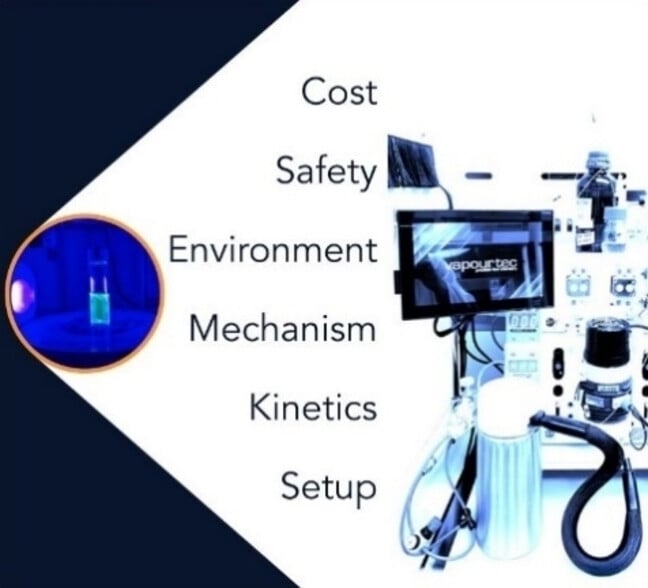 Read the publication that featured this abstract
Read the publication that featured this abstractPhotoredox catalysis has advanced significantly over the last fifteen years, with improvements in technology facilitating implementation in both academic and industrial settings. Despite these advances, the uptake of photoredox catalysis in pharmaceutical development and manufacture has been slow, in part due to the challenge of developing a robust, transferable process. This perspective provides insight on the successes and difficulties encountered when applying photoredox catalysis to pharmaceutical development. It is hoped greater understanding of the challenges faced by the pharmaceutical industry will inform future research and encourage collaboration.
Modular Photochemical Flow Synthesis of Structurally Diverse Benzyne and Triazine Precursors
- Jorge García-Lacunaa
- Marcus Baumanna
- aSchool of Chemistry, University College Dublin, Science Centre South, Belfield, Dublin 4, Dublin, Ireland
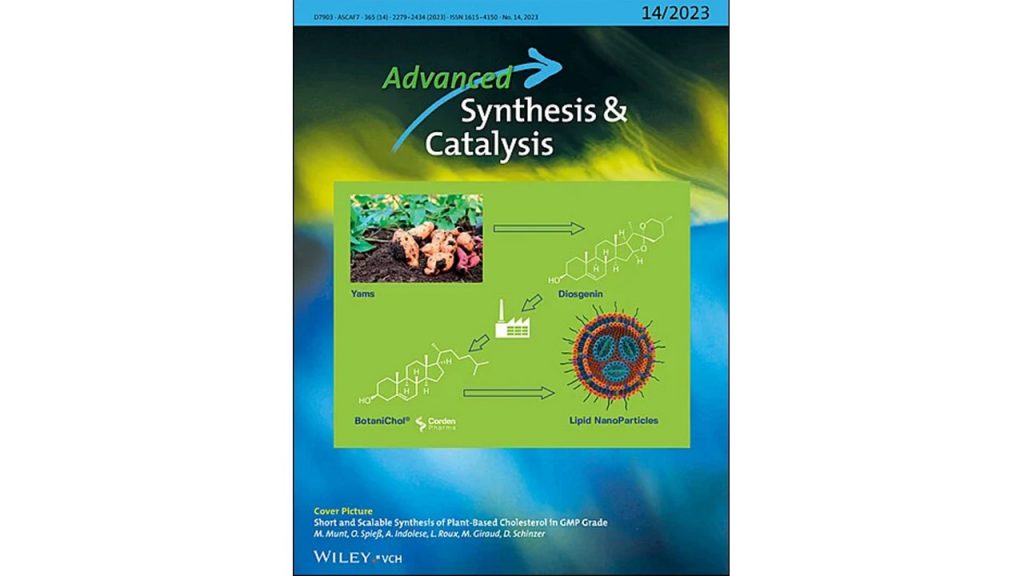 Read the publication that featured this abstract
Read the publication that featured this abstractBenzyne and related arynes are classical high-energy species with a rich history of widespread applications in synthesis. However, despite several synthetic routes being available to generate arynes and their precursors, none represents an ideal entry to benzyne chemistry in view of safety, scalability, and sustainability. Here we report a new photochemical flow process allowing for the generation of benzyne precursors in high yields, and throughput, with easy isolation of multigram quantities of products. This process leverages a catalyst-free photochemical rearrangement via a photoexcited nitro arene which involves a cyclic hydroxylamine intermediate that has been fully characterized. The resulting precursors were converted to benzynes via a second photochemical flow process generating heterocyclic targets upon trapping with azide and sydnone partners. Remarkably, when reacting the benzyne precursors with secondary amines, a wide range of aryl triazines is obtained in good yields via a third photo-flow transformation. This represents a modular approach to synthesize these species, that avoids the use of potentially explosive diazonium salts. Ultimately, three photochemical flow processes using a single high-power LED light source (365 nm, adjustable in-put power) are presented with manifest benefits compared to batch processing. Moreover, the functionalization of a pendent carboxyl group to form sets of biologically relevant aryl triazine-based amides highlights further applications of these unique and industrially relevant triazine entities.
Research Activities at Faculty of Chemical Technology, Hanoi University of Industry – 20 Years of Growth and Development
Tuan Anh Nguyena, The Huu Nguyena, Van Dong Phama, Minh Tan Vua, Thi Mai Huong Phama
- aHanoi University of Industry, 298 Cau Dien Street, Bac Tu Liem District, Hanoi, 10000 Viet Nam
Read the publication that featured this abstractHanoi University of Industry, with a 125-year history of construction and development, is the leading institution for training and applied scientific research in Vietnam. It offers a wide range of disciplines, types, and levels of education to produce high-quality human resources for the country’s industrialization, national modernization, and international integration efforts. The university currently boasts over 1,500 staff and lecturers, three campuses covering nearly 50 hectares, and a student population of more than 30,000. Hanoi University of Industry provides multidisciplinary training, providing high-quality human resources for society. In which, the Faculty of Chemical Technology was established on March 1, 2003, in 20 years of construction and development, the faculty has constantly grown, annually providing the society with many high-quality human resources, with many fields of study diverse, learning, training: Chemical engineering technology, Environmental engineering technology, Food technology and Pharmaceutical chemistry. Besides, the faculty, students and students of the faculty have made great efforts in training, studying and doing scientific research, achieving many excellent achievements.
Metabolite Changes of Perna canaliculus Following a Laboratory Marine Heatwave Exposure: Insights from Metabolomic Analyses
- Awanis Azizan1, Leonie Venter1, Peet J. Jansen van Rensburg2, Jessica A. Ericson3, Norman L. C. Ragg3 and Andrea C. Alfaro1
- 1Aquaculture Biotechnology Research Group, School of Science, Auckland University of Technology, Private Bag 92006, Auckland 1142, New Zealand
- 2Human Metabolomics, North-West University, Potchefstroom 2520, South Africa
- 1Cawthron Institute, Private Bag 2, Nelson 7042, New Zealand
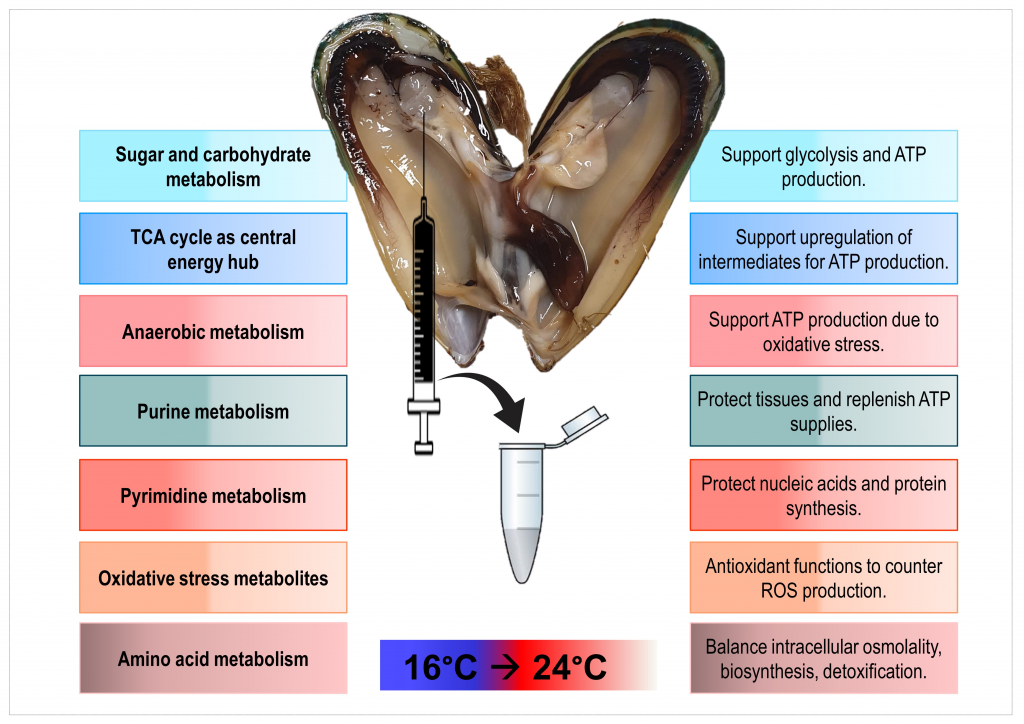 Read the publication that featured this abstract
Read the publication that featured this abstractTemperature is considered to be a major abiotic factor influencing aquatic life. Marine heatwaves are emerging as threats to sustainable shellfish aquaculture, affecting the farming of New Zealand’s green-lipped mussel [Perna canaliculus (Gmelin, 1791)]. In this study, P. canaliculus were gradually exposed to high-temperature stress, mimicking a five-day marine heatwave event, to better understand the effects of heat stress on the metabolome of mussels. Following liquid chromatography-tandem mass spectrometry analyses of haemolymph samples, key sugar-based metabolites supported energy production via the glycolysis pathway and TCA cycle by 24 h and 48 h of heat stress. Anaerobic metabolism also fulfilled the role of energy production. Antioxidant molecules acted within thermally stressed mussels to mitigate oxidative stress. Purine metabolism supported tissue protection and energy replenishment. Pyrimidine metabolism supported the protection of nucleic acids and protein synthesis. Amino acids ensured balanced intracellular osmolality at 24 h and ammonia detoxification at 48 h. Altogether, this work provides evidence that P. canaliculus has the potential to adapt to heat stress up to 24 °C by regulating its energy metabolism, balancing nucleotide production, and implementing oxidative stress mechanisms over time. The data reported herein can also be used to evaluate the risks of heatwaves and improve mitigation strategies for aquaculture.
Combining Tailored Ionic Liquids with Ti3C2Tx MXenes for an Enhanced Load-Carrying Capacity Under Boundary Lubrication
Philipp G. Grützmachera, Roman Neuhausera, Kristof Stagelb, Katharina Bica-Schröderb, Guido Boidic, Carsten Gachota, Andreas Rosenkranzd
- aInstitute for Engineering Design and Product Development Research Unit Tribology E307-05, TU Wien, 1060 Vienna, Austria
- bInstitut für Angewandte Synthesechemie (IAS), Sustainable Organic Synthesis and Catalysis research group, TU Wien, 1060 Vienna, Austria
- cAC2T research GmbHViktor-Kaplan-Straße 2/C, 2700 Wiener Neustadt, Austria
- dDepartment of Chemical Engineering, Biotechnology and Materials (FCFM), Universidad de Chile, Santiago 8370448, Chile
Read the publication that featured this abstractTo improve the efficiency and lifetime of mechanical components, new lubrication systems are needed. Two complementary material classes, which have demonstrated a promising tribological performance, are ionic liquids and MXenes (2D transition metal carbides and nitrides). Herein, Ti3C2Tx MXenes are used as additives in ionic liquids (ILs) to improve their load-carrying capacity under boundary lubrication. The specifically synthesized ILs share the same cation (trioctyl(methyl)phosphonium) but different anions (dimethyl phosphate and dibutyl phosphate for IL1 and IL2, respectively) to assess the effect of the anion’s alkyl chain length. The wear reduction performance is tested with a cylinder-on-ring contact in a standardized Brugger tester, which is suitable to study boundary lubrication and to assess the antiwear ability of the IL/MXene lubricant blends. MXenes indicate an excellent dispersibility in both ILs over 24 h. It is found that, irrespective of the used IL, the addition of MXenes always increases the load-carrying capacity. Particularly, significantly reduced wear and thus a high load-carrying capacity are observed for the combination IL2/MXenes, which also outperform fully formulated commercially available lubricants such as turbine oils.
An all-in-one multipurpose robotic platform for the self-optimization, intensification and scale-up of photocatalysis in flow
Aidan Slatterya,Zhenghui Wena, Pauline Tenblada, Diego Pintossia, Jesus Sanjose-Ordunaa, Tim den Hartoga, b, c, Timothy Noela
- aFlow Chemistry Group, van ’t Hoff Institute for Molecular Sciences (HIMS), University of Amsterdam, Science Park 904, 1098 XH Amsterdam, The Netherlands
- bZuyd University of Applied Sciences, Nieuw Eyckholt 300, 6419 DJ Heerlen, The Netherlands
- cThe Netherlands Organisation for Applied Scientific Research (TNO), High Tech Campus 25, 5656AE Eindhoven, The Netherlands
Read the publication that featured this abstractThe optimization, intensification, and scaling up of chemical processes are essential and time-consuming aspects of contemporary chemical manufacturing, necessitating expertise and precision due to their intricate and sensitive nature. However, these process development problems are often carried out independently and consecutively, which can exacerbate the already significant consumption of time and resources involved in the process. In this work, we present a versatile, all-in-one robotic platform for the autonomous optimization, intensification, and scaling up of photocatalytic reactions in flow. This platform overcomes associated challenges through the integration of readily available hardware and custom software, offering a hands-off solution. Our open source platform combines a liquid-handler, syringe pumps, a tunable high-powered photoreactor, cheap IoT devices and an in-line NMR to enable automated, data-rich optimization using a Closed-Loop Bayesian Optimization strategy. The use of a high-power continuous-flow capillary photoreactor enables highly reproducible data to be obtained, as it mitigates issues related to mass, heat, and photon transport that are often the main sources of irreproducibility in photocatalytic transformations. A user-friendly graphical interface allows chemists without programming or machine learning expertise to easily optimize, monitor, and analyze photocatalytic reactions for chemical spaces of both continuous and discrete variables. The system’s effectiveness was demonstrated by testing it on challenging photocatalytic transformations, which resulted in increased overall reaction yields and an impressive up to 550-fold improvement in space-time yields compared to batch processes. Additional tests on literature-reported reactions previously optimized in flow yielded substantial increases in both yield and space-time yield. Overall, our studies demonstrate that combining flow-based reactor technology with Bayesian optimization yields superior and unbiased results compared to human effort and intuition in terms of pace, precision, and outcomes for the optimization of photocatalytic reactions. Finally, due to its ability to autonomously generate datasets that include both optimal and suboptimal conditions, our RoboChem platform also contributes to advancing the field towards a digitally-driven era in synthetic chemistry.
Multi-platform synthesis of ondansetron featuring process intensification in flow
- Yoshio Hatoa,b
- Timothy F. Jamisona
- aDepartment of Chemistry, Massachusetts Institute of Technology, 77 Massachusetts Avenue, Cambridge, Massachusetts 02139, USA
- bShionogi Pharmaceutical Research Center, Shionogi & Co., Ltd., Toyonaka, Osaka 561-0825, Japan
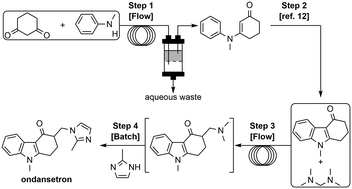 Read the publication that featured this abstract
Read the publication that featured this abstractEfficient and robust synthetic processes of active pharmaceutical ingredients (APIs) are highly desirable, and continuous flow chemistry is a critical component of this endeavor. The clinical importance of ondansetron, a World Health Organization essential medicine, prompted us to investigate continuous synthetic approaches to this API. Our efforts to improve the synthetic processes led to a continuous condensation step and a continuous Mannich reaction. A continuous work-up and purification process was also established for the former. A batch process was employed for an elimination and Michael addition step, as it not only accommodated the physical properties of the reaction mixtures, but also provided a high productivity of the desired product. Taken together, these findings demonstrate the complementary advantages of flow and batch chemistry in API synthesis.
Resurgence and advancement of photochemical hydrogen atom transfer processes in selective alkane functionalizations
Liang Changa, Shun Wangb, Qing Anb, Linxuan Liub, Hexiang Wangb, Yubo Lib, Kaixuan Fengb and Zhiwei Zuob
- aSchool of Pharmacy, Nanjing University of Chinese Medicine, Nanjing 210023, China
- bState Key Laboratory of Organometallic Chemistry, Shanghai Institute of Organic Chemistry, Chinese Academy of Sciences, Shanghai 200032, China
Read the publication that featured this abstractThe selective functionalization of alkanes has long been recognized as a prominent challenge and an arduous task in organic synthesis. Hydrogen atom transfer (HAT) processes enable the direct generation of reactive alkyl radicals from feedstock alkanes and have been successfully employed in industrial applications such as the methane chlorination process, etc. Nevertheless, challenges in the regulation of radical generation and reaction pathways have created substantial obstacles in the development of diversified alkane functionalizations. In recent years, the application of photoredox catalysis has provided exciting opportunities for alkane C–H functionalization under extremely mild conditions to trigger HAT processes and achieve radical-mediated functionalizations in a more selective manner. Considerable efforts have been devoted to building more efficient and cost-effective photocatalytic systems for sustainable transformations. In this perspective, we highlight the recent development of photocatalytic systems and provide our views on current challenges and future opportunities in this field.
Photo- and Electrochemical Cobalt Catalysed Hydrogen Atom Transfer for the Hydrofunctionalisation of Alkenes
- Samikshan Jana1
- Victor Jose Mayerhofer1
- Christopher Teskey2
- 1RWTH: Rheinisch-Westfalische Technische Hochschule Aachen, Institute of Organic Chemistry, GERMANY
- 2RWTH Aachen: Rheinisch-Westfalische Technische Hochschule Aachen, Institute of Organic Chemistry, Landoltweg 1, 52074, Aachen, GERMANY
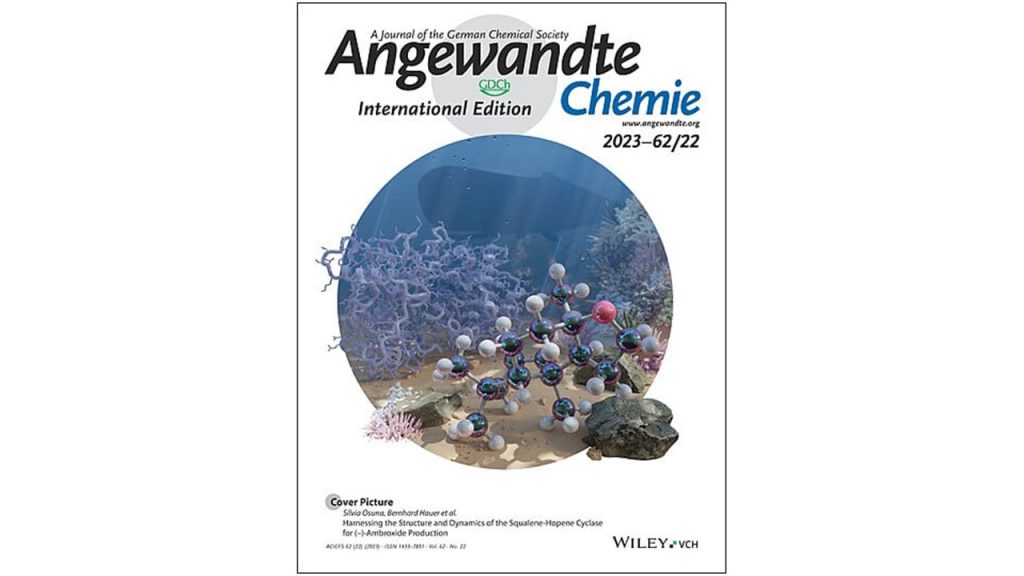 Read the publication that featured this abstract
Read the publication that featured this abstractCatalytic hydrogen atom transfer from metal-hydrides to alkenes allows feedstock olefins to be used as alkyl radical precursors. The chemoselectivity of this process makes it an attractive synthetic tool and as such it has been regularly used in synthesis of complex molecules. However, onwards reactivity is limited by compatibility with the conditions which form the key metal-hydride species. Now, through the merger with photocatalysis or electrochemistry, milder methods are emerging which can unlock entirely new reactivity and offer perspectives on expanding these methods in unprecedented directions. This review outlines the most recent developments in electro- and photochemical cobalt catalysed methods and offers suggestions on the future outlook.
The α-alkylation of ketones in flow
- Ella Coopera
- Emma Alcocka
- Mark Powera
- Gerard McGlackena
- aSchool of Chemistry and Analytical and Biological Chemistry Research Facility, University College Cork, T12 YN60 Cork, Ireland
 Read the publication that featured this abstract
Read the publication that featured this abstractThe α-deprotonation and alkylation of ketones is a fundamental transformation in organic chemistry. However, the apparent simplicity of this process belies its complexity. Oftentimes experimental conditions are non-ideal, and yields are low. Herein, we directly target these issues, and provide a continuous flow methodology which leads to excellent yields, reduces reaction time, avoids cryogenic temperatures, minimises exposure to alkyllithiums/alkylhalides, and can be scaled-out.
Continuous Flow Synthesis of Cyclobutenes Using LED Technology
- Megan Smytha
- Thomas S Moodya,b
- Scott Wharrya
- Marcus Baumannc
- aBiocatalysis group, Almac Sciences Ltd, Craigavon, United Kingdom of Great Britain and Northern Ireland
- bManufacturing, Arran Chemical Company, Athlone, Ireland
- bChemistry, University of Durham, Durham, United Kingdom of Great Britain and Northern Ireland
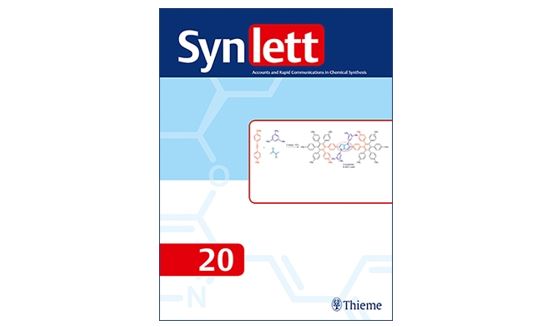 Read the publication that featured this abstract
Read the publication that featured this abstractCyclobutenes are highly strained ring systems of considerable synthetic interest that can be accessed via cycloaddition reactions between alkenes and alkynes. However, their traditional preparation relies on photochemical [2+2]-cycloadditions that exploit low wavelength UV radiation emitted from inefficient medium-pressure Hg-lamps. This paper reports on the development of a modern approach using a high-power LED set-up emitting at the boundary of UV-A and visible light in conjunction with a continuous flow reactor. The resulting flow process renders a series of cyclobutenes from maleimides and various commercial alkynes. This provides a more energy-efficient approach that is readily scalable to access multigram quantities of cyclobutenes in high chemical yields and short residence times. The value of these products is exemplified by flow-based hydrogenations yielding highly substituted cyclobutanes which represent sought after building blocks in modern medicinal chemistry programs.
Accelerated Chemical Reaction Optimization Using Multi-Task Learning
- Connor J. Taylor*a,b, Kobi C. Feltonc, Daniel Wighb,c, Mohammed I. Jeraald, Rachel Graingera, Gianni Chessaria, Christopher N. Johnsona, and Alexei A. Lapkin*b,c,d
- aAstex Pharmaceuticals, 436 Cambridge Science Park, Milton Road, Cambridge, CB4 0QA, United Kingdom
- bInnovation Centre in Digital Molecular Technologies, Yusuf Hamied Department of Chemistry, University of Cambridge, Lensfield Road, Cambridge, CB2 1EW, United Kingdom
- cDepartment of Chemical Engineering and Biotechnology, University of Cambridge, Philippa Fawcett Drive, Cambridge CB3 0AS, United Kingdom
- dCambridge Centre for Advanced Research and Education in Singapore Ltd., 1 Create Way, CREATE Tower #05-05, 138602, Singapore
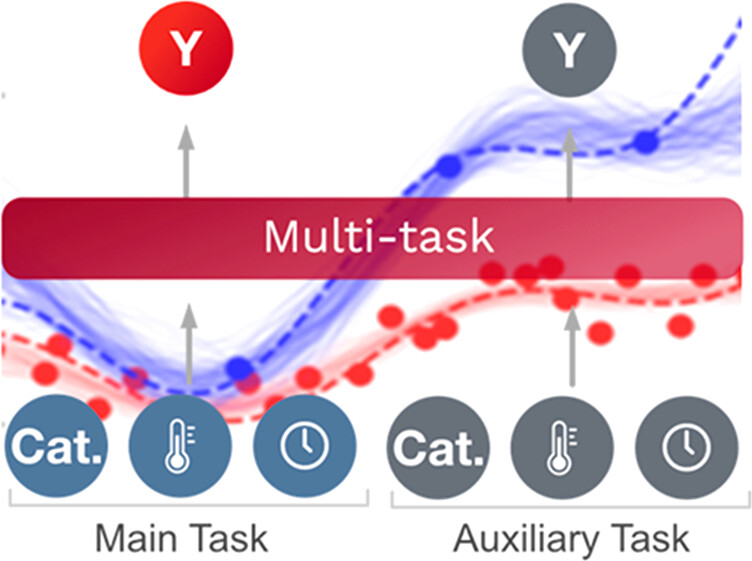 Read the publication that featured this abstract
Read the publication that featured this abstractFunctionalization of C–H bonds is a key challenge in medicinal chemistry, particularly for fragment-based drug discovery (FBDD) where such transformations require execution in the presence of polar functionality necessary for protein binding. Recent work has shown the effectiveness of Bayesian optimization (BO) for the self-optimization of chemical reactions; however, in all previous cases these algorithmic procedures have started with no prior information about the reaction of interest. In this work, we explore the use of multitask Bayesian optimization (MTBO) in several in silico case studies by leveraging reaction data collected from historical optimization campaigns to accelerate the optimization of new reactions. This methodology was then translated to real-world, medicinal chemistry applications in the yield optimization of several pharmaceutical intermediates using an autonomous flow-based reactor platform. The use of the MTBO algorithm was shown to be successful in determining optimal conditions of unseen experimental C–H activation reactions with differing substrates, demonstrating an efficient optimization strategy with large potential cost reductions when compared to industry-standard process optimization techniques. Our findings highlight the effectiveness of the methodology as an enabling tool in medicinal chemistry workflows, representing a step-change in the utilization of data and machine learning with the goal of accelerated reaction optimization.
Efficient degassing and ppm-level oxygen monitoring flow chemistry system
- Paulius Baronasa
- Jacob Lynge Elholma
- Kasper Moth-Poulsena,b,c,d
- aThe Institute of Materials Science of Barcelona, ICMAB-CSIC, Bellaterra, 08193, Barcelona, Spain
- bCatalan Institution for Research & Advanced Studies, ICREA, Pg. Lluís Companys 23, 08010 Barcelona, Spain
- cDepartment of Chemical Engineering, Universitat Politècnica de Catalunya, EEBE, Eduard Maristany 10–14, 08019 Barcelona, Spain
- dChalmers University of Technology, Department of Chemistry and Chemical Engineering. SE-412 96 Gothenburg, Sweden
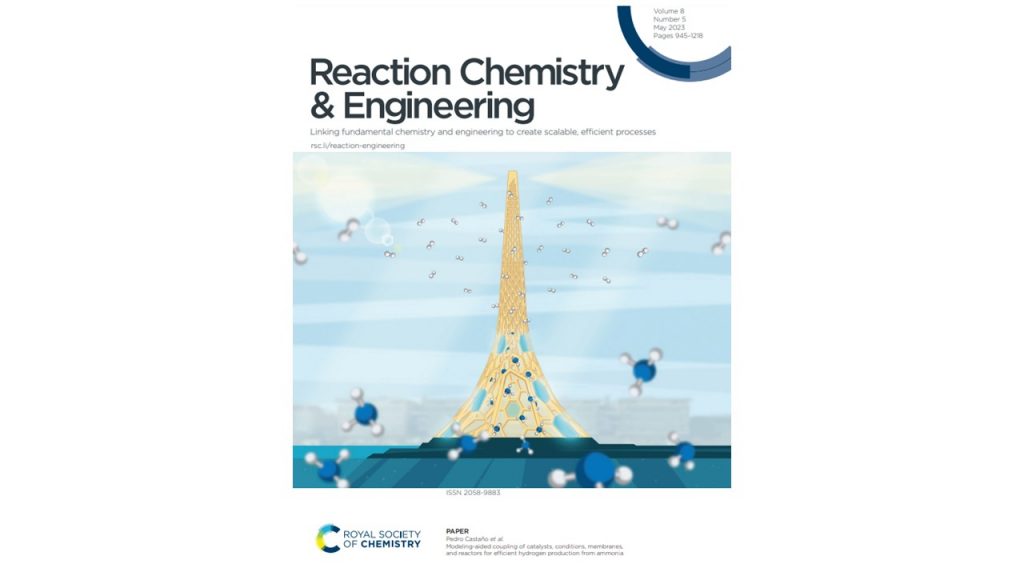
Low oxygen levels are critical for a long range of chemical transformations carried out in both flow and batch chemistry. Here, we present an inline continuous flow degassing system based on gas permeable membrane inside vacuum chamber for achieving and monitoring ppm-level oxygen concentrations in solutions. Oxygen presence was monitored with a molecular oxygen probe and a continuously running UV-Vis spectrometer. An automated setup for discovering optimal reaction conditions for minimal oxygen presence was devised. The parameters tested were; flow rate, vacuum pressure, solvent back-pressure, tube material, tube length and solvent oxygen solubility. The inline degassing system was proved to be effective to remove up to 99.9% of ambient oxygen from solvents at a flow rate of 300 μl/min and 4 mbar vacuum pressure inside the degassing chamber. Reaching lower oxygen concentrations was limited by gas permeation in the tubing following the degassing unit, which could be addressed by purging large volume flow reactors with an inert gas after degassing. Among all factors, oxygen solubility in solvent was found to play a significant role for achieving efficient degassing of solvents. Data presented here can be used to choose optimal experimental parameters for oxygen sensitive reactions in flow chemistry reaction setups. The data was also fitted to an analytically derived model from simple differential equations in physical context of the experiment.
Photo-Flow Technology for Chemical Rearrangements: A Powerful Tool to Generate Pharmaceutically Relevant Compounds
- Antonella Ilenia Alfanoa, Sveva Pellicciaa, Giacomo Rossinob, Orazio Chianesec, Vincenzo Summaa, Simona Collinab, and Margherita Brindisia
- aDepartment of Pharmacy (DoE 2023-2027), University of Naples Federico II, via D. Montesano 49, 80131 Naples, Italy
- bDepartment of Drug Sciences, University of Pavia, Via Taramelli 12, 27100 Pavia, Italy
- cGenetic S.p.A., Via Canfora, 64, 84084 Fisciano (Salerno), Italy
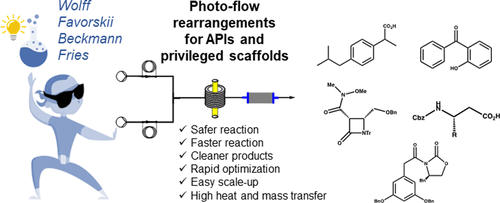 Read the publication that featured this abstract
Read the publication that featured this abstractIn recent years, photochemistry has increasingly emerged as an enabling methodology in both academia and the pharmaceutical industry. Long photolysis times and the gradual reduction of light penetration remained for many years unsolved issues for photochemical rearrangements, triggering the generation of highly reactive species in an uncontrolled fashion and causing the formation of multiple side products. The emergence of continuous-flow chemistry significantly helped to overcome these issues, thus prompting the implementation of photo-flow-based approaches for the generation of pharmaceutically relevant substructures. This Technology Note highlights the benefits of flow chemistry for photochemical rearrangements, including Wolff, Favorskii, Beckmann, Fries, and Claisen rearrangements. We showcase recent advances for photo-rearrangements in continuous flow applied to the synthesis of privileged scaffolds and active pharmaceutical ingredients.
Boronic Acids and Their Derivatives as Continuous-Flow-Friendly Alkyl Radical Precursors
- Monica Olivaa, Viktoriia V. Chernobrovkinab, Erik V. Van der Eyckena,b, Upendra Kumar Sharmaa
- aLaboratory for Organic & Microwave-Assisted Chemistry (LOMAC), Department of Chemistry, University of Leuven (KU Leuven), Celestijnenlaan 200F, 3001 Leuven, Belgium
- bPeoples’ Friendship University of Russia (RUDN University), Miklukho-Maklaya street 6, 117198 Moscow, Russia
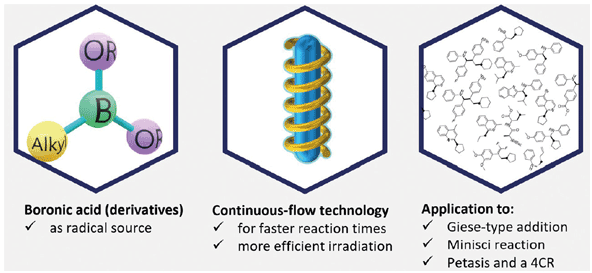 Read the publication that featured this abstract
Read the publication that featured this abstractSince its recognition as an enabling tool to form challenging C–C and C–heteroatom bonds under mild and sustainable conditions, photoredox catalysis has been in the spotlight within the synthetic community. As a consequence, the interest in developing novel synthetic strategies has spiked together with the need to define suitable technologies to overcome scale-up issues dictated by the Bouguer–Beer–Lambert law. In this context, continuous-flow reactors play a major role in increasing the efficiency of a given photocatalyzed reaction, thus rendering scale-up processes more accessible. In the alkyl radical precursor landscape, boron-based species have begun to play a predominant role. Though the reactivity of trifluoroborates has been deeply investigated, the interest in using other boron species as radical precursors in photocatalyzed reactions has recently arisen. This late exploration lies in the fact that the high oxidation potential of boronic acids (BAs) hinders their possible applications. Nevertheless, to circumvent this issue, a diverse array of activation modes has been developed, exploiting in most cases the inherent Lewis acidity of the boronic acid. The aim of this Account is to highlight our recent contribution to this vibrant field with a focus on broad applicability, selectivity, and scalability via continuous-flow methodology. For the sake of clarity, the Account is discussed under the following sections.
Advances in continuous polymer analysis in flow with application towards biopolymers
- Samuel B. H. Pattersona, Raymond Wongb, Graeme Barkera & Filipe Vilelaa
- aSchool of Engineering and Physical Sciences, Institute of Chemical Sciences, Heriot Watt University, Edinburgh, EH14 4AS, UK
- bShimadzu Centre of Excellence, Milton Keynes, UK
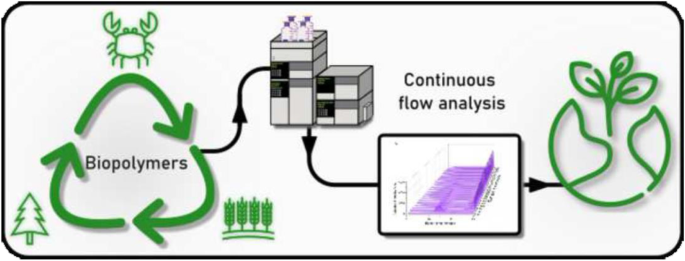 Read the publication that featured this abstract
Read the publication that featured this abstractBiopolymers, polymers derived from renewable biomass sources, have gained increasing attention in recent years due to their potential to replace traditional petroleum-based polymers in a range of applications. Among the many advantages of biopolymers can be included their biocompatibility, excellent mechanical properties, and availability from renewable feedstock. However, the development of biopolymers has been limited by a lack of understanding of their properties and processing behaviours. Continuous analysis techniques have the potential to hasten progress in this area by providing real-time insights into the properties and processing of biopolymers. Significant research in polymer chemistry has focused on petroleum-derived polymers and has thus provided a wealth of synthetic and analytical methodologies which may be applied to the biopolymer field. Of particular note is the application of flow technology in polymer science and its implications for accelerating progress towards more sustainable and environmentally friendly alternatives to traditional petroleum-based polymers. In this mini review we have outlined several of the most prominent use cases for biopolymers along with the current state-of-the art in continuous analysis of polymers in flow, including defining and differentiating atline, inline, online and offline analysis. We have found several examples for continuous flow analysis which have direct application to the biopolymer field, and we demonstrate an atline continuous polymer analysis method using size exclusion chromatography.
Continuous Flow-Facilitated CB2 Agonist Synthesis, Part 1: Azidation and [3 + 2] Cycloaddition
- Peter Sagmeistera,b, Michael Prieschla,b, Dainis Kaldrec, Chethana Gadiyard, Christian Moessnerc, Joerg Sedelmeierc, Jason D. Williamsa,b, and C. Oliver Kappea,b
- aCenter for Continuous Flow Synthesis and Processing (CCFLOW), Research Center Pharmaceutical Engineering GmbH (RCPE), Inffeldgasse 13, 8010 Graz, AustriaM/li> bInstitute of Chemistry, NAWI Graz, University of Graz, Heinrichstrasse 28, 8010 Graz, Austria
- cDepartment of Process Chemistry & Catalysis, F. Hoffmann-La Roche Ltd., 4070 Basel, Switzerland
- dDepartment of Solid State Sciences, F. Hoffmann-La Roche Ltd., 4070 Basel, Switzerland
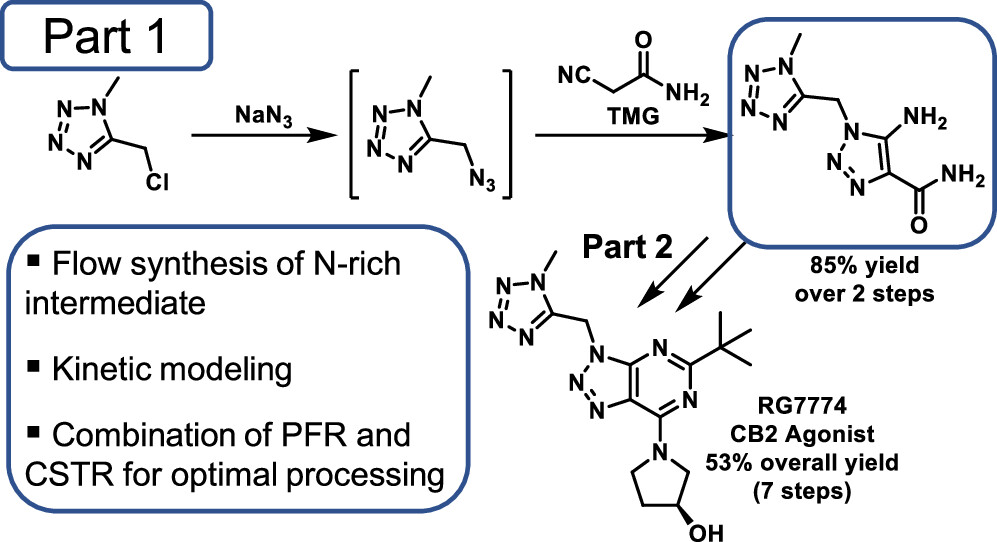 Read the publication that featured this abstract
Read the publication that featured this abstractWe report the use of continuous flow processing to enable the first two steps of a new route toward a cannabinoid receptor type 2 agonist, RG7774. First, an alkyl azide is formed using sodium azide at an elevated temperature. Flow processing allows this to be done in a safe and rapid manner, providing a quantitative yield in 1 min residence time. The subsequent [3 + 2] cycloaddition with 2-cyanoacetamide requires basicity within a fairly narrow range to facilitate the reaction while preventing the decomposition of starting materials. A kinetic model was proposed for the cycloaddition step, with validation in both batch and flow. Three different flow reactor setups were then examined to emulate combinations of plug flow reactors (PFRs) and continuous stirred tank reactors (CSTRs). The use of CSTRs enables operation above the solubility limit of the product, improving the mass intensity and productivity. The desired triazole product can consistently be isolated in ∼80% yield with >99% purity and ∼9.5 g/h productivity. This serves to lay the foundation for the remaining route development to RG7774. Furthermore, the developed kinetic models are used as a basis for the proposed scale-up setup of a combined PFR (1 L) + CSTR cascade (3 × 5 L) for a pilot scale, which would produce up to 8.9 kg/h of the triazole product.
Continuous Flow-Facilitated CB2 Agonist Synthesis, Part 2: Cyclization, Chlorination, and Amination
- Michael Prieschla,b, Peter Sagmeistera,b, Christian Moessnerc, Joerg Sedelmeierc, Jason D. Williamsa,b, and C. Oliver Kappea,b
- aCenter for Continuous Flow Synthesis and Processing (CCFLOW), Research Center Pharmaceutical Engineering GmbH (RCPE), Inffeldgasse 13, 8010 Graz, Austria
- bInstitute of Chemistry, NAWI Graz, University of Graz, Heinrichstrasse 28, 8010 Graz, Austria
- cDepartment of Process Chemistry & Catalysis, F. Hoffmann-La Roche Ltd., 4070 Basel, Switzerland
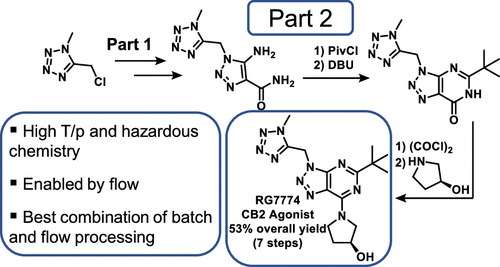 Read the publication that featured this abstract
Read the publication that featured this abstractA new route to the cannabinoid receptor type 2 agonist, RG7774, has been developed circumventing an alkylation with poor regioselectivity as the final step. In the new synthetic route, this side chain is incorporated from the beginning. In this article, the development of the final four transformations is detailed, using a combination of batch and flow processing. Due to poor solubility, an N-pivaloylation was performed in batch, followed by cyclization at up to 200 °C, enabled by flow processing. The following chlorination and SNAr steps were examined in both batch and flow for improved handling of hazardous reagents and intermediates, as well as enhanced heat transfer. A workup between these two steps was found to be vital in preventing side product formation from residual dimethylamine. To achieve this on a laboratory scale, a continuous solid phase treatment was developed, whereby two cation exchange columns (containing SCX-2 silica) were cycled, with monitoring by UV/vis analysis. These four steps were demonstrated with a combined yield of 72%, which serves as a significant positive contribution to the new route’s high overall yield of 53%.
Flow Electrochemistry for the N-Nitrosation of Secondary Amines
- Rojan Alia, Dr. Rasool Babaahmadia, Dr. Matthew Didsburyb, Dr. Rebecca Stephensb, Prof. Rebecca L. Melena, Prof. Thomas Wirtha
- aSchool of Chemistry, Cardiff University, Park Place, Main Building, Cardiff, CF10 3AT UK
- bBAE Systems, Glascoed, Usk, Monmouthshire, NP15 1XL UK
 Read the publication that featured this abstract
Read the publication that featured this abstractA flow electrochemical method towards the synthesis of N-nitroso compounds from secondary amines using cheap and readily available sodium nitrite has been developed. Sodium nitrite dissolved in aqueous acetonitrile made additional electrolytes unnecessary. This mild and straightforward approach made the use of acids or other harsh and toxic chemicals redundant. This procedure was applied to an assortment of cyclic and acyclic secondary amines (27 examples) resulting in yields of N-nitrosamines as high as 99 %. To demonstrate the practicality of the process, scaled-up reactions were performed. Finally, selected products could be purified by using an in-line acidic extraction.
Alkene reactions with superoxide radical anions in flow electrochemistry
Rojan Alia, Tuhin Patraa and Thomas Wirtha
- aSchool of Chemistry, Cardiff University, Park Place, Main Building, Cardiff CF10 3AT (UK)
Read the publication that featured this abstractAlkenes were cleaved to ketones by using dioxygen in a flow electrochemical set-up. The pressurised system allowed efficient gas-liquid mixing with a stabilised flow. This mild and straightforward approach avoids the use of transition metals and harsh oxidants.
Antimicrobial Evaluation of New Pyrazoles, Indazoles and Pyrazolines Prepared in Continuous Flow Mode
Adam Burke1, Mara Di Filippo1, Silvia Spiccio1, Anna Maria Schito2, Debora Caviglia2,3, Chiara Brullo3, Marcus Baumann1
- 1Science Centre South, School of Chemistry, University College Dublin, Dublin 4, Ireland
- 2Department of Surgical Sciences and Integrated Diagnostics (DISC), University of Genoa, 16132 Genoa, Italy
- 3Section of Medicinal Chemistry, Department of Pharmacy (DIFAR), University of Genoa, 16132 Genoa, Italy
Read the publication that featured this abstractMulti-drug resistant bacterial strains (MDR) have become an increasing challenge to our health system, resulting in multiple classical antibiotics being clinically inactive today. As the de-novo development of effective antibiotics is a very costly and time-consuming process, alternative strategies such as the screening of natural and synthetic compound libraries is a simple approach towards finding new lead compounds. We thus report on the antimicrobial evaluation of a small collection of fourteen drug-like compounds featuring indazoles, pyrazoles and pyrazolines as key heterocyclic moieties whose synthesis was achieved in continuous flow mode. It was found that several compounds possessed significant antibacterial potency against clinical and MDR strains of the Staphylococcus and Enterococcus genera, with the lead compound (9) reaching MIC values of 4 µg/mL on those species. In addition, time killing experiments performed on compound 9 on Staphylococcus aureus MDR strains highlight its activity as bacteriostatic. Additional evaluations regarding the physiochemical and pharmacokinetic properties of the most active compounds are reported and showcased, promising drug-likeness, which warrants further explorations of the newly identified antimicrobial lead compound.
Photochemical Synthesis of Pyrazolines from Tetrazoles in Flow
- Adam Burkea
- Silvia Spiccioa
- Mara Di Filippoa
- Marcus Baumanna
- aSchool of Chemistry, University College Dublin, Science Centre South, D04 N2E2, Dublin, Ireland
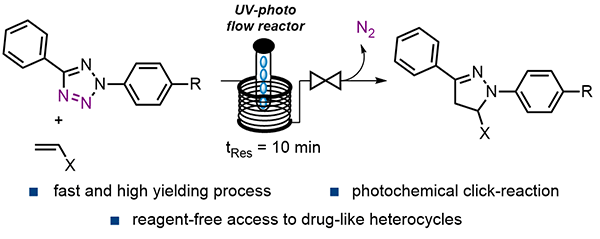 Read the publication that featured this abstract
Read the publication that featured this abstractPyrazolines and their pyrazole congeners are important heterocyclic building blocks with numerous applications in the fine chemical industries. However, traditional routes towards these entities are based on multistep syntheses generating substantial amounts of chemical waste. Here we report an alternative approach using UV-light to convert tetrazoles into pyrazolines via a reagent-free photo-click strategy. This route generates nitrile imine dipoles in situ that are trapped with different dipolarophiles rendering a selection of these heterocyclic targets in high chemical yields. A continuous flow method is ultimately realized that generates multigram quantities of product in a safe and readily scalable manner thus demonstrating the value of this photochemical approach for future exploitations in industry.
Continuous Flow Inter- and Intramolecular Macrolactonization under High Dilution Conditions
- Dashrat Vishambar Sutara
- Neha Uttamrao Saranga
- Akash Bandu Jamdadea
- Boopathy Gnanaprakasama
- aDepartment of Chemistry, Indian Institute of Science Education and Research, Dr. Homi Bhabha Road, Pashan, Pune 411008, India
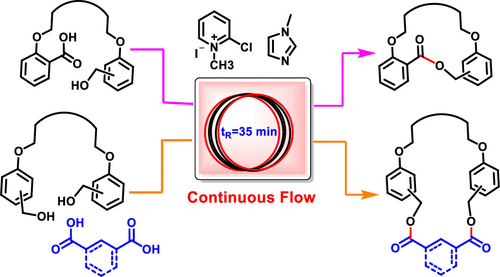 Read the publication that featured this abstract
Read the publication that featured this abstractAn efficient continuous flow process for the macrolactonization of seco acids and diacids using diols in the presence of Mukaiyama reagent (N-methyl-2-chloropyridinium iodide) has been developed for medium to large sized macrocyclic lactones. In comparison with other methods, the continuous flow process provided good to high yield in a short reaction time. By using this methodology, a wide range of macrocyclic lactones (11 compounds), dilactones (15 compounds), and tetralactone derivatives (2 compounds) with various ring sizes (12–26 atoms in the core) were synthesized in just 35 min of residence time. Advantageously, macrolactonization under the flow process is very elegant to handle the high dilution of reactants with a defined perfluoroalkoxy alkanes (PFA) tube reactor volume (7 mL).
Visible-Light Photoredox-Catalyzed Giese Reaction of α-Silyl Ethers with Various Michael Acceptors
- Young Woo Kanga
- Ran Hui Kima
- Shafrizal Rasyid Atriardia
- Sang Kook Wooa
- aDepartment of Chemistry, University of Ulsan, 93 Daehak-Ro, Nam-Gu, Ulsan 44610, Korea
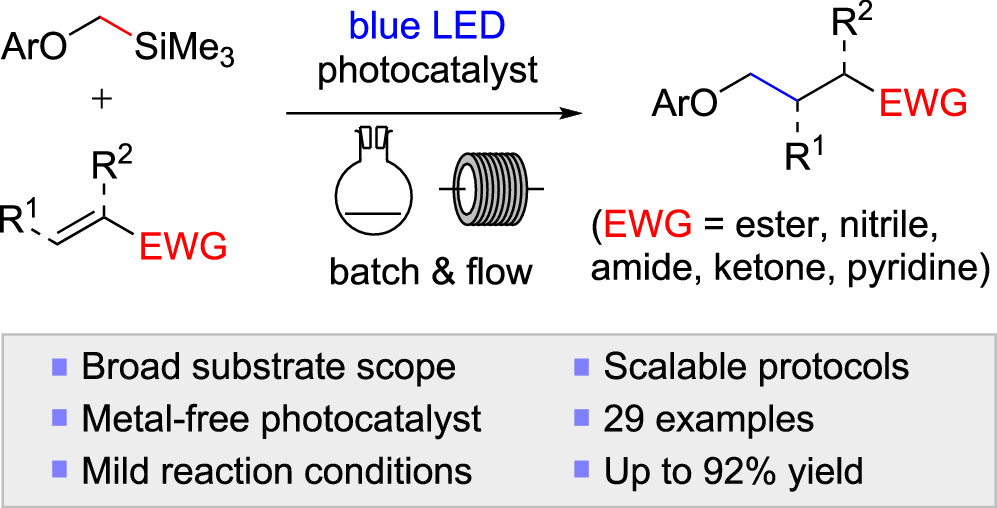 Read the publication that featured this abstract
Read the publication that featured this abstractWe developed a photocatalyzed Giese reaction of various weakly activated Michael acceptors with a neutral silicon-based radical precursor and applied it at large-scale using a continuous flow reactor. The developed method successfully overcomes the substrate scope limitations of previous studies, shows good functional groups tolerance, and affords good to excellent yields. On the basis of mechanistic studies, we propose a reaction mechanism that involves an in situ generated alkoxymethyl radical via single-electron oxidation of α-trimethylsilyl-substituted ethers.
Skeletal Editing Approach to Bridge-Functionalized Bicyclo[1.1.1]pentanes from Aza-Bicyclo[2.1.1]hexanes
Brandon A. Wright1, Anastassia Matviitsuk2, Michael J. Black1, Pablo García-Reynaga2, Luke E. Hanna2, Aaron T. Herrmann2, Michael K. Ameriks2, Richmond Sarpong1, Terry P. Lebold2
- 1Department of Chemistry, University of California, Berkeley, California 94720, United States
- 2Janssen Research and Development, San Diego, California 92121, United States
Read the publication that featured this abstractThe ability to rapidly navigate a wide diversity of chemical space from simple building blocks is a cornerstone of medicinal chemistry campaigns. Aza-bicyclo[2.1.1]hexane (aza-BCH) and bicyclo[1.1.1]pentane (BCP) scaffolds have recently emerged as attractive classes of sp3-rich cores for replacing flat, aromatic scaffolds with metabolically resistant, three-dimensional frameworks. Over the last decade, these pharmaceutically desirable properties and increased synthetic accessibility have led to a marked increase in the adoption of aza-BCHs and BCPs into drug scaffolds. While multiple, independent methods have been developed for the preparation of these structural motifs, strategies to directly convert, or scaffold hop, between these bioisosteric subclasses through single-atom skeletal editing would enable efficient interpolation within this valuable chemical space. Herein, we describe a strategy to scaffold hop between aza-BCH and BCP cores through a nitrogen-deleting skeletal edit. Photochemical [2+2] cycloadditions, used to prepare multifunctionalized aza-BCH frameworks, are coupled with a subsequent deamination step to afford bridge-functionalized BCPs, for which few synthetic solutions currently exist. The modular sequence provides access to various privileged bridged bicycles of pharmaceutical relevance bearing substituents that can be further derivatized.
Visible-Light Photocatalysis Academic–Industrial Collaboration Retrospective: Shared Learning and Impact Analysis
- Kevin P. Colea
- James J. Douglasa,b
- Travis Hammerstadb
- Corey R. J. Stephensonb
- aSynthetic Molecule Design and Development, Lilly Research Laboratories, Eli Lilly and Company, Indianapolis, Indiana 46285, United States
- bDepartment of Chemistry, University of Michigan, Ann Arbor, Michigan 48109, United States
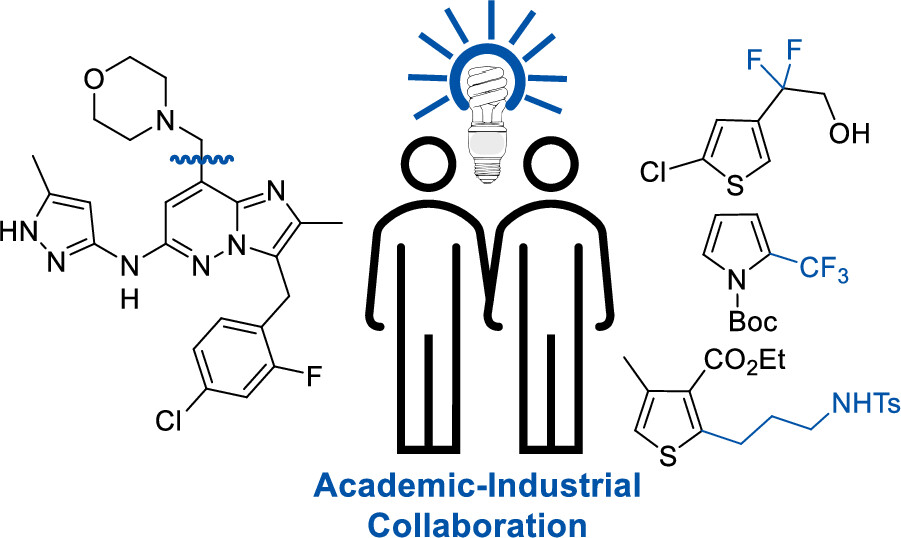 Read the publication that featured this abstract
Read the publication that featured this abstractThe 4.5 year academic–industrial collaboration between the process chemistry group at Lilly and the Stephenson group (Boston University and University of Michigan) is summarized. From the industrial perspective, the relationship benefitted Lilly by enabling the development of visible-light photoredox catalysis processes with an expert partner as well as the establishment of internal technology platforms to support such processes. In addition to the funding element, the academic side benefited from the ability to access pharmaceutically relevant problems and tap into continuous processing capabilities at Lilly. Another positive outcome of the collaboration was the inspiration of spinoff projects, which themselves generated substantial value in the academic setting. The postdoctoral researchers involved benefitted from the unique mentorship opportunity provided by the collaboration and access to resources from both academia and industry. We will analyze the impact of the collaboration in terms of personal development, publications, and new technologies that resulted, which we feel were highly beneficial for both sides of the collaboration.
Catalytic multi-step continuous-flow processes for scalable transformation of eugenol into potential fragrances
- Fábio M.S. Rodriguesa
- Vitaliy Masliya
- Madalena F.C. Silvaa
- Alexandre P. Felgueirasa
- Rui M.B. Carrilhoa
- Mariette M. Pereiraa
- aUniversity of Coimbra, Coimbra Chemistry Centre, Department of Chemistry, Rua Larga, 3004-535 Coimbra, Portugal
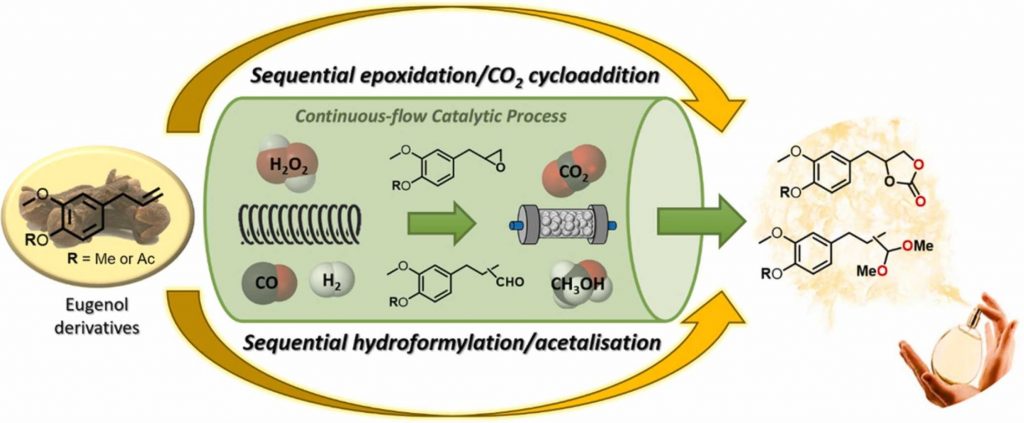 Read the publication that featured this abstract
Read the publication that featured this abstractCatalytic multi-step processes were optimized and developed under continuous-flow conditions, to transform eugenol into potential new fragrances. One approach consisted in the direct catalytic conversion of eugenyl acetate into the corresponding cyclic carbonate, through a two-step protocol that utilizes two different tubular flow reactors for Mn(V)-catalysed epoxidation, using imidazole as co-catalyst and hydrogen peroxide as the oxidant, followed by the epoxide carboxylation with carbon dioxide, catalysed by a binary ZnBr2/TBAB catalytic system. With this methodology, a productivity of 7.68 g product per day was obtained. The other approach is an efficient hydroformylation/acetalization sequential process, which operates through a multi-stage flow system consisting of a tubular reactor for the Rh(I)/xantphos-catalysed hydroformylation, coupled in series with a K10 packed bed reactor for the aldehyde acetalization step. This pioneering strategy allowed obtaining 94 % chemoselectivity for acetal formation and 96 % regioselectivity for the linear product, resulting in a process productivity of 10.02 g product per day.
Development and optimization of a continuous flow ester reduction with LiAlH4 in the synthesis of a key intermediate for a PI3Kδ inhibitor (CPL302415)
- Stanisław Michałeka,b
- Anna M. Maja
- Lidia Gurba-Bryśkiewicza
- Wioleta Maruszaka
- Marcin Zagozdaa
- Zbigniew Ochalb
- Krzysztof Dubiela
- Maciej Wieczoreka
- aCelon Pharma S.A., ul. Marymoncka 15, 05-152 Kazuń Nowy, Poland
- bFaculty of Chemistry, Warsaw University of Technology, ul. Noakowskiego 3, 00-664 Warsaw, Poland
 Read the publication that featured this abstract
Read the publication that featured this abstractHerein we present the development of highly productive and chemoselective ester reduction in a continuous flow system with lithium aluminum hydride (LAH) at mild temperature. The reaction was utilized for the reduction of an important precursor in the synthesis of a new PI3Kδ inhibitor (CPL302415), which is now under evaluation for the treatment of systemic lupus erythematosus. The productivity and the selectivity of the flow LAH reduction were compared with those of batch reaction, as well those of Ru-catalyzed ester reduction. The reaction has a high space–time yield (1130 kg h−1 m−3). The process was optimized using a design of experiments (DoE) approach.
Lipase-Mediated Synthesis of Oleoyl Ethanolamide Starting from High-Oleic Sunflower Oil Soapstock
- Elisabetta Brennaa
- Valeria De Fabritiisa
- Fabio Parmeggiania
- Francesca Tentoria
- Davide Tessaroa
- aDipartimento di Chimica, Materiali ed Ingegneria Chimica “Giulio Natta”, Politecnico di Milano, Piazza Leonardo da Vinci 32, 20133, Milano, Italy
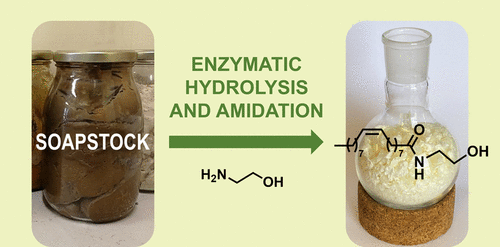 Read the publication that featured this abstract
Read the publication that featured this abstractThis work describes the lipase-mediated synthesis of oleoyl ethanolamide, a dietary supplement for body weight loss recently approved by FDA. The target compound is prepared by conversion of the oleic acid contained in a mixture of fatty acids recovered by enzymatic hydrolysis of soapstock, a side-product of high oleic sunflower oil refinement. The use of a packed-bed reactor (a glass column loaded with the commercial lipase Lipozyme 435) in continuous flow mode improves the space-time yield of the reaction and the catalyst productivity. The nontoxic, bioderived, and renewable solvent limonene is used in the reaction medium. The process has been run for more than 157 h of continuous operation, demonstrating the stability and efficiency of the biocatalyst. Additionally, at the end of the reaction, only oleoyl ethanolamide crystallizes from the reaction mixture, thus, it is collected by simple filtration of the outlet solution in 53% isolation yield, showing 99% chemical purity, while all the byproducts of the reaction are left behind in the mother liquors.
Continuous-Flow Technology for Chemical Rearrangements: A Powerful Tool to Generate Pharmaceutically Relevant Compounds
- Antonella Ilenia Alfanoa, Sveva Pellicciaa, Giacomo Rossinob, Orazio Chianesec, Vincenzo Summaa, Simona Collinab, and Margherita Brindisia
- aDepartment of Pharmacy (DoE 2023-2027), University of Naples Federico II, via D. Montesano 49, 80131, Naples, Italy
- bDepartment of Drug Sciences, University of Pavia, Via Taramelli 12, 27100 Pavia, Italy
- cGenetic S.p.A., Via Canfora, 64, 84084 Fisciano (Salerno), Italy
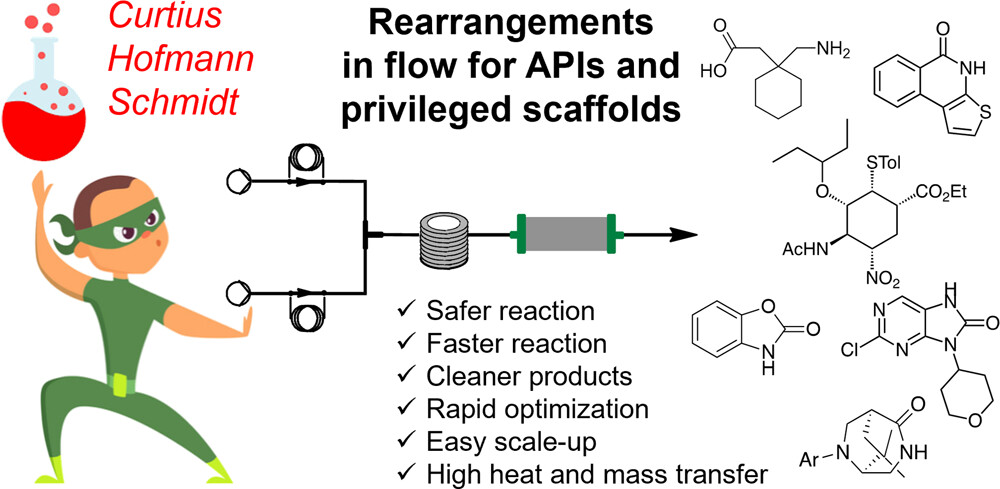 Read the publication that featured this abstract
Read the publication that featured this abstractThe efficacy, safety, and scale-up of several chemical rearrangements remain unsolved problems due to the associated handling of hazardous, toxic, and pollutant chemicals and high-risk intermediates. For many years batch processes have been considered the only possibility to drive these reactions, but continuous-flow technology has emerged, for both academic laboratories and pharmaceutical companies, as a powerful tool for easy, controlled, and safer chemistry protocols, helping to minimize the formation of side products and increase reaction yields. This Technology Note summarizes recently reported chemical rearrangements using continuous-flow approaches, with a focus on Curtius, Hofmann, and Schmidt reactions. Flow protocols, general advantages and safety aspects, and reaction scope for the generation of both privileged scaffolds and active pharmaceutical ingredients will be showcased.
Continuous Flow Synthesis of Substituted 3, 4-Propylenedioxythiophene Derivatives
- Dattatray L. Tarangea
- Nagaraj Nayaka
- Anil Kumara
- aDepartment of Chemistry, Indian Institute of Technology-Bombay (IITB), Powai, Mumbai 400076, India
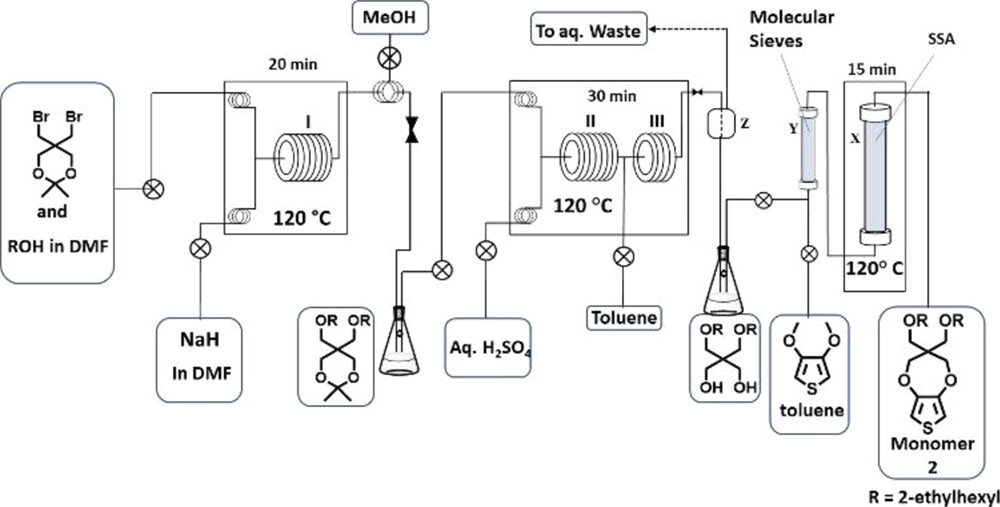 Read the publication that featured this abstract
Read the publication that featured this abstractWe report a continuous flow method for the process intensification of commercially important propylenedioxythiophene (ProDOT) monomers. A new four-step synthetic route was designed to make the whole process more economical and continuous flow amenable. Apart from being safe and having a higher throughput via continuous flow, we could optimize each of the synthetic steps to quantitative conversion. GC–MS analysis was used to monitor each of the processes during optimization. The overall process could be completed in around 65 min, starting from the commercially available materials, as compared to the few days via the reported batch processes. Furthermore, we have shown that the most critical step of the Williamson etherification could be intensified via continuous flow to the space–time yield (STY) of 63 g/h/L as compared to 0.16 g/h/L via the traditional batch process. As all the synthetic steps in our continuous flow process were optimized to quantitative conversions, it opens up the possibility of telescoping of the whole process. We believe that our findings will be able to fill the existing gap in the process intensification for the synthesis of commercially important ProDOT-based monomers.
Flow photochemistry — from microreactors to large-scale processing
- Mengxue Zhanga
- Philippe Rotha
- aCorning SAS, 7 bis avenue de Valvins, CS 70156 Samois sur Seine, 77215 Avon Cedex, France
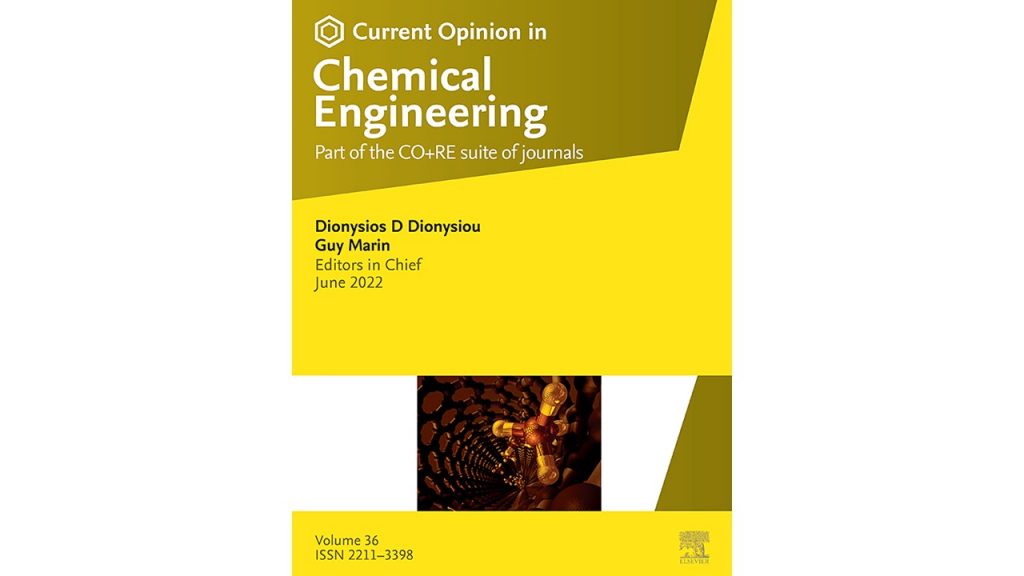 Read the publication that featured this abstract
Read the publication that featured this abstractMiniaturized continuous photoreactors have been recently receiving an increasing amount of attention from researchers both in academia and in industry. The upscaling of flow photoreactors without compromising the reactor performances, however, remains a major challenge for large-scale processes. This review provides an overview of existing commercial flow photoreactors, and the scaling-up strategies of photochemical processes using commercial flow reactors or in-house-fabricated reactors with recent illustrated examples. The strategies to upscale flow photoreactors will be discussed as well as the design principles. In addition, the topic of reactor characterization will be mentioned alongside the selection of the most relevant parameter to lead to a pertinent comparison across scales.
Continuous-flow photochemistry as an automated platform integrated with closed-loop AI/ML approaches
Brenda Pijper1, Jesus Alcázar1, Gabriela Oksdath-Mansilla2, Fabricio Román Bisogno2
- 1Discovery Chemistry, Janssen, Pharmaceutical Companies of Johnson and Johnson, Janssen-Cilag, S.A., Calle Río Jarama 75A, 45007 Toledo, Spain
- 2INFIQC-CONICET-UNC, Departamento de Química Orgánica, Facultad de Ciencias Químicas, Universidad Nacional de Córdoba, Ciudad Universitaria, X5000HUA Córdoba, Argentina
Read the publication that featured this abstractIn this Activity article, Brenda Pijper (Horizon 2020 PhotoReAct early-stage researcher in the Chemical Technologies group at Janssen, the Pharmaceutical Companies of Johnson & Johnson) and Jesus Alcázar (head of the Chemical Technologies group at Janssen) and Gabriela Oksdath-Mansilla and Fabricio R. Bisogno (both professors at the Universidad Nacional de Córdoba and researchers at the National Scientific and Technical Research Council of Argentina [CONICET]) discuss the current state of continuous-flow photochemistry in drug discovery and its future as an automated platform integrated with closed-loop artificial intelligence and machine learning (AI/ML) approaches.
Laboratory Scale Continuous Flow Systems for the Enantioselective Phase Transfer Catalytic Synthesis of Quaternary Amino Acids
- Milena Krstić1, Sergio Rossi1, Miguel Sanz2, Alessandra Puglisi1
- 1Dipartimento di Chimica, Università degli Studi di Milano, Via Golgi 19, 20133 Milano, Italy
- 2Taros Chemicals, GmbH & Co. KG Emil-Figge-Str 76a, 44227 Dortmund, Germany
 Read the publication that featured this abstract
Read the publication that featured this abstractThe use of stereoselective phase-transfer catalysis as a reliable method for the enantioselective synthesis of optically active α-amino acid derivatives using achiral Schiff base esters has been well-developed in batch in the last 40 years. Recently, continuous flow technology has become of great interest in the academy and industry, since it offers safer process operating conditions and higher efficiency compared to a traditional batch processing. Herein, we wish to report the first example of enantioselective phase transfer benzylation of alanine Schiff base ester, under continuous flow conditions. Two different methodologies were investigated: a liquid-solid phase transfer catalytic benzylation using a packed-bed reactor and a liquid-liquid phase transfer catalytic benzylation in continuous stirred-tank reactors. Liquid-liquid phase transfer process in flow showed slightly better productivity than the batch process, while solid-liquid phase transfer benzylation proved much more advantageous in terms of productivity and space-time yield. Furthermore, continuous flow system allowed the isolation of benzylated product without any work up, with a significant simplification of the process. In both cases, phase transfer asymmetric benzylation promoted by Maruoka catalyst demonstrated high enantioselectivity of target quaternary amino ester in flow, up to 93% ee.
Continuous Flow Synthesis of Non-Symmetrical Ureas from CO2
- Alexandre Labichea, Maylis Norlöffa, Dr. Sophie Feuillastrea, Dr. Frederic Tarana, Dr. Davide Audisioa
- aUniversité Paris Saclay, CEA, Département Médicaments et Technologies pour la Santé, SCBM, 91191 Gif-sur-Yvette, France
 Read the publication that featured this abstract
Read the publication that featured this abstractWe report on a continuous flow synthetic process of non-symmetrical ureas, based on the implementation of a Staudinger/aza-Wittig reaction sequence. This flow technology allows obtaining the key urea functional group directly from the fundamental C1 building block CO2. A library of 26 derivatives, including alkyl/alkyl, alkyl/aryl and aryl/aryl ureas could be synthesised. In addition, the method was also suitable for the synthesis of S-thiocarbamates. The potential for large-scale reaction implementation and a first application to continuous flow 13C-isotope labeling are shown.
Flow photochemical Giese reaction via silane-mediated activation of alkyl bromides
- Fabiola Faniniab, Alberto Luridianaa, Daniele Mazzarellaac, Antonella Ilenia Alfanoad, Perryvan der Heidea, Juan A. Rincóne, Pablo García-Losadae, Carlos Mateose, Michael O. Frederickf, Manuel Nuñog, Timothy Noëla
- aFlow Chemistry Group, Van ’t Hoff Institute for Molecular Sciences (HIMS), University of Amsterdam Science Park 904, 1098 XH Amsterdam, The Netherlands
- bDepartment of Biomolecular Sciences, University of Urbino “Carlo Bo”, Piazza Rinascimento 6, I-61029 Urbino, Italy
- cDepartment of Chemical Sciences, University of Padova Institution, Via Francesco Marzolo, 1, 35131 Padova, Italy
- dDepartment of Pharmacy, Department of Excellence 2018-2022, School of Medicine and Surgery, University of Naples “Federico II”, Via D. Montesano 49, I-80131 Naples, Italy
- eCentro de Investigación Lilly S.A., Avda. de la Industria 30, Alcobendas-Madrid 28108, Spain
- fSmall Molecule Design and Development, Eli Lilly and Company, Indianapolis, IN 46285, United States
- gVapourtec Ltd. Park Farm Business Centre, Fornham St Genevieve, Bury St Edmunds, Suffolk IP28 6TS, United Kingdom
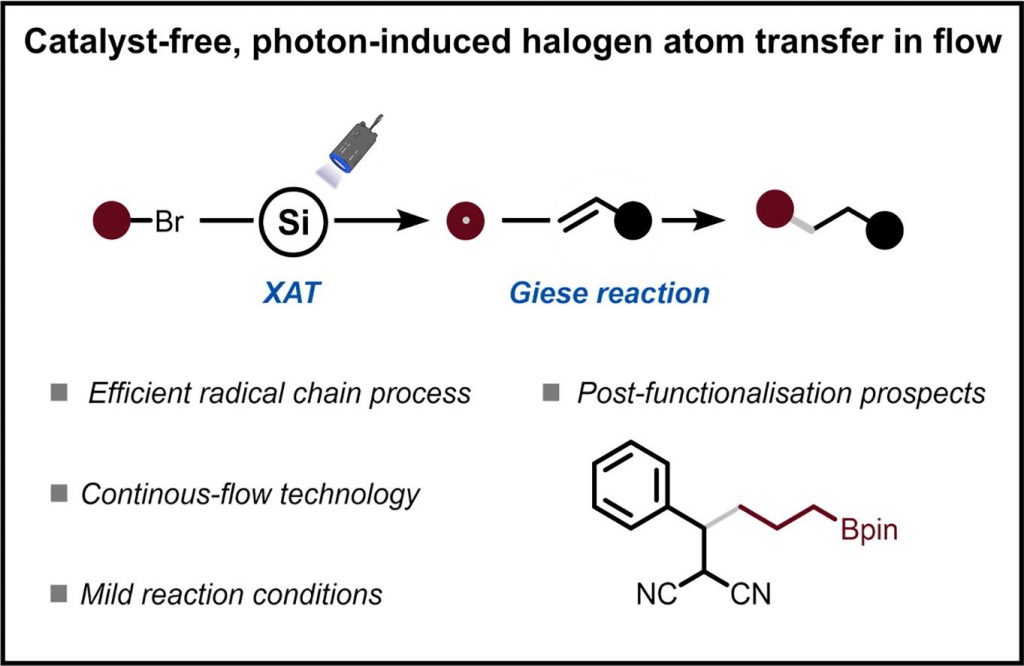 Read the publication that featured this abstract
Read the publication that featured this abstractOrganic halides play a key role as building blocks in synthesis because of their low cost and wide availability. In recent years, halogen-atom transfer (XAT) has emerged as a reliable approach to exploit these substrates in radical processes. Herein, we report a hydroalkylation of electron-poor olefins using alkyl bromides based on a UVA-induced silane-mediated XAT reaction. Our protocol is operationally simple, displays a broad scope and does not require a photocatalyst. Flow technology was used to reduce the reaction times and scale the process. Notably, a two-step protocol, combining the XAT protocol with a subsequent Horner-Wadsworth-Emmons reaction, has been developed to enable the allylation of C(sp3)–Br bonds.
Generation of 1,2-Difluorobenzene via a Photochemical Fluorodediazoniation Step in a Continuous Flow Mode
- Kevin Simonab, Desiree Znidarab, Julien Boutetc, Gérard Guillamotc, Jean-Yves Lenoirc, Doris Dallingerab, and C. Oliver Kappeab
- aCenter for Continuous Flow Synthesis and Processing (CCFLOW), Research Center Pharmaceutical Engineering GmbH (RCPE), Inffeldgasse 13, Graz 8010, Austria
- bInstitute of Chemistry, University of Graz, NAWI Graz, Heinrichstrasse 28, Graz 8010, Austria
- cSeqens SAS, 21 Chemin de la Sauvegarde, 21 Ecully Parc, Ecully 69130, France
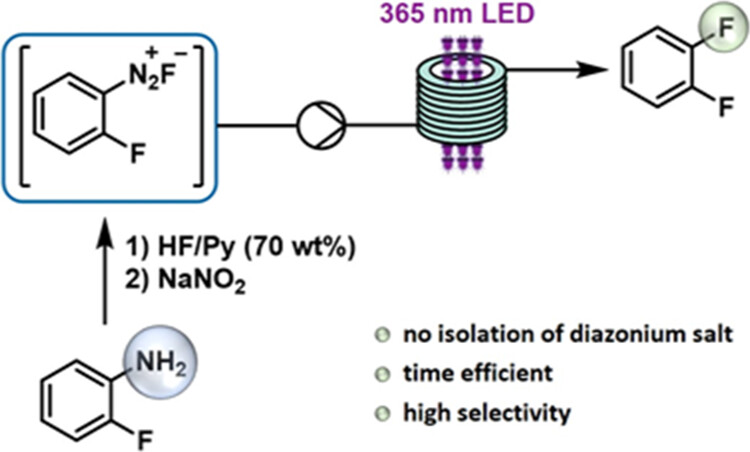 Read the publication that featured this abstract
Read the publication that featured this abstractA proof-of-concept study for the synthesis of 1,2-difluorobenzene from 2-fluoroaniline via the Balz–Schiemann reaction using HF/pyridine as the fluorinating reagent is reported. Key to success for a fast reaction, a clean reaction profile─and thus high product selectivity─was a photochemically induced fluorodediazoniation of the in situ-generated diazonium salt performed in a continuous flow mode. A high-power 365 nm light-emitting diode provided a more robust and efficient irradiation system compared to a medium-pressure Hg lamp with respect to the reaction performance on scale-out runs and reaction time, allowing the generation of 1,2-difluorobenzene within a 10 min residence time and a product selectivity of ≥95% at full conversion.
Continuous flow synthesis of phenyl glucosazone and its conversion to 2H-1,2,3-Triazole building blocks
Maria Molnara, Marcus Baumanna
- aSchool of Chemistry, Science Centre South, University College Dublin, Dublin, D04 N2E2, Ireland
Read the publication that featured this abstractA continuous flow approach for the generation of phenyl glucosazone from glucose and phenyl hydrazine is reported giving the pure target in 53% isolated yield. This thermal process generates the target product as an insoluble material that causes reactor fouling via adhering to the reactor walls. To overcome this issue a segmented flow approach was realised whereby streams of air and the reaction solution were combined in a T-piece and directed through the heated reactor coil. The resulting micro-mixing prevented reactor fouling and blocking and allowed for multi-hour reactions to generate the desired target in high yield. The value of the phenyl glucosazone product was demonstrated via its oxidative cyclisation into 2H-phenyl-1,2,3-triazoles which represent important heterocyclic scaffolds.
Continuous Flow Epoxidation of Alkenes Using a Homogeneous Manganese Catalyst with Peracetic Acid
- Ailbhe A. Ryanabc, Seán D. Dempseyabc, Megan Smytha, Karen Faheyb, Thomas S. Moodyab, Scott Wharrya, Paul Dingwallc, David W. Rooneyc, Jillian M. Thompsonc, Peter C. Knipec, and Mark J. Muldoonc
- aAlmac Group, Craigavon BT63 5QD, United Kingdom
- bArran Chemical Company, Roscommon N37 DN24, Ireland
- cQueen’s University Belfast, Belfast BT9 5AG, United Kingdom
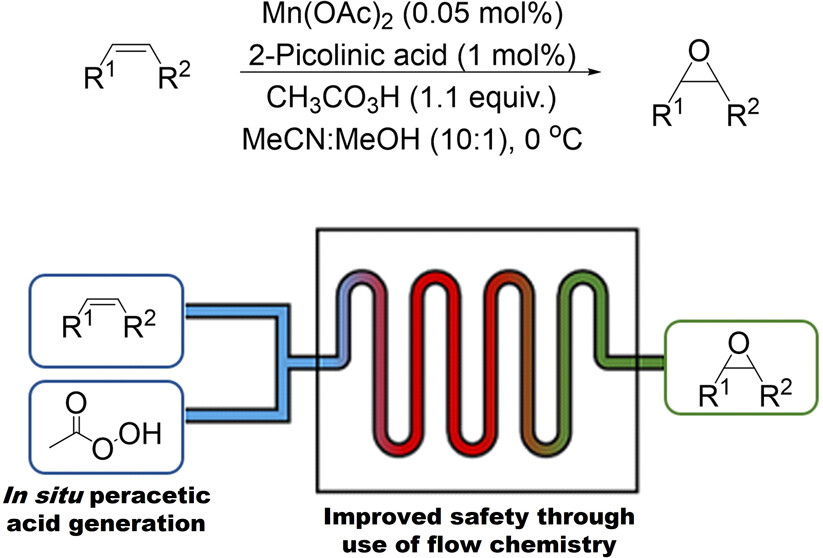 Read the publication that featured this abstract
Read the publication that featured this abstractEpoxidation of alkenes is a valuable transformation in the synthesis of fine chemicals. Described herein are the design and development of a continuous flow process for carrying out the epoxidation of alkenes with a homogeneous manganese catalyst at metal loadings as low as 0.05 mol%. In this process, peracetic acid is generated in situ and telescoped directly into the epoxidation reaction, thus reducing the risks associated with its handling and storage, which often limit its use at scale. This flow process lessens the safety hazards associated with both the exothermicity of this epoxidation reaction and the use of the highly reactive peracetic acid. Controlling the speciation of manganese/2-picolinic acid mixtures by varying the ligand:manganese ratio was key to the success of the reaction. This continuous flow process offers an inexpensive, sustainable, and scalable route to epoxides.
The applications of organozinc reagents in continuous flow chemistry: Negishi coupling
Roop Varghese Ruberta, Rony Rajan Paula
- aDepartment of Chemistry, CMS College Kottayam, Kottayam, Kerala, 686001, India
Read the publication that featured this abstractThe design and implementation of flow technique helps organic chemists to resolve numerous challenges that are encountered during various catalytic reactions. Flow technologies, which offer solutions for technical and/or chemical issues, have gained popularity over the last two decades in the field of organic chemistry. The selectivity, efficiency, and safety of the entire process has been accelerated by flow reactors as they improve mass and heat transfer, speeds up the mixing of the reaction, and they offer exact control of the reaction parameters. This review mainly describes the utilization of flow chemistry in reactions involving organiozinc reagent, particularly Negishi coupling. The Negishi coupling of organozinc reagent is a valuable tool for the formation of C-C bond with functional group tolerance and are used extensively in total synthesis. This review also portrays a comparative study of organozinc reagents prepared using different procedures. A study of the effect of different catalysts over the same reaction is also carried out. An overview of different flow techniques that are employed has also been incorporated.
Alternate end-game strategies towards Nirmatrelvir synthesis: Defining a continuous flow process for the preparation of an anti-COVID drug
- Karuna Veeramania, Manish Shindea, Vishnuvardhana Vema Reddy Edab, Bala Chennaiah Darapanenib, Rama Mohan Hindupurc, Srinivasa Rao Madarapuc, Saikat Senb, Srinivas Orugantib
- a10X Chemical Process Automation Laboratory, Dr. Reddy’s Institute of Life Sciences, University of Hyderabad Campus, Gachibowli, Hyderabad 500 046, Telangana, India
- bCentre for Process Research and Innovation, Dr. Reddy’s Institute of Life Sciences, University of Hyderabad Campus, Gachibowli, Hyderabad 500 046, Telangana, India
- cAurigene Pharmaceutical Services Limited, JP Nagar Road, Miyapur, Hyderabad 500 049, Telangana, India
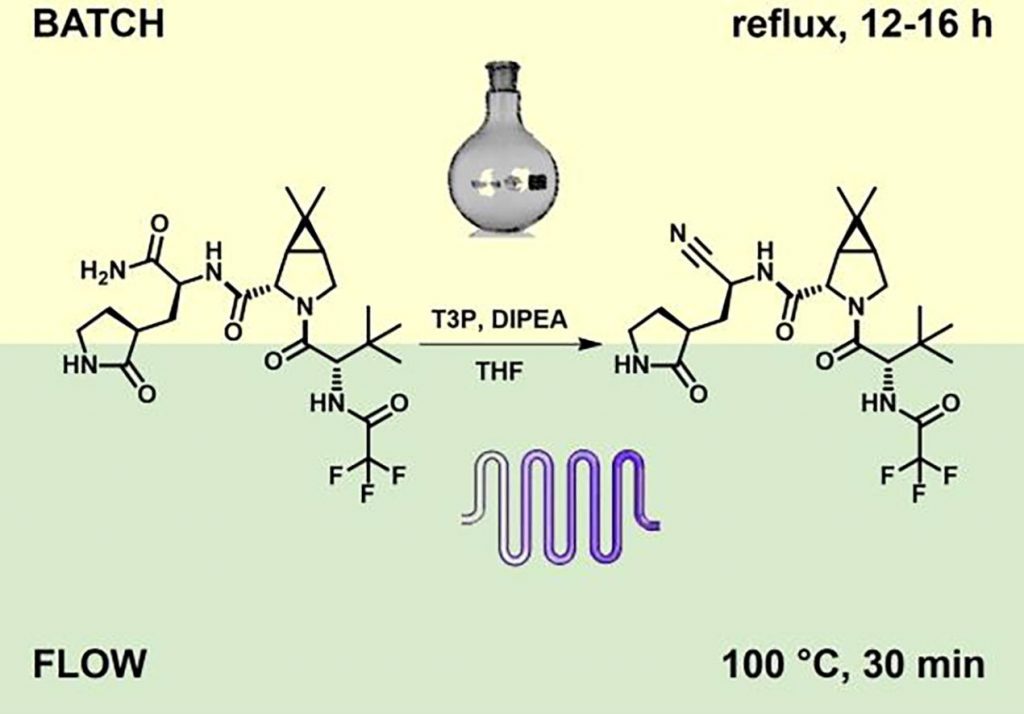 Read the publication that featured this abstract
Read the publication that featured this abstractScalable alternate end-game strategies for the synthesis of the anti-COVID drug molecule Nirmatrelvir (1, PF-07321332) have been described. The first involves a direct synthesis of 1 via amidation of the carboxylic acid 7 (suitably activated as a mixed anhydride with either pivaloyl chloride or T3P) with the amino-nitrile 10·HCl. T3P was found to be a more practical choice since the reagent promoted efficient and concomitant dehydration of the amide impurity 9 (derived from the amino-amide contaminant 8·HCl invariably present in 10·HCl) to 1. This observation allowed for the development of the second strategy, namely a continuous flow synthesis of 1 from 9 mediated by T3P. Under optimized conditions, this conversion could be achieved within 30 min in flow as opposed to 12–16 h in a traditional batch process. The final API had quality attributes comparable to those obtained in conventional flask processes.
Iron-catalyzed [4 + 2] annulation of amidines with α,β-unsaturated ketoxime acetates toward 2,4,6-trisubstituted pyrimidines
- Qinghuan Wua, Luchao Lia, Binyan Xua, Jie Suna, Dong Jib, Yuguang Lib, Lei Shenb, Zheng Fanga, Jindian Duana, Beining Chenc, Kai Guoa
- aCollege of Biotechnology and Pharmaceutical Engineering, State Key Laboratory of Materials-Oriented Chemical Engineering, Nanjing Tech University, Nanjing, 211816, China
- bInstitute of Nanjing Advanced Biomaterials & Processing Equipment, Nanjing, 211299, China
- cDepartment of Chemistry, University of Sheffield, Sheffield, S3 7HF, UK
 Read the publication that featured this abstract
Read the publication that featured this abstractAn iron-catalyzed [4 + 2] annulation of amidines with α,β-unsaturated ketoxime acetates is described. This strategy employs amidines as CN units and provides a new protocol for the construction of 2,4,6-trisubstituted pyrimidines under batch and continuous flow conditions in moderate to good yields, exhibiting good functional group tolerance, scalability and operational simplicity.
Visible-Light Photoredox Catalysis for the Synthesis of Fluorinated Aromatic Compounds
- Tomasz Kliśa
- aFaculty of Chemistry, Warsaw University of Technology, Noakowskiego 3, 00-664 Warsaw, Poland
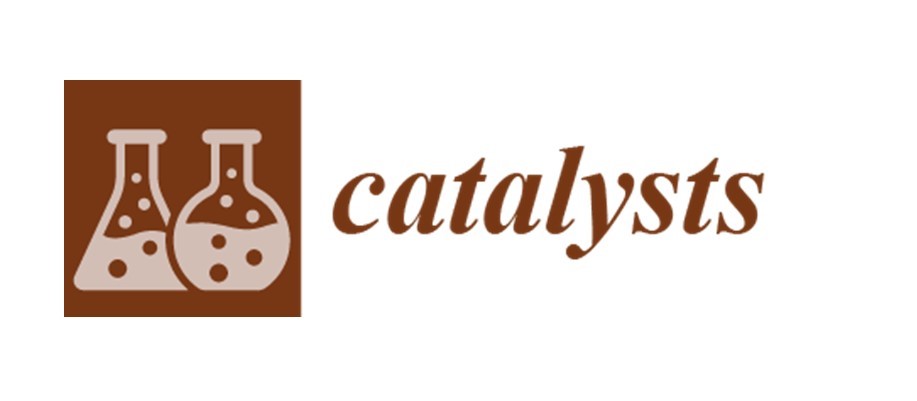 Read the publication that featured this abstract
Read the publication that featured this abstractFluorine-containing functional groups are important motifs influencing physical and biological properties of organic compounds. Visible-light photoredox catalysis as a powerful strategy for the activation of small molecules contributed significantly to the rapid progress of new synthetic procedures allowing introduction of fluorine atoms into organic substrates. In this review, we highlight the distinct strategies for transition metal- and organic-photocatalytic fluorination of arenes and heteroarenes by a broad range of fluorinating compounds. The presented procedures are divided into two groups. The first group involves the reactions enabling a direct attachment of CF3-, CnFm-, F-, CF3O-, CF3S-, and SO2F- substituents to various aromatic compounds. The second group presents the tandem reactions where the formation of the aromatic system occurs after installation of the fluorine-containing group on the non-aromatic fragment of the molecule.
Process intensification of dendritic fibrous nanospheres of silica (DFNS) via continuous flow: a scalable and sustainable alternative to the conventional batch synthesis
- Karuna Veeramaniabc
- Nagaraj Nayaka
- Neil R. Cameronc
- Anil Kumar*a
- aDepartment of Chemistry, Indian Institute of Technology-Bombay (IITB), Powai, Mumbai-400076, India
- bIITB-Monash Research Academy, Indian Institute of Technology-Bombay (IITB), Powai, Mumbai-400076, India
- cIITB-Monash Research Academy, Indian Institute of Technology-Bombay (IITB), Powai, Mumbai-400076, India
 Read the publication that featured this abstract
Read the publication that featured this abstractIn this manuscript, we report the scalable continuous flow synthesis of dendritic fibrous nanospheres of silica (DFNS) which have been speedily making a significant mark in the world of heterogeneous nanocatalysis for over a decade by virtue of their unique morphology. Further, this work also demonstrates the telescoping of the complete process intensification of this material through combination of scalable reactors like the spinning disk reactor and the dynamically agitated tubular reactor. This intensified synthetic protocol performed through continuous flow chemistry is a scalable, efficient, feasible, quicker, and sustainable route of synthesis. Interestingly, this protocol is generic and may be easily extrapolated to the process intensification of a wide range of similar hydrothermal biphasic nanoparticle systems, thus widening the horizons of controlled, intensified, and sustainable production of nanomaterials.
Continuous-flow Fe-zeolite-catalyzed temperature-directed synthesis of bioactive tetraketones and xanthenes using epoxides and cyclic-1,3-diketones via a Meinwald rearrangement
- Shankhajit Mondala
- Akanksha M. Pandeya
- Boopathy Gnanaprakasama
- aDepartment of Chemistry, Indian Institute of Science Education and Research (IISER) Pune, Dr. Homi Bhabha Road, Pune 411008, Maharashtra, India
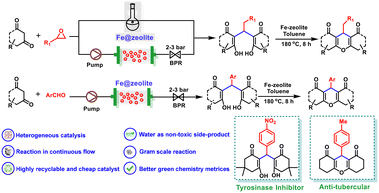 Read the publication that featured this abstract
Read the publication that featured this abstractAn environmentally benign approach for bioactive tetraketones using epoxides and cyclic-1,3-diketones in the presence of Fe-zeolite as a catalyst via a Meinwald rearrangement was developed under batch and continuous flow modes. Further increasing the temperature to 180 °C, these tetraketones underwent a cyclization reaction in the presence of catalytic Fe-zeolite to afford xanthene derivatives. Moreover, this Fe-zeolite catalyst was also used for the reaction of aldehyde and cyclic 1,3-diketone, affording the tetraketone in a high yield. Advantageously, the present approach enables gram-scale synthesis in batches as well as in continuous flow. This approach can sustainably generate many bioactive tetraketones and xanthenes as it does not produce any waste. The Fe-zeolite used in this process is easy to synthesize in the multigram scale, inexpensive, easy to recover, and recyclable.
Development of an automated platform for C(sp3)-C(sp3) bond formation via XAT chemistry
- Brenda Pijpera
- Irini Abdiaja
- Daniele Leonorib
- Jesus Alcázara
- aJanssen Cilag SA, Discovery Chemistry, Jarama 75A, 45007 Toledo, SPAIN
- bRWTH Aachen, Institute of Organic Chemistry, GERMANY
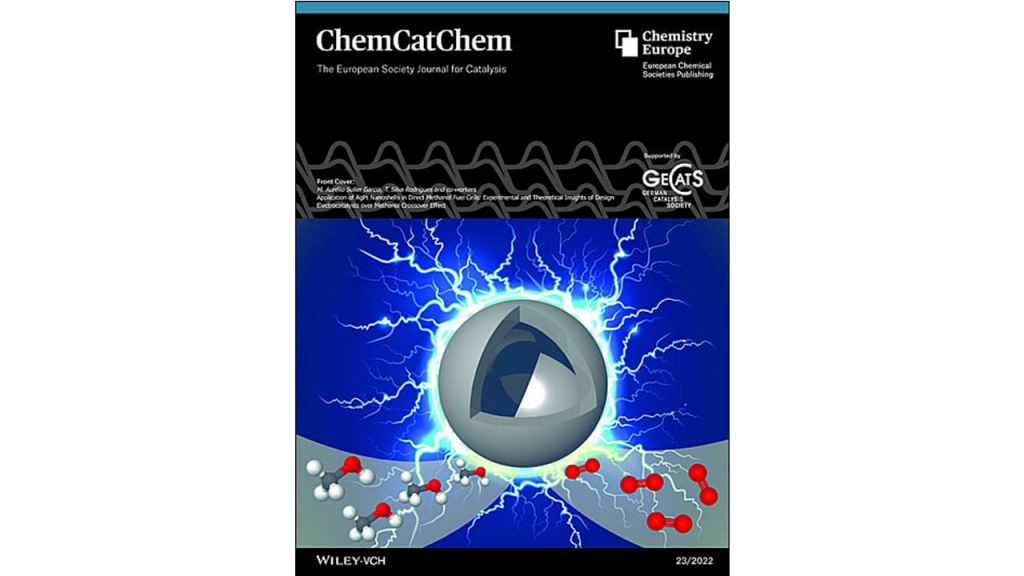 Read the publication that featured this abstract
Read the publication that featured this abstractIncreasing Fsp3 in drug molecules is of high importance in the pharmaceutical industry to escape the flatland. However, there is a lack of diverse methods to introduce C(sp3) into a molecule in library synthesis. In this work, we report the combination of continuous flow chemistry with photochemistry to create an automated platform for library synthesis using halogen atom transfer (XAT) reaction to increase Fsp3 in drug molecules. The chemistry has a broad scope of alkyl halides and electron deficient alkenes. We report a library synthesis of 84 compounds with a productivity of 1.5 reactions per hour, a scope of 51 isolated compounds and the reproducibility and scalability of the chemistry. Providing an efficient automated tool to synthesize drug-like molecules with increased Fsp3 in drug discovery and development.
Photochemical Synthesis of Pyrazolines from Tetrazoles in Flow
Adam Burkea, Silvia Spiccioa, Mara Di Filippoa, Marcus Baumannb
- aChemistry, University College Dublin, Dublin, Ireland
- bChemistry, University of Durham, Durham, United Kingdom of Great Britain and Northern Ireland
Read the publication that featured this abstractPyrazolines and their pyrazole congeners are important heterocyclic building blocks with numerous applications in the fine chemical industries. However, traditional routes towards these entities are based on multistep syntheses generating substantial amounts of chemical waste. Here we report an alternative approach using UV-light to convert tetrazoles to pyrazolines via a reagent-free photo-click strategy. This route generates nitrile imine dipoles in situ that are trapped with different dipolarophiles rendering a selection of these heterocyclic targets in high chemical yields. A continuous flow method is ultimately realized that generates multi-gram quantities of product in a safe and readily scalable manner thus demonstrating the value of this photochemical approach for future exploitations in industry.
Continuous Process to Safely Manufacture an Aryldiazoacetate and Its Direct Use in a Dirhodium-Catalyzed Enantioselective Cyclopropanation
- Stephen P. Lathropa, Laurie B. Mlinara, Onkar N. Manjrekara, Yong Zhoua, Kaid C. Harpera, Eric R. Saciaa, Molly Higginsa, Andrew R. Bogdanb, Zhe Wanga, Steven M. Richtera, Wei Gongc, Eric A. Voightc, Jeremy Henlea, Moiz Diwana, Jeffrey M. Kallemeyna, Jack C. Sharlandd, Bo Weid, and Huw M. L. Daviesd
- aProcess Research and Development, AbbVie Inc., North Chicago, Illinois 60064, United States
- bAdvanced Chemistry Technologies, AbbVie Inc., North Chicago, Illinois 60064, United States
- cDrug Discovery Science & Technology, AbbVie Inc., North Chicago, Illinois 60064, United States
- dDepartment of Chemistry, Emory University, 1515 Dickey Drive, Atlanta, Georgia 30322, United States
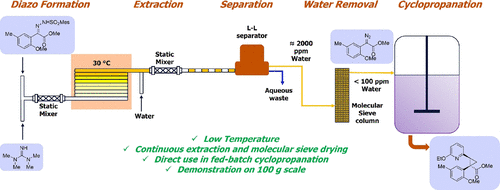 Read the publication that featured this abstract
Read the publication that featured this abstractWe report the development and demonstration of a continuous-flow process for the safe formation, extraction, and drying of aryldiazoacetate 2, which enables direct use in a fed-batch dirhodium-catalyzed enantioselective cyclopropanation reaction to provide cyclopropane 4. Designing this process with safety as a primary objective, we identified the appropriate arylsulfonyl hydrazone starting material and organic soluble base to facilitate a Bamford–Stevens diazo-generating flow process at 30 °C, well below the thermal onset temperature (Tonset = 57 °C), while also minimizing accumulation of the highly energetic diazo intermediate (ΔHD = −729 J/g). The Bamford–Stevens reaction byproducts are efficiently removed via a continuous aqueous extraction utilizing a liquid–liquid hydrophobic membrane separator. Continuous molecular sieve drying of the organic layer was demonstrated to maintain water levels <100 ppm in the final aryldiazoacetate solution, thereby ensuring acceptable reactivity, selectivity, and purity in the water sensitive cyclopropanation reaction. The full process was successfully executed on a 100 g scale, setting the foundation for the wider application of this and related chemistries on a kilogram scale.
Multicompartment polymeric colloids from functional precursor Microgel: Synthesis in continuous process
- aDWI – Leibniz-Institute for Interactive Materials e.V, Forckenbeckstraße 50, 52074 Aachen, Germany
- bInstitute of Technical and Macromolecular Chemistry, RWTH Aachen University, Worringerweg 2, 52074 Aachen, Germany
- cAachen-Maastricht Institute for Biobased Materials (AMIBM), Maastricht University, Urmonderbaan 22, 6167 RD Geleen, The Netherlands
- dZuyd University of Applied Sciences, Nieuw Eyckholt 300, 6419 DJ Heerlen, The Netherlands
- eJülich Centre for Neutron Science (JCNS-1), Forschungszentrum Jülich GmbH, Wilhelm-Johnen-Straβe, 52428 Jülich, Germany
- fCNRS, UMR 8232 – IPCM – Institut Parisien de Chimie Moléculaire – Polymer Chemistry Team, Sorbonne Université, 4 Pl. Jussieu, 75005 Paris, France
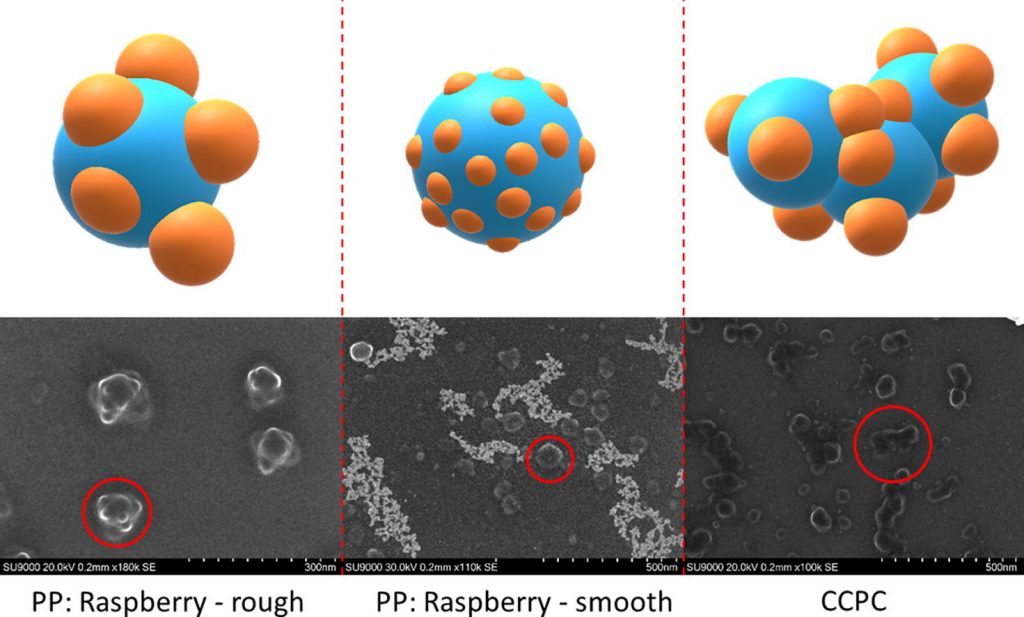 Read the publication that featured this abstract
Read the publication that featured this abstractRaspberry-like poly(oligoethylene methacrylate-b-N-vinylcaprolactam)/polystyrene (POEGMA-b-PVCL/PS) patchy particles (PPs) and complex colloidal particle clusters (CCPCs) were fabricated in two-, and one-step (cascade) flow process. Surfactant-free, photo-initiated reversible addition-fragmentation transfer (RAFT) precipitation polymerization (Photo-RPP) was used to develop internally cross-linked POEGMA-b-PVCL microgels with narrow size distribution. Resulting microgel particles were then used to stabilize styrene seed droplets in water, producing raspberry-like PPs. In the cascade process, different hydrophobicity between microgel and PS induced the self-assembly of the first formed raspberry particles that then polymerized continuously in a Pickering emulsion to form the CCPCs. The internal structure as well as the surface morphology of PPs and CCPCs were studied as a function of polymerization conditions such as flow rate/retention time (Rt), temperature and the amount of used cross-linker. By performing Photo-RPP in tubular flow reactor we were able to gained advantages over heat dissipation and homogeneous light distribution in relation to thermally-, and photo-initiated bulk polymerizations. Tubular reactor also enabled detailed studies over morphological evolution of formed particles as a function of flow rate/Rt.
TBADT-Mediated C-C Bond Formation Exploiting Aryl Aldehydes in a Photochemical Flow Reactor
- Adam Cruisea
- Marcus Baumanna
- aUniversity College Dublin, School Of Chemistry, Science Centre - South, Dublin 4 Belfield, IRELAND
 Read the publication that featured this abstract
Read the publication that featured this abstractA robust and general photochemical process is reported converting various aryl aldehydes into β-ketonitriles and related species. Tetrabutylammonium decatungstate (TBADT) is used as photocatalyst in combination with a high-power LED emitting at 365 nm. Standardization and scalability are enabled by using a flow reactor platform integrating the LED light source placed within an encased reactor coil. Under optimized conditions a variety of aromatic and heteroaromatic aldehydes is reacted with acrylonitrile, methyl methacrylate and phenyl vinyl sulfone to give the desired products in high yields, short residence times of 5-30 minutes and a throughput of up to 41 mmol/h. This continuous process overcomes limitations previously encountered for aromatic substrates and represents an effective means to generate a variety of difunctionalized building blocks for further elaborations with an ideal atom economy.
Synthesis of picramide using nitration and ammonolysis in continuous flow
- Ankit Kumar Mittala
- Gaurav Prakasha
- Pramod Pathaka
- Debabrata Maitia
- aIndian Institute of Technology Bombay, Chemistry, INDIA
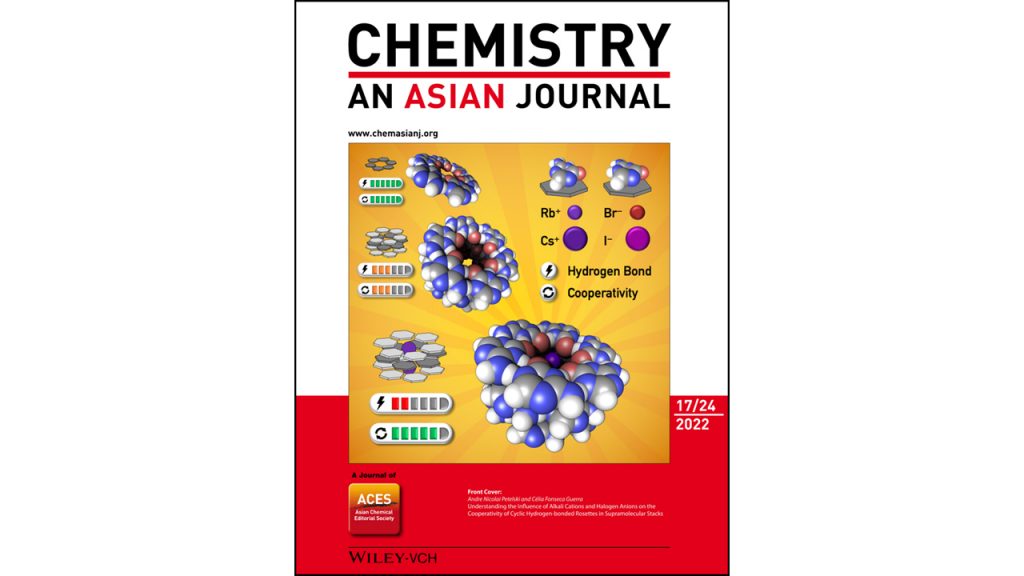 Read the publication that featured this abstract
Read the publication that featured this abstractThis paper describes a safer, scalable and continuous process for synthesis of picramide. The process consists of two steps: step-1. nitration of p-nitroanisole (PNAN) to 2,4,6-trinitrianisole (TNAN); step-2. ammonolysis of TNAN to picramide. Both the steps were optimized in flow, with yield of 90% and 98% in step-1 and step-2 respectively. Picramide with HPLC purity greater than 99% was obtained. When compared with batch, in step-1, flow process provided significant advantage in selectivity and yield. The optimized flow process was scaled to 25 g/hr production rate in a laboratory flow reactor. The method can be considered fit for the safe production of picramide at commercial scale.
End-to-End Automated Synthesis of C(sp3)-Enriched Drug-like Molecules via Negishi Coupling and Novel, Automated Liquid–Liquid Extraction
- Irini Abdiaja
- Santiago Cañellasa
- Alejandro Diegueza
- Maria Lourdes Linaresa
- Brenda Pijpera
- Alberto Fontanaa
- Raquel Rodrigueza
- Andres Trabancoa
- Eduardo Palaoa
- Jesus Alcázar*a
- aDiscovery Chemistry, Janssen Research and Development, Janssen-Cilag, S.A., C/ Jarama 75, E-45007Toledo, Spain
 Read the publication that featured this abstract
Read the publication that featured this abstractHerein, we report an end-to-end process including synthesis, work-up, purification, and post-purification with minimal human intervention using Negishi coupling as a key transformation to increase Fsp3 in bioactive molecules. The main advantages of this protocol are twofold. First, the automated sequential generation of organozinc reagents from readily available alkyl halides offers a large diversity of alkyl groups to functionalize (hetero)aryl halide scaffolds via Pd-catalyzed Negishi coupling in continuous flow. Second, a fully automated liquid–liquid extraction has been developed and successfully applied for unattended operations. The workflow was completed with mass-triggered preparative high-performance liquid chromatography HPLC, providing an efficient production line of compounds with enriched sp3 character and better drug-like properties. The modular nature allows a smooth adaptation to a wide variety of synthetic methods and protocols and makes it applicable to any medchem laboratory.
Flow platform for the synthesis of benzodiazepines
- Maria Ivanovaa
- Thomas Poissona
- Philippe Jubaulta
- Julien Legrosa
- aNormandie Univ, INSA Rouen, UNIROUEN, CNRS, COBRA, 76000, Rouen, France
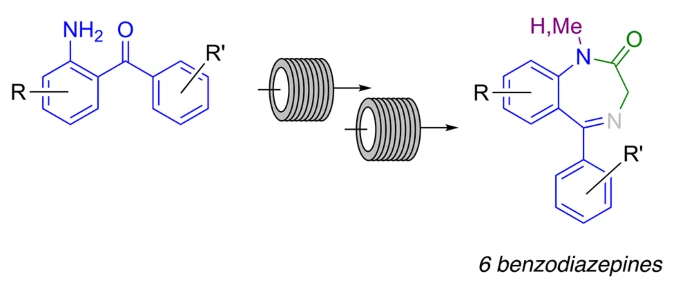 Read the publication that featured this abstract
Read the publication that featured this abstractBenzodiazepines possess a wide spectrum of valuable pharmacological effects and are among the leading drugs, commonly prescribed ones for various pathologies. Herein we describe the continuous flow synthesis of six benzodiazepines from aminobenzophenones: diazepam, fludiazepam, nordazepam, nitrazepam, clonazepam, oxazepam.
Mimicking natural metabolisms: cell‐free flow preparation of dopamine
- Silvia Donzellaa
- Agostina Colaciccoa
- Luca Nespolia
- Dr. Martina L. Contentea
- aDepartment of Food, Environmental and Nutritional Sciences (DeFENS), University of Milan, via Celoria, 2, 20133 Milan, Italy
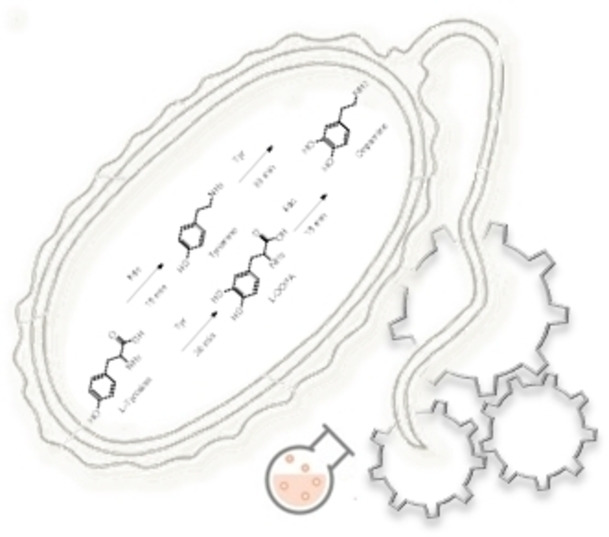 Read the publication that featured this abstract
Read the publication that featured this abstractThe biosynthesis of dopamine (DA) from L-tyrosine as starting material is an excellent yet challenging strategy. Here we developed a versatile, multi-enzymatic platform for the biocatalytic preparation of DA in a continuous mode with excellent conversion (90 %) and reaction time (45 min). The system exploits the immobilization of a decarboxylase from Bacillus pumilis (Fdc) and a tyrosinase from Agaricus bisporus (Tyr), which were combined to mimic the in-vivo synthesis of DA (both primary and secondary metabolisms) giving rise to an efficient strategy with a considerable reduction of process associated costs and environmental impact. To enhance the system automation, an in-line purification via catch-and-release procedure was added.
Improving the Sustainability and Safety of Ursodeoxycholic Acid Synthesis in Continuous Flow Process with Water
- Hahyeon Kima
- Jonghyun Leeb
- Seung Jae Leec
- Jeong Eun Oha
- Soo Dong Kima
- Yashwardhan R. Malpanic
- Ye-Jin Hwangd
- aDepartment of Biomedical and Pharmaceutical Science, Kyung Hee University, 26 Kyughee-daero, Dongdaemun-gu, Seoul 02447, Republic of Korea
- bDepartment of Basic Pharmaceutical Science, College of Pharmacy, Kyung Hee University, 26 Kyughee-daero, Dongdaemun-gu, Seoul 02447, Republic of Korea
- cAPI Synthesis Team, Daewoong-Bio, 29-Jeyakdanji-ro, Hyangnam-eup, Hwaseung-si, Hyeonggi-do 18608, Republic of Korea
- dDepartment of Chemistry and Chemical Engineering, Education and Research Center for Smart energy and Materials, Inha University 100 Inha-ro, Michugol-gu, Incheon, Republic of Korea
 Read the publication that featured this abstract
Read the publication that featured this abstractA clog-free sustainable method for the synthesis of ursodeoxycholic acid through selective hydrogenation was developed using Raney nickel in a continuous flow process. To increase the sustainability and safety of the continuous flow system, water as a green solvent was used to remove the salt compound causing serious clogging problems and to generate hydrogen gas by electrolysis. Furthermore, a real-time monitoring system was installed in the flow system to check the system pressure and collective volume of the reaction solution, allowing immediate confirmation of blockages. Eventually, the continuous flow system was successfully developed with a short residence time of 4 minutes, almost full conversion, and high selectivity of 94.0% dr. This continuous flow system lasts 10 consecutive days with lower catalyst loading (the ratio of Raney nickel to 7-oxo-LCA = 4.44 w/w) without clogging problems.
The design of experiments (DoE) in optimization of an aerobic flow Pd-catalyzed oxidation of alcohol towards an important aldehyde precursor in the synthesis of phosphatidylinositide 3-kinase inhibitor (CPL302415)
- Stanisław Michałeka,b
- Lidia Gurba-Bryśkiewicza
- Wioleta Maruszaka
- Marcin Zagozdaa
- Anna M. Maja
- Zbigniew Ochalb
- Krzysztof Dubiela
- Maciej Wieczoreka
- aCelon Pharma S.A., Ul. Marymoncka 15, 05-152 Kazuń Nowy, Poland
- bFaculty of Chemistry, Warsaw University of Technology, Ul. Noakowskiego 3, 00-664 Warsaw, Poland
 Read the publication that featured this abstract
Read the publication that featured this abstractHerein, we describe the development of a green, scalable flow Pd-catalyzed aerobic oxidation for the key step in the synthesis of CPL302415, which is a new PI3Kδ inhibitor. Applying this environmental-friendly, sustainable catalytic oxidation we significantly increased product yield (up to 84%) and by eliminating of workup step, we improved the waste index and E factor (up to 0.13) in comparison with the stoichiometric synthesis. The process was optimized by using the DoE approach.
Exploring Visible Light for Carbon–Nitrogen and Carbon–Oxygen Bond Formation via Nickel Catalysis
- Shengqing Zhua
- Huan Lia
- Yingying LIa
- Zhonghou HUANGa
- Lingling Chua
- aState Key Laboratory for Modification of Chemical Fibers and Polymer Materials, Center for Advanced Low-Dimension Materials, College of Chemistry and Chemical Engineering, Donghua University, Shanghai 201620, China
 Read the publication that featured this abstract
Read the publication that featured this abstractHeteroatom-containing motifs are one of the most privileged scaffolds for pharmaceuticals, agrochemical, and functional materials. Transition-metal-catalyzed carbon-heteroatom bond-forming reactions have emerged as an indispensable synthetic tool for the rapid assembly of these valuable skeletons. Although impressive progress, the development of general and efficient methods for the catalytic construction of carbon-heteroatom bonds with earth-abundant catalysts under mild conditions is still highly desirable. Utilizing the new and unique reactivity uncovered by photo excitation, recently, exciting progress has been made in the area of visible light-driven nickel-catalyzed carbon-heteroatom bond-forming reactions, enabling facile access the diverse carbon-heteroatom bonds under exceptionally mild conditions. In this review, we highlight recent synthetic methodology development for the formation of C-N and C-O bonds via visible-light-driven high-valent nickel complexes or photoexcited nickel complexes, with in-depth discussions with reaction designs and mechanistic scenarios.
Consecutive photochemical reactions enabled by a dual flow reactor coil strategy
- Ruairi Crawforda
- Mara Di Filippoa
- Duncan Guthrieb
- Marcus Baumanna
- aSchool of Chemistry, Science Centre South, University College Dublin, D04 N2E2, Dublin, Ireland
- bVapourtec, Fornham St Genevieve, Bury St Edmunds, Suffolk, IP28 6TS, UKM
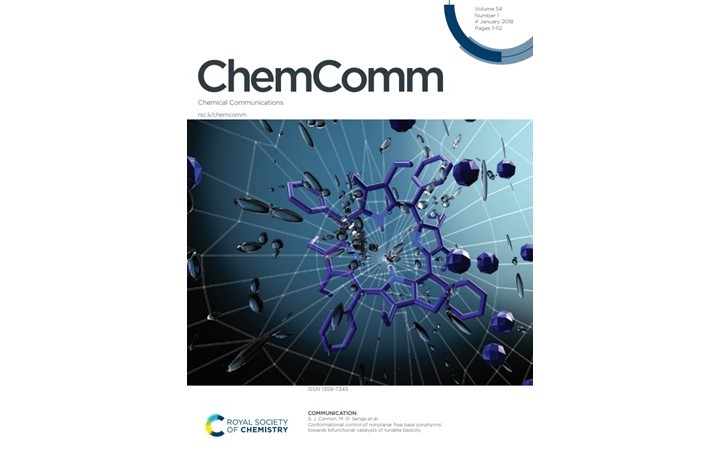 Read the publication that featured this abstract
Read the publication that featured this abstractThe application of a dual reactor coil for consecutive photochemical reactions is presented in continuous flow mode. This strategy enables for the first time the use of a single LED-based light source to perform two distinct photochemical reactions in an uninterrupted fashion. This approach is demonstrated for the telescoped synthesis and functionalisation of drug-like quinolines and compared to alternatives exploiting two photochemical reactor set-ups operated in sequence. The presented strategy enables the intensified exploitation of photochemical reactions in modern synthesis.
Spheroplasts preparation boosts the catalytic potential of a squalene-hopene cyclase
- Ana I. Benítez-Mateosa
- Andreas Schneider
- Eimear Hegartya
- Bernhard Hauer
- Francesca Paradisia
- aDepartment of Chemistry, Biochemistry and Pharmaceutical Sciences, University of Bern, Freiestrasse 3, 3012, Bern, Switzerland
- bInstitute of Biochemistry and Technical Biochemistry, University of Stuttgart, Allmandring 31, 70569, Stuttgart-Vaihingen, Germany
 Read the publication that featured this abstract
Read the publication that featured this abstractSqualene-hopene cyclases are a highly valuable and attractive class of membrane-bound enzymes as sustainable biotechnological tools to produce aromas and bioactive compounds at industrial scale. However, their application as whole-cell biocatalysts suffer from the outer cell membrane acting as a diffusion barrier for the highly hydrophobic substrate/product, while the use of purified enzymes leads to dramatic loss of stability. Here we present an unexplored strategy for biocatalysis: the application of squalene-hopene-cyclase spheroplasts. By removing the outer cell membrane, we produce stable and substrate-accessible biocatalysts. These spheroplasts exhibit up to 100-fold higher activity than their whole-cell counterparts for the biotransformations of squalene, geranyl acetone, farnesol, and farnesyl acetone. Their catalytic ability is also higher than the purified enzyme for all high molecular weight terpenes. In addition, we introduce a concept for the carrier-free immobilization of spheroplasts via crosslinking, crosslinked spheroplasts. The crosslinked spheroplasts maintain the same catalytic activity of the spheroplasts, offering additional advantages such as recycling and reuse. These timely solutions contribute not only to harness the catalytic potential of the squalene-hopene cyclases, but also to make biocatalytic processes even greener and more cost-efficient.
Membrane-based TBADT recovery as a strategy to increase the sustainability of continuous-flow photocatalytic HAT transformations
- Zhenghui Wena
- Diego Pintossia
- Manuel Nuñob
- Timothy Noëla
- aFlow Chemistry Group, Van ‘t Hoff Institute for Molecular Sciences, Faculty of Science, University of Amsterdam, Science Park 904, 1098 XH, Amsterdam, The Netherlands
- bVapourtec Ltd., Park Farm Business Centre, Fornham St Genevieve, Bury St Edmunds, Suffolk, IP28 6TS, UK
 Read the publication that featured this abstract
Read the publication that featured this abstractPhotocatalytic hydrogen atom transfer (HAT) processes have been the object of numerous studies showcasing the potential of the homogeneous photocatalyst tetrabutylammonium decatungstate (TBADT) for the functionalization of C(sp3)–H bonds. However, to translate these studies into large-scale industrial processes, careful considerations of catalyst loading, cost, and removal are required. This work presents organic solvent nanofiltration (OSN) as an answer to reduce TBADT consumption, increase its turnover number and lower its concentration in the product solution, thus enabling large-scale photocatalytic HAT-based transformations. The operating parameters for a suitable membrane for TBADT recovery in acetonitrile were optimized. Continuous photocatalytic C(sp3)-H alkylation and amination reactions were carried out with in-line TBADT recovery via two OSN steps. Promisingly, the observed product yields for the reactions with in-line catalyst recycling are comparable to those of reactions performed with pristine TBADT, therefore highlighting that not only catalyst recovery (>99%, TON > 8400) is a possibility, but also that it does not happen at the expense of reaction performance.
Two-Step Continuous-Flow Synthesis of 6-Membered Cyclic Iodonium Salts via Anodic Oxidation
- Julian Spils1
- Thomas Wirth2
- Boris J. Nachtsheim1
- 1Institute for Organic and Analytical Chemistry, University of Bremen, Leobener Straße 7, 28359 Bremen 2School of Chemistry, Cardiff University, Park Place, Main Building, Cardiff CF10 3AT (UK)
 Read the publication that featured this abstract
Read the publication that featured this abstractA multi-step continuous-flow procedure for the generation of six-membered diaryliodonium salts was developed. This is a significant improvement of existing batch methods with regard to scalability and atom economy. The method uses easily accessible benzyl acetates in Friedel-Crafts-like alkylations while a subsequent anodic oxidative cyclization directly generates the corresponding cyclic iodonium salts.
Development of a flow process for an easy and fast access to 2-pyrone derivatives
- Grazia Isa C. Righettia
- Francesca Tentoria
- Elisabetta Brennaa
- Cristian Gambarottia
- aDepartment of Chemistry, Materials and Chemical Engineering “Giulio Natta”, Politecnico di Milano, Piazza Leonardo da Vinci 32, 20133 Milano, Italy
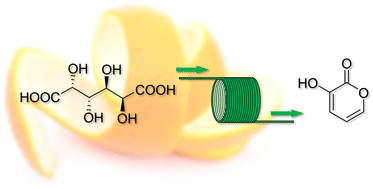 Read the publication that featured this abstract
Read the publication that featured this abstract2-Pyrones are compounds widely present in nature and they represent interesting building blocks both in medicinal and synthetic chemistry. Due to their peculiar pharmacological activity and structure, they have attracted much attention during the last decades and several protocols for their synthesis have been developed. In this work we propose the synthesis of bio-sourced 2-pyrones, exploiting continuous-flow conditions for an easy, sustainable and fast access to these important molecules.
Intraligand Charge Transfer Enables Visible-Light-Mediated Nickel-Catalyzed Cross-Coupling Reactions
- Cristian Cavedona,b, Sebastian Gisbertza,b,Susanne Reischauera,b, Sarah Voglc, Eric Sperlichd, John H. Burkee, Rachel F. Wallicke, Stefanie Schrottkef, Wei-Hsin Hsua, Lucia Anghileria,b, Yannik Pfeiferd, Noah Richtera, Christian Teutlofff, Henrike Müller-Werkmeisterd, Dario Cambiéa, Peter H. Seebergera,b, Josh Vura-Weise, Renske M. van der Veene,g, Arne Thomasc, Bartholomäus Piebera
- aDepartment of Biomolecular Systems, Max-Planck-Institute of Colloids and Interfaces, Am Mühlenberg 1, 14476 Potsdam, Germany
- bDepartment of Chemistry and Biochemistry, Freie Universität Berlin, Arnimallee 22, 14195 Berlin, Germany
- cDepartment of Chemistry, Functional Materials, Technische Universität Berlin, Hardenbergstraße 40, 10623 Berlin, Germany
- dInstitute of Chemistry, University of Potsdam, Karl-Liebknecht-Strasse 24–25, 14476 Potsdam, Germany
- eDepartment of Chemistry, University of Illinois Urbana-Champaign, Urbana, Illinois, 61801 USA
- fDepartment of Physics, Freie Universität Berlin, Arnimallee 22, 14195 Berlin, Germany
- gHelmholtz Zentrum Berlin für Materialien und Energie GmbH, Hahn-Meitner-Platz 1, 14109 Berlin, Germany
 Read the publication that featured this abstract
Read the publication that featured this abstractWe demonstrate that several visible-light-mediated carbon−heteroatom cross-coupling reactions can be carried out using a photoactive NiII precatalyst that forms in situ from a nickel salt and a bipyridine ligand decorated with two carbazole groups (Ni(Czbpy)Cl2). The activation of this precatalyst towards cross-coupling reactions follows a hitherto undisclosed mechanism that is different from previously reported light-responsive nickel complexes that undergo metal-to-ligand charge transfer. Theoretical and spectroscopic investigations revealed that irradiation of Ni(Czbpy)Cl2 with visible light causes an initial intraligand charge transfer event that triggers productive catalysis. Ligand polymerization affords a porous, recyclable organic polymer for heterogeneous nickel catalysis of cross-coupling reactions. The heterogeneous catalyst shows stable performance in a packed-bed flow reactor during a week of continuous operation.
A practical flow synthesis of 1,2,3-triazoles
- Dawid Drelinkiewicza
- Richard J. Whitbya
- aSchool of Chemistry, Faculty of Engineering and Physical Sciences, The University of Southampton, Southampton, UK
 Read the publication that featured this abstract
Read the publication that featured this abstractA robust and versatile protocol for synthesis of 1-monosubstituted and 1,4-disubstituted 1H-1,2,3-triazoles was established under continuous flow conditions using copper-on-charcoal as a heterogeneous catalyst. This methodology allowed for the synthesis of a diverse set of substituted 1,2,3-triazoles with good functional group tolerance and high yields. 2-Ynoic acids were also used as small-chain alkyne donors in a decarboxylation/cycloaddition cascade, allowing gaseous reagents to be bypassed, delivering desired triazoles in high yields. The developed methodology was used to synthesize an antiepileptic agent, rufinamide, which was obtained in 96% isolated yield.
A simple one-pot oxidation protocol for the synthesis of dehydrohedione from Hedione
- James S. Sharleya, Guido Gambacortaa, Ana María Collado Pérezb, Estela Espinos Ferrib, Amadeo Fernandez Mirandab, Isabelle Fernández Fernándezb, Jorge Sanchez Quesadab, Ian R.Baxendalea
- aDepartment of Chemistry, University of Durham, South Road, Durham, DH1 3LE, United Kingdom
- bInternational Flavours & Fragrances Inc., Avda Felipe Klein 2, 12580, Benicarló, Castellón, Spain
 Read the publication that featured this abstract
Read the publication that featured this abstractA new method for the oxidiation of Hedione 1 to dehydrohedione 2, a high value intermediate in the flavour and fragrance industry, has developed based upon one pot α-chlorination-elimination sequence which can be readily scaled. The spontaneous elimination of the α-chloro in methanol was unprecedented and has allowed for the oxidation, typically performed in multiple steps/reactions, to be carried out as a one-pot protocol. A continuous flow process for performing the reaction utilising sulfuryl chloride has also demonstrated allowing for steady, safe evolution of SO2 gas during the reaction.
Self-healing and polymer welding of soft and stiff epoxy thermosets via silanolates
- Amelia A. Putnam-Neeba
- Jordan M. Kaisera,b
- Amber M. Hubbarda
- Dayton P. Streeta
- Matthew B. Dickersona
- Dhriti Nepala
- Luke A. Baldwina
- aAir Force Research Laboratory, Wright Patterson Air Force Base, Dayton, OH, 45433, USA
- bUES, Inc, Dayton, OH, 45432, USA
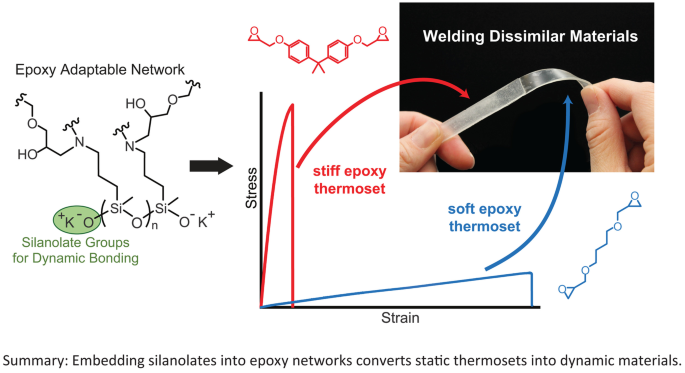 Read the publication that featured this abstract
Read the publication that featured this abstractIncorporating dynamic bonds into polymers enables static thermosets to be transformed into active materials, possessing the reprocessability of thermoplastics while maintaining the bulk properties of fully crosslinked networks. This new class of materials, termed covalent adaptable networks (CANs), has helped bridge the gap between traditional thermosets and thermoplastics. Here, epoxy-based adaptable networks were synthesized by combining a diepoxide monomer with an oligosiloxane prepolymer containing aminopropyl groups, which crosslink irreversibly, and silanolate end-groups, which participate in dynamic bonding. Two separate diepoxide crosslinkers were used to give a range of soft to stiff materials with a Young’s modulus varying from 12 MPa to 2.2 GPa. This study documents how the thermal and mechanical properties (e.g., glass transition temperature and modulus) are affected by compositional changes in these silanolate networks. Dynamic bonding also results in self-healing properties, offering the ability to repair structural polymers and composites. When combined with tunable mechanical properties, self-healing capabilities make these materials well-suited to be sustainable alternatives for many traditional thermosets. For example, we demonstrated the ability to weld a stiff epoxy thermoset to a dissimilar soft material, a feature traditional epoxies do not permit.
Multicomponent Direct Assembly of N-Heterospirocycles Facilitated by Visible-Light-Driven Photocatalysis
- Oliver M. Griffithsa
- Steven V. Leya
- aYusuf Hamied Department of Chemistry, University of Cambridge, Cambridge CB2 1EW, U.K.
 Read the publication that featured this abstract
Read the publication that featured this abstractN-heterospirocycles are interesting structural units found in both natural products and medicinal compounds but have relatively few reliable methods for their synthesis. Here, we enlist the photocatalytic generation of N-centered radicals to construct β-spirocyclic pyrrolidines from N-allylsulfonamides and alkenes. A variety of β-spirocyclic pyrrolidines have been constructed, including drug derivatives, in moderate to very good yields. Further derivatization of the products has also been demonstrated as has a viable scale-up procedure, making use of flow chemistry techniques.
Scalable synthesis of favipiravir via conventional and continuous flow chemistry
- Thanat Tiyasakulchaia
- Netnapa Charoensetakula
- Thitiphong Khamkhenshorngphanuchb
- Chawanee Thongpanchangaa
- Onsiri Srikunc
- Yongyuth Yuthavonga
- Nitipol Srimongkolpithaka
- aNational Center for Genetic Engineering and Biotechnology (BIOTEC), National Science and Technology Development Agency (NSTDA), Pathum Thani, Thailand
- bDepartment of General Education, Faculty of Science and Health Technology, Navamindradhiraj University, Bangkok, Thailand
- cGovernment Pharmaceutical Organization (GPO), Bangkok, Thailand
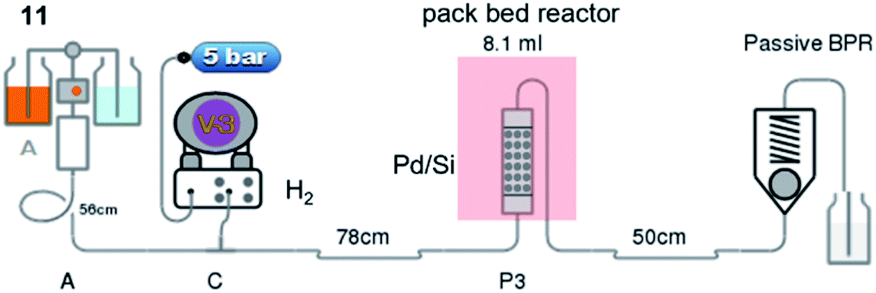 Read the publication that featured this abstract
Read the publication that featured this abstractDecagram scale synthesis of favipiravir was performed in 9 steps using diethyl malonate as cheap starting material. Hydrogenation and bromination steps were achieved by employing a continuous flow reactor. The synthetic process provided a total of 16% yield and it is suitable for larger-scale synthesis and production.
Merging dual photoredox/cobalt catalysis and boronic acid (derivatives) activation for the Minisci reaction
Serena Pillitteria, Prabhat Ranjanb, Gerardo M. Ojeda-Carraleroa,c, Laura Y. Vázquez Amayaa, Javier E. Alfonso-Ramosd, Erik V. Van der Eyckena,e, Upendra K. Sharmaa
- aLaboratory for Organic & Microwave-Assisted Chemistry (LOMAC), Department of Chemistry, University of Leuven (KU Leuven), Celestijnenlaan 200F, B-3001 Leuven, Belgium
- bAachen Maastricht Institute for Biobased Materials (AMIBM), Maastricht University, Urmonderbaan 22, 6167 RD Geleen, The Netherlands
- cDepartment of General and Inorganic Chemistry, Faculty of Chemistry, University of Havana, Zapata y G, Havana 10400, Cuba
- dLaboratory of Computational and Theoretical Chemistry, Faculty of Chemistry, University of Havana, Zapata y G, Havana 10400, Cuba
- ePeoples’ Friendship University of Russia (RUDN University), Miklukho-Maklaya street 6, 117198 Moscow, Russia
Read the publication that featured this abstractThe merger of open-shell and closed-shell organometallic chemistry steps has enabled multiple effective cross-coupling pathways. Here we report a visible-light promoted photoredox-cobalt catalyzed Minisci reaction of N-heteroarenes under mild and sustainable conditions, employing various boronic acids and derivatives as alkyl radical precursors. This study demonstrates the prominent ability of the Co co-catalyst to promote the oxidation step of the photocatalytic cycle following a reductive quenching pathway, thus avoiding the use of stoichiometric (inorganic) oxidants. This feature enables the straightforward application of photo-flow conditions, particularly attractive for an easy scale-up and to enhance the efficiency of the reaction (throughput: 0.78 mmol/h in flow vs 0.02 mmol/h in batch) Furthermore, the process is predominantly selective towards the C2-alkylation of quinolines, and a mechanistic rationale has been provided with both experimental and DFT calculation support. The developed protocol demonstrates broad applicability for the alkylation of different N-heteroarenes under suitable homogeneous conditions for a flow-compatible Minisci reaction.
The Merger of Benzophenone HAT Photocatalysis and Silyl Radical-Induced XAT Enables Both Nickel-Catalyzed Cross-Electrophile Coupling and 1,2-Dicarbofunctionalization of Olefins
- Alberto Luridianaa, Daniele Mazzarellaa, Luca Capaldoa, Juan A. Rincónb, Pablo García-Losadab, Carlos Mateosb, Michael O. Frederickc, Manuel Nuñod, Wybren Jan Bumae and Timothy Noëla
- aFlow Chemistry Group, Van’t Hoff Institute for Molecular Sciences (HIMS), University of Amsterdam, Science Park 904, 1098 XH Amsterdam, The Netherlands
- bCentro de Investigación Lilly S.A., Avda. de la Industria 30, Alcobendas-Madrid 28108, Spain
- cSmall Molecule Design and Development, Eli Lilly and Company, Indianapolis, Indiana 46285, United States
- dVapourtec Ltd. Park Farm Business Centre, Fornham St Genevieve, Bury St Edmunds, Suffolk IP28 6TS, U.K.
- eMolecular Photonics, Van’t Hoff Institute for Molecular Sciences (HIMS), University of Amsterdam, Science Park 904, 1098 XH Amsterdam, The Netherlands
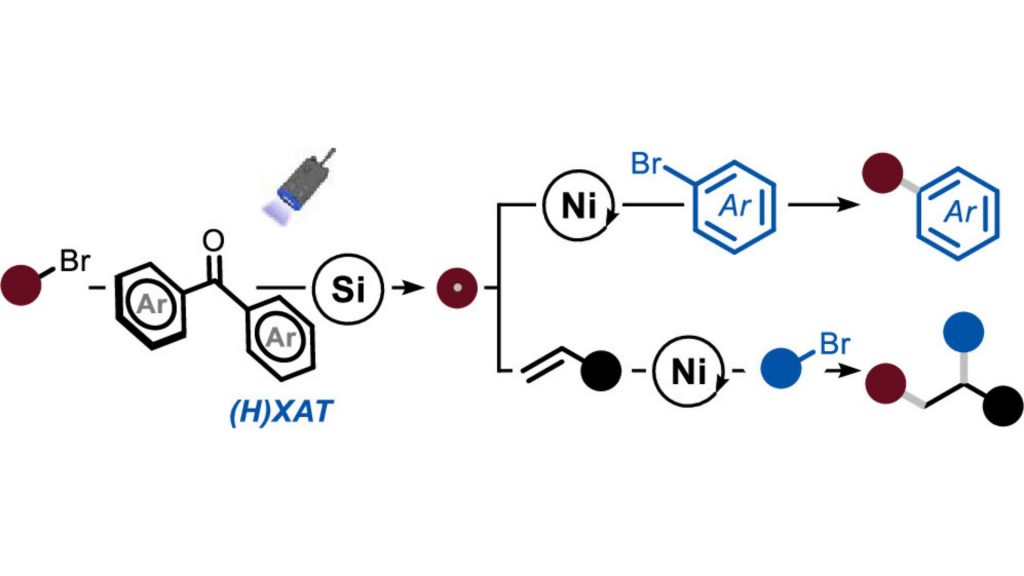 Read the publication that featured this abstract
Read the publication that featured this abstractA strategy for both cross-electrophile coupling and 1,2-dicarbofunctionalization of olefins has been developed. Carbon-centered radicals are generated from alkyl bromides by merging benzophenone hydrogen atom transfer (HAT) photocatalysis and silyl radical-induced halogen atom transfer (XAT) and are subsequently intercepted by a nickel catalyst to forge the targeted C(sp3)–C(sp2) and C(sp3)–C(sp3) bonds. The mild protocol is fast and scalable using flow technology, displays broad functional group tolerance, and is amenable to a wide variety of medicinally relevant moieties. Mechanistic investigations reveal that the ketone catalyst, upon photoexcitation, is responsible for the direct activation of the silicon-based XAT reagent (HAT-mediated XAT) that furnishes the targeted alkyl radical and is ultimately involved in the turnover of the nickel catalytic cycle.
Taming photocatalysis in flow: easy and speedy preparation of α-aminoamide derivatives
- Ricardo I. Rodrígueza
- Marina Sicignanoa
- Montaña J. Garcíaa
- Rodrigo G. Enríqueza
- Silvia Cabrerab,c
- José Alemána,c,d
- aOrganic Chemistry Department, Science Faculty, Universidad Autónoma de Madrid, Madrid-28049, Spain
- bInorganic Chemistry Department, Science Faculty, Universidad Autónoma de Madrid, Madrid-28049, Spain
- cInstitute for Advanced Research in Chemical Sciences (IAdChem), Universidad Autónoma de Madrid, 28049 Madrid, Spain
- dCenter for Innovation in Advanced Chemistry (ORFEO-CINQA), Universidad Autónoma de Madrid, Spain
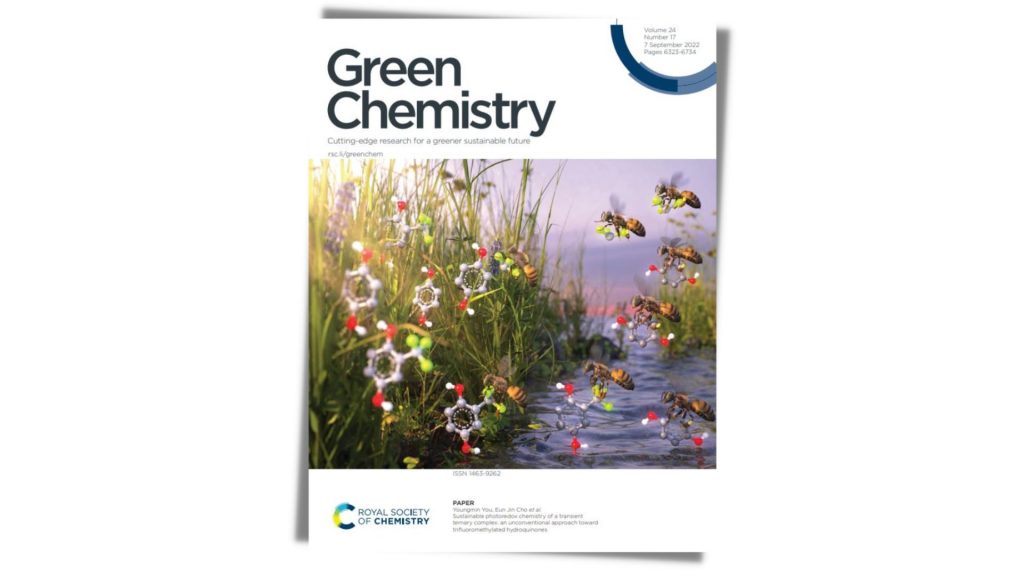 Read the publication that featured this abstract
Read the publication that featured this abstractα-Aminoamides are reiterative molecular subunits in transcendental molecules, which bear attractive functionalities for (bio)synthetic purposes. Herein, their preparation by harnessing flow photocatalysis is described, which provides significant improvements over other catalytic methods in terms of efficiency while outperforming an analogous batch setup. A reaction time of five minutes, operational simplicity and absence of purification steps for the isolation of final products evidence an enhanced performance.
Synthesis of CTA and DNAN using flow chemistry
- Ankit Kumar Mittala
- Gaurav Prakasha
- Pramod Pathaka
- Debabrata Maitia
- aIndian Institute of Technology Bombay, Department of Chemistry, Mumbai, INDIA
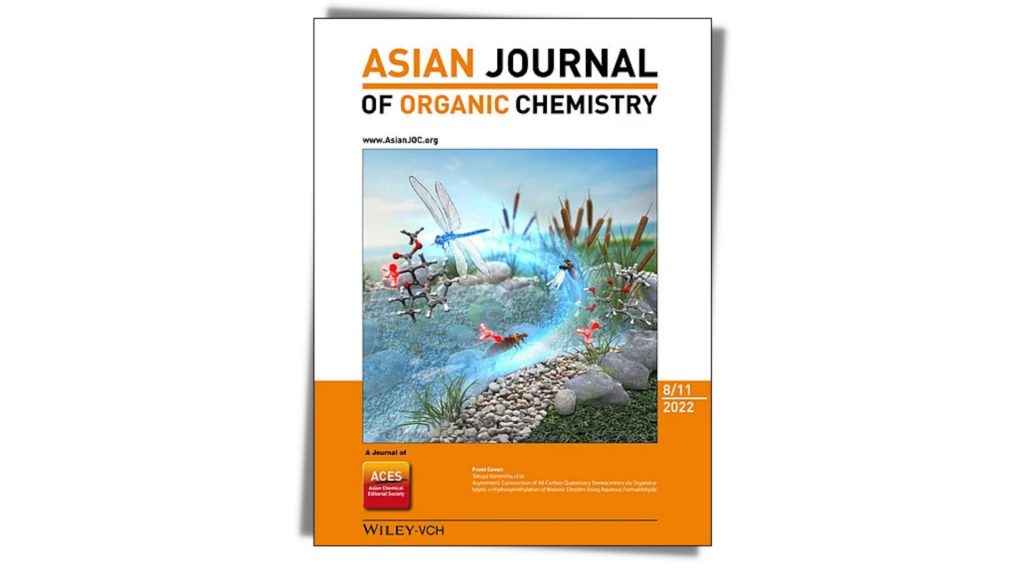 Read the publication that featured this abstract
Read the publication that featured this abstractThis paper describes a flow chemistry approach for synthesising two high-energy molecules, cyanuric triazide (CTA) and 2,4-dinitroanisole (DNAN), and scaling them up to multi-gram scale using an automated flow reactor system. The flow chemistry approach offers high degree of safety and easy to scale compared to conventional syntheses. The development of two processes: a. CTA via azidation of cyanuric chloride; b. DNAN via methoxylation of 2,4-dinitrichlorobenzene (2,4-DNCB) on an automated commercially available flow reactor system is described. High yield (> 95%) was achieved in both the processes. Very short reaction times (30 seconds) were applied. The process parameters were optimized using the automated flow chemistry system. The optimized process was scaled to multi gram scale (> 30 g/hr). The method can be considered fit for the safe production of CTA and DNAN at multi gram scale in laboratory.
Flow synthesis of photocatalytic semiconductor–metal hybrid nanocrystals
- Tal Cohena,b
- Nir Waiskopfa,b
- Adar Levia,b
- David Stonea,b
- Sergei Remennikb
- Uri Banina,b
- aThe Institute of Chemistry, The Hebrew University of Jerusalem, Jerusalem 91904, Israel
- bThe Center for Nanoscience and Nanotechnology, The Hebrew University of Jerusalem, Jerusalem 91904, Israel
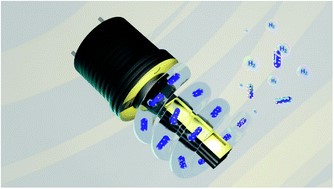 Read the publication that featured this abstract
Read the publication that featured this abstractSemiconductor–metal hybrid nanostructures are promising materials for photocatalytic applications, providing high efficiencies compared to their composing counterparts. So far, the synthesis of such hybrid nanoparticles was limited to batch reactors, achieving tunability while demonstrating how each of the nanocrystals’ characteristics affects photocatalytic performances. Yet, new methodologies should be established to increase the synthetic yield while maintaining high control over the resulting structures. Herein, scalable advanced flow techniques are introduced, yielding ZnSe–metal hybrid nanoparticles either in a thermal growth or photo-induced growth regime. Firstly, thermal gold growth in the flow reactor is achieved with good control over the metal tip size and the nanoparticle morphology. We address the dependence of the reaction on temperature, the precursor to nanorod molar ratios, and additional parameters. Additionally, light-induced growth by the flow reactor is demonstrated for platinum clusters. The quality of the resulting hybrids is directly demonstrated by their functionality in photocatalytic hydrogen generation by water reduction, displaying enhanced activity compared to bare ZnSe nanorods. The fairly straightforward adaptation of such powerful flow-reaction techniques to scale-up photocatalytic hybrid nanoparticle syntheses takes them one step forwards towards the realization of their potential in real-life application scenarios.
Taylor-vortex membrane reactor for continuous gas-liquid reactions
- Baldassarre Veneziaa
- David C. Morrisb
- Asterios Gavriilidisa
- aDepartment of Chemical Engineering, University College London, Torrington Place, London, UK
- bAutichem Ltd, Unit 4, Gatewarth Industrial Estate Barnard Street Warrington WA5 1DD
 Read the publication that featured this abstract
Read the publication that featured this abstractA unique Taylor-vortex membrane reactor (TVMR) design for continuous gas-liquid reactions is presented in this work. The reactor consists of a cylindrical rotor inside a stationary concentric cylindrical vessel, and a flexible system of equispaced baffle rings surrounding the rotor. This restricts the annular cross section to a small gap between the baffles and the rotor, and divides the annulus into 18 mixing zones. The baffles support a 6 m long PFA tubular membrane that is woven around the rotor. At 4 mL/min inlet flowrate, the TVMR showed a plug-flow behaviour and outperformed the unbaffled reactor, having 5 – 12 times lower axial dispersion. The continuous aerobic oxidation of benzyl alcohol was performed for 7 h using the Pd(OAc)2/pyridine catalyst in toluene at 100 °C and 1.1 MPa oxygen pressure. A stable conversion of 30% was achieved with 85% benzaldehyde selectivity, and no pervaporation of organics into the gas phase.
Statistical optimization modeling of organic dye photodegradation process using slag nanocomposite
- Kingsley Safoa
- Hussien Nobya,b
- Mitsuhara Matatoshic
- Hiroshi Naraginoc
- Ahmed H. El-Shazlya,d
- aDepartment of Chemical and Petrochemicals Engineering, Egypt-Japan University of Science and Technology, New Borg Al-Arab City, Alexandria, Egypt
- bMaterials Engineering and Design, Faculty of Energy Engineering, Aswan University, Aswan, Egypt
- cInterdisciplinary Graduate School of Engineering Sciences, Kyushu University, 6-1 Kasuga Kouen, Kasuga, Fukuoka, 816-8580, Japan
- dDepartment of Chemical Engineering, Faculty of Engineering, Alexandria University, Alexandria, Egypt
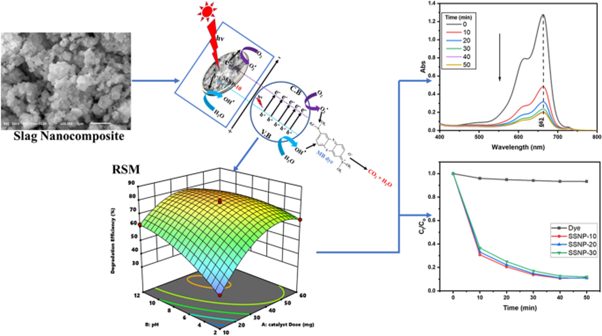 Read the publication that featured this abstract
Read the publication that featured this abstractThe photocatalytic activity of three solvothermal prepared steel slag nanocomposites, SSNP-10, SSNP-20, and SSNP-30, was tested in this work for methylene blue (MB) dye degradation. Using SSNP for the first time, the photocatalytic degradation of MB dye was optimized using Box–Behnken design (BBD) in a response surface approach. The influence of essential operating parameters was experimentally examined, modeled, and optimized. The analysis of variance (ANOVA) results revealed that the suggested quadratic models significantly agreed with the experimental investigation, with p-values less than 0.0001 and an R2 value of 0.9914. Accordingly, the optimized conditions were 32.83 mg catalyst dose, 11.42 pH, 41.34 min irradiation times, and 10.63 mg/L MB dye concentration. The optimized degradation efficiency of the MB dye was 89.43% under these conditions. The result was experimentally validated with the optimal operating parameters for SSNP-10, SSNP-20, and SSNP-30, and the photodegradation efficiencies were 90.07%, 88.94%, and 87.28%, respectively. A pseudo-first-order reaction kinetics of 0.0293, 0.0291, and 0.0267 was achieved for SSNP-10, SSNP-20, and SSNP-30 with a regression coefficient of 0.9514, 0.9312, and 0.9042, respectively. According to Pareto analysis, the operational factors that had the greatest effect on dye degradation efficiency were catalyst dosage (F-value 585.32) > MB concentration (F-value 423.89) > irradiation period (F-value 368.01) > pH (F-value 362.34). The results showed that the SSNP catalyst was the key parameter for the generation of hydroxyl radicals responsible for the photodegradation of MB dye and may be useful for other contaminants’ degradation.
4,7-Diarylbenzo[c][1,2,5]thiadiazoles as fluorophores and visible light organophotocatalysts
- Dominic Taylora
- Thomas Malcomsonb
- Adilet Zhakeyevc
- Shengxian Chengd
- Georgina M. Rosaira
- Jose Marques-Huesoc
- Zhengtao Xue
- Martin J. Patersona
- Scott J. Dalgarnoa
- Filipe Vilelaa
- aInstitute of Chemical Sciences, School of Engineering and Physical Science, Heriot-Watt University, Riccarton, Edinburgh EH14 4AS, UK.
- bDepartment of Chemistry, Lancaster University, Lancaster, LA1 4YB, UK
- cInstitute of Sensors, Signals and Systems, School of Engineering and Physical Science, Heriot-Watt University, Riccarton, Edinburgh EH14 4AS, UK
- dDepartment of Chemistry, City University of Hong Kong, 83 Tat Chee Avenue, Kowloon, Hong Kong
- eInstitute of Materials Research and Engineering (IMRE), Agency of Science, Technology and Research (A*STAR), 2 Fusionopolis Way, Innovis, Singapore 138634
 Read the publication that featured this abstract
Read the publication that featured this abstractElectron donor–acceptor (D–A) systems based on the benzo[c][1,2,5]thiadiazole (BTZ) motif have been extensively researched for use in photovoltaics or as fluorescent sensors. However, their use as potential visible-light organophotocatalysts has not received any in-depth study. Here we report the synthesis, characterisation, and application of a library of 26 D–A compounds based on the BTZ group. By varying the donor groups whilst keeping the BTZ acceptor group the same, we have been able to systematically modify the photocatalyst’s optoelectronic and photophysical properties. These photocatalysts were then validated using a Minisci-type decarboxylative alkylation of electron deficient heteroarenes as a test reaction under both batch and continuous flow conditions.
Recent advances in chemical fixation of CO2 based on flow chemistry
- Hui Luoa
- Jing Rena
- Ying Suna
- Yunlin Liub
- Feng Zhoua,c
- Guoyue Shia
- Jian Zhoua,d
- aSchool of Chemistry and Molecular Engineering, East China Normal University, Shanghai, 200062, China
- bSchool of Chemistry and Chemical Engineering, Guangzhou University, Guangzhou, 510006, China
- cInstitute of Eco-Chongming, Shanghai 202162, China
- dState Key Laboratory of Organometallic Chemistry, Shanghai Institute of Organic Chemistry, Chinese Academy of Sciences, Shanghai 200032, P. R. China
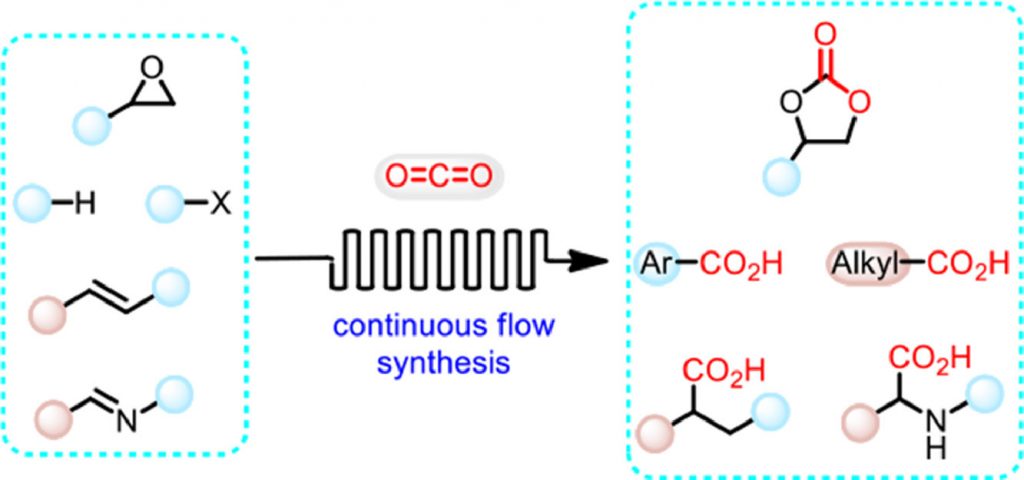 Read the publication that featured this abstract
Read the publication that featured this abstractCarbon dioxide (CO2) is an attractive C1 building block in chemical synthesis due to its abundance, availability and sustainability. However, the low reactivity and high stability generally limits its transformations under mild conditions to value added chemicals. Recent advances in flow chemistry provide effective means for the chemical transformation of CO2, and many new methods and techniques that fully utilized the advantages of continuous flow platforms for the chemical fixation of CO2 have been realized. In view of the rapid development and the urgent need for continuous transformation of CO2, herein we wish to present an update of the recent advances in this research area.
Kinetics and hydrodynamics of Candida antartica lipase-catalyzed synthesis of glycerol dioleate (GDO) in a continuous flow packed-bed millireactor
- Nurul Nadiah Abd Razaka,b
- Patrick Cognetb
- Yolande Pérèsb
- Lai Ti Gewa,e
- aDepartment of Biological Sciences, School of Medical and Life Sciences, Sunway University, Petaling Jaya, Selangor, 47500, Malaysia
- bLaboratoire de Génie Chimique, Université de Toulouse, CNRS, INPT, UPS, Toulouse, 31423, France
- cCentre for Carbon Dioxide Capture and Utilization (CCDCU), School of Engineering and Technology, Sunway University, Petaling Jaya, Selangor, 47500, Malaysia
- dDepartment of Engineering, Lancaster University, Lancaster, LA1 4YW, United Kingdom
- eSunway Materials Smart Science & Engineering (SMS2E) Cluster, Sunway University, Petaling Jaya, Selangor, 47500, Malaysia
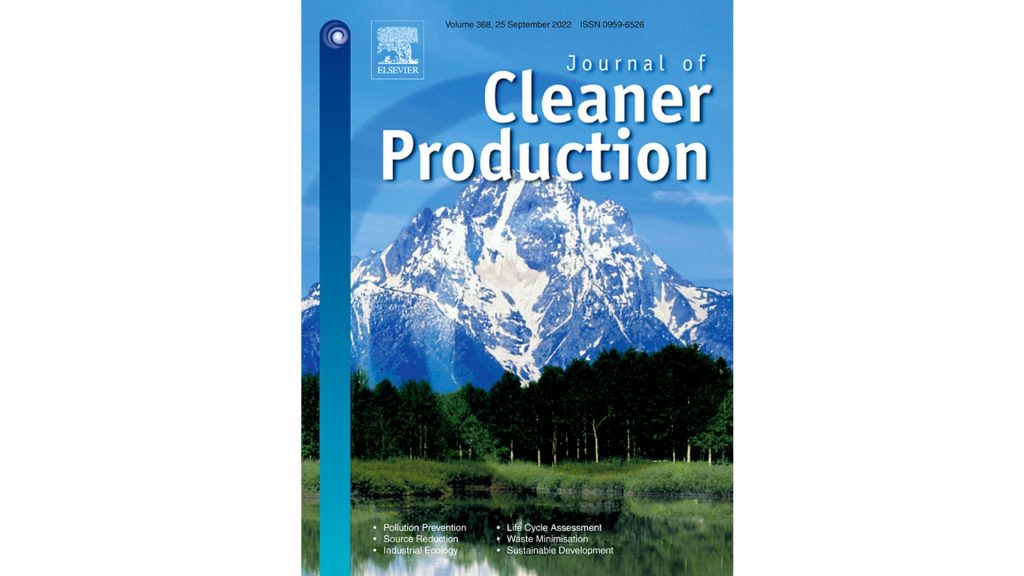 Read the publication that featured this abstract
Read the publication that featured this abstractDiacylglycerols (DAG) have been widely used in many industries due to their remarkable capabilities as emulsifiers and stabilisers. However, developing a sustainable and an effective synthesis method for DAG remains a challenge. Continuous flow bio-reactor is recognized to be more productive, controllable, and reliable instrument for developing green and intensified processes. In this work, a continuous flow packed bed millireactor was employed for the synthesis of glycerol dioelate (GDO) catalyzed by immobilized lipase namely Candida antartica. Experiments were carried out to evaluate the kinetic parameters as well as to assess the internal and external mass transfer limitations. Using one-factor-at-a-time variables method, maximum oleic acid conversion and GDO selectivity were achieved at 85% and 74% respectively, at 0.15 g of lipase, 77 min of residence time with 1.6:1 molar ratio of oleic acid/glycerol. Hydrodynamic studies showed that the esterification reaction is kinetically controlled and unaffected by external and internal mass transfer. Employing Lilly–Hornby model for kinetic evaluation, Km values increased with increasing flow rates, whereas, Vmax appeared to be flow rate independent. Reusability tests revealed that the activity of immobilized lipase remained the same after 9 successive reaction cycles. At 11 days of operation, the stability of the lipase in the continuous packed bed millireactor decreased only 5–7%, indicating satisfying operational results and recyclability. This work may promote the enzymatic engineering synthesis of DAG, facilitating the creation of a cleaner and safer process. It has the potential to broaden the application of enzymes in continuous flow micro or millireactors.
Microfluidic Asymmetrical Synthesis and Chiral Analysis
- Konstantin A.Kochetkova
- Nataliya A.Bystrovaa
- Pavel A.Pavlovb
- Maxim S.Oshchepkovb
- Aleksandr S.Oshchepkovc
- aNesmeyanov Institute of Organoelement Compounds, Russian Academy of Sciences, ul. Vavilova 28, Moscow 119991, Russia
- bMendeleev University of Chemical Technology of Russia, Miusskaya pl. 9, Moscow 125047, Russia
- cMax Planck Institute for the Science of Light, Department of Physics, D-91058 Erlangen, Germany
 Read the publication that featured this abstract
Read the publication that featured this abstractIn recent years, more attention has been paid to efficient, cost-effective and energy-saving technologies. In particular, there is a lot of recent information on the advantages of microfluidic technologies, combining economy, safety and environmental friendliness with reproducibility, high yields and high stereoselectivity of chemical reactions. Therefore, an important task is to generalize the available material on microfluidic technologies in order to identify new horizons of application in the field of a chiral synthesis. The difficulties of implementation microfluidic a chiral synthesis, its capabilities and prospects for further development are discussed in detail in this review. Various types of microfluidic reactors, synthetic schemes for carrying out chemical reactions are considered, and their comparison with traditional methods of synthesis is also given. Finally, a description is given of enantioselective analysis using microfluidic technologies and the possibilities for further improvement of microfluidics are discussed.
Evaluation of unexpected protecting group removal in solid-phase peptide synthesis: Quantified using continuous flow methods
- Victoire Laudea
- Manuel Nuñoa
- Roger C. Mosesa
- Duncan Guthriea
- aVapourtec Ltd, Bury Saint Edmunds, UK
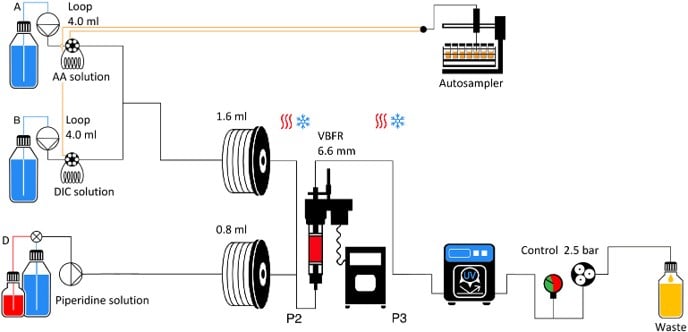 Read the publication that featured this abstract
Read the publication that featured this abstractAs peptides gained interest as new drugs in the past years, their synthetic routes had been the subject of review and improvement. Fmoc/tBu-based solid-phase peptide synthesis (SPPS) is the most convenient technique, and the implementation in continuous flow has allowed for single-pass coupling and deprotection reactions. The focus of this research is to evaluate the relationship between undesired solvent-promoted reactions and final crude purity, by studying volume changes of a variable bed flow reactor through the synthesis. Based on the temperature, typical solvents for SPPS such as dimethylformamide (DMF) or N-methyl-2-pyrrolidone (NMP) can cause unwanted Fmoc removal during wash steps. It was found that for every millilitre of DMF used at 80°C, up to 1 μmol of Fmoc-protected peptide is deprotected, leading to additional impurities. This effect can, however, be minimised by adding additives such as HOBt, which reduces such unwanted deprotection to just 0.1 μmol/ml.
Synthesis of Benzothiazinones from Benzoyl Thiocarbamates: Application to Clinical Candidates for Tuberculosis Treatment
- William Connorsa
- Ryan DeKortea
- Simon C. C. Lucasb
- Ariamala Gopalsamyb
- Robert E Zieglera
- aAstraZeneca Pharmaceuticals LP, Medicinal Chemistry, United States
- bAstraZeneca Pharmaceuticals LP, Hit Discovery, United Kingdom
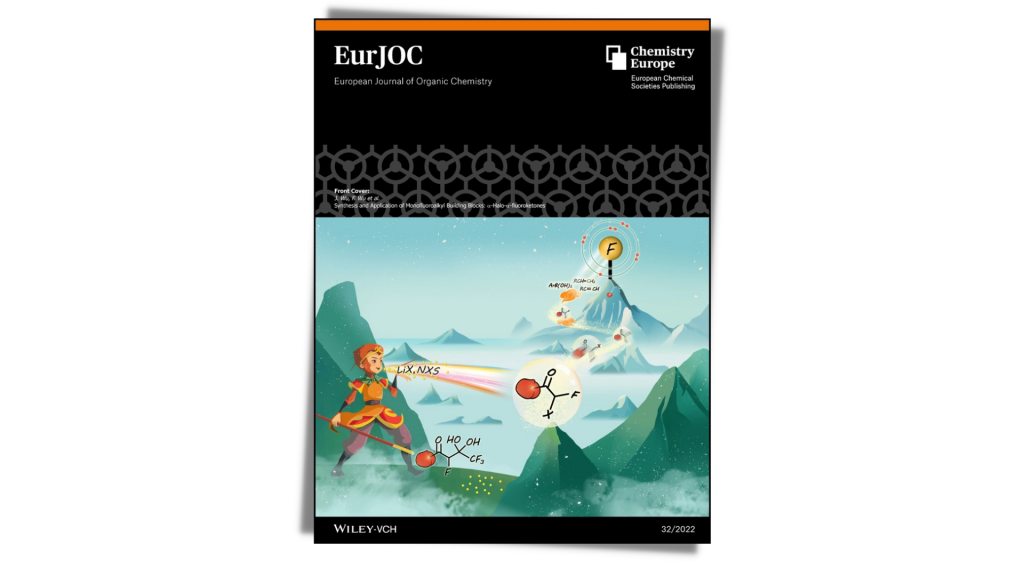 Read the publication that featured this abstract
Read the publication that featured this abstractBenzothiazinones are a structural motif found in biologically active compounds, such as the clinical candidates BTZ-043 and Macozinone for the treatment of tuberculosis. We describe a robust, two-step method to synthesize 2-amino-substituted benzothiazinones from benzoyl thiocarbamates, which were prepared in a one-pot procedure from benzoyl chlorides. The intramolecular cyclization and ethoxy displacement steps were also amenable to adoption in continuous flow as exemplified by select substrates.
Synthesis of new heterocyclic resveratrol analogues in milli- and microreactors: intensification of the Wittig reaction
- Milena Mlakića, Lucija Rajiča,b, Anabela Ljubićb, Vitomir Vušakb, Bruno Zelićc,d, Martin Gojunc, Ilijana Odake, Ivona Čulee, Ivana Šagudb, Anita Šalićc, Irena Škorića
- aDepartment of Organic Chemistry, Faculty of Chemical Engineering and Technology, University of Zagreb, Marulićev trg 19, HR-10 000, Zagreb, Croatia
- bPliva R&D, Teva Pharmaceutical Industries Ltd, Prilaz baruna Filipovića 29, HR-10 000, Zagreb, Croatia
- cDepartment of Reaction Engineering and Catalysis, Faculty of Chemical Engineering and Technology, University of Zagreb, Marulićev trg 19, HR-10 000, Zagreb, Croatia
- dDepartment of Packaging, Recycling and Environmental Protection, University North, Trg dr. Žarka Dolinara 1, HR-48 000, Koprivnica, Croatia
- eDepartment of Chemistry, Faculty of Science and Education, University of Mostar, Matice hrvatske bb, 88 000, Mostar, Bosnia and Herzegovina
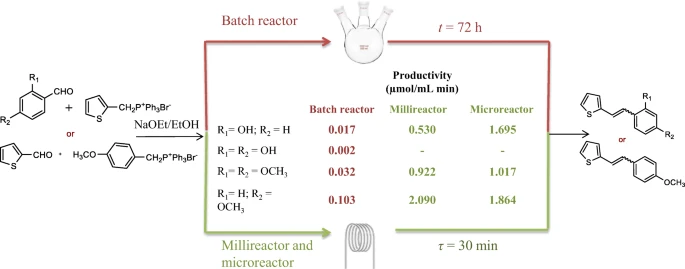 Read the publication that featured this abstract
Read the publication that featured this abstractResveratrol is a natural bioactive non-flavonoid polyphenol that protects from cardiovascular disease, neurodegenerative diseases and various cancers. Unfortunately, the amounts of resveratrol in plants are low and therefore, chemical synthesis is still the main way to obtain this valuable structure. In this work, Wittig reaction was chosen as the synthetic route for the study on technology influence in batch vs. micro- or milliflow reactors during the production of new resveratrol-like compounds. A series of reactions was carried out by batch synthesis, and intensified in a milli- and a microreactor, changing the reaction conditions to increase the efficiency and productivity of the process. Results were compared based on conversion, yield, productivity and trans/cis ratio. Similar yields and conversions were obtained in all reaction systems, but in much shorter time in the milli- and microscale compared to the batch reactor. On the other hand, higher productivities were obtained in the millireactor and microreactor, making them better systems for the proposed reactions of new heterocyclic resveratrol analogues synthesis.
Multistep Continuous Flow Synthesis of Isolable NH2‐Sulfinamidines via Nucleophilic Addition to Transient Sulfurdiimide
- Michael Andresinia
- Sebastien Carretb
- Leonardo Degennaroa
- Fulvio Ciriacoa
- Jean-François Poissonb
- Renzo Luisia
- aUniversity of Bari: Universita degli Studi di Bari Aldo Moro, Pharmacy - Drug Sciences, Via E. Orabona,4, 70125 Bari, ITALY
- bUniversite Grenoble Alpes, Chemistry, rue de la chimie, 38000 Grenoble, FRANCE
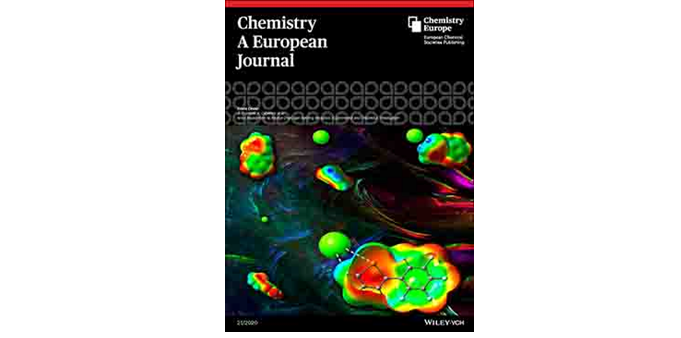 Read the publication that featured this abstract
Read the publication that featured this abstractThe growing interest in novel sulfur pharmacophores led to recent advances in the synthesis of some S(IV) and S(VI) motifs. However, preparation and isolation of uncommon primary sulfinamidines, the aza-analogues of sulfinamides, is highly desirable. Here we report a multistep continuous flow synthesis of poorly explored NH 2 -sulfinamidines by nucleophilic attack of organometallic reagents to in situ prepared N -(trimethylsilyl)- N -trityl-λ 4 -sulfanediimine (Tr-N=S=N-TMS). The transformation can additionally be realized under mild conditions, at room temperature, via a highly chemoselective halogen-lithium exchange of aryl bromides and iodides with n -butyllithium. Moreover, the synthetic potential of the methodology was assessed exploring further manipulations of the products and accessing novel S(IV) analogues of celecoxib, tasisulam, and relevant sulfinimidoylureas.
A multi-step continuous flow synthesis of pomalidomide
- Maria Ivanovaa
- Julien Legrosa
- Thomas Poissona,b
- Philippe Jubaulta
- aNormandie Univ, INSA Rouen, UNIROUEN, CNRS, COBRA, 76000, Rouen, France
- bInstitut Universitaire de France, Paris, France
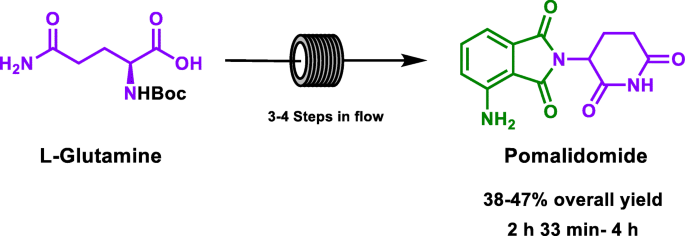 Read the publication that featured this abstract
Read the publication that featured this abstractThe immunomodulatory drugs (IMiDs) thalidomide, pomalidomide, and lenalidomide are widely used to treat multiple myeloma. The permanent need of IMiDs analogues in clinical screening and practice has created the demand to find a reliable and robust method for their preparation. To reach this goal, the use of flow chemistry is quite appealing, allowing a safe operation, an excellent reproducibility and an efficient process. Herein, we describe a continuous 3–4 step flow approach for the synthesis of the pomalidomide (38–47% overall yield) and a few analogues.
Continuous Flow Preparation of Benzylic Sodium Organometallics
- Johannes H. Harenberga
- Dr. Rajasekar Reddy Annapureddya
- Prof. Dr. Konstantin Karaghiosoffa
- Prof. Dr. Paul Knochela
- aDepartment Chemie, Ludwig-Maximilians-Universität München, Butenandtstraße 5–13, Haus F, 81377 München, Germany
 Read the publication that featured this abstract
Read the publication that featured this abstractWe report a lateral sodiation of alkyl(hetero)arenes using on-demand generated hexane-soluble (2-ethylhexyl)sodium (1) in the presence of TMEDA. (2-Ethylhexyl)sodium (1) is prepared via a sodium packed-bed reactor and used for metalations at ambient temperature in batch as well as in continuous flow. The resulting benzylic sodium species are subsequently trapped with various electrophiles including carbonyl compounds, epoxides, oxetane, allyl/benzyl chlorides, alkyl halides and alkyl tosylates. Wurtz-type couplings with secondary alkyl halides and tosylates proceed under complete inversion of stereochemistry. Furthermore, the utility of this lateral sodiation is demonstrated in the synthesis of pharmaceutical relevant compounds. Thus, fingolimod is prepared from p-xylene applying the lateral sodiation twice. In addition, 7-fold isotopically labeled salmeterol-d7 and fenpiprane as well as precursors to super linear alkylbenzene (SLAB) surfactants are prepared.
Flow Chemistry Opportunities for Drug Discovery
- María Lourdes Linaresa
- Enol Lópezb
- Eduardo Palaoa
- Jesús Alcázara
- aJanssen Research and Development, Janssen-Cilag, S.A., Discovery Chemistry, C/ Jarama, 75, 45007 Toledo Spain
- bUniversidad de Castilla-La Mancha, Facultad de Ciencias y Tecnologías Químicas, Av. Camilo José Cela, 14, 13005 Ciudad Real Spain
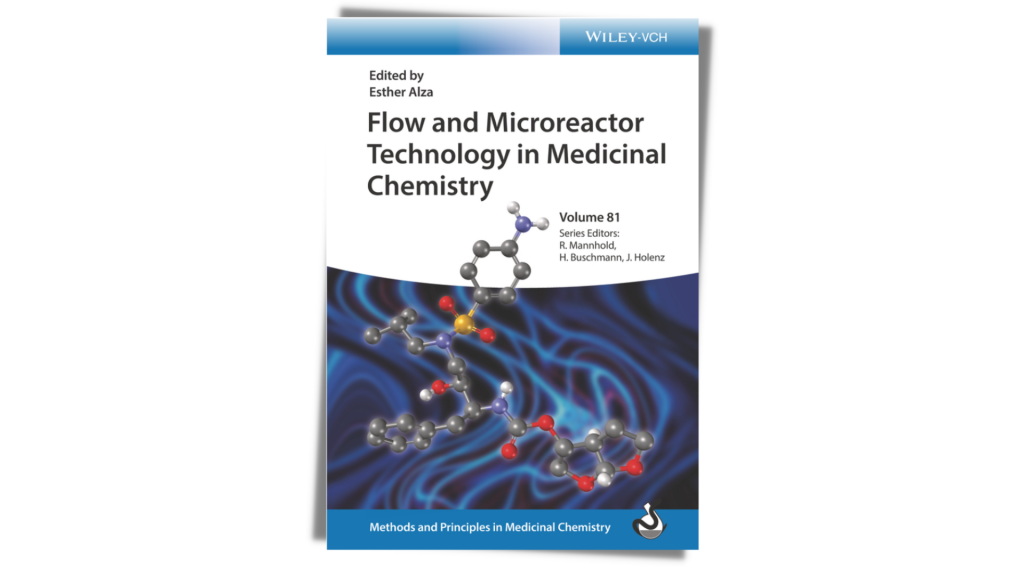 Read the publication that featured this abstract
Read the publication that featured this abstractThis chapter provides an overview on how flow chemistry can be integrated in the drug discovery process, going beyond traditional transformations applied in the Pharma sector and accessing novel chemical space. Its combination with photochemistry and electrochemistry is allowing the development of new reactivities to access complex molecules in a more efficient way. Integration of flow chemistry in automated platforms will enhance its productivity and reduce cycle times in drug discovery.
Innovative Process Development of Pharmaceutical Intermediates Under Continuous-Flow System
- Koji Machidaa
- Hiroaki Yasukouchia
- aPharma & Supplemental Nutrition Solutions Vehicle, Kaneka Corporation, Pharma Business Division Research Group, 1-8 Miyamae-cho, Takasago-cho, Takasago, Hyogo, 676-8688 Japan
 Read the publication that featured this abstract
Read the publication that featured this abstractContinuous-flow processing has many advantages over conventional batch processing, including high process safety, productivity, and scalability. This emerging technology expands the possibility of synthetic chemistry into new areas. Recently, many researchers in pharmaceutical companies have increasingly tried to apply continuous-flow methodologies to their manufacturing process. Here, we introduce a safe and efficient plug flow reactor system for hazardous reactions and a simple and practical packed-bed reactor system for catalytic reactions by taking advantage of flow technology. Our flow systems showed that they apply to the synthesis of various pharmaceutical intermediates in good to excellent yields and are readily scaled up while increasing the process safety and efficiency. Furthermore, we designed and installed commercial flow reactors and successfully implemented large-scale productions using the facilities under GMP condition.
Flow Chemistry in Medicinal Chemistry: Applications to Bcr – Abl Kinase Inhibitors
- Paul Richardsona
- aPfizer-La Jolla, Medicine Design, 10770 Science Center Drive, La Jolla, CA, 92121 USA
 Read the publication that featured this abstract
Read the publication that featured this abstractThere continues to be an exponential growth in continuous/flow chemistry throughout the pharmaceutical industry with the advantages of this technology being well appreciated. While the ability to utilize such an approach to seamlessly scale a compound through development is often highlighted, the need to move rapidly in the discovery phase can be a barrier to investment in flow in medicinal chemistry laboratories. In addition, challenges exist most notably with heterogeneous reactions (insolubility of products) as well as with executing reactions prevalent in drug discovery most notably Pd-mediated cross-couplings. The current review highlights several case studies focusing on the application of flow chemistry technologies to the synthesis/discovery of inhibitors of Bcr-Abl kinase (such as imatinib, nilotinib, and ponatinib) and, through these, showcases a number of solutions/strategies to how these problems can be overcome.
Flow Chemistry at the Extremes: Turning Complex Reactions into Scalable Processes
- Andrew R. Bogdana
- aAbbVie, Inc., Drug Discovery Science and Technology, 1 North Waukegan Rd, North Chicago, IL, 60064 USA
 Read the publication that featured this abstract
Read the publication that featured this abstractThe field of flow chemistry has expanded over the past number of years and is now being routinely used by the pharmaceutical industry in the manufacturing of active pharmaceutical ingredients (APIs). Specifically, flow chemistry is being used to convert precarious batch processes into high-throughput flow processes. A few common themes emerge when analyzing the literature, specifically the use of temperature extremes as well as the generation/use of hazardous reagents. Advances in photochemistry have also permitted ultraviolet and visible light-mediated processes to be reproducibly run on scale. Applications of the aforementioned processes are discussed herein, with specific attention being paid to scalability.
Application of Continuous-Flow Processing in Multistep API and Drug Syntheses
- Faith M. Akwia
- Paul Wattsa
- aNelson Mandela University, Faculty of Science, Department of Chemistry, University Way, Port Elizabeth, 6031 South Africa
 Read the publication that featured this abstract
Read the publication that featured this abstractThe use of flexible and cost-effective manufacturing technologies for the production of active pharmaceutical intermediates (APIs) is one major pathway toward solving drug shortage and inaccessibility, which is a multifaceted global issue. With the introduction of enabling technologies such as continuous-flow processing to the pharmaceutical industry, some of the bottlenecks attributed to API manufacturing that are contributing toward drug shortage and access can easily be mitigated. To demonstrate, most recent routes toward the continuous-flow synthesis of 20 APIs, of which more than 50% are on the World Health Organization’s 2018 list of essential medicines, are discussed herein. This chapter aims at highlighting the potential of continuous-flow processing as a viable technology for the efficient and sustainable manufacture of APIs to counteract drug shortage and inaccessibility in order to promote the engagement of relevant stakeholders to facilitate capacity building for local production of essential medicines in affected populations mostly situated in developing economies.
Heterogeneous metallaphotoredox catalysis in a continuous-flow packed bed reactor
- Wei-Hsin Hsua,b
- Susanne Reischauera,b
- Peter H Seebergera,b
- Bartholomäus Piebera
- Dario Cambiéa
- aMax Planck Institute of Colloids and Interfaces, Biomolecular Systems Department, Am Mühlenberg 1, 14476 Potsdam, Germany
- bFreie Universität Berlin, Institute for Chemistry and Biochemistry, Arnimallee 22, 14195 Berlin, Germany
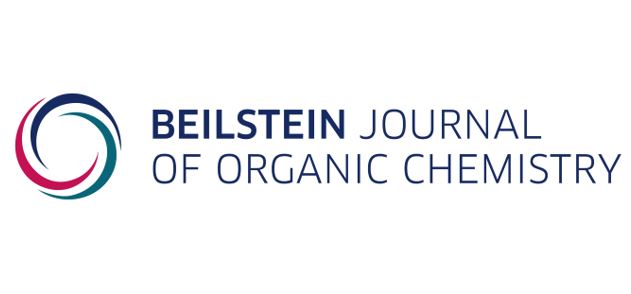 Read the publication that featured this abstract
Read the publication that featured this abstractMetallaphotoredox catalysis is a powerful and versatile synthetic platform that enables cross-couplings under mild conditions without the need for noble metals. Its growing adoption in drug discovery has translated into an increased interest in sustainable and scalable reaction conditions. Here, we report a continuous flow approach to metallaphotoredox catalysis using a heterogeneous catalyst that combines the function of a photo- and a nickel catalyst in a single material. The catalyst is embedded in a packed bed reactor to combine reaction and (catalyst) separation in one step. The use of a packed bed simplifies the translation of optimized batch reaction conditions to continuous flow, as the only components presents in the reaction mixture are the substrate and a base. Using the cross-coupling of sulfinates with aryl halides as a model system, a productivity of 4 mmol/h was achieved. The catalyst was shown to be stable, with a very low decrease of the yield (~1% per day) during a continuous experiment over seven days, and to be effective for C–O arylations when carboxylic acids are used as nucleophile instead of sulfinates.
An Overview on the Production of Biodiesel Enabled by Continuous Flow Methodologies
- Claudia Carluccia
- aCNR-Institute of Nanotechnology (CNR-NANOTEC), c/o Campus Ecotekne, Via Monteroni, 73100 Lecce, Italy
 Read the publication that featured this abstract
Read the publication that featured this abstractBiodiesel was produced via transesterification reaction catalyzed by acids, bases, enzymes or supercritical fluids. The catalysis was homogeneous or heterogeneous and the process could be carried out in batch or using a continuous flow process. Microreactors allowed us to obtain better control of the experimental variables, such as temperature, pressure and flow rate, carrying out the reactions in safe conditions, avoiding exothermic and dangerous processes. The synthetic methodologies in continuous flow, combined with other technologies as microwave irradiation or ultrasounds, led to complete automation of the process with an increase in efficiency, also applicable on an industrial scale.
Continuous flow synthesis of azobenzenes via Baeyer–Mills reaction
- Jan H. Griwatza,b
- Anne Kunza,b
- Hermann A. Wegnera,b
- aInstitute of Organic Chemistry, Justus Liebig University, Heinrich-Buff-Ring 17, 35392 Giessen, Germany
- bCenter for Material Research (ZfM/LaMa), Justus Liebig University, Heinrich-Buff-Ring 16, 35392 Giessen, Germany
 Read the publication that featured this abstract
Read the publication that featured this abstractAzobenzene, as one of the most prominent molecular switches, is featured in many applications ranging from photopharmacology to information or energy storage. In order to easily and reproducibly synthesize non-symmetric substituted azobenzenes in an efficient way, especially on a large scale, the commonly used Baeyer–Mills coupling reaction was adopted to a continuous flow setup. The versatility was demonstrated with a scope of 20 substances and the scalability of this method exemplified by the synthesis of >70 g of an azobenzene derivative applied in molecular solar thermal storage (MOST) systems.
Synthesis of 2,4,6-Trisubstituted Pyrimidines via Iron-Catalyzed Homocoupling of α,β-Unsaturated Ketoximes
- Kai Guoa
- Gaochen Xua
- Xuemei Wanga
- Chenglong Jiaa
- Huan Yana
- Sai Zhanga
- Qinghuan Wua
- Ning Zhua
- Zheng Fanga
- Jindian Duana
- aCollege of Biotechnology and Pharmaceutical Engineering, State Key Laboratory of Materials-Oriented Chemical Engineering, Nanjing Tech University,30 Puzhu Rd S., Nanjing 211816, China
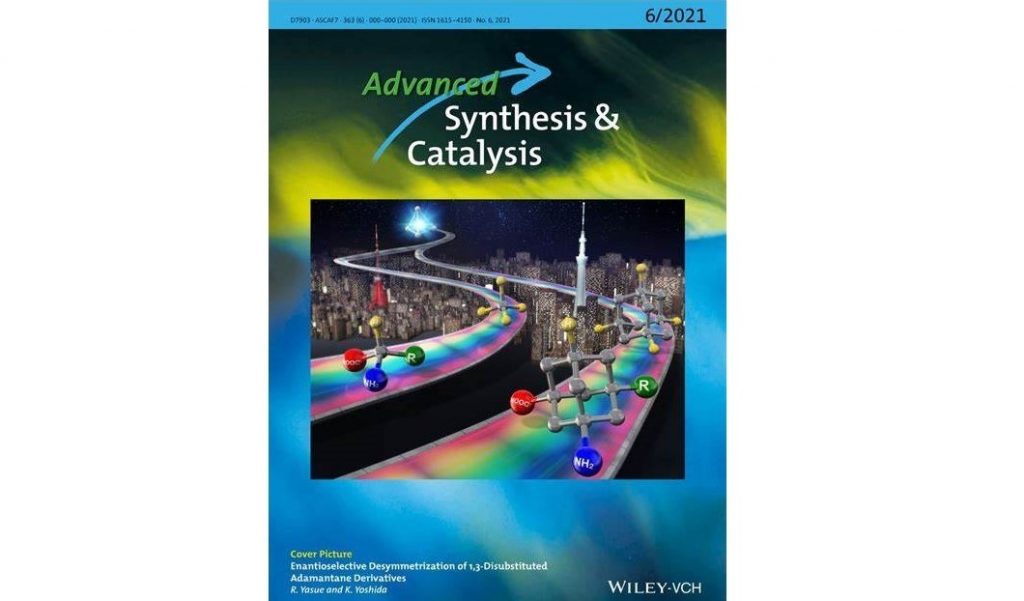 Read the publication that featured this abstract
Read the publication that featured this abstractA FeCl2-catalyzed homocoupling of α,β-unsaturated ketoximes in batch and flow is reported. This protocol demonstrates broad substrate scope and functional group tolerance, providing an alternate route toward the synthesis of 2,4,6-trisubstituted pyrimidines under mild conditions. Also a gram-scale reaction has been performed to evaluate the applicability of this method.
Continuous Processing of Concentrated Organolithiums in Flow Using Static and Dynamic Spinning Disc Reactor Technologies
- Ulrich Wietelmanna
- Johannes Klösenera
- Peter Rittmeyera
- Stefan Schnipperinga
- Henk Batsb
- Wouter Stamb
- aAlbemarle Germany GmbH, Industrial Park Hoechst, D-65926 Frankfurt am Main, Germany
- bFlowid, Achtseweg Zuid 157C, NL-5651 GW Eindhoven, The Netherlands
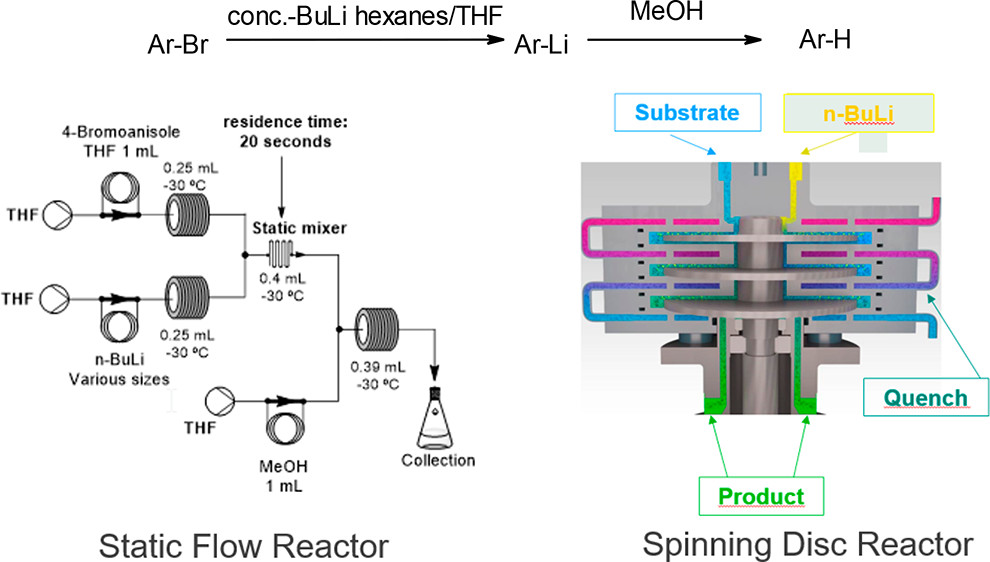 Read the publication that featured this abstract
Read the publication that featured this abstractOrganometallic reactions involving highly reactive organolithium reagents are widely used in organic synthesis. However, the use of such organometallics in batch mode on a pilot and industrial scale is challenging for safety reasons and frequently requires expensive cryogenic process conditions. A change to continuous processing in flow mode can provide major advantages for process safety and economics. In this study, we compare static and dynamic flow reactor technologies for two important organolithium (butyllithium and hexyllithium)-enabled transformations: deprotonations and bromine/lithium exchange reactions. Using higher concentrated (≥3 M) butyllithium (BuLi) solutions, that is, reaction mixtures with reduced hydrocarbon content, decreases the risk of reactor fouling and allows for increased space/time yields. In the flow mode, the observed reactions could be carried out under more convenient conditions, that is, at higher temperatures compared to the batch mode, and the deprotonation reaction even at ambient temperature instead of −78 °C. The formation of precipitates with the risk of clogging can be further reduced by changing from static flow to dynamic spinning disc reactor technology. The SpinPro reactor system from Flowid has been identified to ensure robust performance, as it tolerates salt precipitations and can provide excellent mass transfer conditions. Flow process technology using concentrated organolithium products can provide unique benefits for the manufacturing of pharmaceutical intermediates, agrochemical products, and specialty chemicals.
Process Intensive Synthesis of Propofol Enabled by Continuous Flow Chemistry
- Laurent Vineta
- Lorenzo Di Marcoa
- Vanessa Kairouza
- André B. Charettea
- aCentre in Green Chemistry and Catalysis, Center for Continuous Flow Synthesis, Department of Chemistry, Université de Montréal, 1375, av. Thérèse Lavoie-Roux, Montréal, Québec H2V 0B3, Canada
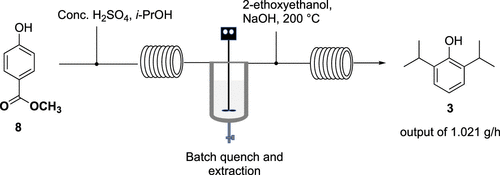 Read the publication that featured this abstract
Read the publication that featured this abstractA multi-step process using continuous flow chemistry to produce propofol is described. A scale-up of a 5-stage process (two continuous flow chemical steps, two extractions using a semi-batch approach, and one purification) provided propofol in high purity. This process minimizes the number of impurities formed during the double Friedel–Crafts reaction allowing to run two continuous flow chemical steps sequentially. The use of simple, inexpensive, and readily available reagents affords a viable process for this widely employed active pharmaceutical ingredient.
Immobilized Eosin Y for the photocatalytic oxidation of tetrahydroisoquinolines in flow
- Fabian Herbrika,b
- Sergio Rossia
- Miguel Sanzb
- Alessandra Puglisia
- Maurizio Benagliaa
- aDipartimento di Chimica, Università degli Studi di Milano, Via Camillo Golgi 19, 20133 Milano, Italy
- bTaros Chemicals GmbH & Co. KG, Emil-Figge-Strasse 76A, 44227 Dortmund, Germany
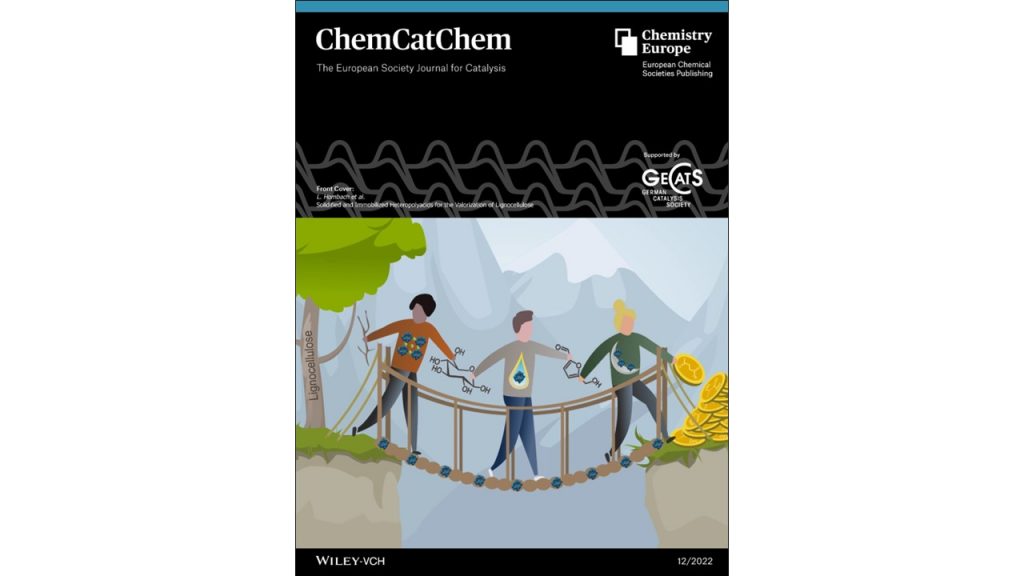 Read the publication that featured this abstract
Read the publication that featured this abstractA new easy-to-synthesize solid supported Eosin Y and its application in the building of a catalytic continuous flow reactor is reported. The fluidic device was employed to perform tertiary amines in-flow photooxidations followed by a nucleophile addition, with overall productivity increased by one order magnitude. When using the iminium-ions in situ generated or in a telescoped fashion, the resulting Mannich-products were isolated with high diastereoselectivity and up to 90% enantioselectivity, simply using air as terminal oxidant.
Sn-Catalyzed Criegee-Type Rearrangement of Peroxyoxindoles Enabled by Catalytic Dual Activation of Esters and Peroxides
- Moreshwar B. Chaudharia
- Krishna Jayana
- Boopathy Gnanaprakasama
- aDepartment of Chemistry, Indian Institute of Science Education and Research, Pune 411008, India
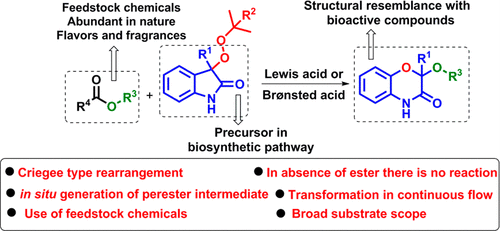 Read the publication that featured this abstract
Read the publication that featured this abstractWe report here the Sn-catalyzed mild protocol for ring expansion of peroxyoxindoles to afford the series of substituted-2H-benzo[b][1,4]oxazin-3(4H)-one derivatives. In this protocol, we showed the in situ conversion of tert-butyl peroxy compounds into peresters with the aid of external esters, which then underwent the ring-expansion process, and the incipient carbocation was trapped with the alcohol residue generated from the esters. The reaction is also demonstrated in a continuous flow process to afford the rearranged product in 22 min of residence time.
The Ugly Duckling Metamorphosis: The Ammonia/Formaldehyde Couple Made Possible in Ugi Reactions.
- Thaissa Pasquali F. Rosalbaa
- Samia Sayegh A. Kasa
- Ana Beatriz S. Sampaioa
- Dr. Carlos Eduardo M. Salvadora
- Dr. Carlos Kleber Z. Andradea
- aInstituto de Química, Laboratório de Química Metodológica e Orgânica Sintética (LaQMOS), Universidade de Brasília, Campus Universitário, Asa Norte, 70904-970 Brasília, Brasil
 Read the publication that featured this abstract
Read the publication that featured this abstractUgi reactions are still a challenge when the concomitant use of ammonia and formaldehyde is required. Herein, we propose a strategy to overcome this challenge using hexamethylenetetramine (HMTA) as a singular key for the employment of these two simple starting materials in the Ugi reaction. Acylaminoacetamide derivatives were prepared in good to excellent yields by this new methodology. The scope and optimization of the reaction conditions were investigated. This novel methodology was successfully applied in the synthesis of two different diketopiperazines (DKPs) using the Ugi/Deprotection+Activation/Cyclization (UDAC) method. A continuous flow approach was also used in this methodology.
Continuous-Flow Hofmann Rearrangement Using Trichloroisocyanuric Acid for the Preparation of 2-Benzoxazolinone
- Guido Gambacortaa
- Ian R. Baxendalea
- a Department of Chemistry, University of Durham, South Road, Durham DH1 3LE, U.K.
 Read the publication that featured this abstract
Read the publication that featured this abstractA continuous-flow preparation of 2-benzoxazolinone via the Hofmann rearrangement of salicylamide has been implemented employing trichloroisocyanuric acid as the stable and atom-economic chlorinating agent. The system was optimized to avoid solid accumulation and allow the preparation of hundreds of grams of the pure desired material over a working day. Furthermore, a trichloroisocyanuric acid (TCCA)-based chlorination of 2-benzoxazolone to the corresponding 5-chloro derivative was also carried out under batch conditions.
Boosting the Productivity of H2-Driven Biocatalysis in a Commercial Hydrogenation Flow Reactor Using H2 From Water Electrolysis
Barnabas Poznanskya, Sarah E. Clearya, Lisa A. Thompsona, Holly A. Reevea, Kylie A. Vincent*a
- aInorganic Chemistry Laboratory, Department of Chemistry, University of Oxford, Oxford, United Kingdom
Read the publication that featured this abstractTranslation of redox biocatalysis into a commercial hydrogenation flow reactor, with in-built electrolytic H2 generation, was achieved using immobilized enzyme systems. Carbon-supported biocatalysts were first tested in batch mode, and were then transferred into continuous flow columns for H2-driven, NADH-dependent asymmetric ketone reductions. The biocatalysts were thus handled comparably to heterogeneous metal catalysts, but operated at room temperature and 1–50 bar H2, highlighting that biocatalytic strategies enable implementation of hydrogenation reactions under mild–moderate conditions. Continuous flow reactions were demonstrated as a strategy for process intensification; high conversions were achieved in short residence times, with a high biocatalyst turnover frequency and productivity. These results show the prospect of using enzymes in reactor infrastructure designed for conventional heterogeneous hydrogenations.
Continuous flow heterogeneous catalytic reductive aminations under aqueous micellar conditions enabled by an oscillatory plug flow reactor
- Michaela Wernika,b
- Gellért Siposc,d
- Balázs Buchholcze
- Ferenc Darvasc,d
- Zoltán Novákf
- Sándor B. Ötvösa,b
- C. Oliver Kappea,b
- aInstitute of Chemistry, University of Graz, NAWI Graz, Heinrichstrasse 28, A-8010 Graz, Austria
- bCenter for Continuous Flow Synthesis and Processing (CCFLOW), Research Center Pharmaceutical Engineering GmbH (RCPE), Inffeldgasse 13, A-8010 Graz, Austria
- cThalesNano Inc., Záhony u. 7, 1031 Budapest, Hungary
- dComInnex Inc., Záhony u. 7, 1031 Budapest, Hungary
- eInnostudio Inc., Záhony u. 7, 1031 Budapest, Hungary
- fELTE “Lendület” Catalysis and Organic Synthesis Research Group, Faculty of Science, Institute of Chemistry, Eötvös Loránd University, Pázmány Péter stny. 1/a, 1117 Budapest, Hungary
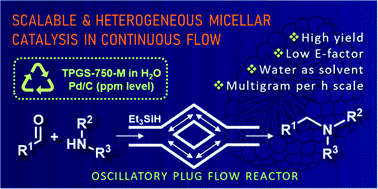 Read the publication that featured this abstract
Read the publication that featured this abstractDespite the fact that continuous flow processing exhibits well-established technical advances, aqueous micellar chemistry, a field that has proven extremely useful in shifting organic synthesis to sustainable water-based media, has mostly been explored under conventional batch-based conditions. This is particularly because of the fact that the reliable handling of slurries and suspensions in flow has been considered as a significant technical challenge. Herein, we demonstrate that the strategic application of an oscillatory plug flow reactor enables heterogeneous catalytic reductive aminations in aqueous micellar media enhancing mass transport and facilitating process simplicity, stability and scalability. The micellar flow process enabled a broad range of substrates, including amino acid derivatives, to be successfully transformed under reasonably mild conditions utilizing only very low amounts of Pd/C as a readily available heterogeneous catalyst. The preparative capabilities of the process along with the recyclability of the heterogenous catalyst and the aqueous reaction media were also demonstrated.
Continuous flow processing of bismuth-photocatalyzed atom transfer radical addition reactions using an oscillatory flow reactor
- Pauline Bianchia
- Jason D. Williamsa,b
- C. Oliver Kappea,b
- aInstitute of Chemistry, University of Graz, NAWI Graz, Heinrichstrasse 28, 8010 Graz, Austria
- bCenter for Continuous Flow Synthesis and Processing (CC FLOW), Research Center Pharmaceutical Engineering (RCPE), Inffeldgasse 13, 8010 Graz, Austria
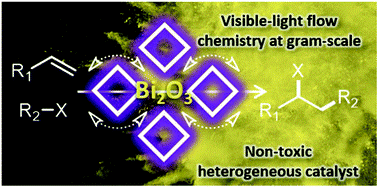 Read the publication that featured this abstract
Read the publication that featured this abstractMetal oxides represent an abundant and non-toxic class of photocatalysts for organic transformations. However, their use in larger scale processes is complicated by incompatibilities with continuous flow processing – a proven scale-up route for photochemistry. We detail the development of an efficient atom transfer radical addition protocol using a sustainable solvent system (acetone : PEG 400) and a low loading (2 mol%) of Bi2O3, which can be handled in an oscillatory flow reactor. Optimization of the reaction and oscillatory parameters led to high throughput (36 g in 4 h, 89% yield, 599 g L−1 h−1), with a process mass intensity (PMI) of just 8.5. The process also facilitates high recyclability (3 cycles with no loss of yield), and was demonstrated to be applicable to a range of other substrates on multigram scale, in moderate to excellent yields.
Automated Chemical Solid-Phase Synthesis of Glycans
- Xiaona Lia
- You Yanga
- aShanghai Frontiers Science Center of Optogenetic Techniques for Cell Metabolism, Shanghai Key Laboratory of New Drug Design, Engineering Research Center of Pharmaceutical Process Chemistry, Ministry of Education, School of Pharmacy, East China University of Science and Technology, 130 Meilong Road, Shanghai, 200237 China
 Read the publication that featured this abstract
Read the publication that featured this abstractAutomated chemical solid-phase synthesis is an automation platform for rapid and reliable synthesis of glycans. Since the seminal work of Automated Glycan Assembly (AGA) disclosed by Seeberger in 2001, AGA has evolved from a proof-of-concept to a robust and reliable technology for streamlined production of various types of glycans. Through more than 20 years of unceasing efforts, the major breakthroughs in AGA including linkers, approved building blocks, and synthesizers have been acquired, and numerous influential achievements have been made in complex glycan synthesis. In addition, the HPLC-assisted automated synthesis emerges as a promising automation platform to access glycans. In this review, we highlight the key advances in the field of automated chemical solid-phase synthesis, especially in AGA. The synthesis of representative glycans based on AGA is also described.
Cutting edge of diphenyl phosphorazidate (DPPA) as a synthetic reagent–A fifty-year odyssey
- Takayuki Shioiria
- Kotaro Ishiharaa
- Masato Matsugia
- aFaculty of Agriculture, Meijo University, Shiogamaguchi, Tempaku, Nagoya 468-8502, Japan
 Read the publication that featured this abstract
Read the publication that featured this abstractRecent advances of diphenyl phosphorazidate (DPPA) as a versatile synthetic reagent was described. It works as an azide anion equivalent, 1,3-dipole, electrophile, and nitrene. Thus it can be conveniently used for amide synthesis, ester synthesis, modified Curtius reaction, phosphorylation, C-acylation, azide synthesis, Pummerer rearrangement, cycloadditions, diazotization, triazoline formation, Staudinger reaction, amidine and guanidine synthesis, C–H phosphorazidation, nitrene insertion, decarbonylation, etc.
Cobalt-electrocatalytic HAT for functionalization of unsaturated C–C bonds
- Samer Gnaima, Adriano Bauera, Hai-Jun Zhanga, Longrui Chena, Cara Gannettb, Christian A. Malapitc, David E. Hilld, David Vogtc, Tianhua Tangc, Ryan A. Daleya, Wei Haoa, Rui Zengb, Mathilde Quertenmonte, Wesley D. Beckc, Elya Kandaharid, Julien C. Vantourouta, Pierre-Georges Echeverriae, Hector D. Abrunab, Donna G. Blackmonda, Shelley D. Minteerc, Sarah E. Reismand, Matthew S. Sigmanc & Phil S. Barana
- aDepartment of Chemistry, The Scripps Research Institute (TSRI), La Jolla, CA, USA
- bDepartment of Chemistry and Chemical Biology, Cornell University, Ithaca, NY, USA
- cDepartment of Chemistry, University of Utah, Salt Lake City, UT, USA
- dThe Warren and Katharine Schlinger Laboratory for Chemistry and Chemical Engineering, Division of Chemistry and Chemical Engineering, California Institute of Technology, Pasadena, CA, USA
- eMinakem Recherche, Beuvry-la-Forêt, France
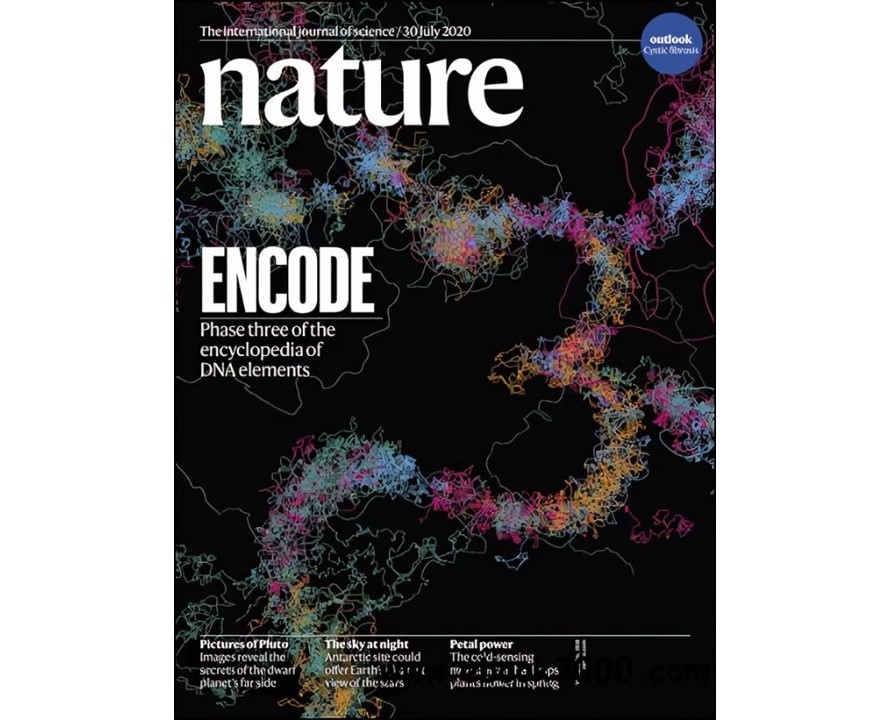 Read the publication that featured this abstract
Read the publication that featured this abstractThe study and application of transition metal hydrides (TMHs) has been an active area of chemical research since the early 1960s1, for energy storage, through the reduction of protons to generate hydrogen2,3, and for organic synthesis, for the functionalization of unsaturated C–C, C–O and C–N bonds4,5. In the former instance, electrochemical means for driving such reactivity has been common place since the 1950s6 but the use of stoichiometric exogenous organic- and metal-based reductants to harness the power of TMHs in synthetic chemistry remains the norm. In particular, cobalt-based TMHs have found widespread use for the derivatization of olefins and alkynes in complex molecule construction, often by a net hydrogen atom transfer (HAT)7. Here we show how an electrocatalytic approach inspired by decades of energy storage research can be made use of in the context of modern organic synthesis. This strategy not only offers benefits in terms of sustainability and efficiency but also enables enhanced chemoselectivity and distinct, tunable reactivity. Ten different reaction manifolds across dozens of substrates are exemplified, along with detailed mechanistic insights into this scalable electrochemical entry into Co–H generation that takes place through a low-valent intermediate.
Total Synthesis of Phytotoxic Radulanin A Facilitated by the Photochemical Ring Expansion of a 2,2-Dimethylchromene in Flow
- Bruce Lockett-Waltersa
- Simon Thuilliera,b
- Emmanuel Baudouinb
- Bastien Nay*a
- aLaboratoire de Synthèse Organique, Ecole Polytechnique, CNRS, Institut Polytechnique de Paris, 91128 Palaiseau, France
- bInstitut de Biologie Paris-Seine (IBPS), Laboratoire de Biologie du Développement, Sorbonne Université, CNRS, UMR7622, F-75005 Paris, France
 Read the publication that featured this abstract
Read the publication that featured this abstractThe radulanins are biologically active bibenzyl natural products featuring a synthetically challenging 2,5-dihydro-1-benzoxepine core. In contrast with previous reports exhibiting lengthy strategies, we demonstrate the shortest synthesis of radulanin A to date, featuring a largely unexplored photochemical ring expansion reaction of a 2,2-dimethylchromene precursor. This work was adapted to a continuous-flow setup for larger-scale preparation, in view of biological investigations into the herbicidal properties of this natural product.
Practical Ferrioxalate Actinometry for the Determination of Photon Fluxes in Production-Oriented Photoflow Reactors
- Bavo Vandekerckhovea
- Nicola Piensb
- Bert Mettenb
- Christian V. Stevensa
- Thomas S. A. Heugebaert*a
- aSynBioC Research Group, Department of Green Chemistry and Technology, Faculty of Bioscience Engineering, Ghent University, Coupure Links 653, B-9000 Ghent, Belgium
- bAjinomoto Bio-Pharma Services, Cooppallaan 91, 9230 Wetteren, Belgium
 Read the publication that featured this abstract
Read the publication that featured this abstractAccurate determination of the photon flux is of major importance to evaluate and characterize photochemical reactor setups. Knowing the photon flux ensures reproducible reactor operation and facilitates predictable scale-up. Over the past years, flow reactors have proven to be the key enabling technology for photochemistry to become relevant on production scales. This is mainly due to the mitigation of the limited penetration depth of photons in typical batch reactors. However, due to the practical drawbacks of the widely accepted standard for photon flux determination (ferrioxalate actinometry) concerning precipitation and gas formation at higher conversion, reliable actinometry in flow reactors is still challenging. In this paper, three practical approaches for the ferrioxalate-based determination of the photon flux are presented, which address these problems. These “dimmed emitter,” “segment-based,” and “time-resolved” methods thus allow photon flux determination in flow reactors with higher irradiated volumes and more powerful light sources, which is of utmost importance in the context of future scale-up.
Continuous Flow Technology as an Enabler for Innovative Transformations Exploiting Carbenes, Nitrenes, and Benzynes
- Kian Donnellya
- Marcus Baumanna
- aSchool of Chemistry, Science Centre South, University College Dublin, D04 N2E2 Dublin, Ireland
 Read the publication that featured this abstract
Read the publication that featured this abstractMiniaturization offered by microreactors provides for superb reaction control as well as excellent heat and mass transfer. By performing chemical reactions in microreactors or tubular systems under continuous flow conditions, increased safety can be harnessed which allows exploitation of these technologies for the generation and immediate consumption of high-energy intermediates. This Synopsis demonstrates the use of flow technology to effectively exploit benzynes, carbenes, and nitrenes in synthetic chemistry programs.
Online reaction monitoring with fast and flow-compatible diffusion NMR spectroscopy
- Achille Marchanda
- Rituraj Mishraa
- Aurélie Bernarda
- Jean-Nicolas Dumeza
- aUniversité,CNRS, CEISAM UMR6230,F-44000 Nantes, France
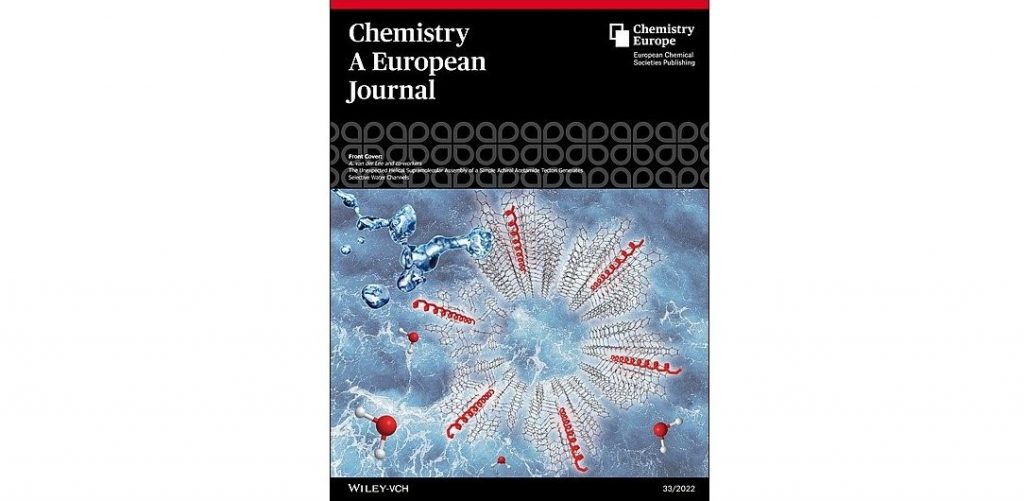 Read the publication that featured this abstract
Read the publication that featured this abstractOnline monitoring by flow NMR spectroscopy is a powerful approach to study chemical reactions and processes, which can provide mechanistic understanding, and drive optimisations. However, some of the most useful methods for mixture analysis and reaction monitoring are not directly applicable in flow conditions. This is the case of classic diffusion-ordered NMR spectroscopy (DOSY) methods, which can be used to separate the spectral information for mixture’s components. We describe a fast and flow compatible diffusion NMR experiment, that makes it possible to collect accurate diffusion data for samples flowing at up to 3 mL/min. We use it to monitor the synthesis of a Schiff base with a flow-tube with a time resolution of approximately 2 minutes. The one-shot flow-compatible diffusion NMR described here open many avenues for reaction monitoring applications.
Analytical Tools Integrated in Continuous-Flow Reactors: Which One for What?
- Mireia Rodriguez-Zubiria
- François-Xavier Felpina
- aNantes Université, CNRS, CEISAM, UMR 6230, F-44000 Nantes, France
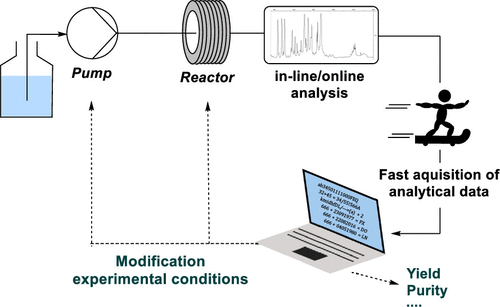 Read the publication that featured this abstract
Read the publication that featured this abstractThe concept and practices of chemical synthesis are being profoundly transformed toward the development of fully autonomous continuous processes. Critical to the development of autonomous continuous processes is the efficient monitoring of the reaction composition and product quality by in-line and online analyses. The in-line/online acquisition of analytical data allows one to monitor at regular intervals the reaction composition, including hazardous or air-sensitive intermediates with the possibility of adapting reaction parameters or interrupting the flow process when a chemical or technical failure is detected. This review presents the main in-line/online analytical tools that can be integrated into flow reactors for the monitoring of chemical reactions. This contribution is more a guide at the service of synthetic chemists illustrated by selected published examples from leading research laboratories than an exhaustive list of published articles. Ultimately, we would like this review to be an answer to the following recurrent, yet complex, question: “Which is/are the most suitable analytical solution(s) to monitor my chemical reaction?”.
Development of a palladium-catalyzed decarboxylative arene cross-coupling of pyrrole derivatives in a flow reactor
- Cindy Buonomanoa,b
- Michael Holtz-Mulhollanda,b
- Sydney Sullivana,b
- Pat Forgionea,b
- aDepartment of Chemistry and Biochemistry, Concordia University, 7141 Sherbrooke O, Montréal, QC, H4B 1R6, Canada
- bCentre in Green Chemistry and Catalysis, Montréal, QC, H3C 3J7, Canada
 Read the publication that featured this abstract
Read the publication that featured this abstractPalladium-catalyzed decarboxylative cross-coupling was employed to synthesize 2-arylpyrroles via a flow process. This reaction features palladium as the only metal catalyst and uses easily accessible starting materials. The reaction temperature, the residence time, and the quantity of different reactants were investigated to achieve optimal reaction conditions. A variety of N-alkylated and N-arylated 2-arylpyrroles were produced in good to excellent yields. A N-methyl-2-arylpyrrole derivative was produced in 220 min on a 3 g scale in 84% yield. The flow set-up presented in this work is featuring a fixed bed reactor to load the insoluble Cs2CO3 necessary for the decarboxylative cross-coupling to occur, it also comprises a sample loop, and a stainless-steel reactor. This study demonstrated the excellent potential of utilizing a flow process for the synthesis of 2-arylpyrroles derivatives.
Continuous synthesis of benzaldehyde by ozonolysis of styrene in a micro-packed bed reactor
- Fengyan Loua,b,c
- Qiang Caoa
- Chenghao Zhanga
- Ning Aic
- Qining Wangb
- Jisong Zhanga
- aThe State Key Lab of Chemical Engineering, Department of Chemical Engineering, Tsinghua University, 100084, Beijing, China
- bCollege of Chemical Engineering, Zhejiang University of Technology, 310014, Hangzhou, Zhejiang, China
- cCollege of Biological, Chemical Science and Engineering, Jiaxing University, 314001, Jiaxing, Zhejiang, China
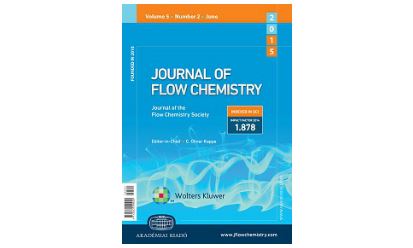 Read the publication that featured this abstract
Read the publication that featured this abstractDue to the inherent safety and high mass/heat transfer efficiency of microreactor, the continuous micro-reaction technology has been widely applied in hazardous chemistry recently. In this work, a continuous ozonolysis system based on micro-packed bed reactors (µPBRs) was developed with the synthesis of benzaldehyde as a model reaction. The effects of operating variables (e.g., stirring time, molar ozone/olefin ratio, reaction pressure, reaction temperature and liquid residence time) on the olefins conversion and product distribution were investigated. Based on the experimental results, the optimum reaction conditions are as follows: stirring time 1 h, molar ratio of ozone to olefin 1.2, reaction pressure 0.1 MPa, and the reaction temperature ranging from − 15 to 10℃, as opposed to the low temperature (<-50℃) routinely employed for batch operation. In addition, the full conversion of styrene and a benzaldehyde yield of ~ 93% was observed with the liquid residence time of 3.8–30.8 s. Consequently, the flow ozonolysis technique upon µPBRs allows for a sustainable, safe and efficient approach to oxidize olefins to aldehydes/ketones compared to traditional methods.
α-Amino Radical Halogen Atom Transfer Agents for Metallaphotoredox Catalyzed Cross-Electrophile Couplings of Distinct Organic Halides
- Xianhai Tiana
- Jaspreet Kaura
- Shahboz Yakubova
- Joshua P. Barhama
- aInstitute of Organic Chemistry, University of Regensburg Universitätsstr. 31, 93053 Regensburg (Germany)
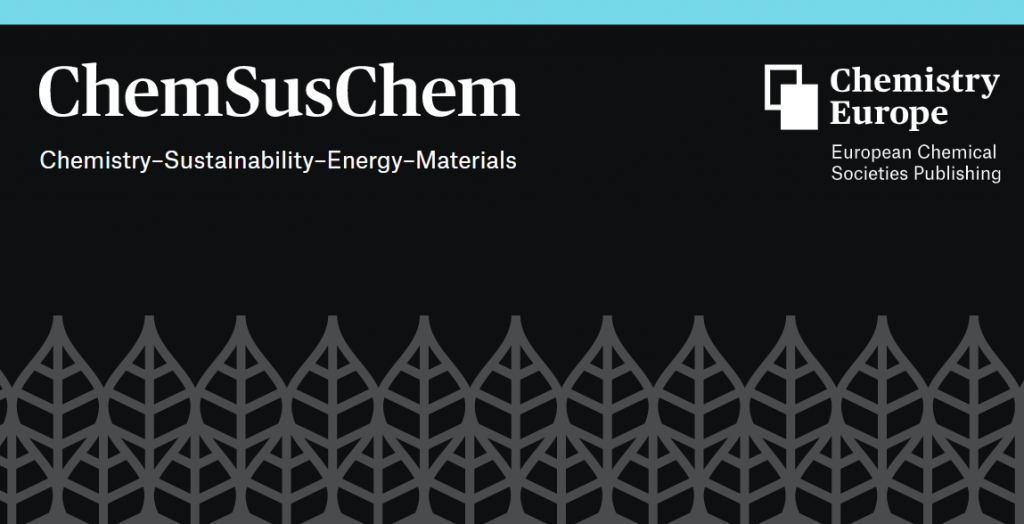 Read the publication that featured this abstract
Read the publication that featured this abstractα-Amino radicals, from simple tertiary amines, were employed as halogen atom transfer agents in metallaphotoredox catalysis for cross-electrophile couplings of organic bromides with organic iodides. This XAT strategy proved to be efficient for the generations of carbon radicals from a range of partners; alkyl, aryl, alkenyl and alkynyl iodides. The reactivities of these radical intermediates were captured by nickel catalysis with organobromides including aryl, heteroaryl, alkenyl and alkyl bromides, enabling six diverse C−C bond formations. Classic named reactions including Negishi, Suzuki, Heck and Sonogashira reactions were readily achieved in a net-reductive fashion under mild conditions. More importantly, the cross coupling is viable with either organic bromide or iodide as limiting reactant based on the availability of substrates, which is beneficial to the late-stage functionalization of complex molecules. The scalability of this method in batch and flow was investigated, further demonstrating its applicability.
Enzymatic continuous-flow preparation of nature-inspired phenolic esters as antiradical and antimicrobial agents
- Francesca Annunziataa
- Martina L.Contenteb
- Valentina Anzia
- Silvia Donzellab
- Paola Contia
- Francesco Molinarib
- Piera Anna Martinoc
- Gabriele Meronic
- Valerio Massimo Sorac
- Lucia Tamborinia
- Andrea Pintob
- aDepartment of Pharmaceutical Sciences (DISFARM), University of Milan, via Mangiagalli 25, 20133 Milan, Italy
- bDepartment of Food, Environmental and Nutritional Sciences (DeFENS), University of Milan, via Celoria 2, 20133 Milan, Italy
- cDepartment of Biomedical, Surgical and Dental Sciences (DSBCO), One Health Unit, University of Milan, via Pascal 36, 20133 Milan, Italy
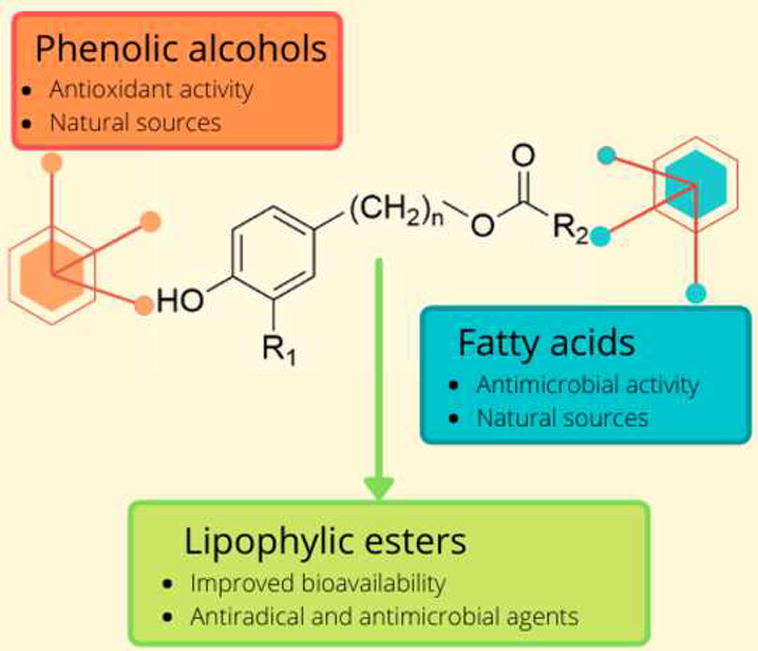 Read the publication that featured this abstract
Read the publication that featured this abstractA collection of nature-inspired lipophilic phenolic esters have been prepared by an enzymatic synthesis under flow conditions, using the immobilized lipase B from Candida antarctica (Novozyme 435®) as a catalyst in cyclopentyl methyl ether (CPME), a non-conventional and green solvent. Their antimicrobial activity against four selected bacterial strains together with their efficiency as radical scavengers were evaluated. The obtained compounds were characterized by enhanced lipophilicity in comparison with the parent non-esterified compounds, which increased the possibility of their use as additives in the food industry.
Integration of Liquid–Liquid Biphasic Flow Alkylation and Continuous Crystallization Using Taylor Vortex Flow Reactors
- Masahiro Hosoyaa
- Masashi Tanakaa
- Atsushi Manakaa
- Shogo Nishijimaa
- Naoki Tsunoa
- a API R&D Laboratory, CMC R&D Division, Shionogi and Company Ltd., 1-3, Kuise Terajima 2-chome, Amagasaki, Hyogo 660-0813, Japan
 Read the publication that featured this abstract
Read the publication that featured this abstractThis work established the integration of a continuous flow reaction and continuous crystallization using Taylor vortex flow reactors. We previously developed liquid–liquid biphasic flow alkylation using a Taylor vortex flow reactor, which is a scalable flow reactor with high mixing efficiency. To maximize the efficiency of this methodology, we evaluated process parameters and instrumental parameters, such as the rotating speed and tilt of the reactor, and optimized the reaction conditions. As a result, the throughput increased more than 20-fold compared to our previous work, and a long-run experiment verified its robustness. Liquid–liquid biphasic flow alkylation, quenching, phase separation, continuous crystallization, and filtration were integrated by using Taylor vortex flow reactors for both the flow reaction and continuous crystallization. The integrated system using two Taylor vortex flow reactors provided the alkylated product continuously from the solution of the starting material.
Cutting edge of diphenyl phosphorazidate (DPPA) as a synthetic reagent – A fifty-year odyssey
- Takayuki Shioiria
- Kotaro Ishiharaa
- and Masato Matsugia
- aFaculty of Agriculture, Meijo University, Shiogamaguchi, Tempaku, Nagoya 468- 8502, Japan
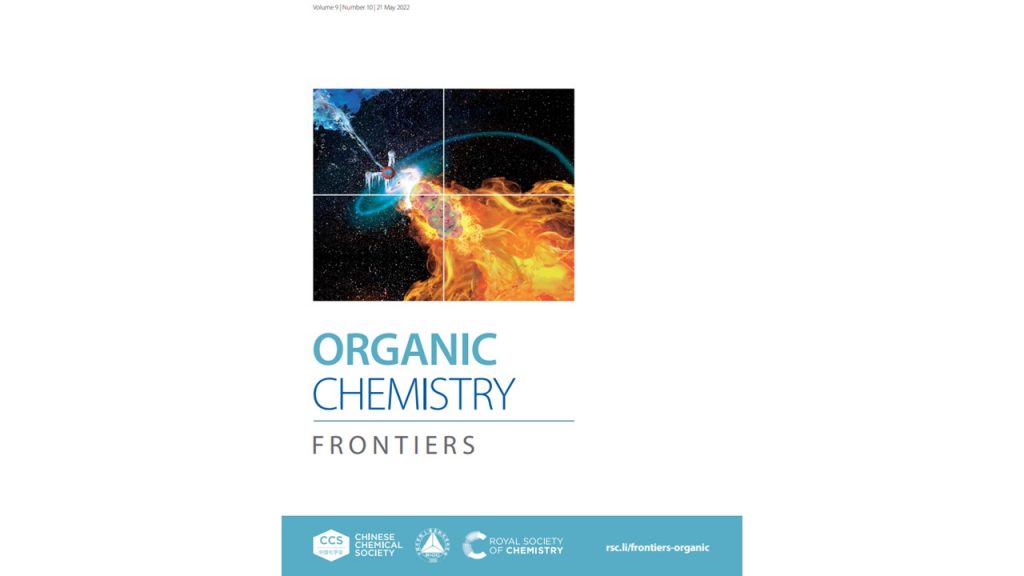 Read the publication that featured this abstract
Read the publication that featured this abstractRecent advances of diphenyl phosphorazidate (DPPA) as a versatile synthetic reagent was described. It works as an azide anion equivalent, 1,3-dipole, an electrophile, and nitrene. Thus it can be conveniently used for amide synthesis, ester synthesis, modified Curtius reaction, phosphorylation, C-acylation, azide synthesis, Pummerer rearrangement, cycloadditions, diazotization, triazoline formation, Staudinger reaction, amidine and guanidine synthesis, C-H phosphorazidation, nitrene insertion, decarbonylation, etc. 1. Introduction 2. Preparation of DPPA 3. Amides and Lactams Synthesis 4. Esterification 5. The Modified Curtius Reaction 6. O- and N-Phosphorylations 7. Oxazoles Synthesis based on C-Acylation 8. Direct Conversion of Hydroxyl Groups to Azides 8.1 The Bose-Mitsunobu Azidation 8.2 The Merck Azidation 9. Pummerer Rearrangement of Sulfoxides 10. Cycloadditions 10.1 Reaction with Enamines 10.2 Synthesis of 1,2,3-Triazoles 10.3 Synthesis of Tetrazoles 11. Reaction with Organometallics 12. Staudinger Reaction 13. Synthesis of Amidines and Guanidines 14. C-H Phosphorazidation 15. As a Nitrene Source 16. Reaction with Silylene, Germylene, and Stanylene 17. Decarbonylation 18. Dimerization of Ynamides 19. Conclusion and Outlook.
Total synthesis of phytotoxic radulanin A facilitated by the photochemical ring expansion of a 2,2-dimethylchromene in flow
- Bruce Lockett-Walters1
- Simon Thuillier1,2
- Emmanuel Baudouin2
- Bastien Nay*1
- 1Laboratoire de Synthèse Organique, Ecole Polytechnique, CNRS, Institut Polytechnique de Paris, 91128 Palaiseau, France
- 2Sorbonne Université, CNRS, Institut de Biologie Paris-Seine (IBPS), Laboratoire de Biologie du Développement, UMR7622, F-75005, Paris, France
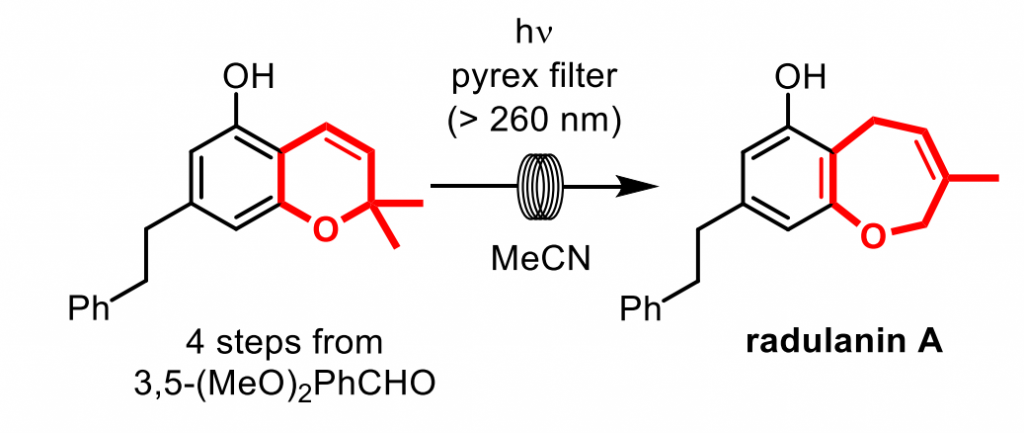 Read the publication that featured this abstract
Read the publication that featured this abstractThe radulanins are biologically active bibenzyl natural products featuring a synthetically challenging 2,5-dihydro-1-benzoxepine core. In contrast with previous reports exhibiting lengthy strategies, we demonstrate the shortest synthesis of radulanin A to date, featuring a largely unexplored photochemical ring expansion reaction of a 2,2-dimethylchromene precursor. This work was adapted to a continuous-flow setup for larger-scale preparation, in view of biological investigations into the herbicidal properties of this natural product.
An environmentally benign and high-rate Appel type reaction
- Nicolas Mattias Del Rio Fuenzalidaa
- Eirin Almea
- Frida Johanne Lundevalla
- Hans-René Bjørsvika
- aDepartment of Chemistry, University of Bergen, Allégaten 41, 5007 Bergen, Norway
 Read the publication that featured this abstract
Read the publication that featured this abstractA high rate, selective, and productive Appel type reaction was developed. The method allows for ipso-substitution of the alcoholic hydroxy group with halogens ∈ [Cl, Br, I]. The method demands mild reaction conditions that include a very short reaction time, <15 min only, versus reaction times of several hours or days using the classical Appel reaction conditions (PPh3 + CCl4 + R–OH). The method was demonstrated to operate with the cheap and easily available 1,3-dihalo-5,5-dimethylhydantoins and N-halo succinimides (halo ∈ [Cl, Br, I]) as the reagent that performs the halogenation of PPh3. The reaction protocol operated with several acceptable solvents rather than DCM that was used in the classical Appel reaction. Furthermore, the batch protocol was also translated and successfully implemented on a flow reactor platform (t < 5 min, y = 95%).
Selective Photochemical Continuous Flow Benzylic Monochlorination
- Robbie Radjagobaloua
- Miguel Imbrattab
- Julie Bergraserb
- Marion Gaudeaub
- Gildas Lyvinecb
- Dominique Delbrayelleb
- Olivier Jentzerb
- Jérémy Roudina
- Benjamin Larochea
- Stéphanie Ogniera
- Michael Tatouliana
- Janine Cossya
- Pierre-Georges Echeverriab
- aParis FLOW Tech − PSL, ENSCP, 11 rue Pierre et Marie Curie, Paris 75005, France
- bMinakem Recherche, 145 Chemin des Lilas, Beuvry-La-Forêt 59310, France
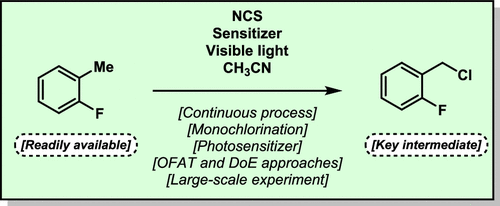 Read the publication that featured this abstract
Read the publication that featured this abstractA selective photochemical monochlorination of 2-fluorotoluene has been developed by a continuous flow process using two different flow reactors, one for the tuning of the conditions and the second one for the scale-up. The key reaction parameters were optimized using one-factor-at-a-time and design of experiment methods, with the goal of minimizing the formation of the dichlorinated by-product. This transformation has been performed on a multi decagram scale.
Continuous flow process for preparing budesonide
- Manjinder Singh Phulla,b
- Surender Singh Jadavc,d
- Chander Singh Boharab
- Rambabu Gundlaa
- Prathama S Mainkarc,d
- aDepartment of Chemistry, School of Science, GITAM (Deemed to Be University), Hyderabad, Telangana, 502329, India
- bCipla Limited Cipla House, Peninsula Business Park, Ganpatrao Kadam Marg, Lower Parel, Mumbai, 400013, India
- cDepartment of Applied Biology, CSIR-Indian Institute of Chemical Technology, Hyderabad, 500007, India
- dAcademy of Scientific and Innovative Research (AcSIR), Ghaziabad, 201002, India
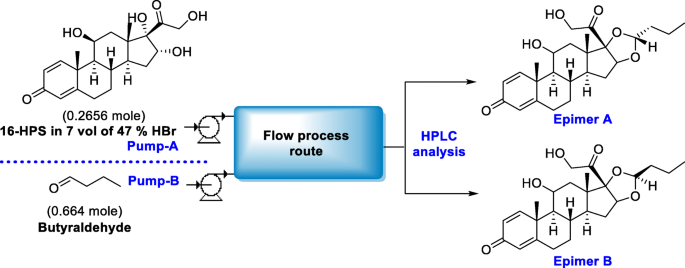 Read the publication that featured this abstract
Read the publication that featured this abstractBudesonide, a glucocorticosteroid, is used as anti-asthmatic drug that became generic in 2019. Existing preparation methods of budesonide require utilization of corrosive acids and involve expensive purification process. Thus, a new cost-effective continuous flow process for the synthesis of budesonide which belongs to the class of 16,17 acetals of pregnane core, is discussed in the present research findings. Flow reactor parameters such as flow rate, temperature, residence time, solution volumes, anti-solvents and reactor frequency are subjected to investigation on the preparation of molar ratio of budesonide epimers. Further, the suitable parameters entail for obtaining the desired molar ratio of epimers. In another aspect, particle size optimization studies are also performed to get the desired budesonide solid product. A continuous flow process for preparation of budesonide is identified from the present research investigation which can be readily transferred to industrial scale up.
Chemical Recycling of Polystyrene to Valuable Chemicals via Selective Acid-Catalyzed Aerobic Oxidation under Visible Light
- Zhiliang Huanga
- Muralidharan Shanmugamb
- Zhao Liuc
- Adam Brookfieldb
- Elliot L. Bennetta
- Renpeng Guana
- David E. Vega Herreraa
- Jose A. Lopez-Sancheza
- Anna G. Slatera
- Eric J. L. McInnesb
- Xiaotian Qi*c
- Jianliang Xiaoa
- aDepartment of Chemistry, University of Liverpool, Liverpool L69 7ZD, U.K.
- bDepartment of Chemistry and Photon Science Institute, The University of Manchester, Manchester M13 9PL, U.K.
- cEngineering Research Center of Organosilicon Compounds & Materials, Ministry of Education, College of Chemistry and Molecular Sciences, Wuhan University, Wuhan, Hubei 430072, P. R. China
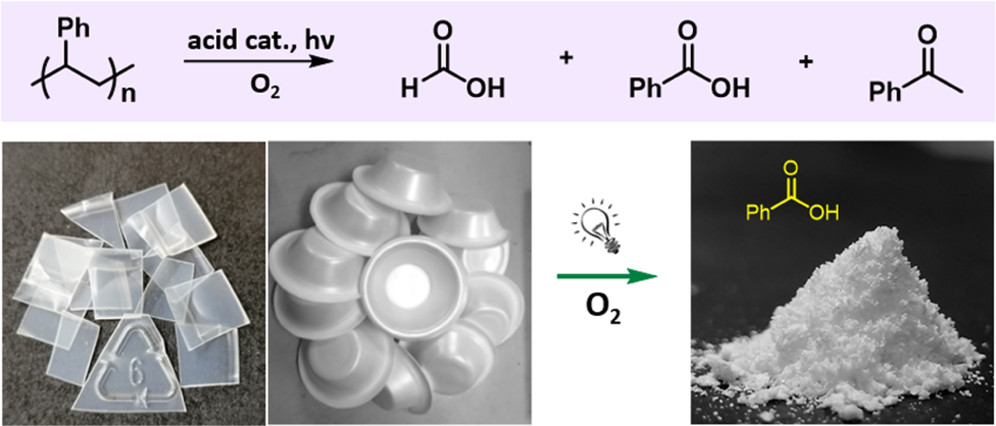 Read the publication that featured this abstract
Read the publication that featured this abstractChemical recycling is one of the most promising technologies that could contribute to circular economy targets by providing solutions to plastic waste; however, it is still at an early stage of development. In this work, we describe the first light-driven, acid-catalyzed protocol for chemical recycling of polystyrene waste to valuable chemicals under 1 bar of O2. Requiring no photosensitizers and only mild reaction conditions, the protocol is operationally simple and has also been demonstrated in a flow system. Electron paramagnetic resonance (EPR) investigations and density functional theory (DFT) calculations indicate that singlet oxygen is involved as the reactive oxygen species in this degradation process, which abstracts a hydrogen atom from a tertiary C–H bond, leading to hydroperoxidation and subsequent C–C bond cracking events via a radical process. Notably, our study indicates that an adduct of polystyrene and an acid catalyst might be formed in situ, which could act as a photosensitizer to initiate the formation of singlet oxygen. In addition, the oxidized polystyrene polymer may play a role in the production of singlet oxygen under light.
Sustainable Synthesis of Noroxymorphone via a Key Electrochemical N-Demethylation Step
- Florian Sommera,b
- Roman Gerber Aeschbacherc
- Urs Thurnheerc
- C. Oliver Kappea,b
- David Cantilloa,b
- aInstitute of Chemistry, University of Graz, NAWI Graz, Heinrichstrasse 28, 8010, Graz, Austria
- bCenter for Continuous Flow Synthesis and Processing (CCFLOW), Research Center, Pharmaceutical Engineering GmbH (RCPE), Inffeldgasse 13, 8010 Graz, Austria.
- bAZAD Pharma AG, Durachweg 15, CH-8200 Schaffhausen, Switzerland
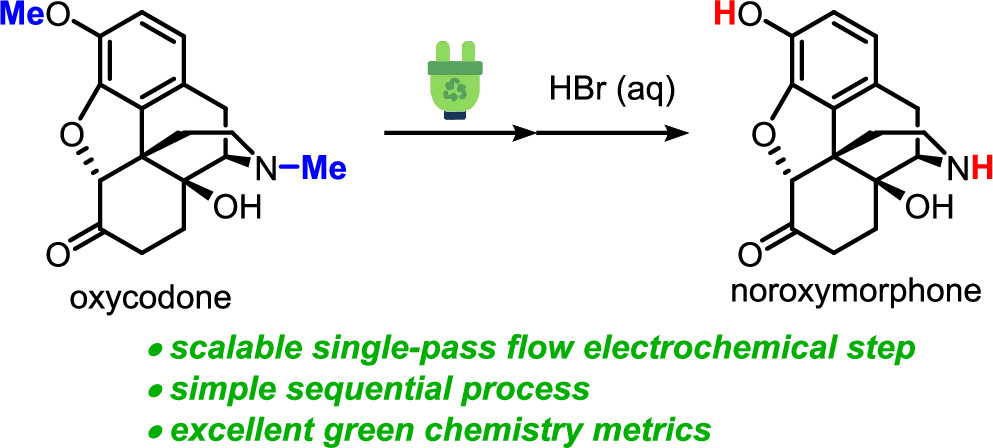 Read the publication that featured this abstract
Read the publication that featured this abstractNoroxymorphone is a pivotal intermediate in the synthesis of important opioid antagonists such as naloxone and naltrexone. The preparation of noroxymorphone from thebaine, a naturally occurring opioate isolated from poppy extract, is a multistep sequence in which oxycodone is first generated and then N- and O-demethylated. Both demethylations are problematic from the safety and sustainability viewpoint, as they involve harmful reagents such as alkyl chloroformates or boron tribromide. Herein, we present a green, safe, and efficient process for the N- and O-demethylation of oxycodone. The method is based on the anodic oxidative intramolecular cyclization of the N-methyl tertiary amine with the 14-hydroxyl group of the morphinan, followed by hydrolysis with hydrobromic acid, which releases the carbon from both heteroatoms. The electrolysis process has been transferred to a scalable flow electrolysis cell, significantly improving the reaction throughput and increasing the space-time yield over 300-fold with respect to batch. The sustainability of the new methodology has been assessed by means of green metrics and qualitative indicators. The sustainability assessment has demonstrated that the new methodology is far superior to the conventional chloroformate process.
Photocatalytic Approach to α,α-Difluoroalkyl Alcohols
- Georgii Kachkovskyia
- Marcin Cieślaka
- Piotr Graczyka
- Przemysław Zawadzkia
- Justyna Kalinowska-Tłuścikb
- Mateusz Werłosa,b
- aSelvita SA., Bobrzyńskiego 14, 30-348 Kraków, Poland
- bFaculty of Chemistry Jagiellonian University, Gronostajowa 2, 30-387 Krakow, Poland
 Read the publication that featured this abstract
Read the publication that featured this abstractA convenient approach to previously poorly accessible α,α-difluoroalkyl alcohols by visible light-mediated photocatalysis was developed. Broad scope of the transformation together with experimental simplicity and scalability using flow techniques open good prospects for further studies of properties (including biological) of these novel products.
Spheroplasts preparation boosts the catalytic potential of a terpene cyclase
Ana I. Benítez-Mateos1, Andreas Schneider2, Eimear Hegarty1, Bernhard Hauer2, Francesca Paradisi1
- 1 Department of Chemistry, Biochemistry and Pharmaceutical Sciences. University of Bern Freiestrasse 3, 3012 Bern (Switzerland)
- 2Institute of Biochemistry and Technical Biochemistry, University of Stuttgart Allmandring 31, 70569 Stuttgart-Vaihingen (Germany)
Read the publication that featured this abstractSqualene-hopene cyclases (SHCs) are a highly valuable and attractive class of membrane-bound enzymes as sustainable biotechnological tools to produce aromas and bioactive compounds at industrial scale. However, their application as whole-cell biocatalysts suffer from the outer cell membrane acting as a diffusion barrier for the highly hydrophobic substrate/product, while the use of purified enzymes leads to dramatic loss of stability. Here we present an unexplored strategy for biocatalysis: the application of SHC spheroplasts. By removing the outer cell membrane, we produced stable and substrate-accessible biocatalysts. SHC spheroplasts exhibited up to 100-fold higher activity than their whole-cell counterparts for the biotransformations of squalene, geranyl acetone, farnesol, and farnesyl acetone. Their catalytic ability was also higher than the purified enzyme for all high molecular weight terpenes. In addition, we introduce a new concept for the carrier-free immobilization of spheroplasts via crosslinking, CLS (crosslinked spheroplasts). The CLS maintained the same catalytic activity of the spheroplasts, offering additional advantages such as recycling and reuse. These timely solutions contribute not only to harness the catalytic potential of the SHCs, but also to make biocatalytic processes even greener and more cost-efficient.
Scale-Up of Diazonium Salts and Azides in a Three-Step Continuous Flow Sequence
- Hansjoerg Lehmanna
- Thomas Ruppena
- Thomas Knoepfela
- aGlobal Discovery Chemistry, Novartis Institutes for BioMedical Research, CH-4002 Basel, Switzerland
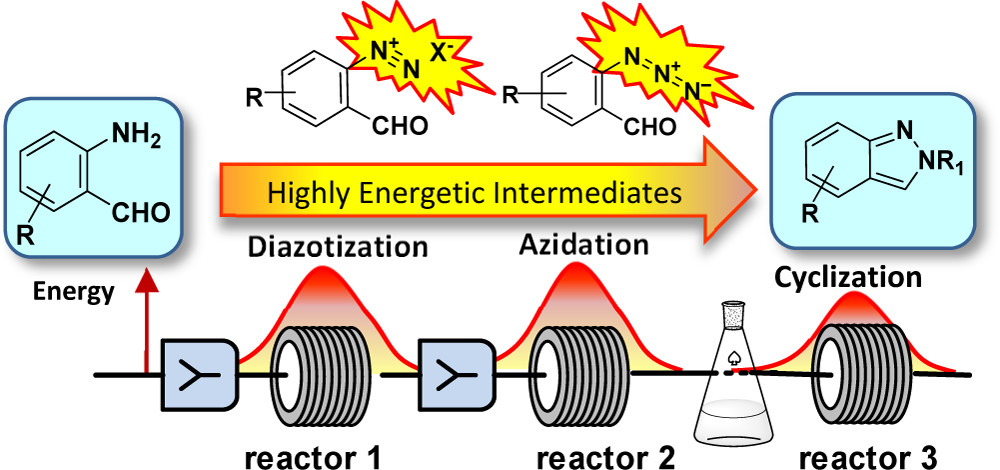 Read the publication that featured this abstract
Read the publication that featured this abstractRapid synthesis and scale-up of active molecules to support the development process of new drug candidates is key in the pharmaceutical industry. Herein, we describe the development of a scalable continuous flow procedure for three key steps in the synthesis of 2H-indazoles, which were identified as highly potent and selective TLR7 and TLR8 antagonists. Transformation of hazardous diazonium salt and azide chemistries from the batch mode to continuous flow mode helped mitigate and limit the risks associated with the handling of large amounts of hazardous reagents and intermediates in the batch mode. In a two-step approach, we first screened and optimized the reaction parameter for a diazotization─azidation─cyclization three-step sequence using a commercial research-scale plug flow reactor. In the second step, we demonstrated the robustness and scalability of this reaction sequence, which finally enabled us to rapidly prepare and deliver the required amount of material in high quality.
Quantitative and convenient real-time reaction monitoring using stopped-flow benchtop NMR
- Tristan Maschmeyera
- Lars P. E. Yunkera
- Jason E. Heina
- aDepartment of Chemistry, The University of British Columbia, Vancouver, BC V6T 1Z1, Canada
 Read the publication that featured this abstract
Read the publication that featured this abstractNuclear magnetic resonance (NMR) spectroscopy has the potential to serve as a widely applied reaction monitoring tool, particularly given the growth in commercially available benchtop NMR systems and accompanying flow cells. We herein present a stopped-flow benchtop NMR system devised of commercially available hardware components, all centrally controlled by an internally developed Python script. This system circumvents complications arising with continuous-flow NMR analyses and results in the ability to conveniently acquire quantitative reaction monitoring data. In our work, we first determine a set of 19F NMR acquisition parameters using benchtop NMR, allowing for quantitation using the absolute intensity method thereafter. This system and set of acquisition parameters are then applied to quantitatively monitor model reaction systems (via 19F NMR, 57 MHz) that are difficult to otherwise monitor due to gas evolution, use/formation of toxic reagents, and formation of species otherwise difficult to detect. These reactions include the activation of a carboxylic acid using sulfuryl fluoride (SO2F2) and the formation of a carbamate via modified Curtius rearrangement with diphenylphosphoryl azide (DPPA).
Amino Alcohols as Potential Antibiotic and Antifungal Leads
- Jennifer R. Baker1
- Peter J. Cossar1
- Mark A. T. Blaskovich2
- Alysha G. Elliott2
- Johannes Zuegg2
- Matthew A. Cooper2
- Peter J. Lewis3,4
- Adam McCluskey1
- 1Chemistry, School of Environmental & Life Sciences, The University of Newcastle, University Drive Callaghan, Newcastle, NSW 2308, Australia
- 2Community for Open Antimicrobial Drug Discovery, Centre for Superbug Solutions, Institute for Molecular Bioscience, The University of Queensland, Brisbane, QLD 4072, Australia
- 3Biology, School of Environmental & Life Sciences, The University of Newcastle, University Drive Callaghan, Newcastle, NSW 2308, Australia
- 4Molecular Horizons, School of Chemistry and Molecular Bioscience, University of Wollongong, Wollongong, NSW 2522, Australia
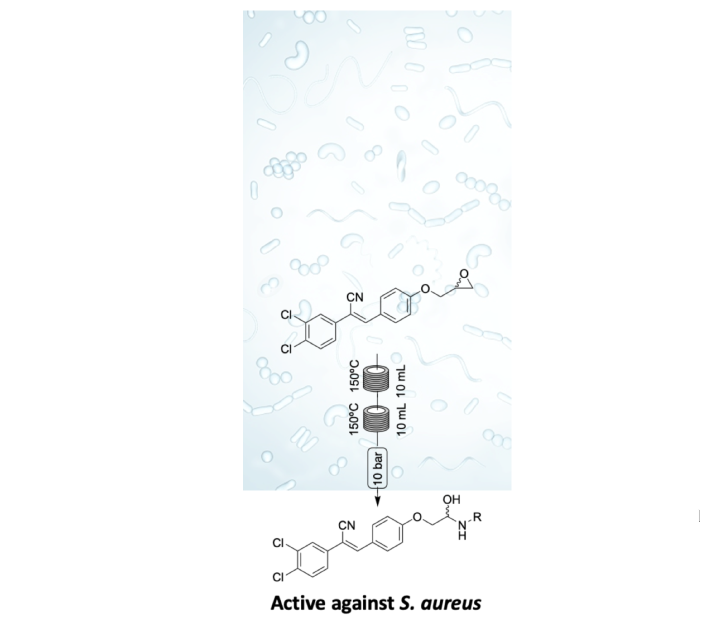 Read the publication that featured this abstract
Read the publication that featured this abstractFive focused compound libraries (forty-nine compounds), based on prior studies in our laboratory were synthesized and screened for antibiotic and anti-fungal activity against S. aureus, E. coli, K. pneumoniae, P. aeruginosa, A. baumannii, C. albicans and C. neoformans. Low levels of activity, at the initial screening concentration of 32 μg/mL, were noted with analogues of (Z)-2-(3,4-dichlorophenyl)-3-phenylacrylonitriles which made up the first two focused libraries produced. The most promising analogues possessing additional substituents on the terminal aromatic ring of the synthesised acrylonitriles. Modifications of the terminal aromatic moiety were explored through epoxide installation flowed by flow chemistry mediated ring opening aminolysis with discreet sets of amines to the corresponding amino alcohols. Three new focused libraries were developed from substituted anilines, cyclic amines, and phenyl linked heterocyclic amines. The aniline-based compounds were inactive against the bacterial and fungal lines screened. The introduction of a cyclic, such as piperidine, piperazine, or morpholine, showed >50% inhibition when evaluated at 32 μg/mL compound concentration against methicillin-resistant Staphylococcus aureus. Examination of the terminal aromatic substituent via oxirane aminolysis allowed for the synthesis of three new focused libraries of afforded amino alcohols. Aromatic substituted piperidine or piperazine switched library activity from antibacterial to anti-fungal activity with ((Z)-2-(3,4-dichlorophenyl)-3-(4-(2-hydroxy-3-(4-methylpiperazin-1-yl)propoxy)phenyl)acrylonitrile), ((Z)-2-(3,4-dichlorophenyl)-3-(4-(2-hydroxy-3-(4-(4-hydroxyphenyl)piperazin-1-yl)propoxy)-phenyl)acrylonitrile) and ((Z)-3-(4-(3-(4-cyclohexylpiperazin-1-yl)-2-hydroxypropoxy)-phenyl)-2-(3,4-dichlorophenyl)-acrylonitrile) showing >95% inhibition of Cryptococcus neoformans var. grubii H99 growth at 32 μg/mL. While (Z)-3-(4-(3-(cyclohexylamino)-2-hydroxypropoxy)phenyl)-2-(3,4-dichlorophenyl)-acrylonitrile, (S,Z)-2-(3,4-dichlorophenyl)-3-(4-(2-hydroxy-3-(piperidin-1-yl)propoxy)phenyl)acrylonitrile, (R,Z)-2-(3,4-dichlorophenyl)-3-(4-(2-hydroxy-3-(piperidin-1-yl)propoxy)phenyl)acrylonitrile, (Z)-2-(3,4-dichlorophenyl)-3-(4-(2-hydroxy-3-(D-11-piperidin-1-yl)propoxy)phenyl)-acrylonitrile, and (Z)-3-(4-(3-(4-cyclohexylpiperazin-1-yl)-2-hydroxypropoxy)-phenyl)-2-(3,4-dichlorophenyl)-acrylonitrile 32 μg/mL against Staphylococcus aureus.
Continuous-Flow Synthesis of Alkyl Zinc Sulfinates for the Direct Photofunctionalization of Heterocycles
- José Luis Nova-Fernándeza,b
- Montaña J. Garcíaa
- Leonardo Mollaria
- Gustavo Pascual-Cocab
- Silvia Cabrerac,d,e
- José Alemánad,e
- aOrganic Chemistry Department, M1, Universidad Autónoma de Madrid, 28049, Madrid, Spain.
- bSynthelia Organics Labs, C/ Faraday, 7, Labs 2.05 and 0.03, Parque Científico de Madrid, 28049, Madrid, Spain.
- cInorganic Chemistry Department, M7, Universidad Autónoma de Madrid, 28049, Madrid, Spain.
- dInstitute for Advanced Research in Chemical Sciences (IAdChem), Universidad Autónoma de Madrid, 28049, Madrid, Spain.
- eCenter for Innovation in Advanced Chemistry (ORFEO-CINQA), Universidad Autónoma de Madrid.
 Read the publication that featured this abstract
Read the publication that featured this abstractA sustainable strategy for the alkylation of heterocycles is presented. The protocol relies on the in-situ generation and further in-line use of alkyl zinc sulfinates through a continuous-flow system. The environmentally friendly character of the protocol is assured by the use of a green solvent mixture, the presence of a metal free oxidant and low waste generation.
Continuous flow Meerwein–Ponndorf–Verley reduction of HMF and furfural using basic zirconium carbonate
- Henrique Magri Marçona
- Julio Cezar Pastrea
- aInstitute of Chemistry, University of Campinas – UNICAMP, PO Box 6154, Zip Code 13083-970, Campinas, SP, Brazil
 Read the publication that featured this abstract
Read the publication that featured this abstractContinuous Flow Microreactors and Green Chemistry are areas with promising applications, especially when allied. In this scenario, the main goal of this study was to develop new strategies for the synthesis of bio-based compounds under a flow regime. We worked towards the flow synthesis of furfuryl alcohol and DHMF (dihydroxymethylfuran), from their respective aldehydes, through a Meerwein–Ponndorf–Verley reaction with iso-propanol catalysed by basic zirconium carbonate. Furfuryl alcohol was prepared in essentially quantitative yield with productivities as high as 67 mg min−1. Efforts towards DHMF synthesis were performed and the process was also optimized using design of experiments. The optimal conditions were defined for DHMF at 0.25 M and were determined to be 120 °C and 50 s of residence time, giving yields of up to 99% and productivity of 50 mg min−1. The use of a FT-IR device for the in-line continuous monitoring was pivotal for the fast optimization of the processes, securing steady-state operations, and design of experiments ensured a greater understanding of the effect of temperature, residence time and concentration, alongside their interactions in yield, selectivity and productivity.
“Green Is the Color”: An Update on Ecofriendly Aspects of Organoselenium Chemistry
- Juliano B. Azeredo1
- Filipe Penteado2
- Vanessa Nascimento3
- Luca Sancineto4
- Antonio L. Braga5
- Eder João Lenardao2
- Claudio Santi4
- 1Programa de Pós-Graduação em Ciências Farmacêuticas, Universidade Federal do Pampa, Uruguaiana, Uruguaiana 97501-970, RS, Brazil
- 2Laboratório de Síntese Orgânica Limpa-LaSOL-CCQFA, Universidade Federal de Pelotas-UFPel, P.O. Box 354, Pelotas 96010-900, RS, Brazil
- 3Laboratório SupraSelen, Departamento de Química Orgânica, Instituto de Química, Campus do Valonguinho, Universidade Federal Fluminense, Niteroi 24020-150, RJ, Brazil
- 4Group of Catalysis Synthesis and Organic Green Chemistry, Department of Pharmaceutical Sciences, University of Perugia, Via del Liceo 1, 06100 Perugia, Italy
- 5Departamento de Química, Universidade Federal de Santa Catarina—UFSC, Florianopolis 88040-900, SC, Brazil
 Read the publication that featured this abstract
Read the publication that featured this abstractOrganoselenium compounds have been successfully applied in biological, medicinal and material sciences, as well as a powerful tool for modern organic synthesis, attracting the attention of the scientific community. This great success is mainly due to the breaking of paradigm demonstrated by innumerous works, that the selenium compounds were toxic and would have a potential impact on the environment. In this update review, we highlight the relevance of these compounds in several fields of research as well as the possibility to synthesize them through more environmentally sustainable methodologies, involving catalytic processes, flow chemistry, electrosynthesis, as well as by the use of alternative energy sources, including mechanochemical, photochemistry, sonochemical and microwave irradiation.
An electrochemical γ-C–H arylation of amines in continuous flow
- José A.Fornia
- Milena L.Czyza
- David W.Luptonb
- Anastasios Polyzosa,c
- aSchool of Chemistry, The University of Melbourne, Parkville 3010, Victoria, Australia
- bSchool of Chemistry, Monash University, Clayton 3800, Victoria, Australia
- cCSIRO Manufacturing, Research Way, Clayton VIC 3168, Australia
 Read the publication that featured this abstract
Read the publication that featured this abstractReported here is a regioselective C(sp3)–C(sp2) cross coupling reaction between inert γ-C(sp3)–H bonds in aliphatic amines and cyanoarenes under electrochemical conditions in flow. The developed methodology takes advantage of a removable redox active auxiliary, which triggers selective 1,7-hydrogen atom transfer to functionalise an aliphatic C–H bond at the γ-position of an alkyl amine. In this reaction, a cyanoarene radical anion functions as both a selective arylating reagent and a redox active mediator, enabling the controlled one electron reduction of the redox active auxiliary. This strategy offers a new approach towards γ-C(sp3)–H bond functionalisation allowing generation of, amongst others, sterically crowded carbon centres under mild reaction conditions and in the absence of additional catalysts or radical initiators.
Chip-Scale Solar-Thermal-Electrical Power Generation
- Zhihang Wang1
- Zhenhua Wu2
- Zhiyu Hu2
- Jessica Orrego-Hernandez1
- Erzhen Mu3
- Zhao-Yang Zhang4
- Martyn Jevric1
- Yang Liu2
- Xuecheng Fu5
- Fengdan Wang5
- Tao Li4
- Kasper Moth-Poulsen1
- 1Chalmers University of Technology - Department of Chemistry and Chemical Engineering
- 2Shanghai Jiao Tong University (SJTU) - National Key Laboratory of Science and Technology on Micro/Nano Fabrication
- 3Henan Polytechnic University - School of Materials Science and Engineering
- 4Shanghai Jiao Tong University (SJTU) - Shanghai Key Laboratory of Electrical Insulation and Thermal Aging
- 5Shanghai Jiao Tong University (SJTU) - Center for Advanced Electronic, Materials and Devices (AEMD)
 Read the publication that featured this abstract
Read the publication that featured this abstractElectricity derived from photovoltaics is limited by solar intermittency. Storing solar energy for on-demand power production could address this challenge. Here, we combined both solution- and neat film-based molecular solar thermal (MOST) systems, where solar energy can be stored as chemical energy and released as heat, with microfabricated thermoelectric generators (MEMS-TEG) to produce electricity when solar radiation is not available. The novel small-scale hybrid integrated devices demonstrated continuous power densities of up to 1.3 W·m-3 by storing solar energy in Sweden then releasing heat and generating electricity in China. Our results show that, the proof-of-principle on a small scale and independent of time and geographical restrictions, opportunities exist for local solar energy storage and power production beyond traditional photovoltaic-electrochemical cell technologies.
A continuous-flow protocol for photoredox-catalyzed multicomponent Petasis reaction
- Monica Oliva1
- Frederick Martens1
- Erik V.Van der Eycken1,2
- Upendra Kumar Sharma1
- 1Laboratory for Organic & Microwave-Assisted Chemistry (LOMAC), Department of Chemistry, KU Leuven, Celestijnenlaan 200F, 3001 Leuven, Belgium
- 2Peoples’ Friendship University of Russia (RUDN University), Miklukho-Maklaya street 6, Moscow 117198, Russia
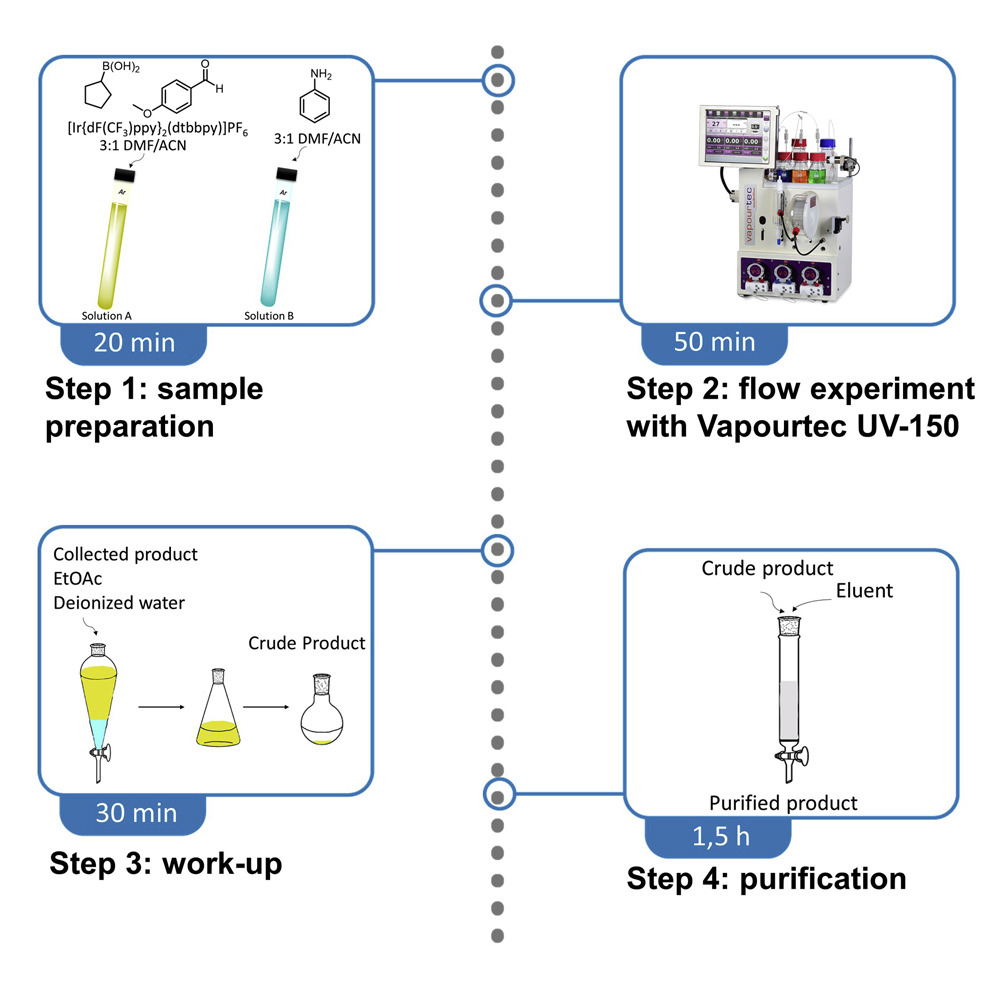 Read the publication that featured this abstract
Read the publication that featured this abstractHere, we present a robust protocol for the facile and rapid synthesis of functionalized secondary amines in continuous flow. More specifically, we describe a detailed guide to perform a photocatalyzed Petasis reaction within 50 min using alkyl boronic acid as radical precursor and a Vapourtec E-series as key equipment. The desired functionalized amine has been synthesized in mmol scale and with a productivity rate of 0.2 mmol/h. The protocol is limited to alkyl boronic acids.
Continuous-Flow Preparation of Benzotropolones: Combined Batch and Flow Synthesis of Epigenetic Modulators of the (JmjC)-Containing Domain
- Dr. José A. Soutoa
- aDepartamento de Química Orgánica, Facultade de Química, Centro de Investigacións Biomédicas (CINBIO) and IIS Galicia Sur., Universidade de Vigo, 36310 Vigo, Spain
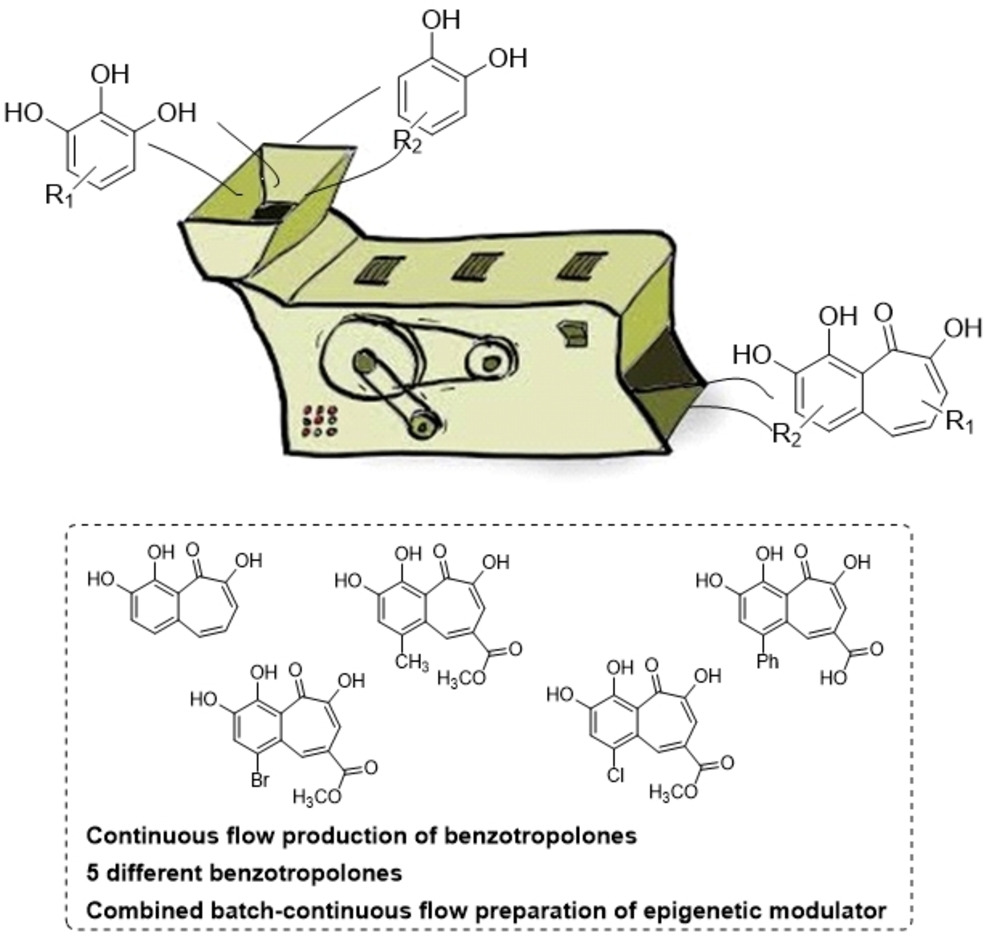 Read the publication that featured this abstract
Read the publication that featured this abstractA continuous flow synthetic protocol for the preparation of benzotropolones, and further derivatization to yield a recently described inhibitor of (JmjC)-containing domain enzymes is described. Our procedure renders the desired compound in an efficient and reproducible manner and paves the way towards the preparation of higher amounts of the product, needed for more extensive biological studies.
Continuous flow synthesis of Celecoxib from 2-bromo-3,3,3-trifluoropropene
- Maria Ivanova1
- Julien Legros1
- Thomas Poisson1,2
- Philippe Jubault1
- 1INSA Rouen, CNRS, UNIROUEN, COBRA, Normandie Univ, 76000 Rouen, France
- 2Institut Universitaire de France, 1 Rue Descartes, 75231 Paris, France
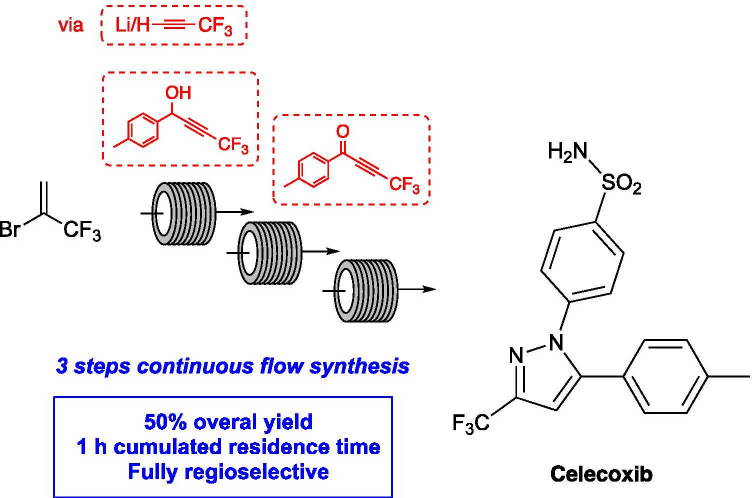 Read the publication that featured this abstract
Read the publication that featured this abstractWe describe the total flow synthesis of the widely prescribed anti-inflammatory COX-2 inhibitor Celecoxib from 2-bromo-3,3,3-trifluoropropene, as a convenient and available trifluoromethyl building block, to generate trifluoropropynyl lithium and to trap it immediately with an aldehyde. Oxidation of the obtained alcohol into ketone followed by condensation with 4-sulfamidophenylhydrazine afforded the targeted drug with full regioselectivity. It is noteworthy that the quality of these flow reactions (50% overall yield within 1 h cumulated residence time over 3 steps) directly furnished the target API and intermediates with excellent purity.
Scalable Synthesis of Norbornadienes via in situ Cracking of Dicyclopentadiene Using Continuous Flow Chemistry
- Jessica Orrego-Hernández[a]
- Helen Hölzel[a]
- Maria Quant[a]
- Zhihang Wang[a]
- KasperMoth-Poulsen[a]
- [a]Departmentof Chemistry and Chemical Engineering, Chalmers University of Technology, Kemigården4, 412 96 Gothenburg, Sweden
 Read the publication that featured this abstract
Read the publication that featured this abstractThe norbornadiene (NBD)-quadricyclane (QC) photoswitch has recently attracted attention due to its use in molecular solar thermal energy systems (MOST). Normally for device testing, several grams are needed. One way of synthesizing NBDs efficiently is through the Diels-Alder reaction between alkynes and cyclopentadiene. However, scaling up the reaction can be troublesome in a research lab environment. Also, dicyclopentadiene needs cracking before utilization which is a time-consuming step. Here, we developed a method where we both scale up the synthesis in a single reaction step that involves both in situ cracking of dicyclopentadiene and the direct reaction of cyclopentadiene with acetylene derivatives using a tubular coiled stainless steel flow reactor. As a proof-of-concept, we synthesized six different NBD compounds and scaled the synthesis to produce 87 g of a novel NBD in 9 h. The NBD is further characterized, showing promising properties for MOST applications. Our new method shows that flow chemistry is an attractive technique for the fast and efficient synthesis of large quantities of NBDs, needed to develop future real-life devices and applications.
Photoredox Iridium–Nickel Dual Catalyzed Cross-Electrophile Coupling: From a Batch to a Continuous Stirred-Tank Reactor via an Automated Segmented Flow Reactor
- Rohit Duvadiea
- Alexander Pombergerb
- Yiming Mob
- Erhan I. Altinogluc
- Hsiao-Wu Hsieha
- Kakasaheb Y. Nandiwalea
- Victor L. Schultzb
- Klavs F. Jensenb
- Richard I. Robinsona
- aGlobal Discovery Chemistry, Novartis Institutes for Biomedical Research, 250 Massachusetts Avenue, Cambridge, Massachusetts 02139, United States
- bDepartment of Chemical Engineering, Massachusetts Institute of Technology, 77 Massachusetts Avenue, Cambridge, Massachusetts 02139, United States
- cChemical and Pharmaceutical Profiling, Novartis Global Drug Development, 700 Main Street South, Cambridge, Massachusetts 02139, United States
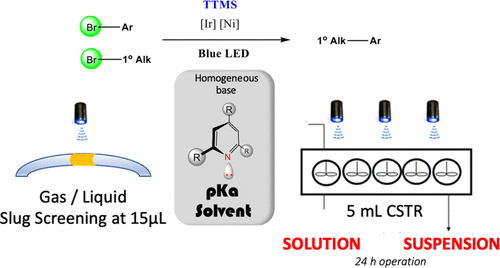 Read the publication that featured this abstract
Read the publication that featured this abstractOrganic reaction optimization for batch to flow transfer represents a main challenge for process chemists in drug synthesis. Several factors such as reactant concentration, residence/reaction time, or homo-/heterogeneity need to be taken into consideration during the fine-tuning of reaction conditions toward typical scale-up goals, such as high space–time yield. Herein, we present reaction optimization for photoredox iridium–nickel dual catalyzed cross-electrophile coupling with a focus on developing homogeneous starting conditions. During the screening, special attention was put on the replacement of inorganic bases with homogeneous organic bases, and the effect of pKa on the reaction yield was investigated. Screening was conducted via an automated segmented flow reactor at 15 μL scale, and subsequentially, the conditions were transferred to a 5 mL photo-continuous stirred-tank reactor (CSTR) cascade to demonstrate multigram continuous flow synthesis during a 24 h steady operation.
Optimizing the Performance of the Meso-Scale Continuous-Flow Photoreactor for Efficient Photocatalytic CO2 Reduction with Water Over Pt/TiO2/RGO Composites
- Samar Nabila
- Elsayed A. Shalabya
- Marwa F. Elkadyb,c
- Yoshihisa Matsushitad
- Ahmed H. El-Shazlyb,e
- aDepartment of Environmental Studies, Institute of Graduate Studies and Research, Alexandria University, Alexandria, 21526, Egypt
- bChemical and Petrochemicals Engineering Department, Egypt-Japan University of Science and Technology, Alexandria, 21934, Egypt
- cFabrication Technology Department, Advanced Technology and New Materials Research Institute (ATNMRI), City of Scientific Research and Technological Applications, Alexandria, Egypt
- dEgypt-Japan University of Science and Technology, 179 New Borg El‐Arab, Alexandria, 21934, Egypt
- eChemical Engineering Department, Faculty of Engineering, Alexandria University, Alexandria, 21544, Egypt
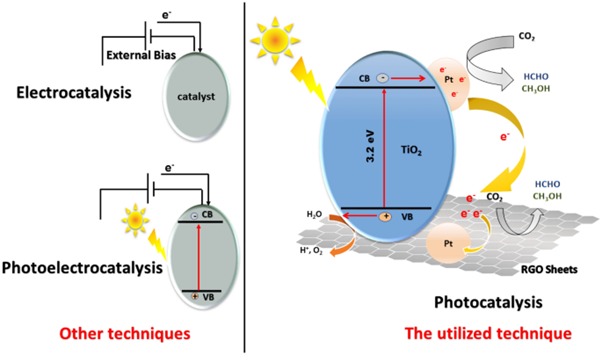 Read the publication that featured this abstract
Read the publication that featured this abstractTuning the reaction parameters to maximize products yield is one of the major needs for any process. The goal of this research is to increase the reduction of CO2 with water by examining the operating parameters of a meso-scale continuous-flow type photochemical reactor over hydrothermally synthesized photocatalysts such as Pt/TiO2 and Pt/TiO2/RGO. Effects of catalyst type, weight of catalyst utilized, photochemical reactor temperature, retention time by variating the liquid water flow rate, and cocatalyst loading were investigated to increase the concentration of total organic carbon compounds including HCHO and CH3OH. The effect of titanium dioxide phase ratio (anatase: rutile) presence at the Pt/TiO2/RGO photocatalysts was also studied. The results revealed that the 0.3 wt.% Pt/TiO2/RGO5% photocatalyst which includes a phase ratio of 81:19 for anatase: rutile respectively has the superior photocatalytic activity to other studied photocatalysts. The physciochemical properties of different prepared photocatalytic samples were determined using various characterization techniques. Analyzing the liquid products on gas chromatography, it was found that CH3OH represents the major product whereas HCHO was the minor one. This reactor exhibits a great performance towards CO2 photocatalytic reduction under the optimized conditions.
From Platform to Knowledge Graph: Evolution of Laboratory Automation
- Jiaru Baia
- Liwei Caoa
- Sebastian Mosbacha,b
- Jethro Akroyda,b
- aDepartment of Chemical Engineering and Biotechnology, University of Cambridge, Philippa Fawcett Drive, Cambridge CB3 0AS, United Kingdom
- bCambridge Centre for Advanced Research and Education in Singapore (CARES), CREATE Tower #05-05, 1 Create Way, 138602 Singapore
- cCambridge Centre for Advanced Research and Education in Singapore (CARES), CREATE Tower #05-05, 1 Create Way, 138602 Singapore
- dThe Alan Turing Institute, London NW1 2DB, United Kingdom
 Read the publication that featured this abstract
Read the publication that featured this abstractHigh-fidelity computer-aided experimentation is becoming more accessible with the development of computing power and artificial intelligence tools. The advancement of experimental hardware also empowers researchers to reach a level of accuracy that was not possible in the past. Marching toward the next generation of self-driving laboratories, the orchestration of both resources lies at the focal point of autonomous discovery in chemical science. To achieve such a goal, algorithmically accessible data representations and standardized communication protocols are indispensable. In this perspective, we recategorize the recently introduced approach based on Materials Acceleration Platforms into five functional components and discuss recent case studies that focus on the data representation and exchange scheme between different components. Emerging technologies for interoperable data representation and multi-agent systems are also discussed with their recent applications in chemical automation. We hypothesize that knowledge graph technology, orchestrating semantic web technologies and multi-agent systems, will be the driving force to bring data to knowledge, evolving our way of automating the laboratory.
Continuous flow technology-a tool for safer oxidation chemistry
- Li Wana
- Meifen Jianga
- Dang Chenga
- Minjie Liua
- Fener Chen*ab
- aEngineering Center of Catalysis and Synthesis for Chiral Molecules, Department of Chemistry, Fudan University, Shanghai 200433, China
- bShanghai Engineering Center of Industrial Asymmetric Catalysis for Chiral Drugs, Shanghai 200433, China
 Read the publication that featured this abstract
Read the publication that featured this abstractThe oxidation reaction is one of the most important transformations in synthetic chemistry, allowing for the introduction and modification of various functional groups. Continuous flow chemistry involving the use of channels or tubing to conduct a reaction has received a remarkable amount of attention in academia and industry. The technology provides reduced reaction times, higher selectivities, straightforward scalability, and the possibility to safely use hazardous intermediates and gaseous reactants. This review presents an up-to-date overview of oxidation chemistry using various oxidants in continuous flow microreactors. In addition, the advantages of using molecular oxygen as the most environmentally benign oxidant in photochemistry and biochemistry are discussed.
Continuous Flow Synthesis of a Blocked Polyisocyanate: Process Intensification, Reaction Monitoring Via In-Line FTIR Analysis, and Comparative Life Cycle Assessment
- Gabriel Glotza,b
- Katharina Wanieka,c
- Josef-Peter Schögglc
- David Cantilloa,b
- Clemens Stuecklerd
- Anton Arztd
- Andreas Gollnerd
- Rudolf Schipferd
- Rupert J. Baumgartnerc
- C. Oliver Kappea,b
- aInstitute of Chemistry, NAWI Graz, University of Graz, Heinrichstrasse 28, A-8010 Graz, Austria
- bCenter for Continuous Flow Synthesis and Processing (CCFLOW), Research Center Pharmaceutical Engineering GmbH (RCPE), Inffeldgasse 13, 8010 Graz, Austria
- cChristian Doppler Laboratory for Sustainable Product Management, Institute of Systems Sciences, Innovation and Sustainability Research, University of Graz, Merangasse 18/I, 8010 Graz, Austria
- dAllnex Austria GmbH, Bundesstrasse 175, 8402 Werndorf, Austria
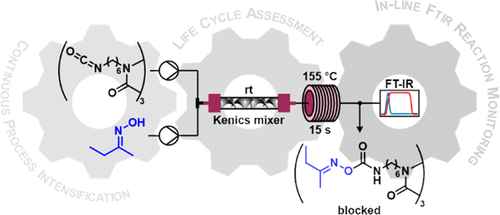 Read the publication that featured this abstract
Read the publication that featured this abstractThe traditional batch production of blocked polyisocyanates, key components in the preparation of self-cross-linking resins, has significant drawbacks associated with the exothermic character of the reaction and the high viscosity of some of the materials involved. We have developed a continuous flow strategy for the generation of a methyl ethyl ketoxime-blocked polyisocyanate. The neat oxime and the viscous polyisocyanate were pumped and mixed in continuous flow using a Kenics static mixer. The homogeneous mixture obtained was fully converted to the target blocked polyisocyanate in a residence time unit downstream of the mixer. Real-time reaction monitoring, via in-line Fourier-transform infrared analysis at the reactor outlet, has been implemented, enabling fast optimization of the reaction conditions and providing a sensitive and reliable method to control product quality. The process has been intensified in flow by stepwise increase of the temperature of the residence time unit. Full conversion after only 15 s of overall residence time has been achieved at 155 °C, providing a productivity of ca. 1 kg per hour for a reactor of only 4.5 mL volume. The ecological impacts of a conceptualized upscaled flow process compared to the industrial batch procedure have been evaluated by a comparative life cycle assessment (LCA) according to the ISO 14040/44 LCA framework. The LCA results illustrate the capabilities of continuous processing to enable more sustainable production of blocked polyisocyanates.
Towards 4th industrial revolution efficient and sustainable continuous flow manufacturing of active pharmaceutical ingredients
- Cloudius R. Sagandiraa
- Sinazo Nqeketoa
- Kanyisile Mhlanaa
- Thembela Sontia
- Sibongiseni Gaqaa
- Paul Watts*a
- aNelson Mandela University, University Way, Port Elizabeth, South Africa
 Read the publication that featured this abstract
Read the publication that featured this abstractContinuous flow chemistry has opened a new paradigm in both the laboratory and pharmaceutical industry. This review details the recently reported literature on continuous multistep telescoped synthesis of active pharmaceutical ingredients (APIs), inline flow downstream processing, in-process monitoring by process analytical technology (PAT) in flow, flow automation and artificial intelligence (AI) and robotics. We envisage that the integration of all these techniques can ensure an ‘ideal’ smart and efficient 21st century API chemical process that dramatically improves efficiency, agility, quality and flexibility in the manufacturing of pharmaceuticals.
Flow-Assisted Synthesis of Alkyl Citrate Natural Products
- Nikolai Piers Rossouwa
- Mark A. Rizzacasa*a
- Anastasios Polyzos*a,b
- aSchool of Chemistry, The University of Melbourne, Parkville 3010, Victoria, Australia
- bCSIRO Manufacturing, Research Way, Clayton 3168, Victoria, Australia
 Read the publication that featured this abstract
Read the publication that featured this abstractThe development of a flow-assisted synthesis of alkyl citrate natural products is described. The flow route harnesses a number of steps including the generation of ketene silyl acetal, a formal [2 + 2] cycloaddition, and a methanolysis cascade to efficiently generate a highly substituted, and stereodefined tetrahydrofuran intermediate. A heterogeneous pseudo-Finkelstein reaction and zinc-mediated elimination furnish a key alkene alkyl citrate fragment in high yield over a multistep sequence that provides direct entry to compounds such as (−)-CJ-13982 (1), (−)-CJ-13,981 (2), L-731,120 (3), and related natural products. The flow methodology developed in this study enables a new machine-assisted approach toward the efficient and scalable synthesis of the alkyl citrate family of natural products.
Continuous Flow Acylation of (Hetero)aryllithiums with Polyfunctional N,N-Dimethylamides and Tetramethylurea in Toluene
- Dimitrije Djukanovica
- Benjamin Heinza
- Dr. Francesca Mandrellib
- Dr. Serena Mostardab
- Dr. Paolo Filipponib
- Dr. Benjamin Martinb
- Prof. Dr. Paul Knochela
- aDepartment Chemie, Ludwig-Maximilians-Universität München, Butenandtstraße 5–13, Haus F, 81377 Munich, Germany
- bNovartis Pharma AG, Chemical Development Fabrikstraße, 4002 Basel, Switzerland
 Read the publication that featured this abstract
Read the publication that featured this abstractN,N-Dimethylamides for continuous flow acylations: A new acylation of (hetero)aryllithiums with polyfunctional and enolizable N,N-dimethylamides in toluene in continuous flow was reported. The required lithium species was prepared at 25 °C from (hetero)aryl bromides and sec-BuLi in toluene. Additionally, a new telescoped procedure, using tetramethylurea as C1-building block, was described providing highly functionalized unsymmetrical ketones.
In Situ Investigation of Multicomponent MOF Crystallization during Rapid Continuous Flow Synthesis
- Brandon Hea,b
- Lauren K. Macreadiec,d
- James Gardinerb
- Shane G. Telferd
- Matthew R. Hill*a,b
- aDepartment of Chemical Engineering, Monash University, Clayton, VIC 3800, Australia
- bCSIRO Private Bag 10, Clayton South, VIC 3169, Australia
- c,School of Chemistry, University of Sydney, Sydney, NSW 2006, Australia
- dMacDiarmid Institute for Advanced Materials and Nanotechnology Institute of Fundamental Sciences, Massey University, Palmerston North 4442, New Zealand
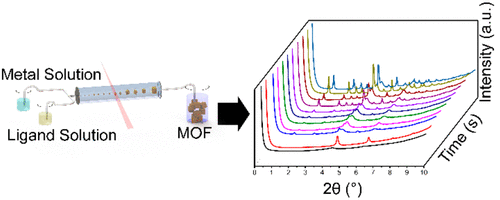 Read the publication that featured this abstract
Read the publication that featured this abstractAccess to the potential applications of metal–organic frameworks (MOFs) depends on rapid fabrication. While there have been advances in the large-scale production of single-component MOFs, rapid synthesis of multicomponent MOFs presents greater challenges. Multicomponent systems subjected to rapid synthesis conditions have the opportunity to form separate kinetic phases that are each built up using just one linker. We sought to investigate whether continuous flow chemistry could be adapted to the rapid formation of multicomponent MOFs, exploring the UMCM-1 and MUF-77 series. Surprisingly, phase pure, highly crystalline multicomponent materials emerge under these conditions. To explore this, in situ WAXS was undertaken to gain an understanding of the formation mechanisms at play during flow synthesis. Key differences were found between the ternary UMCM-1 and the quaternary MUF-7, and key details about how the MOFs form were then uncovered. Counterintuitively, despite consisting of just two ligands UMCM-1 proceeds via MOF-5, whereas MUF-7 consists of three ligands but is generated directly from the reaction mixture. By taking advantage of the scalable high-quality materials produced, C6 separations were achieved in breakthrough settings.
Automated Synthesis of Chondroitin Sulfate Oligosaccharides
- Chien-Fu Lianga
- Heung Sik Hahma,b
- Narayana Murthy Sabbavarapu
- Peter H. Seeberger
- aDepartment of Biomolecular Systems, Max Planck Institute of Colloids and Interfaces, Potsdam, Germany
- bDepartment of Chemistry and Biochemistry, Freie Universität Berlin, Berlin, Germany
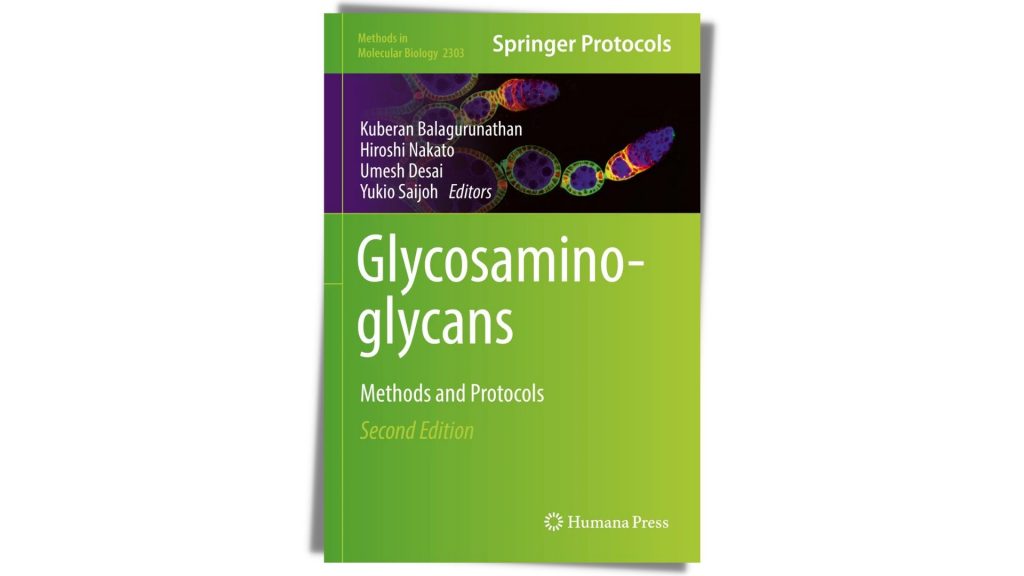 Read the publication that featured this abstract
Read the publication that featured this abstractGlycosaminoglycans (GAGs) are important sulfated carbohydrates prevalently found in the extracellular matrix that serve many biological functions. The synthesis of structurally diverse but defined GAGs is extremely challenging as one has to account for the various sulfation patterns. Described is the automated synthesis of chondroitin sulfate hexasaccharides on a solid support equipped with a photolabile linker. The linker cleavage from the resin is performed in a continuous-flow photoreactor under chemically mild conditions. This approach serves as a general scheme to access oligosaccharides of all GAG families.
Biocatalyzed Synthesis of Vanillamides and Evaluation of Their Antimicrobial Activity
- Cecilia Pinna1
- Piera Anna Martino2
- Gabriele Meroni2
- Valerio Massimo Sora2
- Lucia Tamborini3
- Sabrina Dallavalle1
- Martina L. Contente*1
- Andrea Pinto1
- 1Department of Food, Environmental and Nutritional Sciences (DeFENS), University of Milan, via Celoria 2, 20133 Milan, Italy
- 2Department of Biomedical, Surgical and Dental Sciences (DSBCO), One Health Unit, University of Milan, via Pascal 36, 20133 Milan, Italy
- 3Department of Pharmaceutical Sciences (DISFARM), University of Milan, via Mangiagalli 25, 20133 Milan, Italy
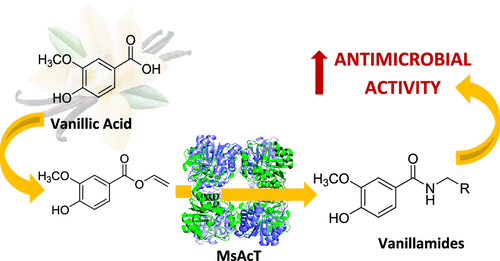 Read the publication that featured this abstract
Read the publication that featured this abstractA series of vanillamides were easily synthesized, exploiting an acyltransferase from Mycobacterium smegmatis (MsAcT). After their evaluation as antimicrobial agents against a panel of Gram-positive and Gram-negative bacteria, three compounds were demonstrated to be 9-fold more effective toward Pseudomonas aeruginosa than the vanillic acid precursor. Taking into consideration the scarce permeability of the Gram-negative bacteria cell envelope when compared to Gram-positive strains or yeasts, these molecules can be considered the basis for the generation of new nature-inspired antimicrobials. To increase the process productivity and avoid any problem related to the poor water solubility of the starting material, a tailored flow biocatalyzed strategy in pure toluene was set up. While a robust immobilization protocol exploiting glyoxyl-agarose was employed to increase the stability of MsAcT, in-line work-up procedures were added downstream the process to enhance the system automation and reduce the overall costs.
Multi-gram preparation of cinnamoyl tryptamines as skin whitening agents through a chemo-enzymatic flow process
- David Roura Padrosaa
- Martina L. Contenteb
- aDepartment of Chemistry, Biochemistry and Pharmaceutical Sciences, University of Bern, Freiestrasse 3, 3012 Bern, Switzerland
- bDepartment of Food, Environmental and Nutritional Sciences (DeFENS), University of Milan, via Celoria 2, 20133, Milan, Italy
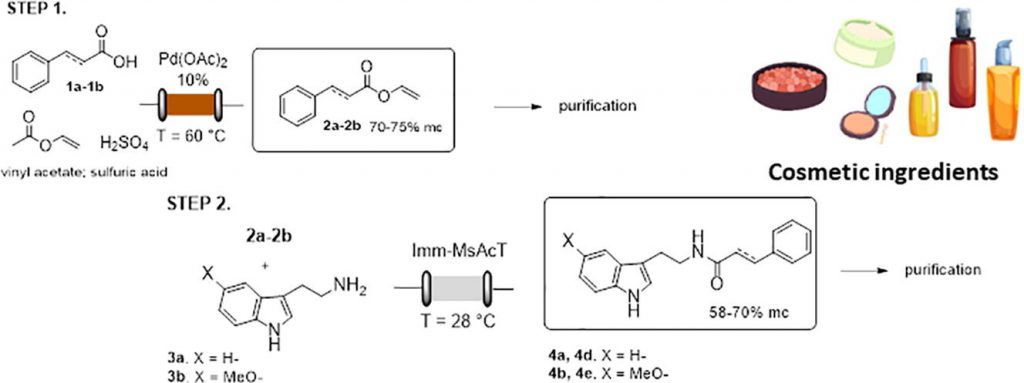 Read the publication that featured this abstract
Read the publication that featured this abstractA 2-step flow-based chemo-enzymatic synthesis of selected cinnamoyl tryptamines as potential cosmetic ingredients has been developed. A first reaction catalyzed by immobilized Pd(OAc)2 gave the acyl donors employed as starting material in the second step, with very good yields (67–70%) and rapid reaction times (30 min). A second bioreactor made of imm-MsAcT, a glyoxyl-agarose immobilized acyl transferase from Mycobacterium smegmatis, was employed for the fast and efficient preparation of the desired amides (58–70% m.c., 15 min). In-line work-up allowing for the recovery and reuse of the unreacted substrates was added downstream the process, enhancing its automation. The combination of flow facilities, high substrate-to-catalyst ratio and closed-loop strategies make this methodology a sustainable and cost-effective procedure. Computational studies were carried out to provide insights into the enzymatic active site and substrate recognition.
Flow Chemistry as an Enabling Technology for Synthetic Organic Chemistry
- Nicholas E. Leadbeater
- Department of Chemistry, University of Connecticut, Storrs, USA
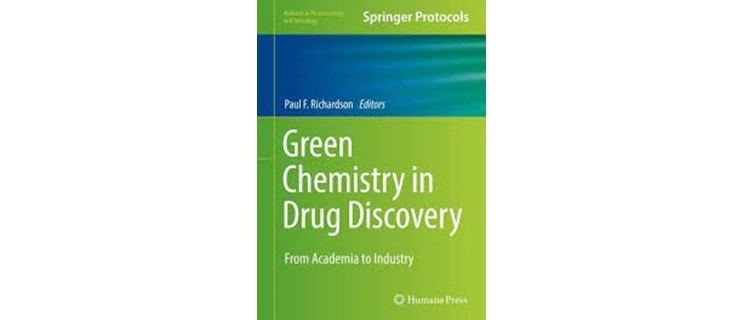 Read the publication that featured this abstract
Read the publication that featured this abstractContinuous-flow processing is proving to be an enabling technology for synthetic organic chemists. After an introduction to the advantages and disadvantages of flow processing and an overview of the equipment currently available, the use of flow chemistry in a range of avenues of organic chemistry is showcased. Attention is focused on areas such as hazardous transformations, multistep synthesis, photochemistry, electrochemistry, and organocatalysis. The scope of the chapter is also broadened to techniques used for monitoring flow processes and the incorporation of flow chemistry into the undergraduate teaching laboratory.
Synthesis and chemical reactions of thieno[3,2-c]quinolines from arylamine derivatives, part (V): a review
- Ameen A. Abu-Hashema, b
- A. B. A. El-Gazzara
- Ahmed A. M. Abdelgawadb, c
- Moustafa A. Goudad, e
- aPhotochemistry Department (Heterocyclic Unit), National Research Centre, Dokki, Giza, Egypt
- bChemistry Department, Faculty of Science, Jazan University, Jazan, Saudi Arabia
- cMedicinal and Aromatic Plants Department, Desert Research Center, Cairo, Egypt
- dDepartment of Chemistry, Faculty of Science and Arts, Taibah University, Ulla, Medina, Saudi Arabia
- eDepartment of Chemistry, Faculty of Science, Mansoura University, Mansoura, Egypt
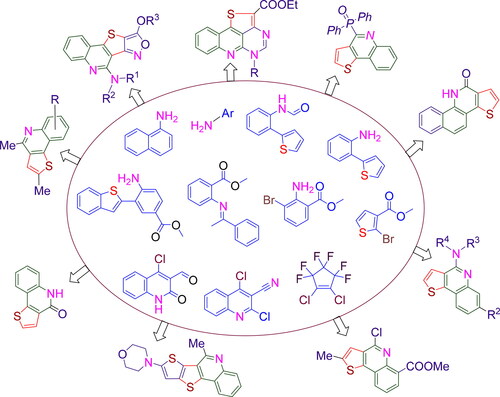 Read the publication that featured this abstract
Read the publication that featured this abstractThis review describes the procedures for the synthesis of thieno[3,2-c]quinoline derivatives by use of the following reagents and aryl-amine derivatives as starting material, and the chemical reactions of the resulting thieno[3,2-c]quinolines: 1-naphthyl amine, 2,4-dichloroquinoline-3-carbonitrile, methyl 2-bromothiophene-3-carboxylate, methyl 2-amino-3-bromobenzoate, 4-chloro-3-(2-chloroallyl)-2-methylquinoline, methyl 2-[(1-phenylethylidene)amino]benzoate, 2-methylquinolin-4-ol, 4-chloro-2-oxo-1,2-dihydroquinoline-3-carbaldehyde, 1,2-dichloro-3,3,4,4,5,5-hexafluorocyclopent-1-ene, benzo[b]thiophen-2(3H)-one, 2-(thiophen-2-yl)aniline, 2-chlorothiophene-3-carboxylic acid, 2-chlorothiophene-3-carboxylic acids, N-[2-(thiophen-2-yl)phenyl]formamide, 2-(2-isocyano-5-methylphenyl)thiophene, boric acid, [1,1′-biphenyl]-2-amine, benzo[b]thiophene, methyl 4-amino-3-(benzo[b]thiophen-2-yl)benzoate, 1-(2-substituted-phenyl)-4-substituted-4,5-dihydro-1H-1,2,3-triazol-5-yl)morpholine, 6,8-dibromo-4-chloro-quinoline-3-carbaldehyde.
From Platform to Knowledge Graph: Evolution of Laboratory Automation
- Jiaru Bai1
- Liwei Cao1
- Sebastian Mosbach1, 2
- Jethro Akroyd1, 2
- Alexei A. Lapkin1, 2
- Markus Kraft1, 2, 3, 4
- 1Department of Chemical Engineering and Biotechnology, University of Cambridge, Philippa Fawcett Drive, Cambridge, CB3 0AS, United Kingdom
- 2CARES, Cambridge Centre for Advanced, Research and Education in Singapore, 1 Create Way, CREATE Tower, #05-05, Singapore, 138602
- 3School of Chemical and Biomedical Engineering, Nanyang Technological University, 62 Nanyang Drive, Singapore, 637459
- 4The Alan Turing Institute, London, NW1 2DB, United Kingdom
 Read the publication that featured this abstract
Read the publication that featured this abstractHigh-fidelity computer-aided experimentation is becoming more accessible with the development of computing power and artificial intelligence tools. The advancement of experimental hardware also empowers researchers to reach a level of accuracy that was not possible in the past. Marching towards the next generation of self-driving laboratories, the orchestration of both resources lies at the focal point of autonomous discovery in chemical science. To achieve such a goal, algorithmically-accessible data representations and standardised communication protocols are indispensable. In this perspective, we recategorise the recently introduced approach based on Materials Acceleration Platforms into five functional components and discuss recent case studies that focus on the data representation and exchange scheme between different components. Emerging technologies for interoperable data representation and multi-agent systems are also discussed with their recent applications in chemical automation. We hypothesise that knowledge graph technology, orchestrating semantic web technologies and multi-agent systems will be the driving force to bring data to knowledge, evolving our way of automating laboratory.
Dimeric cyclobutane formation under continuous flow conditions using organophotoredox catalysed [2+2]-cycloaddition
- Helena F. Granthama
- Marc C. Kimbera
- aSchool of Science, Department of Chemistry, Loughborough University, LE11 3TU, UK
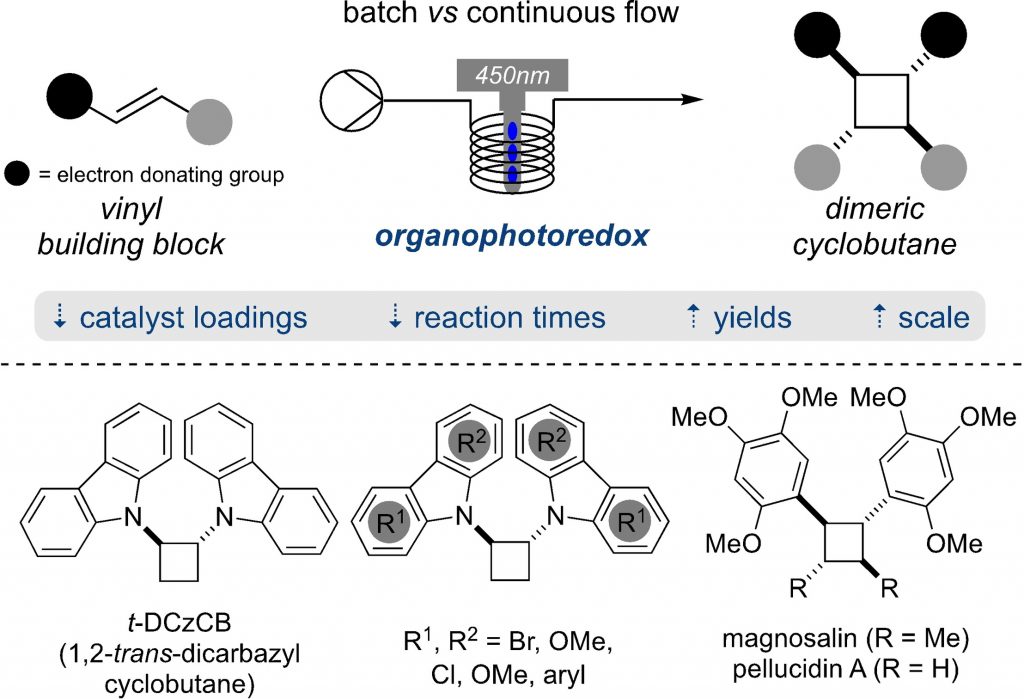 Read the publication that featured this abstract
Read the publication that featured this abstractRadical cation-initiated dimerization of electron rich alkenes is an expedient method for the synthesis of cyclobutanes. By merging organophotoredox catalysis and continuous flow technology a batch versus continuous flow study has been performed providing a convenient synthetic route to an important carbazole cyclobutane material dimer t-DCzCB using less only 0.1 mol% of an organophotoredox catalyst. The scope of this methodology was explored giving a new class of functional materials, as well as an improved synthetic route to styrene based lignan dimeric natural products. The cyclobutane dimers could be isolated in higher chemical yields under continuous flow conditions and reaction times were reduced significantly compared to traditional batch reaction conditions.
Synthesis of 2H-Indazoles via the Cadogan Reaction in Batch and Flow Mode
- Matilda Duffya
- Mara Di Filippoa
- Marcus Baumanna
- aUniversity College Dublin, School of Chemistry, Science Centre South, Dublin D04 N2E5, Ireland
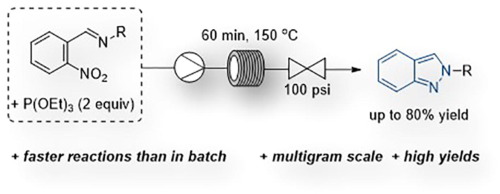 Read the publication that featured this abstract
Read the publication that featured this abstractA continuous flow protocol is reported for the synthesis of 2H-indazoles via the thermal Cadogan reaction. Triethyl phosphite serves as a readily available deoxygenation reagent providing a facile entry to a series of drug-like 2H-indazoles in high chemical yields. Compared to an analogous batch approach, the flow process was advantageous as it provides for a contained environment where boiling of the reagent is suppressed by using a back-pressure regulator (BPR) which in turn leads to faster kinetics. Straightforward scale-up provided multi-gram quantities of 2H-indazoles whose further functionalisation via light-driven and regiospecific acetylation was demonstrated in flow mode.
DNDI-6148: A Novel Benzoxaborole Preclinical Candidate for the Treatment of Visceral Leishmaniasis
- Charles E. Mowbray*1, Stéphanie Braillard1, Paul A. Glossop2, Gavin A. Whitlock2, Robert T. Jacobs3, Jason Speake3, Bharathi Pandi3, Bakela Nare3, Louis Maes4, Vanessa Yardley5, Yvonne Freund6, Richard J. Wall7, Sandra Carvalho7, Davide Bello7, Magali Van den Kerkhof4, Guy Caljon4, Ian H. Gilbert7, Victoriano Corpas-Lopez7, Iva Lukac7, Stephen Patterson7, Fabio Zuccotto7, Susan Wyllie*7
- 1Drugs for Neglected Diseases initiative (DNDi), 15 Chemin Louis-Dunant, 1202 Geneva, Switzerland
- 2Sandexis Medicinal Chemistry Ltd, Innovation House, Discovery Park, Ramsgate Road, Sandwich, Kent CT13 9ND, U.K.
- 3Scynexis, 3501 C Tricenter Boulevard, Durham, North Carolina 27713, United States
- 4Laboratory for Microbiology, Parasitology and Hygiene (LMPH), University of Antwerp, Universiteitsplein 1, 2610 Wilrijk, Antwerp, Belgium
- 5Faculty of Infectious and Tropical Diseases, London School of Hygiene & Tropical Medicine, Keppel Street, London WC1E 7HT, U.K.
- 6Anacor Pharmaceuticals, 1020 East Meadow Circle, Palo Alto, California 94303, United States
- 7Division of Biological Chemistry and Drug Discovery, Wellcome Centre for Anti-infectives Research, School of Life Sciences, University of Dundee, Dow Street, Dundee DD1 5EH, U.K.
 Read the publication that featured this abstract
Read the publication that featured this abstractVisceral leishmaniasis (VL) is a parasitic disease endemic across multiple regions of the world and is fatal if untreated. Current therapies are unsuitable, and there is an urgent need for safe, short-course, and low-cost oral treatments to combat this neglected disease. The benzoxaborole chemotype has previously delivered clinical candidates for the treatment of other parasitic diseases. Here, we describe the development and optimization of this series, leading to the identification of compounds with potent in vitro and in vivo antileishmanial activity. The lead compound (DNDI-6148) combines impressive in vivo efficacy (>98% reduction in parasite burden) with pharmaceutical properties suitable for onward development and an acceptable safety profile. Detailed mode of action studies confirm that DNDI-6148 acts principally through the inhibition of Leishmania cleavage and polyadenylation specificity factor (CPSF3) endonuclease. As a result of these studies and its promising profile, DNDI-6148 has been declared a preclinical candidate for the treatment of VL.
SBA15-Supported Nano-ruthenium Catalyst for the Oxidative Cleavage of Alkenes to Aldehydes under Flow Conditions
- Alessandro Di Michelea
- Stefano Giovagnolib
- Paolo Filipponib
- Francesco Venturonib
- Antimo Gioiellob
- aDepartment of Physics and Geology, University of Perugia, Via A. Pascoli 1, 06123 Perugia, Italy
- bDepartment of Pharmaceutical Sciences, University of Perugia, Via del Liceo 1, 06122 Perugia, Italy
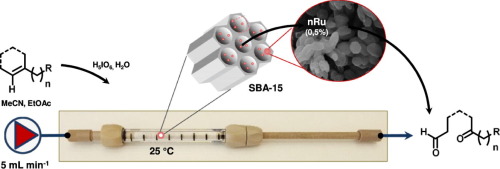 Read the publication that featured this abstract
Read the publication that featured this abstractSBA15-supported ruthenium nanoparticles were prepared and employed as catalytic system for the oxidative cleavage of olefins under flow conditions. Design of experiments was adopted to optimize the reaction parameters and was instrumental to develop a fast and robust method for producing aldehydes from alkenes. Utilizing a simple flow set-up, the process provided high conversions in only few minutes with 0.5% mol of ruthenium under mild reaction conditions and high flow rates.
Iron-catalyzed synthesis of pyridines from α,β-unsaturated ketoxime acetates and N-acetyl enamides
- Gaochen Xu1
- Huan Yan1
- Sai Zhang1
- Qinghuan Wu1
- Jindian Duan1
- Kai Guo1
- 1College of Biotechnology and Pharmaceutical Engineering, Nanjing Tech University, Nanjing, China
 Read the publication that featured this abstract
Read the publication that featured this abstractA new method of FeCl2-catalyzed [4 + 2] annulation of α,β-unsaturated ketoxime acetates with N-acetyl enamides in batch and flow is reported. The current strategy features low-cost catalytic system, use of electron-rich olefins, operational simplicity and broad substrate scope, thus providing a facile and efficient access to substituted pyridines in moderate to good yields.
Photoredox Iridium–Nickel Dual Catalyzed Cross-Electrophile Coupling: From a Batch to a Continuous Stirred-Tank Reactor via an Automated Segmented Flow Reactor
- Rohit Duvadie1
- Alexander Pomberger1
- Yiming Mo1
- Erhan I. Altinoglu2
- Hsiao-Wu Hsieh3
- Kakasaheb Y. Nandiwale1
- Victor L. Schultz1
- Klavs F. Jensen*1
- Richard I. Robinson3
- 1Department of Chemical Engineering, Massachusetts Institute of Technology, 77 Massachusetts Avenue, Cambridge, Massachusetts 02139, United States
- 2Chemical and Pharmaceutical Profiling, Novartis Global Drug Development, 700 Main Street South, Cambridge, Massachusetts 02139, United States
- 3Global Discovery Chemistry, Novartis Institutes for Biomedical Research, 250 Massachusetts Avenue, Cambridge, Massachusetts 02139, United States
 Read the publication that featured this abstract
Read the publication that featured this abstractOrganic reaction optimization for batch to flow transfer represents a main challenge for process chemists in drug synthesis. Several factors such as reactant concentration, residence/reaction time, or homo-/heterogeneity need to be taken into consideration during the fine-tuning of reaction conditions toward typical scale-up goals, such as high space–time yield. Herein, we present reaction optimization for photoredox iridium–nickel dual catalyzed cross-electrophile coupling with a focus on developing homogeneous starting conditions. During the screening, special attention was put on the replacement of inorganic bases with homogeneous organic bases, and the effect of pKa on the reaction yield was investigated. Screening was conducted via an automated segmented flow reactor at 15 μL scale, and subsequentially, the conditions were transferred to a 5 mL photo-continuous stirred-tank reactor (CSTR) cascade to demonstrate multigram continuous flow synthesis during a 24 h steady operation.
Method for preparing epoxidized trans-1, 4-polyisoprene by using micro-reaction device
Inventor: 乔凯, 张锴, 李玉光, 何伟, 郭凯
- Assignee: Nanjing Advanced Biomaterials And Process Equipment Research Institute Co ltd
Read the publication that featured this abstractThe invention discloses a method for preparing epoxidized trans-1, 4-polyisoprene by using a micro-reaction device, which comprises the following steps: (1) dissolving trans-1, 4-polyisoprene TPI by using an organic solvent to obtain a homogeneous solution A; (2) mixing hydrogen peroxide and a formic acid solution in proportion to obtain a peroxyformic acid solution B; (3) and (3) simultaneously pumping the solution A and the solution B obtained in the steps (1) and (2) into a microreactor of a micro-reaction device, wherein a catalyst is immobilized in the microreactor, reacting, and collecting effluent liquid to obtain the catalyst. Compared with the prior art, the invention has the following advantages: (1) the method has the advantages of quick reaction, low yield, low cost, high safety, good operability, small reaction volume, short time and less corrosion to equipment; (2) the production method has simple process, can realize continuous production, and has higher operation safety and controllability.
Lithium aluminum hydride in flow: overcoming exotherms, solids, and gas evolution en route to chemoselective reductions
Aliakbar Mohammadzadeha, Sepideh Sharifa, Volodymyr Semeniuchenkoa, Norman Townsendb, Andrew D. Corbettb, Michael G. Organa
- aFlow Chemistry Core Facility, Centre for Catalysis Research and Innovation (CCRI)Department of Chemistry and Biomolecular Sciences, University of Ottawa, Ottawa, ON, K1N 6N5, Canada
- bToronto Research Chemicals, a Subsidiary of LGC, 20 Martin Ross Avenue, Toronto, ON, M3J 2K8, Canada
Read the publication that featured this abstractA reactor has been designed specifically to conduct lithium aluminum hydride reductions in flow. The reactor readily accommodates strong hydrogen gas evolution and allows strict control over the combination of starting material and reductant, the reaction itself, and quenching, all of which are conducted within the confines of the reactor leading to a safe process.
Synthesis of 7-Chloroquinoline Derivatives Using Mixed Lithium-Magnesium Reagents
- Valter E. Muriea
- Paula V. Nicolinoa
- Thiago dos Santosa
- Guido Gambacortab
- Rodolfo H. V. Nishimuraa
- Icaro S. Perovanic
- Luciana C. Furtadod
- Leticia V. Costa-Lotufod
- Anderson Moraes de Oliveirac
- Ricardo Vessecchic
- Ian R. Baxendaleb
- Giuliano C. Clososkib, c
- aDepartamento de Ciências BioMoleculares, Faculdade de Ciências Farmacêuticas de Ribeirão Preto, Universidade de São Paulo, Av. do Café S/N, Ribeirão Preto 14040-903, Brazil
- bDepartment of Chemistry, Durham University, South Road, Durham DH1 3LE, United Kingdom
- cDepartamento de Química, Faculdade de Filosofia Ciências e Letras de Ribeirão Preto, Universidade de São Paulo, Av. Bandeirantes 3900, Ribeirão Preto 14040-901, Brazil
- dDepartamento de Farmacologia, Instituto de Ciências Biomédicas, Universidade de São Paulo, Av. Prof. Lineu Prestes 1524, São Paulo 05508-900, Brazil
 Read the publication that featured this abstract
Read the publication that featured this abstractWe have prepared a library of functionalized quinolines through the magnesiation of 7-chloroquinolines under mild conditions, employing both batch and continuous flow conditions. The preparation involved the generation of mixed lithium-magnesium intermediates, which were reacted with different electrophiles. Mixed lithium-zinc reagents allowed the synthesis of halogenated and arylated derivatives. Some of the synthesized 4-carbinol quinolines have shown interesting antiproliferative properties, their hydroxyl group being a suitable amino group bioisostere. We also report a two-step approach for optically active derivatives.
Photocatalytic Hydroaminoalkylation of Styrenes with Unprotected Primary Alkylamines
- Hannah E. Askeya
- James D. Graysona
- Joshua D. Tibbettsa
- Jacob C. Turner-Dorea
- Jake M. Holmesa
- Gabriele Kociok-Kohnb
- Gail L. Wrigleyc
- Alexander J. Cresswella
- aDepartment of Chemistry, University of Bath, Claverton Down, Bath BA2 7AY, U.K.
- bMaterials and Chemical Characterisation Facility (MC), University of Bath, Claverton Down, Bath BA2 7AY, U.K.
- cOncology R&D, Research & Early Development, AstraZeneca, Darwin Building, 310, Cambridge Science Park, Milton Road, Cambridge CB4 0WG, U.K.
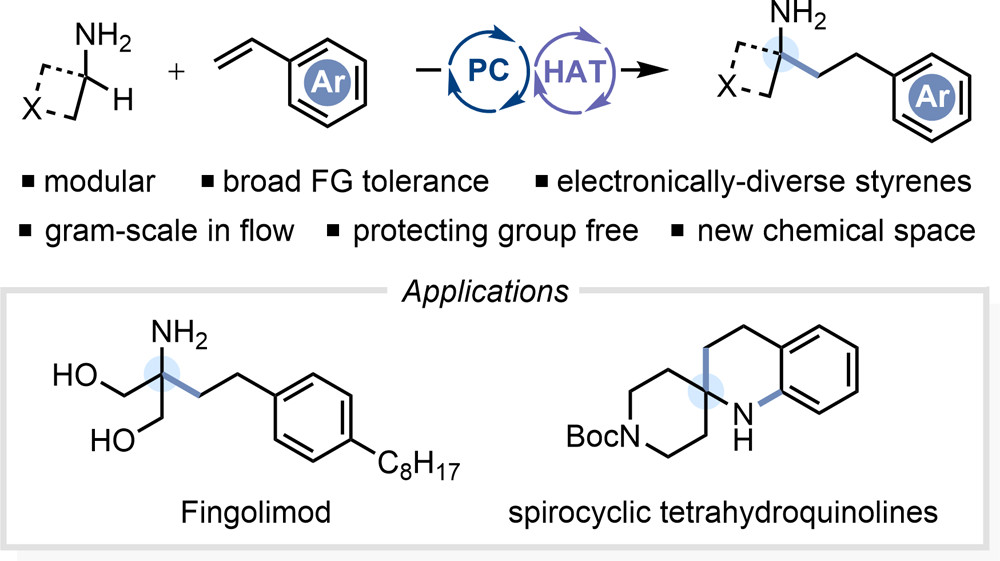 Read the publication that featured this abstract
Read the publication that featured this abstractCatalytic, intermolecular hydroaminoalkylation (HAA) of styrenes provides a powerful disconnection for pharmacologically relevant γ-arylamines, but current methods cannot utilize unprotected primary alkylamines as feedstocks. Metal-catalyzed HAA protocols are also highly sensitive to α-substitution on the amine partner, and no catalytic solutions exist for α-tertiary γ-arylamine synthesis via this approach. We report a solution to these problems using organophotoredox catalysis, enabling a direct, modular, and sustainable preparation of α-(di)substituted γ-arylamines, including challenging electron-neutral and moderately electron-rich aryl groups. A broad range of functionalities are tolerated, and the reactions can be run on multigram scale in continuous flow. The method is applied to a concise, protecting-group-free synthesis of the blockbuster drug Fingolimod, as well as a phosphonate mimic of its in vivo active form (by iterative α-C–H functionalization of ethanolamine). The reaction can also be sequenced with an intramolecular N-arylation to provide a general and modular access to valuable (spirocyclic) 1,2,3,4-tetrahydroquinolines and 1,2,3,4-tetrahydronaphthyridines. Mechanistic and kinetic studies support an irreversible hydrogen atom transfer activation of the alkylamine by the azidyl radical and some contribution from a radical chain. The reaction is photon-limited and exhibits a zero-order dependence on amine, azide, and photocatalyst, with a first-order dependence on styrene.
Photocatalysis in the Life Science Industry
- Lisa Candisha
- Karl D. Collinsb
- Gemma C. Cookc
- James J. Douglasd
- Adrián Gómez-Suáreze
- Anais Jolitf
- Sebastian Keessf
- aDrug Discovery Sciences, Pharmaceuticals, Bayer AG, 42113 Wuppertal, Germany
- bBayer Foundation, Public Affairs, Science and Sustainability, Bayer AG, 51368 Leverkusen, Germany
- cDiscovery High-Throughput Chemistry, Medicinal Science and Technology, GlaxoSmithKline, Stevenage SG1 2NY, U.K.
- dEarly Chemical Development, Pharmaceutical Sciences, R&D, AstraZeneca, Macclesfield SK10 2NA, U.K.
- eOrganic Chemistry, Bergische Universität Wuppertal, 42119 Wuppertal, Germany
- fMedicinal Chemistry Department, Neuroscience Discovery Research, AbbVie Deutschland GmbH & Co. KG, 67061 Ludwigshafen, Germany
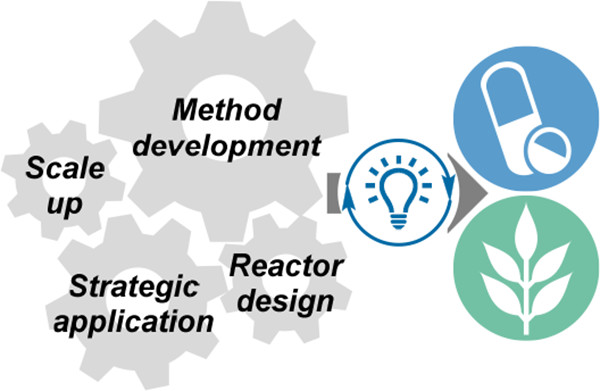 Read the publication that featured this abstract
Read the publication that featured this abstractIn the pursuit of new pharmaceuticals and agrochemicals, chemists in the life science industry require access to mild and robust synthetic methodologies to systematically modify chemical structures, explore novel chemical space, and enable efficient synthesis. In this context, photocatalysis has emerged as a powerful technology for the synthesis of complex and often highly functionalized molecules. This Review aims to summarize the published contributions to the field from the life science industry, including research from industrial-academic partnerships. An overview of the synthetic methodologies developed and strategic applications in chemical synthesis, including peptide functionalization, isotope labeling, and both DNA-encoded and traditional library synthesis, is provided, along with a summary of the state-of-the-art in photoreactor technology and the effective upscaling of photocatalytic reactions.
Continuous slurry plug flow Fe/ppm Pd nanoparticle-catalyzed Suzuki–Miyaura couplings in water utilizing novel solid handling equipment
- Alex B. Wooda
- Scott Plummerb
- Richard I. Robinsonb
- Marie Smithc
- Jim Changc
- Fabrice Galloud
- Bruce H. Lipshutza
- aDepartment of Chemistry and Biochemistry, University of California, Santa Barbara, CA 93106, USA
- bGlobal Discovery Chemistry – Chemistry Technology Group, Novartis Institutes for Biomedical Research, 250 Massachusetts Avenue, Cambridge, MA 02139, USA
- cGenomics Institute of the Novartis Research Foundation, 10675 John J Hopkins Dr., San Diego, CA 92121, USA
- dNovartis Pharma AH, CH-4057 Basel, Switzerland
 Read the publication that featured this abstract
Read the publication that featured this abstractHerein are reported initial efforts to develop a generally accessible flow process, applying a heterogenous nanocatalyst to aqueous micelle-enabled Suzuki–Miyaura coupling reactions. Also disclosed is a new engineering solution (i.e., a self-draining back pressure regulator), which, when applied, enabled 1.5 hours of continuous operation leading to the production of 20 grams of a pharmaceutical intermediate.
Photoredox-Catalyzed Multicomponent Petasis Reaction in Batch and Continuous Flow with Alkyl Boronic Acids
- Monica Oliva1
- Prabhat Ranjan1
- Serena Pillitteri1
- Guglielmo Attilio Coppola1
- Monica Messina1
- Erik V. Van der Eycken1,2
- Upendra Kumar Sharma1
- 1Laboratory for Organic and Microwave-Assisted Chemistry (LOMAC), Department of Chemistry, KU Leuven, Celestijnenlaan 200F, Leuven B-3001, Belgium
- 2Peoples’ Friendship University of Russia (RUDN University), Miklukho-Maklaya street 6, Moscow RU-117198, Russia
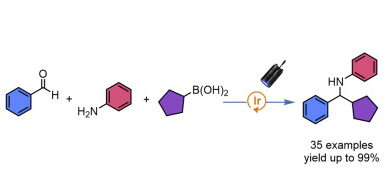 Read the publication that featured this abstract
Read the publication that featured this abstractMulticomponent reactions (MCRs) are ideal platforms for the generation of a wide variety of organic scaffolds in a convergent and atom-economical manner. Many strategies for the generation of highly substituted and diverse structures have been developed and among these, the Petasis reaction represents a viable reaction manifold for the synthesis of substituted amines via coupling of an amine, an aldehyde and a boronic acid (BA). Despite its synthetic utility, the inherent drawbacks associated with the traditional two-electron Petasis reaction have stimulated continuous research towards more facile and tolerant methodologies. In this regard, we present the use of free alkyl boronic acids as effective radical precursors in this MCR through a single-electron transfer mechanism under mild reaction conditions. We have further demonstrated its applicability to photo-flow reactors, facilitating the reaction scale-up for the rapid assembly of complex molecular structures.
Photoredox-Catalyzed Dehydrogenative Csp3–Csp2 Cross-Coupling of Alkylarenes to Aldehydes in Flow
- Oliver M. Griffithsa
- Henrique A. Estevesa
- Yiding Chena
- Karin Sowaa,b
- Oliver S. Maya
- Peter Morsec
- David C. Blakemorec
- Steven V. Ley*a
- aYusuf Hamied Department of Chemistry, University of Cambridge, CB2 1EW Cambridge, U.K.
- bDepartment of Chemistry, University of Münster, 48149 Münster, Germany
- cMedicine Design, Pfizer, Inc., Groton, Connecticut 06340, United States
 Read the publication that featured this abstract
Read the publication that featured this abstractExecuting photoredox reactions in flow offers solutions to frequently encountered issues regarding reproducibility, reaction time, and scale-up. Here, we report the transfer of a photoredox-catalyzed benzylic coupling of alkylarenes to aldehydes to a flow chemistry setting leading to improvements in terms of higher concentration, shorter residence times, better yields, ease of catalyst preparation, and enhanced substrate scope. Its applicability has been demonstrated by a multi-gram-scale reaction using high-power light-emitting diodes (LEDs), late-stage functionalization of selected active pharmaceutical ingredients (APIs), and also a photocatalyst recycling method.
Drug Discovery Automation and Library Synthesis in Flow
- Paul Richardson1
- Irini Abdiaj2
- 1Pfizer Medicine Design, Pfizer, La Jolla, USA
- 2Janssen Research and Development, Toledo, Spain
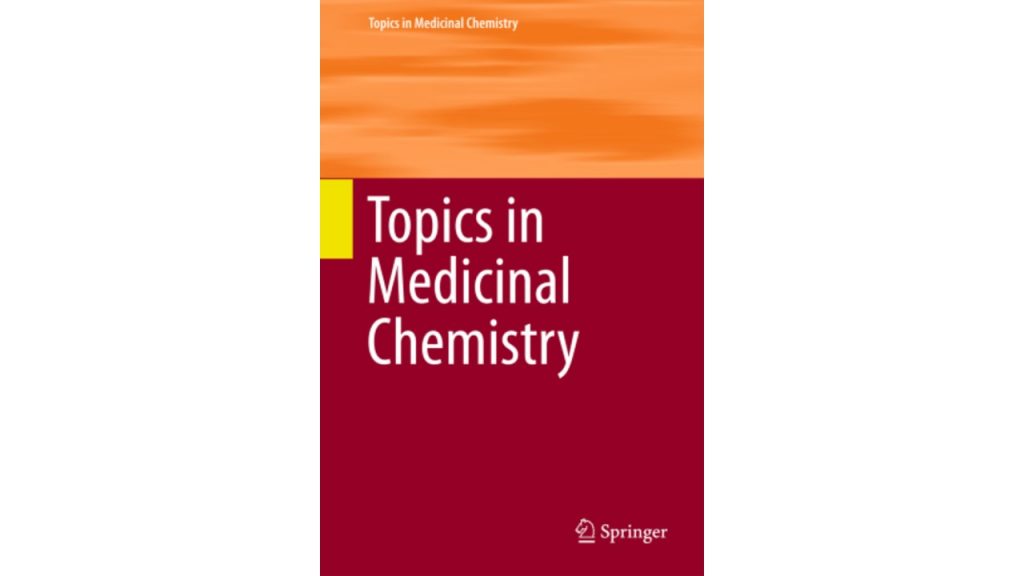 Read the publication that featured this abstract
Read the publication that featured this abstractThe spiraling costs, competitive nature, and stringent timelines associated with Drug Discovery fuel investigations into new technologies that can potentially alleviate the pressures associated with these factors. Whereas advantages of the implementation of Flow Chemistry in the Development phase of a campaign appear obvious specifically toward the large-scale synthesis of the molecule of interest, in early Discovery it is often harder to justify the time to investigate/develop and validate enabling technologies particularly given the fact that there may be no near-term tangible return on this investment. The current chapter takes a detailed look at several case studies on innovative flow-based technologies developed to expedite the Drug Discovery process and evaluates the overall advantages/disadvantages of each approach as well as their overall sustainability in terms of potential uptake within the industry.
Homogeneous Catalytic C(sp3 )–H Functionalization of Gaseous Alkanes
- Antonio Pulcinellaa
- Daniele Mazzarellaa
- Timothy Noëla
- aFlow Chemistry Group, Van ’t Hoff Institute for Molecular Sciences (HIMS), University of Amsterdam
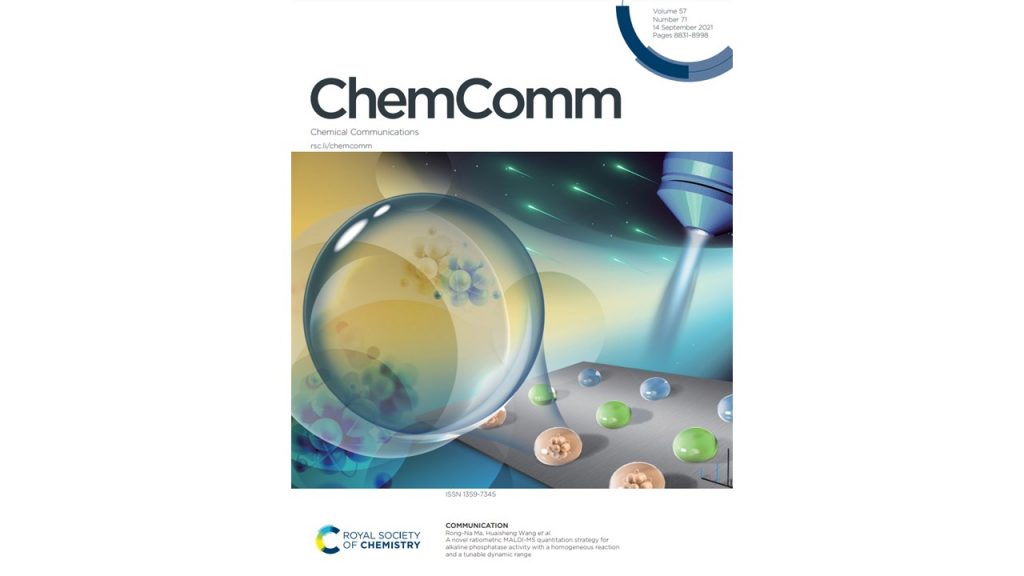 Read the publication that featured this abstract
Read the publication that featured this abstractThe conversion of light alkanes into bulk chemicals is becoming an important challenge as it avoids effectively the use of prefunctionalized alkylating reagents. The implementation of such processes is, however, hampered by their gaseous nature and low solubility, as well as the low reactivity of the C–H bonds. Efforts have been made to enable both polar and radical processes to activate these inert compounds. In addition, these methodologies also benefit significantly from the development of a suitable reactor technology that intensifies gas-liquid mass transfer. In this review, we critically highlight these developments, both from a conceptual and a practical point of view. The recent expansion of these mechanisticallydifferent methods have enabled the use of various gaseous alkanes for the development of different bond-forming reactions, including C–C, C–B, C–N, C–Si and C–S bonds.
Telescoped Lithiation, C-Arylation and Methoxylation in Flow-Batch Hybrid toward the Synthesis of Canagliflozin
- Dominik Polterauera,b
- Jason D. Williamsa,b
- Christopher A.Honea,b
- C. Oliver Kappea,b
- aCenter for Continuous Flow Synthesis and Processing (CCFLOW), Research Center Pharmaceutical Engineering (RCPE), Inffeldgasse 13, A-8010 Graz, Austria
- bInstitute of Chemistry, University of Graz, NAWI Graz, Heinrichstrasse 28, A-8010 Graz, Austria
 Read the publication that featured this abstract
Read the publication that featured this abstractWe report a highly efficient three-step flow-batch hybrid procedure for the synthesis of a key canagliflozin intermediate. The telescoped process provides exquisite control over an exothermic and mixing sensitive lithiation and subsequent C-arylation within a microstructured flow reactor. Methoxylation reagents are then added in flow, before undergoing completion in a batch vessel. The flow process afforded the target intermediate in 76% yield, with a throughput of 26.8 g/h.
A small footprint oxycodone generator based on continuous flow technology and real-time analytics
- Florian Sommera,b
- David Cantilloa,b
- C. Oliver Kappea,b
- aInstitute of Chemistry, University of Graz, NAWI Graz, Heinrichstrasse 28, 8010, Graz, Austria
- bCenter for Continuous Flow Synthesis and Processing (CCFLOW), Research Center Pharmaceutical Engineering GmbH (RCPE), Inffeldgasse 13, 8010, Graz, Austria
 Read the publication that featured this abstract
Read the publication that featured this abstractA scalable continuous flow setup for the preparation of the opioid medication oxycodone is presented. The process is based on a two-step synthetic sequence consisting of C14 hydroxylation of thebaine with performic acid, followed by catalytic hydrogenation of the ensuing 14-hydroxycodeinone intermediate. Safe and efficient oxidation with performic acid has been achieved by generating the reagent in situ in the presence of the starting material using a micromixer. Catalytic hydrogenation has been carried out in a scalable shell-and-tube reactor equipped with palladium-electroplated catalytic static mixers. Acquisition of real-time process data has been enabled by integrating online UHPLC analysis at the reactor output. The continuous process features safe operation, high atom economy, simple workup and production of 7 g/h of high purity oxycodone in a small footprint setup.
Unlocking the Accessibility of Alkyl Radicals from Boronic Acids through Solvent-Assisted Organophotoredox Activation
- Prabhat Ranjana
- Serena Pillitteria
- Guglielmo Coppolaa
- Monica Olivaa
- Erik V. Van der Eyckena,b
- Upendra K. Sharmaa
- aLaboratory for Organic & Microwave-Assisted Chemistry (LOMAC), Department of Chemistry, University of Leuven (KU Leuven), Celestijnenlaan 200F, B-3001 Leuven, Belgium
- bPeoples’ Friendship University of Russia (RUDN University), Miklukho-Maklaya Street 6, 117198 Moscow, Russia
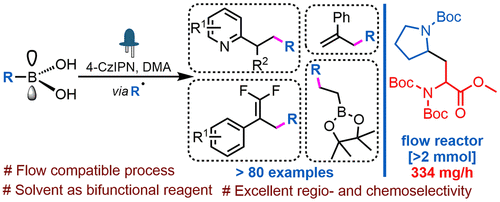 Read the publication that featured this abstract
Read the publication that featured this abstractDespite their prevalence in organic synthesis, the application of boronic acids (BAs) as alkyl radical precursors in visible-light-assisted photocatalyzed reactions has been limited by their high oxidation potential. This study demonstrates the prominent ability of amide solvents, namely, N,N-dimethylacetamide, to participate in hydrogen-bonding interactions with BAs, thus enabling the modulation of their oxidation potential toward the generation of alkyl radicals. The developed protocol is simple and robust and demonstrates broad applicability for alkylation, allylation, and elimination reactions in batch and continuous flow. The application toward dehydroalanine allows the synthesis of unnatural amino acids. Furthermore, the chemoselective generation of radical species from BAs in the presence of boronic ester-containing molecules is now feasible, endorsing plausible boron-selective (bio-) orthogonal modifications.
Organic–inorganic hybrid electro-optic material with Disperse Red 1 chromophore fabricated by flow chemistry
- Yoonseok Koa
- Minsang Kima
- Changho Noha
- Mi-Jeong Kima
- Keechang Leea
- Jongback Kimb
- Sung Dug Kima
- Sang Soo Jeea
- aPolymer Research Lab, Samsung Advanced Institutes of Technology (SAIT), Samsung Electronics, Suwon-si, Gyeonggi-do, Korea
- bAnalytical Engineering Group, Samsung Advanced Institutes of Technology (SAIT), Samsung Electronics, Suwon-si, Gyeonggi-do, Korea
 Read the publication that featured this abstract
Read the publication that featured this abstractFlow chemistry (FC) has been studied extensively because of its advantages, such as precise controllability of process variables and superior mass and heat transfer, as well as process automation for obtaining autonomous chemical synthesis platforms. In this study, FC was utilized to fabricate bulky tirethoxysilane-modified Disperse Red 1 chromophore (TES-DR1) that showed electro-optic (EO) activity. The product yield of TES-DR1 was only 35% using the traditional batch method. By contrast, a significant product yield of 95% was obtained using the proposed FC system in which the reaction could be performed at temperatures above the boiling point of the solvent, providing sufficient energy for accelerating the reaction. Study of reaction kinetics revealed that the reaction mechanism was altered in the high-temperature region. During hybridization, the TES-DR1 was well-dispersed and chemically fixed in the organic–inorganic hybrid matrix composed of SiO2 and polymethylmethacrylate modified with tetramethyl orthosilicate. With the subsequent electric-field poling process, the chromophores were aligned uniaxially in response to the applied electric field, leading to EO behavior. The r33 value of the polymeric EO material is normally decreased at the glass transition temperature because the polymer matrix in the rubbery state allows the chromophores to move randomly. However, the average r33 value representing EO activity remained stable at 14.67 pm/V after the thermal stability test performed at 225 °C. Therefore, TES-DR1 was bound and confined to the stable hybrid framework, restricting chromophore movement at high temperatures.
Technological Innovations in Photochemistry for Organic Synthesis: Flow Chemistry, High-Throughput Experimentation, Scale-up, and Photoelectrochemistry
- Laura Buglionia,b
- Fabian Raymenantsa
- Aidan Slatterya
- Stefan D. A. Zondaga
- Timothy Noëla
- aFlow Chemistry Group, van ’t Hoff Institute for Molecular Sciences (HIMS), Universiteit van Amsterdam (UvA), Science Park 904, 1098 XH, Amsterdam, The Netherlands
- bMicro Flow Chemistry and Synthetic Methodology, Department of Chemical Engineering and Chemistry, Eindhoven University of Technology, Het Kranenveld, Bldg 14—Helix, 5600 MB, Eindhoven, The Netherlands
 Read the publication that featured this abstract
Read the publication that featured this abstractPhotoinduced chemical transformations have received in recent years a tremendous amount of attention, providing a plethora of opportunities to synthetic organic chemists. However, performing a photochemical transformation can be quite a challenge because of various issues related to the delivery of photons. These challenges have barred the widespread adoption of photochemical steps in the chemical industry. However, in the past decade, several technological innovations have led to more reproducible, selective, and scalable photoinduced reactions. Herein, we provide a comprehensive overview of these exciting technological advances, including flow chemistry, high-throughput experimentation, reactor design and scale-up, and the combination of photo- and electro-chemistry.
Pyrrolidine and bicycloheteroaryl containing oga inhibitor compounds
Inventor: José Manuel Bartolomé-Nebreda, Andrés Avelino TRABANCO-SUÁREZ, Ana Isabel De Lucas Olivares, Sergio-Alvar Alonso-De Diego
- Assignee: Janssen Pharmaceutica Nv
Read the publication that featured this abstractThe present invention relates to O-GIcNAc hydrolase (OGA) inhibitors. The invention is also directed to pharmaceutical compositions comprising such compounds, to processes for preparing such compounds and compositions, and to the use of such compounds and compositions for the prevention and treatment of disorders in which inhibition of OGA is beneficial, such as tauopathies, in particular Alzheimer’s disease or progressive supranuclear palsy; and neurodegenerative diseases accompanied by a tau pathology, in particular amyotrophic lateral sclerosis or frontotemporal lobe dementia caused by C90RF72 mutations; or alpha synucleinopathies, in particular Parkinson’s disease, dementia due to Parkinson’s (or neurocognitive disorder due to Parkinson’s disease), dementia with Lewy bodies, multiple system atrophy, or alpha synucleinopathy caused by Gaucher’s disease.
Flow chemistry synthesis of isocyanates
Inventors: Michael D. BurkartThien An PHUNG HAI
- Assignee: The Regents Of The University Of California
Read the publication that featured this abstractThe disclosure provides, inter alia, safe and environmentally-friendly methods, such as flow chemistry, to synthesize isocyanates, such as methylene diphenyl diisocyanate, toluene diisocyanate, hexamethylene diisocyanate, isophorone diisocyanate, and tetramethylxylene diisocyanate.
Cyclodextrin
Inventors: Tammy Savage, Stephen Wicks, John Mitchell
- Assignee: CURADEV PHARMA PRIVATE Ltd
Read the publication that featured this abstractThe invention provides a method for preparing sulphoalkyl ether-β-cyclodextrin. The method comprises first contacting cyclodextrin with a base to form activated cyclodextrin. The method then comprises separately contacting the activated cyclodextrin with an alkyl sultone to form sulphoalkyl ether-β-cyclodextrin. The activation reaction is carried in batch and the sulphoalkylation reaction is carried out under continuous flow conditions.
Compounds and compositions as inhibitors of endosomal toll-like receptors
Inventors: Phillip Alper, Jonathan DEANE, Songchun Jiang, Tao Jiang, Thomas Knoepfel, Pierre-Yves Michellys, Daniel Mutnick, Wei Pei, Peter SYKA, Guobao Zhang, Yi Zhang
- Assignee: Novartis AG, Novartis Institutes for BioMedical Research Inc
Read the publication that featured this abstractThe invention disclosed herein relates to 4,5,6,7-tetrahydro-1H-pyrazolo[4,3-c]pyridinyl compounds and 4,5,6,7-tetrahydro-2H-pyrazolo[4,3-c]pyridinyl compounds of Formula (A), pharmaceutical compositions comprising such compounds and the use of such compounds in the treatment of autoimmune diseases.
High-Yielding Flow Synthesis of a Macrocyclic Molecular Hinge
- Christopher D. Jonesa
- Laurence J. Kershaw Cooka
- David Marquez-Gameza
- Konstantin V. Luzyanina
- Jonathan W. Steedb
- Anna G. Slatera
- aDepartment of Chemistry and Materials Innovation Factory, University of Liverpool, Crown Street, Liverpool L69 7ZD, U.K.
- bDepartment of Chemistry, Durham University, South Road, Durham DH1 3LE, U.K.
 Read the publication that featured this abstract
Read the publication that featured this abstractMany molecular machines are built from modular components with well-defined motile capabilities, such as axles and wheels. Hinges are particularly useful, as they provide the minimum flexibility needed for a simple and pronounced conformational change. Compounds with multiple stable conformers are common, but molecular hinges almost exclusively operate via dihedral rotations rather than truly hinge-like clamping mechanisms. An ideal molecular hinge would better reproduce the behavior of hinged devices, such as gates and tweezers, while remaining soluble, scalable, and synthetically versatile. Herein, we describe two isomeric macrocycles with clamp-like open and closed geometries, which crystallize as separate polymorphs but interconvert freely in solution. An unusual one-pot addition cyclization reaction was used to produce the macrocycles on a multigram scale from inexpensive reagents, without supramolecular templating or high-dilution conditions. Using mechanistic information from NMR kinetic studies and at-line mass spectrometry, we developed a semicontinuous flow synthesis with maximum conversions of 85–93% and over 80% selectivity for a single isomer. The macrocycles feature voids that are sterically protected from guests, including reactive species such as fluoride ions, and could therefore serve as chemically inert hinges for adaptive supramolecular receptors and flexible porous materials.
Application of Flow and Biocatalytic Transaminase Technology for the Synthesis of a 1-Oxa-8-azaspiro [4.5] decan-3-amine
- Jeffrey T. Kohrta
- Peter H. Dorffa
- Michael Burnsb
- Chewah Leeb
- Steven V. O’Neilb
- Robert J. Maguireb
- Rajesh Kumarb
- Melissa Wagenaarb
- Loren Pricea
- Manjinder S. Lalla
- aMedicine Design, Pfizer Inc., 445 Eastern Point Road, Groton, Connecticut 06340, United States
- bChemical Research and Development, Pfizer Inc., 445 Eastern Point Road, Groton, Connecticut 06340, United States
 Read the publication that featured this abstract
Read the publication that featured this abstractSpirocyclic ring systems are useful intermediates in the design and synthesis of medicinally active agents and commonly found as cores in natural products. Recently, syntheses of a key intermediate Boc-protected-1-oxa-8-azaspiro[4.5]decan-3-amine 1 were examined. While multigram quantities of the racemic material could be made from the reduction of an energic azide intermediate, larger scale reactions and a chiral synthesis required further investigations. Herein, we describe the use of a continuous three-step flow process to scale the formation and reduction of an azide intermediate, and the use of a transaminase to prepare the desired enantiomer in high yield and enantiomeric excess.
Scalable Synthesis of Norbornadienes via in situ Cracking of Dicyclopentadiene using Continuous Flow Chemistry
- Jessica Orrego-Hernándeza
- Helen Hölzela
- Maria Quanta
- Zhihang Wanga
- Kasper Moth-Poulsena
- aChalmers University of Technology: Chalmers tekniska hogskola, Chemistry, Sweden
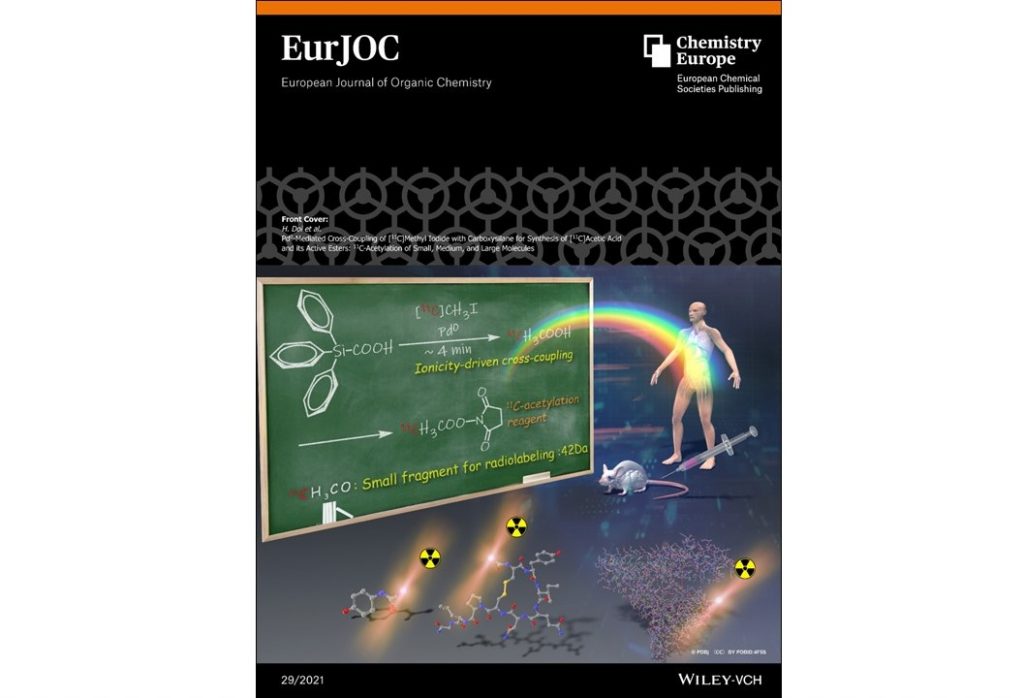 Read the publication that featured this abstract
Read the publication that featured this abstractThe norbornadiene (NBD)-quadricyclane (QC) photoswitch has recently attracted attention due to its use in molecular solar thermal energy systems (MOST). Normally for device testing, several grams are needed. One way of synthesizing NBDs efficiently is through the Diels-Alder reaction between alkynes and cyclopentadiene. However, scaling up the reaction can be troublesome in a research lab environment. Also, dicyclopentadiene needs cracking before utilization as a time-consuming step. Here, we developed a method where we both scale up the synthesis in a single reaction step that involves both in situ cracking of dicyclopentadiene and direct reaction of cyclopentadiene with acetylene derivatives using a tubular coiled stainless steel flow reactor. As a proof-of-concept, we synthesized 6 different NBD compounds, and scaled the synthesis to produce 87 g of a novel NBD in 9 h. The NBD is further characterized, showing promising properties for MOST applications. Our new method shows that flow chemistry is an attractive technique for the fast and efficient synthesis of large quantities of NBDs, needed to develop future real-life devices and applications.
Delineating a green, catalyst free synthesis of a popular nutraceutical methylsulfonylmethane (MSM) in continuous flow
- Chinmay A. Shuklaa
- Bantu Udaykumara
- Y. Saisivanarayanaa
- Arsh Ismailia
- T Haripriyaa
- Manish M. Shindeb
- Srinivasan Netic
- Maheshkumar Uppadaa
- Vishnuvardhana Edac
- Saikat Senc
- Srinivas Orugantia,b,c
- a10X Chemical Process Automation Laboratory, Dr. Reddy’s Institute of Life Sciences, University of Hyderabad Campus, Gachibowli, Hyderabad, 500 046, India
- bFlow Chemistry Technology Hub, Dr. Reddy’s Institute of Life Sciences, University of Hyderabad Campus, Gachibowli, Hyderabad, 500 046, India
- cCentre for Process Research and Innovation, Dr. Reddy’s Institute of Life Sciences, University of Hyderabad Campus, Gachibowli, Hyderabad, 500 046, India
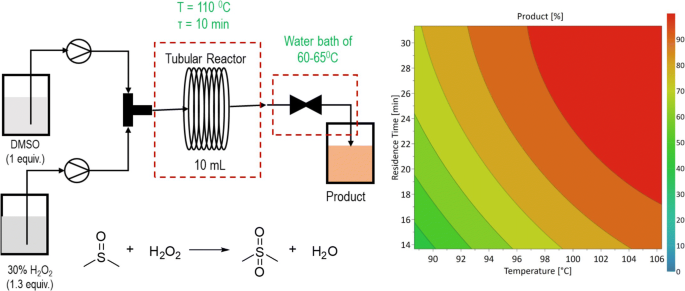 Read the publication that featured this abstract
Read the publication that featured this abstractA green and potentially scalable continuous flow synthesis of a popular sulfone containing nutraceutical, methylsulfonylmethane (MSM), has been demonstrated in a Vapourtec tubular reactor platform via metal catalyst-free hydrogen peroxide mediated oxidation of dimethyl sulfoxide. Under optimized conditions, MSM could be obtained in >85% isolated yield and purity >99% with a productivity of 23.6 g/h simply by cooling the reaction mixture collected at the output.
Evaluation of a Continuous-Flow Photo-Bromination Using N-Bromosuccinimide for Use in Chemical Manufacture
- Matthew Waterforda
- Simon Sauberna
- Christian H. Hornunga
- aCSIRO Manufacturing, Bag 10, Clayton South, Vic. 3169, Australia.
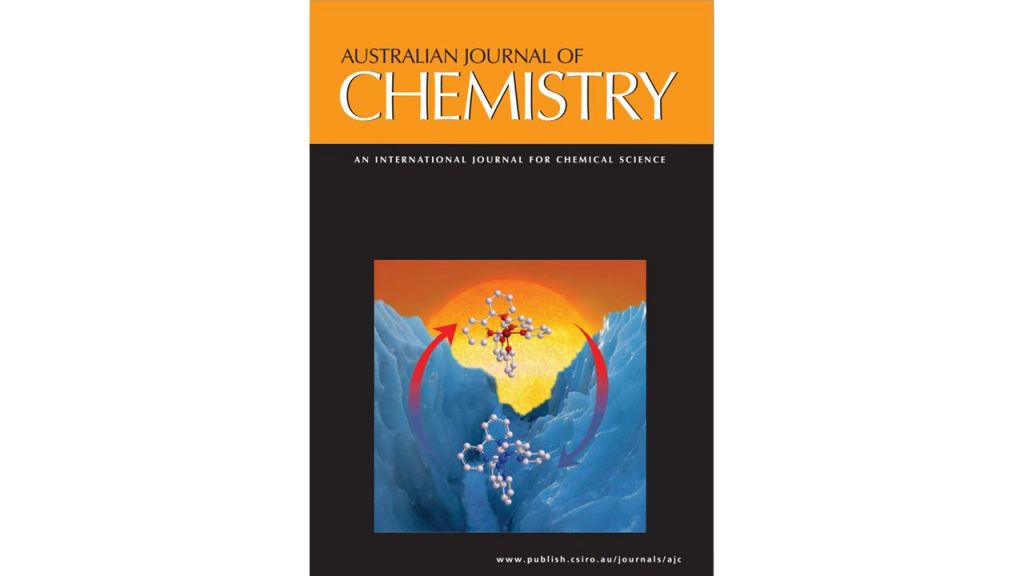 Read the publication that featured this abstract
Read the publication that featured this abstractA continuous-flow photo-bromination reaction on benzyl and phenyl groups was conducted using N-bromosuccinimide as the bromine source inside a preparatory-scale glass plate reactor. This flow reactor system was capable of independently controlling light intensity, wavelength, and reaction temperature, hence exerting an exceptional level of control over the reaction. A short optimisation study for the synthesis of 2-bromomethyl-4-trifluoromethoxyphenylboronic acid pinacol ester resulted in best conditions of 20°C and 10 min residence time using an LED (light-emitting diode) array at 405 nm and acetonitrile as the solvent. The present study evaluates the potential for this easy-to-handle bromination system to be scaled up for chemical manufacture inside a continuous-flow glass plate reactor. The combination with an in-line continuous flow liquid–liquid extraction and separation system, using a membrane separator, demonstrates the potential for continuous flow reaction with purification in an integrated multi-stage operation with minimal manual handling in between.
Scalability of photochemical reactions in continuous flow mode
- Kian Donnellya
- Marcus Baumanna
- aSchool of Chemistry, Science Centre South, University College Dublin, D04 N2E2, Dublin, Ireland
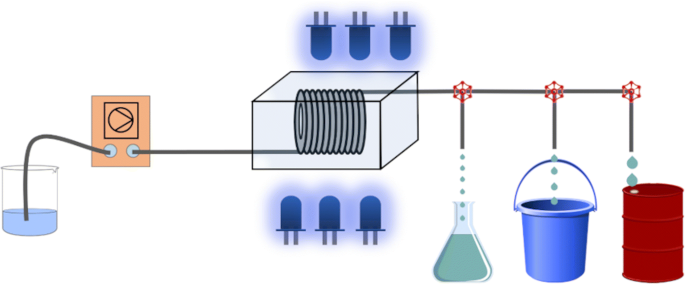 Read the publication that featured this abstract
Read the publication that featured this abstractContinuous flow photochemistry as a field has witnessed an increasing popularity over the last decade in both academia and industry. Key drivers for this development are safety, practicality as well as the ability to rapidly access complex chemical structures. Continuous flow reactors, whether home-built or from commercial suppliers, additionally allow for creating valuable target compounds in a reproducible and automatable manner. Recent years have furthermore seen the advent of new energy efficient LED lamps that in combination with innovative reactor designs provide a powerful means to increasing both the practicality and productivity of modern photochemical flow reactors. In this review article we wish to highlight key achievements pertaining to the scalability of such continuous photochemical processes.
Synthesis of Enantiopure Unnatural Amino Acids by Metallaphotoredox Catalysis
- Tomer M. Faraggia
- Caroline Rouget-Virbela
- Juan A. Rincónb
- Mario Barberisb
- Carlos Mateosb
- Susana García-Cerradab
- Javier Agejasb
- Oscar de Frutosb
- David W. C. MacMillana
- aMerck Center for Catalysis at Princeton University, Princeton, New Jersey 08544, United States
- bCentro de Investigación Eli Lilly, S. A. Avda de la Industria 30, Alcobendas-Madrid 28108, Spain
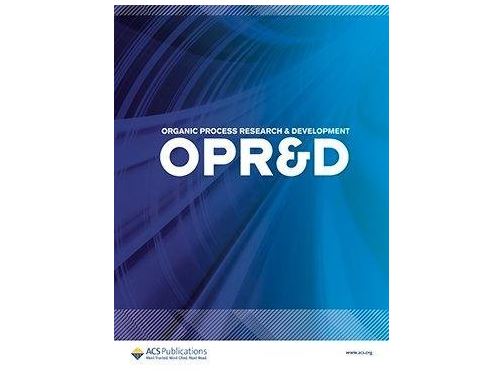 Read the publication that featured this abstract
Read the publication that featured this abstractWe describe herein a two-step process for the conversion of serine to a wide array of optically pure unnatural amino acids. This method utilizes a photocatalytic cross-electrophile coupling between a bromoalkyl intermediate and a diverse set of aryl halides to produce artificial analogues of phenylalanine, tryptophan, and histidine. The reaction is tolerant of a broad range of functionalities and can be leveraged toward the scalable synthesis of valuable pharmaceutical scaffolds via flow technology.
Biocatalyzed Flow Oxidation of Tyrosol to Hydroxytyrosol and Efficient Production of Their Acetate Esters
- Francesca Annunziata1
- Martina L. Contente2
- Cecilia Pinna2
- Lucia Tamborini1
- Andrea Pinto2
- 1Department of Pharmaceutical Sciences, University of Milan, Via Mangiagalli 25, 20133 Milan, Italy
- 2Department of Food, Environmental and Nutritional Sciences, University of Milan, Via Celoria 2, 20133 Milan, Italy
 Read the publication that featured this abstract
Read the publication that featured this abstractTyrosol (Ty) and hydroxytyrosol (HTy) are valuable dietary phenolic compounds present in olive oil and wine, widely used for food, nutraceutical and cosmetic applications. Ty and HTy are endowed with a number of health-related biological activities, including antioxidant, antimicrobial and anti-inflammatory properties. In this work, we developed a sustainable, biocatalyzed flow protocol for the chemo- and regio-selective oxidation of Ty into HTy catalyzed by free tyrosinase from Agaricus bisporus in a gas/liquid biphasic system. The aqueous flow stream was then in-line extracted to recirculate the water medium containing the biocatalyst and the excess ascorbic acid, thus improving the cost-efficiency of the process and creating a self-sufficient closed-loop system. The organic layer was purified in-line through a catch-and-release procedure using supported boronic acid that was able to trap HTy and leave the unreacted Ty in solution. Moreover, the acetate derivatives (TyAc and HTyAc) were produced by exploiting a bioreactor packed with an immobilized acyltransferase from Mycobacterium smegmatis (MsAcT), able to selectively act on the primary alcohol. Under optimized conditions, high-value HTy was obtained in 75% yield, whereas TyAc and HTyAc were isolated in yields of up to 80% in only 10 min of residence time.
Supporting-Electrolyte-Free Anodic Oxidation of Oxamic Acids into Isocyanates: An Expedient Way to Access Ureas, Carbamates, and Thiocarbamates
- Alessia Pettia
- Corentin Fagnana
- Carlo G. W. van Melisa
- Nour Tanbouzab
- Anthony D. Garciaa
- Andrea Mastrodonatoa
- Matthew C. Leecha
- Iain C. A. Goodalla
- Adrian P. Dobbsa
- Thierry Ollevierb
- Kevin Lam*a
- aSchool of Science, University of Greenwich, Chatham Maritime, Chatham, Kent ME4 4TB, U.K.
- bDépartement de Chimie, Université Laval, 1045 avenue de la Médecine, Québec, QC G1V 0A6, Canada
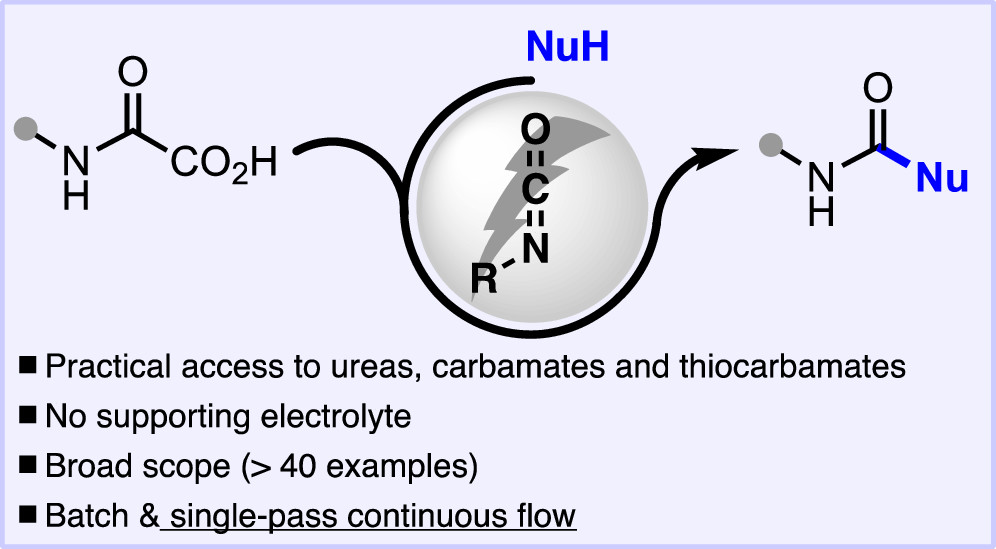 Read the publication that featured this abstract
Read the publication that featured this abstractWe report a new electrochemical supporting-electrolyte-free method for synthesizing ureas, carbamates, and thiocarbamates via the oxidation of oxamic acids. This simple, practical, and phosgene-free route includes the generation of an isocyanate intermediate in situ via anodic decarboxylation of an oxamic acid in the presence of an organic base, followed by the one-pot addition of suitable nucleophiles to afford the corresponding ureas, carbamates, and thiocarbamates. This procedure is applicable to different amines, alcohols, and thiols. Furthermore, when single-pass continuous electrochemical flow conditions were used and this reaction was run in a carbon graphite Cgr/Cgr flow cell, urea compounds could be obtained in high yields within a residence time of 6 min, unlocking access to substrates that were inaccessible under batch conditions while being easily scalable.
Application of reactor engineering concepts in continuous flow chemistry: a review
- Nicole C. Neyta
- Darren L. Riley*a
- aFaculty of Natural and Agricultural Sciences, Department of Chemistry, University of Pretoria, South Africa
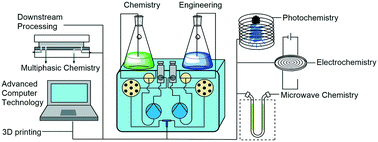 Read the publication that featured this abstract
Read the publication that featured this abstractThe adoption of flow technology for the manufacture of chemical entities, and in particular pharmaceuticals, has seen rapid growth over the past two decades with the technology now blurring the lines between chemistry and chemical engineering. Current indications point to a future in which flow chemistry and related technologies will be a major player in modern chemical manufacturing and the 4th industrial revolution. In this review we highlight the application of new reactor configurations and designs in the context of either bespoke or commercial flow apparatus specifically related to microwave chemistry, photochemical transformations, electrochemical promoted reactions and multi-phasic reactions. In addition, we look at how 3D printing in reactor design and computer-aided automation is growing within the field and finally describe how innovative solutions are being developed to tackle challenging down-stream processing operations.
In situ sensors for flow reactors – a review
- Jun Lia
- Helena Šimekb
- David Ilioaec
- Nicole Jungb
- Stefan Bräseb
- Hans Zappec
- Roland Dittmeyera
- Bradley P. Ladewig*a
- aInstitute for Micro Process Engineering (IMVT), Karlsruhe Institute of Technology (KIT), Hermann-von-Helmholtz-Platz 1, Eggenstein-Leopoldshafen, Germany
- bInstitute of Biological and Chemical Systems (IBCS-FMS), Karlsruhe Institute of Technology (KIT), Hermann-von-Helmholtz-Platz 1, Eggenstein-Leopoldshafen, Germany
- cGisela and Erwin Sick Laboratory for Micro-optics, Department of Microsystems Engineering, University of Freiburg, Germany
 Read the publication that featured this abstract
Read the publication that featured this abstractThe integration of specific sensors into microfluidic reactors and devices is crucial for the optimization of controllable variables such as flow, temperature, energy input (light, microwaves etc.). In this review, we highlight the state of the art for the integration of in situ sensors.
Mechanism and kinetics of the aerobic oxidation of benzyl alcohol to benzaldehyde catalyzed by cobalt porphyrin in a membrane microchannel reactor
- Qi Hana
- Xian-Tai Zhoua
- Xiao-Qi Hed
- Hong-Bing Jib, c
- aFine Chemical Industry Research Institute, School of Chemical Engineering and Technology, Sun Yat-sen University, Zhuhai 519082, China
- bFine Chemical Industry Research Institute, School of Chemistry, Sun Yat -sen University, Guangzhou 510275, China
- cSchool of Chemical Engineering, Guangdong University of Petrochemical Technology, Maoming 525000, China
- dHuizhou Research Institute, Sun Yat-sen University, Huizhou 516081, China
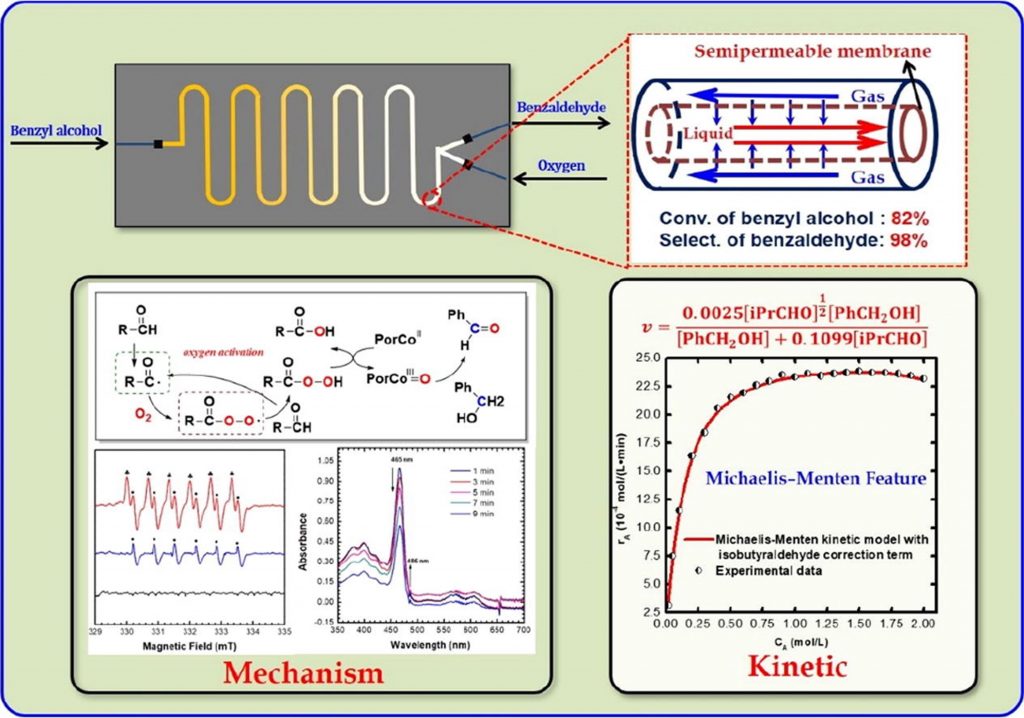 Read the publication that featured this abstract
Read the publication that featured this abstractThe highly efficient selective aerobic oxidation of benzyl alcohol to benzaldehyde catalyzed by cobalt porphyrin was achieved in a membrane microchannel reactor. The efficiency of benzyl alcohol oxidation was remarkably improved in the micro-structured chemical system, achieving a conversion and benzaldehyde selectivity of 82% and 98%, respectively, in 6.5 min. The classification and transfer of free radicals, as well as the oxygen-transfer mechanism, were determined by in situ EPR (electron paramagnetic resonance) and in situ UV–visible spectroscopy. Further kinetic studies revealed that the oxidation of benzyl alcohol follows the Michaelis–Menten kinetics, with Km = 0.133 mol/L.A mathematic kinetic model was proposed, and the kinetic model fitted the experimental data well. The mathematical model can predict the reaction process at a wide range of benzyl alcohol concentrations, which is beneficial for the process optimization and reactor design.
Expanding the Tool Kit of Automated Flow Synthesis: Development of In-line Flash Chromatography Purification
- Christopher G. Thomsona
- Colin Banksb
- Mark Allenc
- Graeme Barkera, d
- Christopher R. Coxona
- Ai-Lan Lee*a
- Filipe Vilela*a, d
- aInstitute of Chemical Sciences, School of Engineering and Physical Sciences, Heriot-Watt University, Edinburgh, Scotland EH14 4AS, United Kingdom
- bCheshire Sciences (UK) Limited, Kao Hockham Building, Edinburgh Way, Harlow, Essex, England CM20 2NQ, United Kingdom
- cAdvion (UK) Limited, Kao Hockham Building, Edinburgh Way, Harlow, Essex, England CM20 2NQ, United Kingdom
- dContinuum Flow Lab, Heriot-Watt University, Edinburgh, Scotland EH14 4AS, United Kingdom
 Read the publication that featured this abstract
Read the publication that featured this abstractRecent advancements in in-line extraction and purification technology have enabled complex multistep synthesis in continuous flow reactor systems. However, for the large scope of chemical reactions that yield mixtures of products or residual starting materials, off-line purification is still required to isolate the desired compound. We present the in-line integration of a commercial automated flash chromatography system with a flow reactor for the continuous synthesis and isolation of product(s). A proof-of-principle study was performed to validate the system and test the durability of the column cartridges, performing an automated sequence of 100 runs over 2 days. Three diverse reaction systems that highlight the advantages of flow synthesis were successfully applied with in-line normal- or reversed-phase flash chromatography, continuously isolating products with 97–99% purity. Productivity of up to 9.9 mmol/h was achieved, isolating gram quantities of pure product from a feed of crude reaction mixture. Herein, we describe the development and optimization of the systems and suggest guidelines for selecting reactions well suited to in-line flash chromatography.
The integration of catalyst design and process intensification in the efficient synthesis of 5-hydroxymethyl-2-furancarboxylic acid from fructose
- Wei Hea1
- Congcong Zhangb1
- Wenyan Zhanga
- YuchenZhuc
- Zheng Fanga
- Lili Zhaob
- Kai Guoa, d
- aCollege of Biotechnology and Pharmaceutical Engineering, Nanjing Tech University, Nanjing 211816, PR China
- bInstitute of Advanced Synthesis, School of Chemistry and Molecular Engineering, Nanjing Tech University, Nanjing 211816, China
- cSchool of Pharmaceutical Sciences, Nanjing Tech University, Nanjing 211816, China
- dState Key Laboratory of Materials-Oriented Chemical Engineering, Nanjing Tech University, Nanjing 210009, PR China
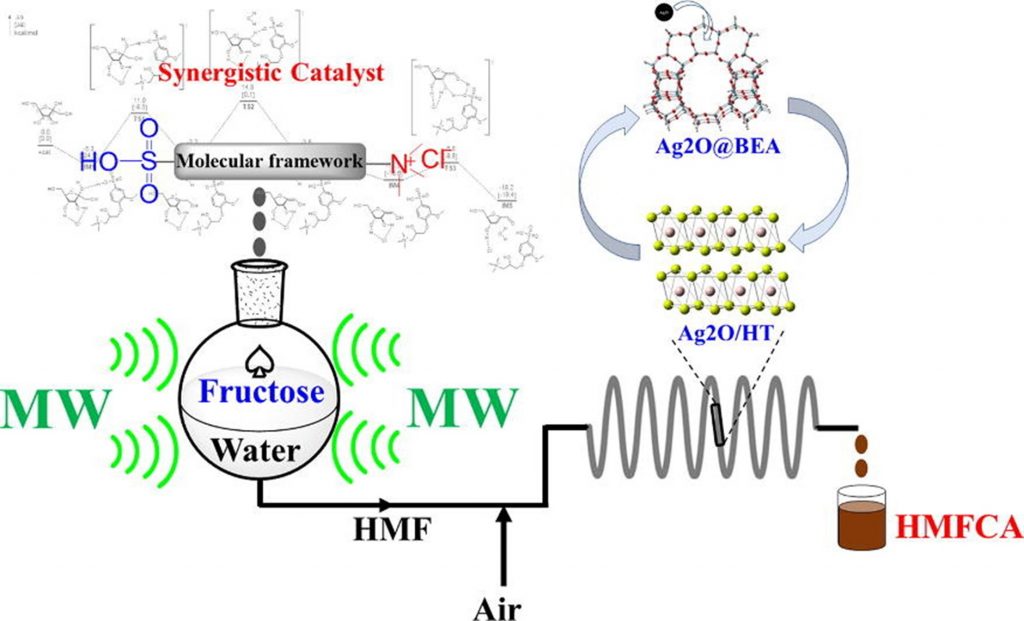 Read the publication that featured this abstract
Read the publication that featured this abstractThe integration of catalyst design and process intensification in the synthesis of 5‑hydroxymethyl-2-furancarboxylic acid was realized directly from fructose. A novel bifunctional catalyst derived from lignin was developed for the dehydration of fructose. Supported catalysts derived from silver was developed for the oxidation of 5-hydroxymethylfurfural for 5‑hydroxymethyl-2-furancarboxylic acid. The product distribution both in dehydration and oxidation process would be controlled through the adjustment of solvent effect. The structure in bifunctional catalysts was adjusted to reveal the effect of molecular skeletons on the catalytic performance. The constitution of supported catalysts was investigated to illustrate the support effect. Accordingly, the mechanism and synergetic effect in the catalyst were proposed through computational studies based on density functional theory and control experiments. Microwave irradiation was applied in the dehydration reaction, requiring adequate and efficient energy supply. Flow chemistry was employed in the oxidation of HMF, improving reaction efficiency.
(Trifluoromethylselenyl)methylchalcogenyl as Emerging Fluorinated Groups: Synthesis under Photoredox Catalysis and Determination of the Lipophilicity
- Kevin Grollier[a]
- Arnaud De Zordo-Banliat[b]
- Flavien Bourdreux[b]
- Bruce Pegot[b]
- Guillaume Dagousset[b]
- Emmanuel Magnier*[b]
- Thierry Billard*[a, c]
- [a]Institute of Chemistry and Biochemistry (ICBMS, UMR CNRS 5246) Univ Lyon, Universite Lyon 1, CNRS,CPE, INSA43 Bd du 11 novembre 1918, 69622 Villeurbanne (France)
- [b]InstitutLavoisierdeVersailles (UMR CNRS 8180)Universit Paris-Saclay,UVSQ,CNRS78035 Versailles (France)
- [c]CERMEP-In vivo imaging59 Bd Pinel, 69677 Lyon (France)
 Read the publication that featured this abstract
Read the publication that featured this abstractThe synthesis of molecules bearing (trifluoromethylselenyl)methylchalcogenyl groups is described via an efficient two-step strategy based on a metal-free photoredox catalyzed decarboxylative trifluoromethylselenolation with good yields up to 88 %, which raised to 98 % in flow chemistry conditions. The flow methods allowed also to scale up the reaction. The mechanism of this key reaction was studied. The physicochemical characterization of these emerging groups was performed by determining their Hansch–Leo lipophilicity parameters with high values up to 2.24. This reaction was also extended to perfluoroalkylselenolation with yields up to 95 %. Finally, this method was successfully applied to the functionalization of relevant bioactive molecules such as tocopherol or estrone derivatives.
«Quick, convenient, and clean»: Advancing education in green chemistry and nanocatalysis using sol-gel catalysts under flow
- Antonino Scurriaa
- Mario Pagliaroa
- Rosaria Ciriminnaa
- aIstituto per lo Studio dei Materiali Nanostrutturati, CNR, via U. La Malfa 153, 90146 Palermo, Italy
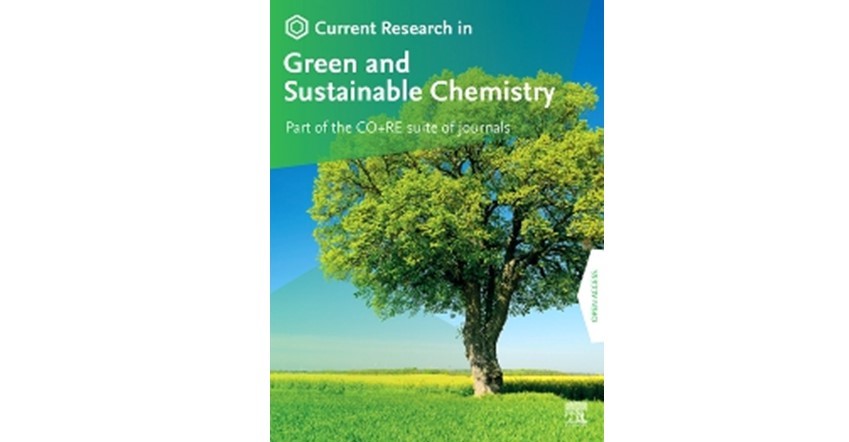 Read the publication that featured this abstract
Read the publication that featured this abstractRemoving one key barrier to the industrial uptake of green chemistry and nanocatalysis in the fine and specialty
chemical industry requires to fill an ongoing “talent shortage” via expanded chemistry education. In this study we
show how the use of hybrid sol-gel catalysts to synthesize fine chemicals and active pharmaceutical ingredients in
flow chemistry reactors illustrates new ideas to reshape chemistry education based on recent research outcomes,
visualization and digital tools. Aiming to expand the knowledge base, skills and competencies that comprise the
aforementioned new professional talent in catalysis and green chemistry currently in high demand, we identify
several lessons learned from the industrial and academic utilization of these materials.
Scale-Up and Optimization of a Continuous Flow Carboxylation of N-Boc-4,4-difluoropiperidine Using s-BuLi in THF
- Jean-Paul Kestemonta
- James R. Frostb
- Jérôme Jacqa
- Patrick Pasaua
- Frédéric Perla
- Julien Brownb
- Matthieu Tissot*a
- aUCB Biopharma SPRL, Avenue de l’industrie, 1420 Braine l’Alleud, Belgium
- bUCB, 216 Bath Road, Slough SL1 3WE, United Kingdom
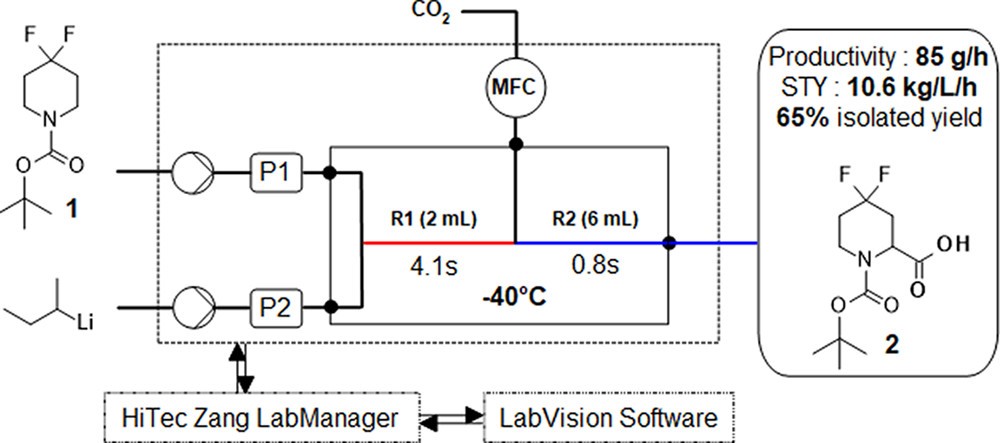 Read the publication that featured this abstract
Read the publication that featured this abstractWe report a large-scale carboxylation of N-Boc-4,4-difluoropiperidine (1) enabled by a continuous flow process. The flow process involved N-Boc-directed α-deprotonation using s-BuLi in THF and subsequent trapping with CO2 gas. Flow chemistry enabled the safe and scalable preparation of 400 g of carboxylic acid 2 over the course of a day to support our medicinal chemistry research program.
Exploration of continuous-flow benchtop NMR acquisition parameters and considerations for reaction monitoring
- Tristan Maschmeyera
- Paloma L. Prietoa
- Shad Grunerta
- Jason E. Heina
- aDepartment of Chemistry, University of British Columbia, Vancouver, British Columbia, Canada
 Read the publication that featured this abstract
Read the publication that featured this abstractThis study focused on fundamental data acquisition parameter selection for a benchtop nuclear magnetic resonance (NMR) system with continuous flow, applicable for reaction monitoring. The effect of flow rate on the mixing behaviors within a flow cell was observed, along with an exponential decay relationship between flow rate and the apparent spin–lattice relaxation time (T1*) of benzaldehyde. We also monitored sensitivity (as determined by signal-to-noise ratios; SNRs) under various flow rates, analyte concentrations, and temperatures of the analyte flask. Results suggest that a maximum SNR can be achieved with low to medium flow rates and higher analyte concentrations. This was consistent with data collected with parameters that promote either slow or fast data acquisition. We further consider the effect of these conditions on the analyte’s residence time, T1*, and magnetic field inhomogeneity that is a product of continuous flow. Altogether, our results demonstrate how fundamental acquisition parameters can be manipulated to achieve optimal data acquisition in continuous-flow NMR systems.
Amino alcohol acrylonitriles as broad spectrum and tumour selective cytotoxic agents
- Jennifer R. Bakera
- Cecilia C. Russella
- Jayne Gilbertb
- Adam McCluskeya
- Jennette A. Sakoffb
- aChemistry, School of Environmental & Life Sciences, The University of Newcastle, University Drive, Callaghan, NSW 2308, Australia
- bExperimental Therapeutics Group, Department of Medical Oncology, Calvary Mater Newcastle Hospital, Edith Street, Waratah, NSW 2298, Australia
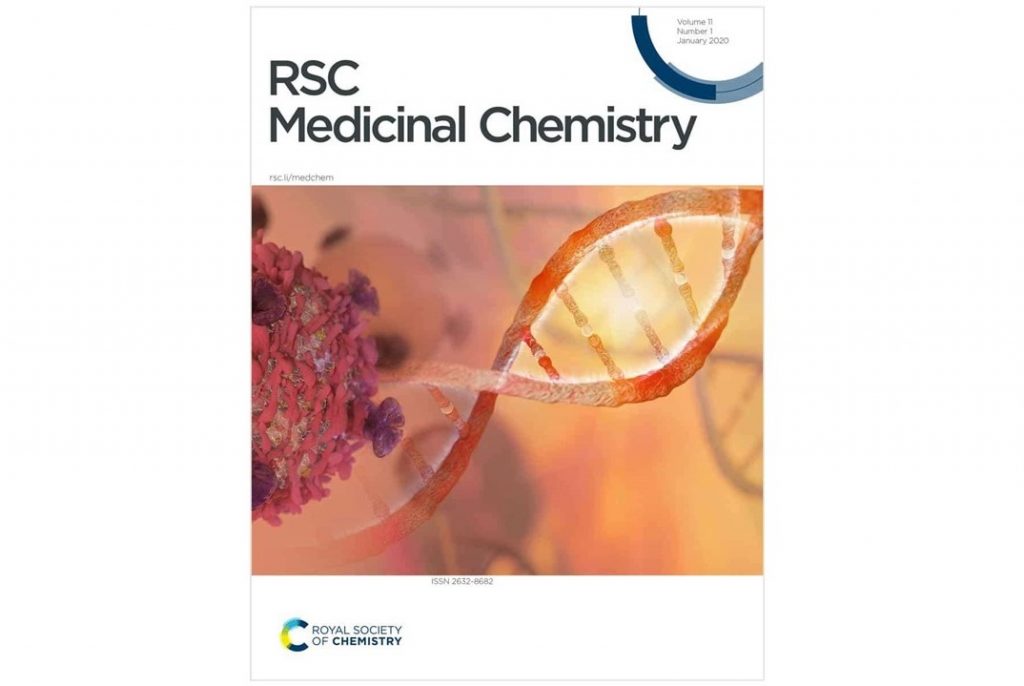 Read the publication that featured this abstract
Read the publication that featured this abstractWe have identified specific dichlorophenylacrylonitriles as lead compounds in the development of novel anticancer compounds, notably, (Z)-N-(4-(2-cyano-2-(3,4-dichlorophenyl)vinyl)phenyl)acetamide (1) and ANI-7 (2). Herein we specifically probe the SAR associated with the terminal aromatic ring and associated cytoxicity in a broad range of human cancer cell lines. Synthesis of three focused libraries revealed a poor tolerance for electron withdrawing and donating moieties (Library A). A clear preference for hydrophobic substituents on a terminal piperazine moiety (Library B) with good levels of broad spectrum cytotoxicity, e.g.13a (GI50 2.5–6.0 μM), as did the introduction of a methylene spacer with 13i (4-CH3PhCH2; GI50 1.5–4.5 μM). Removal of the aromatic moiety and installation of simple hydrophobic groups (Library C), in particular an adamantyl moiety, afforded highly active broad spectrum cytotoxic agents with GI50 values ranging from 1.7 μM (14k; 1-adamantyl) to 5.6 μM (14i; pyrrolidine). Within these libraries we note lung cancer selectivity, relative to normal cells, of 13h (fluoro substituted acrylonitrile, GI50 1.6 μM, 9.3-fold selective); the colorectal selectivity of 14h (methylpiperidine analogue, GI50 0.36 μM, 6.9-fold selective) and the breast cancer selectivity of 13f (nitrile substituted acrylonitrile, GI50 2.3–6.0 μM, up to 20-fold selective). The latter was confirmed as a novel AhR ligand and a CYP1A1 activating compound, that likely induces cell death following bioactivation; a phenomenon previously described in breast cancer cell populations.
Ozone-Mediated Amine Oxidation and Beyond: A Solvent Free, Flow-Chemistry Approach
Eric A. Skrotzkia, Jaya Kishore Vandavasia, Stephen G. Newmana
- aCentre for Catalysis Research and Innovation, Department of Chemistry and Biomolecular Sciences, University of Ottawa, 10 Marie-Curie, Ottawa, Ontario K1N 6N5, Canada.
Read the publication that featured this abstractOzone is a powerful oxidant, most commonly used for oxidation of alkenes to carbonyls. The synthetic utility of other ozone-mediated reactions is hindered by its high reactivity and propensity to over-oxidize organic molecules, including most solvents. This challenge can largely be mitigated by adsorbing both substrate and ozone onto silica gel, providing a solvent-free oxidation method. In this manuscript, a flow-based packed bed reactor approach is described that provides exceptional control of reaction temperature and time of this reaction to achieve improved control and chemoselectivity over this challenging reaction. A powerful method to oxidize primary amines into nitroalkanes is achieved. Examples of pyridine, C–H bond, and arene oxidations are also demonstrated, confirming the system is generalizable to diverse ozone-mediated processes.
A sustainable and scalable multicomponent continuous flow process to access fused imidazoheterocycle pharmacophores
- Blake J. M. Bakera, b
- William J. Kerr*b
- David M. Lindsayb
- Vipul kumar K. Patela
- Darren L. Poolea
- aGlaxoSmithKline Medicines Research Centre, Gunnels Wood Road, Stevenage, Hertfordshire, UK
- bDepartment of Pure and Applied Chemistry, University of Strathclyde, 295 Cathedral Street, Glasgow, UK
 Read the publication that featured this abstract
Read the publication that featured this abstractDescribed herein is a green, continuous flow process for the synthesis of various aminoimidazoheterocycles, through the Gröebke–Blackburn–Bienaymé reaction (GBBR). This multicomponent procedure combines aminoazines, aldehydes and isocyanides to generate a wide variety of medicinally privileged, aminated imidazoheterocycle architectures. This method is performed in ethanol, using only mineral acid rather than the standard metal-based catalysts typical to the field. These sustainability benefits have been demonstrated even on multigram scale, exemplifying the facile scalability of the procedure. The process also boasts shorter reaction times, wider scope robustness, and improved yields compared to the currently available methods, with no requirement for an aqueous work-up procedure, affording resulting scaffolds of notable relevance, to a range of medicinal targets of academic and industrial interest.
Reproducible and rapid synthesis of a conjugated polymer by Stille polycondensation in flow: Effects of reaction parameters on molecular weight
- Woojin Shina, 1
- Wonyoung Koa, 1
- Seung-Hwan Jina
- Taeshik Earmmeb
- Ye-Jin Hwanga
- aDepartment of Chemistry and Chemical Engineering, Education and Research Center for Smart Energy and Materials, Inha University, 100 Inha-ro, Michuhol-gu, Incheon, Republic of Korea
- bDepartment of Chemical Engineering, Hongik University, 94 Wausan-ro, Mapo-gu, Seoul 04066, Republic of Korea
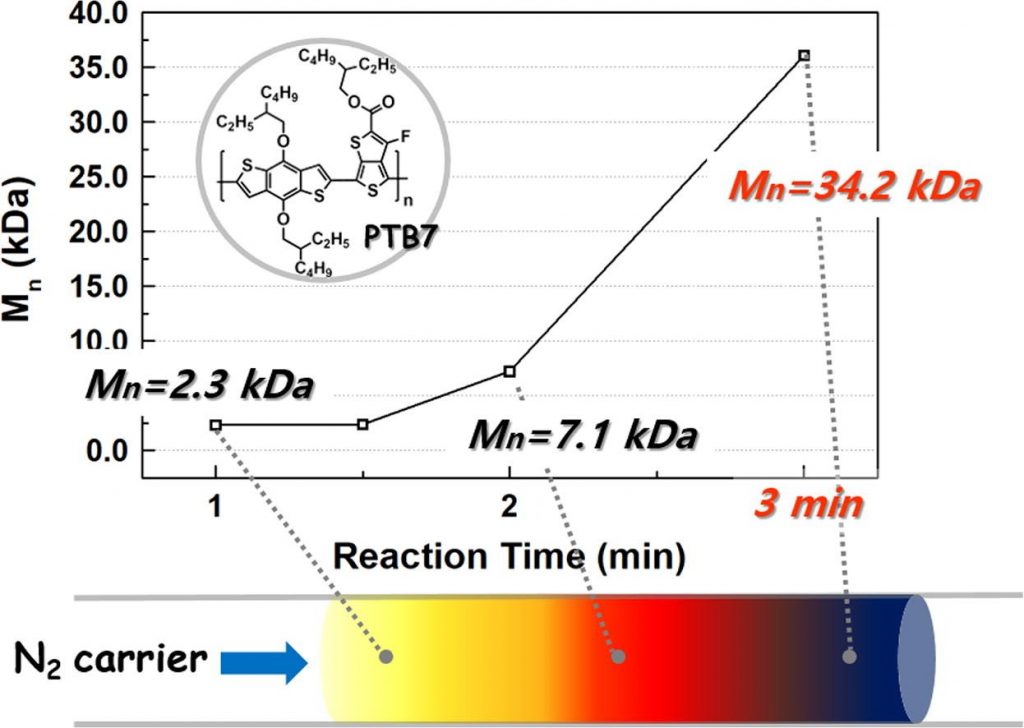 Read the publication that featured this abstract
Read the publication that featured this abstractThe batch-to-batch variations in molecular weight and molecular weight dispersity (Đ) values are large for conjugated polymers synthesized by step-growth polymerization, which can lead to irreproducible device performance. We developed a rapid flow synthesis system that can perform step-growth polymerizations of conjugated polymers in a reproducible manner by utilizing nitrogen gas as a carrier. The use of gas carrier, instead of organic solvents or fluorinated oils, eliminates the common diffusion problems at the beginning and the end of the reaction stream to the carrier fluid. Without the diffusion problem, our system provides high reproducibility and uniform reaction conditions in all regions of reaction stream. To highlight the performance of our flow system, we conducted Stille polycondensations to synthesize a representative conjugated polymer, PTB7. We found that PTB7 with a number average molecular weight (Mn) over 30 kDa was synthesized in only 3 min, with very low deviations of 2.6% and 3.1% for Mn and Đ values, respectively, compared to deviations of 66% for Mn and 43% for Đ in control reactions using pure solvent as a carrier. The effect of catalyst loading and reaction temperature was also studied, which enabled tuning the Mn of PTB7 within the range of 30.6–57.9 kDa. The quality of PTB7 synthesized in our system was also confirmed by fabricating photovoltaic devices which gave maximum power conversion efficiency of 7.02% with PC71BM as an acceptor.
Innovation in delivering synthetically challenging bicyclic arginase inhibitors to enhance immunotherapy
- Derun Lia, Hongjun Zhanga, Thomas W. Lyonsa, Theodore A. Martinota, Abdelghani Achaba, Min lua, Lisa M. Noglea, Spencer McMinna, Matthew J. Mitcheltreea, Matthew Childersa, Qinglin Pua, Symon Gathiakaa, Anand Palania, Kalyan Chakravarthya, Amy D. DeCastroa, Jennifer O'Neila, Roshi Afshara, Nicole C. Walsha, Peter W. Fana, Mangeng Chenga, Richard Millera, Amy Dotya, Rachel Paltea, Hai-Young Kima, Josep Sauría, Adam Bearda, Christopher Brynczkaa and Christian Fischera
- aMerck Research Laboratory, Boston, MA.
 Read the publication that featured this abstract
Read the publication that featured this abstractArginase overexpression has been associated with poor survival rates in advanced cancer patients treated with Keytruda. High levels of Arginase may lead to a depletion of arginine within the tumor microenvironment, inhibiting the immune response. Thus, arginase inhibition has the potential to greatly enhance immunotherapy treatment. Discovering novel arginase inhibitors was met with several challenges including analyzing/purifying extremely polar chemical matter without chromophores, synthetically challenging space, and poor bioavailability of compounds with ClogP less than minus two.
Cross-functional collaborations and innovations rapidly overcame these challenges. Structural chemistry and modeling guided the design of novel arginase inhibitors. Analytical and purification groups developed innovative analytical/purification methods. Novel technologies including ReatIR and Vapourtec flow system, provided key intermediates to enable chartering into synthetically challenging space. Through creative cyclization strategies and active transport strategy to improve bioavailability, the team ultimately delivered a diverse set of potent and extremely synthetically challenging arginase inhibitors to study the potential of arginase inhibition. Preliminary in vivo evaluation showed single agent efficacy in an EMT6 model. These arginase inhibitors have the potential to enhance immunotherapy.
A revised 1D equivalent model for the determination of incident photon flux density in a continuous-flow LED-driven spiral-shaped microreactor using the actinometry method with Reinecke’s salt
- Robbie Radjagobaloua
- Victoria Dias Da Silva Freitasa
- Jean-François Blancoa
- Fabrice Grosb
- Jérémy Dauchetb
- Jean-François Cornetb
- Karine Loubierea
- aLaboratoire de Génie Chimique (LGC), Université de Toulouse, CNRS, INPT, UPS, 4 allée Emile Monso, CS 84234, 31 432, Toulouse, France
- bUniversité Clermont Auvergne, Clermont Auvergne INP, CNRS, Institut Pascal, F-63000, Clermont-Ferrand, France
 Read the publication that featured this abstract
Read the publication that featured this abstractContinuous-flow microstructured technologies are now recognized as promising alternatives to batch processing for organic photochemistry, especially when light emitting diodes (LEDs) are employed as light sources. To evaluate and optimize productivity and energetic efficiency, the knowledge of the incident photon flux density is crucial. In this context, the objectives of the present work are dual: first, to transfer the classical actinometry method with Reinecke’s salt to a continuous-flow LED-driven spiral-shaped reactor and second, to propose a revised one-dimensional equivalent model for the accurate determination of the incident photon flux density in this microreactor. Experimental measurements were carried out under controlled conditions. The effects of the spectral domain and radiant power emitted, the tubing length, the presence of gas-liquid Taylor flow, and the material of the support plate were especially investigated. An expression was established for the revised one-dimensional Cartesian model, taking into account the diffuse emission of the LED array and the reflection induced by the material of the plate in which the tubing was inserted (i.e. the reflection by the backside of the microreactor wall). In this way, the incident photon flux density could be estimated with an acceptable level of accuracy, which was not the case if the usual 1D model was applied (collimated emission and no reflection).
Interrupted Curtius Rearrangements of Quaternary Proline Derivatives: A Flow Route to Acyclic Ketones and Unsaturated Pyrrolidines
- Marcus Baumanna
- Thomas S. Moodyb, c
- Megan Smythb
- Scott Wharryb
- aSchool of Chemistry, University College Dublin, Science Centre South, Belfield D04 N2E2, Ireland
- bDepartment of Technology, Almac Sciences, 20 Seagoe Industrial Estate, Craigavon BT63 5QD, United Kingdom
- cArran Chemical Company, Roscommon N37 DN24, Ireland
 Read the publication that featured this abstract
Read the publication that featured this abstractConversion of N-Boc-protected quaternary proline derivatives under thermal Curtius rearrangement conditions was found to afford a series of ring-opened ketone and unsaturated pyrrolidine products instead of the expected carbamate species. The nature of the substituent on the quaternary carbon thereby governs the product outcome due to the stability of a postulated N-acyliminium species. A continuous flow process with in-line scavenging was furthermore developed to streamline this transformation and safely create products on a gram scale.
Flow electrochemistry: a safe tool for fluorine chemistry
- Bethan Wintersona
- Tim Rennigholtza
- Thomas Wirtha
- aSchool of Chemistry, Cardiff University, Park Place, Main Building, Cardiff, Cymru/Wales, UK
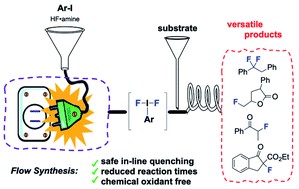 Read the publication that featured this abstract
Read the publication that featured this abstractThe heightened activity of compounds containing fluorine, especially in the field of pharmaceuticals, provides major impetus for the development of new fluorination procedures. A scalable, versatile, and safe electrochemical fluorination protocol is conferred. The strategy proceeds through a transient (difluoroiodo)arene, generated by anodic oxidation of an iodoarene mediator. Even the isolation of iodine(III) difluorides was facile since electrolysis was performed in the absence of other reagents. A broad range of hypervalent iodine mediated reactions were achieved in high yields by coupling the electrolysis step with downstream reactions in flow, surpassing limitations of batch chemistry. (Difluoroiodo)arenes are toxic and suffer from chemical instability, so the uninterrupted generation and immediate use in flow is highly advantageous. High flow rates facilitated productivities of up to 834 mg h−1 with vastly reduced reaction times. Integration into a fully automated machine and in-line quenching was key in reducing the hazards surrounding the use of hydrofluoric acid.
Flow Electrosynthesis of Sulfoxides, Sulfones, and Sulfoximines without Supporting Electrolytes
- Nasser Amri1 and Thomas Wirth1
- 1School of Chemistry, Cardiff University, Main Building, Park Place, Cardiff CF10 3AT, United Kingdom
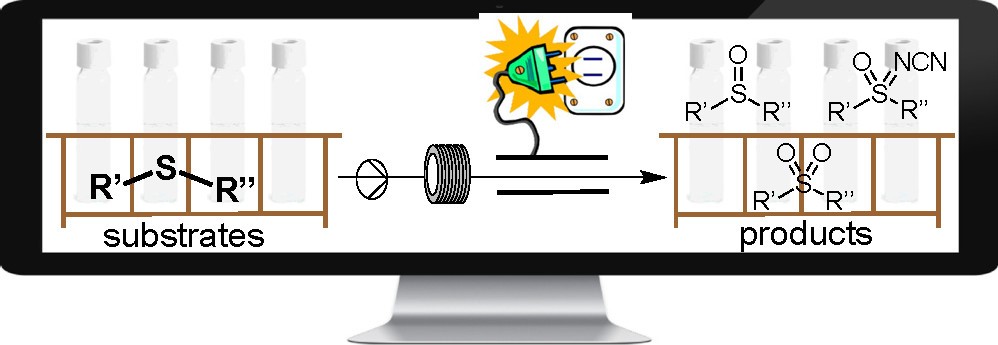 Read the publication that featured this abstract
Read the publication that featured this abstractAn efficient electrochemical flow process for the selective oxidation of sulfides to sulfoxides and sulfones and of sulfoxides to N-cyanosulfoximines has been developed. In total, 69 examples of sulfoxides, sulfones, and N-cyanosulfoximines have been synthesized in good to excellent yields and with high current efficiencies. The synthesis was assisted and facilitated through a supporting electrolyte-free, fully automated electrochemical protocol that highlights the advantages of flow electrolysis.
Discrete Ti−O−Ti Complexes: Visible-Light-Activated, Homogeneous Alternative to TiO2 Photosensitisers
- Kira Behma
- Dr. Eszter Fazekasa
- Prof. Martin J. Patersona
- Dr. Filipe Vilelaa
- Dr. Ruaraidh D. McIntosha
- aInstitute of Chemical Sciences, Heriot-Watt University, Edinburgh, EH14 4AS UK
 Read the publication that featured this abstract
Read the publication that featured this abstractA series of novel bimetallic TiIV amine bis(phenolate) complexes was synthesised and fully characterised. X-ray crystallography studies revealed distorted octahedral geometries around the Ti centres with single or double oxo-bridges connecting the two metals. These robust, air- and moisture-stable complexes were employed as photosensitisers generating singlet oxygen following irradiation with visible light (420 nm) LED module in a commercial flow reactor. All five complexes showed high activity in the photo-oxygenation of α-terpinene and achieved complete conversion to ascaridole in four hours at ambient temperature. The excellent selectivity of these photosensitisers towards ascaridole (vs. transformation to p-cymene) was demonstrated with control experiments using a traditional TiO2 catalyst. Further comparative studies employing the free pro-ligands as well as a monometallic analogue highlighted the importance of the ‘TiO2-like’ moiety in the polymetallic catalysts. Computational studies were used to determine the nature of the ligand to metal charge transfer (LMCT) states and singlet–triplet gaps for each complex, the calculated trends in the UV-vis absorption spectra across the series agreed well with the experimental results.
Stereospecific amination of mesylated cyclobutanol in continuous flow
- Matthieu Tissota
- Jérôme Jacqa
- Patrick Pasaua
- UCB Biopharma SPRL, Avenue de l’industrie, 1420 Braine l’Alleud, Belgiuma
 Read the publication that featured this abstract
Read the publication that featured this abstractWe report an amination of mesylated cyclobutanol enabled by a multistep continuous flow process. The flow sequence involved an azidation followed by a Staudinger reduction which avoids the handling and isolation of a hazardous alkyl azide compound. The process is stereospecific with the azidation step proceeding to complete stereochemical inversion.
Chemo-enzymatic oxidative cleavage of isosafrole for the synthesis of piperonal
- Francesca Tentori*a
- Elisabetta Brenna*a
- Chiara Ferraria
- Francesco G. Gattia
- Maria Chiara Ghezzia
- Fabio Parmeggiania
- aDipartimento di Chimica, Materiali ed Ingegneria Chimica “Giulio Natta”, Politecnico di Milano, Piazza Leonardo da Vinci 32, 20133, Milano, Italy.
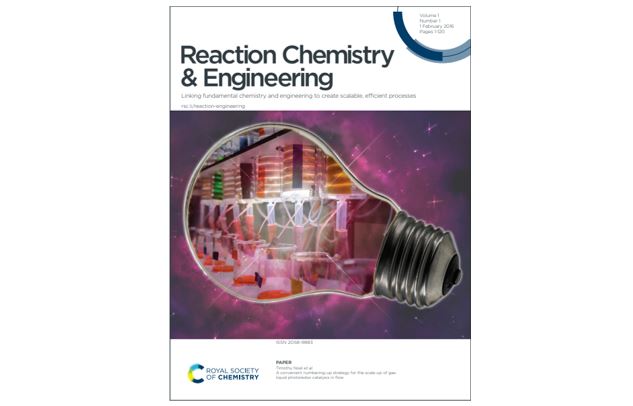 Read the publication that featured this abstract
Read the publication that featured this abstractPiperonal is a key ingredient of flavour and fragrance industry and a useful intermediate for the synthesis of fine chemicals. It is currently prepared by either ozonolysis or chromic acid oxidation of isosafrole, obtained upon isomerization of naturally abundant safrole. A chemo-enzymatic three-step procedure for the conversion of isosafrole into piperonal is herein described. Lipase-mediated perhydrolysis of EtOAc in the presence of H2O2 is employed to generate peracetic acid in situ and promote the epoxidation of isosafrole. The reaction mixture is submitted to methanolic KOH treatment to recover the corresponding mixture of vicinal diols. The latter is efficiently oxidized to piperonal using MnO2, periodically regenerated at the expense of tert-butylhydroperoxide (TBHP), which represents the terminal oxidant of this transformation. The use of continuous-flow conditions using a continuously-stirred tank reactor for the epoxidation, and a packed bed reactor for the final oxidation improves the productivity and stability of the whole method, with space-time yields of 75 mmol·g–1·h–1 and 120 mmol·g–1·h–1 , calculated as amount of generated product per catalyst amount per time.
Radical alpha-Trifluoromethoxylation of Ketones by Means of Organic Photoredox Catalysis
Thibaut Duhail[a]†, Tommaso Bortolato[b]†, Javier Mateos[b], Elsa Anselmi[a,c], Benson Jelier[d], Antonio Togni[d], Emmanuel Magnier[a], Guillaume Dagousset[a], Luca Dell’Amico[b]
- [a] Université Paris-Saclay, UVSQ, CNRS, UMR 8180, Institut Lavoisier de Versailles, 78035 Versailles Cedex (France)
- [b]Department of Chemical Sciences, University of Padova, Via Marzolo 1, 35131, Padova (Italy)
- [c] Université de Tours, Faculté des Sciences et Techniques, 37200 Tours (France)
- [d]Department of Chemistry and Applied Biosciences, Swiss Federal Institute of Technology, ETH Zurich, Vladimir-Prelog-Weg 2, 8093 Zurich (Switzerland)
Read the publication that featured this abstractThe first light-driven method for the alpha-trifluoromethoxylation of ketones is reported. Enol carbonates, in particular Boc derivatives, react with N-trifluoromethoxy-4-cyano-pyridinium triflimide (2a) using the photoredox-catalyst 4-CzIPN (5 mol-%) under irradiation at 456 nm affording the corresponding α-trifluoromethoxy ketones in up to 50% isolated yield and virtually complete chemoselectivity. As shown by 35 examples, representing a great variety of substrates, the reaction is general and proceeds rapidly under batch (1h) and flow conditions (2 min). Mechanistic investigations reveal that a radical-chain propagation is operative, as efficiently orchestrated by the activity of the organic photoredox catalyst. Diverse products manipulations, including ketone reduction and reductive amination, demonstrate the synthetic potential of the disclosed method to accessing elusive trifluoromethoxylated potentially bioactive ingredients.
Rapid Optimization of Photoredox Reactions for Continuous-Flow Systems Using Microscale Batch Technology
- María González-Esguevillasa
- David F. Fernándeza
- Juan A. Rincónb
- Mario Barberisb
- Oscar de Frutosb
- Carlos Mateosb
- Susana García-Cerradab
- Javier Agejasb
- David W. C. MacMillan*a
- aMerck Center for Catalysis at Princeton University, Princeton, New Jersey 08544, United States
- bCentro de Investigación Eli Lilly, S. A., Avda. de la Industria 30, 28108 Alcobendas, Madrid, Spain
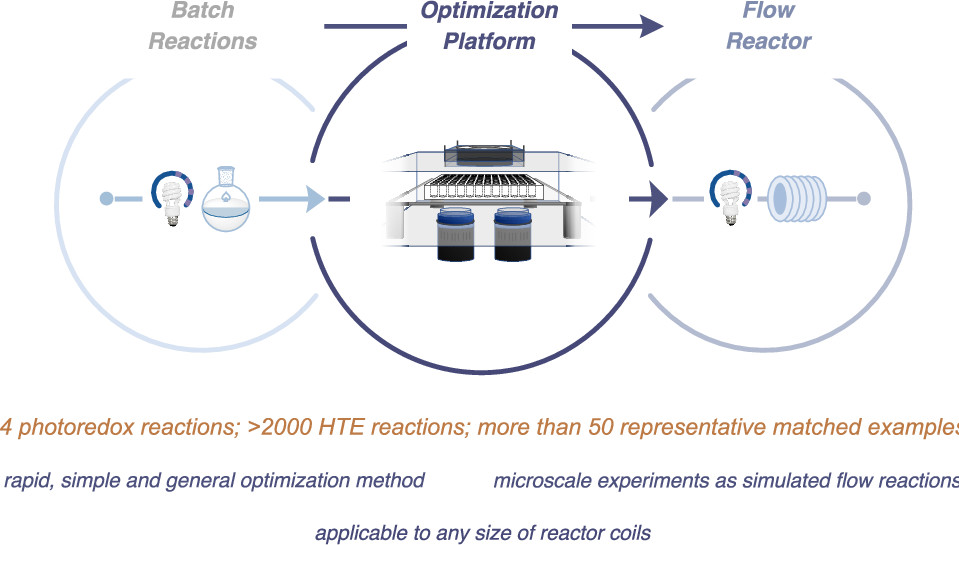 Read the publication that featured this abstract
Read the publication that featured this abstractPhotoredox catalysis has emerged as a powerful and versatile platform for the synthesis of complex molecules. While photocatalysis is already broadly used in small-scale batch chemistry across the pharmaceutical sector, recent efforts have focused on performing these transformations in process chemistry due to the inherent challenges of batch photocatalysis on scale. However, translating optimized batch conditions to flow setups is challenging, and a general approach that is rapid, convenient, and inexpensive remains largely elusive. Herein, we report the development of a new approach that uses a microscale high-throughput experimentation (HTE) platform to identify optimal reaction conditions that can be directly translated to flow systems. A key design point is to simulate the flow-vessel pathway within a microscale reaction plate, which enables the rapid identification of optimal flow reaction conditions using only a small number of simultaneous experiments. This approach has been validated against a range of widely used photoredox reactions and, importantly, was found to translate accurately to several commercial flow reactors. We expect that the generality and operational efficiency of this new HTE approach to photocatalysis will allow rapid identification of numerous flow protocols for scale.
Microfluidic synthesis of CsPbBr3/Cs4PbBr6 nanocrystals for inkjet printing of mini-LEDs
- Zhen Baoa,1
- Jian-Wen Luob,1
- Yu-Sin Wangc
- Ting-Chou Huc
- Sung-Yu Tsaic
- Yi-Ting Tsaid
- Huang-Chia Wangd
- Fu-Hsin Chend
- Yu-Chun Leed
- Tzong-Liang Tsaid
- Ren-Jei Chungb
- Ru-Shi Liua,e
- aDepartment of Chemistry, National Taiwan University, Taipei 106, Taiwan
- bDepartment of Chemical Engineering and Biotechnology, National Taipei University of Technology, Taipei 106, Taiwan
- cChina Glaze Co., Ltd., Hsinchu 310, Taiwan
- dLextar Electronics Corporation, Hsinchu 300, Taiwan
- eAdvanced Research Center of Green Materials Science and Technology, National Taiwan University, Taipei 106, Taiwan
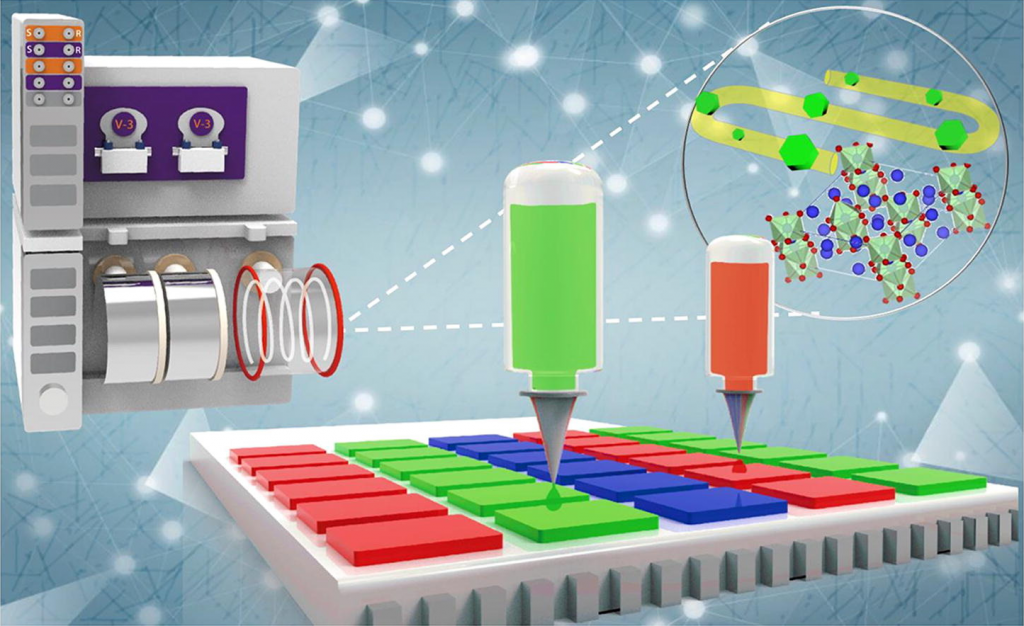 Read the publication that featured this abstract
Read the publication that featured this abstractZero-dimensional Cs4PbX6 (X = Cl, Br, I) perovskite material is recognized as a potential luminescent material and host owing to its excellent optical properties. However, the synthesis of large-scale CsPbBr3/Cs4PbBr6 complex nanocrystals (NCs) is difficult, and their application in mini- or micro-LEDs remains limited. Herein, we applied a microfluidic system for a simple, continuous, and stable synthesis of CsPbBr3/Cs4PbBr6 NCs. The CsPbBr3/Cs4PbBr6 complex NCs were obtained after the optimization of the Cs/Pb precursor ratio and alkaline environment, and their photoluminescent quantum yield is up to 86.9%. These as-synthesized CsPbBr3/Cs4PbBr6 NCs were used to produce a luminescent ink with the optimization of different solvents. This ink was successfully used to print large and high-resolution patterns, and fabricated mini-sized color-converted LED. The narrow green emission of the LED well obeyed the requirements of the Rec. 2020 standard, demonstrating the potential of this material in the inkjet printing applications of color-converted mini- or micro-LED arrays.
Modular allylation of C(sp3)−H bonds by combining decatungstate photocatalysis and HWE olefination in flow
- Luca Capaldo1
- Stefano Bonciolini1
- Antonio Pulcinella1
- Manuel Nuño2
- Timothy Noël1
- 1 Flow Chemistry Group, van ’t Hoff Institute for Molecular Sciences (HIMS), University of Amsterdam, Science Park 904, 1098 XH Amsterdam, The Netherlands
- 2Vapourtec Ltd., Park Farm Business Centre, Fornham St Genevieve, Bury St Edmunds, Suffolk IP28 6TS, United Kingdom
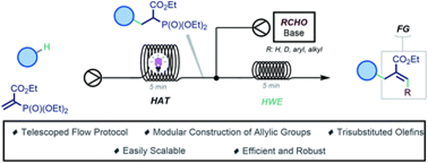 Read the publication that featured this abstract
Read the publication that featured this abstractThe late-stage introduction of allyl groups provides an opportunity to synthetic organic chemists for subsequent diversification, providing rapid access to new chemical space. Here, we report the development of a modular synthetic sequence for the allylation of strong aliphatic C(sp3)–H bonds. Our sequence features the merger of two distinct steps to accomplish this goal, including a photocatalytic Hydrogen Atom Transfer and an ensuing Horner-Wadsworth-Emmons reaction. This practical protocol enables the modular and scalable allylation of valuable building blocks and medicinally relevant molecules.
Decatungstate-mediated C(sp3 )‒H Heteroarylation via Radical Polar Crossover in Batch and Flow
- Ting Wana
- Luca Capaldoa
- Gabriele Laudadioa
- Alexander V. Nyuchevb
- Juan A. Rincónc
- Pablo García-Losadac
- Carlos Mateosc
- Michael O. Frederickd
- Manuel Nuñoe
- Timothy Noël*a
- aFlow Chemistry Group, Van ’t Hoff Institute for Molecular Sciences(HIMS), University of Amsterdam, Science Park 904, 1098 XH, Amsterdam, The Netherlands
- bDepartment of Organic Chemistry, Lobachevsky State University of Nizhny Novgorod Gagarina Avenue 23, 603950, Nizhny Novgorod, Russia
- cCentro de Investigación Lilly S.A. Avda. de la Industria 30, Alcobendas-Madrid 28108, Spain.
- dSmall Molecule Design and Development, Eli Lilly and Company, Indianapolis, Indiana 46285, United States.
- eVapourtec Ltd., Park Farm Business Centre, Fornham St Genevieve, Bury St Edmunds, Suffolk IP28 6TS, United Kingdom.
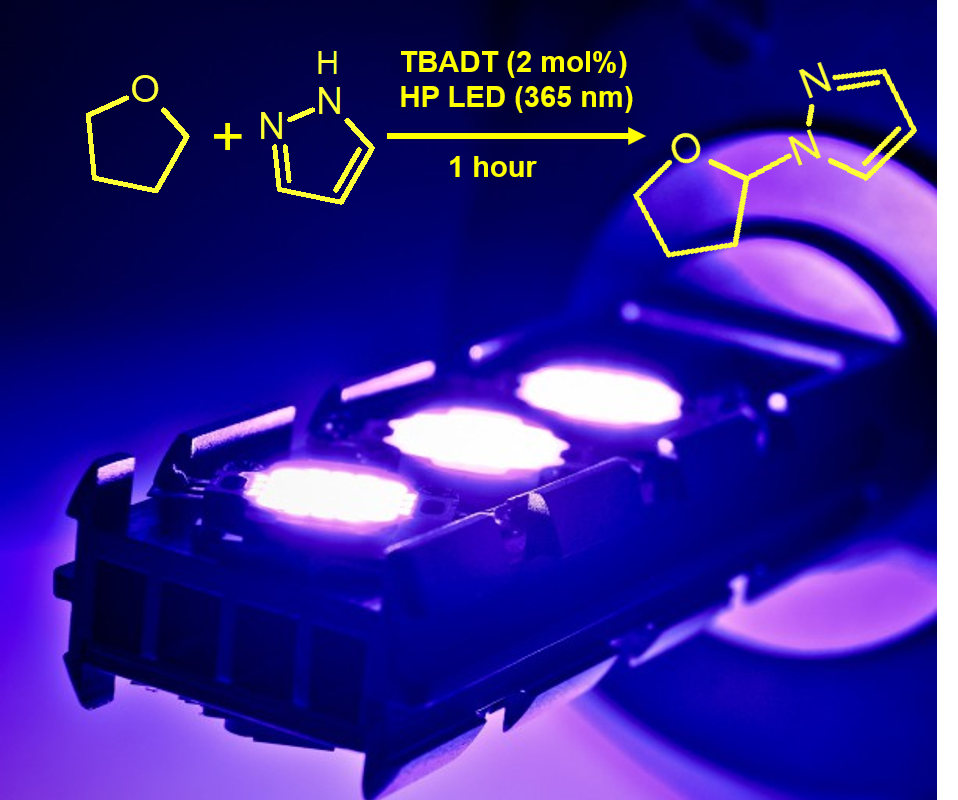 Read the publication that featured this abstract
Read the publication that featured this abstractPhotocatalytic hydrogen atom transfer is a very powerful strategy for the regioselective C(sp3)‒H functionalization of organic molecules. Herein, we report on the unprecedented combination of decatungstate hydrogen atom transfer photocatalysis with the oxidative Radical-Polar Crossover concept to access the direct netoxidative C(sp3)‒H heteroarylation. The present methodology demonstrates a high functional group tolerance (40 examples) and is scalable when using continuous-flow reactor technology. The developed protocol is also amenable to the late-stage functionalization of biologically relevant molecules such as stanozolol, (‒)-ambroxide, podophyllotoxin and dideoxyribose.
Highly Permeable Fluorinated Polymer Nanocomposites for Plasmonic Hydrogen Sensing
- Ida Östergren1, Amir Masoud Pourrahimi1, Iwan Darmadi2, Robson da Silva1, Alicja Stolaś1, Sarah Lerch1, Barbara Berke2, Manuel Guizar-Sicairos3, Marianne Liebi2, Giacomo Foli4, Vincenzo Palermo4,5, Matteo Minelli6, Kasper Moth-Poulsen1, Christoph Langhammer2, and Christian Müller1
- 1Department of Chemistry and Chemical Engineering, Chalmers University of Technology, Göteborg 412 96, Sweden
- 2Department of Physics, Chalmers University of Technology, Göteborg 412 96, Sweden
- 3Paul Scherrer Institut, Villigen PSI 5232, Switzerland
- 4Institute of Organic Synthesis and Photoreactivity, National Research Council, Bologna 40129, Italy
- 5Department of Industrial and Materials Science, Chalmers University of Technology, Göteborg 412 96, Sweden
- 6Department of Civil, Chemical, Environmental and Materials Engineering, Alma Mater Studiorum—University of Bologna, Bologna 40131, Italy
 Read the publication that featured this abstract
Read the publication that featured this abstractHydrogen (H2) sensors that can be produced en masse with cost-effective manufacturing tools are critical for enabling safety in the emerging hydrogen economy. The use of melt-processed nanocomposites in this context would allow the combination of the advantages of plasmonic hydrogen detection with polymer technology; an approach which is held back by the slow diffusion of H2 through the polymer matrix. Here, we show that the use of an amorphous fluorinated polymer, compounded with colloidal Pd nanoparticles prepared by highly scalable continuous flow synthesis, results in nanocomposites that display a high H2 diffusion coefficient in the order of 10–5 cm2 s–1. As a result, plasmonic optical hydrogen detection with melt-pressed fluorinated polymer nanocomposites is no longer limited by the diffusion of the H2 analyte to the Pd nanoparticle transducer elements, despite a thickness of up to 100 μm, thereby enabling response times as short as 2.5 s at 100 mbar (≡10 vol. %) H2. Evidently, plasmonic sensors with a fast response time can be fabricated with thick, melt-processed nanocomposites, which paves the way for a new generation of robust H2 sensors.
Efficient Amino Donor Recycling in Amination Reactions: Development of a New Alanine Dehydrogenase in Continuous Flow and Dialysis Membrane Reactors
- David Roura Padrosa1
- Zoya Nisar2
- Francesca Paradisi1,2
- 1Department of Chemistry and Biochemistry, University of Bern, Freiestrasse 3, 3012 Bern, Switzerland
- 2School of Chemistry, University of Nottingham, University Park, Nottingham NG7 2RD, UK
 Read the publication that featured this abstract
Read the publication that featured this abstractTransaminases have arisen as one of the main biocatalysts for amine production but despite their many advantages, their stability is still a concern for widespread application. One of the reasons for their instability is the need to use an excess of the amino donor when trying to synthesise amines with unfavourable equilibria. To circumvent this, recycling systems for the amino donor, such as amino acid dehydrogenases or aldolases, have proved useful to push the equilibria while avoiding high amino donor concentrations. In this work, we report the use of a new alanine dehydrogenase from the halotolerant bacteria Halomonas elongata which exhibits excellent stability to different cosolvents, combined with the well characterised CbFDH as a recycling system of L-alanine for the amination of three model substrates with unfavourable equilibria. In a step forward, the amino donor recycling system has been co-immobilised and used in flow with success as well as re-used as a dialysis enclosed system for the amination of an aromatic aldehyde.
Iron-catalyzed [4 + 2] annulation of α,β-unsaturated ketoxime acetates with enaminones toward functionalized pyridines
- Jindian Duan
- Gaochen Xu
- Binsen Rong
- Huan Yan
- Sai Zhang
- Qinghuan Wu
- Ning Zhu
- Kai Guo
- College of Biotechnology and Pharmaceutical Engineering, State Key Laboratory of Materials-Oriented Chemical Engineering, Nanjing Tech University, Nanjing, 211816, China
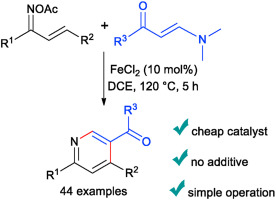 Read the publication that featured this abstract
Read the publication that featured this abstractThe iron-catalyzed [4 + 2] annulation of α,β-unsaturated ketoxime acetates with enaminones has been developed, providing efficient access to highly substituted pyridines in moderate to good yields. Notable features of the present strategy include low-cost catalytic system, simple and mild reaction condition and wide substrate scope. Mechanistic studies reveal that FeCl2 may directly serve as a Lewis acid to activate the α,β-unsaturated ketoxime acetates for the nucleophilic addition.
Enzyme-electrochemical continuous flow cascades synthesis of substituted benzimidazoles
- Ting-Ting Shia,b
- Shu-Zhan Wanga
- Zhao Yangc
- Yilin Wanga
- Chengkou Liua
- Wei He*a
- Zheng Fang*a,d
- Kai Guoad
- aCollege of Biotechnology and Pharmaceutical Engineering, Nanjing Tech University, Nanjing 211816, P. R. China.
- bDepartment of Chemistry, Bengbu Medical College, 233030, P. R. China.
- cSchool of Engineering, China Pharmaceutical University, No.639 Longmian Avenue, Nanjing 211198, China
- dState Key Laboratory of Materials-Oriented Chemical Engineering, Nanjing Tech University, Nanjing 211816, P. R. China.
 Read the publication that featured this abstract
Read the publication that featured this abstractA green and efficient method for the synthesis of substituted benzimidazoles has been developed in a two-step continuous flow system. Enzyme-electrochemical cascade reactions between aromatic alcohols with o-phenylenediamines is reported. The reaction was performed under mild reaction conditions with air as “green” oxidant and oxidase as biocatalyst. Alcohols oxidation and substituted benzimidazoles formation were integrated into a single operation which is usually accomplished separately. The scale up experiment was completed successfully in continuous flow system which offers an industrially relevant, practical and efficient method.
A Practical Transferring Method from Batch to Flow Synthesis of Dipeptides via Acid Chloride Assisted by Simulation of the Reaction Rate
- Masahiro Hosoya
- *Go Shiino
- Naoki Tsuno
- API R&D Laboratory, CMC R&D Division, Shionogi and Co., Ltd., 1-3, Kuise Terajima 2-chome, Amagasaki, Hyogo 660-0813, Japan
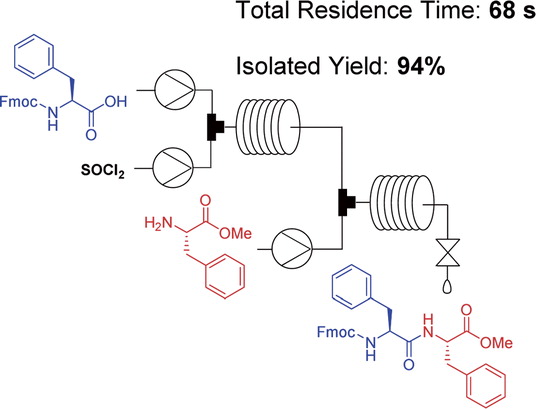 Read the publication that featured this abstract
Read the publication that featured this abstractThis paper proposes a technical approach for seamlessly setting the conditions of continuous flow synthesis from batch data. We directly detected the acid chloride formation from Fmoc-l-Phe-OH in batch using the in-line monitoring technology ReactIR and logically calculated the residence time under continuous flow conditions based on kinetic study. Assisted by this simulation method, the sequential flow operations, which consist of acid chloride formation from Fmoc-l-Phe-OH, cooling and coupling with Fmoc-l-Phe-Cl and H2N-l-Phe-OMe, were completed in approximately 1 min.
Direct detection and quantification of acid chloride was performed by using ReactIR as an in-line monitoring tool. Based on kinetics calculated from the in-line monitoring results, the residence time for acid chloride formation under continuous flow conditions was set. A rapid flow synthesis of a dipeptide via acid chloride was guided by optimized batch conditions.
Synthesis of the Lipophilic Amine Tail of Abediterol Enabled by Multiphase Flow Transformations
- Jorge García-Lacuna1
- Tobias Fleiß1,2
- Rachel Munday3
- Kevin Leslie3
- Anne O’Kearney-McMullan3
- Christopher A. Hone*1,2
- C. Oliver Kappe*1,2
- 1Institute of Chemistry, University of Graz, NAWI Graz, Heinrichstrasse 28, A-8010 Graz, Austria
- 2Center for Continuous Flow Synthesis and Processing (CCFLOW), Research Center Pharmaceutical Engineering GmbH (RCPE), Inffeldgasse 13, 8010 Graz, Austria
- 3Chemical Development, Pharmaceutical Technology & Development, Operations, AstraZeneca, Macclesfield, United Kingdom
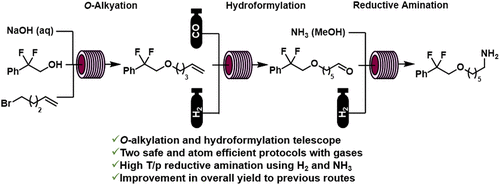 Read the publication that featured this abstract
Read the publication that featured this abstractThe development of a continuous-flow sequence for the synthesis of an important drug candidate precursor is reported. Abediterol is a β2-adrenoceptor agonist that has undergone phase IIa clinical trials for the treatment of respiratory disease. A flow sequence is developed for the preparation of the lipophilic amine tail portion of abediterol. The sequence comprises of a phase-transfer-catalyzed liquid/liquid O-alkylation, a rhodium-catalyzed hydroformylation, and a ruthenium-catalyzed reductive amination. The reactions were optimized separately within continuous-flow environments to identify important parameter effects. The strongly basic O-alkylation operates with greater than 90% conversion within a 23 min residence time. The hydroformylation uses 1 mol % Rh(acac)(CO)2 (acac = acetylacetone) as a catalyst and 6 mol % Xantphos as a ligand with 1.1 equiv of hydrogen and carbon monoxide. The optimized O-alkylation and hydroformylation telescoped flow process was successfully operated over 6 h. The protocol is shown to be high yielding for the desired linear aldehyde (75% gas chromatography yield, ∼2.5 g/h). The sequence requires a solvent switch prior to the reductive amination. The final step is a high-pressure (40 bar) and high-temperature (150 °C) Ru-catalyzed reductive amination using ammonia and hydrogen to afford the amine tail. The solution yield for the formation of the amine tail was 78%. The yield of the reductive amination with an unoptimized isolation was 50%, resulting in an overall isolated yield for the three-step sequence of 38%. This compares favorably against the batch yield of 26% using a different synthetic route.
The CO2 photoconversion over reduced graphene oxide based on Ag/TiO2 photocatalyst in an advanced meso-scale continuous-flow photochemical reactor
- Samar Nabil1
- Ahmed S. Hammad2
- Haitham M. El-Bery3
- Elsayed A. Shalaby1
- Ahmed H. El-Shazly4,5
- 1Department of Environmental Studies, Institute of Graduate Studies and Research, Alexandria University, Alexandria, 21526, Egypt
- 2Chemical Engineering Department, Faculty of Engineering, Port Said University, Port Said, Egypt
- 3Advanced Functional Materials Laboratory, Chemistry Department, Faculty of Science, Assiut University, Assiut, 71515, Egypt
- 4Chemical and Petrochemicals Engineering Department, Egypt-Japan University of Science and Technology, Alexandria, 21934, Egypt
- 5Chemical Engineering Department, Faculty of Engineering, Alexandria University, Alexandria, 21544, Egypt
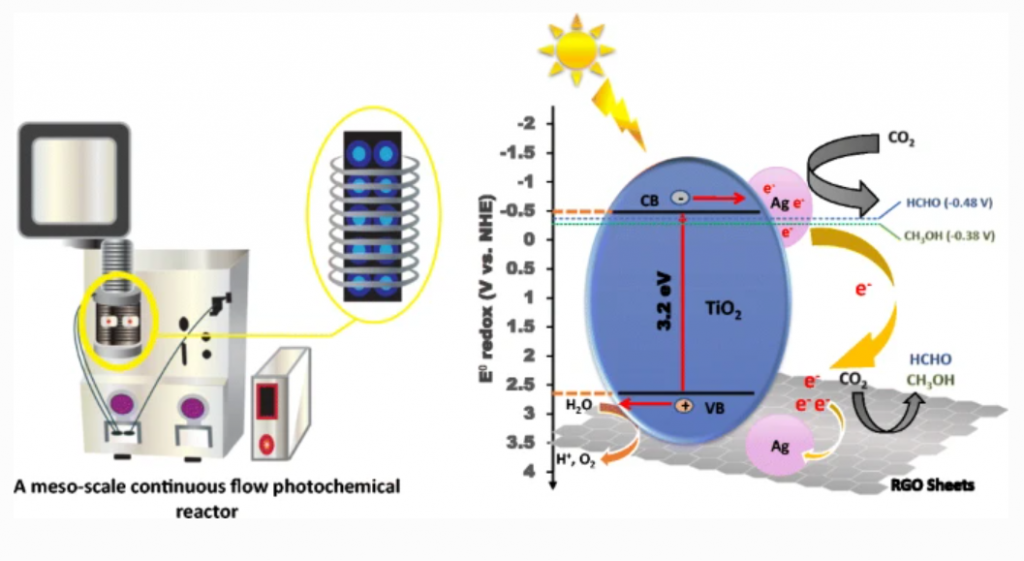 Read the publication that featured this abstract
Read the publication that featured this abstractThis study aims at examining the use of an advanced meso-scale continuous-flow photochemical reactor for the photocatalytic conversion of CO2 with water into fuel over TiO2 (P25), Ag/TiO2, and Ag/TiO2/RGO catalysts. The silver loaded photocatalysts were prepared by one-step process via hydrothermal method. The prepared photocatalysts were characterized by various characterization techniques in order to identify the morphological, chemical, physical, and optical properties. The photocatalytic activity of the as-prepared catalysts was firstly examined by the photoelectrochemical (PEC) measurements and secondly by the photocatalytic reduction of CO2 in the proposed setup. Liquid products were analyzed using gas chromatography-mass spectrometry (GC-MS) and total organic carbon (TOC) techniques. It was found that the ternary composite revealed an outstanding performance towards CO2 photocatalytic reduction, where its selectivity was directed towards methanol production. The incorporation of graphene nanosheets enhanced the photocatalytic reduction of CO2 by 3.3 and 9.4 times compared with Ag/TiO2 and bare TiO2, respectively, using the proposed photochemical reactor in a continuous mode. This study sheds the light on a novel type of a photocatalytic reactor where CO2 conversion over Ag/TiO2/RGO ternary composite was evaluated.
Entropy-driven binding of gut bacterial β-glucuronidase inhibitors ameliorates irinotecan-induced toxicity
- Hsien-Ya Lin1,2,7
- Chia-Yu Chen1,2,7
- Ting-Chien Lin1,2,7
- Lun-Fu Yeh1
- Wei-Che Hsieh1
- Shijay Gao1
- Pierre-Alain Burnouf3
- Bing-Mae Chen3
- Tung-Ju Hsieh1
- Punsaldulam Dashnyam1
- Yen-Hsi Kuo1
- Zhijay Tu1
- Steve R. Roffler3,4
- Chun-Hung Lin1,2,5,6
- 1Institute of Biological Chemistry, Academia Sinica, Taipei, Taiwan
- 2Department of Chemistry, National Taiwan University, Taipei, Taiwan
- 3Institute of Biomedical Sciences, Academia Sinica, Taipei, Taiwan
- 4Graduate Institute of Medicine, College of Medicine, Kaohsiung Medical University, Kaohsiung, Taiwan
- 5Institute of Biochemical Sciences, National Taiwan University, Taipei, Taiwan
- 6The Genomics Research Center, Academia Sinica, Taipei, Taiwan
- 7These authors contributed equally
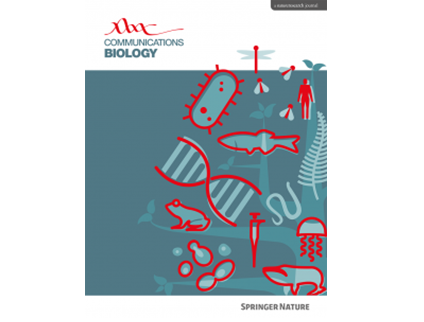 Read the publication that featured this abstract
Read the publication that featured this abstractIrinotecan inhibits cell proliferation and thus is used for the primary treatment of colorectal cancer. Metabolism of irinotecan involves incorporation of β-glucuronic acid to facilitate excretion. During transit of the glucuronidated product through the gastrointestinal tract, an induced upregulation of gut microbial β-glucuronidase (GUS) activity may cause severe diarrhea and thus force many patients to stop treatment. We herein report the development of uronic isofagomine (UIFG) derivatives that act as general, potent inhibitors of bacterial GUSs, especially those of Escherichia coli and Clostridium perfringens. The best inhibitor, C6-nonyl UIFG, is 23,300-fold more selective for E. coli GUS than for human GUS (Ki = 0.0045 and 105 μM, respectively). Structural evidence indicated that the loss of coordinated water molecules, with the consequent increase in entropy, contributes to the high affinity and selectivity for bacterial GUSs. The inhibitors also effectively reduced irinotecan-induced diarrhea in mice without damaging intestinal epithelial cells.
Enantio-Complementary Continuous-Flow Synthesis of 2-Aminobutane Using Covalently Immobilized Transaminases
- Christian M. Heckmanna
- Beatriz Dominguezb
- Francesca Paradisia,c
- aSchool of Chemistry, University of Nottingham, University Park, Nottingham, NG7 2RD, United Kingdom
- bJohnson Matthey, 28 Cambridge Science Park, Milton Road, Cambridge, CB4 0FP, United Kingdom
- cDept. of Chemistry and Biochemistry, University of Bern, Freiestrasse 3, CH-3012, Bern, Switzerland
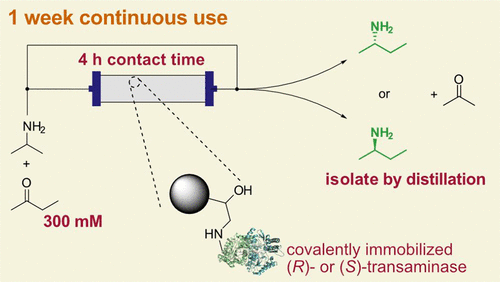 Read the publication that featured this abstract
Read the publication that featured this abstractChiral amines are a common feature of many active pharmaceutical ingredients. The synthesis of very small chiral amines is particularly challenging, even via biocatalytic routes, as the level of discrimination between similarly sized R-groups must be exceptional, yet their synthesis creates attractive building blocks that may then be used to prepare diverse compounds in further steps. Herein, the synthesis of one of the smallest chiral amines, 2-aminobutane, using transaminases, is being investigated. After screening a panel of mainly wild-type transaminases, two candidates were identified: an (S)-selective transaminase from Halomonas elongata (HEwT) and a precommercial (R)-selective transaminase from Johnson Matthey (*RTA-X43). Notably, a single strategic point mutation enhanced the enantioselectivity of HEwT from 45 to >99.5% ee. By covalently immobilizing these candidates, both enantiomers of 2-aminobutane were synthesized on a multigram scale, and the feasibility of isolation by distillation without the need for any solvents other than water was demonstrated. The atom economy of the process was calculated to be 56% and the E-factors (including waste generated during enzyme expression and immobilization) were 55 and 48 for the synthesis of (R)-2-aminobutane and (S)-2-aminobutane, respectively.
A Machine Learning‐Enabled Autonomous Flow Chemistry Platform for Process Optimization of Multiple Reaction Metrics
- Dr. Mohammed I. Jeraala
- Dr. Simon Sunga
- Prof. Alexei A. Lapkina,b
- aCambridge Centre for Advanced Research and Education in Singapore Ltd., 1 Create Way, CREATE Tower #05-05, 138602 Singapore
- bDepartment of Chemical Engineering and Biotechnology, University of Cambridge, Cambridge, CB3 0AS UK
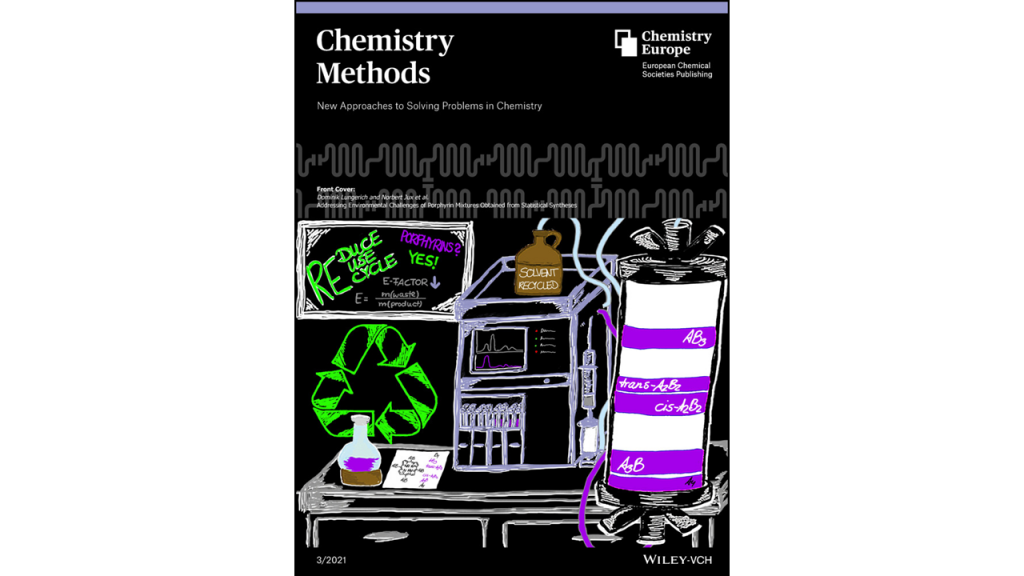 Read the publication that featured this abstract
Read the publication that featured this abstractSelf‐optimization of chemical reactions using machine learning multi‐objective algorithms has the potential to significantly shorten overall process development time, providing users with valuable information about economic and environmental factors. Using the Thompson Sampling Efficient Multi‐Objective (TS‐EMO) algorithm, the self‐optimization flow chemistry system in this report demonstrates the ability to identify optimum reaction conditions and trade‐offs (Pareto fronts) between conflicting optimization objectives, such as yield, cost, space‐time yield, and E‐factor, in a data efficient manner. Advantageously, the robust system consists of exclusively commercially available equipment and a user‐friendly MATLAB graphical user interface, and was shown to autonomously run 131 experiments over 69 hours uninterrupted.
Enzymatic esterification of lauric acid to give monolaurin in a microreactor
- Shanshan Miao
- Xin Li
- College of Biotechnology and Pharmaceutical Engineering, Nanjing Tech University, Nanjing, P.R. China
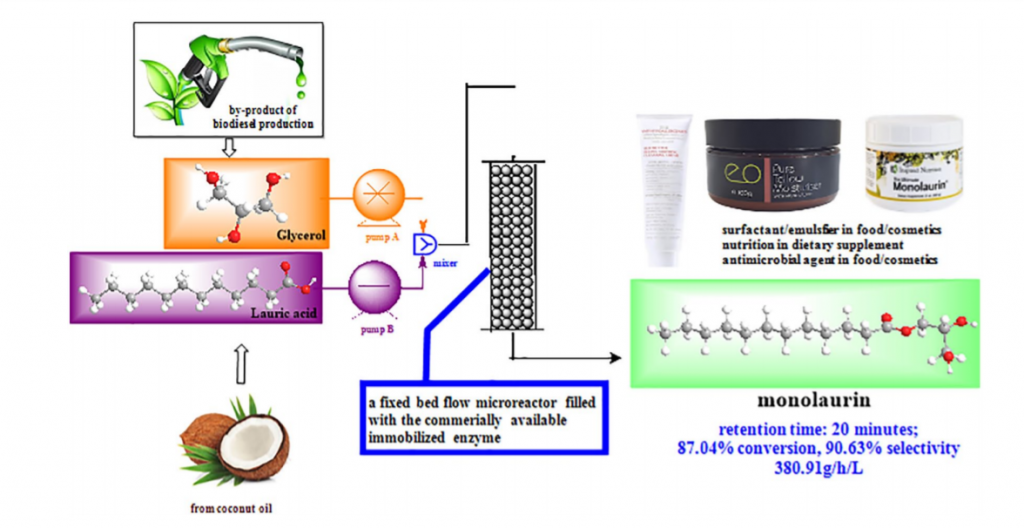 Read the publication that featured this abstract
Read the publication that featured this abstractMonolaurin is a naturally occurring compound widely utilized in food and cosmetics. In this paper, we present a new method for the synthesis of monolaurin by esterification between lauric acid and glycerol catalyzed by Novozym® 435 using a microreactor. The conversion of lauric acid is 87.04% in 20min, compared with 70.54% via the batch approach in 5 h. Using an optimized solvent system consisting of t-BuOH/tert-amyl alcohol (1:1, v/v), the selectivity using the microreactor method is enhanced to 90.63% and the space–time yield of the process is 380.91 g/h/L. This newly devised method has the potential for application to other multiphase and enzymatic reactions.
A continuous flow synthesis of [1.1.1]propellane and bicyclo[1.1.1]pentane derivatives
- Kian Donnelly
- Marcus Baumann
- School of Chemistry, University College Dublin, Science Centre South, Belfield, Ireland
 Read the publication that featured this abstract
Read the publication that featured this abstractA continuous flow process to generate [1.1.1]propellane on demand is presented rendering solutions of [1.1.1]propellane that can directly be derivatised into various bicyclo[1.1.1]pentane (BCP) species. This was realised in throughputs up to 8.5 mmol h−1 providing an attractive and straightforward access to gram quantities of selected BCP building blocks. Lastly, a continuous photochemical transformation of [1.1.1]propellane into valuable BCPs bearing mixed ester/acyl chloride moieties was developed.
A Process for Making Brominating Agents in Flow
Inventors:, Dermaut, Wim (Mortsel, BE), Cappuyns, Bart (Mortsel, BE), Moens, Matthias (Mortsel, BE), Stevens, Christian (Mortsel, BE)
- Assignee:
- AGFA NV
- UNIVERSITEIT GENT
Read the publication that featured this abstractA process for making a brominating agent includes the step of continuously feeding a bromide source and an oxidizing agent into a continuous flow reactor.
Dimethyl Fumarate: Heterogeneous Catalysis for the Development of an Innovative Flow Synthesis
- Fabiana Dedè1
- Oreste Piccolo2
- Daniele Vigo1
- 1Cambrex Profarmaco Milano S.r.l., via Curiel 34, 20067 Milan, Paullo, Italy
- 2Studio di Consulenza scientifica, via Bornò 5, 23896 Lecco, Sirtori, Italy
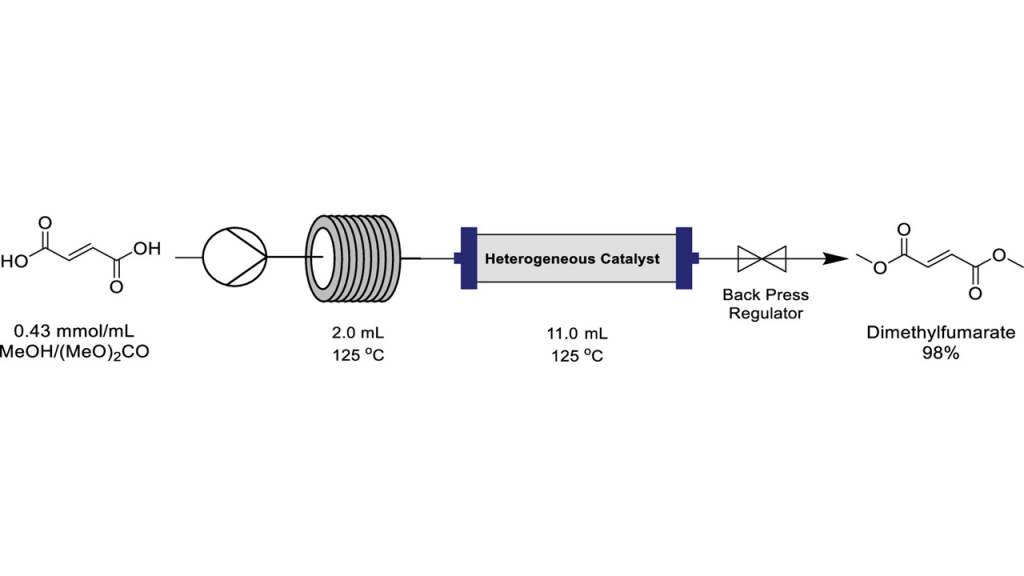 Read the publication that featured this abstract
Read the publication that featured this abstractThe present work describes the development of an improved synthesis of the active pharmaceutical ingredient (API) dimethyl fumarate. The use of continuous flow technology and the newly developed methylation conditions solve some of the issues of previous commercial production strategies, e.g., reaching complete conversion and avoiding the formation of toxic impurities. The optimization was carried out using the design of experiment approach and afforded a very efficient, sustainable process, suitable for the industrial application.
Flow Biocatalysis 101: design, development and applications
- Ana I. Benítez-Mateos
- Martina Letizia Contente
- David Roura Padrosa
- Francesca Paradisi
- Department of Chemistry and Biochemistry University of Bern, Freiestrasse 3, Bern (Switzerland)
 Read the publication that featured this abstract
Read the publication that featured this abstractThe integration of enzyme-catalyzed reactions in flow systems has been boosted during the last few years. Flow chemistry has been proposed in modern synthetic chemistry as a technology for process intensification. On the other hand, biocatalysis is officially recognized as a tool to increase reaction specificity and sustainability, however applications are sometimes characterized by low productivity. A logical step to improve the performance of biocatalytic reactions is represented by the combination of enzymes and flow facilities. This tutorial review aims at introducing the key concepts of flow biocatalysis, guiding the reader through its advantages and highlighting the current trends in the field to encourage innovative applications of enzymes in flow reactors.
Coupling biocatalysis with high-energy flow reactions for the synthesis of carbamates and β-amino acid derivatives
- Alexander Leslie1
- Thomas S. Moody2,3
- Megan Smyth2
- Scott Wharry2
- Marcus Baumann1
- 1School of Chemistry, University College Dublin, D04 N2E2, Ireland
- 2Almac Group Ltd., Craigavon BT63 5QD, United Kingdom
- 3Arran Chemical Company, Athlone, Co. Roscommon N37 DN24, Ireland
 Read the publication that featured this abstract
Read the publication that featured this abstractA continuous flow process is presented that couples a Curtius rearrangement step with a biocatalytic impurity tagging strategy to produce a series of valuable Cbz-carbamate products. Immobilized CALB was exploited as a robust hydrolase to transform residual benzyl alcohol into easily separable benzyl butyrate. The resulting telescoped flow process was effectively applied across a series of acid substrates rendering the desired carbamate structures in high yield and purity. The derivatization of these products via complementary flow-based Michael addition reactions furthermore demonstrated the creation of β-amino acid species. This strategy thus highlights the applicability of this work towards the creation of important chemical building blocks for the pharmaceutical and speciality chemical industries.
Development of a Continuous Photochemical Benzyne-Forming Process
- Cormac Brackena
- Andrei S. Batsanovb
- Marcus Baumanna
- aSchool of Chemistry, University College Dublin, Science Centre South, D04 N2E2, Dublin, Ireland
- bDepartment of Chemistry, University of Durham, South Road, DH1 3LE, Durham, UK
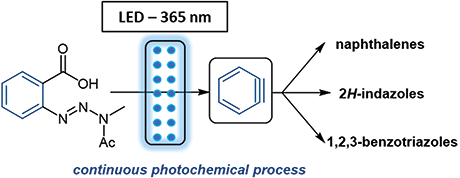 Read the publication that featured this abstract
Read the publication that featured this abstractA continuous-flow process is presented that enables the safe generation and derivatization of benzyne under photochemical conditions. This is facilitated by a new high-power LED lamp emitting light at 365 nm. The resulting flow process effectively controls the release of gaseous by-products based on an adjustable backpressure regulator and delivers a series of heterocyclic products in a short residence time of 3 minutes. The robustness of this methodology is demonstrated for the rapid generation of benzotriazoles, 2H-indazoles and various furan-derived adducts, facilitating the preparation of these important heterocyclic scaffolds via a simple and readily scalable flow protocol.
Photocatalytic (Het)arylation of C(sp3)–H Bonds with Carbon Nitride
- Saikat Dasa
- Kathiravan Murugesana
- Gonzalo J. Villegas Rodrígueza
- Jaspreet Kaura
- Joshua. P. Barhama
- Aleksandr Savateevb
- Markus Antoniettib
- Burkhard Königa
- aFakultät für Chemie und Pharmazie, Universität Regensburg, 93040 Regensburg, Germany
- bDepartment of Colloid Chemistry, Max-Planck Institute of Colloids and Interfaces, Research Campus Golm, 14424 Potsdam, Germany
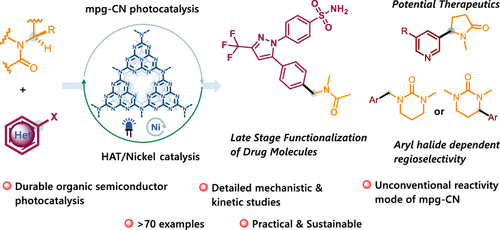 Read the publication that featured this abstract
Read the publication that featured this abstractGraphitic carbon nitride materials have attracted significant interest in recent years and found applications in diverse light-to-energy conversions such as artificial photosynthesis, CO2 reduction, or degradation of organic pollutants. However, their utilization in synthetic photocatalysis, especially in the direct functionalization of C(sp3)–H bonds, remains underexplored. Herein, we report mesoporous graphitic carbon nitride (mpg-CN) as a heterogeneous organic semiconductor photocatalyst for direct arylation of C(sp3)–H bonds in combination with nickel catalysis. Our protocol has a broad synthetic scope (>70 examples including late-stage functionalization of drugs and agrochemicals), is operationally simple, and shows high chemo- and regioselectivities. Facile separation and recycling of the mpg-CN catalyst in combination with its low preparation cost, innate photochemical stability, and low toxicity are beneficial features overcoming typical shortcomings of homogeneous photocatalysis. Detailed mechanistic investigations and kinetic studies indicate that an unprecedented energy-transfer process (EnT) from the organic semiconductor to the nickel complex is operating.
The rise of continuous flow biocatalysis – fundamentals, very recent developments and future perspectives
- Piera De Santisa
- Lars-Erik Meyera
- Selin Karaa
- aAarhus University, Department of Engineering, Biological and Chemical Engineering Section, Biocatalysis and Bioprocessing Group, Gustav Wieds Vej 10, DK 8000 Aarhus, Denmark
 Read the publication that featured this abstract
Read the publication that featured this abstractBiocatalysis community has witnessed a drastic increase in the number of studies for the use of enzymes in continuously operated flow reactors. This significant interest arose from the possibility of combining the strengths of the two worlds: enhanced mass transfer and resource efficient synthesis achieved in flow chemistry at micro-scales and excellent selectivities obtained in biocatalysis. Within this review, we present very recent (from 2018 to September 2020) developments in the field of biocatalysis in continuously operated systems. Briefly, we describe the fundamentals of continuously operated reactors with a special focus on enzyme-catalyzed reactions. We devoted special attention on future perspectives in this key emerging technological area ranging from process analytical technologies to digitalization.
Corymbia citriodora: A Valuable Resource from Australian Flora for the Production of Fragrances, Repellents, and Bioactive Compounds
- Tyler Goodinea
- Michael Oelgemöllera,b
- aJames Cook University, College of Science and Engineering, 1 James Cook Drive, 4811 Townsville, Queensland, Australia
- bGhent University, Department of Organic and Macromolecular Chemistry, Krijgslaan 281 S4, 9000 Gent, Belgium
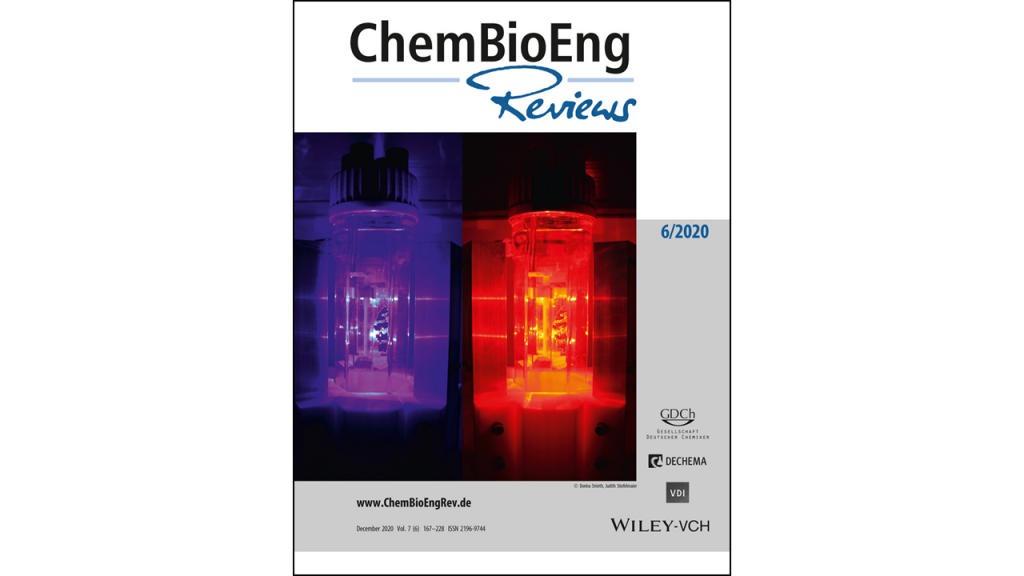 Read the publication that featured this abstract
Read the publication that featured this abstractAs global chemical manufacturing has historically relied on inexpensive feedstocks from the petrochemical industry, the identification of new naturally derived feedstocks represents an important and sustainable alternative. This review introduces Corymbia citriodora (Hook.) K.D.Hill & L.A.S.Johnson as an attractive renewable resource of natural compounds for organic chemical transformations. Although native to Australia, this plant species is now grown and harvested worldwide. The chemical composition of citriodora oils varies with location, harvesting season and age of leaves. Beyond their historic uses as fragrances or repellents, the more abundant terpenes found in citriodora oils such as citronellal, citronellol, and isopulegol have notable roles in the manufacture of fine chemicals. This review highlights several industrial processes intimately related to the citriodora terpenes, some advances in fragrances and repellents, as well as the use of these terpenes in the most recently reported synthesis of bioactive compounds. Where relevant, processes highlighting the adoption of green chemistry principles are presented and briefly discussed.
Combining Radial and Continuous Flow Synthesis to Optimize and Scale-up the Production of Medicines
- Mara Guidia,b
- Sooyeon Moona,b
- Lucia Anghileria,b
- Dario Cambiéa
- Peter H. Seeberger*a,b
- Kerry Gilmore*a,c
- aDepartment of Biomolecular Systems Max Planck Institute of Colloids and Interfaces Am Mühlenberg 1, 14476 Potsdam (Germany)
- bDepartment of Chemistry and Biochemistry Freie Universität Berlin Arnimallee 22, 14195 Berlin (Germany)
- cUniversity of Connecticut, Storrs, CT 06269 (United States)
 Read the publication that featured this abstract
Read the publication that featured this abstractCurrent drug production in batch cannot adapt rapidly to market demands, evidenced by recent shortages in many markets globally of essential medicines. Flow chemistry is a valuable tool for on-demand production of active pharmaceutical ingredients (APIs). Here, we reveal a new concept to develop and produce APIs, where an automated synthesizer that works with discrete volumes of solutions is employed at the discovery stage to identify the optimal synthetic route and conditions before a commercially available continuous flow system is used for scale-up. This concept is illustrated by the synthesis of nifedipine and paracetamol, in short supply in Germany during the COVID-19 pandemic, and the local anesthetic lidocaine.
Additive manufacturing of intricate and inherently photocatalytic flow reactor components
- Adilet Zhakeyeva,b
- Mary C.Jonesb
- Christopher G.Thomsonb
- John M.Tobinc
- Huizhi Wangd
- Filipe Vilelab
- Jin Xuana
- aDepartment of Chemical Engineering, Loughborough University, Loughborough, LE11 3TU, UK
- bSchool of Engineering and Physical Sciences, Heriot-Watt University, Edinburgh, EH14 4AS, UK
- cSchool of Chemistry, The University of Edinburgh, Edinburgh, EH9 3FJ, UK
- dDepartment of Mechanical Engineering, Imperial College London, Exhibition Road, South Kensington Campus, London, SW7 2AZ, UK
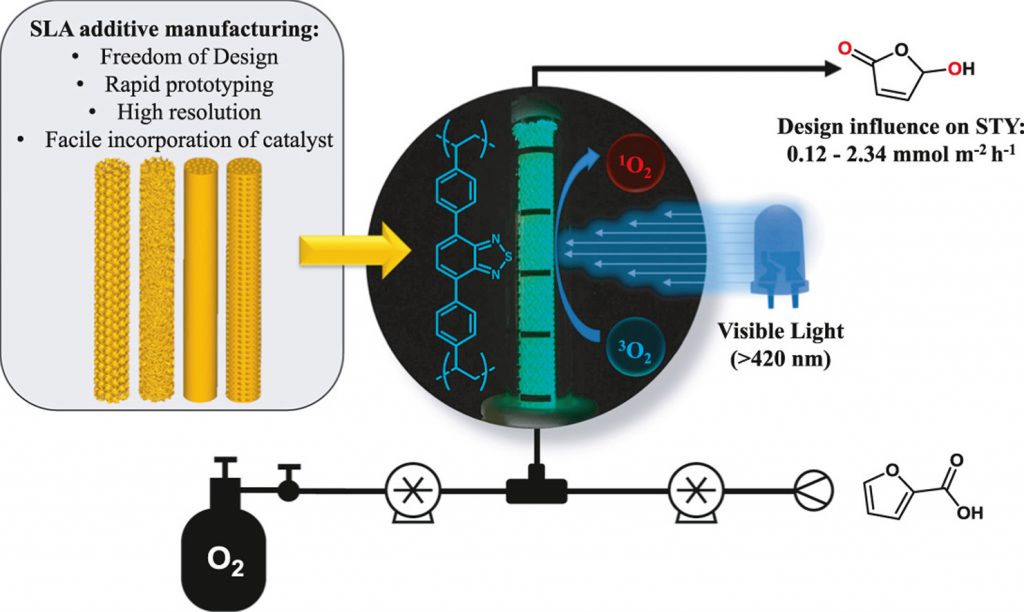 Read the publication that featured this abstract
Read the publication that featured this abstractA 2,1,3-benzothiadiazole-based photosensitiser has been successfully incorporated into a commercially available 3D printing resin and utilised to fabricate inherently photocatalytic flow reactor components. The freedom of design provided by additive manufacturing enabled the production of photoactive monolith structures with intricate architectures, imparting functionality for heterogeneous photocatalysis and interesting manipulation of fluid dynamics within a fixed bed reactor column. The resultant monoliths were applied and validated in the photosensitisation of singlet oxygen in aqueous media, under continuous flow conditions and visible light irradiation (420 nm). The photo-generated singlet oxygen cleanly converted furoic acid to the γ-lactone, 5-hydroxy-5H-furan-2-one, with a peak space-time yield of 2.34 mmol m-2 h-1 achieved using the Voronoi monolith.
Continuous Flow Synthesis and Antimicrobial Evaluation of NHC* Silver Carboxylate Derivatives of SBC3 in vitro and in vivo
- Cillian O’Beirne†a
- Magdalena E. Piatekb
- Jen Fossenc
- Helge Müller-Bunza
- David R. Andesc
- Kevin Kavanaghb
- Siddappa A. Patild
- Marcus Baumanna
- Matthias Tacke†a
- aSchool of Chemistry, University College Dublin, Belfield, Stillorgan, Dublin 4, Republic of Ireland
- bSSPC Pharma Research Centre, Department of Biology, Maynooth University, Maynooth, W23F2H6, Co. Kildare, Republic of Ireland
- cJ. Fossen, Prof. D. R. Andes, Department of Medicine, 600 Highland Avenue, University of Wisconsin, Madison, USA
- dCentre for Nano and Material Sciences, Jain University, Bangalore, Karnataka, India
 Read the publication that featured this abstract
Read the publication that featured this abstractN-Heterocyclic silver carbene compounds have been extensively studied and shown to be active agents against a host of pathogenic bacteria and fungi. By incorporating hypothesised virulence targeting substituents into NHC-silver systems via salt metathesis, an atom efficient complexation process can used to develop new complexes to target the passive and active systems of a microbial cell. The incorporation of fatty acids and an FtsZ inhibitor have been achieved, and creation of both the intermediate salt and subsequent silver complex has been streamlined into a continuous flow process. Biological evaluation was conducted with in vitro toxicology assays showing these novel complexes had excellent inhibition against Gram-negative strains E. coli, P. aeruginosa and K. pneumonia; further studies also confirmed the ability to inhibit biofilm formation in Methicillin-resistant S. aureus and C. Parapsilosis. In vivo testing using a murine thigh infection model showed promising inhibition of MRSA for the lead compound SBC3, which is derived from 1,3-dibenzyl-4,5-diphenylimidazol-2-ylidene(NHC*).
γ-Amino phosphonates via the photocatalytic α-C–H alkylation of primary amines
- James D. Grayson
- Alexander J. Cresswell
- Department of Chemistry, University of Bath, 1 South, Claverton Down, Bath, BA2 7AY, UK
 Read the publication that featured this abstract
Read the publication that featured this abstractWe report a simple photocatalytic protocol for the direct synthesis of γ-amino phosphonates via the α-C–H alkylation of unprotected, aliphatic primary amines with diethyl vinylphosphonate. These motifs are valuable bioisosteres of γ-amino acids and O-phosphorylated amino alcohols. Visible-light photoredox catalysis in combination with hydrogen atom transfer (HAT) catalysis is used to access the necessary α-amino radical intermediates for C–C bond formation. The procedure is also demonstrated on gram-scale in continuous flow for the synthesis of a racemic, protected derivative of the mGlu agonist 2-amino-4-phosphonobutyric acid (AP4).
Development and Proof of Concept for a Large-Scale Photoredox Additive-Free Minisci Reaction
- Mark A. Graham*a
- Gary Noonan*a
- Janette H. Cherrymana
- Miguel Gonzalezb
- Lucinda V. Jacksona
- Kevin Lesliea
- Zhi-qing Liub
- David McKinneya
- Rachel H. Mundaya
- Chris D. Parsonsc
- David T. E. Whittakerc
- En-xuan Zhangb
- Jun-wang Zhangb
- aChemical Development, Pharmaceutical Technology & Development, Operations, AstraZeneca, Macclesfield SK10 2NA, U.K.
- bAsymchem Laboratories (Tianjin) Co. Ltd., TEDA, Tianjin 300457, P. R. China
- cEarly Chemical Development, Pharmaceutical Sciences, R&D, AstraZeneca, Macclesfield SK10 2NA, U.K.
 Read the publication that featured this abstract
Read the publication that featured this abstractNew route development activities toward ceralasertib (AZD6738) have resulted in the discovery of an efficient, acid additive-free, photoredox Minisci reaction. Mechanistic understanding resulting from LED-NMR reaction profiling, quantum yield measurements, and Stern–Volmer quenching studies have enabled optimization of the catalyst system, resulting in a significant enhancement in the rate of reaction. A large-scale continuous photoflow process has been developed, providing encouraging proof-of-concept data for the future application of this technology in the clinical manufacture of ceralasertib.
Achieving selectivity in porphyrin bromination through a DoE-driven optimization under continuous flow conditions
- Paolo Zardi
- Michele Maggini
- Tommaso Carofiglio
- Dipartimento di Scienze Chimiche, Università degli Studi di Padova, Via Marzolo 1, 35131, Padova, Italy
 Read the publication that featured this abstract
Read the publication that featured this abstractThe post-functionalization of porphyrins through the bromination in β position of the pyrrolic rings is a relevant transformation because the resulting bromoderivatives are useful synthons to covalently link a variety of chemical architectures to a porphyrin ring. However, single bromination of porphyrins is a challenging reaction for the abundancy of reactive β-pyrrolic positions in the aromatic macrocycle. We herein report a synthetic procedure for the efficient preparation of 2-bromo-5,10,15,20-tetraphenylporphyrin (1) under continuous flow conditions. The use of flow technology allows to reach an accurate control over critical reaction parameters such as temperature and reaction time. Furthermore, by performing the optimization process through a statistical DoE (Design of Experiment) approach, these parameters could be properly adjusted with a limited number of experiments. This process led us to a better understanding of the relevant factors that govern porphyrins monobromination and to obtain compound 1 with an unprecedent 80% yield.
A scalable continuous photochemical process for the generation of aminopropylsulfones
- Stefano Bonciolinia
- Mara Di Filippoa
- Marcus Baumanna
- aSchool of Chemistry, University College Dublin, Science Centre South, Belfield, Ireland
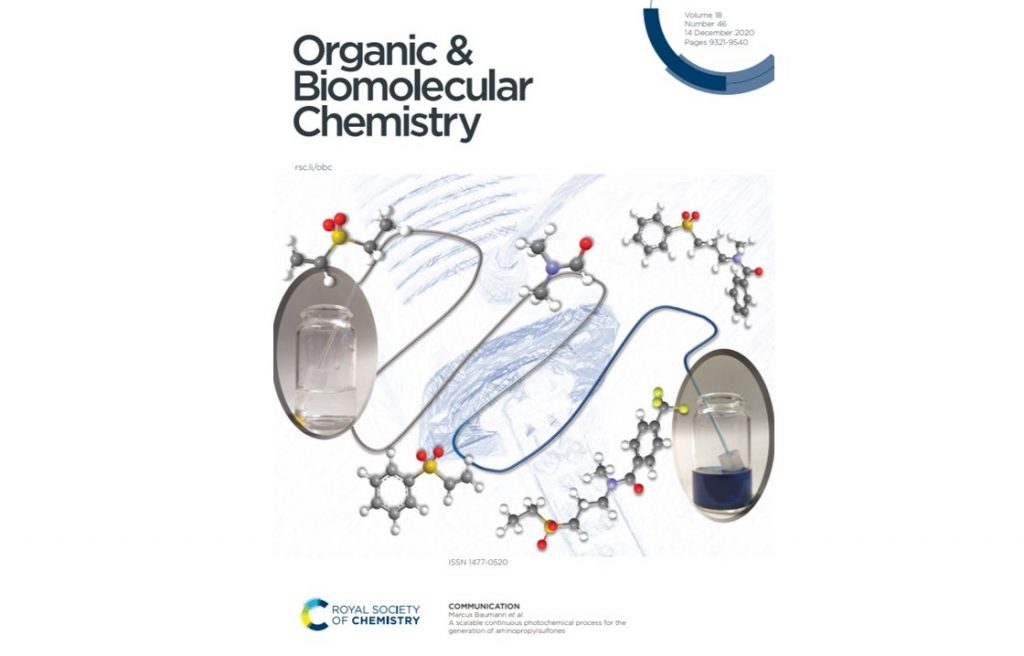 Read the publication that featured this abstract
Read the publication that featured this abstractAn efficient continuous photochemical process is presented that delivers a series of novel γ-aminopropylsulfones via a tetrabutylammonium decatungstate (TBADT) catalysed HAT-process. Crucial to this success is the exploitation of a new high-power LED emitting at 365 nm that was found to be superior to an alternative medium-pressure Hg lamp. The resulting flow process enabled the scale-up of this transformation reaching throughputs of 20 mmol h−1 at substrate concentrations up to 500 mM. Additionally, the substrate scope of this transformation was evaluated demonstrating the straightforward incorporation of different amine substituents as well as alkyl appendages next to the sulfone moiety. It is anticipated that this methodology will allow for further exploitations of these underrepresented γ-aminopropylsulfone scaffolds in the future.
Recent Advances in Continuous-Flow Reactions Using Metal-Free Homogeneous Catalysts
- Naoto Sugisawa1,2
- Hiroyuki Nakamura>1
- Shinichiro Fuse3
- 1Laboratory for Chemistry and Life Science, Institute of Innovative Research, Tokyo Institute of Technology, Yokohama 226-8503, Japan
- 2School of Life Science and Technology, Tokyo Institute of Technology, Yokohama 226-8501, Japan
- 3Graduate School of Pharmaceutical Sciences, Nagoya University, Nagoya 464-8601, Japan
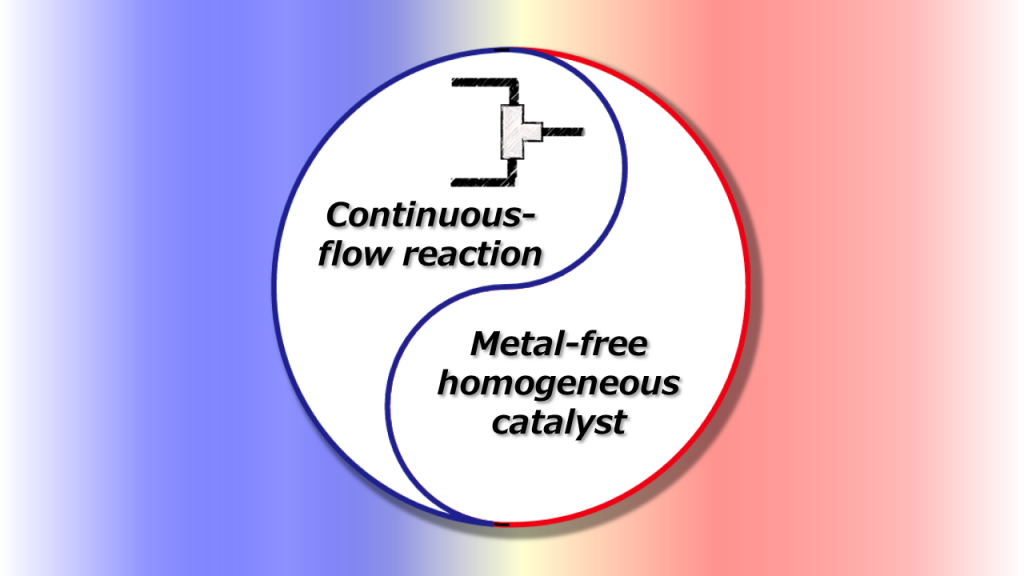 Read the publication that featured this abstract
Read the publication that featured this abstractDevelopments that result in high-yielding, low-cost, safe, scalable, and less-wasteful processes are the most important goals in synthetic organic chemistry. Continuous-flow reactions have garnered much attention due to many advantages over conventional batch reactions that include precise control of short reaction times and temperatures, low risk in handling dangerous compounds, and ease in scaling up synthesis. Combinations of continuous-flow reactions with homogeneous, metal-free catalysts further enhances advantages that include low-cost and ready availability, low toxicity, higher stability in air and water, and increased synthetic efficiency due to the avoidance of the time-consuming removal of toxic metal traces. This review summarizes recently reported continuous-flow reactions using metal-free homogeneous catalysts and classifies them either as acidic catalysts, basic catalysts, or miscellaneous catalysts. In addition, we compare the results between continuous-flow conditions and conventional batch conditions to reveal the advantages of using flow reactions with metal-free homogeneous catalysts.
Continuous Flow Photo-RAFT and Light-PISA
- Jian Wanga,c
- Xin Hub,c
- Ning Zhua,c
- Kai Guoc
- aCollege of Biotechnology and Pharmaceutical Engineering, Nanjing Tech University, Nanjing, Jiangsu 211800, China
- bCollege of Materials Science and Engineering, Nanjing Tech University, Nanjing, Jiangsu 211800, China
- cState Key Laboratory of Materials-Oriented Chemical Engineering, Nanjing Tech University, Nanjing, Jiangsu 211800, China
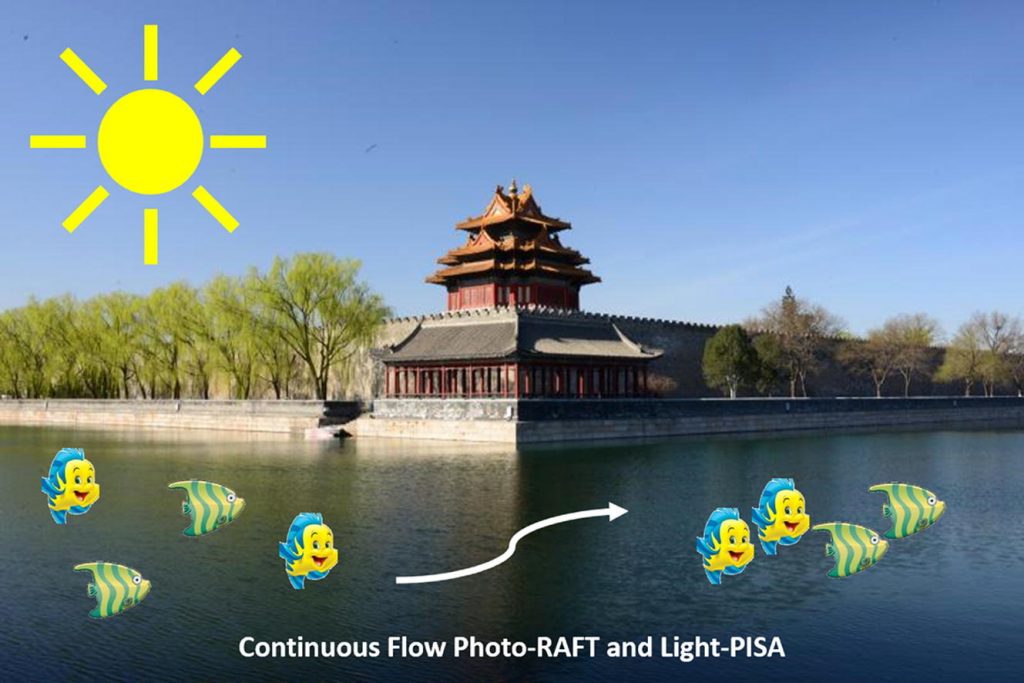 Read the publication that featured this abstract
Read the publication that featured this abstractThe combinations of microflow technology and photo-induced reversible-addition fragmentation chain transfer polymerization (photo-RAFT) and light-mediated polymerization-induced self-assembly (light-PISA) have enabled distinguished advantages that cannot be done in the traditional batch reactor. Recently, well-defined polymers with precise chemical and topological structures, and advanced nano-objects with high-order morphologies have been reported by using microreactor-based photo-RAFT and light-PISA strategies. In this mini-review, continuous flow photoiniferter polymerization, RAFT with photoinitiator, and PET-RAFT are summarized in order. Moreover, the emerging light-PISA in microflow is introduced, and finally, the remained challenges are proposed for the discussion of opportunities. We hope it would provide insights into flow chemistry, polymer precision synthesis, and nanoscience.
Tandem Continuous Flow Curtius Rearrangement and Subsequent Enzyme-Mediated Impurity Tagging
- Marcus Baumann1
- Alexander Leslie1
- Thomas S. Moody2, 3
- Megan Smyth*2
- Scott Wharry2
- 1School of Chemistry, Science Centre, University College Dublin, South Belfield, Dublin 4, Ireland
- 2Almac Group Ltd., 20 Seagoe Industrial Estate, Craigavon BT63 5QD, United Kingdom
- 3Arran Chemical Company, Unit 1 Monksland Industrial Estate, Athlone, Co. Roscommon N37 DN24, Ireland
 Read the publication that featured this abstract
Read the publication that featured this abstractThe use of continuous flow as an enabling technology within the fine chemical and pharmaceutical industries continues to gain momentum. The associated safety benefits with flow for handling of hazardous or highly reactive intermediates are often exploited to offer industrially relevant and scalable Curtius rearrangements. However, in many cases the Curtius rearrangement requires excess nucleophile for the reaction to proceed to high conversions. This can complicate work procedures to deliver high-purity products. However, tandem processing and coupling of the Curtius rearrangement with an immobilized enzyme can elegantly facilitate chemoselective tagging of the residual reagent, resulting in a facile purification process under continuous flow.
An open source toolkit for 3D printed fluidics
Adam J. N. Price1, Andrew J. Capel2, Robert J. Lee1, Patrick Pradel3, Steven D. R. Christie1
- 1School of Science, Loughborough University, Loughborough LE11 3TU, UK
- 2School of Sport, Exercise and Health Sciences, Loughborough University, Loughborough LE11 3TU, UK
- 3Design School, Loughborough University, Loughborough LE11 3TU, UK
Read the publication that featured this abstractAs 3D printing technologies become more accessible, chemists are beginning to design and develop their own bespoke printable devices particularly applied to the field of flow chemistry. Designing functional flow components can often be a lengthy and laborious process requiring complex 3D modelling and multiple design iterations. In this work, we present an easy to follow design workflow for minimising the complexity of this design optimization process. The workflow follows the development of a 3D printable ‘toolkit’ of common fittings and connectors required for constructing basic flow chemistry configurations. The toolkit components consist of male threaded nuts, junction connectors and a Luer adapter. The files have themselves been made freely available and open source. The low cost associated with the toolkit may encourage educators to incorporate flow chemistry practical work into their syllabus such that students may be introduced to the principles of flow chemistry earlier on in their education and furthermore, may develop an early appreciation of the benefits of 3D printing in scientific research. In addition to the printable toolkit, the use of the 3D modelling platform – Rhino3D has been demonstrated for its application in fluidic reactor chip design modification. The simple user interface of the programme reduces the complexity and workload involved in printable fluidic reactor design.
Bicyclic Quinazolinone Derivatives
Inventors:, Hert, Jerome (Basel, CH), Hunziker, Daniel (Basel, CH), Kuratli, Christoph (Basel, CH), Martin, Rainer E. (Basel, CH), Mattei, Patrizio (Basel, CH), Satz, Alexander Lee (Basel, CH)
- Assignee: Hoffmann-La Roche Inc. (Little Falls, NJ, US)
Read the publication that featured this abstractThe invention provides novel compounds having the general formula (I) – Figure shown in link to paper
Characterization of reaction enthalpy and kinetics in a microscale flow platform.
- Agnieszka Ladosz
- Christina Kuhnle
- Klavs F Jensen
- Department of Chemical Engineering, Massachusetts Institute of Technology, 77 Massachusetts Avenue, Cambridge, MA 02139, USA
 Read the publication that featured this abstract
Read the publication that featured this abstractWe report an isothermal flow calorimeter for characterization of reaction enthalpy and kinetics. The platform consists of a thermoelectric element and a glass-silicon microreactor to measure heat flux and an inline IR spectrometer to monitor reaction conversion. The thermally insulated assembly is calibrated with a thin film heater placed between the microreactor and the thermoelectric element. Without any reconfiguration of hardware, the setup can also be used to efficiently characterize reaction kinetics in transient flow experiments. We tested the calorimeter with hydrolysis of acetic anhydride as a model reaction. We determined the exothermic reaction enthalpy and the endothermic heat of mixing of the reagent to be -63 +/- 3.0 kJ/mol and +8.8 +/-2.1 kJ/mol respectively, in good agreement with literature values and theoretical predictions. Following calorimetry studies, we investigated reaction kinetics by applying carefully controlled residence time ramps at four different temperatures, and we obtained kinetic rate constants of 0.129 min-1 up to 0.522 min-1 for temperatures between 20°C to 56.3°C, also fitting well with data reported in literature.
Photochemical Flow Oximation of Alkanes
- Oliver M. Griffithsa, b
- Michele Ruggeria
- Ian R. Baxendale∗a
- aDepartment of Chemistry, University of Durham, South Road, Durham, Durham, DH1 3LE, UK
- bDepartment of Chemistry, Cambridge University, South Road, Cambridge, Cambridgeshire, CB2 1EW, UK
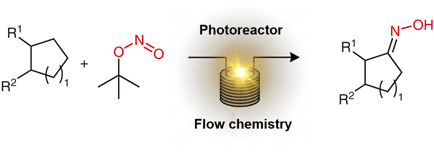 Read the publication that featured this abstract
Read the publication that featured this abstractThe nitrosation of several alkanes using tert-butyl nitrite has been performed in flow showing a remarkable reduction in the reaction time compared with batch processing. Due to the necessity for large excesses of the alkane component a continuous recycling process was devised for the preparation of larger quantities of material.
Development of a packed-bed flow process for the production scale hydrogenation of 7-oxo-lithocholic acid to ursodeoxycholic acid
- Seung Jae Lee1, 2
- Yashwardhan R. Malpani2
- Il Won Kim1
- 1Department of Chemical Engineering, Soongsil University, 369 Sangdo-ro, Dongjak-gu 06978 Seoul, Republic of Korea
- 2API Synthesis Team, Daewoong-Bio, 29-Jeyakdanji-ro, Hyangnam-eup, Hwaseung-si, Gyeonggi-do 18608, Republic of Korea
 Read the publication that featured this abstract
Read the publication that featured this abstractA continuous flow process for the synthesis of ursodeoxycholic acid (UDCA) from 7-oxo-lithocholic acid (7-oxo-LCA) through catalytic hydrogenation was developed from the lab scale to the final production scale. Various parameters, such as catalyst, solvent, base equivalence, feed flow rate, temperature, and pressure, were optimized under the flow conditions suitable for the final production in the pilot and production scale. Heterogeneous Raney-Ni catalyst was optimal in terms of conversion ratio and stereoselectivity when solvent and base equivalence were 2-propanol and > 1.5, respectively. It was employed under the packed-bed flow conditions with hydrogen gas. The scale-up was carried out up to 155 kg lot production scale. The developed process has an advantage over the widely used alkali metal reduction of 7-oxo-LCA to UDCA being more convenient and safer. Also, it produces UDCA with high stereoselectivity (> 23) and a fast production rate (> 4 kg/h). The synthesized product is suitable for the recrystallization to generate a high purity UDCA (> 99.5%) in a sufficient isolation yield (ca. 70%). Overall a production scale continuous process for UDCA was realized in a highly efficient manner.
A Vilsmeier Chloroformylation by Continuous Flow Chemistry
- Manuel Carrera1
- Laurens De Coen1
- Michelle Coppens2
- Wim Dermaut2
- Christian V. Stevens2
- 1Department of Green Chemistry and Technology, Faculty of Bioscience Engineering, Ghent University, Campus Coupure, Coupure Links 653, Gent B-9000, Belgium
- 2Agfa-Gevaert NV, Septestraat 27, Mortsel B-2640, Belgium
 Read the publication that featured this abstract
Read the publication that featured this abstractChloroformylation reactions are versatile reactions that allow the introduction of a chlorine atom and an aldehyde group in enolizable ketones, employing the well-known Vilsmeier reagent. However, the use of this unstable reagent is usually associated with hazards, especially when it is used on an industrial scale. The present article describes the preparation and use of the Vilsmeier reagent under continuous flow conditions for the preparation of an important intermediate in the synthesis of cyanine dyes. In addition, the traditionally used dimethylformamide has been substituted with more desirable formamides, together with the removal of the halogenated solvent usually employed in the reaction. Consequently, the optimized conditions allow the continuous production of the target compound in a 79–81% isolated yield in a more environmentally friendly, fast, and secure manner.
Exploration of continuous flow benchtop NMR acquisition parameters and considerations for reaction monitoring
- Tristan Maschmeyer
- Paloma L. Prieto
- Shad Grunert Jason E. Hein
- Department of Chemistry, University of British Columbia, Vancouver, British Columbia, Canada
 Read the publication that featured this abstract
Read the publication that featured this abstractThis study focused on fundamental data acquisition parameter selection for a benchtop nuclear magnetic resonance (NMR) system with continuous flow, applicable for reaction monitoring. The effect of flow rate on the mixing behaviors within a flow cell was observed, along with an exponential decay relationship between flow rate and the apparent spin–lattice relaxation time (T1*) of benzaldehyde. We also monitored sensitivity (as determined by signal‐to‐noise ratios; SNRs) under various flow rates, analyte concentrations, and temperatures of the analyte flask. Results suggest that a maximum SNR can be achieved with low to medium flow rates and higher analyte concentrations. This was consistent with data collected with parameters that promote either slow or fast data acquisition. We further consider the effect of these conditions on the analyte’s residence time, T1*, and magnetic field inhomogeneity that is a product of continuous flow. Altogether, our results demonstrate how fundamental acquisition parameters can be manipulated to achieve optimal data acquisition in continuous‐flow NMR systems.
Predicting performance of photochemical transformations for scaling up in different platforms by combining high-throughput experimentation with computational modeling
- Melda Sezen-Edmonds1,‡,*
- Jose E. Tabora1‡
- Benjamin M. Cohen1
- Serge Zaretsky1
- Eric M. Simmons1
- Trevor C. Sherwood2
- Antonio Ramirez1
- 1Chemical Process Development, Bristol Myers Squibb, 1 Squibb Drive, New Brunswick, New Jersey 08903, United States
- 2Discovery Chemistry, Bristol Myers Squibb, Lawrenceville, New Jersey 08543, United States
- ‡These authors contributed equally to this work.
 Read the publication that featured this abstract
Read the publication that featured this abstractUsing light to drive a chemical transformation introduces challenges for ensuring the robust transferability of photochemical reactions across different platforms and scales. We demonstrate a modeling tool to predict the performance of a photochemical reaction as a function of reactor geometry, concentration of the photoactive species, irradiance of the light source, and the residence time. High throughput experimentation is utilized to optimize reaction conditions, and to determine kinetic parameters and quantum yield. Optical characterization of the photoactive reaction species and the reactor is performed to determine photon absorption rate. The experimental data is combined with computational modeling to predict photochemical conversion for different vial or flow reactors across multiple scales for a [2+2] photocycloaddition reaction and a photoredox-mediated decarboxylative intramolecular arene alkylation reaction. The method developed in this work facilitates the transferability of the photochemical processes between different photoreactors without the need for an intensive experimental optimization for each, and enables a robust and efficient scale-up.
Application of a Dual Catalytic Nickel/Iridium-Based Photoredox Reaction to Synthesize 2-Alkyl-N-Arylindoles in a Continuous Flow
- Jasmin C. Wilson
- Michael J. Boyd
- Simon Giroux
- Upul K. Bandarage*
- Vertex Pharmaceuticals Incorporated, 50 Northern Avenue, Boston, Massachusetts 02210, United States
 Read the publication that featured this abstract
Read the publication that featured this abstractA versatile one-pot procedure for the preparation of 2-alkyl-substituted N-arylindoles is described. The method combines a visible light-mediated Ni/Ir-photoredox dual catalytic N-arylation of alkynyl anilines under continuous flow conditions with a subsequent base-mediated cyclization to afford the desired substituted indoles. The initial Ni/Ir photoredox-promoted N-arylation of alkynylanilines proceeds efficiently in a continuous flow to afford the desired products in moderate to excellent yields with a short residence time (20 min) and mild conditions at ambient temperature and without the exclusion of air. The methodology was amenable for a multi-gram scale-up to deliver 2-alkyl-N-arylindoles in high yields followed with only a single purification step.
Convenient Continuous Flow Synthesis of N-Methyl Secondary Amines from Alkyl Mesylates and Epoxides
- Gary Mathieu
- Heena Patel
- Hélène Lebel
- Department of Chemistry and Center in Green Chemistry and Catalysis (CGCC), Université de Montréal, P.O. Box 6128, Station, Downtown, Montréal, QC H3C 3J7, Canada
 Read the publication that featured this abstract
Read the publication that featured this abstractThe first continuous flow process was developed to synthesize N-methyl secondary amines from alkyl mesylates and epoxides via a nucleophilic substitution using aqueous methylamine. A variety of N-methyl secondary amines were produced in good to excellent yields, including a number of bioactive compounds, or their precursors. Up to 10.6 g (88% yield) of a N-methyl secondary amine was produced in 140 min process time. The amination procedure included an in-line workup, and the starting mesylate material was also produced in continuous flow from the corresponding alcohol. Finally, an in-line process combining the mesylate synthesis and nucleophilic substitution was developed.
Synthesis of metal-organic frameworks (MOFs) and its application in food packaging: A critical review
- P.S.Sharanyakanth
- R.Mahendran
- Centre of Excellence in Nonthermal Processing, Indian Institute of Food Processing Technology (IIFPT), Pudukkottai Road, Thanjavur, India
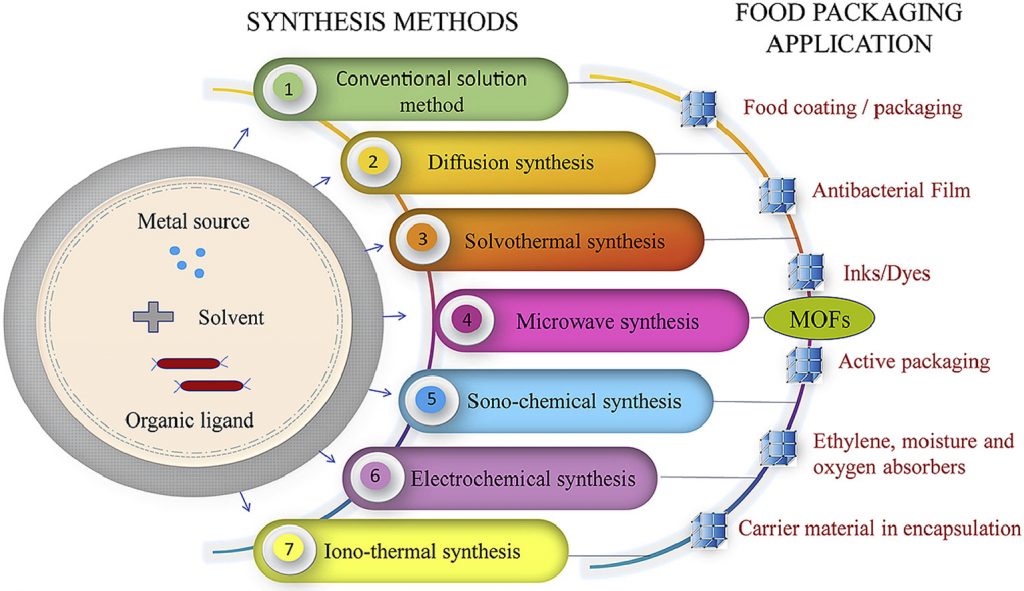 Read the publication that featured this abstract
Read the publication that featured this abstractBackground
Food product safety, especially at the consumer level, is a major concern around the world. Maintaining product safety from processing to acceptable consumption level is very necessary to avoid the negative effect on human health. The addition of functional material such as Metal-organic frameworks (MOFs) into food packaging material creates a path to ensure product safety.Scope and approach
The role of food packaging can be improvised with the help of other unique technology incorporation such as MOFs, with a group of functional materials possessing unique chemical and physical properties, significantly promising towards food safety due to its high surface area and porous structure. The current review deals with the application of MOF in food packaging, its different synthesis methods, toxicity, future perspectives, and potential purpose in food packaging.Key findings and conclusion
MOFs act as active agents, especially in active food packaging, by improving shelf-life, quality, and maintaining the safety of packed foods. Incorporation of MOFs into packaging material in different forms supervised the progress in the field of food packaging to ensure product safety with the perspective of implementing novel solutions in the food supply chain. Antimicrobial properties, active molecule removal, and dishonestly labeled food products are some of the challenges faced in traditional food packaging; thus, the emergence of new materials such as MOFs can be a remedy to overcome these challenges. Properties such as good biocompatibility and non-reacting behavior with the host have made MOFs be an integral part of food packaging.
Flow chemistry as a tool to access novel chemical space for drug discovery
- Enol Lópeza
- María Lourdes Linaresb
- Jesús Alcázarb
- aFacultad de Ciencias y Tecnologías Químicas, Universidad de Castilla-La Mancha, Av. Camilo José Cela, 14, Ciudad Real, 13005, Spain
- bJanssen Research & Development, Janssen-Cilag, S.A., Jarama, 75A, Toledo, 45007, Spain
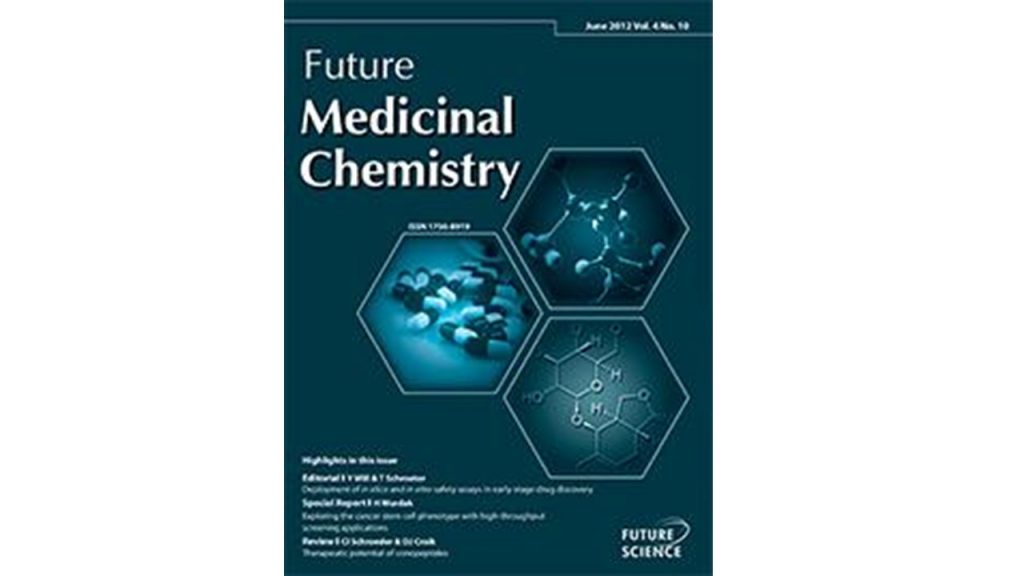 Read the publication that featured this abstract
Read the publication that featured this abstractThis perspective scrutinizes flow chemistry as a useful tool for medicinal chemists to expand the current chemical capabilities in drug discovery. This technology has demonstrated his value not only for the traditional reactions used in Pharma for the last 20 years, but also for bringing back to the lab underused chemistries to access novel chemical space. The combination with other technologies, such as photochemistry and electrochemistry, is opening new avenues for reactivity that will smoothen the access to complex molecules. The introduction of all these technologies in automated platforms will improve the productivity of medicinal chemistry labs reducing the cycle times to get novel and differentiated bioactive molecules, accelerating discovery cycle times.
Continuous flow synthesis of lipophilic cations derived from benzoic acid as new cytotoxic chemical entities in human head and neck carcinoma cell lines
- Mabel Catalán,‡a
- Vicente Castro-Castillo,‡§b
- Javier Gajardo-de la Fuenteb
- Jocelyn Aguilerac
- Jorge Ferreiraa
- Ricardo Ramires-Fernandezd
- Ivonne Olmedoe
- Alfredo Molina-Berríosc
- Charlotte Palominosa
- Marcelo Valenciaa
- Marta Domínguezf
- José A. Souto*f
- José A. Jara*c
- *Corresponding authors
- aClinical and Molecular Pharmacology Program, Institute of Biomedical Sciences (ICBM), Faculty of Medicine, Universidad de Chile, Santiago, Chile
- bDepartment of Organic and Physical Chemistry, Faculty of Chemical and Pharmaceutical Sciences, Universidad de Chile, Santos Dumont 964, Santiago 8380494, Chile
- cInstitute for Research in Dental Sciences (ICOD), Faculty of Dentistry, Universidad de Chile, Santiago, Chile
- dDentistry School, Universidad Mayor, Santiago 8340585, Chile
- ePhysiopathology Program, Institute of Biomedical Sciences (ICBM), Faculty of Medicine, Universidad de Chile, Santiago 8380453, Chile
- fDepartamento de Química Orgánica, Facultad de Química, CINBIO and IIS Galicia Sur, Universidade de Vigo, Vigo, Spain
 Read the publication that featured this abstract
Read the publication that featured this abstractContinuous flow chemistry was used for the synthesis of a series of delocalized lipophilic triphenylphosphonium cations (DLCs) linked by means of an ester functional group to several hydroxylated benzoic acid derivatives and evaluated in terms of both reaction time and selectivity. The synthesized compounds showed cytotoxic activity and selectivity in head and neck tumor cell lines. The mechanism of action of the molecules involved a mitochondrial uncoupling effect and a decrease in both intracellular ATP production and apoptosis induction.
Antibody Conjugation Method
Inventor: Spedaliere, Christopher J. (Allentown, PA, US)
- Assignee: FUJIREBIO DIAGNOSTICS, INC. (MALVERN, PA, US)
Read the publication that featured this abstractProvided herein are methods and materials for making antibody-polypeptide conjugates.
Novel Applications of α-Diazocarbonyl Compounds and Enabling Technologies in Stereoselective Synthesis
Micol Santi
- PhD Thesis, May 2020, Cardiff University
Read the publication that featured this abstractα-Diazocarbonyl compounds are widely used in organic chemistry as versatile carbene precursors which enable concise synthesis towards complex asymmetric molecules. Due to their intrinsic highly energetic nature, flow technology can be applied to ensure safer, scalable and efficient protocols. Other modern enabling tools such as Design of Experiment (DoE) and online analysis, provide great advantages to achieve faster analysis and optimisations of chemical transformations.
Efficient Chemo-Enzymatic Flow Synthesis of High Value Amides and Esters
- Francesca Annunziata1
- Martina Letizia Contente2
- Daniele Betti1
- Cecilia Pinna1
- Francesco Molinari3
- Lucia Tamborini1*
- Andrea Pinto3
- 1Department of Pharmaceutical Sciences (DISFARM), University of Milan, via Mangiagalli 25, 20133 Milan, Italy
- 2School of Chemistry, University of Nottingham, University Park, Nottingham NG7 2RD, UK
- 3 Department of Food, Environmental and Nutritional Sciences (DeFENS), University of Milan, via Celoria 2, 20133 Milan, Italy
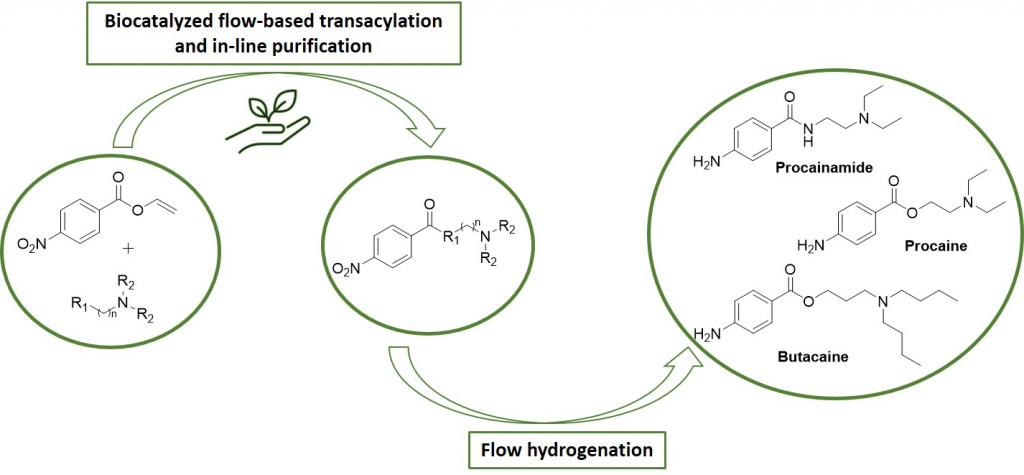 Read the publication that featured this abstract
Read the publication that featured this abstractA flow-based chemo-enzymatic synthesis of selected APIs (i.e., butacaine, procaine and procainamide) has been developed. A bioreactor made of MsAcT, a versatile acyltransferase from Mycobacterium smegmatis, immobilised on glyoxyl–garose, was exploited to efficiently prepare amide and ester intermediates in gram scale. Immobilised MsAcT was employed in pure organic solvent, demonstrating high stability and reusability. In-line purification of the key intermediates using polymer-bound sulphonyl chloride was added after the bioreactor, enhancing the automation of the process. A final hydrogenation step using the H-Cube reactor was further carried out to obtain the selected APIs in excellent yields (>99%), making the process fast, safe and easily handled.
Continuous Flow Synthesis of Quinolines via a Scalable Tandem Photoisomerization-Cyclization Process
- Mara Di Filippo
- Marcus Baumann
- School of Chemistry, University College Dublin, Science Centre South, Belfield, Dublin D04 N2E2, Ireland
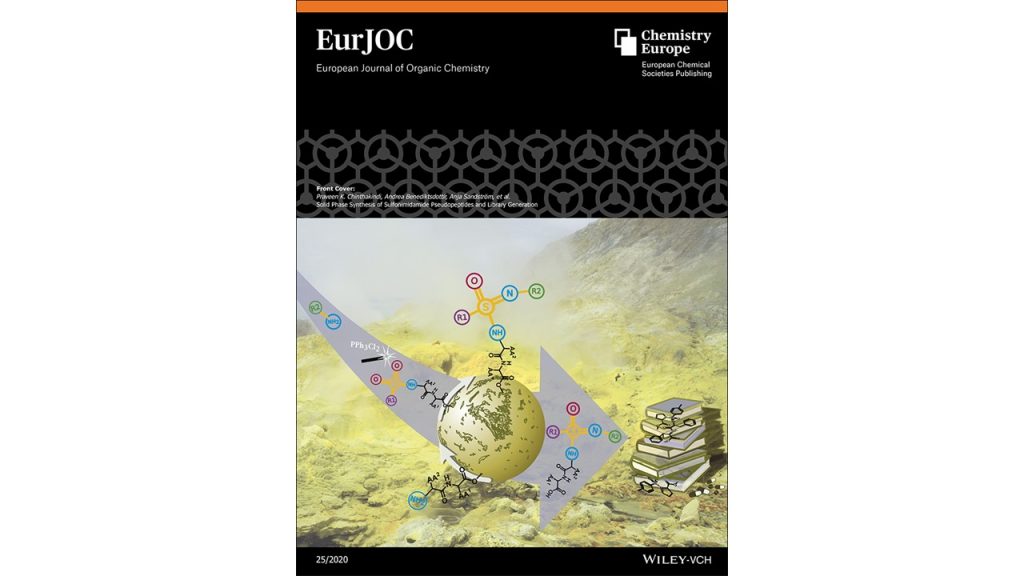 Read the publication that featured this abstract
Read the publication that featured this abstractA continuous photochemical process is presented that renders a series of quinoline products via an alkene isomerization and cyclocondensation cascade. It is demonstrated that a high-power LED lamp generates the desired targets with higher productivity and efficiency than a medium-pressure Hg-lamp. The scope of this tandem process is established and allows for the generation of various substituted quinolines in high yields and with throughputs of greater than one gram per hour. Finally, this effective flow process is coupled with a telescoped hydrogenation reaction to render a series of tetrahydroquinolines including the antimalarial natural product galipinine.
Toward Secure Supply of Remdesivir via a 2-Pot Triazine Synthesis: Supply Centered Synthesis
Dinesh J. Paymodea, Flavio S. P. Cardosoa, Joshua D. Siebera, John W. Tomlina, Daniel W. Cookb, Justina Burnsb, Rodger W. Stringhamb, B. Frank Guptona, David Sneada, Toolika Agrawala
- aChemical Development, Medicines for All Institute, 737 N. 5th St., Box 980100, Richmond VA, 23298-0100
- bAnalytical Development, Medicines for All Institute, 737 N. 5th St., Box 980100, Richmond VA, 23298-0100
Read the publication that featured this abstractPyrrolotriazine 1 is an important precursor to Remdesivir, and an efficient synthesis is disclosed. This route features atom economy and reduced derivatization of starting materials, by making use of highly abundant, commoditized raw material inputs. The yield of triazine was doubled from 31% to 59%, and the synthetic step count was reduced from 4 to 2. A one-pot cascade sequence was developed for direct cyanation of pyrrole. Amination and cyclization with formamidine acetate complete the synthesis. The problematic nature of typically dilute electrophilic aminations was solved with semi-continuous processing. Moreover, development of a continuous platform afforded access to the ideal yet non-commercial aminating reagent, monochloramine. These efforts help to secure the Remdesivir supply chain.
Process of Manufacturing Polyols
Inventors: Raghuraman, Arjun (Pearland, TX, US) Heath, William H. (Lake Jackson, TX, US), Mukhopadhyay, Sukrit (Midland, MI, US), Spinney, Heather A. (Midland, MI, US), Wilson, David R. (Midland, MI, US), Gies, Anthony P. (Lake Jackson, TX, US), Paradkar, Manjiri R. (Lake Jackson, TX, US), Notestein, Justin M. (Evanston, IL, US), Nguyen, Sonbinh T. (Evanston, IL, US)
- Assignees:
- Dow Global Technologies LLC (Midland, MI, US)
- Northwestern University (Evanston, IL, US)
Read the publication that featured this abstractA method of producing a polyether polyol that includes reacting a low molecular weight initiator with one or more monomers in the presence of a polymerization catalyst, the low molecular weight initiator having a number average molecular weight of less than 1,000 g/mol and a nominal hydroxyl functionality at least 2, the one or more monomers including at least one selected from propylene oxide and butylene oxide, and the polymerization catalyst being a Lewis acid catalyst having the general formula M(R1)1(R2)1(R3)1(R4)0 or 1. Whereas, M is boron, aluminum, indium, bismuth or erbium, R1, R2, and R3 each includes a same fluoroalkyl-substituted phenyl group, and optional R4 includes a functional group or functional polymer group. The method further includes forming a polyether polyol having a number average molecular weight of greater than the number average molecular weight of the low molecular weight initiator in the presence of the Lewis acid catalyst.
Accelerating gas–liquid chemical reactions in flow
- Suyong Hana
- Marjan Alsadat Kashfipoura
- Mahdi Ramezania
- Milad Abolhasani*a
- aDepartment of Chemical and Biomolecular Engineering, North Carolina State University, 911 Partners Way, Raleigh, NC, USA
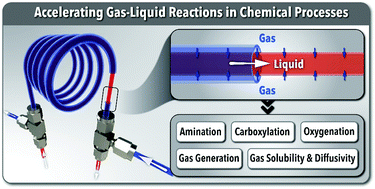 Read the publication that featured this abstract
Read the publication that featured this abstractOver the past decade, continuous flow reactors have emerged as a powerful tool for accelerated fundamental and applied studies of gas–liquid reactions, offering facile gas delivery and process intensification. In particular, unique features of highly gas-permeable tubular membranes in flow reactors (i.e., tube-in-tube flow reactor configuration) have been exploited as (i) an efficient analytic tool for gas–liquid solubility and diffusivity measurements and (ii) reliable gas delivery/generation strategy, providing versatile adaptability for a wide range of gas–liquid processes. The tube-in-tube flow reactors have been successfully adopted for rapid exploration of a wide range of gas–liquid reactions (e.g., amination, carboxylation, carbonylation, hydrogenation, ethylenation, oxygenation) using gaseous species both as the reactant and the product, safely handling toxic and flammable gases or unstable intermediate compounds. In this highlight, we present an overview of recent developments in the utilization of such intensified flow reactors within modular flow chemistry platforms for different gas–liquid processes involving carbon dioxide, oxygen, and other gases. We provide a detailed step-by-step guideline for robust assembly and safe operation of tube-in-tube flow reactors. We also discuss the current challenges and potential future directions for further development and utilization of tubular membrane-based flow reactors for gas–liquid processes.
Manganese-Catalyzed Synthesis of Quaternary Peroxides: Application in Catalytic Deperoxidation and Rearrangement Reactions
- Akash S. Ubale
- Moreshwar B. Chaudhari
- Moseen A. Shaikh
- Boopathy Gnanaprakasam*
- Department of Chemistry, Indian Institute of Science Education and Research, Pune-411008, India.
 Read the publication that featured this abstract
Read the publication that featured this abstractHighly efficient, selective and direct C-H peroxidation of 9-substituted fluorenes has been achieved using Mn-2,2’-bipyridine-catalyst via radical-radical cross-coupling. Moreover, this method effectively promote the vicinal bis-peroxidation of sterically hindered various substituted arylidene-9H-fluorene/arylideneindolin-2-one derivatives to afford highly substituted bisperoxides with high selectivity over the oxidative cleavage of C=C bond that usually form ketone of aldehyde. Furthermore, a new approach for the synthesis of (Z)-6-benzylidene-6H-benzo[c]chromene has been achieved via an acid-catalyzed skeletal rearrangement of these peroxides. For the first time, unlike O-O bond cleavage, reductive C-O bond cleavage in peroxides using Pd-catalyst and H2 is described which enables the reversible reaction to afford exclusively deperoxidised products. A detailed mechanism for peroxidation, molecular rearrangement and deperoxidation has been proposed with preliminary experimental evidences.
Chemoenzymatic Synthesis of Arabinomannane (AM) Glycoconjugates as Potential Vaccines for Tuberculosis
- Zhihao Lia
- Teodora Bavarob
- Sara Tengattinib
- Roberta Bernardinic
- Maurizio Matteic,d
- Francesca Annunziatae
- Richard B. Colea
- Changping Zhenga
- Matthieu Sollogouba
- Lucia Tamborinie
- Marco Terrenib
- Yongmin Zhanga
- aSorbonne Université, CNRS, Institut Parisien de Chimie Moléculaire, UMR 8232, 4 Place Jussieu, 75005 Paris, France.
- bDrug Sciences Department, University of Pavia, Viale Taramelli 12, 27100 Pavia, Italy.
- cItaly Centro Servizi Interdipartimentale – STA, University of Rome “Tor Vergata”, Rome, Italy.
- dDept. of Biology, University of Rome “Tor Vergata”, Rome, Italy.
- eDepartment of Pharmaceutical Sciences, University of Milan, via Mangiagalli 25, 20133 Milan, Italy.
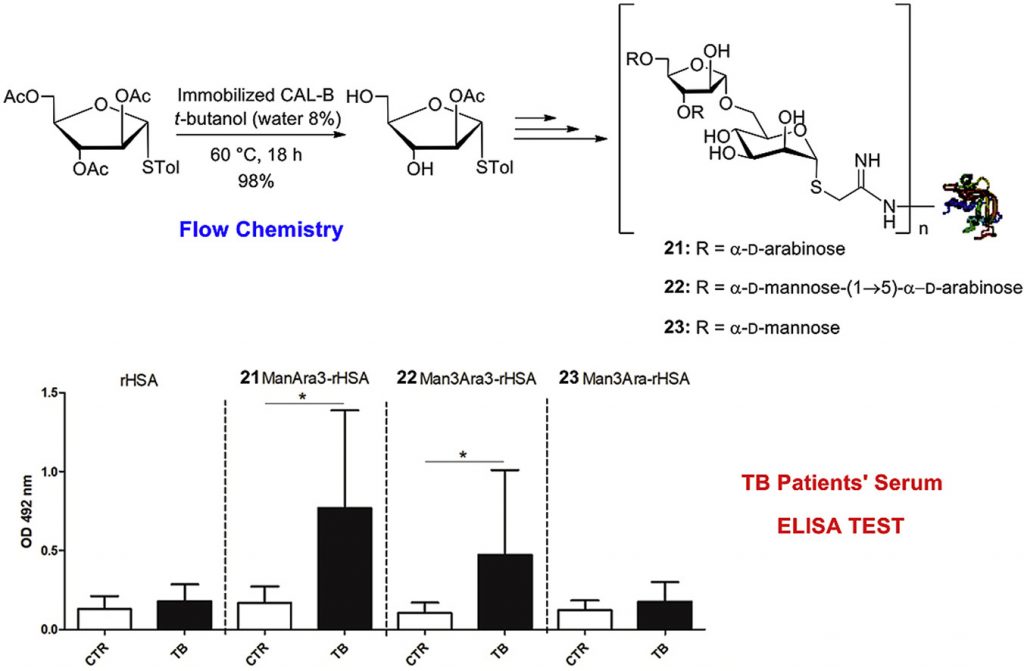 Read the publication that featured this abstract
Read the publication that featured this abstractMycobacteria infection resulting in tuberculosis (TB) is one of the top ten leading causes of death worldwide in 2018, and lipoarabinomannan (LAM) has been confirmed to be the most important antigenic oligosaccharide on the TB cell surface. In this study, a convenient synthetic method has been developed for synthesizing three branched oligosaccharides derived from LAM, in which a core building block was prepared by enzymatic hydrolysis in flow chemistry with excellent yield. After a series of steps of glycosylations, the obtained oligosaccharides were conjugated with recombinant human serum albumin (rHSA) and the ex-vivo ELISA tests were performed using serum obtained from several TB-infected patients, in order to evaluate the affinity of the glycoconjugate products for the human LAM-antibodies. The evaluation results are positive, especially compound 21 that exhibited excellent activity which could be considered as a lead compound for the future development of a new glycoconjugated vaccine against TB.
Automation of Synthesis in Medicinal Chemistry: Progress and Challenges
- Elizabeth Farrant*
- New Path Molecular Research Ltd, Building 580, Babraham Research Campus, Cambridge CB22 3AT, UK.
 Read the publication that featured this abstract
Read the publication that featured this abstractSince the 1990s, concerted attempts have been made to improve the efficiency of medicinal chemistry synthesis tasks using automation. Although impacts have been seen in some tasks, such as small array synthesis and reaction optimization, many synthesis tasks in medicinal chemistry are still manual. As it has been shown that synthesis technology has a large effect on the properties of the compounds being tested, this review looks at recent research in automation relevant to synthesis in medicinal chemistry. A common theme has been the integration of tasks, as well as the use of increased computing power to access complex automation platforms remotely and to improve synthesis planning software. However, there has been more limited progress in modular tools for the medicinal chemist with a focus on autonomy rather than automation.
Practical Considerations and Examples in Adapting Amidations to Continuous Flow Processing in Early Development
- Bryan Li*
- Gerald A. Weisenburger
- J. Christopher McWilliams
- Chemical Research & Development, Pharmaceutical Science Small Molecules Division, Worldwide Research and Development, Pfizer Inc., Eastern Point Road, Groton, Connecticut 06340, United States
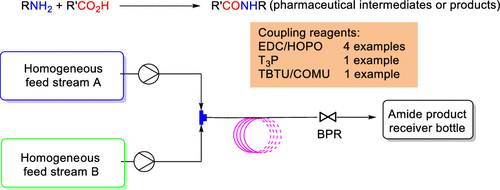 Read the publication that featured this abstract
Read the publication that featured this abstractAmidation is among the most frequently executed reactions in pharmaceutical research and development. We have explored the feasibility of adapting amidations to plug flow reactor (PFR) process conditions for the preparation of early development compounds. Among coupling reagents possessing good thermal stability, carbodiimides and T3P have been selected, as they are readily soluble, require no preactivation, offer excellent reaction kinetics, and enable convenient product isolation. A carbodiimide/2-hydroxylpyridine oxide (HOPO) protocol was demonstrated in four case studies with homogeneous feed and reaction streams that were readily adaptable to a PFR design. In a head-to-head comparison, T3P was also found to be readily adaptable to a PFR flow process and gave comparable yields. The EDC/HOPO method works well for amidations that do not involve substrates that are highly sensitive to racemization; its water compatibility makes it the reagent of choice when the amine reactant is in a salt form, since water can be added as a cosolvent to aid solubility. For substrates that are extremely sensitive to racemization, we have shown one successful example of peptide coupling using TBTU or COMU under PFR continuous flow conditions.
Two Colour Photoflow Chemistry for Macromolecular Design
- Matthias Van De Walle
- Kevin De Bruycker
- James P. Blinco
- Christopher Barner-Kowollik
- Centre for Materials Science, School of Chemistry and Physics, Queensland University of Technology (QUT)2 George St., Brisbane, QLD 4000 (Australia)
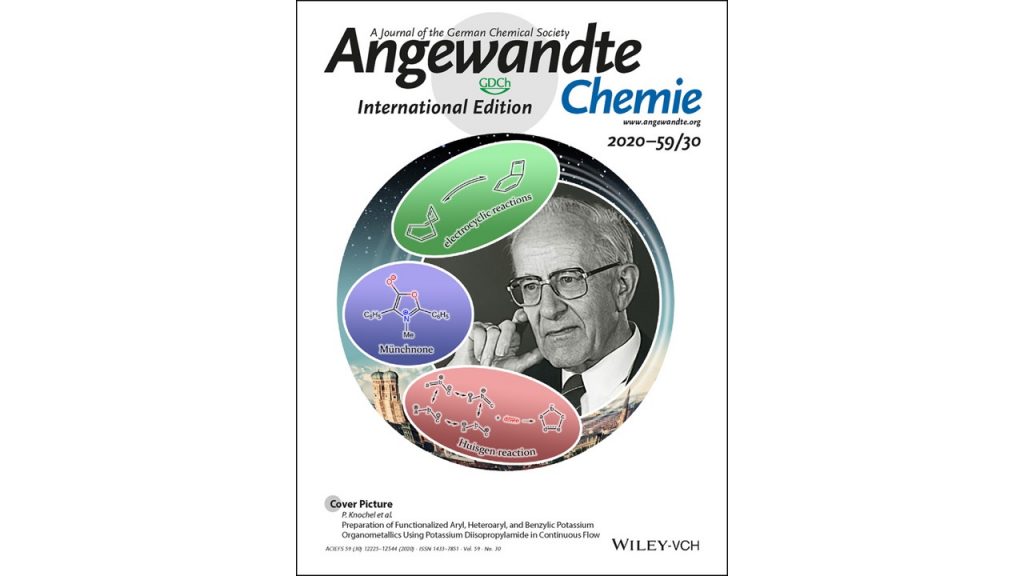 Read the publication that featured this abstract
Read the publication that featured this abstractWe report a photochemical flow setup that exploits λ‐orthogonal reactions using two different colours of light (λ1=350 nm and λ2=410 nm) in sequential on‐line irradiation steps. Critically, both photochemically reactive units (a visible‐light reactive chalcone and a UV‐activated photo‐caged diene) are present in the reaction mixture. We demonstrate the power of two colour photoflow by the wavelength‐selective end group modification of photo‐caged polymer end groups and the subsequent polymer ring closure driven by a [2+2] cycloaddition. Importantly, we evidence that the high energy gate does not induce the visible light reaction of the chalcone, which attests the true λ‐orthogonal nature of the flow reaction system. For the first time, this study opens the realm of photoflow reactions to λ‐orthogonal photochemistry.
Photocatalytic α‐Tertiary Amine Synthesis via C−H Alkylation of Unmasked Primary Amines
- Alison S. H. Ryder1 William B. Cunningham2
- George Ballantyne2
- Tom Mules2
- Anna G. Kinsella2
- Jacob Turner-Dore2
- Catherine M. Alder3
- Lee J. Edwards3
- Blandine S. J. McKay3
- Matthew N. Grayson2
- Alexander J. Cresswell2
- 1Centre for Sustainable Chemical Technologies, University of Bath 1 South, Claverton Down, Bath, BA2 7AY (UK)
- 2Department of Chemistry, University of Bath 1 South, Claverton Down, Bath, BA2 7AY (UK) E-Mail: [email protected]
- 3Medicines Design, GSK Medicines Research Centre Gunnels Wood Rd, Stevenage, SG1 2NY (UK)
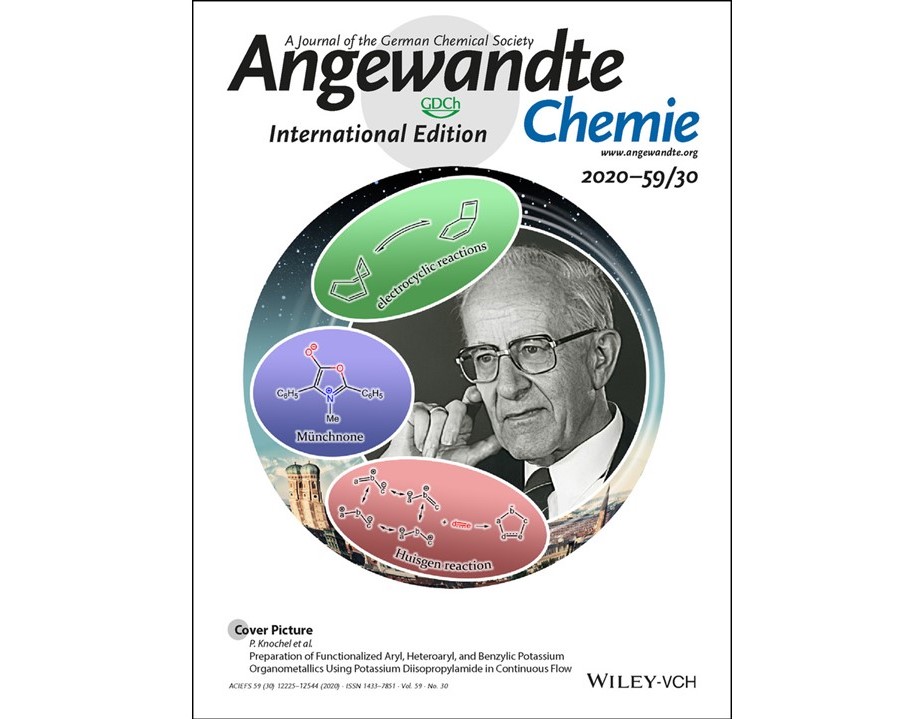 Read the publication that featured this abstract
Read the publication that featured this abstractCatalytic strategies for the α‐C−H functionalisation of primary amines are a major challenge in organic synthesis. A photocatalytic protocol for the α‐C−H alkylation of unprotected primary amines that is amenable to the direct synthesis of α‐tertiary primary amines is reported. This process is readily scalable in continuous flow to provide access to decagram quantities of valuable γ‐lactams and azaspirocycles, for application in drug discovery.
Lewis Acid Polymerization Catalyst
Inventors: Raghuraman, Arjun (Pearland, TX, US), Heath, William H. (Lake Jackson, TX, US), Mukhopadhyay, Sukrit (Midland, MI, US), Spinney, Heather A. (Midland, MI, US), Wilson, David R. (Midland, MI, US)
- Assignee: Dow Global Technologies LLC (Midland, MI, US)
Read the publication that featured this abstractA Lewis acid polymerization catalyst has a general formula M(R1)1(R2)1(R3)1(R4)0 or 1, whereas M is boron, R1, R2, R3, and R4 are each independent, R1 is a 3,5-bis(trifluoromethyl)-substituted phenyl group, R2 is the 3,5-bis(trifluoromethyl) substituted phenyl group or a first fluoro-substituted phenyl group selected from Set 1 structures, R3 is independently a second fluoro-substituted phenyl group selected from the Set 1 structures, and optional R4 includes a third functional group or functional polymer group.
Automated Glycan Assembly of Plant Cell Wall Oligosaccharides
- Fabian Pfrengle
- Department of Biomolecular Systems, Max Planck Institute of Colloids and Interfaces, Potsdam, Germany
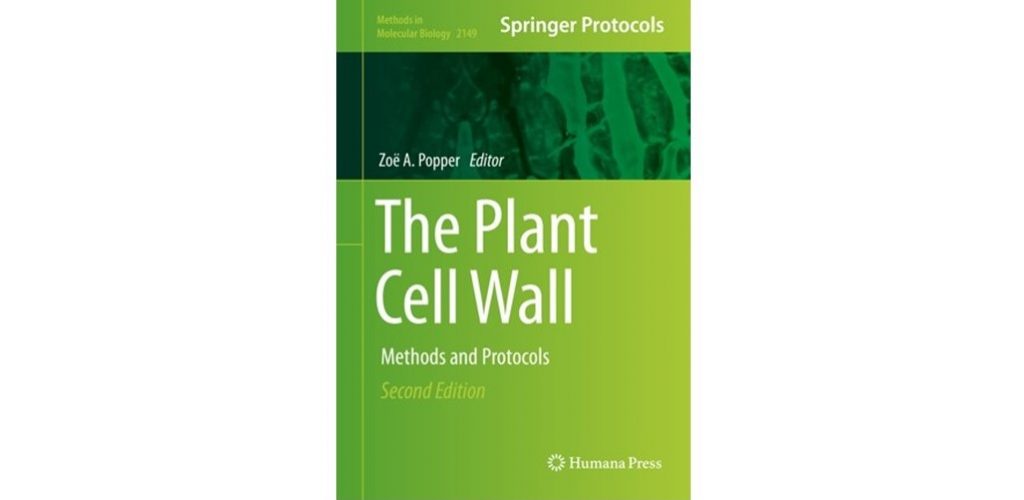 Read the publication that featured this abstract
Read the publication that featured this abstractSynthetic cell wall oligosaccharides are promising molecular tools for investigating the structure and function of plant cell walls. Their well-defined structure and high purity prevents misinterpretations of experimental data, and the possibility to introduce chemical handles provides means for easier localization and detection. Automated glycan assembly as emerged has a powerful new method for the efficient preparation of oligosaccharide libraries. We recently made use of this technology to prepare a collection of plant cell wall glycans for cell wall research. In this chapter, detailed experimental procedures for the automated synthesis of oligosaccharides that are ready for use in biological assays are described.
Process of Manufacturing Surfactants and Lubricants
Raghuraman, Arjun (Pearland, TX, US), Heath, William H. (Lake Jackson, TX, US), Hook, Bruce D. (Lake Jackson, TX, US), Yu, Wanglin (Pearland, TX, US), Mukhopadhyay, Sukrit (Midland, MI, US), Spinney, Heather A. (Midland, MI, US), Wilson, David R. (Midland, MI, US), Notestein, Justin M. (Evanston, IL, US), Nguyen, Sonbinh T. (Evanston, IL, US)
- Dow Global Technologies LLC (Midland, MI, US)
- Northwestern University (Evanston, IL, US)
Read the publication that featured this abstractA method of producing an alcohol ethoxylate surfactant or lubricant includes reacting a low molecular weight initiator with ethylene oxide in the presence of a polymerization catalyst, the low molecular weight initiator having a nominal hydroxyl functionality at least 1, and the polymerization catalyst being a Lewis acid catalyst having the general formula M(R1)1(R2)1(R3)1(R4)0 or 1, whereas M is boron, aluminum, indium, bismuth or erbium, R1, R2 and R3 each includes a same fluoroalkyl-substituted phenyl group, and optional R4 includes a functional group or functional polymer group. R1, R2, and R3 are the same fluoroalkyl-substituted phenyl group. The method further includes forming the alcohol ethoxylate surfactant or lubricant having a number average molecular weight of greater than the number average molecular weight of the low molecular weight initiator in the presence of the Lewis acid catalyst.
Preparation of Diorganomagnesium Reagents by Halogen–Lithium Exchange of Functionalized Heteroaryl Halides and Subsequent in situ Trapping with MgCl2·LiCl in Continuous Flow
- Rodolfo Hideki Vicente Nishimuraa
- Niels Weidmannb
- Paul Knochel∗b
- aColegiado de Ciências Farmacêuticas, Universidade Federal do Vale do São Francisco, Avenue José de Sá Maniçoba, Petrolina, 56304-205 Petrolina, Brazil
- bLudwig-Maximilians-Universität München, Department Chemie, Butenandtstraße 5–13, 81377 München, Germany
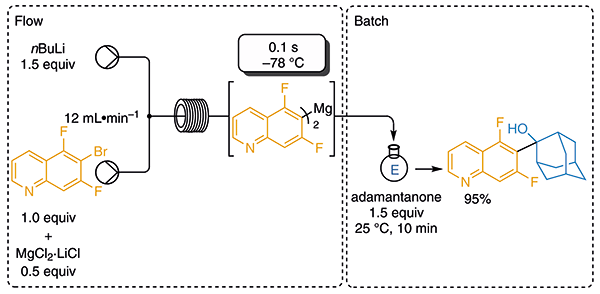 Read the publication that featured this abstract
Read the publication that featured this abstractA halogen–lithium exchange in the presence of MgCl2·LiCl on a broad range of heterocyclic scaffolds using a commercial flow set-up with nBuLi as exchange reagent is reported. The resulting diheteroarylmagnesium species were subsequently trapped with various electrophiles, such as ketones, aldehydes, allylic bromides, or disulfides affording functionalized heterocycles. A scale-up was performed by simply increasing the run-time without further optimizations.
C(sp3)–H functionalizations of light hydrocarbons using decatungstate photocatalysis in flow
- Gabriele Laudadio1*
- Yuchao Deng1,2,3,*
- Klaas van der Wal1
- Davide Ravelli4
- Manuel Nuño5
- Maurizio Fagnoni4
- Duncan Guthrie5
- Yuhan Sun2,3
- Timothy Noël1,†
- 1Micro Flow Chemistry and Synthetic Methodology, Department of Chemical Engineering and Chemistry, Eindhoven University of Technology, Eindhoven, Netherlands.
- 2School of Physical Science and Technology, ShanghaiTech University, Shanghai 201210, P. R. China.
- 3Shanghai Advanced Research Institute, Chinese Academy of Sciences, Shanghai 201210, P. R. China.
- 4PhotoGreen Lab, Department of Chemistry, University of Pavia, Pavia 27100, Italy.
- 5Vapourtec, Fornham St Genevieve, Bury St Edmunds, Suffolk IP28 6TS, UK.
- †Corresponding author. Email: [email protected]
- *These authors contributed equally to this work.
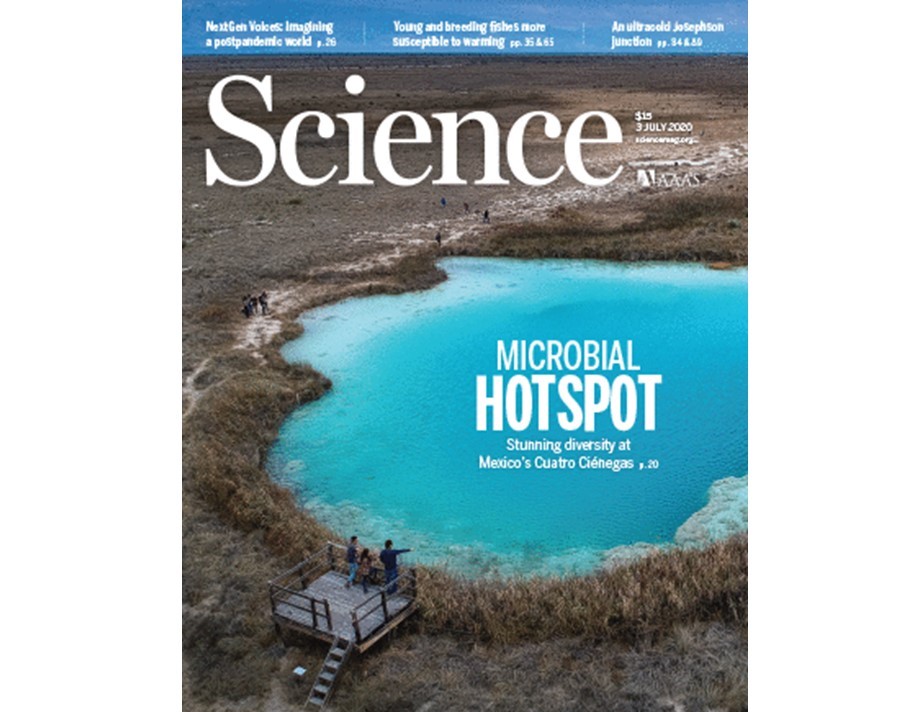 Read the publication that featured this abstract
Read the publication that featured this abstractDirect activation of gaseous hydrocarbons remains a major challenge for the chemistry community. Because of the intrinsic inertness of these compounds, harsh reaction conditions are typically required to enable C(sp3)–H bond cleavage, barring potential applications in synthetic organic chemistry. Here, we report a general and mild strategy to activate C(sp3)–H bonds in methane, ethane, propane, and isobutane through hydrogen atom transfer using inexpensive decatungstate as photocatalyst at room temperature. The corresponding carbon-centered radicals can be effectively trapped by a variety of Michael acceptors, leading to the corresponding hydroalkylated adducts in good isolated yields and high selectivity (38 examples).
Disposable cartridge concept for the on-demand synthesis of turbo Grignards, Knochel–Hauser amides, and magnesium alkoxides
- Mateo Berton1
- Kevin Sheehan2
- Andrea Adamo2
- D. Tyler McQuade1
- 1Department of Chemical and Life Sciences Engineering, Virginia Commonwealth University, Biotech Eight, 737 N. 5th St., Box 980100, Richmond, VA 23219, USA
- 2Zaiput Flow Technologies, 300 2nd Avenue, Waltham, MA 02451, USA
 Read the publication that featured this abstract
Read the publication that featured this abstractMagnesium organometallic reagents occupy a central position in organic synthesis. The freshness of these compounds is the key for achieving a high conversion and reproducible results. Common methods for the synthesis of Grignard reagents from metallic magnesium present safety issues and exhibit a batch-to-batch variability. Tubular reactors of solid reagents combined with solution-phase reagents enable the continuous-flow preparation of organomagnesium reagents. The use of stratified packed-bed columns of magnesium metal and lithium chloride for the synthesis of highly concentrated turbo Grignards is reported. A low-cost pod-style synthesizer prototype, which incorporates single-use prepacked perfluorinated cartridges and bags of reagents for the automated on-demand lab-scale synthesis of carbon, nitrogen, and oxygen turbo magnesium bases is presented. This concept will provide access to fresh organomagnesium reagents on a discovery scale and will do so independent from the operator’s experience in flow and/or organometallic chemistry.
Flow Chemistry System for Carbohydrate Analysis by Rapid Labeling of Saccharides after Glycan Hydrolysis
- Wei-Ting Hung1
- Yi-Ting Chen1
- Chung-Hsuan Chen1
- Yuan Chuan Lee2
- Jim-Min Fang1, 3
- Wen-Bin Yang1
- 1The Genomics Research Center, Academia Sinica, Taipei
- 2Department of Biology, Johns Hopkins University, Baltimore, MD, USA
- 3Department of Chemistry, National Taiwan University, Taipei
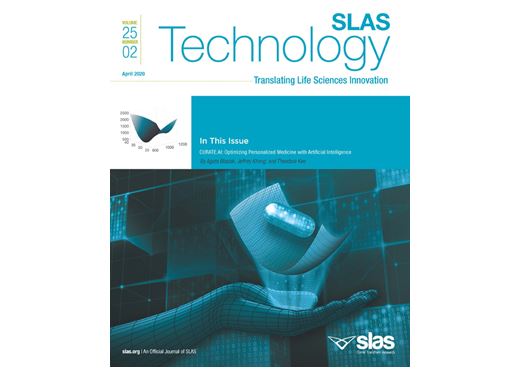 Read the publication that featured this abstract
Read the publication that featured this abstractThis study demonstrates the utilization of a flow chemistry system for continuous glycan hydrolysis and saccharide labeling to assist with the existing methods in glycan structural analysis. Acidic hydrolysis of glycans could be accelerated in a flow system. Aldoses and α-ketoacid-type saccharides were effectively labeled with naphthalene-2,3-diamine (NADA) at 60 °C for 10 min to form the fluorescent naphthimidazole (NAIM) and quinoxalinone (QXO) derivatives, respectively. The NADA-labeled derivatives improved the structural determination and composition analysis for their parent saccharides by using matrix-assisted laser desorption ionization time-of-flight mass spectrometry (MALDI-TOF-MS), liquid chromatography mass spectrometry (LC-MS), and nuclear magnetic resonance (NMR). Furthermore, this protocol was applied to determine the SA–Gal–Glc sequence of GM3-sugar out of six possible permutations.
Continuous-Flow Approach for the Multi-Gram Scale Synthesis of C2-Alkyl- or β-Amino Functionalized 1,3-Dicarbonyl Derivatives and Ondansetron Drug Using 1,3-Dicarbonyls
- Nirmala Mohant
- Krishna Nair
- Dasharath Vishambar Sutar
- Boopathy Gnanaprakasam*
- Department of Chemistry, Indian Institute of Science Education and Research (IISER) Pune, Dr. Homi Bhabha Road, Pune 411008, Maharashtra, (India).
 Read the publication that featured this abstract
Read the publication that featured this abstractContinuous-flow chemistry is a modern technology that encompasses the green chemistry principles for the multi-gram synthesis of various API and drugs. Herein, we have developed a highly efficient and environmentally benign metal-free alkylation of 1,3-dicarbonyl compounds using secondary alcohols in the presence of inexpensive Amberlyst®-15 under continuous-flow. This method is broad substrate scope with variety of secondary alcohols and water as a byproduct. The Amberlyst®-15 is recyclable and reusable for the alkylation reaction under batch/continuous-flow technology. Furthermore, a continuous-flow technology driven Mannich reaction is demonstrated under acid free condition. Besides, a continuous-flow Fischer indole strategy for the ondansetron with an improved yield is demonstrated. Additionally, all these reactions were demonstrated with multi-gram scale synthesis without lowering the yield under batch/continuous-flow technology.
Preparation of Mono- and Diisocyanates in Flow from Renewable Carboxylic Acids
- Michael D. Burkar1
- Thien An Phung Hai1
- Laurent J. S. De Backer2
- Nicholas D. P. Cosford2
- 1Department of Chemistry and Biochemistry and The California Center for Algae Biotechnology, University of California, San Diego, La Jolla, California 92093-0358, United States
- 2Cancer Metabolism & Signaling Networks Program, NCI-Designated Cancer Center, Sanford Burnham Prebys Medical Discovery Institute, La Jolla, California 92037, United States
 Read the publication that featured this abstract
Read the publication that featured this abstractDiisocyanates used in polyurethanes are commonly prepared by phosgenation of petroleum-sourced diamines. This involves highly toxic phosgene and produces corrosive HCl, limiting synthetic applications. In our search for a renewable source for diisocyanates, we have developed a practical methodology for the production of isocyanates from algae-biomass-derived fatty acids or other renewable sources. This technique utilizes flow chemistry to prepare and convert high-energy intermediates, thus mitigating safety concerns. By the use of continuous flow, acyl azides are prepared from hydrazides and subsequently heated to undergo Curtius rearrangement, affording isocyanates in one scalable process. The method is efficient, safe, and sustainable, offers an opportunity to prepare isocyanates and diisocyanates from renewable feedstocks, and is amenable to distributed manufacturing processes.
Accelerating Electrochemical Synthesis through Automated Flow: Efficient Synthesis of Chalcogenophosphites
- Nasser Amri
- Thomas Wirth*
- School of Chemistry, Cardiff University, Park Place, Cardiff, CF10 3AT, UK
 Read the publication that featured this abstract
Read the publication that featured this abstractIntegrated electrochemical reactors in automated flow systems have been utilised for chalcogenophosphite formations. Multiple electrochemical reactions can be performed using a programmed sequence in a fully autonomous way. Differently functionalised chalcogenophosphites have been efficiently synthesised in short reaction times.
Rearrangement of 3-Hydroxyazetidines into 2-Oxazolines
- Ian R. Baxendale1
- Michele Ruggeri1
- Amanda W. Dombrowski2
- Stevan W. Djuric3
- 1Department of Chemistry, University of Durham, Durham DH1 3LE, United Kingdom
- 2 Discovery Chemistry and Technology AbbVie Inc., North Chicago, Illinois 60064, United States
- 3Discovery Chemistry and Technology Consulting LLC, New Bern, North Carolina 28562, United States
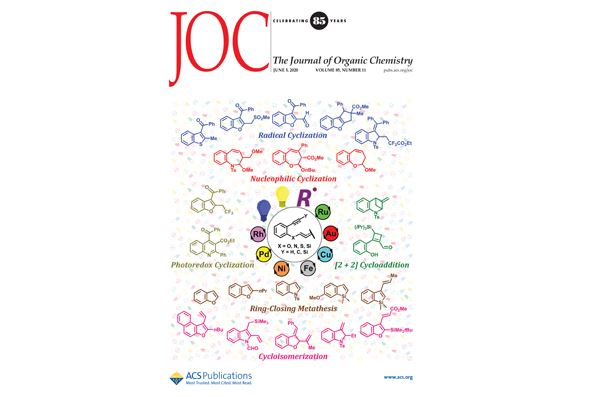 Read the publication that featured this abstract
Read the publication that featured this abstractA novel rearrangement sequence of 3-hydroxyazetidines via a Ritter initiated cascade provides highly substituted 2-oxazolines in high yields. The reaction conditions and substrate scope of the transformation have been studied demonstrating the generality of the process. The derived products can also be functionalized in order to undergo further intramolecular cyclization leading to a new class of macrocycle. The final cyclization step was shown to be a transformation amenable to continuous flow processing allowing for a dramatic reduction in the reaction time and simple scale-up.
Selective DIBAL‑H Monoreduction of a Diester Using Continuous Flow Chemistry: From Benchtop to Kilo Lab
- Nick Uhlig1
- Andrew Martins1
- Detian Gao2
- 1Process Development, Gilead Alberta ULC,Edmonton, Alberta T6S 1A1, Canada
- 2Commercial API Process Optimization, Gilead Alberta ULC, Edmonton, Alberta T6S 1A1, Canada
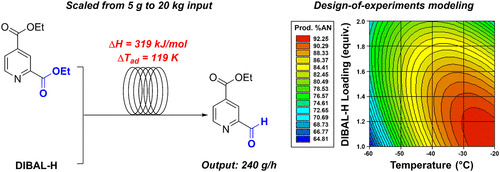 Read the publication that featured this abstract
Read the publication that featured this abstractHerein we report a selective DIBAL-H-mediated reduction of a heterocyclic diester to the corresponding monoaldehyde using continuous flow chemistry. The use of continuous flow enabled operation at lower temperatures and better control of the reaction time, thereby allowing for a significant increase in reaction selectivity and yield compared with batch conditions. The reaction’s development as a continuous flow process and its scale-up from laboratory gram scale to multikilogram scale are discussed, including design of experiments studies to probe the optimal reaction window.
Flow Reactor Synthesis of Bio-Based Polyol from Soybean Oil for the Production of Rigid Polyurethane Foam
- Kai Guo1
- Zheng Fang2
- Wei He2
- Peng Kang3
- Jingying Hao4
- Hao Wu2
- Yuchen Zhu5
- 1College of Biotechnology and Pharmaceutical Engineering and State Key Laboratory of Materials-Oriented Chemical Engineering, Nanjing Tech University, Nanjing 211816, China
- 2College of Biotechnology and Pharmaceutical Engineering, Nanjing Tech University, Nanjing 211816, China
- 3SINOPEC Beijing Research Institute of Chemical Industry, Beijing 100013, China
- 4The Research Institute of SINOPEC Co., Ltd, Tianjin Branch, Tianjin 10000, China
- 5School of Pharmaceutical Sciences, Nanjing Tech University, Nanjing 211816, China
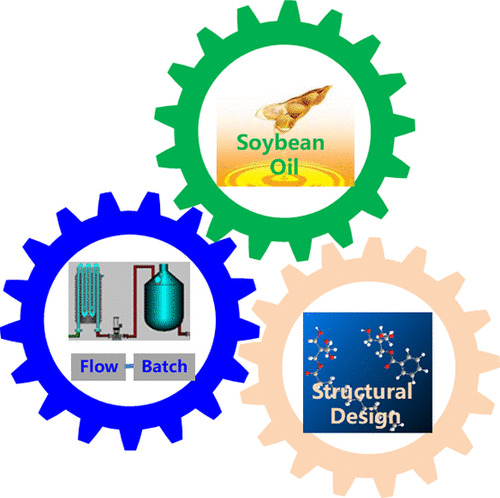 Read the publication that featured this abstract
Read the publication that featured this abstractIn this study, a complex ring-opening agent including benzoic acid pentaerythritol ester bearing an aromatic group and pentaerythritol monolaurate bearing a pendant chain was applied in the ring-opening process. Bio-based polyols were obtained through epoxidation in the fixed-bed flow reactor and ring-opening reaction in the flask. Integration of flow chemistry and batch reaction promoted the production of bio-based polyols. The resulting rigid polyurethane foams (PUF) were characterized by scanning electron microscopy, thermogravimetry analysis, and dynamic thermomechanical analysis. Higher mechanical strength and lower thermal conductivity coefficient were obtained when the combination of aromatic alcohol and aliphatic alcohol was applied in the preparation of rigid PUF. Meanwhile, better dimensional stability and higher glass-transition temperature were detected in PUF-bio-3/7. A series of research results demonstrated that rigid PUF derived from this bio-based polyol displayed better properties compared with those of rigid PUF derived from commercially available petroleum-based polyether polyol 4110.
Bicyclic quinazolinone derivatives
Inventors: Jerome HertDaniel, HunzikerChristoph Kuratli, Rainer E. Martin, Patrizio Mattei, Alexander Lee Satz
- Assignee: Hoffmann La Roche Inc
Read the publication that featured this abstractThe invention provides novel compounds having the general formula (I)
wherein R1, R2, R3, R4, R5, R6, R7, R8, R9, R10, R12, R13, R14, A1, A2, A3, n and m are as described herein.
Ir/Ni Photoredox Dual Catalysis with Heterogeneous Base Enabled by an Oscillatory Plug Flow Photoreactor
- Wouter Debrouwer,a*
- Wim Kimpea
- Ruben Dangreau,a
- Kevin Huvaere,a
- Hannes P.L. Gemoets,b
- Milad Mottaghi,c
- Simon Kuhn,c
- Koen Van Akenab
- aEcoSynth, Industrielaan 12, 9800 Deinze, Belgium
- bCreaflow, Industrielaan 12, 9800 Deinze, Belgium
- c Department of Chemical Engineering, KU Leuven, Celestijnenlaan 200F, 3001, Leuven, Belgium
 Read the publication that featured this abstract
Read the publication that featured this abstractContinuous flow reactor technology has a proven track record in enabling photochemical transformations. However, transfer of a photochemical batch process to a flow protocol often remains elusive, especially when solid reagents or catalysts are employed. In this work, application of an oscillatory plug flow photoreactor enabled a heterogeneous MacMillan-type C(sp²) – C(sp³) cross-electrophile coupling. Combination of an oscillatory flow regime with static mixing elements imparts exquisite control over mixing intensity and residence time distribution (RTD), pinpointing a mindset shift concerning slurry handling in continuous flow reactors. The C(sp²) – C(sp³) cross-electrophile coupling was successfully transferred from batch to flow, resulting in an intensified slurry process with significantly reduced reaction time and increased productivity (0.87 g/h).
Visible Light Mediated N-Desulfonylation of N-Heterocycles using a Heteroleptic Copper (I) Complex as a Photocatalyst
- Cameron J. Hunter
- Michael J. Boyd
- Gregory D. May
- Robert Fimognari*
- Vertex Pharmaceuticals Incorporated, 50 Northern Avenue, Boston, Massachusetts 02210, United States
 Read the publication that featured this abstract
Read the publication that featured this abstractA photoredox protocol that uses a heteroleptic Cu (I) complex [Cu(dq)(BINAP)]BF4 has been developed for the photodeprotection of benzenesulfonyl protected N-heterocycles. A range of substrates were examined, including indazoles, indoles, pyrazoles, and benzimidazole, featuring both electron-rich and electron-deficient substituents, giving good yields of the N-heterocycle products with broad functional group tolerance. This transformation was also found to be amenable to flow reaction conditions.
A Flow Process Built upon a Batch Foundation—Preparation of a Key Amino Alcohol Intermediate via Multistage Continuous Synthesis
- John Jin Lim,*,†
- Kenneth Arrington,*,†
- Anna L. Dunn,†
- David C. Leitch,‡,†
- Ian Andrews,†
- Neil R. Curtis,§
- Mark J. Hughes,§
- Daniel R. Tray,§
- Charles E. Wade,§
- Matthew P. Whiting,§
- Charles Goss,∥
- Yangmu Chloe Liu,§
- Brian M. Roesch§
- †Chemical Development, API Chemistry, GlaxoSmithKline, Upper Providence, Pennsylvania 19426, United States
- ‡Department of Chemistry, University of Victoria, Victoria, BC V8P 5C2, Canada
- §Chemical Development, API Chemistry, GlaxoSmithKline, Stevenage SG1 2NY, U.K.
- ∥Chemical Development, Product and Process Engineering, GlaxoSmithKline, Upper Providence, Pennsylvania 19426, United States
 Read the publication that featured this abstract
Read the publication that featured this abstractThis paper describes recent efforts to apply flow technology in the preparation of the key amino alcohol intermediate 3b so as to address manufacturability issues present in the batch process of a PRMT5 inhibitor. The continuous process, one of the first reported pharmaceutical processes to use aqueous NH4OH in flow, eliminates an isolation and the use of dichloromethane in the workup and improves reaction time >140-fold compared with the batch process to deliver multigram quantities of 3b in 60–65% isolated yield with >99 HPLC area % and >99% ee. While the flow process greatly increases the efficiency compared with the batch process, small-scale batch experiments were crucial in gaining reaction understanding to increase the kinetics and minimize impurity formation. The holistic process design underscores our belief that large-scale flow processes are built upon the knowledge gained through well-chosen small-scale batch experiments.
Streamlined Synthesis of Fluoroquinolones
Gupton, Frank B. (Midlothian, VA, US) Tosso, Perrer N. (Glen Allen, VA, US)
- VIRGINIA COMMONWEALTH UNIVERSITY (Richmond, VA, US)
Read the publication that featured this abstractMethods of synthesizing fluoroquinolones such as ciprofloxacin are provided. The methods utilize affordable materials, reduce the number of synthesis steps and provide high yields.
Development of a Large-Scale Cyanation Process Using Continuous Flow Chemistry en Route to the Synthesis of Remdesivir
- Tiago Vieira1*
- Andrew C. Stevens1*
- Andrei Chtchemelinine2
- Detian Gao1
- Pavel Badalov1
- Lars Heumann2
- 1Gilead Alberta ULC, 1021 Hayter Road, Edmonton, Alberta T6S 1A1, Canada
- 2Gilead Sciences, Inc. 333 Lakeside Drive, Foster City, California 94404, United States
 Read the publication that featured this abstract
Read the publication that featured this abstractThe implementation of cyanation chemistry at manufacturing scales using batch equipment can be challenging due to the hazardous nature of the reagents employed, and the tight control of reaction parameters, including cryogenic temperatures, that help to afford acceptable selectivity and conversion for the desired reaction. Application of continuous flow chemistry offers a means to mitigate the risk associated with handling large amounts of hazardous reagents and to better control the reaction parameters. A case study describing the cyanation of a glycoside using continuous flow chemistry towards the synthesis of the drug candidate remdesivir is presented.
A Metallaphotoredox Method for the Expansion of Benzyl SAR on Electron-Deficient Amines
- Meghan D. Shea
- Umar Faruk Mansoor
- Brett A. Hopkins*
- Discovery Chemistry, Merck & Co., Inc., 33 Avenue Louis Pasteur, Boston, Massachusetts 02115, United States
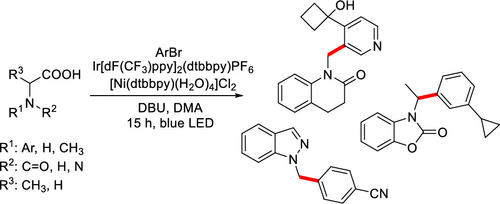 Read the publication that featured this abstract
Read the publication that featured this abstractA metallaphotoredox reaction is described that allows for the efficient exploration of benzyl structure-activity relationships on electron-deficient amines. Typically, accessing a variety of benzyl groups on these substrates can be difficult due to the limited availability of the prerequisite building blocks, namely benzyl halides. However, the use of aryl bromides in this metallaphotoredox reaction allows for greater diversity in the benzyl piece. The reaction scope is discussed herein, including conditions for product scaleup using flow.
Tropylium-promoted prenylation reactions of phenols in continuous flow
- Klaus Omoregbee1,2
- Kevin N. H. Luc1
- An H. Dinh1
- Thanh Vinh Nguyen1
- 1School of Chemistry, University of New South Wales, Sydney, Australia
- 2Department of Biology, Chemistry and Pharmacy, Freie Universität Berlin, Berlin, Germany
 Read the publication that featured this abstract
Read the publication that featured this abstract2-Dimethylchroman framework occurs in many complex natural and synthetic compounds which show various types of biological activities such as antitumor, anticancer, antihypertensive, antioxidant and antithrombotic. Herein, we report an organocatalytic approach to the synthesis of 2,2-dimethylchromans where tropylium tetrafluoroborate was used as an organic Lewis acid catalyst for metal-free prenylation reactions of phenols. This method was amenable to continuous flow chemistry to enable an inexpensive pathway to access 2,2-dimethylchromans on multiple-gram scale with short reaction times, high efficiencies and simple product purification.
Continuous-Flow Accelerated Sulfation of Heparan Sulfate Intermediates
- Saurabh Anand
- Sandhya Mardhekar
- Rakesh Raigawali
- Nirmala Mohanta
- Prashant Jain
- Chethan D. Shanthamurthy
- Boopathy Gnanaprakasam*
- Raghavendra Kikkeri*
- Indian Institute of Science Education and Research, Dr. Homi Bhabha Road, Pune-411 008, India
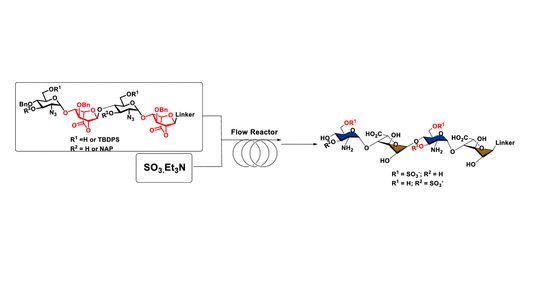 Read the publication that featured this abstract
Read the publication that featured this abstractWe report for the first time a continuous-flow strategy to execute O-sulfation modification of heparan sulfate (HS) oligosaccharides. A systematic investigation of the influence of the flow parameters on the installation of the sulfate group on glucosamine monosaccharide can aid the development of a comprehensive, quick, and reliable strategy for O-sulfation of HS oligosaccharide precursors. Deprotection of the sulfated heparin intermediates led to the development of a comprehensive biologically inspired oligosaccharide library to understand the crucial structure–function relationship of HS.
Electrochemistry in continuous systems
Thomas P. Nicholls, Christiane Schotten, Charlotte E. Willans
- School of Chemistry, University of Leeds, Leeds, LS2 9JT, UK
Read the publication that featured this abstractThe use of continuous flow conditions for synthetic electrochemical reactions exhibits many benefits over more traditional batch conditions. This has resulted in many research groups developing continuous electrochemical reactors and their application. The benefits of continuous flow include increased Faradaic efficiencies resulting in reduced energy consumption, higher selectivities, and lower electrolyte loadings which decreases waste streams and simplifies purification. These improvements are largely derived from the smaller interelectrode gaps employed in continuous systems compared to batch protocols. While this may be perceived as a small change in terms of practical reaction setup, it presents many challenges associated with reactor design and development. This perspective will highlight reactor layouts designed to address some of these challenges.
Continuous Flow Aminolysis of RAFT Polymers Using Multistep Processing and Inline Analysis
- Christian H. Hornung*
- Karin von Känel
- Ivan Martinez-Botella
- Maria Espiritu
- Xuan Nguyen
- Almar Postma
- Simon Saubern
- John Chiefari
- San H. Thang
- CSIRO Manufacturing Flagship, Bag 33, Clayton South, Victoria 3169, Australia
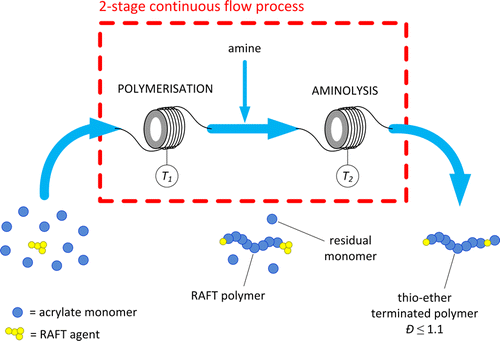 Read the publication that featured this abstract
Read the publication that featured this abstractThe reversible addition–fragmentation chain transfer (RAFT) method enables the synthesis of polymers with well-defined architecture and narrow molar mass distribution. Simple postpolymerization reactions using amines and Michael acceptors make it possible to conjugate RAFT polymers to a variety of active small molecules and macromolecules. Herein we demonstrate an efficient continuous flow process for aminolysis of RAFT polymers and subsequent Michael addition reactions, using continuous flow reactors, resulting in either thiol- or thioether-terminated polymer chains. After initial reaction optimization we managed to achieve the following: (1) establishment of an integrated flow process, which is capable of producing free thiol containing polymer without the formation of disulfide byproduct; this was achieved by means of an inline, amine scavenging process post-aminolysis using a polymer supported column; (2) the application of UV spectroscopy for inline monitoring of the continuous flow aminolysis reaction; (3) establishment of a simple two-step flow process for the polymerization and subsequent end-group removal by aminolysis; this was achieved by using two continuous reactor units in series in which the residual monomer from the polymerization acted as the Michael acceptor to cap the thiol after aminolysis.
Making electrochemistry easily accessible to the synthetic chemist
- Christiane Schotten*a
- Thomas P. Nichollsa
- Richard A. Bourneb
- Nikil Kapurc
- Bao N. Nguyena
- Charlotte E. Willans*a
- aSchool of Chemistry, University of Leeds, Leeds LS2 9JT, UK.
- bSchool of Chemical and Process Engineering, University of Leeds, Leeds LS2 9JT, UK
- cSchool of Mechanical Engineering, University of Leeds, Leeds LS2 9JT, UK
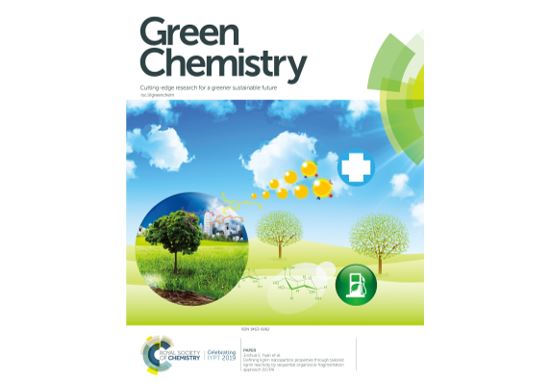 Read the publication that featured this abstract
Read the publication that featured this abstractA significantly renewed interest in synthetic electrochemistry is apparent in the increasing number of publications over the last few years. Electrochemical synthesis offers a mild, green and atom efficient route to interesting and useful molecules, thus avoiding harsh chemical oxidising and reducing agents used in traditional synthetic methods. As such, encouraging broader application of electrochemistry by synthetic chemists should be a priority. Despite the renewed interest there remains a barrier to widespread adoption of this technology derived from the extra knowledge and specialised equipment required. This has led to a knowledge gap between experienced electrochemists and those new in the field. In this tutorial we will bridge the knowledge gap by providing an easily accessible introduction which will enable synthetic chemists new to the field to explore electrochemistry. We will discuss mechanistic considerations, the setup of an electrochemical reaction with all its components, trouble shooting and selected examples from the literature.
Scale-up and Optimization of a Continuous Flow Synthesis of an α-Thio-β-chloroacrylamide
- Olga C. Dennehy1
- Denis Lynch1
- Stuart G. Collins1*
- Anita R. Maguire2*
- Humphrey A. Moynihan1*
- 1School of Chemistry, Analytical and Biological Chemistry Research Facility, Synthesis and Solid State Pharmaceutical Centre, University College Cork, Cork T12 K8AF, Ireland.
- 2School of Chemistry and School of Pharmacy, Analytical and Biological Chemistry Research Facility, Synthesis and Solid State Pharmaceutical Centre, University College Cork, Cork T12 K8AF, Ireland
 Read the publication that featured this abstract
Read the publication that featured this abstractUse of continuous flow processing to undertake a multistep chlorination cascade has been achieved with effective inline work-up and end-of-line crystallization in batch leading to isolation of α-thio-β-chloroacrylamide Z-3 in pure form from a complex reaction mixture, exploiting the advantage of efficient heat transfer in flow. During the development of a continuous flow strategy for the production of appreciable quantities of the α-thio-β-chloroacrylamides, difficulties surrounding a labour and resource intensive work-up followed by final product isolation were addressed. A greener solvent choice was applied to the chemical synthesis which enabled inline purification and separation, resulting in the crystallization of pure product directly from the reaction mixture. This process was readily scalable and demonstrated control over impurity formation and removal, which is key in an industrial setting.
Automated Glycan Assembly in a Variable-Bed Flow Reactor Provides Insights into Oligosaccharide–Resin Interactions
- Eric T. Sletten1
- José Danglad-Flores1
- Manuel Nuño2
- Duncan Guthrie2
- Peter H. Seeberger1
- 1Department of Biomolecular Systems, Max Planck Institute of Colloids and Interfaces, Am Mühlenberg 1, 14476 Potsdam, Germany
- 2Vapourtec, Ltd., Park Farm Business Centre, Fornham St. Genevieve, Bury St. Edmunds, Suffolk IP28 6TS, United Kingdom
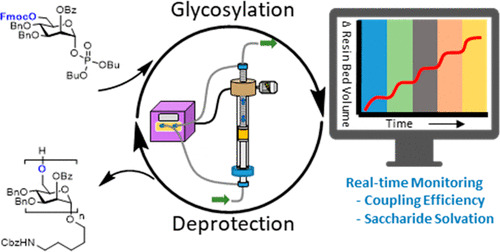 Read the publication that featured this abstract
Read the publication that featured this abstractA pressure-based variable-bed flow reactor built for peptide synthesis and capable of real-time monitoring of resin swelling was adapted for automated glycan assembly. In the context of the solid-phase synthesis of several oligosaccharides, the coupling efficiencies, resin growth patterns, and saccharide solvation during the synthesis were determined. The presented work provides the first estimation of on-resin oligosaccharide solvation and an alternative technique to UV–vis monitoring.
Photocatalytic α‐Tertiary Amine Synthesis via C–H Alkylation of Unmasked Primary Amines
- Alison S. H. Rydera
- William B. Cunninghamb
- George Ballantyneb
- Tom Mulesb
- Anna G. Kinsellab
- Jacob Turner-Doreb
- Catherine M. Alderc
- Lee J. Edwardsc
- Blandine S. J. McKayc
- Matthew N. Graysonb
- Alexander J. Cresswellb*
- aCentre for Sustainable Chemical Technologies, 1 South, University of Bath, Claverton Down, Bath, BA2 7AY (UK)
- bDepartment of Chemistry, 1 South, University of Bath, Claverton Down, Bath, BA2 7AY (UK)
- cMedicines Design, GSK Medicines Research Centre, Gunnels Wood Rd, Stevenage, SG1 2NY (UK)
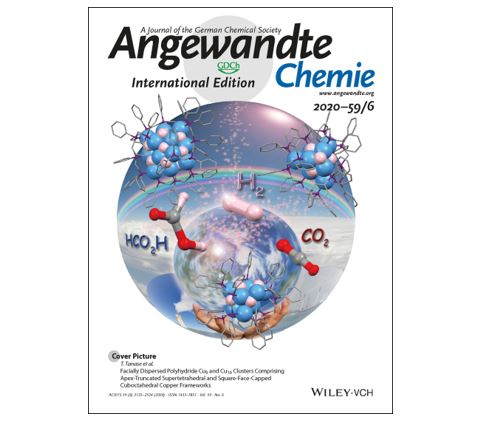 Read the publication that featured this abstract
Read the publication that featured this abstractA practical, catalytic entry to α,α,α‑trisubstituted (α‑tertiary) primary amines by C–H functionalisation has long been recognised as a critical gap in the synthetic toolbox. We report a simple and scalable solution to this problem that does not require any in situ protection of the amino group and proceeds with 100% atom‐economy. Our strategy, which uses an organic photocatalyst in combination with azide ion as a hydrogen atom transfer (HAT) catalyst, provides a direct synthesis of α‐tertiary amines, or their corresponding γ‑lactams. We anticipate that this methodology will inspire new retrosynthetic disconnections for substituted amine derivatives in organic synthesis, and particularly for challenging α‑tertiary primary amines.
Dynamic Crystallization Pathways of Polymorphic Pharmaceuticals Revealed in Segmented Flow with Inline Powder XRD
- Mark Alan Levenstein1, 2
- Lois E Wayment3, 4, 5
- C. Daniel Scott3, 6
- Ruth A Lunt3, 4
- Pierre-Baptiste Flandrin3
- Sarah Day5
- Chiu Tang5
- Chick C. Wilson3
- Fiona C. Meldrum2
- Nikil Kapur1
- Karen Robertson3
- 1School of Mechanical Engineering, University of Leeds, Woodhouse Lane, Leeds LS2 9JT, UK
- 2School of Chemistry, University of Leeds, Woodhouse Lane, Leeds LS2 9JT, UK
- 3Department of Chemistry, University of Bath, Claverton Down, Bath BA2 7AY, UK
- 4CMAC Future Manufacturing Hub, University of Bath, Claverton Down, Bath BA2 7AY, UK
- 5Diamond Light Source, Harwell Campus, Didcot, Oxfordshire OX11 0DE, UK
- 6Centre for Sustainable Chemical Technologies, University of Bath, Claverton Down, Bath BA2 7AY, UK
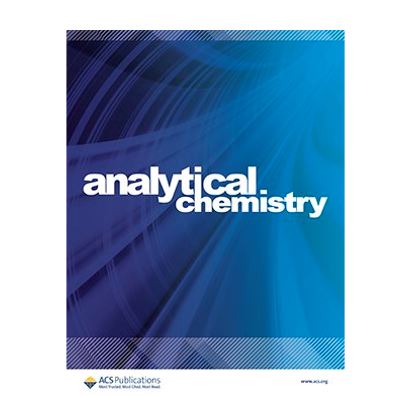 Read the publication that featured this abstract
Read the publication that featured this abstractUnderstanding the transitions between polymorphs is essential in the development of strategies for manufacturing and max-imizing the efficiency of pharmaceuticals. However, this can be extremely challenging: crystallization can be influenced by subtle changes in environment such as temperature and mixing intensity or even imperfections in the crystallizer walls. Here, we highlight the importance of in situ measurements in understanding crystallization mechanisms, where a segmented flow crystallizer was used to study the crystallization of the pharmaceuticals urea:barbituric acid (UBA) and carbamazepine (CBZ). The reactor provides highly reproducible reaction conditions, while in situ synchrotron powder X-ray diffraction (PXRD) enables us to monitor the evolution of this system. UBA has two polymorphs of almost equivalent free-energy and so is typically obtained as a polymorphic mixture. In situ PXRD uncovered a progression of polymorphs from UBA III to the thermodynamic polymorph UBA I, where different positions along the length of the tubular flow crystallizer correspond to different reaction times. Addition of UBA I seed crystals modified this pathway such that only UBA I was observed throughout, while transformation from UBA III into UBA I still occurred in the presence of UBA III seeds. Information re-garding the mixing-dependent kinetics of the CBZ form II to III transformation was also uncovered in a series of seeded and unseeded flow crystallization runs, despite atypical habit expression. These results illustrate the importance of coupling controlled reaction environments with in situ XRD to study the phase relationships in polymorphic materials.
Management of the Heat of Reaction under Continuous Flow Conditions Using In-Line Monitoring Technologies
- Masahiro Hosoya
- Shogo Nishijima
- Noriyuki Kurose
- API R&D Laboratory, CMC R&D Division, Shionogi and Co., Ltd., 1-3, Kuise Terajima 2-chome, Amagasaki, Hyogo 660-0813, Japan
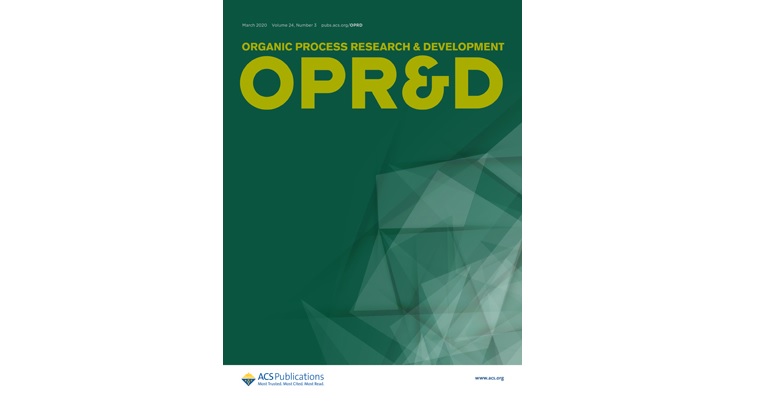 Read the publication that featured this abstract
Read the publication that featured this abstractThis work presents a guideline for managing process safety under continuous flow conditions. In our previous work, we developed a Grignard reaction for use under such conditions. This reaction was completed in seconds and entailed a large amount of heat generation. To manage the heat of reaction, we quantitatively analyzed the reaction rate using ReactIR with a flow cell. The difference between quantitative values from HPLC and ReactIR was less than 1%, and the reaction rate was 94% in 0.4 second. Based on the reaction rate and the heat of reaction, we simulated the distribution of the internal temperature along the tube length and found the maximum difference from the measured internal temperatures to be 5°C. This accuracy was suitable for evaluating and managing the heat of reaction. Our methodology can facilitate the discussion of process safety under continuous flow conditions.
Improving Efficiency by Using Continuous Flow to Enable Cycles: Pseudo-Catalysis, Catalysis and Kinetics
Ryan Sullivan, Ottawa, Canada
- Thesis submitted to the University of Ottawa, 2020
Read the publication that featured this abstractThis thesis is centered around the use of flow chemistry to enable cycles in order to increase reaction or process efficiency. Chapter two describes the development of a pseudo-catalytic cycle
in space; a strategy to achieve formal sub-stoichiometric loading of a chiral auxiliary. By telescoping auxiliary attachment, asymmetric transformation and auxiliary cleavage into one continuous flow process, coupled with separation of product and recovery of auxiliary, the reuse of the auxiliary can be automated by returning the recovered auxiliary back to the start of the process to achieve ‘turn-over.’ An asymmetric hydrogenation mediated by Oppolzer’s sultam is used to demonstrate this concept.
Production of Metal-Organic Frameworks
Rubio Martinez, Marta (Clayton South, AU), Hill, Matthew Roland (Clayton South, AU), Batten, Michael (Clayton South, AU), Lim, Kok Seng (Clayton South, AU), Polyzos, Anastasios (Clayton South, AU), Barton, Timothy Raymond (Clayton South, AU), Hadley, Trevor Deon (Clayton South, AU), Monch, Andreas Alexander (Clayton South, AU)
- Commonwealth Scientific and Industrial Research Organisation, Acton (AU)
Read the publication that featured this abstractAn apparatus for producing metal organic frameworks, comprising: a tubular flow reactor comprising a tubular body into which, in use, precursor compounds which form the metal organic framework are fed and flow, said tubular body including at least one annular loop.
Continuous-Flow Synthesis of Tramadol from Cyclohexanone
- Timothy M. Monosa
- Jonathan N. Jaworskia
- John C. Stephensb, c
- Timothy F. Jamison*a
- aDepartment of Chemistry, Massachusetts Institute of Technology, 77 Massachusetts Avenue, Cambridge, MA 02139, USA
- bDepartment of Chemistry, Maynooth University, Maynooth, Co. Kildare, Ireland
- cThe Kathleen Lonsdale Institute of Human Health Research, Maynooth University, Maynooth, Co. Kildare, Ireland
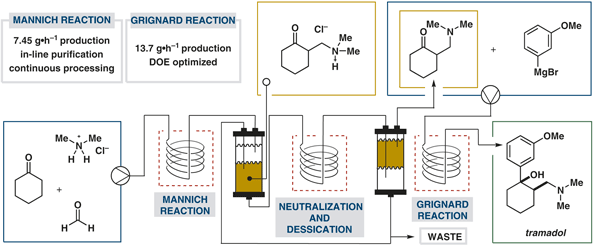 Read the publication that featured this abstract
Read the publication that featured this abstractA multioperation, continuous-flow platform for the synthesis of tramadol, ranging from gram to decagram quantities, is described. The platform is segmented into two halves allowing for a single operator to modulate between preparation of the intermediate by Mannich addition or complete the fully concatenated synthesis. All purification operations are incorporated in-line for the Mannich reaction. ‘Flash’ reactivity between meta-methoxyphenyl magnesium bromide and the Mannich product was controlled with a static helical mixer and tested with a combination of flow and batch-based and factorial evaluations. These efforts culminated in a rapid production rate of tramadol (13.7 g°h–1) sustained over 56 reactor volumes. A comparison of process metrics including E-Factor, production rate, and space-time yield are used to contextualize the developed platform with respect to established engineering and synthetic methods for making tramadol.
Photon Equivalents as a Parameter for Scaling Photoredox Reactions in Flow: Translation of Photocatalytic C−N Cross‐Coupling from Lab Scale to Multikilogram Scale
- Emily B. Corcoran*a
- Jonathan P. McMullen*b
- François Lévesqueb
- Michael K. Wismerc
- John R. Naberb
- aProcess Research & Development, Merck & Co., Inc., Boston, MA 02115 (USA)
- bProcess Research & Development, Merck & Co., Inc., Rahway, NJ 07065 (USA)
- cScientific Engineering & Design, Merck & Co., Inc., Kenilworth, NJ 07033 (USA)
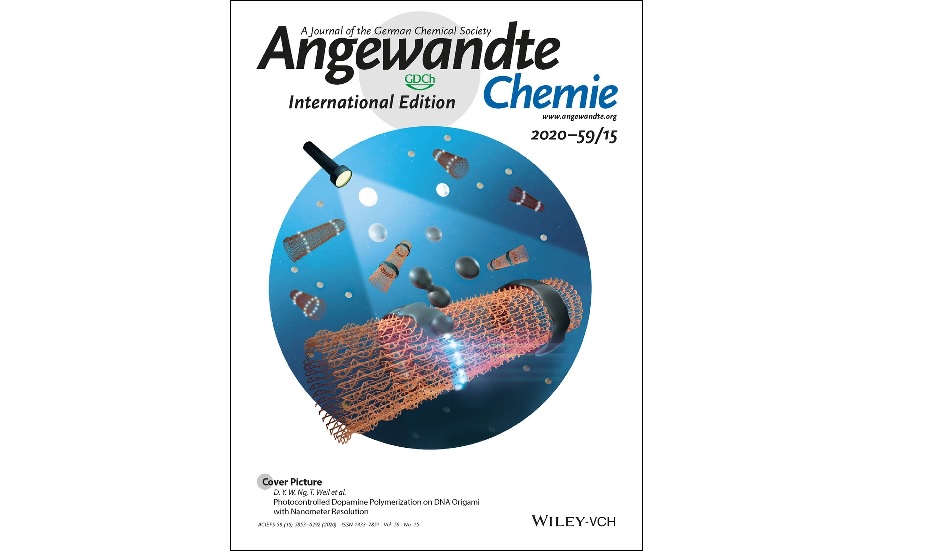 Read the publication that featured this abstract
Read the publication that featured this abstractWith the development of new photocatalytic methods over recent decades, the translation of these chemical reactions to industrial production scales using continuous flow reactors has become a topic of increasing interest. In this context, we describe our studies toward elucidating an empirically‐derived parameter for scaling photocatalytic reactions in flow. By evaluating the performance of a photocatalytic C‐N cross‐coupling across multiple reactor sizes and geometries, it was demonstrated that expressing product yield as a function of the absorbed photon equivalents provided a predictive, empirical scaling parameter. Through the use of this scaling factor and characterization of the photonic flux within each reactor, the cross‐coupling was scaled successfully from milligram‐scale in batch to a multi‐kilogram reaction in flow.
Rapid, Heterogeneous Biocatalytic Hydrogenation and Deuteration in a Continuous Flow Reactor
- Lisa A. Thompsona
- Jack S. Rowbothama
- Jake H. Nicholsona
- Miguel A Ramireza
- Ceren Zorb
- Holly A. Reevea
- Nicole Grobertb
- Kylie A. Vincenta*
- aDepartment of Chemistry, University of Oxford, Inorganic Chemistry Laboratory, South Parks Road, Oxford, OX1 3QR, UK
- bDepartment of Materials, University of Oxford, Parks Road, Oxford, OX1 3PH, UK
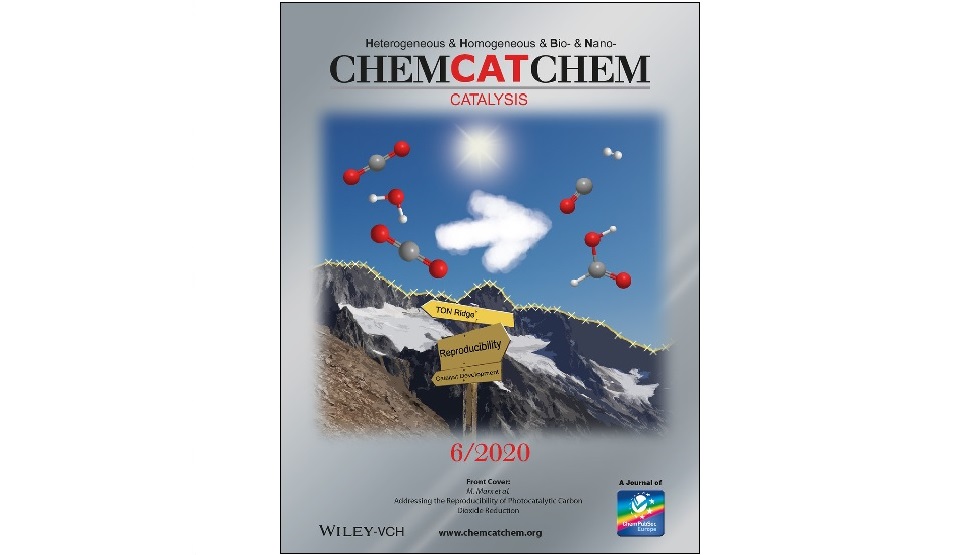 Read the publication that featured this abstract
Read the publication that featured this abstractThe high selectivity of biocatalysis offers a valuable method for greener, more efficient production of enantiopure molecules. Operating immobilised enzymes in flow reactors can improve the productivity and handling of biocatalysts, and using H2 gas to drive redox enzymes bridges the gap to more traditional metal‐catalysed hydrogenation chemistry. Herein, we describe examples of H2 ‐driven heterogeneous biocatalysis in flow employing enzymes immobilised on a carbon nanotube column, achieving near‐quantitative conversion in <5 min residence time. Cofactor recycling is carried out in‐situ using H2 gas as a clean reductant, in a completely atom‐efficient process. The flow system is demonstrated for cofactor conversion, reductive amination and ketone reduction, and then extended to biocatalytic deuteration for the selective production of isotopically labelled chemicals.
A Continuous Flow Sulfuryl Chloride Based Reaction – Synthesis of a Key Intermediate in a New Route Toward Emtricitabine and Lamivudine
- Juliana M. de Souza
- Mateo Berton
- David R. Snead*
- D. Tyler McQuade
- Department of Chemical and Life Science Engineering, Virginia Commonwealth University, Richmond, VA, 23284-3068, USA.
 Read the publication that featured this abstract
Read the publication that featured this abstractWe demonstrate a continuous two-step sequence where a sulfenyl chloride is formed, trapped by vinyl acetate and chlorinated further via a Pummerer rearrangement. This sequence produces a key intermediate in our new approach to the oxathiolane core used to prepare the anti-retroviral medicines Emtricitabine and Lamivudine. During batch scale-up to tens of grams, we found that the sequence featured a strong exotherm, temperature and pressure sensitivity, and evolution of hydrogen chloride and sulfur dioxide. These reactions are ideal candidates for implementation in a continuous, mesoscale system for the sake of superior control. In addition, we found that fast reagent additions at controlled temperatures decreased byproduct formation. Herein, we discuss the flow implementation and the final reactor design that led to a 141g/h throughput system.
Automated Electrochemical Selenenylations
- Nasser Amri
- Thomas Wirth
- School of Chemistry, Cardiff University, Park Place, Cardiff, CF10 3AT, UK
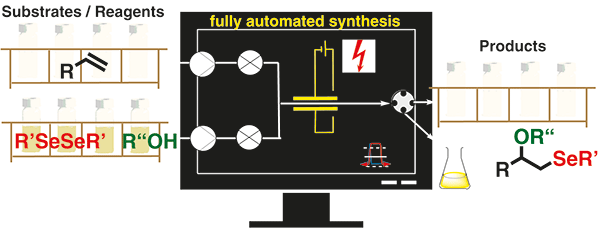 Read the publication that featured this abstract
Read the publication that featured this abstractIntegrated electrochemical reactors in automated flow systems were utilised for selenenylation reactions. The automation allowed multiple electrochemical reactions of a programmed sequence to be performed in a fully autonomous way. Many functionalised selenenylated products were synthesised in short reaction times in good to high yields.
Automated radial synthesis of organic molecules
- Sourav Chatterjee1
- Mara Guidi1, 2
- Peter H. Seeberger1, 2
- Kerry Gilmore1
- 1Department of Biomolecular Systems, Max-Planck-Institute of Colloids and Interfaces, Potsdam, Germany
- 2Freie Universität Berlin, Institute of Chemistry and Biochemistry, Berlin, Germany
 Read the publication that featured this abstract
Read the publication that featured this abstractAutomated synthesis platforms accelerate and simplify the preparation of molecules by removing the physical barriers to organic synthesis. This provides unrestricted access to biopolymers and small molecules via reproducible and directly comparable chemical processes. Current automated multistep syntheses rely on either iterative1,2,3,4 or linear processes5,6,7,8,9, and require compromises in terms of versatility and the use of equipment. Here we report an approach towards the automated synthesis of small molecules, based on a series of continuous flow modules that are radially arranged around a central switching station. Using this approach, concise volumes can be exposed to any reaction conditions required for a desired transformation. Sequential, non-simultaneous reactions can be combined to perform multistep processes, enabling the use of variable flow rates, reuse of reactors under different conditions, and the storage of intermediates. This fully automated instrument is capable of both linear and convergent syntheses and does not require manual reconfiguration between different processes. The capabilities of this approach are demonstrated by performing optimizations and multistep syntheses of targets, varying concentrations via inline dilutions, exploring several strategies for the multistep synthesis of the anticonvulsant drug rufinamide10, synthesizing eighteen compounds of two derivative libraries that are prepared using different reaction pathways and chemistries, and using the same reagents to perform metallaphotoredox carbon–nitrogen cross-couplings11 in a photochemical module—all without instrument reconfiguration.
An Enzymatic Flow-Based Preparative Route to Vidarabine
- Lucia Tamborini1*
- Clelia Previtali1
- Francesca Annunziata1
- Teodora Bavaro2
- Marco Terreni2
- Enrica Calleri2
- Francesca Rinaldi2
- Andrea Pinto3
- Giovanna Speranza4
- Daniela Ubiali2*
- Paola Conti1
- 1Department of Pharmaceutical Sciences, University of Milan, via Mangiagalli 25, 20133 Milano, Italy
- 2Department of Drug Sciences, University of Pavia, viale Taramelli 12, 27100 Pavia, Italy
- 3Department of Food, Environmental and Nutritional Sciences, University of Milan, via Celoria 2, 20133 Milano, Italy
- 4Department of Chemistry, University of Milan, via Golgi 19, 20133 Milano, Italy
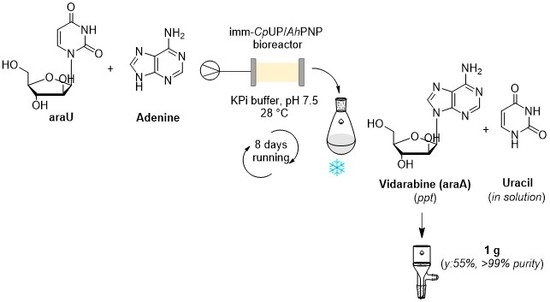 Read the publication that featured this abstract
Read the publication that featured this abstractThe bi-enzymatic synthesis of the antiviral drug vidarabine (arabinosyladenine, ara-A), catalyzed by uridine phosphorylase from Clostridium perfringens (CpUP) and a purine nucleoside phosphorylase from Aeromonas hydrophila (AhPNP), was re-designed under continuous-flow conditions. Glyoxyl–agarose and EziGTM1 (Opal) were used as immobilization carriers for carrying out this preparative biotransformation. Upon setting-up reaction parameters (substrate concentration and molar ratio, temperature, pressure, residence time), 1 g of vidarabine was obtained in 55% isolated yield and >99% purity by simply running the flow reactor for 1 week and then collecting (by filtration) the nucleoside precipitated out of the exiting flow. Taking into account the substrate specificity of CpUP and AhPNP, the results obtained pave the way to the use of the CpUP/AhPNP-based bioreactor for the preparation of other purine nucleosides.
Preparation of 5-Hydroxymethylfurfural from High Fructose Corn Syrup Using Organic Weak Acid in Situ as Catalyst
- Changqu Lin, Hongli Wu, Junyi Wang, Jinsha Huang, Fei Cao*, Wei Zhuang*, Yanyu Lu, Jiao Chen, Honghua Jia, Pingkai Ouyang
- College of Biotechnology and Pharmaceutical Engineering, Nanjing Tech University, 30 South Puzhu Road, Nanjing 211816, P. R. China
 Read the publication that featured this abstract
Read the publication that featured this abstractThe acidic catalysts play pivotal roles in the dehydration of hexose into 5-hydroxymethylfurfural (HMF). However, these acidic catalysts were usually exogenously added or self-made, which increase the cost of preparation of HMF. Herein, a novel route to prepare HMF from high fructose corn syrup (HFCS-55) using gluconic acid in situ produced by bio-oxidation as a catalyst has been investigated. In the process of bio-oxidation of HFCS-55, the introducing of ε-polylysine (EPL) can effectively improve the acid tolerance of the coimmobilized glucose oxidase and catalase. The immobilized enzymes can keep activity in the existence of a large amount of gluconic acid. Through the chelation of gluconic acid and calcium ions, the degree of gluconic acid ionization was raised and enough protons were released to convert fructose to HMF without the addition of acid. Using 2-methyltetrahydrofuran (2-MeTHF) as an extractor and adding 2 wt % CaCl2, the HMF’s yield reached 85% from fructose–gluconic acid mixture solution at 150 °C for 10 min with 200 W microwave irritations. Furthermore, we also used nuclear magnetic titration to investigate the complexation mechanism of the calcium ion and gluconic acid.
Amino Alcohol Acrylonitriles as Activators of the Aryl hydrocarbon Receptor Pathway, An Unexpected MTT Phenotypic Screening Outcome
- Jennifer Baker 1
- Cecilia C Russel 1
- Jayne Gilbert 2
- Jennette Sakoff 2
- Adam McCluskey 1
- 1 The University of Newcastle, Chemistry, University Drive, Callaghan, 2308 Newcastle, AUSTRALIA
- 2 Calvary Mater Hospital, Medical Oncology, Eidith Street, Waratah, 2298 Newcastle, AUSTRALIA
 Read the publication that featured this abstract
Read the publication that featured this abstractLead (Z)‐N‐(4‐(2‐cyano‐2‐(3,4‐dichlorophenyl)vinyl)phenyl)acetamide, 1 showed MCF‐7 GI50 = 30nM and 400‐fold selective c.f. MCF10A (normal breast tissue). Acetamide moiety modification (13a‐g) to introduce additional hydrophobic moieties was favoured with MCF‐7 breast cancer cell activity enhanced at 1.3 nM. Other analogues were potent against the HT29 colon cancer cell line at 23 nM. Textbook SAR data was observed in the MCF‐7 cell line via the ortho (17a), meta (17b) and para (13f). The amino alcohol ‐OH moiety was pivotal, but no stereochemical preference noted. But, these data did not fit our homology modelling expectations. Aberrant MTT ((3‐[4,5‐dimethylthiazol‐2‐yl]‐2,5‐diphenyl‐tetrazolium bromide) screening results and metabolic interference confirmed by sulforhodamine B (SRB) screening. Interfering analogues resulted in 120 and 80‐fold CYP1A1 and CYP1A2 amplification, with no upregulation of SULT1A1. This is consistent with activation of the AhR pathway. Piperidine per‐deuteration reduced metabolic inactivation. 3‐OH / 4‐OH piperidine analogues showed differential MTT and SRB activity supporting MTT assay metabolic inactivation. Data supports piperidine 3‐OH, but not the 4‐OH, as a CYP substrate. This family of β‐amino alcohol substituted 3,4‐dichlorophenylacetonitriles show broad activity modulated via the AhR pathway. By SRB analysis the most potent analogue was 23b, (Z)‐3‐(4‐(3‐(4‐phenylpiperidin‐1‐yl)‐2‐hydroxypropoxy)phenyl)‐2‐(3,4‐dichlorophenyl)‐acrylonitrile.
Continuous flow aminolysis under high temperature and pressure
- Bryan Li1
- Scott Bader1, 2
- Steve M. Guinness1
- Sally Gut Ruggeri1
- Cheryl M. Hayward1
- Steve Hoagland1
- John Lucas1, 3
- Ruizhi Li1
- David Limburg1
- J. Christopher McWilliams1
- Jeffrey Raggo1
- John Van Alsten1, 4
- 1Worldwide Research and Development, Pfizer Inc., Eastern Point Road, Groton, CT, 06340, USA
- 2Celgene Corporation, 556 Morris Ave, Summit, NJ, USA
- 3Rhodes Technologies, 498 Washington Street, Coventry, RI, USA
- 4Nitto Denko Avecia Inc, 155 Fortune Blvd., Milford, MA, USA
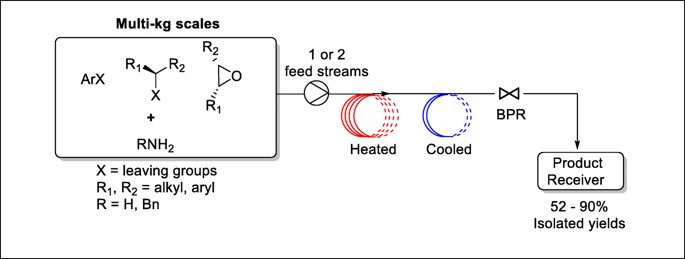 Read the publication that featured this abstract
Read the publication that featured this abstractUnder continuous processing conditions, C-N bond formation via SN2 and SNAr substitutions by amines can be an effective preparative method, especially when volatile amines are used under high pressure and temperature. We have demonstrated SN2 substitution of a 2° mesylate with ammonia and opening of an epoxide with benzylamine, and SNAr substitution of a heteroaryl chloride with aqueous ammonia on multi-kg scales. The homogeneous continuous processes offered better process control, higher efficiency, and comparable or superior reaction profiles and yields to batch conditions.
Continuous Flow Photochemistry for the Preparation of Bioactive Molecules
- Mara Di Filippo, Cormac Bracken, Marcus Baumann*
- School of Chemistry, University College Dublin, Science Centre South, Belfield, Dublin 4, Ireland
 Read the publication that featured this abstract
Read the publication that featured this abstractThe last decade has witnessed a remarkable development towards improved and new photochemical transformations in response to greener and more sustainable chemical synthesis needs. Additionally, the availability of modern continuous flow reactors has enabled widespread applications in view of more streamlined and custom designed flow processes. In this focused review article, we wish to evaluate the standing of the field of continuous flow photochemistry with a specific emphasis on the generation of bioactive entities, including natural products, drugs and their precursors. To this end we highlight key developments in this field that have contributed to the progress achieved to date. Dedicated sections present the variety of suitable reactor designs and set-ups available; a short discussion on the relevance of greener and more sustainable approaches; and selected key applications in the area of bioactive structures. A final section outlines remaining challenges and areas that will benefit from further developments in this fast-moving area. It is hoped that this report provides a valuable update on this important field of synthetic chemistry which may fuel developments in the future.
Development of a Continuous Flow Photoisomerization Reaction Converting Isoxazoles into Diverse Oxazole Products
- Cormac Bracken, Marcus Baumann*
- School of Chemistry, University College Dublin, Science Centre South, Belfield, Dublin 4, Ireland
 Read the publication that featured this abstract
Read the publication that featured this abstractA continuous flow process is presented, which directly converts isoxazoles into their oxazole counterparts via a photochemical transposition reaction. This results in the first reported exploitation of this transformation to establish its scope and synthetic utility. A series of various di- and trisubstituted oxazole products bearing different appendages including different heterocyclic moieties were realized through this rapid and mild flow process. Furthermore, the robustness of this approach was demonstrated by generating gram quantities of selected products while also providing insights into likely intermediates.
Continuous-Flow Biocatalytic Process for the Synthesis of the Best Stereoisomers of the Commercial Fragrances Leather Cyclohexanol (4-Isopropylcyclohexanol) and Woody Acetate (4-(Tert-Butyl)Cyclohexyl Acetate)
- Francesca Tentori 1,†
- Elisabetta Brenna 1,2,*
- Michele Crotti 1
- Giuseppe Pedrocchi-Fantoni 2
- Maria Chiara Ghezzi 1
- and Davide Tessaro 1
- 1 Dipartimento di Chimica, Materiali ed Ingegneria Chimica “Giulio Natta”, Politecnico di Milano, Via Mancinelli 7, 20131 Milano, Italy
- 2 Istituto di Scienze e Tecnologie Chimiche – CNR, Via Mancinelli 7, 20131 Milano, Italy
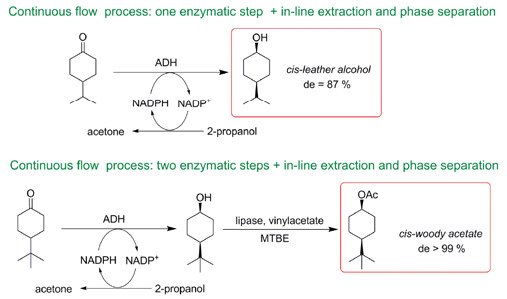 Read the publication that featured this abstract
Read the publication that featured this abstractLeather cyclohexanol (4-(isopropyl)cyclohexanol) and woody acetate (4-(tert-butyl)cyclohexyl acetate) are commercialized for functional perfumery applications as mixtures of cis- and trans-isomers. The cis-isomers are more potent odorants than the corresponding trans counterparts, but they are the less favoured products in most of the classical synthetic routes. Known stereoselective routes to cis-4-alkylcyclohexanols are characterized by a high environmental burden and/or troublesome reaction work-up. In this work, we examine the use of commercial alcohol dehydrogenases (ADHs) to produce cis-4-alkylcyclohexanols, including the two derivatives with isopropyl and tert-butyl substituents, by the stereoselective reduction of the corresponding ketones. High conversions and diastereoisomeric excess values were achieved with five of the eighteen tested ADHs. To complete the synthetic approach to woody acetate, Candida antarctica A (CALA) was employed as a catalyst for the enzymatic acetylation of cis-4-(tert-butyl)cyclohexanol. In order to provide a technological upgrade to the production of the most odorous isomers of the two commercial fragrances, we designed a continuous-flow process based on the combination of in-line enzymatic steps with in-line work-up, effectively providing samples of cis-leather cyclohexanol and cis-woody acetate with high diastereoisomeric purity.
Visible Light-Mediated (Hetero)aryl Amination Using Ni(II) Salts and Photoredox Catalysis in Flow: A Synthesis of Tetracaine
- Boyoung Y. Park, Michael T. Pirnot andStephen L. Buchwald*
- Department of Chemistry, Massachusetts Institute of Technology, Cambridge, Massachusetts 02139, United States
 Read the publication that featured this abstract
Read the publication that featured this abstractWe report a visible light-mediated flow process for C–N cross-coupling of (hetero)aryl halides with a variety of amine coupling partners through the use of a photoredox/nickel dual catalyst system. Compared to the method in batch, this flow process enables a broader substrate scope, including less-activated (hetero)aryl bromides and electron-deficient (hetero)aryl chlorides, and significantly reduced reaction times (10 to 100 min). Furthermore, scale up of the reaction, demonstrated through the synthesis of tetracaine, is easily achieved, delivering the C–N cross-coupled products in consistently high yield of 84% on up to a 10 mmol scale.
In-Line Purification: A Key Component to Facilitate Drug Synthesis and Process Development in Medicinal Chemistry
- Nopphon Weeranoppanant1, 2, Andrea Adamo3
- 1Department of Chemical Engineering, Faculty of Engineering, Burapha University, 169 Longhard Bangsaen Road, Muang, Chonburi 02131, Thailand
- 2School of Biomolecular Science and Engineering, Vidyasirimedhi Institute of Science and Technology (VISTEC), Wangchan Valley 555 Moo 1 Payupnai, Wangchan, Rayong 21210 Thailand
- 3Zaiput Flow Technologies, 300 Second Avenue, Waltham, Massachusetts 02451, United States
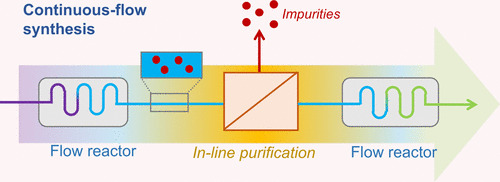 Read the publication that featured this abstract
Read the publication that featured this abstractIn-line purification is an important tool for flow chemistry. It enables effective handling of unstable intermediates and integration of multiple synthetic steps. The integrated flow synthesis is useful for drug synthesis and process development in medicinal chemistry. In this article, we overview current states of in-line purification methods. In particular, we focus on four common methods: scavenger column, distillation, nanofiltration, and extraction. Examples of their applications are provided.
Preparation of HMF from High Fructose Corn Syrup Using Organic Weak Acid in situ as Catalyst
- Changqu Lin
- Hongli Wu
- Junyi Wang
- Jinsha Huang
- Fei Cao*
- Wei Zhuang*
- Yanyu Lu
- Jiao Chen
- Honghua Jia
- Pingkai Ouyang
- College of Biotechnology and Pharmaceutical Engineering, Nanjing Tech University, 30 South Puzhu Road, Nanjing, 211816 (P. R. China)
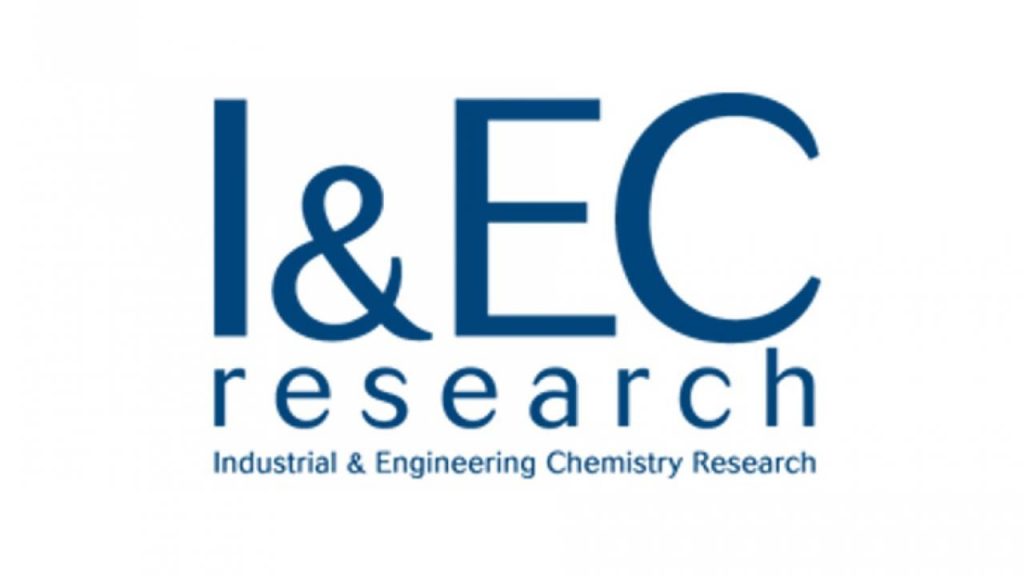 Read the publication that featured this abstract
Read the publication that featured this abstractThe acidic catalysts play a pivotal role in the dehydration of hexose into 5-hydroxymethylfurfural (HMF). However, these acidic catalysts were usually exogenously added or self-made, which increase the cost of preparation of HMF. Herein, a novel route to prepare HMF from high fructose corn syrup (HFCS-55) using gluconic acid in situ produced by bio-oxidation as catalyst has been investigated. In the process of bio-oxidation of HFCS-55, the introducing of ε-poly-lysine (EPL) can effectively improve the acid tolerance of co-immobilized glucose oxidase and catalase. The immobilized enzymes can keep activity in the existing of large amount of gluconic acid. Through the chelation of gluconic acid and calcium ions, the degree of gluconic acid ionization was raised and enough protons were released to convert fructose to HMF without the addition of acid. Using 2-methyltetrahydrofuran (2-MeTHF) as extractor and adding 2wt% CaCl2, HMF’s yield reached 85% from fructose-gluconic acid mixture solution at 150°C for 10 min with 200W microwave irritations. Furthermore, we also used nuclear magnetic titration to investigate the complexation mechanism of calcium ion and gluconic acid.
Continuous flow aminolysis under high temperature and pressure
- Bryan Li
- Scott Bader
- Steve M. Guinness
- Sally Gut Ruggeri
- Cheryl M. Hayward
- Steve Hoagland
- John Lucas
- Ruizhi Li
- David Limburg
- J. Christopher McWilliams
- Jeffrey Raggon
- John Van Alsten
- Worldwide Research and Development, Pfizer Inc., Eastern Point Road, Groton, CT, 06340, USA
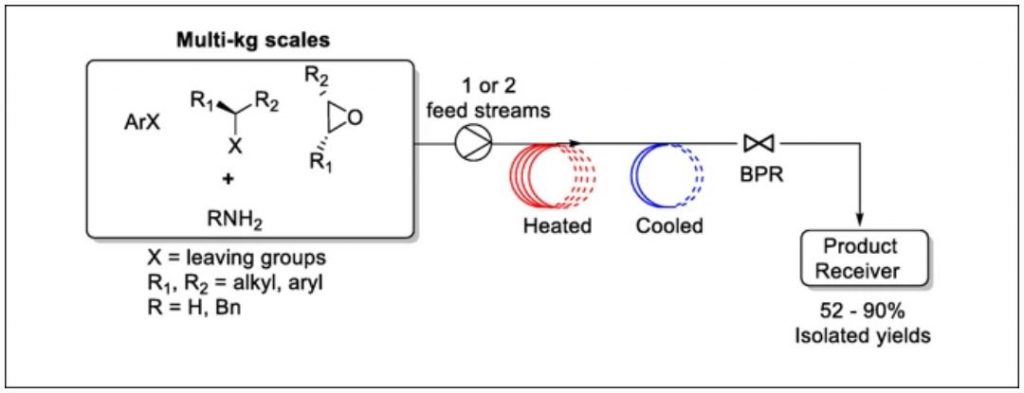 Read the publication that featured this abstract
Read the publication that featured this abstractUnder continuous processing conditions, C-N bond formation via SN2 and SNAr substitutions by amines can be an effective preparative method, especially when volatile amines are used under high pressure and temperature. We have demonstrated SN2 substitution of a 2° mesylate with ammonia and opening of an epoxide with benzylamine, and SNAr substitution of a heteroaryl chloride with aqueous ammonia on multi-kg scales. The homogeneous continuous processes offered better process control, higher efficiency, and comparable or superior reaction profiles and yields to batch conditions.
Amino Alcohol Acrylonitriles as Activators of the Aryl hydrocarbon Receptor Pathway, An Unexpected MTT Phenotypic Screening Outcome
- Jennifer Bakera
- Cecilia C Russela
- Jayne Gilbertb
- Jennette Sakoff*b
- Adam McCluskey*a
- aChemistry, The University of Newcastle, University Drive, Callaghan, NSW 2308, Australia
- bExperimental Therapeutics Group, Department of Medical Oncology, Calvary Mater Hospital, Edith Street, Waratah NSW 2298, Australia
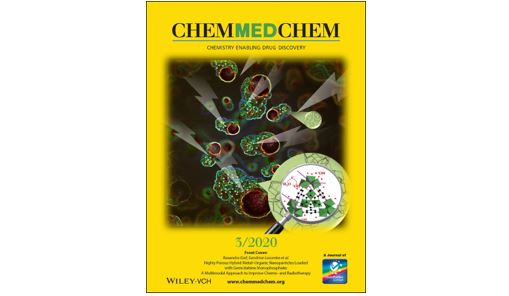 Read the publication that featured this abstract
Read the publication that featured this abstractLead (Z)‐N‐(4‐(2‐cyano‐2‐(3,4‐dichlorophenyl)vinyl)phenyl)acetamide, 1 showed MCF‐7 GI50 = 30nM and 400‐fold selective c.f. MCF10A (normal breast tissue). Acetamide moiety modification (13a‐g) to introduce additional hydrophobic moieties was favoured with MCF‐7 breast cancer cell activity enhanced at 1.3 nM. Other analogues were potent against the HT29 colon cancer cell line at 23 nM. Textbook SAR data was observed in the MCF‐7 cell line via the ortho (17a), meta (17b) and para (13f). The amino alcohol ‐OH moiety was pivotal, but no stereochemical preference noted. But, these data did not fit our homology modelling expectations. Aberrant MTT ((3‐[4,5‐dimethylthiazol‐2‐yl]‐2,5‐diphenyl‐tetrazolium bromide) screening results and metabolic interference confirmed by sulforhodamine B (SRB) screening. Interfering analogues resulted in 120 and 80‐fold CYP1A1 and CYP1A2 amplification, with no upregulation of SULT1A1. This is consistent with activation of the AhR pathway. Piperidine per‐deuteration reduced metabolic inactivation. 3‐OH / 4‐OH piperidine analogues showed differential MTT and SRB activity supporting MTT assay metabolic inactivation. Data supports piperidine 3‐OH, but not the 4‐OH, as a CYP substrate. This family of β‐amino alcohol substituted 3,4‐dichlorophenylacetonitriles show broad activity modulated via the AhR pathway. By SRB analysis the most potent analogue was 23b, (Z)‐3‐(4‐(3‐(4‐phenylpiperidin‐1‐yl)‐2‐hydroxypropoxy)phenyl)‐2‐(3,4‐dichlorophenyl)‐acrylonitrile.
Development of a Continuous Flow Photoisomerization Reaction Converting Isoxazoles into Diverse Oxazole Products
- Cormac Bracken
- Marcus Baumann
- School of Chemistry, University College Dublin, Science Centre South, Belfield, Dublin 4, Ireland
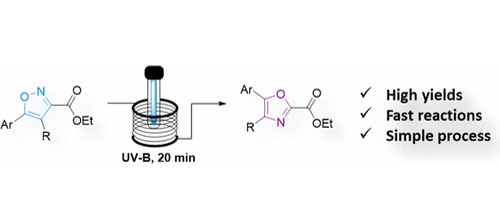 Read the publication that featured this abstract
Read the publication that featured this abstractA continuous flow process is presented, which directly converts isoxazoles into their oxazole counterparts via a photochemical transposition reaction. This results in the first reported exploitation of this transformation to establish its scope and synthetic utility. A series of various di- and trisubstituted oxazole products bearing different appendages including different heterocyclic moieties were realized through this rapid and mild flow process. Furthermore, the robustness of this approach was demonstrated by generating gram quantities of selected products while also providing insights into likely intermediates.
Visible Light-Mediated (Hetero)aryl Amination Using Ni(II) Salts and Photoredox Catalysis in Flow: A Synthesis of Tetracaine
- Boyoung Y. Park
- Michael T. Pirnot
- Stephen L. Buchwald*
- Department of Chemistry, Massachusetts Institute of Technology, Cambridge, Massachusetts 02139, United States
 Read the publication that featured this abstract
Read the publication that featured this abstractWe report a visible light-mediated flow process for C–N cross-coupling of (hetero)aryl halides with a variety of amine coupling partners through the use of a photoredox/nickel dual catalyst system. Compared to the method in batch, this flow process enables a broader substrate scope, including less-activated (hetero)aryl bromides and electron-deficient (hetero)aryl chlorides, and significantly reduced reaction times (10 to 100 minutes). Furthermore, scale up of the reaction, demonstrated through the synthesis of tetracaine, is easily achieved, delivering the C–N cross-coupled products in consistently high yield of 84% on up to a 10 mmol scale.
Use of Immobilized Amine Transaminase from Vibrio fluvialis under Flow Conditions for the Synthesis of (S)‐1‐(5‐Fluoropyrimidin‐2‐yl)‐ethanamine
- Riccardo Semproli [a]
- Gianmarco Vaccaro [a],[b]
- Erica E. Ferrandi [c]
- Marta Vanoni [c]
- Teodora Bavaro [a]
- Giorgio Marrubini [a]
- Francesca Annunziata [b]
- Paola Conti [b]
- Giovanna Speranza [d]
- Daniela Monti [*c]
- Lucia Tamborini [*b]
- Daniela Ubiali [*a]
- [a] R. Semproli, G. Vaccaro, Dr. G. Marrubini, Dr. T. Bavaro, Prof. D. Ubiali, Department of Drug Sciences, University of Pavia, Viale Taramelli 12, I-27100 Pavia, Italy
- [b] G. Vaccaro, F. Annunziata, Prof. P. Conti, Prof. L. Tamborini, Department of Pharmaceutical Sciences, University of Milano, Via Mangiagalli 25, I-20133 Milano, Italy
- [c] Dr. E. E. Ferrandi, M. Vanoni, Dr. D. Monti, Istituto di Scienze e Tecnologie Chimiche "Giulio Natta" (SCITEC) – CNR, Via Bianco 9, I-20131 Milano, Italy
- [d] Prof. G. Speranza, Department of Chemistry, University of Milano, Via Golgi 19, I-20133 Milano, Italy
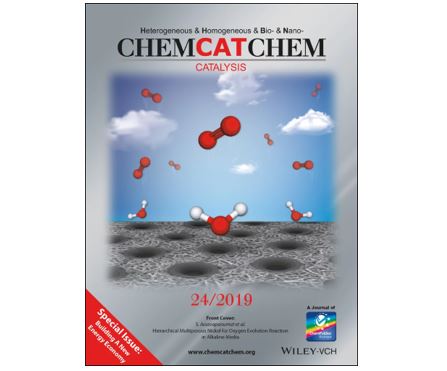 Read the publication that featured this abstract
Read the publication that featured this abstractWe report on the covalent immobilization of the (S)‐selective amine transaminase from Vibrio fluvialis (Vf‐ATA) and its use in the synthesis of (S)‐1‐(5‐fluoropyrimidin‐2‐yl)‐ethanamine, a key intermediate of the JAK2 kinase inhibitor AZD1480. Immobilized Vf‐ATA on glyoxyl‐agarose (activity recovery: 30%) was used in a packed bed reactor to set‐up a continuous flow biotransformation coupled with a straightforward in‐line purification to circumvent the 2‐step process described in literature for the batch reaction. The newly developed biotransformation was run in a homogeneous system including dimethyl carbonate as a green co‐solvent. Optically pure (S)‐1‐(5‐fluoropyrimidin‐2‐yl)‐ethanamine (ee >99%) was isolated in 35% yield.
Continuous Flow Enables Metallaphotoredox Catalysis in a Medicinal Chemistry Setting: Accelerated Optimization and Library Execution of a Reductive Coupling between Benzylic Chlorides and Aryl Bromides
- Zachary G. Brill, Casey B. Ritts, Umar Faruk Mansoor, Nunzio Sciammetta
- Department of Discovery Chemistry, MRL, Merck & Co., Inc., 33 Avenue Louis Pasteur, Boston, MA 02115 USA
 Read the publication that featured this abstract
Read the publication that featured this abstractContinuous flow has been used widely in process chemistry and academic settings for various applications. However, initial reaction discovery has generally remained “batch-exclusive” despite the existence of efficient, reproducible flow systems. We hereby disclose a workflow to bridge the gap between early medicinal chemistry efforts and process-scale development, showcased by the discovery and optimization of a metallaphotoredox-catalyzed cross-coupling between benzylic chlorides and aryl bromides, followed by two library syntheses of complex drug-like compounds.
Continuous Flow Synthesis of Methyl Oximino Acetoacetate: Accessing Greener Purification Methods with Inline Liquid-Liquid Extraction and Membrane Separation Technology
- René Lebl1, 2
- Trevor Murray3
- Andrea Adamo3
- David Cantillo1, 2
- C. Oliver Kappe1, 2
- 1Center for Continuous Flow Synthesis and Processing (CCFLOW), Research Center Pharmaceutical Engineering GmbH (RCPE), Inffeldgasse 13, 8010 Graz, Austria
- 2Institute of Chemistry, University of Graz, Heinrichstrasse 28, 8010 Graz, Austria
- 3Zaiput Flow Technologies, 300 2nd Avenue, Waltham, Massachusetts 02451, United States
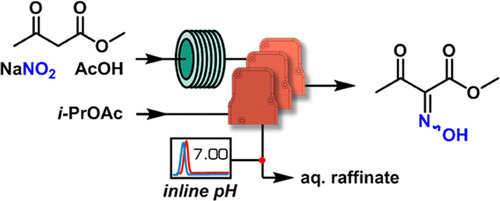 Read the publication that featured this abstract
Read the publication that featured this abstractA greener continuous flow procedure for the synthesis and purification of methyl oximino acetoacetate, a key intermediate for the generation of several heterocyclic scaffolds, has been established. The synthesis is based on the continuous flow generation of nitrous acid to effect the oximation reaction. Neat reactants and a nearly saturated aqueous NaNO2 solution have provided a methodology with a very low solvent consumption. The extraction of the oxime from the reaction mixture, a challenging process due to the presence of acetic acid in the solution, has been achieved by liquid–liquid extraction in a microreactor and a continuous multistage phase separation platform. Fine-tuning of the output pH by inline monitoring using a flow cell has enabled optimal extraction performance as well as the minimization of the acetic acid residue in the organic phase and the use of very low amounts of extraction solvents. An excellent value for the process mass intensity of 11.1 has been achieved. Moreover, the lack of acetic acid in the product avoids an additional and energy-consuming distillation step.
Cellulose fast pyrolysis for platform chemicals: assessment of potential targets and suitable reactor technology
- Anurag Parihar
- Sankar Bhattacharya
- Department of Chemical Engineering, Monash University, Clayton, VIC, Australia
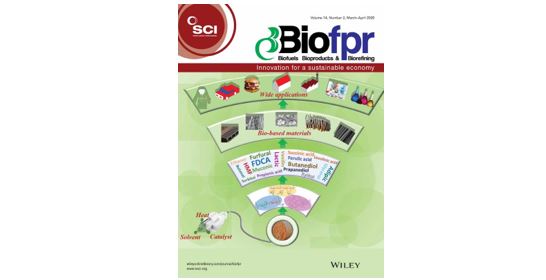 Read the publication that featured this abstract
Read the publication that featured this abstractThe cellulosic component of lignocellulosic biomass can be converted to commercially valuable platform chemicals through pyrolysis provided it is effectively controlled and optimized. This review first discusses the underpinning kinetics and mechanism of cellulose pyrolysis to identify target platform chemicals. Platform chemicals like 5‐hydroxymethyl furfural, 5‐chloromethyl furfural, and levoglucosenone, which are potentially amenable to the pyrolytic conversion of cellulose, are then elucidated. There are laboratory and large‐scale reactor technologies available for converting biomass to bio‐oil but they have not been comprehensively investigated for producing platform chemicals through pyrolysis. This review critically evaluates different reactor types available for developing the catalytic pyrolysis process for converting cellulosic component of biomass to platform chemicals. The fluidized bed reactor stands out as the most suitable reactor technology for the catalytic pyrolysis of cellulose to platform chemicals owing to attributes like short residence time, high heating rate, uniform mixing, efficient heat transfer, and scalability of operations. This article provides perspective on the implementation of this technology for the pyrolysis of the cellulosic component of biomass to platform chemicals. © 2019 Society of Chemical Industry and John Wiley & Sons, Ltd
Continuous and green microflow synthesis of azobenzene compounds catalyzed by consecutively prepared tetrahedron CuBr
- Hong Qina,1
- Chengkou Liua,1
- Niuniu Lva2
- Wei Hea
- Jingjing Menga
- Zheng Fanga
- Kai Guoa,b
- a College of Biotechnology and Pharmaceutical Engineering, Nanjing Tech University, No. 30 Puzhu South Road, Nanjing, China
- b State Key Laboratory of Materials-Oriented Chemical Engineering, Nanjing Tech University, Nanjing, 211816, China
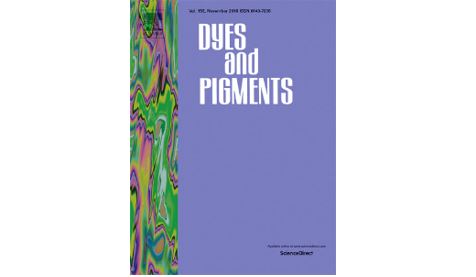 Read the publication that featured this abstract
Read the publication that featured this abstractAn environmentally friendly and cross-selective process intensification for the continuous synthesis of symmetric aromatic azo compounds by using self-made cuprous bromide as the catalyst under mild conditions in the microreactor was developed. A novel tetrahedron cuprous bromide catalyst which shows outstanding catalytic activity and satisfactory stability has been synthesized in continuous flow microreactor. The online immobilization of self-made cuprous bromide on the catalyst bed achieved oxidative coupling of aromatic amines (oxygen as oxidant) and high-performance gas–liquid–solid three-phase reaction, which strongly limited the possibility of undesired reaction pathways, improving product selectivity and reducing waste generation. Meanwhile, the yield of azo-coupling reaction was up to 98% under optimized condition. As compared with earlier traditional method (diazotization reaction) for synthesizing azobenzene, the designed micro-flow process displays significant advances in terms of selectivity, waste emissions, sustainability and productivity. The combination of online immobilization of self-made cuprous bromide and precise and safe control through the microreactor provides a green solution for the industrial production of valuable aromatic azo compounds.
Safe and Scalable Continuous Flow Azidophenylselenylation of Galactal to Prepare Galactosamine Building Blocks
- Mónica Gubermana,b
- Bartholomäus Piebera
- Peter H. Seebergera,b
- aDepartment of Biomolecular Systems, Max Planck Institute of Colloids and Interfaces, Am Mühlenberg 1, 14476 Potsdam, Germany
- bDepartment of Chemistry and Biochemistry, Freie Universitat Berlin, Arnimalle 22, 14195 Berlin, Germany
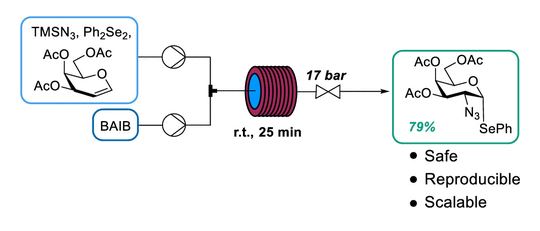 Read the publication that featured this abstract
Read the publication that featured this abstractDifferentially protected galactosamine building blocks are key components for the synthesis of human and bacterial oligosaccharides. The azidophenylselenylation of 3,4,6-tri-O-acetyl-d-galactal provides straightforward access to the corresponding 2-nitrogenated glycoside. Poor reproducibility and the use of azides that lead to the formation of potentially explosive and toxic species limit the scalability of this reaction and render it a bottleneck for carbohydrate synthesis. Here, we present a method for the safe, efficient, and reliable azidophenylselenylation of 3,4,6-tri-O-acetyl-d-galactal at room temperature, using continuous flow chemistry. Careful analysis of the transformation resulted in reaction conditions that produce minimal side products while the reaction time was reduced drastically when compared to batch reactions. The flow setup is readily scalable to process 5 mmol of galactal in 3 h, producing 1.2 mmol/h of product.
A practical method for continuous production of sp3-rich compounds from (hetero)aryl halides and redox-active esters
- Eiichi Watanabea
- Yiding Chenb
- Oliver Mayb
- Steven V. Ley*b
- aNew Path Molecular Ltd. Building 580, Babraham Research Campus, Cambridge (UK)
- bDepartment of Chemistry, University of Cambridge, Lensfield Road, Cambridge (UK)
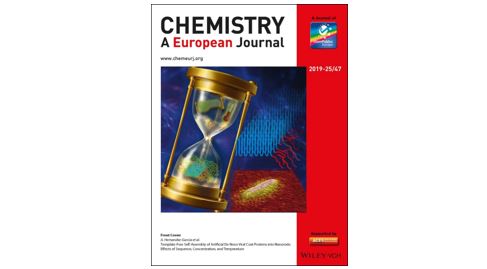 Read the publication that featured this abstract
Read the publication that featured this abstractA practically useful coupling reaction between aromatic halides and redox‐active esters was realized via nickel catalysis through the use of packed zinc bed column in continuous flow. Multiple reuse of the column showed a negligible decrease in efficiency, affording high space/time yields. A wide range of substrates, including a number of heteroaryl halides and polyfunctional materials were coupled in generally good yields. Longer‐time and larger‐scale experiments further demonstrates the robustness of the system.
Metal‐Free Visible‐Light‐Mediated Hydrotrifluoromethylation of Unactivated Alkenes and Alkynes in Continuous Flow
- Anne‐Laure Barthelemy Guillaume Dagousset Emmanuel Magnier
- Institut Lavoisier de Versailles, UMR 8180, Université de Versailles‐Saint‐Quentin, 78035 Versailles Cedex, France
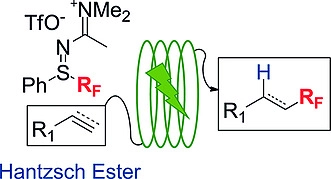 Read the publication that featured this abstract
Read the publication that featured this abstractA new versatile protocol for the hydroperfluoroalkylation of alkenes and alkynes using suliflimino iminiums as sources of perfluoroalkyl radicals was developed. This visible‐light‐mediated process is performed in continuous flow with high efficiency (10 min of residence time), and under mild metal‐free conditions.
We report herein a novel photoredox‐catalyzed hydrotrifluoromethylation of unsaturated systems under continuous flow. This metal‐free method is easily broadened to other perfluoroalkyl groups (RF = CF3, CFCl2, CF2Br, C4F9) thanks to the use of sulfilimino iminiums as sources of ·RF radicals. The mild reaction conditions are compatible with unactivated alkenes bearing a wide range of functionalities, as well as with alkynes for the first time.
A new formulation for symbolic regression to identify physico-chemical laws from experimental data
- Pascal Neumannab
- Liwei Cao bc
- Danilo Russob
- Vassilios S. Vassiliadisb
- Alexei A.Lapkinbc
- a Aachener Verfahrenstchnik – Process Systems Engineering, RWTH Aachen University, Aachen, Germany
- b Department of Chemical Engineering and Biotechnology, University of Cambridge, Cambridge CB3 0AS, UK
- c Cambridge Centre for Advanced Research and Education in Singapore, CARES Ltd., 1 CREATE Way, CREATE Tower #05-05, 138602 Singapore, Singapore
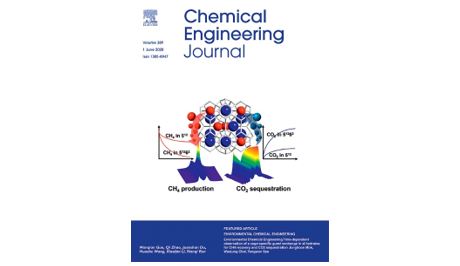 Read the publication that featured this abstract
Read the publication that featured this abstractA modification to the mixed-integer nonlinear programming (MINLP) formulation for symbolic regression was proposed with the aim of identification of physical models from noisy experimental data. In the proposed formulation, a binary tree in which equations are represented as directed, acyclic graphs, is fully constructed for a pre-defined number of layers. The introduced modification results in the reduction in the number of required binary variables and removal of redundancy due to possible symmetry of the tree formulation. The formulation was tested using numerical models and was found to be more efficient than the previous literature example with respect to the numbers of predictor variables and training data points. The globally optimal search was extended to identify physical models and to cope with noise in the experimental data predictor variable. The methodology was proven to be successful in identifying the correct physical models describing the relationship between shear stress and shear rate for both Newtonian and non-Newtonian fluids, and simple kinetic laws of chemical reactions. Future work will focus on addressing the limitations of the present formulation and solver to enable extension of target problems to larger, more complex physical models.
Real-Time Monitoring of Solid-Phase Peptide Synthesis Using a Variable Bed Flow Reactor
- Eric T. Slettena
- Manuel Nunob
- Duncan Guthrieb
- Peter Seebergera,c
- aDepartment of Biomolecular Systems, Max Planck Institute of Colloids and Interfaces, Am Mühlenberg 1, 14476 Potsdam, Germany
- bVapourtec Ltd, Park Farm Business Centre, Fornham St Genevieve, Bury St Edmunds, Suffolk IP28 6TS, U.K
- cDepartment of Chemistry and Biochemistry, Freie Universität Berlin, Arnimalle 22, 14195, Berlin, Germany
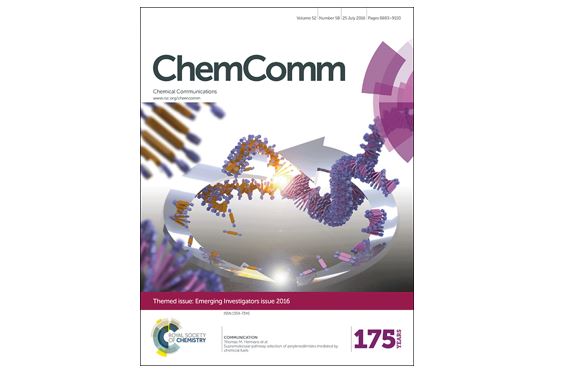 Read the publication that featured this abstract
Read the publication that featured this abstractOn-resin aggregation and incomplete amide bond formation are major challenges for solid-phase peptide synthesis that are difficult to be monitored in real-time. Incorporation of a pressure-based variable bed flow reactor into an automated solid-phase peptide synthesizer permitted real-time monitoring of resin swelling to determine amino acid coupling efficiency and on-resin aggregation.
Electroorganic Synthesis under Flow Conditions
- Mohamed Elsherbini
- Thomas Wirth
- School of Chemistry, Cardiff University, Main Building, Park Place, Cardiff CF10 3AT, United Kingdom
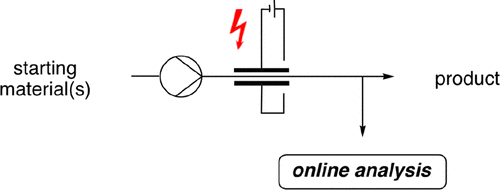 Read the publication that featured this abstract
Read the publication that featured this abstractDespite the long history of electroorganic synthesis, it did not participate in the mainstream of chemical research for a long time. This is probably due to the lack of equipment and standardized protocols. However, nowadays organic electrochemistry is witnessing a renaissance, and a wide range of interesting electrochemical transformations and methodologies have been developed, not only for academic purposes but also for large scale industrial production. Depending on the source of electricity, electrochemical methods can be inherently green and environmentally benign and can be easily controlled to achieve high levels of selectivity. In addition, the generation and consumption of reactive or unstable intermediates and hazardous reagents can be achieved in a safe way. Limitations of traditional batch-type electrochemical methods such as the restricted electrode surface, the necessity of supporting electrolytes, and the difficulties in scaling up can be alleviated using electrochemical flow cells. Microreactors offer high surface-to-volume ratios and enable precise control over temperature, residence time, flow rate, and pressure. In addition, efficient mixing, enhanced mass and heat transfer, and handling of small volumes lead to simpler scaling-up protocols and minimize safety concerns. Electrolysis under flow conditions reduces the possibility of overoxidation as the reaction mixture is flown continuously out of the reactor in contrast to traditional batch-type electrolysis cells.
In this Account, we highlight our contributions in the area of electroorganic synthesis under flow conditions over the past decade. We have designed and manufactured different generations of electrochemical flow cells. The first-generation reactor was effectively used in developing a simple one-step synthesis of diaryliodonium salts and used in proof-of-concept reactions such as the trifluoromethylation of electron-deficient alkenes via Kolbe electrolysis of trifluoroacetic acid in addition to the selective deprotection of the isonicotinyloxycarbonyl (iNoc) group from carbonates and thiocarbonates. The improved second-generation flow cell enabled the development of efficient synthesis of isoindolinones, benzothiazoles, and thiazolopyridines, achieving gram-scale for some of the products easily without changing the reactor design or reoptimizing the reaction parameters. In addition, the same reactor was used in the development of an efficient continuous flow electrochemical synthesis of hypervalent iodine reagents. The generated unstable hypervalent iodine reagents were easily used without isolation in various oxidative transformations in a coupled flow/flow manner and could be easily transformed into bench-stable reagents via quantitative ligand exchange with the appropriate acids. Our second-generation reactor was further improved and commercialized by Vapourtec Ltd. We have demonstrated the power of online analysis in accelerating optimizations and methodology development. Online mass spectrometry enabled fast screening of the charge needed for the cyclization of amides to isoindolinones. The power of online 2D-HPLC combined with a Design of Experiments approach empowered the rapid optimization of stereoselective electrochemical alkoxylations of amino acid derivatives.
Lilly Research Award Program (LRAP): A Successful Academia–Industry Partnership Model in the Context of Flow Chemistry for Drug Discovery
- Mateos, Carlos
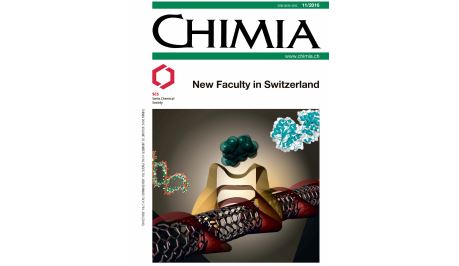 Read the publication that featured this abstract
Read the publication that featured this abstractThe Lilly Research Award Program (LRAP) provides academic researchers worldwide with a gate to partner with Lilly internal scientists who are working on basic and applied research to collaboratively advance novel impactful projects. The pre-competitive nature of these projects is the most relevant feature as it permits the shared publication of the research outcomes immediately. In this article, this highly successful initiative is reviewed in the context of general academia-industry collaborations and the lessons learned from different shared projects, in the area of innovative continuous flow chemistry, will be discussed.
In situ non-invasive Raman spectroscopic characterisation of succinic acid polymorphism during segmented flow crystallisation
- Anuradha R. Pallipuratha
- Pierre-Baptiste Flandrina
- Lois E. Waymenta, b, c
- Chick C. Wilsona, b
- Karen Robertsona
- aDepartment of Chemistry, University of Bath, Claverton Down, BA2 7AY, UK
- bCMAC Future Manufacturing Hub, University of Bath, Claverton Down, Bath BA2 7AY, UK
- c.Diamond Light Source, Harwell Campus, Didcot, Oxfordshire OX11 0DE, UK
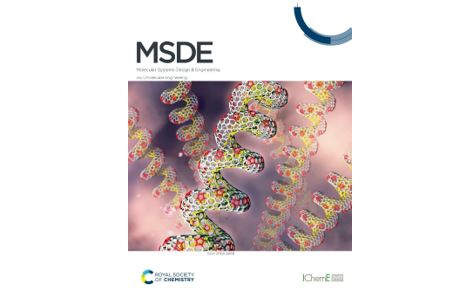 Read the publication that featured this abstract
Read the publication that featured this abstractThe kinetically regulated automated input crystalliser for Raman spectroscopy (KRAIC-R) combines highly controlled crystallisation environments, via tri segmented flow, with non-invasive confocal Raman spectroscopy. Taking advantage of the highly reproducible crystallisation environment within a segmented flow crystalliser and the non-invasive nature of confocal spectroscopy, we are able to shine light on the nucleation and growth of Raman active polymorphic materials without inducing unrepresentative crystallisation events through our analysis technique. Using the KRAIC-R we have probed the nucleation and subsequent growth of succinic acid. Succinic acid typically crystallises as β-SA from solution-based crystallisation although some examples of a small proportion of α-SA have been reported in the β-SA product. Here we show that α-SA and β-SA nucleate concomitantly but undergo Ostwald ripening to a predominantly β-SA product.
Trypanosomes inhibitors
Inventors: Maude Giroud, Wolfgang Haap, Bernd Kuhn, Rainer E. Martin
- Assignee: Hoffmann La Roche Inc
Read the publication that featured this abstractThe invention relates to a compound of formula (I)
wherein R1 and R2 are defined as in the description and in the claims. The compound of formula (I) can be used as a medicament.
Microfluidic synthesis of fatty acid esters: Integration of dynamic combinatorial chemistry and scale effect
- Wei He a,1
- Yuan Gao a,1
- Guiqin Zhu a
- Hao Wu a
- Zheng Fang a
- Kai Guo a,b
- a College of Biotechnology and Pharmaceutical Engineering, Nanjing Tech University, Nanjing 211816, PR China
- b State Key Laboratory of Materials-Oriented Chemical Engineering, Nanjing Tech University, Nanjing 210009, PR China
 Read the publication that featured this abstract
Read the publication that featured this abstractIntegration of dynamic combinatorial chemistry and scale effect was designed to realize the efficient synthesis of bioactive compounds. Synthetic efficiency in the esterification reaction and combinatorial synthesis was significantly improved in smaller characteristic scale. Obvious increase in yield was observed when the reaction was conducted in the capillary with smaller diameters. More kinds of fatty acid esters were detected in the fixed bed flow reactor compared with the results in the flask. Based on the interaction of bioactive compounds and targets, the synthesis of compounds with high binding activity was intensified along with the dynamic shift of reaction equilibrium verified by gas chromatography. Uniform distribution of flow field would be beneficial to the mixing process, resulting in better mass transfer efficiency.
MnO2@Fe3O4 Magnetic Nanoparticles as Efficient and Recyclable Heterogeneous Catalyst for Benzylic sp3 C−H Oxidation
- Akanksha M. Pandeya
- Dr. Sandip G. Agalavea
- Dr. Chathakudath P. Vinodb
- Dr. Boopathy Gnanaprakasama
- aDepartment of Chemistry, Indian Institute of Science Education and Research, Pune-, 411008 India
- bCSIR-NCL Catalysis and Inorganic Chemistry Division, Pune, India
 Read the publication that featured this abstract
Read the publication that featured this abstractA highly chemoselective and efficient heterogeneous MnO2@Fe3O4 magnetic nanoparticle catalyst for the oxidation of benzylic sp3 C−H group to afford ester and ketone derivatives in high yield under batch and continuous flow modules is reported.
Development of a continuous flow synthesis of propranolol: tackling a competitive side reaction
- Sonia De Angelis1, 2
- Paolo Celestini3
- Rosa Purgatorio1
- Leonardo Degennaro1, 2
- Gabriele Rebuzzini3
- Renzo Luisi1, 2
- Claudia Carlucci1, 2
- 1Department of Pharmacy - Drug Sciences, University of Bari "A. Moro" Via E. Orabona 4, Bari, Italy
- 2Flow Chemistry and Microreactor Technology FLAME-Lab, Bari, Italy
- 3COSMA S.p.A, Ciserano Italy
 Read the publication that featured this abstract
Read the publication that featured this abstractThis work reports the preparation of propranolol according to a flow process. Propranolol has been prepared paying attention to tackle the formation of the by-product tertiary amine, resulting from an additional ring opening of the starting epoxide. Remarkably, the use of catalytic amount of water resulted beneficial for the yield and purity of the desired propranolol, and to substantially reducing the amount of tertiary amine byproduct. The high concentration of the solutions allowed for a productivity of several grams/h.
Photochemical flow synthesis of 3‐hydroxyazetidines
- Michele Ruggeri1
- Amanda Worthy Dombrowski2
- Stevan W. Djuric2
- Ian Richard Baxendale1
- 1University of Durham, Department of Chemistry, South Road, DH1 3LE Durham, UNITED KINGDOM
- 2AbbVie, Inc., 1 North Waukegan Road, North Chicago, IL 60064 Chicago, UNITED STATES
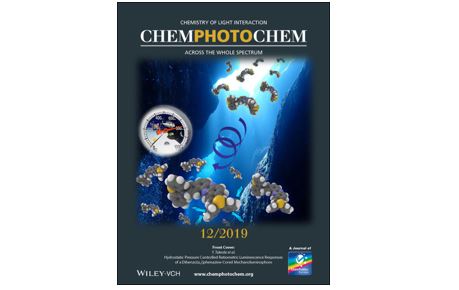 Read the publication that featured this abstract
Read the publication that featured this abstractA photo‐flow Norrish‐Yang cyclisation has been devised that delivers 3‐hydroxyazetidines in good yields. The high reproducibility and short residence times of the flow process enables easy scaling of the transformation allowing access to these valuable chemical entities at synthetically useful multi‐gram scales. A systematic exploration of the constituent structural components was undertaken allowing an understanding of the reactivity and functional group tolerance of the transformation.
Flow nanoprecipitation of size-controlled D-leucine nanoparticles for spray-drying formulations
- Bruno Cerra, Gabriele Mosca, Maurizio Ricci, Aurélie Schoubben and Antimo Gioiello
- Department of Pharmaceutical Sciences, University of Perugia, Via del Liceo 1, I-06122 Perugia, Italy
 Read the publication that featured this abstract
Read the publication that featured this abstractThe increasing interest in the use of nanoparticles for biomedical applications has resulted in a growing demand for efficient and scalable methods that enable their preparation with a fine control over particle size, distribution and morphology. In this work we report a novel flow-based method for the flash nanoprecipitation of size-controlled D-leucine nanoparticles for spray-drying formulations. Preliminary experiments were conducted in batch to define best flowable conditions that were then optimized considering nanoparticle size and distribution using a mesofluidic flow system. The method was applied to the streamilined preparation of D-leucine nanoparticles readily nebulized by mini and nano spray-dryer devices and characterized by SEM analysis. Finally, the D-leucine atomized powder was used as glidant in dry powder for inhalation with micronized budesonide, a poorly water-soluble and low flowable anti-asthma drug.
Visible‐Light‐Mediated Cross‐Couplings and C–H Activation via Dual Photoredox/Transition‐Metal Catalysis in Continuous‐Flow Processes
- Soo Dong Kim
- Jonghyun Lee
- Nam-Jung Kim
- Boyoung Park
- Kyung Hee University, Department of Pharmacy, Kyungheedaero 26, 02447 Seoul, Republic of Korea
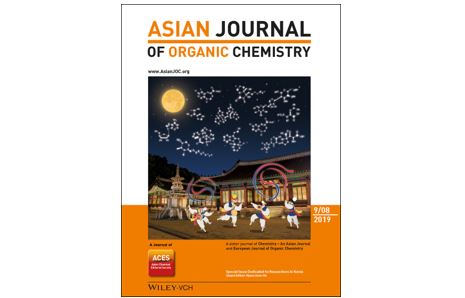 Read the publication that featured this abstract
Read the publication that featured this abstractHere we review dual photoredox/transition‐metal catalysis for C–C/C–N cross‐couplings and C–H activation in continuous‐flow processes. Compared to conventional transition‐metal catalysis for these reactions, a visible‐light‐mediated synergistic catalysis enables the use of relatively mild and environmentally friendly reaction conditions by decreasing the activation energy and using a renewable energy source. However, photochemical transformations in batch processing have limitations such as reactivity, reaction time, substrate scope, and scalability due to light attenuation as represented by the Beer‐Lambert law. In this review article, we therefore summarize and discuss several examples of cross‐couplings and C–H activation in continuous‐flow processes that overcome these problems in batch processing.
A flow platform for degradation-free CuAAC bioconjugation
- Marine Z. C. Hatit1
- Linus F. Reichenbach1
- John M. Tobin2, Filipe Vilela2
- Glenn A. Burley1
- Allan J. B. Watson3
- 1Department of Pure and Applied Chemistry, University of Strathclyde, 295 Cathedral Street, Glasgow G1 1XL, UK
- 2Chemical Sciences, Heriot-Watt University, Edinburgh EH14 4AS, UK
- 3School of Chemistry, University of St Andrews, North Haugh, St Andrews
 Read the publication that featured this abstract
Read the publication that featured this abstractThe Cu-catalyzed azide-alkyne cycloaddition (CuAAC) reaction is a cornerstone method for the ligation of biomolecules. However, undesired Cu-mediated oxidation and Cu-contamination in bioconjugates limits biomedical utility. Here, we report a generic CuAAC flow platform for the rapid, robust, and broad-spectrum formation of discrete triazole bioconjugates. This process leverages an engineering problem to chemical advantage: solvent-mediated Cu pipe erosion generates ppm levels of Cu in situ under laminar flow conditions. This is sufficient to catalyze the CuAAC reaction of small molecule alkynes and azides, fluorophores, marketed drug molecules, peptides, DNA, and therapeutic oligonucleotides. This flow approach, not replicated in batch, operates at ambient temperature and pressure, requires short residence times, avoids oxidation of sensitive functional groups, and produces products with very low ppm Cu contamination.
Batch Versus Flow Lithiation‐Substitution of 1,3,4‐Oxadiazoles: Exploitation of Unstable Intermediates Using Flow Chemistry
- Jeff Y. F. Wong
- John M. Tobin
- Filipe Vilela
- Graeme Barker
- Institute of Chemical Sciences, Heriot-Watt University, Edinburgh EH11 4AS, Scotland, UK
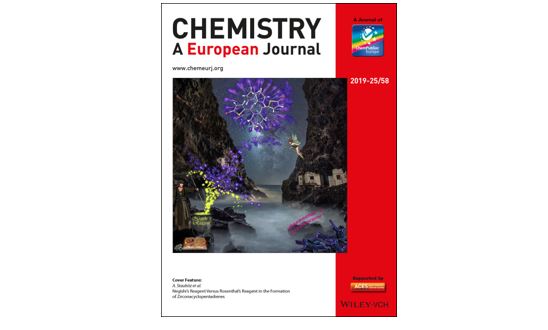 Read the publication that featured this abstract
Read the publication that featured this abstract1,3,4‐Oxadiazoles are a common motif in pharmaceutical chemistry, but few convenient methods for their modification exist. A fast, convenient, high yielding and general α‐substitution of 1,3,4‐oxadiazoles has been developed using a metalation‐electrophilic trapping protocol both in batch and under continuous flow conditions in contradiction to previous reports which suggest that α‐metalation of this ring system results in ring fragmentation. In batch, lithiation is accomplished at an industrially convenient temperature, –30 °C, with subsequent trapping giving isolated yields of up to 91%. Under continuous flow conditions, metalation is carried out at room temperature, and subsequent in flow electrophilic trapping gave up to quantitative isolated yields. Notably, lithiation in batch at room temperature results only in ring fragmentation and we propose that the superior mixing in flow allows interception and exploitation of an unstable intermediate before decomposition can occur.
A Photoredox Coupling Reaction of Benzylboronic Esters and Carbonyl Compounds in Batch and Flow
- Yiding Chen†
- Oliver May†
- David C. Blakemore‡
- and Steven V. Ley†*
- † Department of Chemistry, University of Cambridge, Lensfield Road, Cambridge CB2 1EW, U.K.
- †‡ Medicine Design, Pfizer Inc., Eastern Point Road, Groton, Connecticut 06340, United States
 Read the publication that featured this abstract
Read the publication that featured this abstractMild cross-coupling reaction between benzylboronic esters with carbonyl compounds and some imines was achieved under visible-light-induced iridium-catalyzed photoredox conditions. Functional group tolerance was demonstrated by 51 examples, including 13 heterocyclic compounds. Gram-scale reaction was realized through the use of computer-controlled continuous flow photoreactors.
Heumann Indole Flow Chemistry Process
- Cynthia Crifar, Fenja Leena Dücker, Sacha Nguyen Thanh, Vanessa Kairouz, William D. Lubell
- Department of Chemistry, Université de Montréal, C.P. 6128, Succursale Centre-Ville, Montreal, Quebec H3C 3J7, Canada
 Read the publication that featured this abstract
Read the publication that featured this abstractContinuous flow chemistry has improved efficiency in the Heumann indole process. 3-Substituted indoles were prepared by three flow steps performed in succession in better overall yield and shorter reaction times relative to their batch counterparts. Novel 3-alkyl and 3-methoxyindoles were synthesized from their corresponding amino ketone and ester precursors by flow sequences featuring base-free alkylation with methyl bromoacetate in DMF, saponification, and cyclization with acetic anhydride and Et3N.
Integrated plug flow synthesis and crystallisation of pyrazinamide
- C. Daniel Scotta
- Ricardo Labesb
- Martin Depardieuc
- Claudio Battilocchiob
- Matthew G. Davidsona
- Steven V. Leyb
- Chick C. Wilsonad
- and Karen Robertson*c
- a Centre for Sustainable Chemical Technologies, Department of Chemistry, University of Bath, UK
- b Department of Chemistry, University of Cambridge, UK
- c Department of Chemistry, University of Bath, UK
- d EPSRC Future Continuous Manufacturing and Advanced Crystallisation Research Hub, University of Bath, UK
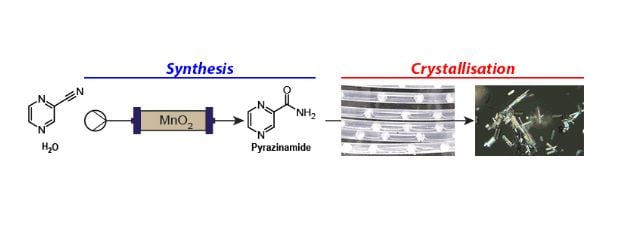 Read the publication that featured this abstract
Read the publication that featured this abstractWe report the integration of flow chemistry with plug flow crystallisation. Catalytic flow hydration of pyrazinecarbonitrile to pyrazinamide was performed in a packed bed column of MnO2. The effluent of this flow reactor was directly linked to a tri-segmented tubular crystalliser (KRAIC), providing a seamless transition from flow synthesis to crystallisation, with control over solid form and particle characteristics.
Conjugated porous polymers for photocatalytic applications
- Y. L. Wonga
- J. M. Tobinb
- Z. Xua
- F. Vilela*b
- aDepartment of Biology and Chemistry, City University of Hong Kong, 83 Tat Chee Avenue, Kowloon, Hong Kong
- bSchool of Engineering and Physical Sciences, Heriot Watt University, Edinburgh, UK
 Read the publication that featured this abstract
Read the publication that featured this abstractConjugated porous polymers (CPPs) are a class of fully crosslinked polymers defined by high surface area and porosity in the nanometer range, having been traditionally developed for applications such as gas storage, sensing and (photo)catalysis. As these materials are comprised of extended π-conjugation, their ability to act as light harvesters, and in turn photocatalysts, has come to prominence. The insoluble nature of CPPs allows them to be employed as photocatalysts under heterogeneous conditions, replacing traditional homogeneous systems. This Perspective highlights the current state-of-the-art CPPs along with a view to their applications as heterogeneous photocatalysts for a wide range of chemical transformations including hydrogen production, organic synthesis and photopolymerization, just to name but a few.
In-Flow Flash Nanoprecipitation of Size-Controlled D-Leucine Nanoparticles for Spray-Drying Formulations
Bruno Cerraa, Gabriele Moscaa, Maurizio Riccia, Aurélie Schoubbena, Antimo Gioielloa
- aDepartment of Pharmaceutical Sciences, University of Perugia, Via del Liceo 1, I-06122 Perugia, Italy.
Read the publication that featured this abstractIn this work we report the development of a cheap and scalable flow-based flash nanoprecipitation approach to prepare D-leucine nanoparticles particularly useful as glidants in dry powder for inhalation. Starting from preliminary batch screens, the process was successfully optimized and scaled-up under mesofluidic conditions. The nebulization with both mini and nano spray-dryer, the SEM analysis of nanoparticles and the aerodynamic evaluation of a formulation obtained by physical mixing of atomized D-leucine powders with budenoside showed an excellent decrease in particle size without altering the morphology, and a marked improvement in the aerodynamic properties of the drug. This simple and economic method by physical mixing of leucine with micronized active pharmaceutical ingredients can represent a valid alternative to co-spray-drying.
The Role of Single-Atom Catalysis in Potentially Disruptive Technologies
- Mario Pagliaro
- Instituto per lo Studio dei Materiali Nanostrutturati, CNR, Palermo, Italy
 Read the publication that featured this abstract
Read the publication that featured this abstractSingle-atom catalysis holds significant potential as a disruptive chemical technology. The production of a number of key chemical products, including solar hydrogen, ammonia, and hydrogen peroxide, could be shortly reshaped by the commercialization of new single-atom catalysts and the related new decentralized chemical manufacturing processes. This chapter focuses on four potential applications of single-atom catalysts that may soon significantly impact the chemical and energy sectors central to the current and future industrial societies: synthetic organic chemistry, ammonia and solar hydrogen manufacturing, and hydrogen utilization in low-cost fuel cells.
A Simple and Efficient Flow Preparation of Pyocyanin a Virulence Factor of Pseudomonas aeruginosa
- Frederik B. Mortzfelda,b
- Jörg Pietruszkab
- Ian R. Baxendale*a
- aDepartment of Chemistry, University of Durham, South Road, Durham, Durham, DH1 3LE, UK
- bInstitut für Bioorganische Chemie, Heinrich‐Heine‐Universität Düsseldorf im Forschungszentrum Jülich, 52425, Jülich, Deutschland
 Read the publication that featured this abstract
Read the publication that featured this abstractThe synthesis of the naturally occurring toxin pyocyanin has been realized in a short 4 step sequence. The key photochemical reaction and isolation of the final product have been facilitated by the use of flow chemistry techniques and immobilised reagents. Using these procedures gram quantities of pyocyanin were easily prepared in high yield and purity.
Electrophilic Bromination in Flow: A Safe and Sustainable Alternative to the Use of Molecular Bromine in Batch
- Reinout Van Kerrebroeck
- Pieter Naert
- Thomas S. A. Heugebaert
- Matthias D'hooghe
- Christian V. Stevens*
- SynBioC research Group, Department of Green Chemistry and Technology, Ghent University, Coupure Links 653, 9000 Ghent, Belgium
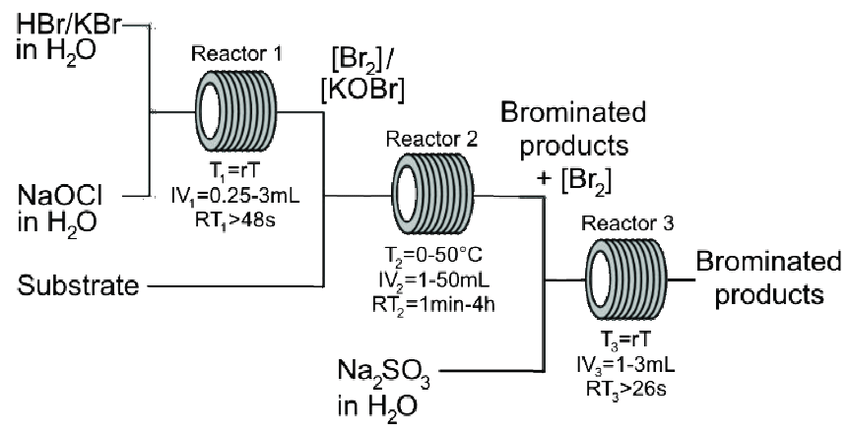 Read the publication that featured this abstract
Read the publication that featured this abstractBromination reactions are crucial in today’s chemical industry since the versatility of the formed organobromides makes them suitable building blocks for numerous syntheses. However, the use of the toxic and highly reactive molecular bromine (Br2) makes these brominations very challenging and hazardous. We describe here a safe and straightforward protocol for bromination in continuous flow. The hazardous Br2 or KOBr is generated in situ by reacting an oxidant (NaOCl) with HBr or KBr, respectively, which is directly coupled to the bromination reaction and a quench of residual bromine. This protocol was demonstrated by polybrominating both alkenes and aromatic substrates in a wide variety of solvents, with yields ranging from 78% to 99%. The protocol can easily be adapted for the bromination of other substrates in an academic and industrial environment.
Microfluidic process intensification for synthesis and formulation in the pharmaceutical industry
- Aliaa I. Shallana,b,*
- Craig Priesta,c
- aFuture Industries Institute, University of South Australia, Mawson Lakes, SA, 5095, Australia
- bFaculty of Pharmacy, Helwan University, Cairo, 11795, Egypt
- cSchool of Engineering, University of South Australia, Mawson Lakes, SA, 5095, Australia
 Read the publication that featured this abstract
Read the publication that featured this abstractProcess intensification has had an enormous impact on industrial strategy over the last century, with good outcomes for efficiency, safety, environment, and financial cost. Microfluidics offers a relatively new approach that has been studied for 30 years and has become a realistic tool for process intensification in important areas, including pharmaceutical industry. Drug manufacturing and development are expensive, highly regulated, and of great importance to society, due to the health care application. It is therefore a natural target for new technologies that can make pharmaceuticals simultaneously cheaper, more effective, and more accessible, without adverse impact on the environment and health of the workforce. Much work has been done, so this review will necessarily focus on improved pharmaceutical synthesis and drug delivery systems. This review also highlights examples of process intensification and future directions.
Continuous Flow Chemo-Enzymatic Baeyer–Villiger Oxidation with Superactive and Extra-Stable Enzyme/Carbon Nanotube Catalyst: An Efficient Upgrade from Batch to Flow
- Anna Szelwickaa
- Przemysław Zawadzkib
- Magdalena Sitkoa
- Sławomir Boncelc
- Wojciech Czardybonb
- Anna Chrobok*a
- aDepartment of Chemical Organic Technology and Petrochemistry, Silesian University of Technology, Krzywoustego 4, 44-100 Gliwice, Poland
- bSelvita S.A., Bobrzynskiego 14, 30-348 Cracow, Poland
- cDepartment of Organic Chemistry, Bioorganic Chemistry, and Biotechnology, Silesian University of Technology, Krzywoustego 4, 44-100 Gliwice, Poland
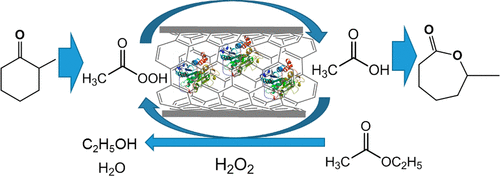 Read the publication that featured this abstract
Read the publication that featured this abstractContinuous flow chemo-enzymatic Baeyer–Villiger oxidation in the presence of exceptionally active Candida antarctica lipase B immobilized via simple physical adsorption on multiwalled carbon nanotubes has been investigated. The nanobiocatalyst was used to generate peracid in situ from ethyl acetate and 30 wt % aq. hydrogen peroxide as the primary oxidant. Application of the highly stable and active nanobiocatalyst in the Baeyer–Villiger oxidation of 2-methylcyclohexanone to 6-methyl-ε-caprolactone after 8 h at 40 °C led to a high product yield (87%) and selectivity (>99%). Environmentally friendly ethyl acetate was applied as both solvent and the peracid precursor. To determine the most favorable reaction conditions, a series of experiments using various parameters was performed. The main contribution of this work is that it describes the first application of the nanobiocatalyst in a chemo-enzymatic Baeyer–Villiger oxidation in a flow system. Since the process was performed in a flow reactor, many improvements were achieved. First of all, substantially shorter reaction times as well as a significant increase in the product yield were obtained as compared to the batch process. Since peracids are unstable, a large increase in the safety of the process was demonstrated under mild conditions in this work. In summary, this work shows a particularly efficient upgrade in the studied processes by transfer from a batch to a flow system.
Synthetic Route Design of AZD4635, an A2AR Antagonist
- Mairi M. Littleson *†, Andrew D. Campbell †, Adam Clarke †, Mark Dow †, Gareth Ensor †, Matthew C. Evans †, Adam Herring †,Bethany A. Jackson †, Lucinda V. Jackson †, Staffan Karlsson ‡, David J. Klauber †, Danny H. Legg §, Kevin W. Leslie †, Štefan Moravcí̌k ‡, Chris D. Parsons §, Thomas O. Ronson †, Rebecca E. Meadows †
- † Chemical Development, Pharmaceutical Technology and Development, AstraZeneca, Macclesfield Campus, SK10 2NA, Macclesfield, U.K.
- ‡ Early Chemical Development, Pharmaceutical Sciences, IMED Biotech Unit, AstraZeneca, Gothenburg, SE-431 83 Mölndal, Sweden
- § Early Chemical Development, Pharmaceutical Sciences, IMED Biotech Unit, AstraZeneca, Macclesfield Campus, SK10 2NA, Macclesfield, U.K.
 Read the publication that featured this abstract
Read the publication that featured this abstractThe AstraZeneca approach to synthetic Route Design is exemplified through our AZD4635 chemical development program. The identification of possible new route concepts is presented, as well as their subsequent prioritization for practical exploration based on project objectives. Selected ideas were tested to demonstrate proof of concept for the bond formation strategy and, where successful, were fed into a decision tool based on key SELECTion principles.
Continuous flow knitting of a triptycene hypercrosslinked polymer
- Cher Hon Lau *a
- Tian-dan Lu b
- Shi-Peng Sun b
- Xianfeng Chen a
- Mariolino Carta c
- Daniel M. Dawson d
- a School of Engineering, The University of Edinburgh, Robert Stevenson Road,Edinburgh EH9 3FB, UK
- b State Key Laboratory of Materials-Oriented Chemical Engineering, College of Chemical Engineering, Nanjing Tech. University, Nanjing 210009, China
- c Department of Chemistry, College of Science, Swansea University, Grove Building, Singleton Park, Swansea SA2 8PP, UK
- d School of Chemistry, EaStCHEM and Centre of Magnetic Resonance, University of St. Andrews, KY16 9ST, UK
 Read the publication that featured this abstract
Read the publication that featured this abstractBy replacing Lewis acids with Brønsted acids as catalysts, continuous flow synthesis of hypercrosslinked polymers is achieved within 10% of the time required for a typical batch reaction. Compared with batch-synthesised polymers, the flow-produced materials take up 24% more CO2, precluding the need for lengthy reaction protocols to yield high-performance hypercrosslinked polymers for carbon capture.
Transaminase‐catalyzed continuous synthesis of biogenic aldehydes
- Martina L. Contente a
- Francesca Paradisi *a,b
- a School of Chemistry, University of Nottingham, University Park, Nottingham, NG7, 2RD, United Kingdom
- b Department of Chemistry and Biochemistry, University of Bern, Freiestrasse 3, 3012 Bern
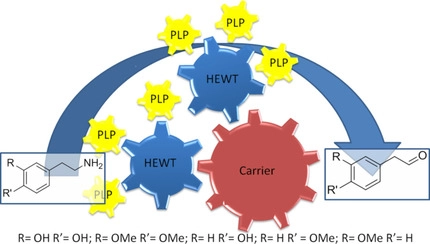 Read the publication that featured this abstract
Read the publication that featured this abstractThe physiological role of biogenic aldehydes such as Dopal and Dopegal has been associated with cardiovascular and neurodegenerative disorders. The availability of these substrates is limited and robust synthetic methodologies would greatly facilitate further biological studies. Here we report on transaminase mediated single‐step process in continuous mode which leads to excellent product yields (90‐95%). Co‐immoblization of the PLP cofactor eliminated the need of exogenous addition of this reagent without affecting the longevity of the system, delivering a truly self‐sufficient process.
Optimisation by Design of Experiment of Benzimidazol-2-One Synthesis under Flow Conditions
Serena Mostarda1,2, Tugçe Gür Maz3, Alessandro Piccinno1, Bruno Cerra1, Erden Banoglu3
- 1Department of Pharmaceutical Sciences, University of Perugia, Via del Liceo 1, 06123 Perugia, Italy
- 2Current affiliation: Novartis Pharma AG, CH-4002 Basel, Switzerland
- 3Department of Pharmaceutical Chemistry, Faculty of Pharmacy, Gazi University, Etiler, 06560 Ankara, Turkey
Read the publication that featured this abstractA novel flow-based approach for the preparation of benzimidazol-2-one (1) scaffold by the 1,1′-carbonyldiimidazole (CDI)-promoted cyclocarbonylation of o-phenylenediamine (2) is reported. Starting from a preliminary batch screening, the model reaction was successfully translated under flow conditions and optimised by means of design of experiment (DoE). The method allowed the efficient preparation of this privileged scaffold and to set up a general protocol for the multigram-scale preparation in high yield, purity, and productivity, and was successfully applied for the multigram flow synthesis of N-(2-chlorobenzyl)-5-cyano-benzimidazol-2-one, which is a key synthon for hit-to-lead explorations in our anti-inflammatory drug discovery program.
A Novel and Efficient Continuous-Flow Route To Prepare Trifluoromethylated N‑Fused Heterocycles for Drug Discovery and Pharmaceutical Manufacturing
- Lara Amini-Rentsch1,2
- Ennio Vanoli2
- Sylvia Richard-Bildstein1
- Roger Marti2
- Gianvito Vilé1
- 1 Idorsia Pharmaceuticals Ltd., Chemistry Technologies & Lead Discovery, Department of Drug Discovery Chemistry, Hegenheimermattweg 91, CH-4123 Allschwil, Switzerland
- 2 University of Applied Sciences Western Switzerland (HES-SO), Haute Ecole d’Ingénierie et d’Architecture de Fribourg, Institute of Chemical Technology, 80 boulevard de Pérolles, CH-1700 Fribourg, Switzerland
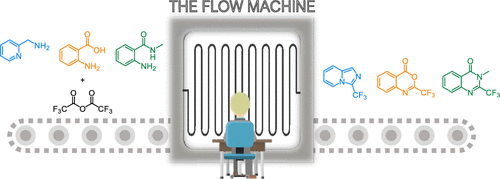 Read the publication that featured this abstract
Read the publication that featured this abstractContinuous-flow processing has become one of the fastest-growing research areas in chemistry in the last 10 years. Herein we disclose an automated and scalable continuous-flow route for the quick introduction of trifluoromethyl groups on a variety of heterocycles, with application in drug discovery and manufacturing. This involves the direct alkylation-cyclization of amines in the presence of trifluoroacetic acid or anhydride, cheap and readily available CF3-containing building blocks.
Compared to traditional batch reactions involving an intermediate purification step, the continuous-flow reactions occurred quickly and at mild conditions, with high yield and broad functional-group tolerance. The practical utility of the method was demonstrated by a gram-scale synthesis and by the estimation of modern green metrics.
A robust and scalable continuous flow process for glycerol carbonate
Seger Van Mileghema,b, Wim M. De Borggraeveb, Ian R. Baxendalea
- aUniversity of Durham, Department of Chemistry, South Road, DH1 3LE Durham, UK
- bKU Leuven, Division of Molecular Design and Synthesis, Department of Chemistry, Celestijnenlaan 200F, 3001 Heverlee, Belgium
Read the publication that featured this abstractWith glycerol being a bulk waste product, the interest in converting it to other value-added products is steadily increasing. A scalable continuous flow process was developed for the synthesis of glycerol carbonate (2-GLC) from glycerol and dimethyl carbonate on a hydroxide functional resin. High conversion and selectivity were obtained while the residence times were typically shorter than 10 min. Continuous production of 2-GLC was achieved in high throughput and with improved processing metrics, creating the foundations for a production level process.
Flow Hydrodediazoniation of Aromatic Heterocycles
- Liesa Röder1
- Alexander J. Nicholls2
- Ian R. Baxendale2
- 1 Department of Biology, Chemistry, and Pharmacy, Freie Universität Berlin, 14195 Berlin, Germany
- 2 Department of Chemistry, University of Durham, South Road, Durham, DH1 3LE, UK
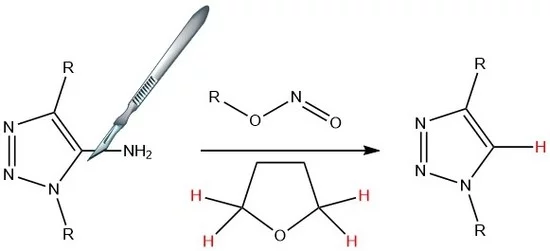 Read the publication that featured this abstract
Read the publication that featured this abstractContinuous flow processing was applied for the rapid replacement of an aromatic amino group with a hydride. The approach was applied to a range of aromatic heterocycles, confirming the wide scope and substituent-tolerance of the processes. Flow equipment was utilized and the process optimised to overcome the problematically-unstable intermediates that have restricted yields in previous studies relying on batch procedures. Various common organic solvents were investigated as potential hydride sources. The approach has allowed key structures, such as amino-pyrazoles and aminopyridines, to be deaminated in good yield using a purely organic-soluble system.
Continuous-Flow Electrochemical Generator of Hypervalent Iodine Reagents: Synthetic Applications
- Dr Mohamed Elsherbini
- Bethan Winterson
- Haifa Alharbi
- Ana A. Folgueiras-Amador
- Clina Gnot
- Thomas Wirth
- School of Chemistry, Cardiff University, Main Building, Park Place, Cardiff, CF10 3AT UK
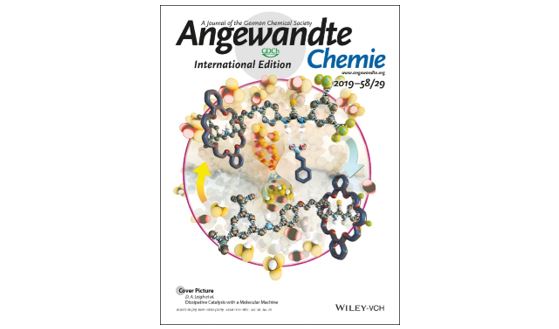 Read the publication that featured this abstract
Read the publication that featured this abstractAn efficient and reliable electrochemical generator of hypervalent iodine reagents has been developed. In the anodic oxidation of iodoarenes to hypervalent iodine reagents under flow conditions, the use of electricity replaces hazardous and costly chemical oxidants. Unstable hypervalent iodine reagents can be prepared easily and coupled with different substrates to achieve oxidative transformations in high yields. The unstable, electrochemically generated reagents can also easily be transformed into classic bench-stable hypervalent iodine reagents through ligand exchange. The combination of electrochemical and flow chemistry advantages largely improves the ecological footprint of the overall process compared to conventional approaches.
Definitive screening designs for multistep kinetic models in flow
- Christopher A. Honea
- Alistair Boydb
- Anne O’Kearney-McMullanb
- Richard A. Bournea*
- Frans L. Mullera*
- a Institute of Process Research and Development (iPRD), School of Chemistry and School of Chemical and Process Engineering, University of Leeds, LS2 9JT, UK
- b Global Development, AstraZeneca, Macclesfield, Cheshire, UK, SK10 2NA, UK
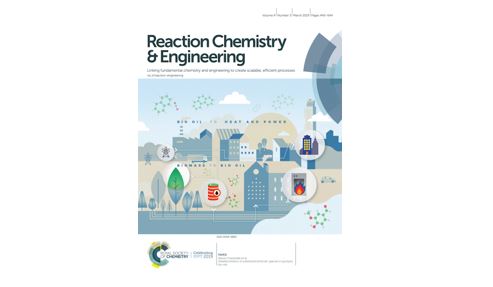 Read the publication that featured this abstract
Read the publication that featured this abstractCurrently, rate-based understanding of organic reactions employed in the manufacture of active pharmaceutical ingredients (APIs) is often not obtained. In many cases, the generation of kinetic models is still seen as a specialised and time intensive activity, which can only be justified at certain instances in development. In this Communication, we report the application of a definitive screening design (DSD) in combination with reaction profiling for the efficient collection of kinetic data. The experimental data (10 profiles, 40 experimental data points) were collected within a short time frame (<1 week) within a continuous flow reactor. The data were fitted to a multistep kinetic model consisting of 3 fitted rate constants and 3 fitted activation energies. The approach is demonstrated on a Friedel-Crafts type reaction used in the synthesis of an important API. Our approach enables early identification of the sensitivity of product quality to parameter changes and the early use of process models to identify optimal process-equipment combinations in silico, significantly reducing development time and scale-up risks.
Visible light‐promoted Fe‐catalyzed Csp2‐Csp3 Kumada cross‐coupling in flow
- Xiao-Jing Weia
- Irini Abdiajb
- Carlo Sambiagioa
- Chenfei Lic
- Eli Zysman-Colmanc
- Jesús Alcázarb
- Timothy Noëla
- a Department of Chemical Engineering and Chemistry Micro Flow Chemistry and Synthetic Methodology Eindhoven University of Technology Den Dolech 2, 5612 AZ Eindhoven (The Netherlands)
- b Discovery Sciences, Janssen Research and Development Jannsen-Cilag, S.A. Jarama 75A, 45007 Toledo (Spain)
- c Organic Semiconductor Center, EaStCHEM School of ChemistryUniversity of St Andrews, St Andrews, Fife, KY16 9ST (UK).
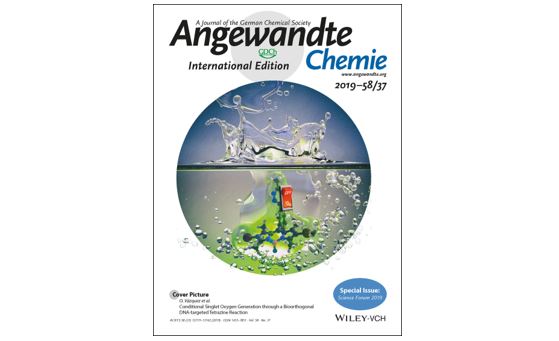 Read the publication that featured this abstract
Read the publication that featured this abstractA continuous‐flow, visible light‐promoted method has been developed to overcome the limitations of Fe‐catalyzed Kumada‐Corriu cross‐couplings. A variety of strongly electron‐rich aryl chlorides, previously hardly reactive, could be efficiently coupled with aliphatic Grignard reagents at room temperature, in high yields and within a few minutes residence time, considerably enhancing the applicability of this Fe‐catalyzed reaction. The robustness of this protocol was demonstrated on the multi‐gram scale, providing the potential for future pharmaceutical application.
Experimental Methods in Chemical Engineering: Micro‐Reactors
- Arturo Macchi a
- Patrick Plouffe a
- Gregory S. Patience b
- Dominique M. Roberge c
- a Centre for Catalysis Research and Innovation, Department of Chemical and Biological Engineering, University of Ottawa, Ottawa, ON, K1N 6N5 Canada
- b Department of Chemical Engineering ‐ Ecole Polytechnique de Montreal, QC, H3C 3A7 Canada
- c Chemical Manufacturing Technologies, Lonza AG, CH‐, 3930 Visp, Switzerland
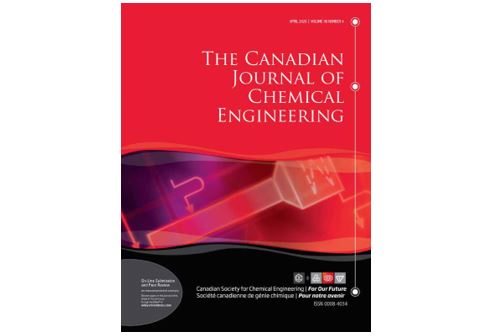 Read the publication that featured this abstract
Read the publication that featured this abstractWhereas the bulk chemical industry has historically sought economic advantage through economies of scale, a paradigm shift has researchers developing systems on smaller scales. Nano‐cages and nano‐actuators increase selectivity and robustness at the molecular scale. In parallel, micro‐contactors with sub‐millimeter lateral dimensions are decreasing boundary layers that restrict heat and mass transfer and thus meet the objectives of process intensification with great increases in productivity with a smaller footprint. These contactors continue to serve chemical engineers and chemists to synthesize fine chemicals and characterize catalysts, however, now have been adopted for sensors in biological and biochemical systems. A bibliometric analysis of articles indexed in the Web of Science in 2016 and 2017 identified five major clusters of research: catalysis and bulk chemicals; nanoparticles; organic synthesis and flow chemistry; systems and micro‐fluidics applied to biochemistry; and micro‐channel reactors and mass transfer. In the early 1990s, less than 100 articles a year mentioned micro‐reactors, while over 943 articles mentioned it in 2017. Here, we introduce micro‐reactors and their role in the continuous synthesis of fine chemicals across the various scales to commercialization.
Continuous Flow Synthesis of Highly Substituted Tetrahydrofurans
- Patrick Hoffmeyer, Christoph Schneider
- Institute of Organic Chemistry, University of Leipzig, Johannisallee 29, D, ‐04103 Leipzig Germany
 Read the publication that featured this abstract
Read the publication that featured this abstractUnder continuous flow conditions, the diastereoselective synthesis of a broad range of 2,3,5‐trisubstituted tetrahydrofurans has been developed. Compared to the initial batch synthesis both yields and selectivities with respect to different substituents in the 2,5‐position were improved and reaction times significantly reduced.
The highly diastereoselective synthesis of multiply substituted tetrahydrofurans was achieved in a sequential process under continuous flow conditions. Greatly reduced reaction times, improved selectivities and enhanced yields are the benefits of this approach in comparison to the initial batch synthesis. Moreover, gram amounts of product were produced in the flow reactor likewise due to facile upscaling. In addition, employing a novel bis(silyl)dienediolate tetrasubstituted tetrahydrofurans were made accessible as well.
Peroxidation of 2-oxindole and barbituric acid derivatives under batch and continuous flow using an eco-friendly ethyl acetate solvent
- Moreshwar B. Chaudhari a
- Nirmala Mohanta a
- Akanksha M. Pandey a
- Madhusoodhanan Vandana b
- Krishanpal Karmodiya b
- Boopathy Gnanaprakasam*a
- a Department of Chemistry, Indian Institute of Science Education and Research (IISER) Pune, Dr. Homi Bhabha Road, Pune 411008, India
- b Department of Biology, Indian Institute of Science Education and Research (IISER) Pune, Dr. Homi Bhabha Road, Pune 411008, India
 Read the publication that featured this abstract
Read the publication that featured this abstractThe C(sp3)–H peroxidation of 2-oxindole and barbituric acid derivatives using aliphatic peroxides under continuous flow and their antimalarial evaluation in vitro have been explored using magnetic iron oxide nanoparticles. This transformation uses less toxic, low cost, and eco-friendly ethyl acetate as a solvent. To show the robustness, supported catalysis integrated with continuous-flow was employed as a process development tool for the expeditious synthesis of quaternary peroxide derivatives with a residence time of 7.9 minutes. Additionally, the explosive hazards of TBHP (tert-butyl hydroperoxide) were also minimized during peroxidation in a continuous-flow process by controlled addition.
Rapid and Multigram Synthesis of Vinylogous Esters under Continuous Flow: An Access to Transetherification and Reverse Reaction of Vinylogous Esters
- Nirmala Mohanta
- Moreshwar B. Chaudhari
- Naveen Kumar Digrawal
- Boopathy Gnanaprakasam*
- Department of Chemistry, Indian Institute of Science Education and Research, Pune 411008, India
 Read the publication that featured this abstract
Read the publication that featured this abstractAn environmentally benign approach for the synthesis of vinylogous esters from 1,3-diketone and its reverse reaction under continuous-flow has been developed with alcohols in the presence of inexpensive Amberlyst-15 as a catalyst. This methodology is highly selective and general for a range of cyclic 1,3-dicarbonyl compounds which gives a library of linear alkylated and arylated vinylogous esters in good to excellent yield under solvent and metal free condition. Furthermore, the long-time experiment in a continuous-flow up to 40 h afforded 8.0 g of the vinylogous ester with turnover number (TON) = 28.6 and turnover frequency (TOF) = 0.715 h–1 using Amberlyst-15 as a catalyst. Furthermore, a continuous-flow sequential transetherification of vinylogous esters with various alcohols has been achieved in high yield. Reversibly, this vinylogous ester was deprotected or hydrolyzed into ketone using environmentally benign water as a solvent and Amberlyst-15 as a catalyst under continuous-flow process.
Continuous manufacturing – the Green Chemistry promise?
- Luke Rogers and Klavs F. Jensen
- Department of Chemical Engineering, MIT, 77 Massachusetts Avenue, Cambridge, MA 02139-4307, USA
 Read the publication that featured this abstract
Read the publication that featured this abstractContinuous manufacturing and Green Chemistry, are two promising approaches to synthesis with underutilized potential that are gaining traction by the wider pharmaceutical community. We review Green Chemistry advances resulting when transitioning to continuous manufacturing with focus on Green Chemistry elements inherent in flow chemistry and related separation processes. Case studies of continuous manufacturing represented by the F3 (Flexible, Fast, and Future) project, cGPM manufacturing at Eli Lilly, and the MIT pharmaceuticals on demand projects provide examples of Green Chemistry advances realised. Throughout the review, Green Chemistry advances are identified in terms of the pertinent principles of Green Chemistry. A count of the occurrences of the different principles of Green Chemistry reveals that the principle of prevention greatly overshadows all other principles.
Practical and regioselective amination of arenes using alkyl amines
- Alessandro Ruffoni 1
- Fabio Juliá 1
- Thomas D. Svejstrup 1
- Alastair J. McMillan 1
- James J. Douglas 2
- Daniele Leonori 1
- 1 School of Chemistry, University of Manchester, Manchester, UK.
- 2 Early Chemical Development, Pharmaceutical Sciences, IMED Biotech Unit,AstraZeneca, Macclesfield, UK
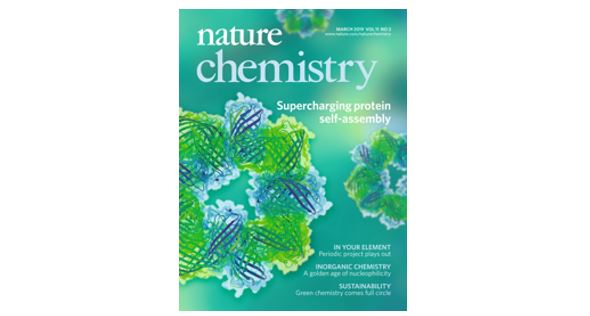 Read the publication that featured this abstract
Read the publication that featured this abstractThe formation of carbon–nitrogen bonds for the preparation of aromatic amines is among the top five reactions carried out globally for the production of high-value materials, ranging from from bulk chemicals to pharmaceuticals and polymers. As a result of this ubiquity and diversity, methods for their preparation impact the full spectrum of chemical syntheses in academia and industry. In general, these molecules are assembled through the stepwise introduction of a reactivity handle in place of an aromatic C–H bond (that is, a nitro group, halogen or boronic acid) and a subsequent functionalization or cross-coupling. Here we show that aromatic amines can be constructed by direct reaction of arenes and alkyl amines using photocatalysis, without the need for pre-functionalization. The process enables the easy preparation of advanced building blocks, tolerates a broad range of functionalities, and multigram scale can be achieved via a batch-to-flow protocol. The merit of this strategy as a late-stage functionalization platform has been demonstrated by the modification of several drugs, agrochemicals, peptides, chiral catalysts, polymers and organometallic complexes.
The Influence of Residence Time Distribution on Continuous-Flow Polymerization
- Marcus H. Reis
- Travis P. Varner
- Frank A. Leibfarth
- Department of Chemistry, The University of North Carolina at Chapel Hill, Chapel Hill, NC 27599, USA
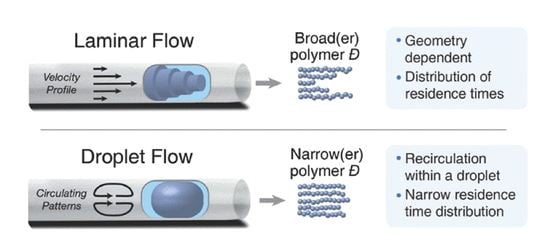 Read the publication that featured this abstract
Read the publication that featured this abstractContinuous-flow chemistry is emerging as an enabling technology for the synthesis of precise polymers. Despite recent advances in this rapidly growing field, there remains a need for a fundamental understanding of how fluid dynamics in tubular reactors influence polymerizations. Herein, we report a comprehensive study of how laminar flow influences polymer structure and composition. Tracer experiments coupled with in-line UV-vis spectroscopy demonstrate how viscosity, tubing diameter, and reaction time affect the residence time distribution (RTD) of fluid in reactor geometries relevant for continuous-flow polymerizations. We found that the breadth of the RTD has strong, statistical correlations with reaction conversion, polymer molar mass, and dispersity for polymerizations conducted in continuous flow. These correlations were demonstrated to be general to a variety of different reaction conditions, monomers, and polymerization mechanisms. Additionally, these findings inspired the design of a droplet flow reactor that minimizes the RTD in continuous-flow polymerizations and enables the continuous production of well-defined polymer at a rate of 1.4 kg/day.
Additive manufacturing of photoactive polymers for visible light harvesting
- Adilet Zhakeyevac
- John Tobina
- Huizhi Wangb
- Filipe Vilelaa
- Jin Xuanac
- a School of Engineering and Physical Sciences, Heriot-Watt University, Edinburgh, EH14 4AS, UK
- b Department of Mechanical Engineering, Imperial College London, Exhibition Road, South Kensington Campus, London, SW7 2AZ, UK
- c Department of Chemical Engineering, Loughborough University, Loughborough, UK
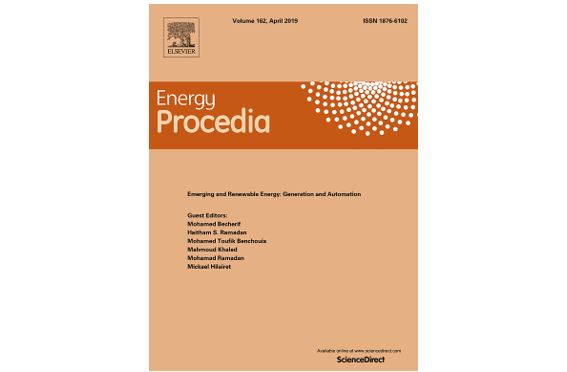 Read the publication that featured this abstract
Read the publication that featured this abstractIn recent years, 3D printing has gained a great deal of attention in the energy field, with numerous reports demonstrating its application in fabrication of electrochemical devices. The near-complete freedom of design offered by 3D printing technologies make them very appealing, since complex 3D parts can be directly fabricated. However, its application in photochemistry and solar energy harvesting remains, so far, an uncharted territory. In this work, a photoactive monomer was incorporated into commercially available 3D printing resin, which was subsequently used to successfully fabricate 3D photosensitizing structures for singlet oxygen generation. Results indicate that the SLA fabricated small-scale (0.1 ml) photoactive continuous flow reactor shows activity in singlet oxygen synthesis reaction under visible light irradiation (420 nm).
Modeling and Design of a Flow-Microreactor-Based Process for Synthesizing Ionic Liquids
- Yuichi Nakahara *†⊥
- Bert Metten ‡
- Osamu Tonomura §⊥
- Aiichiro Nagaki ∥⊥
- Shinji Hasebe §⊥
- Jun-ichi Yoshida ⊥#
- Francesco Molinari 1
- † New Frontiers Research Group, Frontier Research Laboratories, Institute For Innovation, Ajinomoto Co., Inc., 1-1 Suzuki-cho, Kawasaki-ku, Kawasaki, Kanagawa 210-8681, Japan
- ‡ Ajinomoto Bio Pharma Services, Cooppallaan 91, B-9230 Wetteren, Belgium
- § Department of Chemical Engineering, Graduate School of Engineering, Kyoto University, Nishikyo-ku, Kyoto 615-8510, Japan
- ∥ Department of Synthetic Chemistry and Biological Chemistry, Graduate School of Engineering, Kyoto University, Nishikyo-ku, Kyoto 615-8510, Japan
- ⊥ Micro Chemical Production Study Consortium in Kyoto University, Kyoto University, Nishikyo-ku, Kyoto 615-8510, Japan
- # National Institute of Technology, Suzuka College, Shiroko-cho, Suzuka, Mie 510-0294, Japan
 Read the publication that featured this abstract
Read the publication that featured this abstractA synthesis process for the ionic liquid (IL) 1-butyl-3-methylimidazolium chloride (BMIM.Cl) was developed using a flow microreactor (FMR) in this study. After the reaction rate analysis, the FMR was efficiently designed using computational fluid dynamics simulation, which can shorten the process development time by reducing trial-and-error experimentation. The designed FMR is composed of a V-shaped mixer and a tubular reactor having a millimeter-scale inner diameter. From the viewpoint of process operation and control, reactors with larger inner diameter are basically preferable. The influence of three inner diameters, 0.75, 2.16, and 4.35 mm, that satisfy temperature constraints on product quality, product yield, and production volume was investigated. It was found that as the inner diameter becomes large, the product yield becomes low because the mass transfer approaches the rate-limiting step of the reaction process. To avoid this problem, it was proposed that static mixers should be built in the reactor having the inner diameter of 4.35 mm. As a result, its production volume, without lowering the product yield, could be improved about 39 times compared with the conventional one.
Synthesis of a Renewable Macrocyclic Musk: Evaluation of Batch, Microwave, and Continuous Flow Strategies
- Émilie Morin §
- Johann Sosoe §
- Michaël Raymond §
- Benjamin Amorelli †*
- Richard M. Boden †
- Shawn K. Collins *§
- § Department of Chemistry and Centre for Green Chemistry and Catalysis, Université de Montréal, CP 6128 Station Downtown, Montréal, Québec, Canada H3C 3J7
- † Research & Development, International Flavors & Fragrances Inc., 1515 State Route 36, Union Beach, New Jersey, 07735, United States
 Read the publication that featured this abstract
Read the publication that featured this abstractThe renewable macrocyclic musk 3-methylcyclohexadec-6-enone was prepared via macrocyclic olefin metathesis on gram scale using two different protocols: a room temperature batch process which afforded a 57% yield of the desired macrocycle, but required long reaction times (5 d). In contrast, a continuous flow strategy provided a lower yield of 32% of macrocycle, although the short reaction times (150 °C, 5 min) improve throughput (1 g/4.8 h). Batch and continuous flow protocols were also tested on other macrocyclizations involving substrates bearing trisubstituted olefins.
Bioprocess Intensification Using Flow Reactors: Stereoselective Oxidation of Achiral 1,3-diols with Immobilized Acetobacter Aceti
- Valerio De Vitis 1
- Federica Dall’Oglio 2
- Francesca Tentori 3
- Martina Letizia Contente 4
- Elisabetta Brenna 3
- Lucia Tamborini 2
- Francesco Molinari 1
- 1 Department of Food, Environmental and Nutritional Sciences (DeFENS), Università degli Studi di Milano, Via Celoria 2, 20133 Milan, Italy
- 2 Department of Pharmaceutical Sciences (DISFARM), Università degli Studi di Milano, Via Mangiagalli 25, 20133 Milan, Italy
- 3 Dipartimento di Chimica, Materiali ed Ingegneria Chimica “Giulio Natta” Politecnico di Milano, Via Mancinelli 7, I-20131 Milan, Italy
- 4 School of Chemistry, University of Nottingham, University Park, Nottingham, NG7 2RD, UK
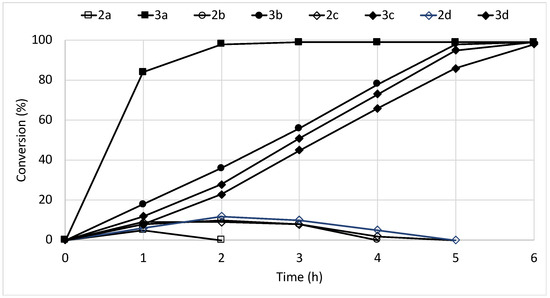 Read the publication that featured this abstract
Read the publication that featured this abstractEnantiomerically enriched 2-hydroxymethylalkanoic acids were prepared by oxidative desymmetrisation of achiral 1,3-diols using immobilized cells of Acetobacter aceti in water at 28 °C. The biotransformations were first performed in batch mode with cells immobilized in dry alginate, furnishing the desired products with high molar conversion and reaction times ranging from 2 to 6 h. The biocatalytic process was intensified using a multiphasic flow reactor, where a segmented gas–liquid flow regime was applied for achieving an efficient O2-liquid transfer; the continuous flow systems allowed for high yields and high biocatalyst productivity.
Reversible chemoselective transetherification of vinylogous esters using Fe-catalyst under additive free conditions
- Nenavath Parvathalu, Sandip G. Agalave, Nirmala Mohanta and Boopathy Gnanaprakasam
- Department of Chemistry, Indian Institute of Science Education and Research, Pune-411008, India
 Read the publication that featured this abstract
Read the publication that featured this abstractAn additive/Brønsted acid/base free, highly efficient and chemoselective transetherification of electron deficient vinylogous esters and water mediated de-alkylation using an earth-abundant Fe-catalyst under very mild reaction conditions is described. This reaction is highly selective to primary alcohols over secondary alcohols, has good functional group tolerance, is scalable to gram scale and a purification free sequential transetherification in a continuous flow mode is demonstrated.
Investigation of a Weak Temperature–Rate Relationship in the Carbamoylation of a Barbituric Acid Pharmaceutical Intermediate
- Alexander G. O’Brien *†
- Yangmu Chloe Liu *†
- Mark J. Hughes ‡
- John Jin Lim †
- Neil S. Hodnett ‡
- Nicholas Falco†
- † GlaxoSmithKline, 1250 South Collegeville Road, Collegeville, Pennsylvania 19426, United States
- ‡ GlaxoSmithKline, Medicines Research Centre, Gunnels Wood Road, Stevenage, Hertfordshire SG1 2NY, United Kingdom
 Read the publication that featured this abstract
Read the publication that featured this abstractThe rate of reaction between N,N′-dicyclohexylbarbituric acid 1 and ethyl 2-isocyanatoacetate 2 is invariant with temperature. Positive orders in each reactant and dissociation of triethylammonium salts of 1 and product 3 at elevated temperature indicate that reaction occurs via a catalytic mechanism where changes to the positions of equilibria negate changes in the rate of the turnover-limiting step. A model for the consumption of 1 in a flow reactor accurately predicted the outcome of a laboratory-scale multivariate study.
Protection‐Group‐Free Synthesis of Sequence‐Defined Macromolecules via Precision λ‐Orthogonal Photochemistry
- Waldemar Konrad1,2
- Christian Fengler1,2
- Sarrah Putwa1
- Christopher Barner-Kowollik1,2
- 1Macromolecular Architectures, Institut für Technische Chemie und Polymerchemie, Karlsruhe Institute of Technology (KIT), Engesserstr. 18, 76131 Karlsruhe, Germany
- 2School of Chemistry, Physics and Mechanical Engineering, Queensland University of Technology (QUT), 2 George Street, QLD, 4000 Brisbane, Australia
 Read the publication that featured this abstract
Read the publication that featured this abstractAn advanced light‐induced avenue to monodisperse sequence‐defined linear macromolecules via a unique photochemical protocol is presented that does not require any protection‐group chemistry. Starting from a symmetrical core unit, precision macromolecules with molecular weights up to 6257.10 g mol−1 are obtained via a two‐monomer system: a monomer unit carrying a pyrene functionalized visible light responsive tetrazole and a photo‐caged UV responsive diene, enabling an iterative approach for chain growth; and a monomer unit equipped with a carboxylic acid and a fumarate. Both light‐induced chain growth reactions are carried out in a λ‐orthogonal fashion, exciting the respective photosensitive group selectively and thus avoiding protecting chemistry. Characterization of each sequence‐defined chain (size‐exclusion chromatography (SEC), high‐resolution electrospray ionization mass spectrometry (ESI‐MS), and NMR spectroscopy), confirms the precision nature of the macromolecules.
Decarboxylative Intramolecular Arene Alkylation Using N-(Acyloxy)phthalimides, an Organic Photocatalyst, and Visible Light
- Trevor C. Sherwood*†
- Hai-Yun Xiao*†
- Roshan G. Bhaskar†
- Eric M. Simmons‡
- Serge Zaretsky‡
- Martin P. Rauch§
- Robert R. Knowles§
- T. G. Murali Dhar†
- † Research and Development, Bristol-Myers Squibb Company, P.O. Box 4000, Princeton, New Jersey 08543-4000, United States
- ‡ Chemical and Synthetic Development, Bristol-Myers Squibb, 1 Squibb Drive, New Brunswick, New Jersey 08903, United States
- §Department of Chemistry, Princeton University, Princeton, New Jersey 08544, United States
 Read the publication that featured this abstract
Read the publication that featured this abstractAn intramolecular arene alkylation reaction has been developed using the organic photocatalyst 4CzIPN, visible light, and N-(acyloxy)phthalimides as radical precursors. Reaction conditions were optimized via high-throughput experimentation, and electron-rich and electron-deficient arenes and heteroarenes are viable reaction substrates. This reaction enables access to a diverse set of fused, partially saturated cores which are of high interest in synthetic and medicinal chemistry.
Flow Electrochemical Cyclizations via Amidyl Radicals: Easy Access to Cyclic Ureas
Nisar Ahmeda,b*, Aggeliki Vgenopouloua
- a School of Chemistry, Cardiff University, Park Place, Cardiff, CF10 3AT, UK
- b School of Chemistry, University of Bristol, Bristol, BS8 1TS, UK
Read the publication that featured this abstractFlow chemistry has advantages over batch processes and can achieve the synthesis of substances in high yield under safe working conditions. The combination of electrochemistry and flow microreactor technology has made chemical transformations possible without the use of oxidants or catalysts. Herein, we report flow electrosynthesis of cyclic ureas via oxyamination of N-allylic ureas. We have found that continuous flow is able to outperform its batch counterpart, producing cyclic ureas in excellent yields.
Efficient Flow Electrochemical Alkoxylation of Pyrrolidine-1-Carbaldehyde
- Nasser Amria
- Ryan A. Skiltonb
- Duncan Guthrieb
- Thomas Wirth*a
- a School of Chemistry, Cardiff University, Park Place, Cardiff, CF10 3AT, UK
- b Vapourtec Ltd., 21 Park Farm Business Centre, Bury St Edmunds, IP28 6TS, UK
 Read the publication that featured this abstract
Read the publication that featured this abstractWe report on the optimization of the alkoxylation of pyrrolidine-1-carbaldehyde by using a new electrochemical microreactor. Precise control of the reaction conditions permits the synthesis of either mono- or dialkoxylated reaction products in high yields.
Overcoming Water Insolubility in Flow: Enantioselective Hydrolysis of Naproxen Ester
- David Roura Padrosa1
- Valerio De Vitis2
- Martina Letizia Contente1*
- Francesco Molinari2
- Francesca Paradisi1*
- 1 School of Chemistry, University of Nottingham, University Park, Nottingham NG7 2RD, UK
- 2 Department of Food, Environmental and Nutritional Sciences (DeFENS), Università degli studi di Milano, Via Mongiagalli 25, 20133 Milan, Italy;
 Read the publication that featured this abstract
Read the publication that featured this abstractHydrolytic enantioselective cleavage of different racemic non-steroidal anti-inflammatory drugs (NSAIDs) ester derivatives has been studied. An engineered esterase form Bacillus subtilis (BS2m) significantly outperformed homologous enzymes from Halomonas elongata (HeE) and Bacillus coagulants (BCE) in the enantioselective hydrolysis of naproxen esters. Structural analysis of the three active sites highlighted key differences which explained the substrate preference. Immobilization of a chimeric BS2m-T4 lysozyme fusion (BS2mT4L1) was improved by resin screening achieving twice the recovered activity (22.1 ± 5 U/g) with respect to what had been previously reported, and was utilized in a packed bed reactor. Continuous hydrolysis of α-methyl benzene acetic acid butyl ester as a model substrate was easily achieved, albeit at low concentration (1 mM). However, the high degree of insolubility of the naproxen butyl ester resulted in a slurry which could not be efficiently bioconverted, despite the addition of co-solvents and lower substrate concentration (1 mM). Addition of Triton® X-100 to the substrate mix yielded 24% molar conversion and 80% e.e. at a 5 mM scale with 5 min residence time and sufficient retention of catalytic efficiency after 6 h of use.
A solid-supported arylboronic acid catalyst for direct amidation
- Yihao Dua,
- Thomas Barbera,
- Sol Ee Lima,
- Henry S. Rzepab,
- Ian R. Baxendale*a,
- Andrew Whiting*a,
- a Centre for Sustainable Chemical Processes, Department of Chemistry, Durham University, Science Laboratories, South Road, Durham, UK
- a Department of Chemistry, Imperial College, South Kensington Campus, London, UK
 Read the publication that featured this abstract
Read the publication that featured this abstractAn efficient heterogeneous amidation catalyst has been prepared by co-polymerisation of styrene, DVB with 4-styreneboronic acid, which shows wide substrate applicability and higher reactivity than the equivalent homogeneous phenylboronic acid, suggesting potential cooperative catalytic effects. The catalyst can be easily recovered and reused; suitable for use in packed bed flow reactors.
Visible Light‐Promoted Beckmann Rearrangements: Separating Sequential Photochemical and Thermal Phenomena in a Continuous Flow Reactor
- Yuesu Chen
- David Cantillo
- C. Oliver Kappe
- Karl-Franzens-Universitat Graz, Institute of Chemistry, 8010 Graz, AUSTRIA
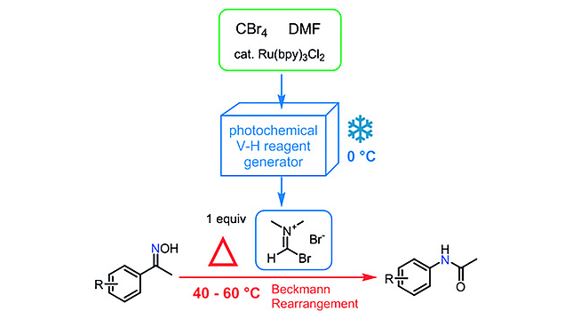 Read the publication that featured this abstract
Read the publication that featured this abstractThe Beckmann rearrangement of oximes to amides typically requires strong acids or highly reactive, hazardous electrophiles and/or high tempertatures to proceed. A very attractive alternative is the in situ generation of Vilsmeier‐Haack reagents, by means of photoredox catalysis, as promoters for the thermal rearrangement. Investigation of the reaction parameters for this light induced method using a one‐pot strategy has shown that the reaction is limited by the different temperatures required for each of the two sequential steps. Using a continuous flow reactor, the photochemical and thermal processes have been separated by integrating a flow photoreactor unit at low temperature for the electrophile generation with a second reactor unit, at high temperature, where the rearrangement takes place. This strategy has enabled excellent conversions and yields for a diverse set of oximes, minimizing all side products that were being obtained with the original one‐pot method.
A Consolidated and Continuous Synthesis of Ciprofloxacin from a Vinylogous Cyclopropyl Amide
- N. Perrer Tosso, Bimbisar K. Desai, Eliseu De Oliveira, Juekun Wen, John Tomlin, and B. Frank Gupton*
- Department of Chemistry and Department of Chemical and Life Science Engineering, Virginia Commonwealth University, 601 West Main Street, Richmond, Virginia 23220, United States
 Read the publication that featured this abstract
Read the publication that featured this abstractCiprofloxacin is a broad-spectrum antibiotic that is recognized as one of the World Health Organization’s Essential Medicines. It is particularly effective in the treatment of Gram-negative bacterial infections associated with urinary, respiratory, and gastrointestinal tract infections. A streamlined and high yielding continuous synthesis of ciprofloxacin has been developed, which employs a chemoselective C-acylation step that precludes the need for intermediate isolations, extractions, or purifications. The end-to-end process has a residence time of 4.7 min with a 15.8 g/h throughput at laboratory scale and an overall isolated yield of 83%.
Emerging Trends in Flow Chemistry and Applications to the Pharmaceutical Industry
- Andrew R Bogdan
- Amanda W Dombrowski
- Discovery Chemistry and Technologies, AbbVie, Inc., 1 North Waukegan Road, North Chicago, Illinois 60064, United States
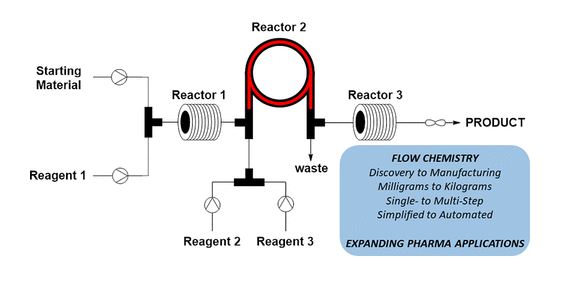 Read the publication that featured this abstract
Read the publication that featured this abstractThe field of flow chemistry has garnered considerable attention over the past two decades. This perspective highlights many recent advances in the field of flow chemistry and discusses applications to the pharmaceutical industry, from discovery to manufacturing. From a synthetic perspective, a number of new enabling technologies are providing more rationale to run reactions in flow over batch techniques. Additionally, highly automated flow synthesis platforms have been developed with broad applicability across the pharmaceutical industry, ranging advancing medicinal chemistry programs to self-optimizing synthetic routes. A combination of simplified and automated systems is discussed, demonstrating how flow chemistry solutions can be tailored to fit the specific needs of a project.
Towards a Scalable Synthesis of 2‐Oxabicyclo[2.2.0]hex‐5‐en‐3‐one Using Flow Photochemistry
- Jason D. Williamsa,b
- Yuma Otakea
- Guilhem Coussanesc
- Iakovos Saridakiscc
- Nuno Maulidecc
- C. Oliver Kappeaa,b
- a Center for Continuous Flow Synthesis and Processing (CC FLOW), Research Center Pharmaceutical Engineering GmbH (RCPE), Inffeldgasse 13, 8010 Graz, Austria
- b Institute of Chemistry, University of Graz, NAWI Graz, Heinrichstrasse 28, 8010 Graz, Austria
- c Institute of Organic Chemistry, University of Vienna, Währinger Strasse 38, 1090 Vienna, Austria
 Read the publication that featured this abstract
Read the publication that featured this abstractCyclobutene lactones hold great potential as synthetic building blocks, yet their preparation by photochemical rearrangement in batch can often be a bottleneck in synthetic studies. We report the use of flow photochemistry as a tool to enable a higher‐throughput approach to the synthesis of 2‐oxabicyclo[2.2.0]hex‐5‐en‐3‐one, which reduces reaction times from 24 hours to 10 minutes. Accordingly, a significantly improved throughput of 144 mg/h (vs 14‐21 mg/h in batch) was achieved. Scale‐out experiments showed problematic reactor fouling, whereby steps were taken to explore and minimize this effect.
Continuous flow processing as a tool for the generation of terpene-derived monomer libraries
- Renan Galavernaa
- Lucas P. Fernandesa
- Duncan L. Browneb
- Julio C. Pastrea
- a Institute of Chemistry, University of Campinas – UNICAMP, Campinas, Brazil
- b School of Chemistry, Cardiff University, Main Building, Park Place, Cardiff CF10 3AT, UK
 Read the publication that featured this abstract
Read the publication that featured this abstractWe report the development of a continuous flow approach for the preparation of two bio-derived monomer libraries. A small range of terpenes (ocimene, myrcene, α-terpinene, α-phellandrene, isoprene, and farnesene) have been used as the base set for the library, with the first library derived from a Diels–Alder reaction with the platform chemical maleic anhydride. The second library requires the derivatization of the first through a hydrogenation reaction. The potential for scale-up of both libraries has been demonstrated, with the Diels–Alder process delivering 10.5 grams of the product in 3 hours and the hydrogenation process delivering 10 grams of the material in 16 hours.
Rapid Photochemical Reaction Studies under Continuous-flow Conditions in the Vapourtec UV-150 Reactor-A Technical Note
- Richard Huntera
- Sam Joslanda
- Joseph Mooreb
- Duncan Guthrieb
- Mark J. Robertsona
- Michael Oelgemöllera
- a College of Science and Engineering, James Cook University, Townsville, QLD 4911, Australia
- b Vapourtec Ltd, Park Farm Business Centre, Fornham St Genevieve, Bury St Edmunds, Suffolk, IP28 6TS, UK
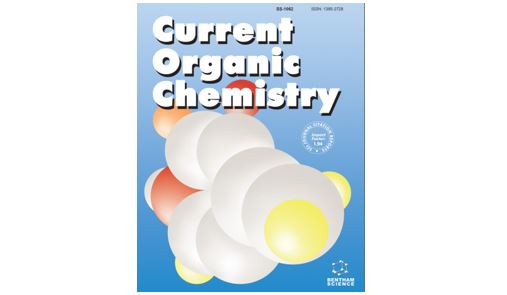 Read the publication that featured this abstract
Read the publication that featured this abstractFive different model reactions (photodecarboxylation, inter- and intramolecular [2+2] cycloadditions, TiO2 photocatalytic reduction and type II photooxygenation) were investigated in the advanced Vapourtec UV-150 photo reactor with their conversion and throughput potentials reported. Compared to known batch reactions in laboratory reactors, significantly higher calculated productivities were achieved despite a rather small 10 mL reactor coil. The device enables rapid, convenient, reliable and reproducible flow photochemistry studies across the entire wavelengths spectrum and on flexible scales.
Enabling synthesis in fragment-based drug discovery by reactivity mapping: photoredox-mediated cross-dehydrogenative heteroarylation of cyclic amines
- Rachel Grainger*a
- Tom D. Heightmana
- Steven V. Leyb
- Fabio Limab,c
- Christopher N. Johnson*a
- a Astex Pharmaceuticals, 436 Cambridge Science Park, Milton Road, Cambridge, UK
- b Department of Chemistry, University of Cambridge, Lensfield Road, Cambridge CB2 1EW, UK
- c Novartis Pharma AG, Novartis Campus, 4002 Basel, Switzerland
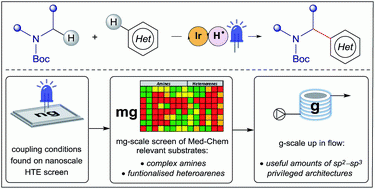 Read the publication that featured this abstract
Read the publication that featured this abstractIn fragment-based drug discovery (FBDD), a weakly binding fragment hit is elaborated into a potent ligand by bespoke functionalization along specific directions (growth vectors) from the fragment core in order to complement the 3D structure of the target protein. This structure-based design approach can present significant synthetic challenges, as growth vectors often originate on sp2 or sp3 ring carbons which are not the most synthetically accessible points on the fragment. To address this issue and expedite synthesis in FBDD, we established a nanogram-to-gram workflow for the development of enabling synthetic transformations, such as the direct C–H functionalization of heterocycles. This novel approach deploys high-throughput experimentation (HTE) in 1536-well microtiter plates (MTPs) facilitated by liquid handling robots to screen reaction conditions on the nanomolar scale; subsequently the reaction is upscaled in a continuous flow to generate gram-quantities of the material. In this paper, we disclose the use of this powerful workflow for the development of a photoredox-mediated cross-dehydrogenative coupling of fragments and medicinally relevant heterocyclic precursors via Minisci-type addition of α-amino radicals to electron-deficient heteroarenes. The optimized reaction conditions were employed on the milligram-scale on a diverse set of 112 substrates to map out structure–reactivity relationships (SRRs) of the transformation. The coupling exhibits excellent tolerance to a variety of functional groups and N-rich heteroarenes relevant to FBDD and was upscaled in a continuous flow to afford gram-quantities of pharmaceutically relevant sp2–sp3 privileged architectures.
Enhanced mixing of biphasic liquid-liquid systems for the synthesis of gem-dihalocyclopropanes using packed bed reactors
- T von Keutz1,2
- D Cantillo1,2
- CO Kappe1,2
- 1 Center for Continuous Flow Synthesis and Processing (CCFLOW) Research Center Pharmaceutical Engineering GmbH (RCPE) Graz, Austria
- 2 Institute of Chemistry, NAWI Graz, University of Graz, Graz, Austria
 Read the publication that featured this abstract
Read the publication that featured this abstractA continuous flow procedure for the gem-dichlorocyclopropanation of alkenes has been developed. The method is based on the generation of dichlorocarbene utilizing the classical biphasic aqueous sodium hydroxide/chloroform system. This reaction typically requires vigorous stirring for several hours in batch for completion. Tarry materials precipitate due to partial polymerization of dichlorocarbene and the process is difficult to scale. To overcome these problems and achieve very efficient mixing during the flow process a column reactor packed with PTFE beads as inert filling material has been used. PTFE beads have been found to be the optimal material to obtain fine dispersions of the aqueous phase in the organic solution. By heating the packed-bed reactor at 80 °C excellent conversions have been achieved after a residence time of only 4 min. The process has been applied for the synthesis of Ciprofibrate, a dichlorocyclopropane-containing drug used as treatment for several diseases associated with high lipid content in blood.
Deprotection of N-Boc Groups Under Continuous Flow High Temperature Conditions
- Bryan Li
- Ruizhi Li
- Peter Dorff
- James Christopher McWilliams
- Robert M Guinn
- Steven M. Guinness
- Lu Han
- Ke Wang
- Shu Yu
- Medicinal Science, Worldwide Research and Development, Pfizer Inc., Eastern Point Road, Groton, Connecticut 06340, United States
 Read the publication that featured this abstract
Read the publication that featured this abstractThe scope of thermolytic, N-Boc deprotection was studied on 26 compounds from the Pfizer compound library, representing a diverse set of structural moieties. Among these compounds, 12 substrates resulted in clean (≥95% product) deprotection, and an additional three compounds gave ≥90% product. The thermal de-Boc conditions were found to be compatible with a large number of functional groups. A combination of computational modeling, statistical analysis, and kinetic model fitting was used to support an initial, slow, and concerted proton transfer with release of isobutylene, followed by a rapid decarboxylation. A strong correlation was found to exist between the electrophilicity of the N-Boc carbonyl group and the reaction rate.
A Laser Driven Flow Chemistry Platform for Scaling Photochemical Reactions with Visible Light
- Kaid C. Harper
- Eric G. Moschetta
- Shailendra V. Bordawekar
- Steven J. Wittenberger
- Process Research and Development, AbbVie Inc., 1 North Waukegan Road, North Chicago, Illinois 60064, United States
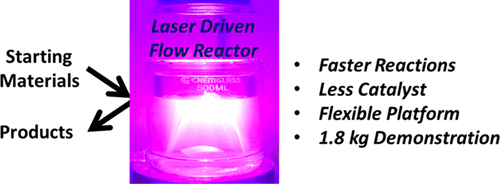 Read the publication that featured this abstract
Read the publication that featured this abstractVisible-light-promoted organic reactions can offer increased reactivity and selectivity via unique reaction pathways to address a multitude of practical synthetic problems, yet few practical solutions exist to employ these reactions for multikilogram production. We have developed a simple and versatile continuous stirred tank reactor (CSTR) equipped with a high-intensity laser to drive photochemical reactions at unprecedented rates in continuous flow, achieving kg/day throughput using a 100 mL reactor. Our approach to flow reactor design uses the Beer–Lambert law as a guideline to optimize catalyst concentration and reactor depth for maximum throughput. This laser CSTR platform coupled with the rationale for design can be applied to a breadth of photochemical reactions.
De novo design of organic photocatalysts: bithiophene derivatives for the visible‐light induced C‐H functionalization of heteroarenes
- Cecilia Bottecchia1
- Raul Martin2
- Irini Abdiaj3
- Ettore Crovini4
- Jesus Alcazar3
- Jesus Jorduna
- Maria Blesa
- Jose Carrillo3
- Pilar Prieto
- Timothy Noel1
- 1 TU Eindhoven, Netherlands
- 2 Universidad de Castilla-La Mancha Facultad de Ciencias y Tecnologias Quimicas de Ciudad Real, Spain
- 3 Janssen Research and Development, Spain
- 4 University of Saint Andrews School of Chemistry, United Kingdom
 Read the publication that featured this abstract
Read the publication that featured this abstractHerein, we report the de novo synthesis and characterization of a series of substituted bithiophene derivatives as novel and inexpensive organic photocatalysts. DFT calculations were used to predict a priori their absorption spectra and redox potentials, which were then confirmed with empirical data. The photocatalytic activity of this novel class of organic photoredox catalyst was demonstrated in two visible‐light mediated strategies for the C‐H functionalization of heteroarenes. The implementation of these strategies in a continuous‐flow photo‐microreactor afforded moderate to excellent yields within few minutes of reaction time. Due to their straightforward synthesis, low cost and good photocatalytic properties we believe that the proposed bithiophene derivatives could be employed as a new class of organic photoredox catalysts.
Integrating reactive distillation with continuous flow processing
- Marcus Baumann
- School of Chemistry, University College Dublin, Science Centre South, Belfield, Dublin 4, Ireland
 Read the publication that featured this abstract
Read the publication that featured this abstractA continuous flow process for the synthesis of trifluoromethylthioethers is reported. The palladium-catalyzed C-H trifluoromethylthiolation of amides derived from the 8-aminoquinoline using N-[(trifluoromethyl)thio]phthalimide produced the desired products in moderate to good yields with a residence time of 20 min. In comparison with the batch process, the reaction time was decreased by a factor of 100 to 200, demonstrating the positive effect of continuous flow processes for this type of reaction.
Enabling tools for continuous-flow biphasic liquid–liquid reaction
- Nopphon Weeranoppanant a
- a Department of Chemical Engineering, Faculty of Engineering, Burapha University, 169 Longhard Bangsaen, Saensook, Muang, Thailand
 Read the publication that featured this abstract
Read the publication that featured this abstractFlow chemistry has attracted considerable attention as it offers several advantages over conventional batch chemistry. Several multiphase reactions, including liquid–liquid reactions, are more efficient in flow due to intensified mass transfer. This observation has led to many developments of enabling tools in recent years. In this minireview, an up-to-date overview of such tools will be highlighted. In addition, interesting examples of the integrated continuous-flow process with liquid–liquid reactions will also be presented.
High-Throughput Template-Free Continuous Flow Synthesis of Polyaniline Nanofibers
- Rekha Singh†#
- Karuna Veeramani†‡#
- Rishab Bajpai†
- Anil Kumar*†‡§
- † Department of Chemistry, ‡ IITB-Monash Research Academy,§ National Centre for Excellence in Technologies for Internal Security (NCETIS), Indian Institute of Technology Bombay, Powai, Mumbai, 400076, India
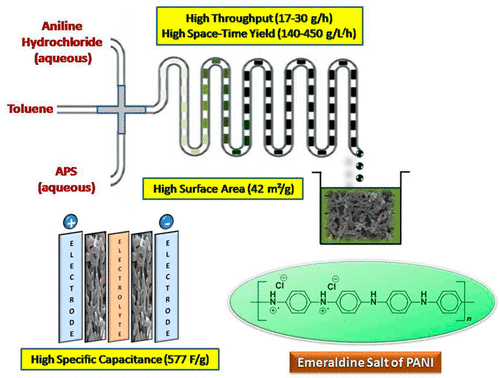 Read the publication that featured this abstract
Read the publication that featured this abstractThe large-scale and high-throughput synthesis of conjugated polymer based nanofibers always remain a challenge for the chemists due to the issues related to secondary nucleation in traditional batch processes. Typically polyaniline (PANI) nanofibers are synthesized under highly dilute conditions resulting in a very low throughput of few hundred milligrams per hour and a low space-time yield (STY) of 1–2 g·L–1·h–1. In this manuscript, we report the continuous flow synthesis of PANI nanofibers which results in high throughput (17–30 g·h–1) and high space-time yield (140–450 g·L–1·h–1). These polyaniline nanofibers show high surface area (42 m2·g–1), high specific capacitance (577 F·g–1), and high crystallinity. Finally, the present method is generic in nature and, in principle, can be extended for the synthesis of nanofibers of other conjugated polymers via oxidative polymerization.
A Continuous Flow Strategy for the Facile Synthesis and Elaboration of Semi‐Saturated Heterobicyclic Fragments
- Nicola Luise
- Eleanor Wyatt
- Gary Tarver
- Paul Graham Wyatt
- University of Dundee, School of Life Sciences, DD1 5EH Dundee, UNITED KINGDOM
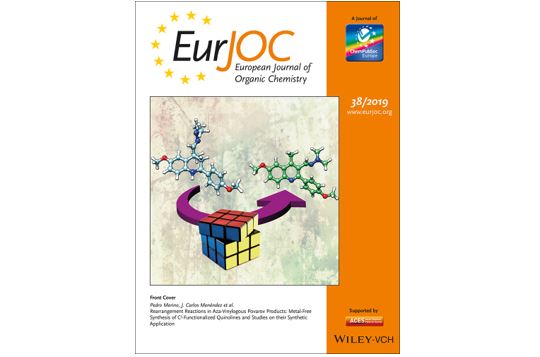 Read the publication that featured this abstract
Read the publication that featured this abstractAn efficient hydrogenation protocol under continuous flow conditions was developed for the synthesis of underrepresented semi‐saturated bicyclic fragments containing highly sp3‐rich skeletons for fragment‐based drug discovery (FBDD) programs. Excellent yields were generally achieved by using Pd/C (10% w/w) and RaNi at 25‐150 °C under 4‐100 bar of hydrogen pressure. The generated fragments, with appropriate physicochemical properties, present diverse hydrogen‐bonding pharmacophores and useful vectors for their synthetic elaboration in the optimization stage. Successive, simple functionalizations in continuous flow were accomplished to demonstrate the opportunity to develop multi‐step continuous flow synthesis of valuable starting points for FBDD campaigns. A conclusive quality control (QC) was essential to discard those structures that do not fit typical fragment library parameters.
Continuous Flow Chlorination of Alkenyl Iodides Promoted by Copper Tubing
- Antoine Niteleta
- Vanessa Kairouzb
- Hélène Lebelb
- André B. Charetteb
- Gwilherm Evanoa
- a Laboratoire de Chimie Organique, Service de Chimie et Physico, Chimie Organiques, Université libre de Bruxelles (ULB), Avenue F. D. Roosevelt 50, CP160/06, 1050 Brussels, Belgium
- b Centre in Green Chemistry and Catalysis, Faculty of Arts and Sciences, Department of Chemistry, Université de Montréal, P.O. Box 6128, Station Downtown, Montréal, Québec, H3C 3J7, Canada
 Read the publication that featured this abstract
Read the publication that featured this abstractA simple continuous flow synthesis of alkenyl chlorides from the corresponding readily available alkenyl iodides in copper reactor tubing is described. A variety of alkenyl chlorides were obtained in good to excellent yields with full retention of the double bond geometry. The reaction time was reduced by a factor of 24–48 compared to the batch process.
Continuous flow palladium-catalyzed trifluoromethylthiolation of C-H bonds
- Alexanne Bouchard 1
- Vanessa Kairouz 1
- Maxime Manneveau 2
- Heng-Ying Xiong 2
- Tatiana Besset 2
- 1 Department of Chemistry and Continuous Flow Synthesis Laboratory, Université de Montréal, Montréal, Canada
- 2 INSA Rouen, UNIROUEN, CNRS, COBRA (UMR 6014), Normandie Université, Rouen, France
 Read the publication that featured this abstract
Read the publication that featured this abstractA continuous flow process for the synthesis of trifluoromethylthioethers is reported. The palladium-catalyzed C-H trifluoromethylthiolation of amides derived from the 8-aminoquinoline using N-[(trifluoromethyl)thio]phthalimide produced the desired products in moderate to good yields with a residence time of 20 min. In comparison with the batch process, the reaction time was decreased by a factor of 100 to 200, demonstrating the positive effect of continuous flow processes for this type of reaction.
Continuous preparation for rifampicin
- Xin Li 1
- Zhuang Liu 1
- Zheng Fang 1
- Hao Qi 1
- Siyu Huang 1
- Shanshan Miao 1
- Kai Guo 1,2
- 1 College of Biotechnology and Pharmaceutical Engineering, Nanjing Tech University, Nanjing, China
- 2 State Key Laboratory of Materials-Oriented Chemical Engineering, Nanjing Tech University, Nanjing, China
 Read the publication that featured this abstract
Read the publication that featured this abstractTo reduce the cost and improve the efficiency for rifampicin preparation, a continuous flow synthesis of rifampicin starting from rifamycin S and tert-butylamine was studied in a microreactor. Two reaction steps and one purification step were coupled in a microreactor, and rifampicin was obtained with 67% overall yield. This method used 25% less 1-amino-4-methyl piperazine and got 16% higher overall yield without changing solvent and purification process between steps. This method has a good potential for further industrial application.
Using Carbon Dioxide as a Building Block in Continuous Flow Synthesis
- Hyowon Seo
- Long V. Nguyen
- Timothy F. Jamison
- Department of Chemistry, Massachusetts Institute of Technology, Cambridge, Massachusetts
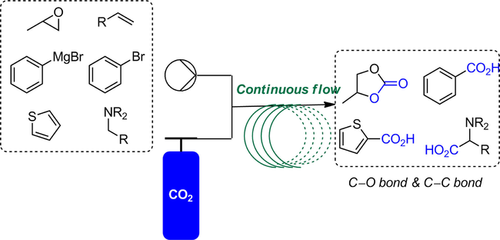 Read the publication that featured this abstract
Read the publication that featured this abstractCarbon dioxide (CO2) is an attractive building block for organic synthesis that is environmentally friendly. Continuous flow technologies have enabled C−O and C−C bond forming reactions with CO2 that previously were either low‐yielding or impossible in batch to afford value‐added chemicals. This review describes recent advances in continuous flow as an enabling strategy in utilizing CO2 as a C1 building block in chemical synthesis.
Chemoselective Synthesis of Amines from Ammonium Hydroxide and Hydroxylamine in Continuous Flow
- Clément Audubert
- Alexanne Bouchard
- Gary Mathieu
- Hélène Lebel
- Department of Chemistry and Centre in Green Chemistry and Catalysis (CGCC), Université de Montréal, P.O. Box 6128, Station Downtown, Montréal, QC H3C 3J7, Canada
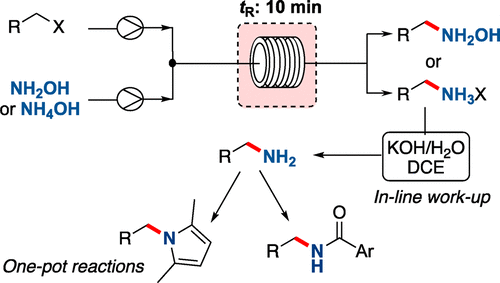 Read the publication that featured this abstract
Read the publication that featured this abstractThe chemoselective amination of alkyl bromides and chlorides with aqueous ammonia and hydroxylamine was achieved in continuous flow to produce primary ammonium salts and hydroxylamines in high yields. An in-line workup was designed to isolate the corresponding primary amine, which was also telescoped in further reactions, such as acylation and Paal–Knorr pyrrole synthesis. Monosubstituted epoxides are also compatible with the reaction conditions.
Enantiospecific cyclization of methyl N-(tert-butoxycarbonyl)-N-(3-chloropropyl)-D-alaninate to 2-methylproline derivative via ‘memory of chirality’ in flow
- Gianvito Vilé 1
- Gunther Schmidt 2
- Sylvia Richard-Bildstein 1
- Stefan Abele 2
- 1 Drug Discovery Chemistry, Idorsia Pharmaceuticals Ltd., Allschwil, Switzerland
- 2 Chemical Development, Idorsia Pharmaceuticals Ltd., Allschwil, Switzerland
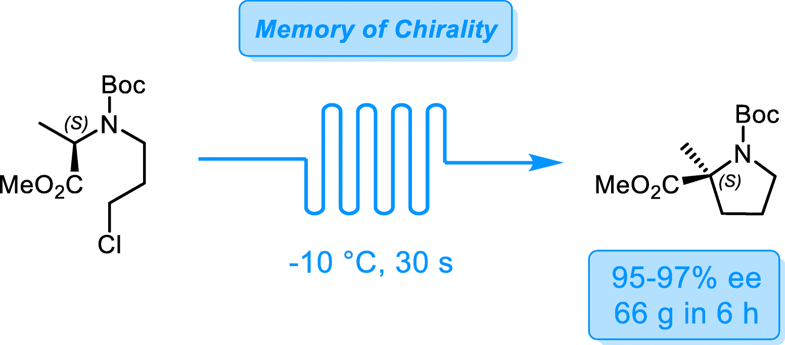 Read the publication that featured this abstract
Read the publication that featured this abstractWe report for the very first time a continuous-flow route to perform the intramolecular cyclization of haloalkyl-substituted α-amino esters via memory of chirality (MoC), using lithium bis(trimethylsilyl)amine as a base and methyl N-(tert-butoxycarbonyl)-N-(3-chloropropyl)-D-alaninate as a model reactant. The various reaction parameters, such as temperature, residence time, reactant stoichiometry, or type and concentration of the base were optimized to maximize the yield of the cyclized product and its enantiomeric excess. At the conditions identified, the reaction was eventually scaled up, reaching a productivity of 11 g h−1. Compared to the standard batch protocols available in the literature, the use of a microreactor enables a better control of the exothermicity associated with the addition of the organolithium reagent to the reaction mixture, resulting in operations at more practical temperatures, with high enantiospecificity and full conversion of the reactive amino ester within a few seconds of residence time.
Mg-Catalyzed OPPenauer Oxidation—Application to the Flow Synthesis of a Natural Pheromone
- Virginie Liautard
- Mélodie Birepinte
- Camille Bettoli
- Mathieu Pucheault
- Institut des Sciences Moléculaires (ISM), UMR 5255 CNRS—Université de Bordeaux, 351 Cours de la Libération, 33405 Talence CEDEX, France
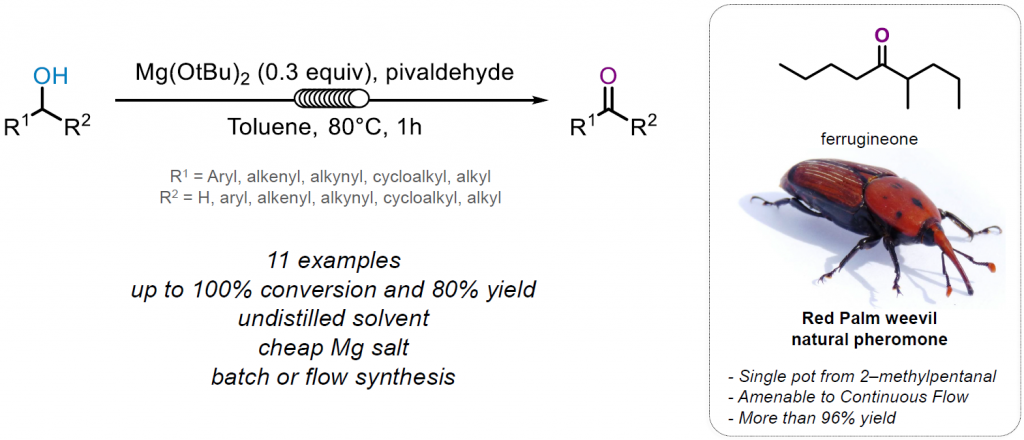 Read the publication that featured this abstract
Read the publication that featured this abstractThe so-called OPPenauer oxidation is well known for its ability to oxidize valuable alcohols into their corresponding aldehydes or ketones. In particular, it has proven to be extremely successful in the oxidation of sterols. On the other hand, its application—in the original formulation—to the obtainment of ketones outside the field of steroids met a more limited success because of less favorable thermodynamics and side reactions. To circumvent these issues, the first example of magnesium-catalyzed OPPenauer oxidation is described. The oxidation of primary and secondary alcohol was performed using pivaldehyde or bromaldehyde as the oxidant and cheap magnesium tert-butoxide as catalyst. Decent to excellent yields were obtained using reasonable catalytic charge. The synthesis of a pheromone stemming from the Rhynchophorus ferrugineus was obtained by tandem addition-oxidation of 2-methylpentanal and the process was successfully applied to continuous flow on a multigram scale.
Dehydration of an Insoluble Urea Byproduct Enables the Condensation of DCC and Malonic Acid in Flow
- Alexander G. O’Brien
- Eric M. Ricci
- Michel Journet
- GlaxoSmithKline, 709 Swedeland Road, King of Prussia, Pennsylvania 19406, United States
 Read the publication that featured this abstract
Read the publication that featured this abstractA procedure for the preparation of N,N′-dicyclohexylbarbituric acid from DCC and malonic acid is described. Addition of phosphorus oxychloride to the reaction mixture facilitates dehydration of the insoluble byproduct N,N′-dicyclohexyl urea, enabling operation in continuous flow. A development approach based on in situ monitoring of batch reactions was used, which supported screening and determination of reaction conditions at small scale prior to scaleup in flow. Additional mechanistic understanding and control of impurity formation are presented.
Self-Sufficient Flow-Biocatalysis by Coimmobilization of Pyridoxal 5′-Phosphate and ω-Transaminases onto Porous Carriers
- Ana I. Benítez-Mateos †
- Martina L. Contente §
- Susana Velasco-Lozano ⊥
- Francesca Paradisi *§
- Fernando López-Gallego *⊥‡
- † Heterogeneous Biocatalysis Laboratory, CICbiomaGUNE, Paseo Miramón 182, Edificio empresarial C”, 20014 San Sebastián, Spain
- § School of Chemistry, University of Nottingham, University Park, Nottingham NG7 2RD, U.K
- ⊥ Heterogeneous biocatalysis laboratory, Instituto de Síntesis Química y Catálisis Homogénea (ISQCH−CSIC), University of Zaragoza, C/Pedro Cerbuna 12, 50009 Zaragoza, Spain
- ‡ ARAID, Aragon I+D foundation, Zaragoza, Spain
 Read the publication that featured this abstract
Read the publication that featured this abstractWe expanded the application of self-sufficient heterogeneous biocatalysts containing coimmobilized ω-transaminases and pyridoxal 5′-phosphate (PLP) to efficiently operate packed-bed reactors in continuous flow. Using a ω-transaminase from Halomonas elongata coimmobilized with PLP onto porous methacrylate-based carriers coated with polyethylenimine, we operated a packed-bed reactor continuously for up to 50 column volumes at 1.45 mL × min–1 in the enantioselective deamination of model amines (α-methylbenzyl amine), yielding >90% conversion in all cycles without exogenous addition of cofactor. In this work, we expanded the concept of self-sufficient heterogeneous biocatalysts to other ω-transaminases such as the ones from Chromobacterium violaceum and Pseudomonas fluorescens. We found that enzymes with lower affinities toward PLP present lower operational stabilities in flow, even when coimmobilizing PLP. Furthermore, ω-transaminases coimmobilized with PLP were successfully implemented for the continuous synthesis of amines and the sustainable metrics were assessed. These results give some clues to exploit PLP-dependent ω-transaminases under industrially relevant continuous operations in a more cost-effective and environmentally friendly process.
A Convergent Continuous Multistep Process for the Preparation of C4-Oxime-Substituted Thiazoles
- Edouard Godineau *†
- Claudio Battilocchio †‡
- Matthias Lehmann †
- Steven V. Ley †
- Ricardo Labes ‡
- Letitia Birnoschi ‡
- Srinivas Subramanian §
- C.S Prasanna §
- Amol Gorde §
- Mahesh Kalbagh §
- Vivek Khade §
- Anton Scherrer †
- Anthony C. O’Sullivan †
- † Syngenta Crop Protection, Process Research, Schaffhauserstrasse 101, CH-4332, Switzerland
- ‡ Innovative Technology Centre, Department of Chemistry, University of Cambridge, Lensfield Road, CB2 1EW, UK
- § Syngenta Research and Technology Centre, Santa Monica Works, Corlim, Goa India, 403110
 Read the publication that featured this abstract
Read the publication that featured this abstractWe report a strategy designed for the rapid and convergent assembly of C4-oxime substituted thiazoles. Our approach relied on 3-bromo-2-oxopropanal O-methyl oxime 7 as a key building block. A three-step sequence to 7 was designed, which, for safety concerns, could only be operated in batch mode on limited scales (≪100 g). We describe herein how we addressed such a limitation, by designing a multistep continuous synthesis of this intermediate and further demonstrate the advantages of flow reactor configuration upon scaling up.
Additive Free Fe-Catalyzed Conversion of Nitro to Aldehyde under Continuous Flow Module
- Sandip G. Agalave
- Moreshwar B. Chaudhari
- Girish Singh Bisht
- Boopathy Gnanaprakasam*
- Department of Chemistry, Indian Institute of Science Education and Research Pune-411008, India
 Read the publication that featured this abstract
Read the publication that featured this abstractFe-catalyzed direct transformation of nitro compounds to aldehyde under batch/continuous flow module is reported. This catalytic transformation is highly selective for syntheses of various aldehydes and does not require any additional additives such as bases and oxidants. Furthermore, the heterogeneous Fe–zeolite catalyst is recoverable and reusable for more than five cycles and offers gram-scale synthesis without the loss of catalytic efficiency. This heterogeneous catalyst has a maximum TOF of 5.93 h–1.
Recent Advances in Photodecarboxylations Involving Phthalimides
- Saira Mumtaz
- Mark J. Robertson
- Michael Oelgemöller
- James Cook University, College of Science and Engineering, Townsville, Qld 4811, Australia.
 Read the publication that featured this abstract
Read the publication that featured this abstractOwing to their favourable photophysical and electrochemical properties, phthalimides undergo a variety of highly efficient photodecarboxylation reactions. These transformations have been applied to the synthesis of macrocyclic compounds as well as bioactive addition adducts. N-Acetoxyphthalimides are versatile precursors to imidyl and alkyl radicals through photodecarboxylation and have subsequently been used for a variety of coupling reactions. The generally mild reaction conditions make these reactions attractive for green chemical applications. The process protocols were successfully transferred to novel photoreactor devices, among these falling film or continuous flow reactors.
C–H functionalisation of aldehydes using light generated, non-stabilised diazo compounds in flow
- Paul Dingwall a
- Andreas Greb a
- Lorène N. S. Crespin a
- Ricardo Labes a
- Biagia Musio a
- Jian-Siang Poh a
- Patrick Pasau b
- David C. Blakemore c
- Steven V. Ley *a
- a Department of Chemistry, University of Cambridge, Lensfield Road, Cambridge CB2 1EW, UK.
- b UCB Biopharma SPRL, Chemical Research R5, Chemin du Foriest 1420, Braine-L’Alleud, Belgium
- c Medicine Design, Pfizer Inc., Eastern Point Road, Groton, Connecticut 06340, USA
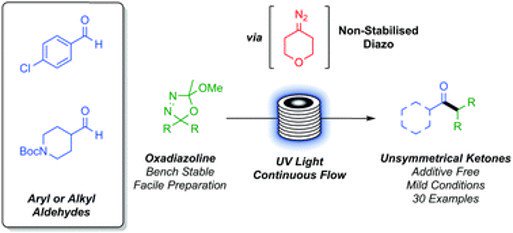 Read the publication that featured this abstract
Read the publication that featured this abstractThe difficulty in accessing and safely utilising non-stabilised diazo species has in the past limited the application of this class of compounds. Here we explore further the use of oxadiazolines, non-stabilised diazo precursors which are bench stable, in direct, non-catalytic, aldehyde C–H functionalisation reactions under UV photolysis in flow and free from additives. Commercially available aldehydes are coupled to afford unsymmetrical aryl–alkyl and alkyl–alkyl ketones while mild conditions and lack of transition metal catalysts allow for exceptional functional group tolerance. Examples are given on small scale and in a larger scale continuous production.
Catalytic Static Mixers for the Continuous Flow Hydrogenation of a Key Intermediate of Linezolid (Zyvox)
- James Gardiner a*
- Xuan Nguyen a
- Charlotte Genet a
- Mike D. Horne b
- Christian Hornung a
- John Tsanaktsidis a
- a CSIRO Manufacturing Flagship, Bayview Avenue, Clayton, Australia
- b CSIRO Mineral Resources, Bayview Avenue, Clayton, VIC 3169, Australia
 Read the publication that featured this abstract
Read the publication that featured this abstractCatalytic static mixers (CSMs) were used for the efficient preparation of a key intermediate of the antimicrobial drug linezolid (Zyvox). The approach combines 3D printing and additive manufacturing techniques with continuous flow processing to produce a general method for catalytic hydrogenations and the rapid production of the target molecule without the need for catalyst removal or recovery.
Photoinduced Palladium Negishi Cross-Coupling Through Visible Light Absorption of Palladium-Organozinc complexes
- Irini Abdiaj a
- Lena Huck a,b
- José Miguel Mateo b
- Antonio de la Hoz b
- M. Victoria Gomez c
- Angel Díaz-Ortiz b
- Jesús Alcázar a
- a Lead Discovery, Janssen Research and Development, Janssen-Cilag, S.A., Jarama 75A, 45007 Toledo, Spain
- b Facultad de Ciencias y Tecnologías Químicas, Universidad de Castilla-La Mancha, Av. Camilo José Cela 10, 13071 Ciudad Real, Spain
- c Instituto Regional de Investigación Científica Aplicada, Universidad de Castilla-La Mancha, Av. Camilo José Cela, sn, 13071 Ciudad Real, Spain
 Read the publication that featured this abstract
Read the publication that featured this abstractA visible‐light‐induced Negishi cross‐coupling is enabled by the activation of a Pd0–Zn complex. With this photocatalytic method, the scope of deactivated aryl halides that can be employed in the Negishi coupling was significantly expanded. NMR experiments conducted in the presence and absence of light confirmed that the formation of the palladium–zinc complex is key for accelerating the oxidative addition step.
Three-Component Assembly of Multiply Substituted Homoallylic Alcohols and Amines Using a Flow Chemistry Photoreactor
- Yiding Chen †
- David Blakemore ‡
- Patrick Pasau §
- Steven V. Ley †
- † Department of Chemistry, University of Cambridge, Lensfield Road, Cambridge CB2 1EW, U.K.
- ‡ Medicine Design, Pfizer Inc., Eastern Point Road, Groton, Connecticut 06340, United States
- § UCB Biopharma SPRL, Chemical Research R5, Chemin du Foriest, 1420 Braine-L’Alleud, Belgium
 Read the publication that featured this abstract
Read the publication that featured this abstractOxadiazolines are bench-stable diazo precursors, which are activated under UV radiation in the presence of vinylboronic acids and aldehydes to enable a one-step three-component assembly of densely functionalized homoallylic alcohols. Substitution on all positions of the homoallylic alcohol product were achieved with high functional group tolerance. No catalyst or other additive was required to effect the reaction, which proceeds at 20 °C over 40 min. Imines and indoles were also incorporated, giving access to homoallylic amines.
Mild Homologation of Esters via Continuous Flow Chloroacetate Claisen Reactions
- Maximilian A. Ganiek
- Maria V. Ivanova
- Benjamin Martin*
- Paul Knochel*
- Department of Chemistry, Ludwig-Maximilians-Universität Munich, Butenandtstr. 5 – 13, 81377 Munich, Germany
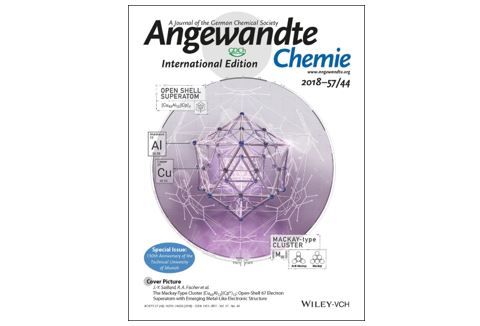 Read the publication that featured this abstract
Read the publication that featured this abstractThe selective chloromethylenation of functionalized esters using chloroacetic acid (CA) and LiHMDS (HMDS = hexamethyldisilazide) in a continuous flow setup is reported. This Claisen homologation is for the first time extended to bis-chloromethylenation using dichloro-acetic acid (DCA), thus giving access to under-explored α,α’-bis-chloroketones. The use of flow conditions enables an efficient generation and reaction of the unstable chloroacetate dianion intermediates, leading to unprecedented mild and scalable reaction conditions at an economic reagent stoichiometry ( 10 °C, < 1 min, 1.0-2.4 equiv. dianion). The clean reaction profiles allows the subsequent use of the unpurified crude products, which is demonstrated in the synthesis of various heterocycles of broad interest. Furthermore, we report a novel, catalyst-free substitution of the obtained monochloro ketone products with (hetero)aryl zinc enolates leading to valuable 1,4-diketones.
Regioselective Chlorination of Quinoline Derivatives via Fluorine Mediation in a Microfluidic Reactor
- Hao Qi
- Xin Li
- Zhuang Liu
- Shan‐Shan Miao
- Prof. Zheng Fang, Lin Chen, Zheng Fang, Prof. Kai Guo
- College of Biotechnology and Pharmaceutical Engineering, Nanjing Tech University, Nanjing, China State Key Laboratory of Materials-Oriented Chemical Engineering, Nanjing Tech University, Nanjing, China
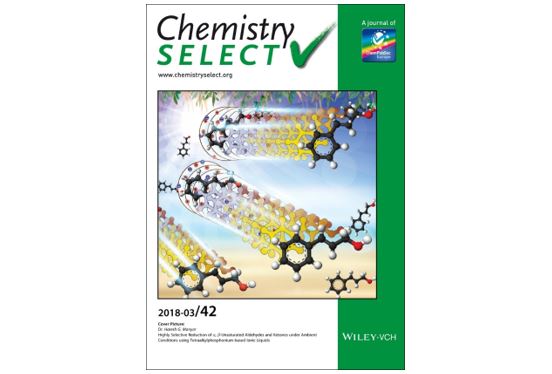 Read the publication that featured this abstract
Read the publication that featured this abstractA novel green and efficient reaction route for the synthesis of 2‐chloroquinoline via N‐fluoride fluorinated by 1‐Chloromethyl‐4‐fluoro‐1,4‐diazoniabicyclo [2.2.2] octane bis(tetrafluoroborate) (Selectfluor) with 1,3‐Dichloro‐5,5‐dimethylhydantoin (DCDMH) in Vapourtec reactor has been developed. In addition, a series of C2 heterocyclic derivative products are obtained in moderate to good yields under no metal conditions.
Molecular machines
Inventors: Colin Scott, Carol HARTLEY, Charlotte Williams, Quentin CHURCHES, Judith SCOBLE, Nicholas Turner, Nigel French
- Assignee: Commonwealth Scientific and Industrial Research Organization CSIRO
Read the publication that featured this abstractThe present disclosure relates to isolated enzyme complexes comprising a tethered cofactor and at least two enzymes paired to catalyse an enzymatic reaction and recycle the cofactor.
Continuous flow synthesis of a carbon-based molecular cage macrocycle via a three-fold homocoupling reaction
- Melanie Kitchinab
- Kristina Konstasa
- Christopher J. Sumbyb
- Milena L. Czyza
- Peter Valenteb
- Matthew R. Hill*ab
- Anastasios Polyzos*ac
- Christian J. Doonan*ab
- * Corresponding authors
- a CSIRO Manufacturing Flagship, Bayview Avenue, Clayton, Australia
- b Centre for Advanced Nanomaterials and the School of Physical Sciences, The University of Adelaide, Adelaide, Australia
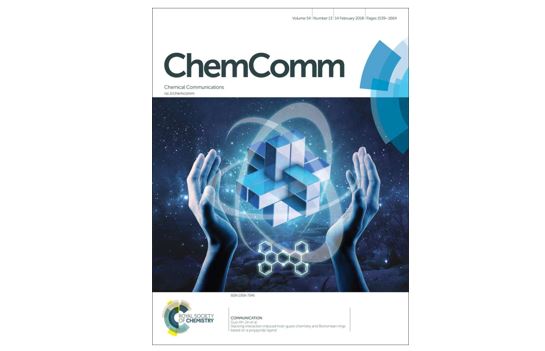 Read the publication that featured this abstract
Read the publication that featured this abstractThe facile synthesis of the cage molecule (C110H56Br2) via a remarkable three-fold homo-coupling macrocyclization reaction using continuous flow methodology is reported. Synthesis via continuous flow chemistry improves the residence time, safety, and environmental profile of this synthetically challenging reaction. Further, the new cage possesses halogen atoms at its apex that serve to expand the potential reaction space of these intrinsically porous, all carbon–carbon bonded molecular cage molecules.
Flow-based biocatalysis: Application to peracetylated arabinofuranosyl-1,5-arabinofuranose synthesis
- Teodora Bavaroa
- Andrea Pintob
- Federica Dall’Oglioc
- María J. Hernáizd
- Carlo F. Morellie
- Paolo Zambellib
- Carlo De Michelic
- Paola Contic
- Lucia Tamborinic
- Marco Terrenia
- a Department of Drug Sciences, University of Pavia, Viale Taramelli 12, 27100 Pavia, Italy
- b Department of Food Environmental and Nutritional Science (DeFENS), University of Milan, Via Mangiagalli 25, 20133 Milan, Italy
- c Department of Pharmaceutical Sciences (DISFARM), University of Milan, Via Mangiagalli 25, 20133 Milan, Italy
- d Department of Pharmaceutical and Organic Chemistry, Faculty of Pharmacy, Complutense University of Madrid, Plaza de Ramón y Cajal s/n, 28040 Madrid, Spain
- e Department of Chemistry, University of Milan, Via Golgi 19, 20133 Milan, Italy
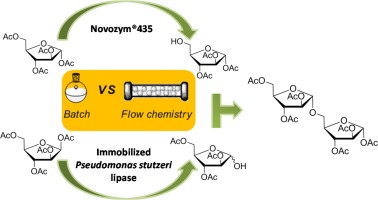 Read the publication that featured this abstract
Read the publication that featured this abstractThe lipase-catalyzed regioselective hydrolysis of peracetylated arabinose was performed in a packed bed flow reactor (PBR). In particular, the hydrolysis of the α anomer of peracetylated arabinose catalyzed by Novozym® 435 resulted in the monodeprotection of C5 in only 5 min and 91% yield. By using the immobilized Pseudomonas stutzeri lipase, the regioselective hydrolysis of the β anomer was also accomplished affording the C1 deacetylated derivative in 30 min with good yields. The high local concentration of the immobilized biocatalyst in the PBR allow for a significant reduction of the reaction time; moreover, repeated re-use, and easy downstream processing increase the efficiency and the productivity of the process, if compared to the classical batch procedure. In fact, under optimized conditions, the specific reaction rate of the biocatalyzed flow reaction showed an increase of more than 300 times compared to the batch one. The obtained building blocks were prepared in gram scale and then used for the synthesis of peracetylated arabinofuranosyl-1,5-arabinofuranose.
Continuous Flow Photochemical Benzylic Bromination of a Key Intermediate in the Synthesis of a 2‐Oxazolidinone
- Yuesu Chena, b
- Oscar de Frutosc
- Carlos Mateosc
- Juan A. Rinconc
- David Cantillo*a, b
- C. Oliver Kappe*a, b
- a Center for Continuous Flow Synthesis and Processing (CC FLOW), Research Center Pharmaceutical Engineering GmbH (RCPE), Inffeldgasse 13, 8010 Graz (Austria)
- b Institute of Chemistry, University of Graz, Heinrichstrasse 28, 8010, Graz (Austria)
- c Centro de Investigacin Lilly S. A. Avda. de la Industria 30, 28108 Alcobendas-Madrid (Spain)
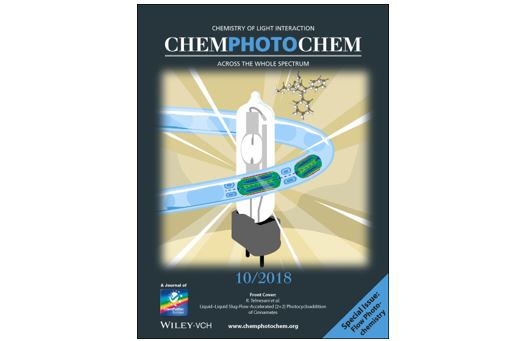 Read the publication that featured this abstract
Read the publication that featured this abstractA continuous flow protocol for the benzylic photobromination of methyl N,N‐bis(tert‐butoxycarbonyl) phenylalaninate (3) is presented. This photochemical transformation generating brominated intermediate 4 is the critical step in synthesis of oxazolidinone 5, a key intermediate for the preparation of active pharmaceutical ingredients. The reaction was optimized in three continuous flow photoreactors: a self‐made reactor based on a T5 8 W black light lamp, as well as the commercially available VapourTec® UV‐150 and Corning® Advanced‐Flow™ reactors, both equipped with LED light sources. Under optimal conditions, concentrated solutions (95 g/L) of the starting material could be processed on multi‐gram scale, providing high conversion (96%) within 7 min at 30 °C, using 2 equivalents of N‐bromosuccinimide (NBS).
Native Chemical Ligation–Photodesulfurization in Flow
- Timothy S. Chisholm
- Daniel Clayton
- Luke J. Dowman
- Jessica Sayers
- Richard J. Payne
- School of Chemistry, The University of Sydney, Sydney, NSW 2006, Australia
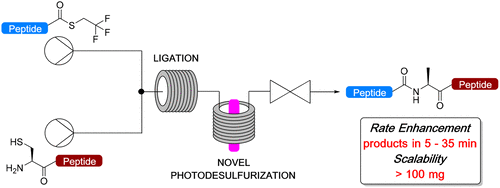 Read the publication that featured this abstract
Read the publication that featured this abstractNative chemical ligation (NCL) combined with desulfurization chemistry has revolutionized the way in which large polypeptides and proteins are accessed by chemical synthesis. Herein, we outline the use of flow chemistry for the ligation-based assembly of polypeptides. We also describe the development of a novel photodesulfurization transformation that, when coupled with flow NCL, enables efficient access to native polypeptides on time scales up to 2 orders of magnitude faster than current batch NCL–desulfurization methods. The power of the new ligation–photodesulfurization flow platform is showcased through the rapid synthesis of the 36 residue clinically approved HIV entry inhibitor enfuvirtide and the peptide diagnostic agent somatorelin.
Continuous flow biocatalysis
- Joshua Britton
- Sudpta Majumdar
- Gregory A. Weiss
- Department of Chemistry, Molecular Biology and Biochemistry, University of California, Irvine, USA
 Read the publication that featured this abstract
Read the publication that featured this abstractThe continuous flow synthesis of active pharmaceutical ingredients, value-added chemicals, and materials has grown tremendously over the past ten years. This revolution in chemical manufacturing has resulted from innovations in both new methodology and technology. This field, however, has been predominantly focused on synthetic organic chemistry, and the use of biocatalysts in continuous flow systems is only now becoming popular. Although immobilized enzymes and whole cells in batch systems are common, their continuous flow counterparts have grown rapidly over the past two years. With continuous flow systems offering improved mixing, mass transfer, thermal control, pressurized processing, decreased variation, automation, process analytical technology, and in-line purification, the combination of biocatalysis and flow chemistry opens powerful new process windows. This Review explores continuous flow biocatalysts with emphasis on new technology, enzymes, whole cells, co-factor recycling, and immobilization methods for the synthesis of pharmaceuticals, value-added chemicals, and materials.
Reductive aminations using a 3D printed supported metal(0) catalyst system
- Charlotte Genet1
- Xuan Nguyen1
- Bita Bayatsarmadi2
- Mike D. Horne2
- James Gardiner1
- Christian H. Hornung1
- 1 CSIRO Manufacturing, Clayton, South Australia
- 2 CSIRO Minerals Resources, Clayton, South Australia
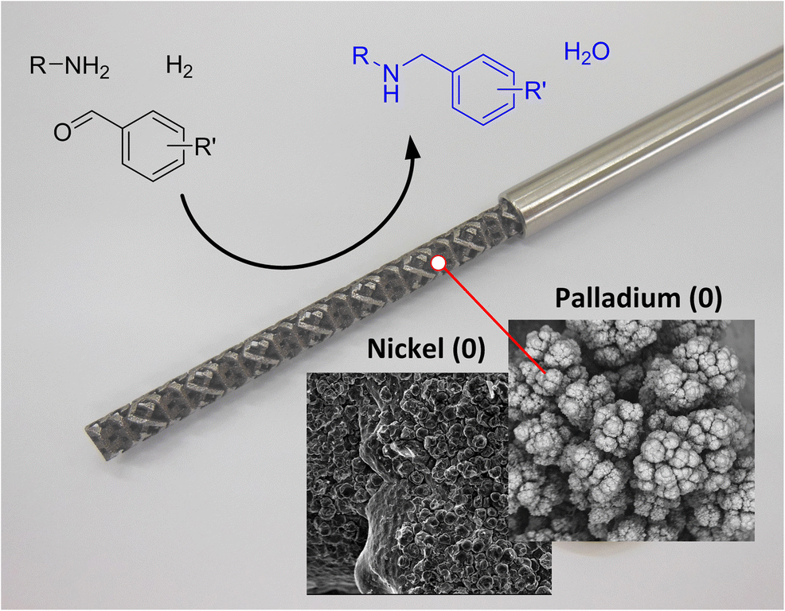 Read the publication that featured this abstract
Read the publication that featured this abstractAdditively manufactured catalytic static mixers were used for the intensified reductive amination of aldehydes and ketones inside a continuous flow reactor. This efficient synthesis method is enabled by the use of tubular reactors fitted with 3D printed metal static mixers which are coated with a catalytically active layer, either Pd or Ni. The 3D printing process allows for maximum design flexibility for the mixer scaffold and is compatible with a range of deposition methods including electroplating and metal cold spraying. Single- and multi-stage continuous flow processing yielded high to full conversion and has the potential to scale-up these operations without the need for manual handling of reactive imine intermediates.
Flow Synthesis of Coumalic Acid and its Derivatization
- Laura K. Smith and Ian R. Baxendale
- Department of Chemistry, University of Durham, South Road, Durham, DH1 3LE, UK.
 Read the publication that featured this abstract
Read the publication that featured this abstractCoumalic acid is a valuable platform compound which can be prepared from malic acid, a biorenewable feedstock readily derived from the fermentation of glucose. Current batch procedures to synthesise coumalic acid have several drawbacks, which we address with the aid of tubular flow systems and a simple heated rotating flow reactor. The prepared coumalate derivatives can be further used in inverse electron demand Diels-Alder reactions to synthesise compounds with many applications including molecular electronics, with the added advantage of providing metal-free preparations.
Production of metal-organic frameworks
Inventors:, Marta RUBIO MARTINEZ, Matthew Roland Hill, Michael Batten, Kok Seng Lim, Anastasios POLYZOS, Timothy Raymond Barton, Trevor Deon HADLEY, Andreas Alexander MONCH
- Assignee: Commonwealth Scientific and Industrial Research Organization CSIRO
Read the publication that featured this abstractAn apparatus for producing metal organic frameworks, comprising: a tubular flow reactor comprising a tubular body into which, in use, precursor compounds which form the metal organic framework are fed and flow, said tubular body including at least one annular loop.
Combining CH functionalisation and flow photochemical heterocyclic metamorphosis (FP-HM) for the synthesis of benzo [1, 3] oxazepines
- Jasraj S. Babra, Andrew T. Russell, Christopher D. Smith, Yuxiong Zhang
- Department of Chemistry, University of Reading, Whiteknights, Reading, RG6 6AD, UK
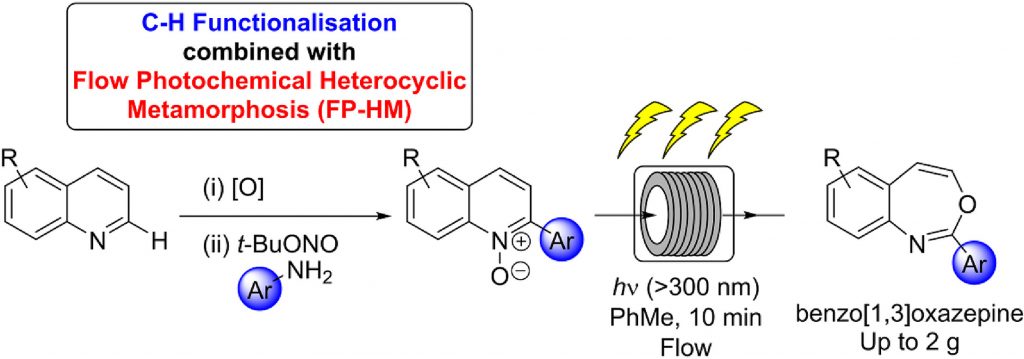 Read the publication that featured this abstract
Read the publication that featured this abstractC-H Activation/functionalisation and Flow Photochemical Heterocyclic Metamorphosis (FP-HM) have been combined to synthesize a library of benzo [1,3]oxazepines, a rarely described heterocyclic family. This combined protocol allows a range of arylated products to be made from simple starting materials, and the cheap flow photochemical system has proven effective for rapid synthesis of gram-quantities of benzo [1,3]oxazepines.
Studies toward the scaling of gas‐liquid photocycloadditions
Dr. Emily B. Corcoran, Dr. François Lévesque, Dr. Jonathan P. McMullen, Dr. John R. Naber
- Department of Process Research and Development, Merck Sharp & Dohme Corp., Rahway, USA
Read the publication that featured this abstractThe gas‐liquid biphasic photochemical [2+2] cycloaddition of maleic anhydride with ethylene was identified as a desirable strategy for the divergent synthesis of cyclobutane derivatives. To address the challenge of utilizing this transformation on a larger scale, studies toward the development of a stable process with sufficient productivity were undertaken. These studies revealed the importance of several reaction parameters to enhance both the gas solubility in solution and the efficient utilization of photons from various types of light sources.
Photooxygenation in an advanced led-driven flow reactor module: Experimental investigations and modelling
- Robbie Radjagobalouab
- Jean-François Blancoa
- Odile Dechy-Cabaretb
- Michael Oelgemöllerc
- Karine Loubièrea
- a Laboratoire de Génie Chimique LGC, Université de Toulouse, CNRS, Toulouse, France
- b Laboratoire de Chimie de Coordination LCC, CNRS, Toulouse, France
- c James Cook University, College of Science and Engineering, Townsville, Queensland 4811, Australia
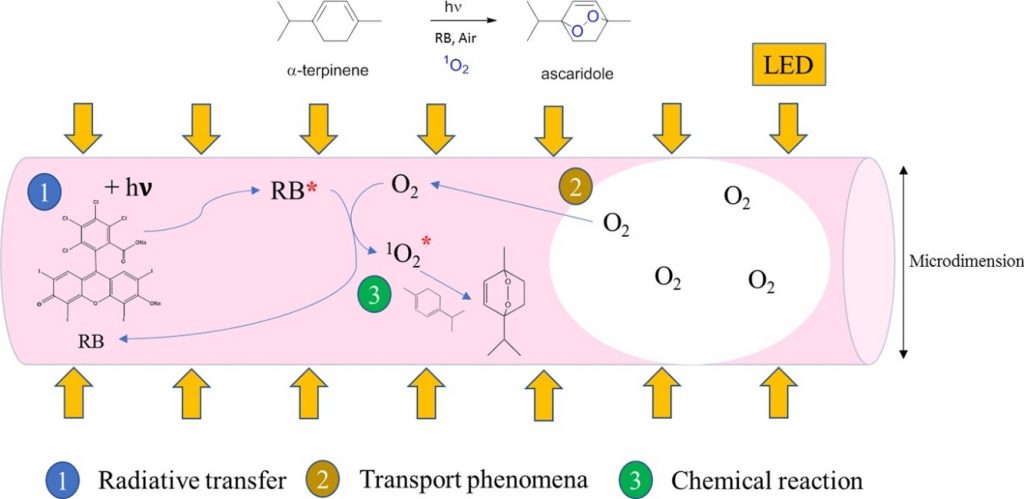 Read the publication that featured this abstract
Read the publication that featured this abstractThe photooxygenation of α-terpinene was investigated as a benchmark reaction in an advanced LED-driven flow reactor module, both from an experimental and modelling point of view. Ethanol was used as a green solvent and rose Bengal was chosen as a cheap sensitizer of industrial importance. Firstly, the kinetic law based on all mechanistic steps was established for the chosen photooxygenation. From this, the set of operating parameters potentially influencing the photoreaction rate were identified. Subsequently, experiments were carried out under continuous-flow conditions to screen these operating parameters, namely concentration of α-terpinene, concentration of photosensitizer, residence time, structure of the segmented gas-liquid flow and nature of the reagent gas phase (air versus pure oxygen). Finally, the conditions enabling minimization of sensitizer bleaching were established. It was also shown that the hydrodynamic characteristics of the gas-liquid flow can have an effect on the conversion levels. From this, a simplified model was proposed to predict the conversion at the reactor’s outlet when pure oxygen was used.
P‐121: Successive and scalable synthesis of highly stable Cs4PbBr6 perovskite microcrystal by microfluidic system and their application in backlight display
Hung-Chia Wang1, Zhen Bao1, Ru-Shi Liu1,2
- 1 Department of Chemistry, National Taiwan University, Taipei, Taiwan
- 2 Department of Mechanical Engineering and Graduate Institute of Manufacturing Technology, National Taipei University of Technology, Taipei, Taiwan
Read the publication that featured this abstractAll Inorganic CsPbX3 (X = I, Br, Cl) perovskite nanocrystal have attracted immense research interest in recent years, due to their high photoluminescence quantum yield (PLQY). These fascinating features of inorganic nanocrystals have been utilized in light emitting diodes (LEDs) device. However, maintaining the high PLQY in the solid state remains a big challenge. Inorganic mesoporous silica encapsulation of NCs has moderate improvements, but it remains an unsolved problem. Robust and air‐stable Cs4PbBr6microcrystal was another choice in perovskite solid. In this study, we report mass production of Cs4PbBr6 perovskite microcrystal by microfluidic system. To demonstrate the potential application of Cs 4PbBr6 perovskite microcrystal, we fabricated white‐light LEDs based on Cs4PbBr6 and K2SiF6:Mn4+ phosphor. Our white light LED device for backlight display having the NTSC value is 115%.
Self-sustaining closed-loop multienzyme-mediated conversion of amines into alcohols in continuous reactions
Martina L. Contente, Francesca Paradisi
- School of Chemistry, University of Nottingham, Nottingham, United Kingdom
Read the publication that featured this abstractThe synthesis of alcohols from amine starting materials is an excellent yet challenging strategy for the preparation of pharmaceuticals and polymers. Here we developed a versatile, self-sustaining closed-loop multienzymatic platform for the biocatalytic synthesis of a large range of non-commercially available products in a continuous flow with excellent yields (80 to >99%), reaction times and optical purity of secondary alcohols (>99 enantiomeric excess). This process was also extended to the conversion of biogenic amines into high-value alcohols, such as the powerful antioxidant hydroxytyrosol, and the synthesis of enantiopure 2-arylpropanols via the dynamic kinetic resolution of commercially affordable racemic amines. The system exploits the in situ immobilization of transaminases and redox enzymes which were combined to cater for a fully automated, ultra-efficient synthetic platform with cofactor recycling, in-line recovery of benign by-products and recirculation of the aqueous media that contains the recycled cofactors in catalytic amounts, which increases the efficiency of the system by over 20-fold.
Dichlorophenylacrylonitriles as AhR Ligands displaying selective breast cancer cytotoxicity in vitro
Jennifer R Baker1, Jayne Gilbert2, Stefan Paula3, Xiao Zhu3, Jennette A Sakoff2, Adam McCluskey1
- 1 The University of Newcastle, Chemistry, Newcastle, Australia
- 2 Calvary Mater Hospital, Medical Oncology, Newcastle, Australia
- 3 Purdue University, Chemistry, West Lafayette, United States
Read the publication that featured this abstractKnoevenagel condensation of 3,4‐dichloro‐ and 2,6‐dichloro‐ phenylacetonitriles gave a library of dichlorophenylacrylonitriles. Our leads 5 and 6 displayed 0.56±0.03 and 0.127±0.04 μM growth inhibition (GI₅₀) and 260‐fold selectivity for the MCF‐7 breast cancer cell line. A 2,6‐dichlorophenyl moiety saw a 10‐fold potency loss; additional nitrogen moieties (‐NO₂) enhanced activity (26 and 27), with the corresponding ‐NH₂ analogues (29 and 30) more potent. Despite this, both 29 (2.8±0.03 μM) and 30 (2.8±0.03 μM) were 10‐fold less cytotoxic than 6. A bromine moiety effected a 3‐fold enhancement in solubility with 18 relative to 5 at 211 μg mL‐1. Modelling led synthesis saw the introduction of 4‐aminophenyl substituent gave 35 and 38, 0.030±0.014 and 0.034±0.01 μM potent, respectively. Other analogues, e.g. 35 and 36, were sub‐micromolar potent against our cell line panel (HT29, colon; U87 and SJ‐G2, glioblastoma; A2780, ovarian; H460, lung; A431, skin; Du145, prostate; BE2‐C neuroblastoma; MIA, pancreas and SMA murine glioblastoma) except 35 against U87. A more extensive evaluation of 38 ((Z)‐N‐(4‐(2‐cyano‐2‐(3,4‐dichlorophenyl)vinyl)phenyl)acetamide), in a panel of drug resistant breast carcinoma cell lines showed 10‐206 nM potency against MDAMB468, T47D, ZR‐75‐1, SKBR3 and BT474. MOE docking scores showed a good correlation between predicted binding efficiencies and observed MCF‐7 cytotoxicity. This supports the use of this model in developing breast cancer specific drugs.
Combining C-H functionalisation and flow photochemical heterocyclic metamorphosis (FP-HM) for the synthesis of benzo[1,3]oxazepines
- Jasraj S. Babra, Andrew T. Russell, Christopher D. Smith, Yuxiong Zhang
- Department of Chemistry, University of Reading, Whiteknights, Reading, RG6 6AD, UK
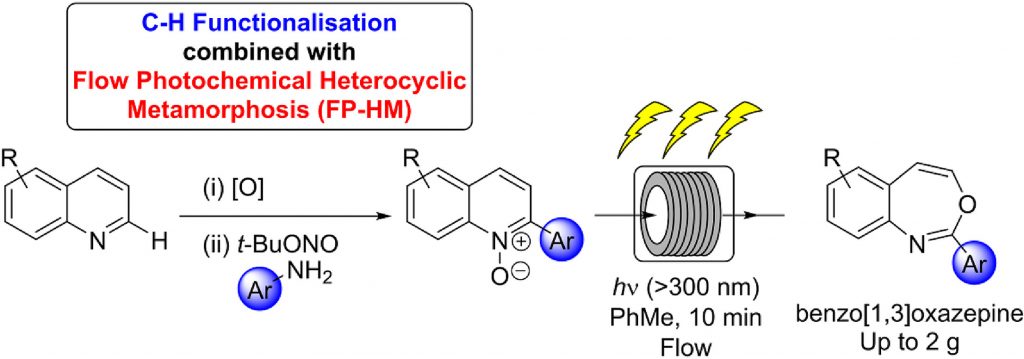 Read the publication that featured this abstract
Read the publication that featured this abstractC-H Activation/functionalisation and Flow Photochemical Heterocyclic Metamorphosis (FP-HM) have been combined to synthesize a library of benzo [1,3]oxazepines, a rarely described heterocyclic family. This combined protocol allows a range of arylated products to be made from simple starting materials, and the cheap flow photochemical system has proven effective for rapid synthesis of gram-quantities of benzo [1,3]oxazepines.
Multistep Continuous-Flow Processes for the Preparation of Heterocyclic Active Pharmaceutical Ingredients
Romaric Gérardy, Jean-Christophe M. Monbaliu
- Center for Integrated Technology and Organic Synthesis, Department of Chemistry, University of Liège, Liège, Belgium
Read the publication that featured this abstractFlow chemistry has many fascinating facets, among which the most challenging is arguably the implementation of complex multistep processes within one uninterrupted fluidic network. This document provides a thorough overview of some of the most representative examples of multistep continuous-flow strategies in the specific context of preparing heterocyclic active pharmaceuticals. Selected examples emphasizing the implementation of multistep sequences, including various combinations of chemical transformations, purifications, or in-line analysis, are discussed.
Flow Chemistry Approaches Applied to the Synthesis of Saturated Heterocycles
Marcus Baumann, Ian R. Baxendale
- Department of Chemistry, University of Durham, Durham, UK
Read the publication that featured this abstractContinuous-flow processing approaches are having a significant impact on the way we devise and perform chemical synthesis. Flow chemistry has repeatedly demonstrated numerous improvements with respect to synthesis efficiency, process safety and ease of reaction scale-up. In recent years flow chemistry has been applied with remarkable success to the generation of valuable target structures across a range of industries from basic bulk chemical manufacture and materials development to flavours, food and cosmetic applications. However, due to its earlier implementation, it has found so far many more advocates in areas of medicinal and agrochemical research and manufacture. In this review article, we summarise the key developments that continuous-flow synthesis has had in the area of saturated heterocycles, specifically focusing on approaches that generate these important entities from acyclic precursors.
An efficient benzoxaborole one‐pot synthesis by SiliaCat DPP‐Pd heterogeneous catalysis using diboronic acid
- Kana kunihiro1
- Laurence Dumais2
- Guillaume Lafitte2
- Emeric Varvier2
- Loïc Tomas2
- Craig Harris2
- 1 Ecole Nationale Supérieure des Ingenieurs en Arts Chimiques et Technologiques, France
- 2 Nestlé Skin Health, Galderma R&D, France
 Read the publication that featured this abstract
Read the publication that featured this abstractOrganoboron compounds are valuable molecules of increasing interest in organic synthesis, catalysis, biology and medicine. Among them, benzoxaboroles emerged as promising building blocks for numerous research programs. In this letter, we communicate the development of new conditions for the one‐pot benzoxaborole synthesis by SiliaCat DPP‐Pd catalysis using diboronic acid as the boron source. This low cost and sustainable strategy permitted the preparation of a useful range of benzoxaborole building blocks. Finally, the transformation was extended to a continuous flow process using our Vapourtec system.
Total Synthesis of Neomarchantin A: Key Bond Constructions Performed Using Continuous Flow Methods
- Émilie Morin, Michaël Raymond, Amaury Dubart, and Shawn K. Collins
- Department of Chemistry and Centre for Green Chemistry and Catalysis, Université de Montréal, CP 6128 Station Downtown, Montréal, Québec, Canada H3C 3J7
 Read the publication that featured this abstract
Read the publication that featured this abstractA synthesis of neomarchantin A has been achieved wherein key bond constructions involving C–O or C–C bond formations were augmented via continuous flow techniques. Of note, the synthesis of neomarchantin A represents the first demonstration of catalytic macrocyclic olefin metathesis as a key step for the synthesis of a macrocyclic bisbibenzyl natural product.
In situ epoxide generation by dimethyldioxirane oxidation and the use of epichlorohydrin in the flow synthesis of a library of β-amino alcohols
Peter J. Cossar, Jennifer R. Baker, Nicholas Cain, Adam McCluskey
- Chemistry, The University of Newcastle, University Drive Callaghan, New South Wales 2308, Australia
Read the publication that featured this abstractThe flow coupling of epichlorohydrin with substituted phenols, while efficient, limits the nature of the epoxide available for the development of focused libraries of β-amino alcohols. This limitation was encountered in the production of analogues of 1-(4-nitrophenoxy)-3-((2-((4-(trifluoromethyl)pyrimidin-2-yl)amino)ethyl)amino)propan-2-ol 1, a potential antibiotic lead. The in situ (flow) generation of dimethyldoxirane (DMDO) and subsequent flow olefin epoxidation abrogates this limitation and afforded facile access to structurally diverse β-amino alcohols. Analogues of 1 were readily accessed either via (i) a flow/microwave hybrid approach, or (ii) a sequential flow approach. Key steps were the in situ generation of DMDO, with olefin epoxidation in typically good yields and a flow-mediated ring opening aminolysis to form an expanded library of β-amino alcohols 1 and 10a–18g, resulting in modest (11a, 21%) to excellent (12g, 80%) yields. Alternatively flow coupling of epichlorohydrin with phenols 4a–4m (22%–89%) and a Bi(OTf)3catalysed microwave ring opening with amines afforded a select range of β-amino alcohols, but with lower levels of aminolysis regiocontrol than the sequential flow approach.
Safe Use of Hazardous Chemicals in Flow
MT Rahman1, T Wirth2
- 1 School of Chemistry and Chemical Engineering, Queen’s University Belfast, Belfast, UK
- 2 School of Chemistry, Cardiff University, Cardiff, UK
Read the publication that featured this abstractFlow chemistry has evolved into an excellent toolkit for handling challenging chemical transformations during the past decade. Highly exothermic and kinetically fast reactions are difficult to handle even on a small scale, whereas any scale-up poses significant risks when conventional reactors are considered. Flow chemistry enables exquisite control over mixing sequences, reaction time and quenching that ultimately paves the way for the fine-tuning of chemical reactivity in ‘space and time’. This chapter describes recent advances of flow chemistry in controlling and even discovering new reactivities of highly hazardous chemical species and unstable intermediates. This chapter compiles intriguing recent examples manifesting the power of flow chemistry to perform commonly known‚ cryogenic reactions at or near room temperature, safe-handling and in situ production of hazardous or toxic reagents for chemical transformations that are generally considered unsafe in conventional reactors.
Photochemical Synthesis of Heterocycles: Merging Flow Processing and Metal-Catalyzed Visible Light Photoredox Transformations
T Glasnov
- Institute of Chemistry, University of Graz, Graz, Austria
Read the publication that featured this abstractThe ubiquitous presence of heterocyclic moieties in everyday life justifies the ongoing intensive research within the synthetic community to discover effective methodologies for their construction. As the social concern regarding environmental protection gains importance, the use of light as the ultimate green promoter for chemical reactions has been revived in the scientific community. Specifically, visible-light photoredox processes based on metal- and organic photosensitizer are attracting significant attention and have seen an exceptional advance recently.
Additionally, continuous-flow processing has enabled a safer and more efficient generation of various heterocycles, whilst allowing their syntheses in a scalable manner. In this chapter, recent achievements in the area of continuous-flow aided photoredox synthesis are covered, including some general remarks on instrumentation, theoretical background and selected flow UV-photochemistry examples.
Flow Chemistry as a Drug Discovery Tool: A Medicinal Chemistry Perspective
Andrew R. Bogdan1, Michael G. Organ2
- 1 Discovery Chemistry and Technology, AbbVie Inc., North Chicago, USA
- 2 Department of Chemistry and Biomolecular Sciences, University of Ottawa, Ottawa, Canada
Read the publication that featured this abstractThe applications of flow chemistry in a drug discovery environment are discussed within. The development of integrated synthesis–bioassay platforms is discussed in the context of enabling medicinal chemistry programs, as is the use of flow chemistry to facilitate intermediate scale-up in a lead optimization setting. Emerging chemical technologies are also discussed, highlighting the use of high temperatures, hazardous gases, and photochemistry in flow to support medicinal chemistry efforts.
Copper mediated, heterogeneous, enantioselective intramolecular Buchner reactions of α-diazoketones using continuous flow processing
- DC Crowley†
- D Lynch†
- AR Maguire‡
- † School of Chemistry, Analytical and Biological Chemistry Research Facility, University College Cork, Cork T12 K8AF, Ireland
- ‡ School of Chemistry and School of Pharmacy, Analytical and Biological Chemistry Research Facility, Synthesis and Solid State Pharmaceutical Centre, University College Cork, Cork T12 K8AF, Ireland
 Read the publication that featured this abstract
Read the publication that featured this abstractEnantioselective intramolecular Buchner reactions of α-diazoketones can be effected using heterogeneous copper–bis(oxazoline) catalysts in batch or using continuous flow processing in up to 83% ee. The catalyst can be reused up to 7 times without loss of activity. For α-diazoketones 3 and 4, the enantioselection achieved in flow with the immobilized catalyst was comparable with the standard homogeneous catalyzed process.
Functionalization of Heteroarenes Under Continuous Flow
Joachim Demaerel, Vidmantas Bieliũnas, Wim M. De Borggraeve
- Molecular Design and Synthesis, Department of Chemistry, KU Leuven, Leuven, Belgium
Read the publication that featured this abstractAromatic heterocycles are omnipresent motifs in pharmaceutical and agrochemical structures. Functionalization of these ring systems is an important part of many synthetic procedures. In this chapter, an overview is given of how microflow technology has been employed as a powerful tool for the diversification of heteroarenes. An emphasis is put on fine chemical synthesis, although reactor design and problem solving will be discussed when relevant, as it comprises an important part of the research field. Pragmatic translations to microflow are reviewed for existing functionalization protocols, and a few elusive reactions are highlighted that cannot be performed satisfyingly in batch mode.
Photoredox Iridium–Nickel Dual-Catalyzed Decarboxylative Arylation Cross-Coupling: From Batch to Continuous Flow via Self-Optimizing Segmented Flow Reactor
- Hsiao-Wu Hsieh†
- Connor W. Coley‡
- Lorenz M. Baumgartner‡
- Klavs F. Jensen*‡
- Richard I. Robinson*†
- † Global Discovery Chemistry − Chemical Technology Group, Novartis Institutes for Biomedical Research, 250 Massachusetts Avenue, Cambridge, Massachusetts 02139, United States
- ‡ Department of Chemical Engineering, Massachusetts Institute of Technology, 77 Massachusetts Avenue, Cambridge, Massachusetts 02139, United States
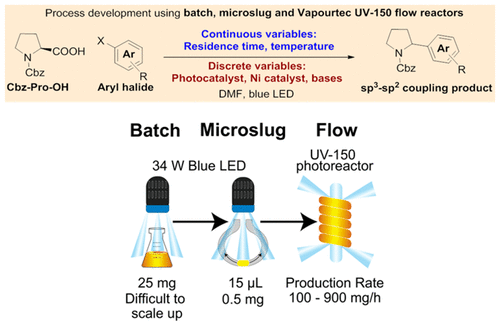 Read the publication that featured this abstract
Read the publication that featured this abstractPhotoredox decarboxylative cross-coupling via iridium–nickel dual catalysis has emerged as a valuable method for C(sp2)–C(sp3) bond formation. Herein we describe the application of a segmented flow (“microslug”) reactor equipped with a newly designed photochemistry module for material-efficient reaction screening and optimization. Through the deployment of a self-optimizing algorithm, optimal flow conditions for the model reaction were rapidly developed, simultaneously accounting for the effects of continuous variables (temperature and time) and discrete variables (base and catalyst). Temperature was found to be a critical parameter with regard to reaction rates and hence productivity in subsequent scale-up in flow. The optimized conditions identified at microscale were found to directly transfer to a Vapourtec UV-150 continuous flow photoreactor, enabling predictable scale-up operation at a scale of hundreds of milligrams per hour. This optimization approach was then expanded to other halide coupling partners that were low-yielding in batch reactions, highlighting the practical application of this optimization platform in the development of conditions for photochemical synthesis in continuous flow.
A combination of flow and batch mode processes for the efficient preparation of mGlu2/3 receptor negative allosteric modulators (NAMs)
- Raveendra Panickar Dhanya, Ananda Herath, Douglas J. Sheffler, Nicholas D.P. Cosford
- Cancer Metabolism and Signaling Networks Program, NCI-Designated Cancer Center, Sanford Burnham Prebys Medical Discovery Institute, 10901 N. Torrey Pines Rd., La Jolla, CA 92037, USA
 Read the publication that featured this abstract
Read the publication that featured this abstractBenzodiazepinones are privileged scaffolds with activity against multiple therapeutically relevant biological targets. In support of our ongoing studies around allosteric modulators of metabotropic glutamate receptors (mGlus) we required the multigram synthesis of a β-ketoester key intermediate. We report the continuous flow synthesis of tert-butyl 3-(2-cyanopyridin-4-yl)-3-oxopropanoate and its transformation to potent mGlu2/3 negative allosteric modulators (NAMs) in batch mode.
On-demand synthesis of organozinc halides under continuous flow conditions
Mateo Berton, Lena Huck, Jesús Alcázar
- Lead Discovery, Janssen Research and Development, Janssen-Cilag, S.A., Toledo, Spain
Read the publication that featured this abstractOrganozinc reagents are versatile building blocks for introducing C(sp2)-C(sp3) and C(sp3)-C(sp3) bonds into organic structures. However, despite their ample synthetic versatility and broad functional group tolerance, the use of organozinc reagents in the laboratory is limited because of their instability, exothermicity and water sensitivity, as well as their labor-intensive preparation. Herein, we describe an on-demand synthesis of these useful reagents under continuous flow conditions, overcoming these primary limitations and supporting widespread adoption of these reagents in synthetic organic chemistry. To exemplify this procedure, a solution of ethyl zincbromoacetate is prepared by flowing ethyl bromoacetate through a column containing metallic zinc. The temperature of the column is controlled by a heating jacket and a thermocouple in close contact with it. Advice on how to perform the procedure using alternative equipment is also given to allow a wider access to the methodology. Here we describe the preparation of 50 ml of solution, which takes 1 h 40 min, although up to 250–300 ml can be prepared with the same column setup at a rate of 30 ml per h. The procedure provides the reagent as a clean solution with reproducible concentration. Organozinc solutions generated in flow can be coupled to a second flow reactor to perform a Reformatsky reaction or can be collected over a flask containing the required reagents for a batch Negishi reaction.
Generation of Diversity Sets with High sp3 Fraction Using the Photoredox Coupling of Organotrifluoroborates and Organosilicates with Heteroaryl/Aryl Bromides in Continuous Flow
- Kevin D Raynor, Gregory D May, Upul K. Bandarage, and Michael J. Boyd
- Vertex Pharmaceuticals Inc., 50 Nothern Avenue, Boston, Massachusetts 02210, United States
 Read the publication that featured this abstract
Read the publication that featured this abstractThe photoredox cross-coupling of aryl halides and potassium alkyl trifluoroborates is a very effective means to form Csp3-Csp2 bonds. However, this transformation is inefficient for the coupling of unactivated primary trifluoroborates. We have developed a generally useful, continuous flow Csp3-Csp2 coupling procedure for the synthesis of diverse product sets that is compatible with both trifluoroborates and silicate reagents. This universal protocol provides diversity sets from both primary and secondary coupling partners. This easily scalable procedure widens the substrate scope of the coupling reaction and is efficient for producing a greater range of analogues bearing a high sp3 fraction.
Iron-Catalyzed Batch/Continuous Flow C-H Functionalization Module for the Synthesis of Anticancer Peroxides
- Moreshwar Bhagwan Chaudhari, Suresh Moorthy, Sohan Patil, Girish Singh Bisht, Haneef Mohamed, Sudipta Basu, and Boopathy Gnanaprakasam
- Department of Chemistry, Indian Institute of Science Education and Research, Pune 411008, India
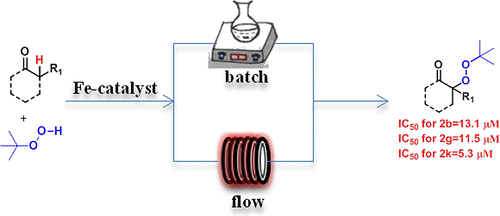 Read the publication that featured this abstract
Read the publication that featured this abstractIron-catalyzed dehydrogenative cross-coupling of carbonyl compounds with aliphatic peroxide was developed under mild conditions. A library of linear alkylated and arylated peroxides are synthesized in good to excellent yield. This method is highly selective and general for a range of biologically important derivatives of 2-oxindole, barbituric acid, and 4-hydroxy coumarin with a good functional group tolerance and without the cleavage of the peroxide bond. This peroxidation reaction is upscalable to grams and also synthesizable in continuous flow with increased safety in short duration. Mechanistic investigation reveals Fe-(II) undergoes redox type process to generate the radical intermediates, which subsequently recombine selectively to form the stable peroxides. The potential of peroxides is evaluated by cell viability assay and found to exhibit the good anticancer activity with minimum IC50= 5.3 μM.
5′-substituted nucleoside compounds
Inventors: Guillermo S CORTEZ, Zahid Quyoom BONDAY
- Assignee: Eli Lilly and Co
Read the publication that featured this abstractThe present invention relates to novel 5′-substituted nucleoside compounds, pharmaceutical compositions comprising the compounds, and methods of using the compounds to treat cancer, more particularly for the treatment of cancer, in particular glioblastomas, melanoma, sarcomas, gastric cancer, pancreatic cancer, cholangiocarcinoma, bladder cancer, breast cancer, non-small cell lung cancer, leukemias including acute myeloid leukemia, and lymphomas.
Selective N-monomethylation of primary anilines with dimethyl carbonate in continuous flow
- Hyowon Seo, Anne-Catherine Bédard, Willie P. Chen, Robert W. Hicklin, Alexander Alabugin, Timothy F. Jamison
- Department of Chemistry, Massachusetts Institute of Technology, 77 Massachusetts Ave., Cambridge, MA 02139, USA
 Read the publication that featured this abstract
Read the publication that featured this abstractSelective N-monomethylation of anilines has been achieved under continuous flow conditions using dimethyl carbonate as a green methylating agent in the presence of 1,8-diazabicyclo[5.4.0]undec-7-ene. Our methodology takes advantage of the expanded process windows available in the continuous flow regime to safely induce monomethylation in superheated solvents at high pressure. We propose selective N-monomethylation is achieved via an in situ protection-deprotection pathway, which is supported by the observed reactivities of several putative reaction intermediates. The robust and scalable method was applicable to a broad range of primary aniline substrates including ortho-, meta-, and para-substituted anilines, as well as electron-rich and electron-deficient anilines. The synthetic precursor of diazepam, 5-chloro-2-(methylamino)benzophenone, was selectively synthesized under our optimized conditions.
Continuous flow multistep synthesis of α-functionalized esters via lithium enolate intermediates
- Timo von Keutza,b
- Franz J. Straussb
- David Cantilloa,b
- C. Oliver Kappea,b
- a Center for Continuous Flow Synthesis and Processing (CC FLOW), Research Center Pharmaceutical Engineering GmbH (RCPE), Inffeldgasse 13, 8010 Graz, Austria
- b Institute of Chemistry, NAWI Graz, University of Graz, Heinrichstrasse 28, 8010 Graz, Austria
 Read the publication that featured this abstract
Read the publication that featured this abstractThis manuscript describes a continuous flow protocol for the α-alkylation of esters. The method is based on the generation of lithium enolate intermediates from the esters and in situ delivered LDA. The process is then integrated with the electrophilic addition step and a quench in line. A series of α-functionalized ester have been prepared using this procedure with moderate to good yields. Key reaction parameters such as temperature and residence time and their influence on the reaction outcome are discussed in detail.
A concise flow synthesis of indole-3-carboxylic ester and its derivatisation to an auxin mimic
Marcus Baumann, Ian R. Baxendale and Fabien Deplante
- Department of Chemistry, University of Durham, South Road, Durham, Durham, DH1 3LE, UK
Read the publication that featured this abstractAn assembled suite of flow-based transformations have been used to rapidly scale-up the production of a novel auxin mimic-based herbicide which was required for preliminary field trials. The overall synthetic approach and optimisation studies are described along with a full description of the final reactor configurations employed for the synthesis as well as the downstream processing of the reaction streams.
Synthesis, physicochemical properties, and biological activity of bile acids 3-glucuronides: Novel insights into bile acid signalling and detoxification
- Serena Mostardaa
- Daniela Passerib
- Andrea Carottia,1
- Bruno Cerraa
- Carolina Collivab
- Tiziana Benicchib
- Antonio Macchiaruloa
- Roberto Pellicciarib
- Antimo Gioielloa
- a Department of Pharmaceutical Sciences, University of Perugia, Via del Liceo, 1, 06123 Perugia, Italy
- b TES Pharma, Corso Vannucci, 47, 06121 Perugia, Italy
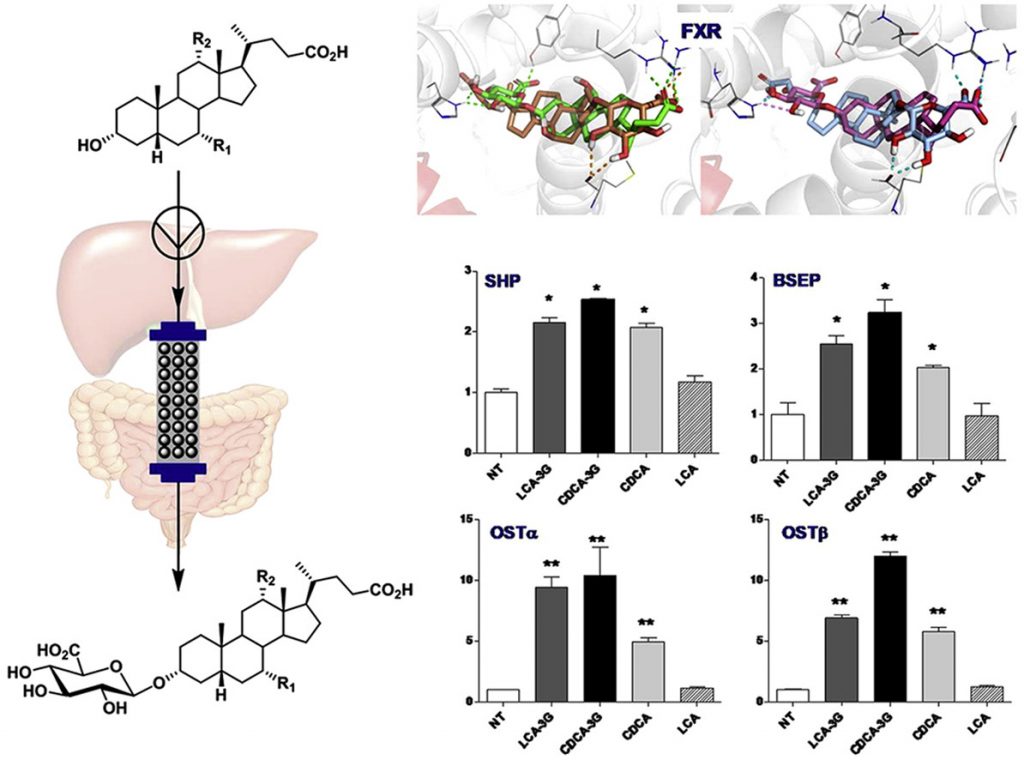 Read the publication that featured this abstract
Read the publication that featured this abstractGlucuronidation is considered an important detoxification pathway of bile acids especially in cholestatic conditions. Glucuronides are less toxic than the parent free forms and are more easily excreted in urine. However, the pathophysiological significance of bile acid glucuronidation is still controversial and debated among the scientific community. Progress in this field has been strongly limited by the lack of appropriate methods for the preparation of pure glucuronides in the amount needed for biological and pharmacological studies. In this work, we have developed a new synthesis of bile acid C3-glucuronides enabling the convenient preparation of gram-scale quantities. The synthesized compounds have been characterized in terms of physicochemical properties and abilities to modulate key nuclear receptors including the farnesoid X receptor (FXR). In particular, we found that C3-glucuronides of chenodeoxycholic acid and lithocholic acid, respectively the most abundant and potentially cytotoxic species formed in patients affected by cholestasis, behave as FXR agonists and positively regulate the gene expression of transporter proteins, the function of which is critical in human conditions related to imbalances of bile acid homeostasis.
5,6-dihydro-imidazo[1,2-a]pyrazin-8-ylamine derivatives useful as inhibitors of beta-secretase (BACE)
Inventors: Andrés Avelino Trabanco-Suárez, Francisca Delgado-Jiménez, Juan Antonio Vega Ramiro, Gary John Tresadern, Henricus Jacobus Maria Gijsen, Daniel Oehlrich,
- Assignee: Janssen Pharmaceutica NV Janssen Cilag SA
Read the publication that featured this abstractThe present invention relates to novel 5,6-dihydro-imidazo[1,2-a]pyrazin-8-ylamine inhibitors of beta-secretase, having the structure shown in Formula (I)
wherein R1, R2, R3, R4, X1, X2, X3, X4, L and Ar are defined in the specification. The invention is also directed to pharmaceutical compositions comprising such compounds, to processes for preparing such compounds and compositions, and to the use of such compounds and compositions for the prevention and treatment of disorders in which beta-secretase is involved, such as Alzheimer’s disease (AD), mild cognitive impairment, senility, dementia, dementia with Lewy bodies, cerebrovascular amyloid angiopathy, multi-infarct dementia, Down’s syndrome, dementia associated with stroke, dementia associated with Parkinson’s disease or dementia associated with beta-amyloid.
Conjugated polymers via direct arylation polymerization in continuous flow: minimizing the cost and batch-to-batch variations for high-throughput energy conversion
Nemal S. Gobalasingham1, Jon E. Carlé2, Frederik C. Krebs2, Barry C. Thompson1, Eva Bundgaard2, Martin Helgesen*,2
- 1 Department of Chemistry and Loker Hydrocarbon Research Institute, University of Southern California, Los Angeles, California, 90089-1661
- 2 DTU Energy, Technical University of Denmark, Roskilde, DK-4000, Denmark
Read the publication that featured this abstractContinuous flow methods are utilized in conjunction with direct arylation polymerization (DArP) for the scaled synthesis of the roll-to-roll compatible polymer, poly[(2,5-bis(2-hexyldecyloxy)phenylene)-alt-(4,7-di(thiophen-2-yl)-benzo[c][1,2,5]thiadiazole)] (PPDTBT). PPDTBT is based on simple, inexpensive, and scalable monomers using thienyl-flanked benzothiadiazole as the acceptor, which is the first β-unprotected substrate to be used in continuous flow via DArP, enabling critical evaluation of the suitability of this emerging synthetic method for minimizing defects and for the scaled synthesis of high-performance materials. To demonstrate the usefulness of the method, DArP-prepared PPDTBT via continuous flow synthesis is employed for the preparation of indium tin oxide (ITO)-free and flexible roll-coated solar cells to achieve a power conversion efficiency of 3.5% for 1 cm2 devices, which is comparable to the performance of PPDTBT polymerized through Stille cross coupling. These efforts demonstrate the distinct advantages of the continuous flow protocol with DArP avoiding use of toxic tin chemicals, reducing the associated costs of polymer upscaling, and minimizing batch-to-batch variations for high-quality material.
Recent advances of microfluidics technologies in the field of medicinal chemistry
László Ürge*, Jesus Alcazar†, Lena Huck†, György Dormán‡
- * DBH Group, Budapest, Hungary
- † Janssen Research and Development, Toledo, Spain
- ‡ Innostudio Inc., Budapest, Hungary
Read the publication that featured this abstractMicrofluidics, mesofluidics, and lab-on-a-chip technologies have been extensively researched in the pharma and life science industry over the last two decades, including synthesis of novel compounds and building blocks, medicinal chemistry support, biological screening, DMPK studies, and formulation and manufacturing of APIs and final products. These technologies can provide significant advantages over traditional methods and have the potential to revolutionize certain aspects of pharma R&D. The recent developments on the application of these novel techniques, their penetration in the industry, and their barriers for the further adaptation will be extensively discussed in this overview.
Sustainable flow synthesis of a versatile cyclopentenone building block
- Marcus Baumann†
- Ian R. Baxendale†
- Paolo Filipponi‡
- Te Hu†
- † Department of Chemistry, University of Durham, South Road, DH1 3LE Durham, U.K
- ‡ Novartis Pharma AG, Fabrikstrasse 14, 4002 Basel, Switzerland
 Read the publication that featured this abstract
Read the publication that featured this abstractA flow based multistep processing sequence to reliably provide the delivery of a highly functional cyclopentenone is described. The exemplification of employing solid dosing of reagents and in-line aqueous extraction has enabled an integrated workflow in a highly automated reactor setup.
Method and apparatus for the synthesis of dihydroartemisinin and artemisinin derivatives
Inventors: Daniel Kopetzki, David Tyler McQuade, Peter H. Seeberger, Kerry Gilmore
- Assignee: Max-Planck-Gesellschaft zur Forderung der Wissenschaften
Read the publication that featured this abstractThe present invention is directed to a method for continuous production of dihydroartemisinin and also artemisinin derivatives derived from dihydroartemisinin by using artemisinin or dihydroartemisinic acid (DHAA) as starting material as well as to a continuous flow reactor for producing dihydroartemisinin as well as the artemisinin derivatives. It was found that the reduction of artemisinin to dihydroartemisinin in a continuous process requires a special kind of reactor and a special combination of reagents comprising a hydride reducing agent, at least one activator such as an inorganic activator, at least one solid base, at least one aprotic solvent and at least one C1-C5 alcohol.
Auto-Tandem Catalysis: Pd(II)-Catalysed Dehydrogenation/Oxidative Heck of Cyclopentane-1,3-diones
Claire J C Lamb, Bryan G Nderitu, Gemma McMurdo, John MTobin, Filipe Vilela, and Ai-Lan Lee
- Institute of Chemical Sciences, Heriot-Watt University, Edinburgh EH14 4AS, United Kingdom
Read the publication that featured this abstractA Pd(II) catalyst system has been used to successfully catalyse two mechanistically distinct reactions in a one-pot procedure: dehydrogenation of 2,2-disubstituted cyclopentane-1,3-diones and
the subsequent oxidative Heck coupling. This auto-tandem catalytic reaction is applicable to both batch and continuous flow processes, with the latter being the first example of a tandem aerobic dehydrogenation/oxidative Heck in flow. In addition, a telescoped reaction involving enantioselective desymmetrisation of the all-C quaternary centre was successfully achieved.
Exploring effects of intermittent light upon visible light promoted water oxidations
Dominic Walsh*a, Pascaline Patureaua, Karen Robertsona, Shaun Reekstingb, Anneke Lubbenb, Salvador Eslavac, Mark T. Welleraa
- a Department of Chemistry, University of Bath, Bath, BA2 7AY, UK. E-mail: [email protected]
- b Chemical Characterization and Analysis Facility, University of Bath, Bath, BA2 7AY, UK
- c Department of Chemical Engineering, University of Bath, BA2 7AY, UK
Read the publication that featured this abstractVisible light promoted photocatalytic water oxidations for potential solar fuel production have been studied widely, with many reports on optimization of reagent components. Here we report an exploration on the effects upon ongoing reactions of daylight equivalent light intensity illumination with regulated short dark periods of a few seconds duration as compared to standard continuous illumination. Comparison was made with systems employing synthesized low cost earth abundant iron oxide, calciumoxomanganite and cobalt oxide nanoparticulate catalysts together with a [Ru(bpy)3] 2+ light harvesting dye and an electron acceptor. Yields of gaseous O2 and proton production were measured in situ and in real time. The study found that low cost catalysts could give very significantly increased O2 yields, turn over frequency and improved reaction profiles by use of simple on/off illumination. A range of timings with identical overall photon flux were tested and an optimum determined. Analysis of effects upon the light sensitizer under the range of lighting conditions (through mass spectrometry and UV-vis measurements), together with implementation of a continuous flow system as comparison to the batch reactions, were all employed to help elucidate the mechanisms for the clear improvements in reaction yields observed. These are believed to stem from reduction in self-decomposition of excess oxidized sensitizer and better synchronization of cyclic sensitizer oxidation/reductions with water oxidation at the
metal oxide surface at specific light on : off timing.
Telescoped continuous flow generation of a library of highly substituted 3-thio-1,2,4-triazoles.
Mariana C. F. C. B. Damiãoa, Renan Galavernaa, Alan P. Kozikowskib, James Eubanksc, Julio C. Pastrea
- a Institute of Chemistry, University of Campinas - UNICAMP, PO Box 6154 - Zip Code 13083-970, Campinas, SP, Brazil
- b StarWise Therapeutics LLC - University Research Park – Zip Code 53719-1235, Madison, Wisconsin, USA
- c Division of Genetics and Development - Krembil Research Institute – Zip Code M5T 2S8, Toronto, Ontario, Canada
Read the publication that featured this abstractWe report herein the successful application of continuous flow micro reactors to prepare important building blocks based on the 3-thio-1,2,4-triazole core. A telescoped continuous flow process was developed based on the condensation of hydrazides and isothiocyanates to deliver an in situ stream of a thiosemicarbazide, which subsequently was cyclized under basic conditions. The obtained 1,2,4-triazole-3-thiol was further alkylated with benzyl/alkyl halides. In addition, we evaluated the scope of heterocycle formation and alkylation using different hydrazides, isothiocyanates, and aryl/alkyl chlorides, bromides and iodides. We were able to synthesize a small library of 18 compounds in 48 minutes of residence time for each synthesis, and in moderate to excellent yields, in a telescoped fashion. The fully integrated synthesis flow platform enables the fast generation of compound libraries, reducing the time consumed in preliminary stages of a drug discovery process.
Targeting a mirabegron precursor by BH3-mediated continuous flow reduction process
- Sonia De Angelisa
- Claudia Carluccia
- Modesto de Candiaa
- Gabriele Rebuzzinib
- Paolo Celestinib
- Massimiliano Riscazzib
- Renzo Luisia
- Leonardo Degennaroa
- a FLAME-Lab − Flow Chemistry and Microreactor Technology Laboratory, Department of Pharmacy — Drug Sciences, University of Bari “A. Moro” Via E. Orabona 4, Bari 70125, Italy
- b COSMA S.p.A, Via Colleoni 15/17, Ciserano, BG 24040, Italy
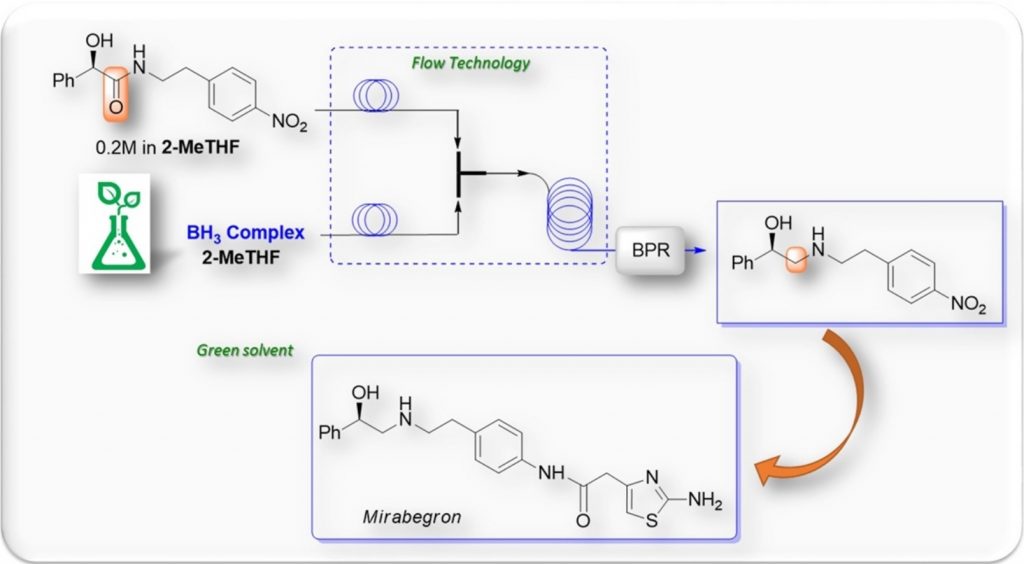 Read the publication that featured this abstract
Read the publication that featured this abstractA continuous-flow reduction of (R)-2-hydroxy-N-[2-(4-nitrophenyl)ethyl]-2-phenylacetamide, involved in the synthetic pathway of Mirabegron, has been developed. This study demonstrated the possibility to safely handling BH3 complexes within microfluidic reactors using 2-MeTHF as greener alternative to traditional solvents, and without requiring any additive such as DMI. In addition, NMR and HPLC purity analysis revealed that the sole by-product of this process is the diamine 3, which wouldn’t affect the following synthetic steps towards Mirabegron.
In Situ Preparation and Consumption of O-Mesitylsulfonylhydroxylamine (MSH) in Continuous Flow for the Amination of Pyridines
Cara E. Brocklehurst*, Guido Koch, Stephanie Rothe-Pöllet, Luigi La Vecchia
- Synthesis and Technologies, Global Discovery Chemistry, Novartis Institutes for Biomedical Research, Klybeckstrasse 141, 4057 Basel, Switzerland
Read the publication that featured this abstractThe paper demonstrates a safe method in which highly unstable O-mesitylsulfonylhydroxylamine (MSH) can be prepared and consumed in continuous flow. MSH was prepared in situ and used for the flow amination of a range of pyridines, which were subsequently transformed into useful pyrazolopyridine building blocks.
Highly efficient oxidation of amines to aldehydes with flow-based biocatalysis
Dr. Martina L. Contente1,2, Federica Dall'Oglio3, Dr. Lucia Tamborini3, Prof. Francesco Molinari4, Prof. Francesca Paradisi1,2
- 1 School of Chemistry, University of Nottingham, Nottingham, UK
- 2 UCD School of Chemistry, University College Dublin, Dublin, Ireland
- 3 Department of Pharmaceutical Sciences, DISFARM, University of Milan, Milan, Italy
- 4 Department of Food, Environmental and Nutritional Science, DeFENS, University of Milan, Milan, Italy
Read the publication that featured this abstractA new mild and efficient process for the aqueous preparation of aldehydes, which are employed as flavour and fragrance components in food, beverage, cosmetics, as well as in pharmaceuticals, was developed using a continuous-flow approach based on an immobilised pure transaminase-packed bed reactor. HEWT, an ω-transaminase from the haloadapted bacterium Halomonas elongata, has been selected for its excellent stability and substrate scope. Sixteen different amines were rapidly (3–15 min) oxidised to the corresponding aldehydes (90 to 99 %) with only 1 to 5 equivalents of sodium pyruvate. The process was fully automated, allowing for the in-line recovery of the pure aldehydes (chemical purity >99 % and isolated yields above 80 %), without any further work-up procedure.
Novel Polystyrene-Immobilized Chiral Amino Alcohols as Heterogeneous Ligands for the Enantioselective Arylation of Aldehydes in Batch and Continuous Flow Regime
- José AugustoForni, Luiz Fernando Toneto, Novaes, Renan Galaverna, Julio C.Pastre
- Institute of Chemistry, University of Campinas – UNICAMP, PO Box 6154, 13083-970, Campinas, SP, Brazil
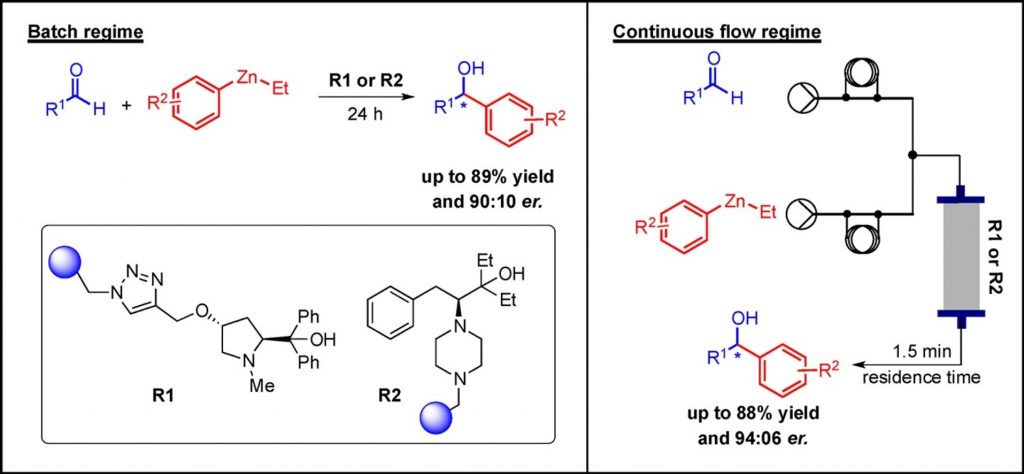 Read the publication that featured this abstract
Read the publication that featured this abstractSix different ligands derived from (S)-proline, (2S,4R)-4-hydroxyproline, (S)-tyrosine and (S)-phenylalanine were synthesized and screened in homogeneous phase for the enantioselective arylation of aldehydes using mixed organozinc reagents. The best ligands were immobilized on the Merrifield resin and evaluated in batch and continuous flow regimes. In batch, up to 89% yield and 90:10 enantiomeric ratio were obtained. In continuous flow regime, we explored the examples that were more challenging in batch, being able to obtain the desired product in 88% yield and 94:6 of enantiomeric excess in residence time as low as 1.5 min.
An efficient and green pathway for continuous Friedel-Crafts acylation over α-Fe2O3 and CaCO3 nanoparticles prepared in the microreactors
Zheng Fanga1, Wei Heb1, Tao Tub, Niuniu Lva, Chuanhong Qiua, Xin Lia, Ning Zhua, Li Wana, Kai Guoac
- a College of Biotechnology and Pharmaceutical Engineering, Nanjing Technology University, No. 30 Puzhu South Road, Nanjing, 211816, PR China
- b Department of Chemistry, Fudan University, No. 220 Handan Road, Shanghai, 200433, PR China
- c State Key Laboratory of Materials-Oriented Chemical Engineering, Nanjing Technology University, No. 30 Puzhu South Road, Nanjing, 211816, PR China
Read the publication that featured this abstractα-Fe2O3 nanoparticles were prepared by using a continuous precipitation method with a valve assisted micromixer in the presence of iron (III) sulfate and ammonia water. The resulting nanoparticles were characterized by X-ray diffraction (XRD), transmission electron microscopy (TEM). Meanwhile, CaCO3 nanoparticles were synthesized in a tube-in-tube flow reactor AF-2400. The acylation process catalyzed by modified lipophilic α-Fe2O3 and CaCO3 nanoparticles in the flow reactor were systematically investigated. Under the optimal conditions, a yield of 97.8% was obtained. Addition of CaCO3 nanoparticles resulted in higher catalytic efficiency compared with pure modified α-Fe2O3 nanoparticles. Moreover, this novel acylation also worked well for other substrates.
A nanoporous graphene analog for superfast heavy metal removal and continuous-flow visible-light photoredox catalysis
Ran Xiaoa, John Michael Tobinb, Meiqin Zhaa, Yunlong Houa, Jun Hec, Filipe Vilela*b, Zhengtao Xu*a
- a Department of Chemistry, City University of Hong Kong, 83 Tat Chee Avenue, Kowloon, Hong Kong
- b School of Engineering and Physical Sciences, Heriot-Watt University, Edinburgh, UK
- c School of Chemical Engineering and Light Industry, Guangdong University of Technology, Guangzhou 510006, China
Read the publication that featured this abstractWe report a highly recyclable, 2D aromatic framework that offers a unique and versatile combination of photocatalytic activity and heavy metal uptake capability, as well as other attributes crucial for green and sustainable development technologies. The graphene-like open structure consists of fused tritopic aromatic building blocks (i.e., hexahydroxytriphenylene and hexaazatrinaphthylene) that can be assembled from readily available industrial materials without the need for transition metal catalysts. Besides fast and strong binding for Pb(II) ions (e.g., removing aqueous Pb ions below the drinkable limit within minutes), the alkaline N-heterocycle units of the robust and porous host are able to quantitatively catalyse Knoevenagel reactions in water. Furthermore, the fused donor–acceptor aromatic π-systems enable environmentally friendly photoredox catalysis (PRC) utilizing the safe and abundant visible light in a commercial flow reactor. Also discussed is a new metric for benchmarking the kinetic performance of sorbents in the context of heavy metal removal from drinking water.
A novel micro-flow system under microwave irradiation for continuous synthesis of 1, 4-dihydropyridines in the absence of solvents via Hantzsch reaction
Wei Hea,b, Zheng Fangb, Kai Zhangb, Tao Tua, Niuniu Lvb, Chuanhong Qiub, Kai Guob,c
- a Department of Chemistry, Fudan University, No. 220 Handan Road, Shanghai, 200433, PR China
- b College of Biotechnology and Pharmaceutical Engineering, Nanjing Technology University, No. 30 Puzhu South Road, Nanjing, 211816, PR China
- c State Key Laboratory of Materials-Oriented Chemical Engineering, Nanjing Technology University, No. 30 Puzhu South Road, Nanjing, 211816, PR China
Read the publication that featured this abstractγ-Fe2O3 nanoparticles were synthesized in the valve-assisted micromixer. The resulting nanoparticles were characterized by X-ray diffraction (XRD), transmission electron microscopy (TEM). In the packed bed flow reactor, the investigation concerning the comparison of different heating methods demonstrated that microwave irradiation displayed the best reaction efficiency compared with air heating and oil-bath heating. A novel micro-flow system under microwave irradiation was designed and employed in the condensation of aldehyde, ethyl acetoacetate and ammonia. Under optimized conditions, Hantzsch reaction conducted well, resulting in a yield of 98.7% and excellent selectivity. In addition, this novel process worked well for other substrates.
Methanolysis of epoxidized soybean oil in continuous flow conditions
Vincenzo Pantonea, Amelita Grazia Laurensab, Cosimo Annesec, Francesco Fracassib, Caterina Fuscob, Angelo Naccib,c, Antonella Russoa, Lucia D’Accoltib,c
- a Greenswitch s.r.l., Ferrandina MT, Italy
- b Dipartimento di Chimica, Università di Bari Aldo Moro, Via E. Orabona 4, 70126 Bari, Italy
- c ICCOM-CNR, SS Bari, Via E. Orabona 4, 70126 Bari, Italy
Read the publication that featured this abstractBio-polyols synthesized from vegetables oils are a great alternative to petrochemical polyols for polyurethanes industry. The simplest approach to bio-polyols synthesis involves epoxidation of carbon–carbon double bond of unsaturated fatty ester moieties and subsequent epoxide ring-opening by nucleophilic reagents. In order to improve the latter process by increasing both productivity and product quality, the advantages of flow chemistry were exploited, such as facile automation, reproducibility, improved safety and process reliability, investigating for the first time in the literature the methanolysis reaction of epoxidized soybean oil (ESO) in a continuous flow mode.
Compared with batch reaction, flow mode allowed the cut of the reaction time from 30 min to 2 min, and the reduction of catalyst concentration by an order of magnitude, which brought significant benefits in terms of cost efficiency and eco-sustainability, rendering the method suitable for industrial applications.
Visible-light-induced trifluoromethylation of highly functionalized arenes and heteroarenes in continuous flow
Irini Abdiaja, Cecilia Bottecchiab, Jesus Alcazar*a, Timothy Noёl*b
- a Janssen Research & Development, Jarama 75A, 45007 Toledo, Spain
- b Department of Chemical Engineering and Chemistry, Micro Flow Chemistry & Process Technology, Eindhoven University of Technology, Den Dolech 2, 5612 AZ Eindhoven, The Netherlands
Read the publication that featured this abstractWe report a continuous-flow protocol for the trifluoromethylation of arenes, heteroarenes, and benzofused heterocycles. This photoredox methodology relies on the use of solid sodium trifluoromethanesulfinate (CF3SO2Na) as the trifluoromethylating agent and the iridium complex [Ir{dF(CF3)ppy}2](dtbpy)]PF6 as the photoredox catalyst. A diverse set of highly functionalized heterocycles proved compatible with the methodology, and moderate to good yields were obtained within 30 minutes of residence time.
Continuous preparation and use of dibromoformaldoxime as a reactive intermediate for the synthesis of 3- bromoisoxazolines
- Claudio Battilocchioa*
- Francesco Bosicaa
- Sam M. Rowea
- Bruna L. Abreua
- Edouard Godineaub*
- Matthias Lehmannb
- Steven V. Leya
- a Innovative Technology Centre, Department of Chemistry, University of Cambridge, Lensfield Road, Cambridge CB2 1EW, U.K.
- b Syngenta Crop Protection AG, Crop Protection Research, Schaffhauserstrasse 101, CH-4332 Stein, Switzerland
 Read the publication that featured this abstract
Read the publication that featured this abstractWe report the multistep continuous process for the preparation of dibromoformaldoxime (DBFO) as a precursor to generate bromoisoxazolines. We also report process improvements that afford a productivity of over 620 mmol h-1 of DBFO.
Treatment of alcohols
Inventors: Thomas Mark Douglas, Andrew John Hogben, David John Law, John Glenn Sunley, Thomas Giles Parsons
- Assignee: Technip E&C Ltd
Read the publication that featured this abstractProcess for treating an alcohol composition containing nitrogen-containing contaminants by contacting the alcohol composition with an adsorbent in an adsorption zone. The adsorbent is a transition metal-loaded solid porous material selected from aluminosilicates, silica-aluminas, silicates and aluminas, and the alcohol composition is contacted with the adsorbent either alone or in the presence of an inert carrier gas.
Chemoenzymatic synthesis in flow reactors: a rapid and convenient preparation of captopril
- Dr. Valerio De Vitis1
- Dr. Federica Dall'Oglio1
- Dr. Andrea Pinto2
- Prof. Carlo De Micheli2
- Prof. Francesco Molinari1
- Prof. Paola Conti2
- Dr. Diego Romano1
- Dr. Lucia Tamborini2
- 1 Department of Food Environmental and Nutritional Science, University of Milan, Milan, Italy
- 2 Department of Pharmaceutical Sciences, University of Milan, Milan, Italy
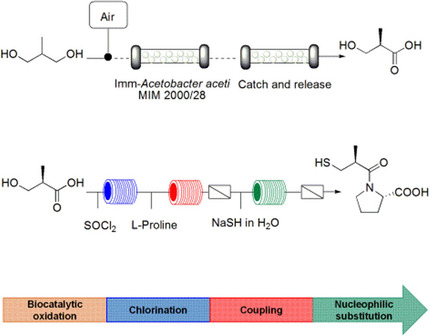 Read the publication that featured this abstract
Read the publication that featured this abstractThe chemoenzymatic flow synthesis of enantiomerically pure captopril, a widely used antihypertensive drug, is accomplished starting from simple, inexpensive, and readily available reagents. The first step is a heterogeneous biocatalyzed regio- and stereoselective oxidation of cheap prochiral 2-methyl-1,3-propandiol, performed in flow using immobilized whole cells of Acetobacter aceti MIM 2000/28, thus avoiding the use of aggressive and environmentally harmful chemical oxidants. The isolation of the highly hydrophilic intermediate (R)-3-hydroxy-2-methylpropanoic acid is achieved in-line by using a catch-and-release strategy. Then, three sequential high-throughput chemical steps lead to the isolation of captopril in only 75 min. In-line quenching and liquid–liquid separation enable breaks in the workflow and other manipulations to be avoided.
Preparation of polyfunctional diorgano-magnesium and – zinc reagents using in situ trapping halogen-lithium exchange of highly functionalized (hetero)aryl halides in continuous flow
Marthe Ketels, Maximilian Andreas Ganiek, Niels Weidmann, Paul Knochel
- LMU München, Department of Chemistry, München, Germany
Read the publication that featured this abstractWe report a halogen-lithium exchange performed in the presence of various metal salts (ZnCl2, MgCl2·LiCl) on a broad range of sensitive bromo- or iodo-(hetero)arenes using BuLi or PhLi as exchange reagent and a commercially available continuous flow setup. The resulting diarylmagnesium or diarylzinc species were trapped with various electrophiles resulting in the formation of polyfunctional (hetero)arenes in high yields. This methodology enabled the functionalization of (hetero)arenes containing highly sensitive groups such as an isothiocyanate, nitro, azide or ester. A straightforward scale-up was possible without further optimization.
Flow assisted synthesis: a key fragment of SR 142948A
- Matthew Oliver Kitching, Olivia E Dixon, Marcus Baumann, Ian Richard Baxendale
- University of Durham, Chemistry, Durham, UK
 Read the publication that featured this abstract
Read the publication that featured this abstractWe report a series of multi-step flow operations to deliver an advanced hydrazine intermediate used in the assembly of the Neurotensin modulator SR142948A. Several new reactor configurations have enabled chemical transformations that would be otherwise difficult or dangerous to perform at scale. Overall the flow approach has allowed the preparation of kilogram quantities of the required hydrazine via a short and efficient route.
Singlet oxygen oxidations in homogeneous continuous flow using a gas–liquid membrane reactor
Antonia Kouridaki, Kevin Huvaere
- EcoSynth NV, Industrielaan 12, 9800 Deinze, Belgium
Read the publication that featured this abstractA flow chemistry reactor system for scalable photooxygenation reactions was developed using a gas–liquid reactor as key feature. Herein oxygen gas is dissolved under pressure in the reaction mixture to give a homogeneous flow regime prior to irradiation. The system enables safe mass transport of oxygen in an accurate manner simply by adjusting liquid flow rate, membrane temperature, and gas pressure as concluded after characterization of reactor behaviour. Quantification of oxygen supply as function of liquid flow rate and membrane temperature showed that 50 mM and 58 mM of oxygen were supplied to methanol and acetonitrile at 1 mL min−1 flow rate and 110 °C membrane temperature. With 100 mM measured at 90 °C, dichloromethane was most effective for oxygen uptake. Photooxidation of a model system, the furan derivative ethyl 3-(2-furyl)propanoate, was elaborated to validate the system for singlet oxygen chemistry, with reactor parameters being further optimized for maximum conversion. Scope of the system was demonstrated by performing a set of representative photochemical oxidations, including reaction with citronellol as first step in the synthesis of rose oxide.
A convenient, mild and green synthesis of NH-sulfoximines in flow reactors
- Leonardo Degennaro1
- Arianna Tota1
- Sonia De Angelis1
- Michael Andresini1
- Cosimo Cardellicchio2
- Maria Annunziata Capozzi1
- Giuseppe Romanazzi3
- Renzo Luisi1
- 1 University of Bari, Department of Pharmacy - Drug Sciences, Bari, Italy
- 2 CNR ICCOM, Department of Chemistry, Bari, Italy
- 3 Politecnico di Bari, DICATECh, Bari, Italy
 Read the publication that featured this abstract
Read the publication that featured this abstractNH-Sulfoximines are emerging as useful and important targets in drug discovery and synthetic organic chemistry. We report herein the development of an efficient, convenient, and sustainable continuous flow strategy, for the direct straightforward preparation of NH-sulfoximines using sulfides or sulfoxides as suitable starting material. The flow process uses PhI(OAc)2 as the oxidant and aqueous solutions of ammonia as the N-source. The scope of the reaction has been demonstrated by using several substituted sulfides and sulfoxides including enantioenriched and biologically relevant starting materials. The flow strategy was found more convenient with respect to conventional batch processing.
A continuous flow method for the desulfurization of substituted thioimidazoles applied to the synthesis of new etomidate derivatives
- Marcus Baumann, Ian R Baxendale
- Durham University, Department of Chemistry, Durham, UK
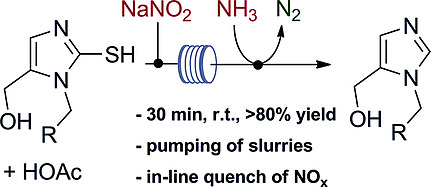 Read the publication that featured this abstract
Read the publication that featured this abstractA simple yet robust flow set-up for the efficient desulfurization of a series of thioimidazoles is presented generating the corresponding imidazole derivatives in high yields. The strategic choice of peristaltic over piston pumps allowed reliable delivery of the heterogeneous stream of thioimidazole substrate into a T-piece where it reacted with NaNO2 in the presence of acetic acid. This approach enabled the controlled and safe formation of the reactive nitrosonium species without uncontrolled exposure to hazardous nitrous oxide by-products as observed in related batch protocols. The value of the resulting imidazole products was further demonstrated by their conversion into various esters representing new derivatives of the known analgesic etomidate via an efficient one pot Corey-Gilman-Ganem oxidation procedure.
High throughput photo-oxidations in a packed bed reactor system
- Caleb J. Kong, Daniel Fisher, Bimbisar K. Desai,. Yuan Yang, Saeed Ahmad, Katherine Belecki, B. Frank Gupton
- Department of Chemistry and Department of Chemical and Life Science Engineering, Virginia Commonwealth University, 601 W. Main St. Richmond, VA 23220, USA
 Read the publication that featured this abstract
Read the publication that featured this abstractThe efficiency gains produced by continuous-flow systems in conducting photochemical transformations have been extensively demonstrated. Recently, these systems have been used in developing safe and efficient methods for photo-oxidations using singlet oxygen generated by photosensitizers. Much of the previous work has focused on the use of homogeneous photocatalysts. The development of a unique, packed-bed photoreactor system using immobilized rose bengal expands these capabilities as this robust photocatalyst allows access to and elaboration from these highly useful building blocks without the need for further purification. With this platform we were able to demonstrate a wide scope of singlet oxygen ene, [4+2] cycloadditions and heteroatom oxidations. Furthermore, we applied this method as a strategic element in the synthesis of the high-volume antimalarial artemisinin.
Phase separation macrocyclization in a complex pharmaceutical setting: application toward the synthesis of vaniprevir
Eric Godin, Anne-Catherine Bédard, Michael Raymond, Shawn K. Collins*
- Département de Chimie, Centre for Green Chemistry and Catalysis, Université de Montréal, CP 6128 Station Downtown, Montréal, Québec, H3C 3J7 Canada
Read the publication that featured this abstractA phase separation/continuous flow strategy employing an oxidative Glaser–Hay coupling of alkynes has been applied toward the synthesis of the macrocyclic core of complex pharmaceutical vaniprevir. The phase separation/continuous flow strategy afforded similar yields at 100–500 times the concentration and at shorter reaction times than common slow addition/high dilution techniques. In addition, dendritic PEG cosolvents were employed in the phase separation strategy for the first time and shown to allow productive macrocyclization at concentrations up to 200 mM.
Method for the synthesis of N-(phosphonomethyl)glycine
Inventors: Sebastian Burck, Frederic Bruyneel, Patrick Notte
- Assignee: Monsanto Technology LLC
Read the publication that featured this abstractA method for the synthesis of N-(phosphonomethyl)glycine or one of its derivatives selected from the group consisting of its salts, its phosphonate esters, or its phosphonate ester salts, which includes the steps of: a) forming, in the presence an acid catalyst, a reaction mixture having 2,5-diketopiperazine, formaldehyde and a compound including one or more P-0-P anhydride moieties, the moieties having one P atom at the oxidation state (+III) and the other P atom at the oxidation state (+III) or (+V), to form N,N′-bisphosphonomethyl-2,5-diketopiperazine, its mono- to tetra phosphonate esters, the dehydrated forms of N,N′-bisphosphonomethyl-2,5-diketopiperazine and the phosphonate esters of its dehydrated forms; and b) hydrolyzing the N,N′-bisphosphonomethyl-2,5-diketopiperazine, its dehydrated forms or their phosphonate esters to obtain N-(phosphonomethyl)glycine or one of its derivatives selected from the group consisting of its salts, its phosphonate esters and its phosphonate ester salts.
Isoquinoline derivatives
Inventors: Simona M. Ceccarelli, Ravi Jagasia, Roland Jakob-Roetne, Rainer E. Martin, Juergen Wichmann
- Assignee: Hoffmann La Roche Inc
Read the publication that featured this abstractThe present invention relates to the use of compounds of general formula
wherein
R1 is phenyl or pyridinyl, which are optionally substituted by halogen, cyano or lower alkyl substituted by halogen, or is dihydro-pyran-4-yl;
R2 is hydrogen or lower alkyl;
R3 is —(CHR)n-phenyl, optionally substituted by lower alkoxy or S(O)2-lower alkyl,or is heterocycloalkyl, optionally substituted by ═O and lower alkyl,
or is —(CH2)n-five or six membered heteroaryl, optionally substituted by lower alkyl,
or is hydrogen, lower alkyl, lower alkyl substituted by halogen, lower alkyl substituted by hydroxy, —NR—S(O)2-lower alkyl, —(CH2)n-cycloalkyl or —(CH2)n—S(O)2-lower alkyl; or
R2 and R3 form together with the N-atom to which they are attached a heterocycloalkyl ring, selected from the group consisting of 1,1-dioxo-thiomorpholinyl, morpholinyl, or pyrrolidinyl, optionally substituted by hydroxyl;
R is hydrogen or lower alkyl;
n is 0, 1 or 2;
or to a pharmaceutically acceptable acid addition salt, to a racemic mixture or to its corresponding enantiomer and/or optical isomers thereof,
for the treatment of schizophrenia, obsessive-compulsive personality disorder, depression, bipolar disorders, anxiety disorders, normal aging, epilepsy, retinal degeneration, traumatic brain injury, spinal cord injury, post-traumatic stress disorder, panic disorder, Parkinson’s disease, dementia, Alzheimer’s disease, mild cognitive impairment, chemotherapy-induced cognitive dysfunction (“chemobrain”), Down syndrome, autism spectrum disorders, hearing loss, tinnitus, spinocerebellar ataxia, amyotrophic lateral sclerosis, multiple sclerosis, Huntington’s disease, stroke, and disturbances due to radiation therapy, chronic stress, optic neuropathy or macular degeneration, or abuse of neuro-active drugs, such as alcohol, opiates, methamphetamine, phencyclidine or cocaine.
Removal of nitrogen-containing impurities form alcohol compositions
Inventors:, Thomas Mark Douglas, Nakul Thakar
- Assignee: Technip E&C Ltd
Read the publication that featured this abstractProcess for the treatment of an alcohol composition containing nitrogen-containing contaminants by contacting the alcohol composition in the vapor phase with an adsorbent in an adsorption zone.
Substituted 1,6-naphthyridines
Inventors:, Simona M. Ceccarelli, Ravi Jagasia, Roland Jakob-Roetne, Rainer E. Martin, Jens-Uwe Peters, Juergen Wichmann
- Assignee: Hoffmann La Roche Inc
Read the publication that featured this abstractThe present invention relates to the use of compounds of general formula I wherein R′, R1, R2 and R3 are as
defined herein, or to a pharmaceutically acceptable acid addition salt, to a racemic mixture or to its corresponding enantiomer and/or optical isomers thereof, and for methods to treat a variety of neurodegenerative and neuropsychiatric diseases.
Process for the preparation of efavirenz and devices suitable therefore
Inventors, Camille A. Correia, Kerry Gilmore, David Tyler McQuade, Peter H. Seeberger
- Assignee: Max-Planck-Gesellschaft zur Forderung der Wissenschaften
Read the publication that featured this abstractThe invention relates to a process for the preparation of Efavirenz via an efficient transition metal catalyzed cyclization, to a device suitable to perform such process as well as to novel intermediates.
RAFT polymers
Inventors:, John Chiefari, Christian Hornung, Almar Postma, Simon Saubern
- Assignee: Commonwealth Scientific and Industrial Research Organization CSIRO
Read the publication that featured this abstractThe invention provides for a process for removing thiocarbonylthio groups from polymer prepared by RAFT polymerization, the process comprising:
introducing into a flow reactor a solution comprising the RAFT polymer in solvent; and promoting a reaction within the flow reactor that removes the thiocarbonylthio groups so as to form a solution that flows out of the reactor comprising the RAFT polymer absent the thiocarbonylthio groups.
Method for preparing caprolactam by using a microreactor under lewis acid catalysis
Inventors:, Kai Guo, Xin Li, Zheng Fang, Kai Zhang, Qi Yu, Pingkai Ouyang
- Assignee: Nanjing Tech University
Read the publication that featured this abstractA method for preparing caprolactam by using a microreactor under Lewis acid catalysis, wherein a hydroxyl group in a cyclohexanone oxime is activated to obtain a cyclohexanone oxime sulfonates intermediate, then rearranged under Lewis acid catalysis to prepare the caprolactam. The method of this invention has a simple process and a high operation safety and selectivity, the reaction condition is mild, an efficient reaction can take place even at room temperature, the reaction time is short, the conversion of the cyclohexanone oxime can reach 100% within a short time, the selectivity of the caprolactam can reach 99%, the energy consumption is greatly reduced in the premise of maintaining a high yield, and the production cost is reduced, being an efficient and green and environmentally friendly method of for synthesizing the caprolactam.
Grignard reagents on a tab: direct magnesium insertion under flow conditions
- Lena Huck†,‡
- Antonio de la Hoz‡
- Angel Díaz-Ortiz‡
- Jesus Alcázar†
- † Janssen Research and Development, Janssen-Cilag, S.A., C/Jarama 75, 45007 Toledo, Spain
- ‡ Facultad de Ciencias Químicas, Universidad de Castilla-La Mancha, 13071 Ciudad Real, Spain
 Read the publication that featured this abstract
Read the publication that featured this abstractAn on-demand preparation of organomagnesium reagents is presented using a new flow protocol. The risks associated with the activation of magnesium are circumvented by a new on-column initiation procedure. Required amounts of solutions with a precise titration were obtained. Telescoped flow or batch reactions allow access to a diverse set of functional groups.
Co-production of HMF and gluconic acid from sucrose by chemo-enzymatic method
- Hongli Wu, Ting Huang, Fei Cao, Qiaogen Zou, Ping Wei, Pingkai Ouyang
- College of Biotechnology and Pharmaceutical Engineering, Nanjing Tech University, 30 South Puzhu Road, Nanjing 211816 PR China
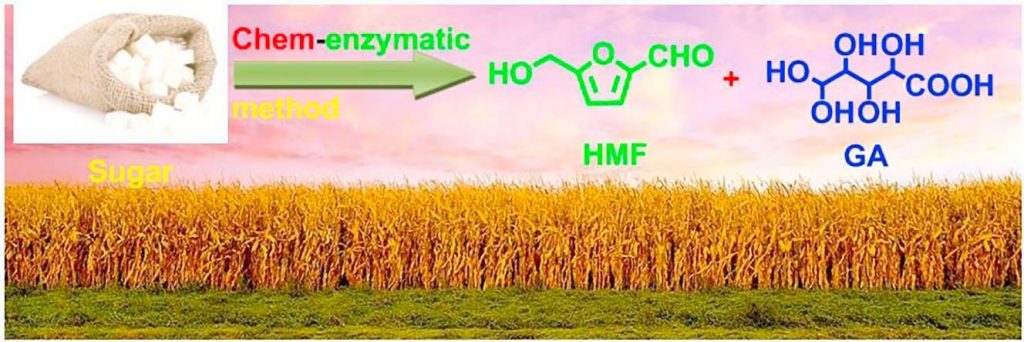 Read the publication that featured this abstract
Read the publication that featured this abstractCo-production of multi-products is one of the core principles of chemical industry, and it is also an important way to improve the atom economy. Herein, we proposed an approach to co-producing two valuable platform compounds, gluconic acid (GA) and 5-hydroxymethyl furfural (HMF), from sucrose by successive hydrolysis, oxidation and dehydration. In the enzymatic oxidation step, only glucose was oxidized to GA, meanwhile fructose was 100% retained. In the further biphasic dehydration system, only fructose was converted into HMF, whereas GA was maintained with over 95% recovery. After three reactions, the yields of HMF and GA were respectively 42.5% and 48% when the initial feedstock of sucrose was 200 g/L. Two products were easily separated because GA was completely existed in aqueous phase, and HMF was mainly in organic phase. In the whole process, only commercial enzymes and mineral acid were used instead of self-made catalysts.
The Application of a Continuous Grignard Reaction in the Preparation of Fluconazole
- Sudha Korwar
- Somi Amir
- Perrer N. Tosso
- Bimbisar K. Desai
- Caleb J. Kong
- Swara Fadnis
- Nakul S. Telang
- Saeed Ahmad
- Thomas D. Roper
- B. Frank Gupton*
- Department of Chemistry and Department of Chemical and Life Science, Engineering, Virginia Commonwealth University, 601 W. Main St., R ichmond, VA 23220, USA
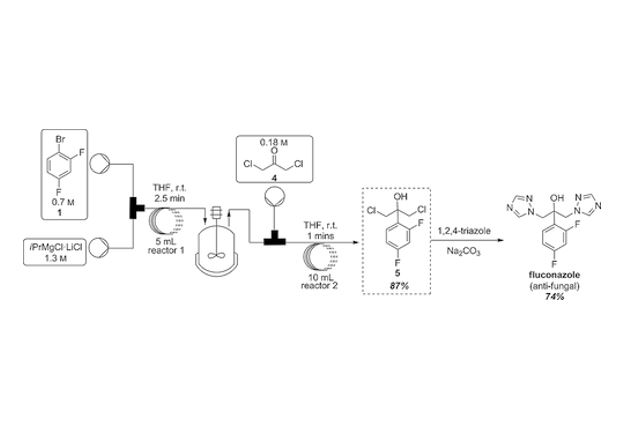 Read the publication that featured this abstract
Read the publication that featured this abstractThe application of continuous methods in the synthesis of active pharmaceutical ingredients continues to receive significant attention in the academic as well as the industrial research communities. One of the major advantages of continuous methods is the ability to safely access kinetic synthons as well as highly reactive reagents that are typically unavailable through traditional batch methods. In this work, we report the high‐yielding, clean formation of an aryl‐turbo Grignard and its selective addition to a highly‐enolizable 1,3‐dichloroacetone, for the continuous synthesis of a key intermediate for fluconazole, a widely‐prescribed anti‐fungal agent. In addition, process optimization of the final API was also carried out to arrive at a semi‐continuous method to this essential medicine.
Efficient synthesis of 5-(chloromethyl) furfural (CMF) from high fructose corn syrup (HFCS) using continuous flow processing
T. M. Kohla, B. Bizeta, P. Kevana, C. Sellwooda, J. Tsanaktsidisa, C. H. Hornunga
- a CSIRO Manufacturing Flagship, Bag 10, Clayton South, Australia
Read the publication that featured this abstractUsing continuous flow processing the synthesis of 5-(chloromethyl) furfural (CMF) from both solid sugars and high fructose corn syrup (HFCS) was achieved. The use of HFCS allows for a convenient liquid sugar feedstock, which in turn through our improved three pump system, allows for production of CMF with no additional handling of stock solutions. Extensive reaction optimisation was also carried out with large increases in reaction efficiency achieved over existing batch processes.
Barbier continuous flow preparation and reactions of carbamoyllithiums for nucleophilic amidation
Maximilian Andreas Ganiek, Matthias Richard Becker, Guillaume Berionni, Hendrik Zipse, Paul Knochel
- LMU München, Department of Chemistry, München, Germany
Read the publication that featured this abstractAn ambient temperature continuous flow method for nucleophilic amidation and thioamidation is described. Deprotonation of formamides by lithium diisopropylamine (LDA) affords carbamoyllithium intermediates that are quenched in situ with various electrophiles such as ketones, allyl bromides, Weinreb and morpholino amides. The nature of the reactive lithium intermediates and the thermodynamics of the metalation were further investigated by ab initio calculations and kinetic experiments.
Polymer-supported photosensitizers for oxidative organic transformations in flow and under visible light irradiation
- John M. Tobin†
- Timothy J. D. McCabe‡
- Andrew W. Prentice†
- Sarah Holzer†
- Gareth O. Lloyd†
- Martin J. Paterson†
- Valeria Arrighi†
- Peter A. G. Cormack‡
- Filipe Vilela†
- † School of Engineering and Physical Sciences, Heriot-Watt University, Edinburgh, EH14 4AS Scotland, United Kingdom
- ‡ WestCHEM, Department of Pure and Applied Chemistry, University of Strathclyde, Thomas Graham Building, 295 Cathedral Street, Glasgow, G1 1XL Scotland, United Kingdom
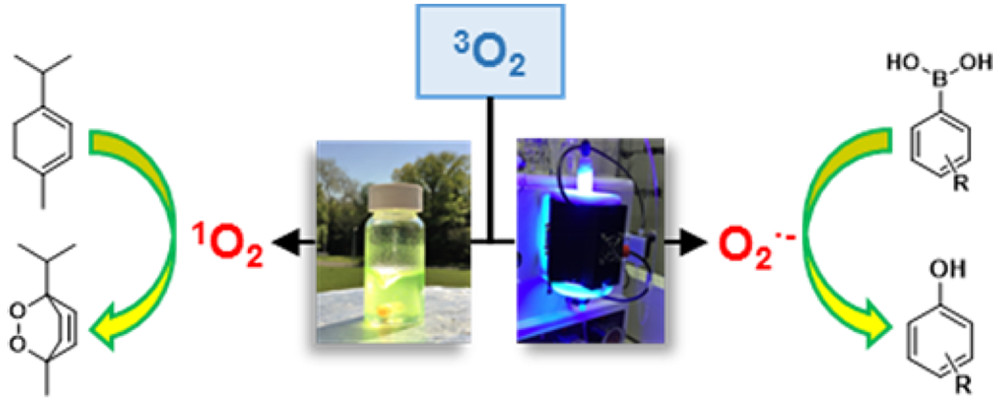 Read the publication that featured this abstract
Read the publication that featured this abstractA 2,1,3-benzothiadiazole (BTZ)-based vinyl cross-linker was synthesized and copolymerized with large excesses of styrene using free radical polymerization to deliver heterogeneous triplet photosensitizers in three distinct physical formats: gels, beads, and monoliths. These photosensitizers were employed for the production of singlet oxygen (1O2) and for the aerobic hydroxylation of arylboronic acids via superoxide radical anion (O2•–), whereby the materials demonstrated good chemical and light stability. BTZ-containing beads and monoliths were exploited as photosensitizers in a commercial flow reactor, and 1O2 production was also demonstrated using direct sunlight irradiation, with a conversion rate comparable to the rates achieved when a 420 nm LED module is used as the source of photons.
Direct valorisation of waste cocoa butter triglycerides via catalytic epoxidation, ring-opening and polymerisation
Dorota D Plazaa, Vinzent Strobelb, Parminder Kaur KS Heerb, Andrew B Sellarsd, Seng-Soi Hoongd, Andrew J Clarkd, Alexei A Lapkinb
- a School of Engineering, University of Warwick, Coventry, UK
- b Department of Chemical Engineering and Biotechnology, University of Cambridge, UK
- c Aachener Verfahrenstechnik – Process Systems Engineering, RWTH Aachen University, Aachen, Germany
- d Department of Chemistry, University of Warwick, Coventry, UK
Read the publication that featured this abstractDevelopment of circular economy requires significant advances in the technologies for valorisation of waste, as waste becomes new feedstock. Food waste is a particularly important feedstock, containing large variation of complex chemical functionality. Although most food waste sources are complex mixtures, waste from food processing, no longer suitable for the human food chain, may also represent relatively clean materials. One such material requiring valorisation is cocoa butter.
Hydrogen sulfide chemistry in continuous flow: Efficient synthesis of 2-oxopropanethioamide
David Cantillo1,2, Phillip A. Inglesby3, Alistair Boyd3, Oliver Kappe1,2
- 1 Institute of Chemistry, University of Graz, NAWI Graz, Heinrichstrasse 28, 8010 Graz, Austria
- 2 Research Center Pharmaceutical Engineering (RCPE), Inffeldgasse 13, 8010 Graz, Austria
- 3 AstraZeneca, Silk Road Business Park, Macclesfield, SK10 2NA, United Kingdom
Read the publication that featured this abstractA safe and scalable procedure for the synthesis of 2-oxopropanethioamide, an intermediate in the synthesis of a potent β-secretase (BACE-1) inhibitor, from the reaction of acetyl cyanide with hydrogen sulfide gas under continuous-flow conditions has been developed. The toxic gas could be accurately dosed using a mass-flow controller or a peristaltic pump. The reaction proceeded smoothly at room temperature in the presence of a small amount of triethylamine as basic catalyst. After a residence time of 15 min, excellent yield (96%) and purity (>99%) were obtained for the target compound. The high reaction selectivity permitted a simple workup procedure consisting of evaporation of all volatiles.
Automating multistep flow synthesis: approach and challenges in integrating chemistry, machines and logic
Chinmay A. Shukla1,2, Amol A. Kulkarni1,2
- 1 Academy of Scientific and Innovative Research (AcSIR), CSIR-National Chemical Laboratory (NCL) Campus, Pune 411008, India
- 2 Chem. Eng. & Proc. Dev. Div., CSIR-National Chemical Laboratory, Dr. Homi Bhaba Road, Pashan, Pune 411008, India
Read the publication that featured this abstractThe implementation of automation in the multistep flow synthesis is essential for transforming laboratory-scale chemistry into a reliable industrial process. In this review, we briefly introduce the role of automation based on its application in synthesis viz. Auto sampling and inline monitoring, optimization and process control. Subsequently, we have critically reviewed a few multistep flow synthesis and suggested a possible control strategy to be implemented so that it helps to reliably transfer the laboratory-scale synthesis strategy to a pilot scale at its optimum conditions. Due to the vast literature in multistep synthesis, we have classified the literature and have identified the case studies based on few criteria viz. Type of reaction, heating methods, processes involving in-line separation units, telescopic synthesis, processes involving in-line quenching and process with the smallest time scale of operation. This classification will cover the broader range in the multistep synthesis literature.
Utilizing on‐and off‐line monitoring tools to follow a kinetic resolution step during flow synthesis
Kathleen A. Farley, Usa Reilly, Dennis P. Anderson, Brian P. Boscoe, Mark W. Bundesmann, David A. Foley, Manjinder S. Lall, Chao Li, Matthew R. Reese, Jiangli Yan
- Medicinal Sciences, Pfizer Worldwide Research and Development, Groton, CT, United States
Read the publication that featured this abstractIn situ reaction monitoring tools offer the ability to track the progress of a synthetic reaction in real time to facilitate reaction optimization and provide kinetic/mechanistic insight. Herein, we report the utilization of flow NMR, flow IR, and other off-line spectroscopy tools to monitor the progress of a flow chemistry reaction. The on-line and off-line tools were selected to facilitate the stereoselective kinetic resolution of a key racemic monomer, which lacked a chromophore, making conventional reaction monitoring difficult.
Flow Synthesis of Cyclobutanones via [2+2] Cycloaddition of Keteneiminium Salts and Ethylene Gas
Claudio Battilocchioa, Grazia Iannuccia, Shiyi Wanga, Edouard Godineaub, Amandine Kriegerb, Alain De Mesmaekerb, Steven V Ley*a
- a Innovative Technology Centre, Department of Chemistry, University of Cambridge, Lensfield Road, CB2 1EW, UK
- b Syngenta Crop Protection AG, Crop Protection Research, Schaffhauserstrasse 101, CH-4332, Switzerland
Read the publication that featured this abstractA flow chemistry process for the synthesis of 2-substituted cyclobutanones, via [2+2] cycloaddition of keteneiminium salts and ethylene gas, is reported. Our approach uses rapid and mild reaction conditions to access a diverse array of products with good to excellent yield, alongside a good level of functional group compatibility.
Continuous Flow α-Arylation of N,N-Dialkylhydrazones under Visible-Light Photoredox Catalysis
- Juan A. Vega
- José Manuel Alonso
- Gabriela Méndez
- Myriam Ciordia
- Francisca Delgado
- Andrés A. Trabanco
- Neuroscience Medicinal Chemistry, Janssen Research & Development, Jarama 75A, 45007 Toledo, Spain
 Read the publication that featured this abstract
Read the publication that featured this abstractThe first direct α-arylation of aldehyde-derived N,N-dialkylhydrazones with electron deficient aryl and heteroaryl cyanides under visible-light photoredox catalysis has been developed. Structurally complex α,α′-diaryl-N,N-cycloalkylhydrazones were obtained in moderate yields by repetition of the direct arylation protocol. A continuous-flow procedure for the preparation of α-aryl-N,N-dialkylhydrazones on a multigram scale has also been established.
Utilization of flow chemistry in catalysis: New avenues for the selective synthesis of Bis(indolyl)methanes
- Swapna S. Mohapatraa,b
- Zoe E. Wilsona
- Sujit Royb
- Steven V. Leya
- a Department of Chemistry, University of Cambridge, Lensfield Road, Cambridge, CB2 1EW, UK
- b Organometallics & Catalysis Laboratory, School of Basic Sciences, Indian Institute of Technology, Bhubaneswar 751013, India
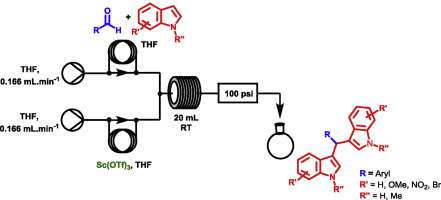 Read the publication that featured this abstract
Read the publication that featured this abstractFlow chemistry enables the preparation of bis(indolyl)methanes from various indoles and structurally divergent aldehydes using Sc(OTf)3 catalysis. The reaction is regioselective for C-3 functionalization of the indoles, occurring over short reaction times allowing for rapid investigation of scope with straightforward work up facilitating product isolation.
Continuous-flow synthesis of highly functionalized imidazo-oxadiazoles facilitated by microfluidic extraction
Ananda Herath, Nicholas D. P. Cosford
- Cancer Metabolism & Signaling Networks Program, Sanford Burnham Prebys Medical Discovery Institute, 10901 North Torrey Pines Road, La Jolla, California 92037, USA
Read the publication that featured this abstractA versatile continuous-flow synthesis of highly functionalized 1,2,4-oxadiazoles starting from carboxylic acids is reported. This process was applied to the multistep synthesis of imidazo[1,2-a]pyridin-2-yl-1,2,4-oxadiazoles, using a three reactor, multistep continuous-flow system without isolation of intermediates. This continuous-flow method was successfully combined with a single-step liquid–liquid microextraction unit to remove high boiling point polar solvents and impurities and provides the target compounds in high purity with excellent overall yields.
Preparation of Forced Gradient Copolymers Using Tube-in-Tube Continuous Flow Reactors
Simon Saubern, Xuan Nguyen, Van Nguyen, James Gardiner, John Tsanaktsidis, John Chiefari
- CSIRO Manufacturing, Clayton, VIC, Australia
Read the publication that featured this abstractThe preparation of forced gradient polymers has received considerable attention using batch reactors, while the preparation of usable quantities of forced gradient copolymers using continuous flow reactors has been hampered by the need to vary the composition of the monomer feedstock continuously during the reaction. A reactor that allows for addition of a monomer feedstock continuously at all points along the length of the reactor tubing allows for the preparation of forced gradient copolymers in continuous flow reactors, allowing for the scale-up and bulk preparation of these polymers. This study reports here the initial investigation of preparing forced gradient copolymers using the reversible addition–fragmentation chain transfer methodology in tube-in-tube continuous flow reactors.
A Continuous Flow Synthesis and Derivatization of 1,2,4-Thiadiazoles
- Marcus Baumann
- Ian R. Baxendale
- Department of Chemistry, University of Durham, South Road, DH1 3LE Durham, United Kingdom.
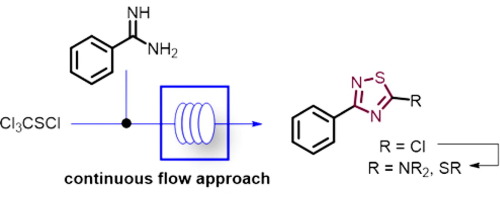 Read the publication that featured this abstract
Read the publication that featured this abstractA continuous flow process is presented that enables the efficient synthesis and derivatization of 1,2,4-thiadiazole heterocycles. Special attention was given to the safe handling of the versatile yet hazardous trichloromethane sulfenylchloride reagent including its in-line quenching in order to eliminate malodourous and corrosive by-products. Based on this flow method gram quantities of 5-chloro-3-phenyl-1,2,4-thiadiazole were safely prepared allowing for further elaboration of this valuable building block by reaction with different nitrogen-, sulfur- and oxygen-based nucleophiles. This synthetic approach was subsequently applied to generate a series of bromophenyl-5-chloro-1,2,4-thiadiazoles providing a valuable entry towards further structural diversification on this important heterocyclic scaffold.
Self-Optimisation and Model-Based Design of Experiments for Developing a C–H Activation Flow Process
Alexander Echtermeyer1,2, Yehia Amar2, Jacek Zakrzewski2, Alexei Lapkin2
- 1 Aachener Verfahrenstechnik – Process Systems Engineering, RWTH Aachen University, Aachen, Germany
- 2 Department of Chemical Engineering and Biotechnology, University of Cambridge, Cambridge, United Kingdom
Read the publication that featured this abstractA recently described C(sp3)–H activation reaction to synthesise aziridines was used as a model reaction to demonstrate the methodology of developing a process model using model-based design of experiments (MBDoE) and self-optimisation approaches in flow. The two approaches are compared in terms of experimental efficiency. The self-optimisation approach required the least number of experiments to reach the specified objectives of cost and product yield, whereas the MBDoE approach enabled a rapid generation of a process model.
Diels–Alder reactions of myrcene using intensified continuous-flow reactors
Christian H. Hornung, Miguel Á. Álvarez-Diéguez, Thomas M. Kohl and John Tsanaktsidis
- CSIRO Manufacturing, Bag 10, Clayton South, Victoria 3169, Australia
Read the publication that featured this abstractThis work describes the Diels–Alder reaction of the naturally occurring substituted butadiene, myrcene, with a range of different naturally occurring and synthetic dienophiles. The synthesis of the Diels–Alder adduct from myrcene and acrylic acid, containing surfactant properties, was scaled-up in a plate-type continuous-flow reactor with a volume of 105 mL to a throughput of 2.79 kg of the final product per day. This continuous-flow approach provides a facile alternative scale-up route to conventional batch processing, and it helps to intensify the synthesis protocol by applying higher reaction temperatures and shorter reaction times.
Active Site-Mapping of Xylan-Deconstructing Enzymes with Arabinoxylan Oligosaccharides Produced by Automated Glycan Assembly
Deborah Senf, Colin Ruprecht, Goswinus de Kruijff, Sebastian Simonetti, Frank Schuhmacher, Peter Seeberger, Fabian Pfrengle
- Max-Planck-Institute of Colloids and Interfaces, Biomolecular Systems, Potsdam, Germany
Read the publication that featured this abstractXylan-degrading enzymes are crucial for the deconstruction of hemicellulosic biomass, making the hydrolysis products available for various industrial applications such as biofuel production. To determine the substrate specificities of these enzymes, we prepared a collection of complex xylan oligosaccharides by automated glycan assembly. Seven differentially protected building blocks provided the basis for the modular assembly of 2-substituted, 3-substituted, and 2-/3-substituted arabino- and glucuronoxylan oligosaccharides. Elongation of the xylan backbone relied on iterative additions of C4-fluorenylmethoxylcarbonyl (Fmoc) protected xylose building blocks to a linker-functionalized resin. Arabinofuranose and glucuronic acid residues have been selectively attached to the backbone using fully orthogonal 2-(methyl)naphthyl (Nap) and 2-(azidomethyl)benzoyl (Azmb) protecting groups at the C2- and C3-hydroxyls of the xylose building blocks. The arabinoxylan oligosaccharides are excellent tools to map the active site of glycosyl hydrolases involved in xylan deconstruction. The substrate specificities of several xylanases and arabinofuranosidases were determined by analyzing the digestion products after incubation of the oligosaccharides with glycosyl hydrolases.
Mixed-Linkage Glucan Oligosaccharides Produced by Automated Glycan Assembly Serve as Tools to Determine the Substrate Specificity of Lichenase
Pietro Dallabernardina, Frank Schuhmacher, Peter H Seeberger, Fabian Pfrengle
- Max-Planck-Institute of Colloids and Interfaces, Biomolecular Systems, Potsdam, Germany
Read the publication that featured this abstractThe mixed-linkage (1→3),(1→4)-D-glucan (MLG) specific glycosyl hydrolase lichenase is an important biochemical tool for the structural characterization of MLGs. It holds potential for application in the brewery, animal feed, and biofuel industries. Several defined MLG oligosaccharides obtained by automated glycan assembly are used to analyze the substrate specificities of Bacillus subtilis lichenase. Two glucose building blocks (BBs), equipped with a temporary Fmoc protecting group in the C-3 or C-4 position, served to assemble different oligosaccharides using an automated oligosaccharide synthesizer. Light-induced cleavage of the glycan products from the solid support followed by global deprotection provided seven MLG oligosaccharides of different length and connectivity. After incubation of the MLG oligosaccharides with lichenase, the digestion products were analyzed by HPLC-MS. These digestion experiments provided insights into the enzyme’s active site that is in line with other recent evidence suggesting that the substrate specificity of lichenases has to be reconsidered. These results demonstrate that synthetic MLG oligosaccharides are useful tools to analyse mixed-linkage β-glucanases.
Improving the throughput of batch photochemical reactions using flow: Dual photoredox and nickel catalysis in flow for C(sp2) C(sp3) cross-coupling
- Irini Abdiaj, Jesús Alcázar
- Janssen Research and Development, Janssen-Cilag, S.A., C/Jarama 75, 45007 Toledo, Spain
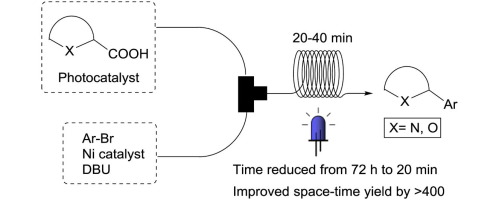 Read the publication that featured this abstract
Read the publication that featured this abstractWe report herein the transfer of dual photoredox and nickel catalysis for C(sp2)single bondC(sp3) cross coupling form batch to flow. This new procedure clearly improves the scalability of the previous batch reaction by the reactor’s size and operating time reduction, and allows the preparation of interesting compounds for drug discovery in multigram amounts.
Synthesis of Cycloalkyl Substituted 7-Azaindoles via Photoredox Nickel Dual Catalytic Cross-Coupling in Batch and Continuous Flow
- Natalie Palaychuk, Travis J. DeLano, Michael J. Boyd, Jeremy Green, and Upul K. Bandarage
- Vertex Pharmaceuticals Incorporated, 50 Northern Avenue, Boston, Massachusetts 02210, United States
 Read the publication that featured this abstract
Read the publication that featured this abstractAn efficient photoredox/Ni dual catalytic Csp2–Csp3 cross-coupling protocol in a continuous-flow regime to synthesize a variety of regioisomeric cycloalkyl substituted 7-azaindoles has been developed. These transformations proceed efficiently under mild conditions (blue LED light irradiation at 30 °C over 40 min residence time in mixed solvent systems). Reactions are easy to perform and afford most of the desired 2-, 3-, 4-, 5-, and 6-cycloalkyl substituted 7-azaindoles in moderate-to-good yield.
Acridinium-Based Photocatalysts: A Sustainable Option in Photoredox Catalysis
- Amruta Joshi-Pangu†
- François Lévesque†
- Hudson G. Roth‡
- Steven F. Oliver†
- Louis-Charles Campeau†
- David Nicewicz‡
- Daniel A. DiRocco†
- † Process Research & Development, Merck Research Laboratories, P.O. Box 2000, Rahway, New Jersey 07065, United States
- ‡ Department of Chemistry, University of North Carolina at Chapel Hill, Chapel Hill, North Carolina 27599-3290, United States
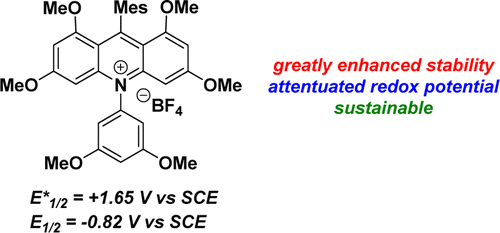 Read the publication that featured this abstract
Read the publication that featured this abstractThe emergence of visible light photoredox catalysis has enabled the productive use of lower energy radiation, leading to highly selective reaction platforms. Polypyridyl complexes of iridium and ruthenium have served as popular photocatalysts in recent years due to their long excited state lifetimes and useful redox windows, leading to the development of diverse photoredox-catalyzed transformations. The low abundances of Ir and Ru in the earth’s crust and, hence, cost make these catalysts nonsustainable and have limited their application in industrial-scale manufacturing. Herein, we report a series of novel acridinium salts as alternatives to iridium photoredox catalysts and show their comparability to the ubiquitous [Ir(dF-CF3-ppy)2(dtbpy)](PF6).
Halogenation of organic compounds using continuous flow and microreactor technology
- David Cantilloab
- C. Oliver Kappe*ab
- a Institute of Chemistry, University of Graz, NAWI Graz, Heinrichstrasse 28, Graz, Austria
- b Research Center Pharmaceutical Engineering GmbH (RCPE), Inffeldgasse 13, 8010 Graz, Austria
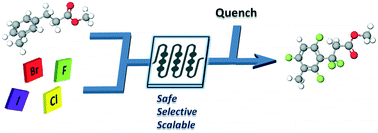 Read the publication that featured this abstract
Read the publication that featured this abstractThe halogenation of organic substrates is one the most important transformations in organic synthesis. The most straightforward, inexpensive and atom economic halogenations involve the use of elemental halogens (X2) or hydrogen halides (HX). However, X2 and HX reagents are highly reactive, toxic and corrosive materials. Halogenations using these reagents are usually very fast and exothermic reactions, in which selectivity issues occur. Using continuous flow chemistry halogenations involving X2 and HX can be performed in a safe and controllable manner. Reagents can be accurately dosed even for gas/liquid reactions, and exotherms are easily controlled. Hazardous chemicals can be readily quenched in line avoiding any undesired exposures and significantly enhancing the process safety.
Application of the Photoredox Coupling of Trifluoroborates and Aryl Bromides to Analog Generation Using Continuous Flow
- Travis J. DeLano, Upul K. Bandarage, Natalie Palaychuk, Jeremy Green, and Michael J. Boyd
- Vertex Pharmaceuticals Incorporated, 50 Northern Avenue, Boston, Massachusetts 02210, United States
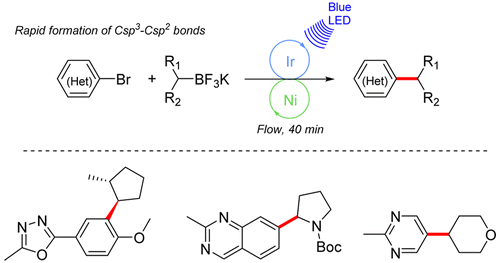 Read the publication that featured this abstract
Read the publication that featured this abstractA method for the coupling of aryl bromides with potassium alkyl trifluoroborates, via nickel/photoredox dual catalysis, has been developed for use in continuous flow. This operationally simple protocol is able to form Csp3–Csp2 bonds with significantly reduced reaction times and a broader substrate scope than when conducted in batch. The utility of this method for rapid analog synthesis has been demonstrated by the synthesis of a small library of alkyl-substituted quinazolines.
Design and Development of Pd-catalyzed Aerobic N-Demethylation Strategies for the Synthesis of Noroxymorphone in Continuous Flow Mode
Bernhard Gutmanna,b, David Cantilloa,b, Ulrich Weiglc, D Phillip Coxd, C. Oliver Kappea,b
- a,b Institute of Chemistry, University of Graz, Nawi Graz, Heinrichstrasse 28, 8010 Graz, Austria and Research Center Pharmaceutical Engineering (RCPE), Inffeldgasse 13, 8010 Graz, Austria
- c Cilag AG, Hochstrasse 201, 8200 Schaffhausen, Switzerland
- d Noramco Inc., 503 Carr Road, Suite 200, Wilmington, DE 19809, USA
Read the publication that featured this abstractStrategies for the generation of noroxymorphone from 14-hydroxymorphinone are presented. Noroxymorphone is the key intermediate in the synthesis of various opioid antagonists, including naloxone, naltrexone and nalmefene, as well as mixed agonists-antagonists like nalbuphine. The transformation requires removal of the N-methyl group from the naturally occurring opiates and a double bond hydrogenation. The pivotal reaction step thereby is a N-methyl oxidation with colloidal palladium(0) as catalyst and pure oxygen as terminal oxidant. The reaction produces a 1,3-oxazolidine intermediate, which can be readily hydrolyzed to the corresponding secondary amine. Different reaction sequences and various phenol protection groups were explored. The most direct route consumes only H2, O2 and H2O as stoichiometric reagents and produces only H2O as by-product. Challenges inherent in gas-liquid reactions with oxygen as oxidant were addressed by developing a continuous flow process.
γ-Glutamyl-dipeptides: Easy tools to rapidly probe the stereoelectronic properties of the ionotropic glutamate receptor binding pocket
- Lucia Tamborinia
- Veronica Nicosiaa
- Paola Contia
- Federica Dall'Oglioa
- Carlo De Michelia
- Birgitte Nielsenb
- Anders A. Jensenb
- Darryl S. Pickeringb
- Andrea Pintoa
- a Department of Pharmaceutical Sciences (DISFARM), University of Milan, Via Mangiagalli 25, 20133 Milan, Italy
- b Department of Drug Design and Pharmacology, Faculty of Health and Medical Sciences, University of Copenhagen, Universitetsparken 2, 2100 Copenhagen OE, Denmark
 Read the publication that featured this abstract
Read the publication that featured this abstractγ-Glutamyl-dipeptides, built by condensing the distal carboxylate of l-Glu (or d-Glu) onto a series of differently functionalized amino acids, were prepared and used as tools for rapidly probing the stereo-electronic properties of iGluRs, searching for subtype-selective ligands.
Expedited access to thieno[3,2-c]quinolin-4(5H)-ones and benzo[h]-1,6-naphthyridin-5(6H)-ones via a continuous flow photocyclization method
- Y. Fanga
- G. K. Tranmer*ab
- * Corresponding author
- a College of Pharmacy, Faculty of Health Science, University of Manitoba, Winnipeg, Canada
- b Department of Chemistry, Faculty of Science, University of Manitoba, Winnipeg, Canada
 Read the publication that featured this abstract
Read the publication that featured this abstractA single-step continuous flow method has been developed that gives expedited access to complex heterocycles via an intramolecular photochemical cyclization. Herein we report the first examples of the photochemically-induced generation of thieno[3,2-c]quinolin-4(5H)-ones, 16 examples, and benzo[h]-1,6-naphthyridin-5(6H)-ones, 6 examples. Overall, the continuous flow method provides access to complex heterocycles in two steps from commercially available starting materials in good yields and with greater atom efficiency than traditional batch reactions.
A benchtop NMR spectrometer as a tool for monitoring mesoscale continuous-flow organic synthesis: equipment interface and assessment in four organic transformations
- Cynthia M. Archambaulta
- Nicholas E. Leadbeater*a
- * Corresponding author
- a Department of Chemistry, University of Connecticut, 55 North Eagleville Road, Storrs, USA
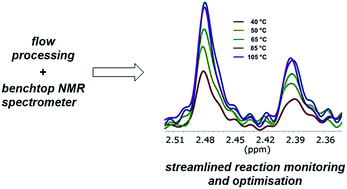 Read the publication that featured this abstract
Read the publication that featured this abstractAn approach is reported for monitoring continuous-flow reactions by means of a low-field benchtop NMR spectrometer. The spectrometer is interfaced with a mesofluidic reactor and used as a tool for optimising four organic transformations, namely an acid-catalysed esterification, a Knoevenagel condensation, a Diels–Alder reaction, and an alkylation. Reactions need to be performed either solvent-free or at relatively high concentration in order to monitor them effectively using the NMR spectrometer, but this allows for the leveraging of one of the key advantages of flow processing, namely process intensification.
BODIPY-based conjugated microporous polymers as reusable heterogeneous photosensitisers in a photochemical flow reactor
- J. M. Tobina
- J. Liub
- H. Hayesa
- M. Demleitnera
- D. Ellisa
- V. Arrighia
- Z. Xu*b
- F. Vilela*a
- * Corresponding author
- a School of Engineering and Physical Sciences, Heriot-Watt University, Edinburgh, UK
- b Department of Biology and Chemistry, City University of Hong Kong, 83 Tat Chee Avenue, Kowloon, China
 Read the publication that featured this abstract
Read the publication that featured this abstractBODIPY-based conjugated microporous polymers (BDP_CMP and PHTT_BDP) have been synthesised via two distinct methods of assembly: high-yielding Suzuki–Miyaura cross-coupling of BODIPY-containing building blocks, and post-synthetic conversion of an aldehyde-equipped CMP host that was synthesised in the absence of metal-based catalysts. Both approaches yielded BODIPY-based materials featuring a high BET surface area (484–769 m2 g−1) and a bathochromic shift in the maximum light absorbance (520–550 nm). Singlet oxygen production employing the BODIPY-based materials at 530 nm was carried out heterogeneously in a commercial photochemical flow reactor.
Reformatsky and Blaise reactions in flow as a tool for drug discovery. One pot diversity oriented synthesis of valuable intermediates and heterocycles
- L. Hucka,b
- M. Bertona
- A. de la Hozb
- A. Díaz-Ortizb
- J. Alcázar*a
- * Corresponding author
- a Janssen Research and Development, Janssen-Cilag, S.A., C/ Jarama 75, Toledo, Spain
- b Facultad de Ciencias Químicas, Universidad de Castilla-La Mancha, Ciudad Real, Spain
 Read the publication that featured this abstract
Read the publication that featured this abstractThe application of Reformatsky and Blaise reactions for the preparation of a diverse set of valuable intermediates and heterocycles in a one-pot protocol is described. To achieve this goal, a greener activation protocol for zinc in flow conditions has been developed to introduce this metal efficiently into α-bromoacetates. The organozinc compounds were added to a diverse set of ketones and nitriles to obtain a wide range of functional groups and heterocyclic systems.
Visible light activation of Boronic Esters enables efficient photoredox C(sp2)–C(sp3) cross-couplings in flow
Fabio Limaa, Dr. Mikhail A. Kabeshova, Dr. Duc N. Trana, Dr. Claudio Battilocchioa, Dr. Joerg Sedelmeierb, Dr. Gottfried Sedelmeierb, Dr. Berthold Schenkelb, S. V. Ley*a
- * Corresponding author
- a Department of Chemistry, University of Cambridge, Cambridge, UK
- b Novartis Pharma AG, Basel, Switzerland
Read the publication that featured this abstractWe report herein a new method for the photoredox activation of boronic esters. Using these reagents, an efficient and high-throughput continuous flow process was developed to perform a dual iridium- and nickel-catalyzed C(sp2)–C(sp3) coupling by circumventing solubility issues associated with potassium trifluoroborate salts. Formation of an adduct with a pyridine-derived Lewis base was found to be essential for the photoredox activation of the boronic esters. Based on these results we were able to develop a further simplified visible light mediated C(sp2)–C(sp3) coupling method using boronic esters and cyano heteroarenes under flow conditions.
Engineering chemistry: integrating batch and flow reactions on a single, automated reactor platform
- D. E. Fitzpatricka
- S. V. Ley*a
- * Corresponding author
- a Department of Chemistry, University of Cambridge, Lensfield Road, Cambridge CB2 1EW, UK
 Read the publication that featured this abstract
Read the publication that featured this abstractSynthesis chemistry need not be limited to either only batch or only flow; rather, in the future we expect that it will consist of an amalgamation of the best and most appropriate methods. We have therefore devised a single reactor platform to conduct both batch and flow reactions, either singly or in concert, using open source technologies to automate, control and monitor individual processes. We illustrate this concept with the multistep synthesis of 5-methyl-4-propylthiophene-2-carboxylic acid to showcase the utility of this approach in a telescoped manner. Automated downstream processing techniques, consisting of continuous extraction and solvent switching steps, were also included, further freeing the chemist from routine laboratory tasks.
Triphenylphosphine-grafted, RAFT-synthesised, porous monoliths as catalysts for Michael addition in flow synthesis
Kristine J. Barlowa, Victor Bernabeua, Xiaojuan Haoa, Timothy C. Hughesa, Oliver E. Hutta, Anastasios Polyzosa,b, Kathleen A. Turnera, Graeme Moada
- a CSIRO Manufacturing Flagship, Bag 10, Clayton South, Victoria 3169, Australia
- b University of Melbourne, School of Chemistry, Parkville, Victoria 3010, Australia
Read the publication that featured this abstractWe describe the preparation and application of triphenylphosphine functional polystyrene-based porous monolithic catalysts for use as flow reactors. RAFT (reversible addition-fragmentation chain transfer)-crosslinking polymerisation of styrene and divinylbenzene provided monoliths which were then functionalized by RAFT “grafting from” polymerisation of 4-styryldiphenylphosphine mediated by the retained thiocarbonylthio functionality. Under the chosen conditions, the retention of the RAFT functionality was proved by chain extension experiments in which the monoliths were five times re-subjected to the grafting conditions. Importantly, the bound triphenylphosphine-functionality was demonstrated to be catalytically active when the monoliths were used as flow reactors in performing Michael addition of 1-hexanethiol to tert-butyl acrylate and of acetyl acetone to diethyl azodicarboxylate. Conversions from reagent to product of up to 77% were achieved. The monoliths were susceptible to oxidation of the phosphine groups most likely caused by adventitious oxygen in the non-degassed reaction medium, but were successfully regenerated by trichlorosilane reduction and reused.
Ethyl Lithiodiazoacetate: Extremely unstable intermediate handled efficiently in flow
Simon T. R. Müllera, Tobias Hokampa, Svenja Ehrmanna, Paul Hellierb, Thomas Wirtha
- a Cardiff University School of Chemistry Cardiff UK
- b Parc Industriel de la Chartreuse Pierre Fabre Médicament Castres CEDEX France
Read the publication that featured this abstractEthyl diazoacetate(EDA) is one of the most prominent diazo reagents. It is frequently used in metal–carbene-type reactions. However, EDA can also be used as a nucleophile under base catalysis. Whilst the addition of EDA to aldehydes can be performed using organic bases, the addition of EDA to other carbonyl electrophiles requires the use of organometallics such as lithium diisopro-pylamide (LDA). The generated ethyl lithiodiazoacetate is highly reactive and decomposes rapidly, even at low temperatures. Herein, we report a continuous flow protocol that overcomes the problems associated with the instantaneous decomposition of ethyl lithiodiazoacetate. The addition of ethyl lithiodiazoacetate to ketones provides direct access to tertiary diazoalcohols in good yields.
A facile hybrid ‘flow and batch’ access to substituted 3,4-dihydro-2H-benzo[b][1,4]oxazinones
- Andrew J. S. Lina
- Cecilia C. Russella
- Jennifer R. Bakera
- Shelby L. Fraileyab
- Jennette A. Sakoffc
- Adam McCluskey*a
- * Corresponding authors
- a Chemistry, Centre for Chemical Biology, School of Environmental & Life Sciences, University of Newcastle, University Drive, Callaghan, Australia
- b Chemical Engineering, Trine University, Angola, 46703 USA
- c Department of Medical Oncology, Calvary Mater Newcastle Hospital, Waratah, Australia
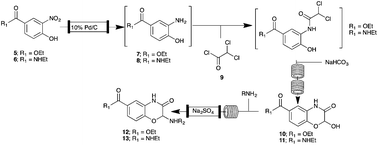 Read the publication that featured this abstract
Read the publication that featured this abstractWe describe a simple flow chemistry approach to libraries of ethyl 3-oxo-2-(substituted-phenylamino)-3,4-dihydro-2H-benzo[b][1,4]oxazine-6-carboxylates (12a–l) and N-ethyl-3-oxo-2-(substituted-phenylamino)-3,4-dihydro-2H-benzo[b][1,4]oxazine-6-carboxamides (13a–l) in 38–87% yields. This scaffold is poorly described in the chemical literature. Screening against a panel of 11 cancer and one normal cell line showed that the amide linked library 13a–l was devoid of toxicity. Whereas the ester linked analogues 12b, 12c, 12g, 12j and 12l were highly cytotoxic with growth inhibition (GI50) values from 0.34 to >50 μM across all cell lines, with the 2-OH-Ph substituted 12l analogue presenting with sub-micromolar potency against the A2780 (ovarian; 0.34 ± 0.04 μM), BEC-2 (glioblastoma; 0.35 ± 0.06 μM), MIA (pancreas; 0.91 ± 0.054 μM) and SMA (murine glioblastoma; 0.77 ± 0.029 μM) carcinoma cell lines. Interestingly, the U87 glioblastoma cell line showed inherent resistance to growth inhibition by all analogues (GI50 32 to >50 μM) while the A2780 cells were highly sensitive (GI50 3.8–0.34 μM), suggesting that the analogues developed herein may be valuable lead compounds for the development of ovarian carcinoma specific cytotoxic agents. The differences in amide versus ester cytotoxicity was consitent with esterase cleaveage to release the cytotoxic warhead.
Continuous flow biocatalysis: production and in-line purification of amines by immobilised transaminase from Halomonas elongata
- Matteo Planchestainera
- Martina Letizia Contenteab
- Jennifer Cassidya
- Francesco Molinarib
- Lucia Tamborini*c
- Francesca Paradisi*ad
- * Corresponding authors
- a UCD School of Chemistry, University College Dublin, Belfield, Dublin 4, Ireland
- b Department of Food, Environmental and Nutritional Sciences (DeFENS), Università degli studi di Milano, Via Mangiagalli 25, Milan, Italy
- c Department of Pharmaceutical Sciences (DISFARM), Università degli studi di Milano, Via Mangiagalli 25, Milan, Italy
- d School of Chemistry, University of Nottingham, University Park, Nottingham, UK
 Read the publication that featured this abstract
Read the publication that featured this abstractThe continuous flow synthesis of a series of amines was successfully achieved by exploiting the enhanced stability and broad substrate scope of an immobilised transaminase from Halomonas elongata (HEWT). A series of substrates were tested in flow reactors and transformed into the corresponding amines in good to excellent yields. The process was implemented with an integrated in-line purification step for the recovery of the pure amines.
Method and device for the synthesis of artemisinin
Inventors:, Peter H. Seeberger, Daniel Kopetzki, Francois Lévesque
- Assignee:
- Max-Planck-Gesellschaft zur Forderung der Wissenschaften
Read the publication that featured this abstractThe present invention is directed to a method for producing artemisinin having the formula
from dihydroartemisinic acid in a continuous flow reactor using singlet oxygen as well as to the continuous flow reactor for producing artemisinin.
A laboratory-scale continuous flow chlorine generator for organic synthesis
- Franz J. Straussa
- David Cantillo*ab
- Javier Guerrac
- C. Oliver Kappe*ab
- * Institute of Chemistry, University of Graz, NAWI Graz, Heinrichstrasse 28, Graz, Austria
- a Research Center Pharmaceutical Engineering GmbH (RCPE), Inffeldgasse 13, 8010 Graz, Austria
- b Crystal Pharma, Gadea Pharmaceutical Group, A Division of AMRI, Parque Tecnológico de Boecillo, Valladolid, Spain
 Read the publication that featured this abstract
Read the publication that featured this abstractA simple continuous flow setup for the generation and use of elemental chlorine for organic synthesis has been developed. The chlorine generator is based on the reaction of HCl with NaOCl, generating NaCl and H2O as the only side products. As a proof-of-concept, the reactor has been applied for a variety of chlorinations and oxidations of organic compounds.
Continuous processing and efficient in situ reaction monitoring of a hypervalent iodine (III) mediated cyclopropanation using benchtop NMR spectroscopy
- Batool Ahmed-Omera
- Eric Sliwinskia
- John Paul Cerrotib
- Steven V Leya
- aDepartment of chemistry, University of Cambridge, Lensfield Road, Cambridge CB2 1EW, UK
- bMagritek GmbH, Gebäude VO (Building VO), Triwo Technopark Aachen, Philipsstrasse 8, 52068 Aachen, Germany
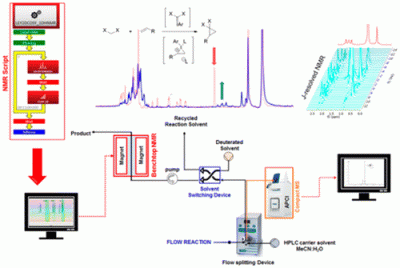 Read the publication that featured this abstract
Read the publication that featured this abstractReal-time NMR spectroscopy has proven to be a rapid and an effective monitoring tool to study the hypervalent iodine (III) mediated cyclopropanation. With the ever increasing number of new synthetic methods for carbon-carbon bond formation, the NMR in situ monitoring of reactions is becoming a highly desirable enabling method. In this study, we have demonstrated the versatility of benchtop NMR using inline and online real-time monitoring methods to access mutually complementary information for process understanding, and developed new approaches for real-time monitoring addressing challenges associated with better integration into continuous processes.
Aryl amination using ligand-free Ni(II) salts and photoredox catalysis
- Emily B. Corcoran1
- Michael T. Pirnot2
- Shishi Lin3
- Spencer D. Dreher3
- Daniel A. DiRocco3
- Ian W. Davies3
- Stephen L. Buchwald2,*
- David W. C. MacMillan1,*
- 1 Merck Center for Catalysis at Princeton University, Princeton, NJ 08544, USA
- 2 Department of Chemistry, Massachusetts Institute of Technology, Cambridge, MA 02139, USA
- 3 Department of Process Chemistry, Merck Research Laboratories, Rahway, NJ 07065, USA
 Read the publication that featured this abstract
Read the publication that featured this abstractOver the past two decades, there have been major developments in transition metal–catalyzed aminations of aryl halides to form anilines, a common structure found in drug agents, natural product isolates, and fine chemicals. Many of these approaches have enabled highly efficient and selective coupling through the design of specialized ligands, which facilitate reductive elimination from a destabilized metal center. We postulated that a general and complementary method for carbon–nitrogen bond formation could be developed through the destabilization of a metal amido complex via photoredox catalysis, thus providing an alternative approach to the use of structurally complex ligand systems. Here, we report the development of a distinct mechanistic paradigm for aryl amination using ligand-free nickel(II) salts, in which facile reductive elimination from the nickel metal center is induced via a photoredox-catalyzed electron-transfer event.
Catalytic Chan–Lam coupling using a ‘tube-in-tube’ reactor to deliver molecular oxygen as an oxidant
Carl J. Mallia1, Paul M. Burton2, Alexander M. R. Smith2, Gary C. Walter2, Ian R. Baxendale1
- 1 Department of Chemistry, Durham University, South Road, Durham, DH1 3LE, United Kingdom
- 2 Syngenta CP R&D Chemistry, Jealott’s Hill International Research Centre, Bracknell, Berkshire, RG42 6EY, United Kingdom
Read the publication that featured this abstractA flow system to perform Chan–Lam coupling reactions of various amines and arylboronic acids has been realised employing molecular oxygen as an oxidant for the re-oxidation of the copper catalyst enabling a catalytic process. A tube-in-tube gas reactor has been used to simplify the delivery of the oxygen accelerating the optimisation phase and allowing easy access to elevated pressures. A small exemplification library of heteroaromatic products has been prepared and the process has been shown to be robust over extended reaction times.
An approach to the synthesis of 4-aryl and 5-aryl substituted thiazole-2(3H)-thiones employing flow processing
- Monaem Baltia
- Shelli A. Millerb
- Mohamed Lotfi Efrita
- Nicholas E. Leadbeater*b
- * Corresponding authors
- a Université Tunis El Manar, Laboratory of Organic Synthesis and Heterocyclic Chemistry, Faculty of Science of Tunis, Department of Chemistry, 1060 Tunis, Tunisia
- b Department of Chemistry, University of Connecticut, 55 North Eagleville Road, Storrs, USA
 Read the publication that featured this abstract
Read the publication that featured this abstractA method for the preparation of 4-aryl and 5-aryl substituted thiazole-2(3H)-thiones is described. Flow processing is employed as a tool, and supported acids and bases used to facilitate both the synthetic strategy and product isolation. The methodology is applicable to a range of substrates.
Flow carbonylation of sterically hindered ortho-subsituted iodoarenes
Carl J. Mallia1, Gary C. Walter2, Ian R. Baxendale1
- 1 Department of Chemistry, Durham University, South Road, Durham, DH1 3LE, United Kingdom
- 2 Syngenta CP R&D Chemistry, Jealott’s Hill International Research Centre, Bracknell, Berkshire, RG42 6EY, United Kingdom
Read the publication that featured this abstractThe flow synthesis of ortho-substituted carboxylic acids, using carbon monoxide gas, has been studied for a number of substrates. The optimised conditions make use of a simple catalyst system compromising of triphenylphosphine as the ligand and palladium acetate as the pre-catalyst. Carbon monoxide was introduced via a reverse “tube-in-tube” flow reactor at elevated pressures to give yields of carboxylated products that are much higher than those obtained under normal batch conditions.
Exploring flow procedures for diazonium formation
Te Hu, Ian R. Baxendale and Marcus Baumann
- Department of Chemistry, University of Durham, South Road, Durham DH1 3LE, UK
Read the publication that featured this abstractThe synthesis of diazonium salts is historically an important transformation extensively utilized in dye manufacture. However the highly reactive nature of the diazonium functionality has additionally led to the development of many new reactions including several carbon-carbon bond forming processes. It is therefore highly desirable to determine optimum conditions for the formation of diazonium compounds utilizing the latest processing tools such as flow chemistry to take advantage of the increased safety and continuous manufacturing capabilities. Herein we report a series of flow-based procedures to prepare diazonium salts for subsequent in-situ consumption.
Catalytic macrocyclization strategies using continuous flow: formal total synthesis of ivorenolide A
- Mylène de Léséleuc, Eric Godin, Shawn Parisien-Collette, Alexandre Levesque, and Shawn K. Collins
- University of Montréal, Department of Chemistry, Montréal, Canada
 Read the publication that featured this abstract
Read the publication that featured this abstractA formal total synthesis of ivorenolide A has been accomplished employing a Z-selective olefin cross metathesis and a macrocyclic Glaser-Hay coupling as key steps. The macrocyclization protocol employed a phase separation/continuous flow manifold whose advantages include catalysis, fast reaction times, high concentrations and facile scale-up.
Delivering enhanced efficiency in the synthesis of α-diazosulfoxides by exploiting the process control enabled in flow
Patrick G. McCaw1, Benjamin J. Deadman1, Anita R. Maguire1,2, Stuart G. Collins1
- 1 Department of Chemistry, Analytical and Biological Chemistry Research Facility, Synthesis and Solid State Pharmaceutical Centre, University College Cork, Cork, Ireland
- 2 Department of Chemistry and School of Pharmacy, Analytical and Biological Chemistry Research Facility, Synthesis and Solid State Pharmaceutical Centre, University College Cork, Cork, Ireland
Read the publication that featured this abstractContinuous-flow generation of α-diazosulfoxides results in a two- to three-fold increase in yields and decreased reaction times compared to standard batch synthesis methods. These high yielding reactions are enabled by flowing through a bed of polystyrene-supported base (PS-DBU or PS-NMe2) with highly controlled residence times. This engineered solution allows the α-diazosulfoxides to be rapidly synthesized while limiting exposure of the products to basic reaction conditions, which have been found to cause rapid decomposition. In addition to improved yields, this work has the added advantage of ease of processing, increased safety profile, and scale-up potential.
The generation of a library of bromodomain-containing protein modulators expedited by continuous flow synthesis
Paolo Filipponi and Ian R. Baxendale*
- * Department of Chemistry, University of Durham South Road, Durham, DH1 3LE, United Kingdom
Read the publication that featured this abstractA continuous flow process delivering key building blocks for a series of BCP modulator libraries is reported. A dynamically mixed flow reactor emerged as a pivotal technology in both synthesis and isolation phases enabling the processing of slurries and suspensions while maintaining high productivity and reliability. Accordingly, the synthesis of common intermediates in flow were employed to further build a pyridazone-based library (36 compounds) aimed at improving lead compound potency and selectivity while further enabling structure-activity relationship studies of a new BCP modulator family.
An efficient etherification of Ginkgol biloba extracts with fewer side effects in a micro-flow system
- Yin-Lin Qina
- Wei Hea
- Mei Sub
- Zheng Fangc
- Ping-Kai Ouyanga
- Kai Guoa,d
- a College of Biotechnology and Pharmaceutical Engineering, Nanjing Technology University, Nanjing 210009, China
- b Jiangsu Carephar Pharmaceutical Co., Ltd., Nanjing 210014, China
- c School of Pharmaceutical, Nanjing Technology University, Nanjing 210009, China
- d State Key Laboratory of Materials-Oriented Chemical Engineering, Nanjing Technology University, Nanjing 211816, China
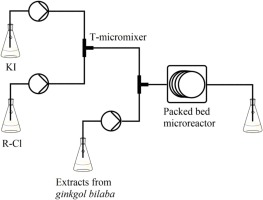 Read the publication that featured this abstract
Read the publication that featured this abstractIn this study, etherification of ginkgolide B and dimethylaminoethyl chloride hydrochloride was investigated as a model reaction in a micro-flow system (MFS), providing the resulting ethers in high yield with fewer side effects. Meanwhile, this novel process in MFS worked well for other ginkgolides from Ginkgol biloba and halides, giving moderate yields.
Continuous-flow synthesis and derivatization of aziridines through palladium-catalyzed C(sp3)−H activation
Jacek Zakrzewski1, Adam P. Smalley2, Dr. Mikhail A. Kabeshov2, Prof. Matthew J. Gaunt2, Prof. Alexei A. Lapkin1
- 1 Department of Chemical Engineering and Biotechnology, University of Cambridge, Cambridge, UK
- 2 Chemistry Department, University of Cambridge, Cambridge, UK
Read the publication that featured this abstractA continuous-flow synthesis of aziridines by palladium-catalyzed C(sp3)-H activation is described. The new flow reaction could be combined with an aziridine-ring-opening reaction to give highly functionalized aliphaticamines through a consecutive process. A predictive mechanistic model was developed and used to design the C-H activation flow process and illustrates an approach towards first-principles design based on novel catalytic reactions.
Metal-free borylation of electron-rich aryl(pseudo)halides under continuous-flow photolytic conditions
- Kai Chena
- Man Sing Cheungb
- Zhenyang Lin*b
- Pengfei Li*a
- a Center for Organic Chemistry, Frontier Institute of Science and Technology (FIST) and Frontier Institute of Chemistry, Xi'an Jiaotong University, 99 Yanxiang Road, Xi'an, China
- b Department of Chemistry, The Hong Kong University of Science and Technology, Clear Water Bay, Kowloon, China
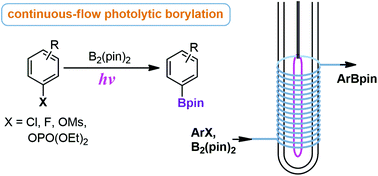 Read the publication that featured this abstract
Read the publication that featured this abstractA metal-free borylation reaction of electron-rich aryl chlorides, fluorides, mesylates and phosphates under continuous-flow photolytic conditions is reported. The flow setup was designed to facilitate this process efficiently in comparison with the batch mode. Owing to its unique chemical selectivity, mild reaction conditions, good functional group tolerance and substrate scope, this reaction adds a complementary protocol to the current synthetic methods for boronic acid derivatives. The proposed reaction mechanism involves a photolytically generated triplet aryl cation, and DFT calculations suggest that the borylation product is formed in an anion-mediated single step process passing a minimum energy crossing point.
Difluorocarbene addition to alkenes and alkynes in continuous flow
- Pauline Rullière
- Patrick Cyr
- André B. Charette*
- Université de Montréal, Centre in Green Chemistry and Catalysis, Department of Chemistry, Faculty of Arts and Science, P.O. Box 6128, Station Downtown, Québec, Canada H3C 3J7
 Read the publication that featured this abstract
Read the publication that featured this abstractThe first in-flow difluorocarbene generation and addition to alkenes and alkynes is reported. The application of continuous flow technology allowed for the controlled generation of difluorocarbene from TMSCF3 and a catalytic quantity of NaI. The in situ generated electrophilic carbene reacts smoothly with a broad range of alkenes and alkynes, allowing the synthesis of the corresponding difluorocyclopropanes and difluorocyclopropenes. The reaction is complete within a 10 min residence time at high reaction concentrations. With a production flow rate of 1 mmol/min, continuous flow chemistry enables scale up of this process in a green, atom-economic, and safe manner.
A simple setup for transfer hydrogenations in flow chemistry
- Matthew Hutchings
- Thomas Wirth*
- School of Chemistry, Cardiff University, Cardiff CF10 3AT, UK
 Read the publication that featured this abstract
Read the publication that featured this abstractBy using a packed-bed reactor with a palladium charcoal catalyst and ammonium formate or triethylsilane as hydrogen/hydride source, various functional groups including nitro groups, azides and alkenes can be efficiently reduced by a transfer hydrogenation process under mild conditions in a simple flow system.
A scalable and operationally simple radical trifluoromethylation
- Joel W. Beatty1
- James J. Douglas1,2
- Kevin P. Cole2
- Corey R. J. Stephenson1
- 1 Department of Chemistry, University of Michigan, Ann Arbor, Michigan 48109, USA
- 2 Small Molecule Design and Development, Lilly Research Laboratoires, Eli Lilly and Company, Indianapolis, Indiana 46285, USA
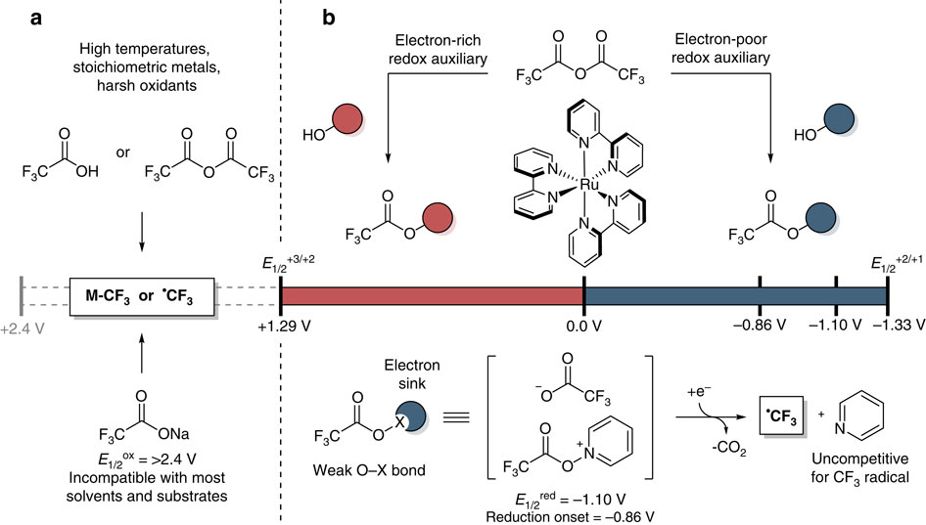 Read the publication that featured this abstract
Read the publication that featured this abstractThe large number of reagents that have been developed for the synthesis of trifluoromethylated compounds is a testament to the importance of the CF3 group as well as the associated synthetic challenge. Current state-of-the-art reagents for appending the CF3 functionality directly are highly effective; however, their use on preparative scale has minimal precedent because they require multistep synthesis for their preparation, and/or are prohibitively expensive for large-scale application. For a scalable trifluoromethylation methodology, trifluoroacetic acid and its anhydride represent an attractive solution in terms of cost and availability; however, because of the exceedingly high oxidation potential of trifluoroacetate, previous endeavours to use this material as a CF3 source have required the use of highly forcing conditions. Here we report a strategy for the use of trifluoroacetic anhydride for a scalable and operationally simple trifluoromethylation reaction using pyridine N-oxide and photoredox catalysis to affect a facile decarboxylation to the CF3 radical., USA
Photoactive and metal-free polyamide-based polymers for water and wastewater treatment under visible light irradiation
- Junjie Shena
- Roman Steinbacha
- John Tobina
- Mayumi Mouro Nakataa
- Matthew Bowerb
- Martin McCoustraa
- Helen Bridlea
- Valeria Arrighia
- Filipe Vilelaa
- a School of Engineering and Physical Sciences, Heriot-Watt University, Edinburgh, EH14 4AS, United Kingdom
- b Drinking Water Quality Regulator for Scotland, Edinburgh, EH6 6WW, United Kingdom
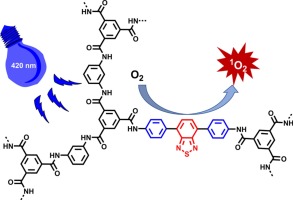 Read the publication that featured this abstract
Read the publication that featured this abstractA photoactive benzothiadiazole (BT) based monomer was developed and used in the synthesis of typical polyamide (PA) polymers. The monomer was incorporated in different percentages within the PA backbone of the polymers and their photosensitising ability was tested in different media and conditions. Photochemical experiments in a commercial flow reactor under aerobic conditions showed that the polymers had increased efficiency in singlet oxygen generation compared to the original photoactive monomer. When suspended in aqueous solutions, these materials demonstrated superior photostability towards long-term exposure to light and chemical stability in a wide-range of pH environments. The photoactive polymers were highly capable of degrading two well-known wastewater contaminants, bisphenol A (BPA) and cimetidine, as well as inactivating the waterborne parasite Cryptosporidium. Given the simplicity of the synthetic preparation of the polymers, the absence of metals and their photoactivity under visible light, herein we show that these materials are very promising for simultaneous decontamination and disinfection of water.
Biodiesel synthesis using integrated acid and base catalysis in continuous flow
- Mousa Asadia
- Joel F. Hoopera
- David W. Luptona
- aSchool of Chemistry, Monash University, Clayton 3800, Victoria, Australia
 Read the publication that featured this abstract
Read the publication that featured this abstractThe use of biodiesel derived from oils and fats is making an increased contribution as a renewable energy sources. The synthesis of biodiesel involves transesterification of triglycerides to the monoalkyl esters, a process often made challenging by the presence of free fatty acids (FFA). Herein an integrated flow system for the synthesis of biodiesel, employing a solid supported acid catalyst for esterification of FFAs, followed by transesterification using polymer supported N-heterocycle carbene (NHC) catalyst is reported. This system delivers biodiesel in high yields from a variety of fat and oils, using robust and recyclable catalysts.
Fine chemical syntheses under flow using SiliaCat catalysts
- Rosaria Ciriminna a
- Valerica Pandarus b
- François Béland *b
- Mario Pagliaro *a
- * Corresponding authors a Istituto per lo Studio dei Materiali Nanostrutturati, CNR, via U. La Malfa 153, 90146 Palermo, Italy
- b SiliCycle, 2500, Parc-Technologique Blvd, Québec, G1P 4S6 Canada
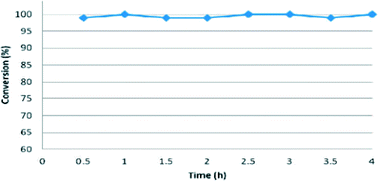 Read the publication that featured this abstract
Read the publication that featured this abstractAfter reviewing selected recent applications from diverse laboratories, we show how mesoporous organosilica-entrapped catalysts of the SiliaCat series have been successfully used for clean manufacturing of APIs in a number of different reactions carried out under laminar flow in microreactors. The advantages and disadvantages linked to these catalysts in terms of technical and economical sustainability are highlighted. Insight into the scale-up of this technique and related catalytic technologies from the lab scale to industrial production concludes the study.
Continuous-flow synthesis of 2H-azirines and their diastereoselective transformation to aziridines
Marcus Baumann *, Ian R. Baxendale
- Department of Chemistry, University of Durham, South Road, Durham, DH1 3LE, UK
Read the publication that featured this abstractUsing continuous-flow techniques, a small collection of 2H-azirines was prepared from oxime precursors via mesylation and base-promoted cyclisation. The 2H-azirines were either isolated after in-line purification or derivatised into a selection of 2-substituted aziridines through a telescoped reaction sequence involving nitrile, trifluoromethyl, or hydride nucleophilic addition. Importantly, these 2-substituted aziridines were produced with high cis diastereoselectivity providing access to small chiral heterocyclic entities that hold promise for medicinal chemistry programs because of their druglike features.
Continuous flow magnesiation or zincation of acrylonitriles, acrylates, and nitroolefins. Application to the synthesis of butenolides
- Maximilian A. Ganiek
- Matthias R. Becker
- Marthe Ketels
- Paul Knochel *
- Department of Chemistry, Ludwig-Maximilians-Universität, Butenandtstr. 5-13, 81377 Munich, Germany
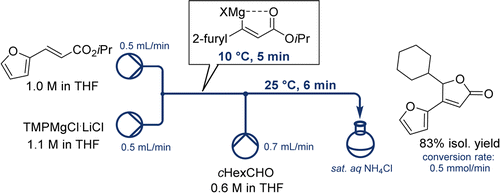 Read the publication that featured this abstract
Read the publication that featured this abstractScalable continuous flow procedures are reported for the metalation and downstream functionalization of β-substituted acrylates. The flow conditions allow the metalation of acrylonitriles, acrylates, and nitroolefins at 0.25–2.50 mmol/min conversion rates. Magnesiations can be performed with short residence times (1–20 min) and near-ambient temperature using TMPMgCl·LiCl. Further, high temperature zincation (≤90 °C) using TMPZnCl·LiCl is possible. This method allows a simple entry to 2(5H)-furanones by flow generation of magnesiated acrylates and a subsequent reaction with aldehydes.
Continuous flow photo-initiated RAFT polymerisation using a tubular photochemical reactor
- James Gardiner a
- Christian H. Hornung a
- John Tsanaktsidis a
- Duncan Guthrie b
- a CSIRO Manufacturing, Bag 10, Clayton South, Victoria 3169, Australia
- b Vapourtec Ltd, Park Farm Business Centre, Bury St Edmunds IP28 6TS, United Kingdom
 Read the publication that featured this abstract
Read the publication that featured this abstractThe RAFT (Reversible Addition–Fragmentation Chain Transfer) approach allows for greatly enhanced control over radical polymerisation processes, resulting in polymers with low dispersity. Classically, RAFT polymerisations are conducted in batch using thermal initiators. Herein, we describe a novel photo-initiated RAFT polymerisation procedure, using a tubular continuous flow reactor for the polymerisation of (meth)acrylates and acrylamides at close to ambient temperatures. This approach makes use of the excellent light penetration properties of millimetre-size fluoropolymer tubing, enabling the synthesis of multigrams/kgs of RAFT polymer per day. A tubular photochemical reactor presents a very practical and compact design for the continuous manufacture of RAFT polymers in quantities that would otherwise be difficult to achieve in a batch system using photo-initiation.
Continuous-flow photochemistry: a need for chemical engineering
- Karine Loubière a,b
- Michael Oelgemöller c
- Tristan Aillet a,b
- Odile Dechy-Cabaret a,d
- Laurent Prat a,b
- a CNRS, Laboratoire de Génie Chimique (LGC UMR 5503), 4 allée Emile Monso, BP 84234, 31432 Toulouse, France
- b Université de Toulouse, INPT, ENSIACET, F-31432 Toulouse, France
- c James Cook University, College of Science, Technology and Engineering, Townsville, Queensland 4811, Australia
- d CNRS, Laboratoire de Chimie de Coordination (LCC UPR 8241), 205 route de Narbonne, BP 44099, F-31077 Toulouse, France
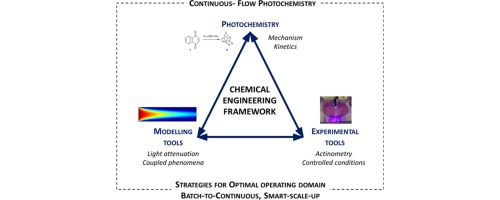 Read the publication that featured this abstract
Read the publication that featured this abstractThe present paper aims to illustrate that chemical engineering enables to address some of the current challenges and issues in continuous-flow photochemistry. For that, some common limitations encountered in industrial photochemistry are firstly highlighted and a general overview on flow photochemistry equipment is presented. The main challenges linked to photochemical (micro)reactor engineering are subsequently stated. By considering only the case of a purely direct photochemical reactions View the MathML sourceA→Bhυ in homogenous medium, the key factors to consider when implementing such photochemical reactions in microstructured technologies are outlined. Their influence on the outputs (conversion, productivity, photonic efficiency) of this simple type of photochemical reaction is then discussed. The significance of chemical engineering frameworks is finally demonstrated using several examples concerning the understanding of the coupling between the different phenomena involved, the predictions of the performances obtained, the acquisition of kinetics data and the elaboration of strategies for photochemical process intensification and smart scale-up. In the future, the challenge will be to integrate the complexity of photochemistry (e.g. heterogeneous phase reactions) into the present modelling tools so as to enlarge the spectrum of strategies devoted to photochemical process intensification.
Efficient metal-free photochemical borylation of aryl halides under batch and continuous-flow conditions
Kai Chen, Shuai Zhang, Pei He, Pengfei Li *
- Center for Organic Chemistry, Frontier Institute of Science and Technology (FIST), Xi'an Jiaotong University, 99 Yanxiang Road, Xi'an, Shaanxi 710054, China
Read the publication that featured this abstractA rapid, chemoselective and metal-free C–B bond-forming reaction of aryl iodides and bromides in aqueous solution at low temperatures was discovered. This reaction is amenable to batch and continuous-flow conditions and shows exceptional functional group tolerance and broad substrate scope regarding both the aryl halide and the borylating reagent. Initial mechanistic experiments indicated a photolytically generated aryl radical as the key intermediate.
Continuous flow photochemistry as an enabling synthetic technology: synthesis of substituted-6(5H)-phenanthridinones for use as poly(ADP-ribose) polymerase inhibitors
- Y. Fang a
- G. K. Tranmer *a,b
- * Corresponding authors a College of Pharmacy, Faculty of Health Sciences, University of Manitoba, Winnipeg, Canada
- b Department of Chemistry, Faculty of Science, University of Manitoba, Winnipeg, Canada
 Read the publication that featured this abstract
Read the publication that featured this abstractMethods utilizing continuous flow photochemistry, an enabling synthetic technology, have been developed for the generation of phenanthridinones via an intramolecular photochemical cyclization of 2-chlorobenzamides for the purposes of generating poly(ADP-ribose) polymerase inhibitors. Herein we report 16 examples of a single-step flow photocyclization which produces substituted phenanthridinones in yields up to 99%, while a two-step method leads directly to phenanthridinones from 2-chlorobenzoyl chlorides and anilines via a novel continuous flow amidation/photocyclization protocol. Overall, the flow photocyclization reactions typically progress in good to excellent yields, and in a superior fashion to analogous batch methods, greatly enabling the drug discovery process.
Controlled generation and use of CO in flow
Steffen V. F. Hansen a,b, Zoe E. Wilson a, Trond Ulven *b, Steven V. Ley *a
- a Department of Chemistry, University of Cambridge Lensfield Road, Cambridge, CB2 1EW, UK
- b Department of Physics, Chemistry and Pharmacy, University of Southern Denmark, Campusvej 55, 5230 Odense M, Denmark
Read the publication that featured this abstractA method for the generation and use of carbon monoxide in flow chemistry has been developed. By using a tube-in-tube reactor, oxalyl chloride can be conveniently and safely hydrolyzed using a NaOH solution to generate CO in the outer stream, which then passes through AF-2400 semi-permeable inner tubing to enrich a reaction stream where it is consumed. The tube-in-tube reactor allows the generation of CO under conditions which would otherwise be incompatible with the reaction conditions. In this way carbonylations can be successfully performed in flow without the use of pressurized gas cylinders. Both alkoxy- and aminocarbonylation was carried out in flow, including a 320 minute continuous run, as proof of concept.
The solid copper-mediated C-N cross-coupling of phenylboronic acids under continuous flow conditions
- Jennifer Bao a
- Geoffrey K. Tranmer a,b
- a College of Pharmacy, Faculty of Health Science, University of Manitoba, Winnipeg, MB R3E 0T5, Canada
- b Department of Chemistry, Faculty of Science, University of Manitoba, Winnipeg, MB R3T 2N2, Canada
 Read the publication that featured this abstract
Read the publication that featured this abstractWe have developed two general methods for the C–N cross-coupling of phenylboronic acids with amines using solid copper flow reactors, in combination with an oxidant. We have developed one method for a C–N arylation reaction which employs a solid copper coil reactor, in combination with tert-butyl peroxybenzoate, to give products in moderate isolated yields. We have also developed a general method for the C–N cross coupling of phenylboronic acids using a column packed with solid copper powder, in combination with acetic acid and TEMPO, to give products in isolated yields in excess of 75+%. We have also applied our general copper powder method to generate a library of products which highlights the utility of solid copper flow reactors for C–N cross coupling reactions, generating 16 examples in good yields. Mechanistic implications and future directions are also discussed.
Visible-light photoredox catalysis using a macromolecular ruthenium complex: reactivity and recovery by size-exclusion nanofiltration in continuous flow
Javier Guerra ab, David Cantillo a, C. Oliver Kappe *a, Antonio Macchiarulo a, Antimo Gioiello *a
- a Institute of Chemistry, University of Graz, NAWI Graz, Heinrichstrasse 28, A-8010 Graz, Austria
- b Crystal Pharma, Gadea Pharmaceutical Group, a division of AMRI, Parque Tecnológico de Boecillo, Valladolid, 47151, Spain
Read the publication that featured this abstractA novel macromolecular photoredox catalyst based on [Ru(bpy)3]2+ anchored to a 2nd-generation PAMAM dendrimer has been developed. Its catalytic activity under visible light irradiation and recyclability using organic solvent nanofiltration with a size-exclusion membrane have been explored under continuous flow conditions.
Integrating multicomponent flow synthesis and computational approaches for the generation of a tetrahydroquinoline compound based library
- Bruno Cerra a
- Serena Mostarda a
- Chiara Custodi a
- Antonio Macchiarulo a
- Antimo Gioiello *a
- a Department of Pharmaceutical Sciences, University of Perugia, Via del Liceo 1, I-06122 Perugia, Italy
 Read the publication that featured this abstract
Read the publication that featured this abstractThe combination of flow chemistry and computational tools has been successfully applied to prepare a focused library of tricyclic tetrahydroquinolines endowed with drug-like properties. The study illustrates the efficient synthesis of this class of compounds using flow mesoreactors in a multicomponent fashion, as well as the profitable employment of computational chemistry for library diversity analysis. Early biological characterization of selected compounds of the library are also presented for the discovery of novel chemical probes to unravel estrogen receptor signaling pathways.
The expanding utility of continuous flow hydrogenation
- Peter J. Cossar a
- Lacey Hizartzidis a
- Michela I. Simone a
- Adam McCluskey *a
- Christopher P. Gordon *b
- * Corresponding authors a Centre for Chemical Biology, Chemistry Building, School of Environmental and Life Science, The University of Newcastle, University Drive, Callaghan, Australia
- b Nanoscale Organisation and Dynamics Group, School of Science and Health, University of Western Sydney, Locked Bag, Penrith, Australia
 Read the publication that featured this abstract
Read the publication that featured this abstractThere has been an increasing body of evidence that flow hydrogenation enhances reduction outcomes across a wide range of synthetic transformations. Moreover flow reactors enhance laboratory safety with pyrophoric catalysts contained in sealed cartridges and hydrogen generated in situ from water. This mini-review focuses on recent applications of flow chemistry to mediate nitro, imine, nitrile, amide, azide, and azo reductions. Methodologies to effect de-aromatisation, hydrodehalogenation, in addition to olefin, alkyne, carbonyl, and benzyl reductions are also examined. Further, protocols to effect chemoselective reductions and enantioselective reductions are highlighted. Together these applications demonstrate the numerous advantages of performing hydrogenation under flow conditions which include enhanced reaction throughput, yields, simplified workup, and the potential applicability to multistep and cascade synthetic protocols.
Highly efficient and safe procedure for the synthesis of aryl 1,2,3-triazoles from aromatic amine in a continuous flow reactor
- Federica Stazi a
- Damiano Cancogni a
- Lucilla Turco b
- Pieter Westerduin a
- Sergio Bacchi a
- a GlaxoSmithKline Spa, Chemical Development Department, Synthetic Chemistry, Via Fleming 4, 37135 Verona, Italy
- b GlaxoSmithKline Spa, Analytical Chemistry, Via Fleming 4, 37135 Verona, Italy
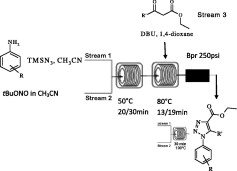 Read the publication that featured this abstract
Read the publication that featured this abstractThe Letter reports a safe and reliable synthesis of aryl 1,2,3-triazoles from the corresponding anilines via intermediate aryl azides, using a continuous process. The method was applied to a variety of substrates with good to excellent yields, without the need to isolate the reactive and possibly unstable intermediates which were constantly kept at low concentration in the matrix environment.
Studies of a Diastereoselective Electrophilic Fluorination Reaction Employing a Cryo-Flow Reactor
Keiji Nakayama,a, Duncan L. Browne,b, Ian R. Baxendale,b,1, Steven V. Ley,*a
- a Process Technology Research Laboratories, Pharmaceutical Technology Division, Daiichi Sankyo, Shinomiya, Hiratsuka, Kanagawa, 254-0014, Japan
- b Innovative Technology Centre, Department of Chemistry, University of Cambridge, Lensfield Road, Cambridge, CB2 1EW, UK
Read the publication that featured this abstractThe application of meso-scale flow chemistry in research laboratories continues to increase. Here, we report on the use of a modular cryo-flow device as applied to a diastereoselective fluorination process. The reactor can be incorporated into existing flow chemistry setups to permit continuous processing at low temperatures without recourse to cryogenic consumables.
The Changing Face of Organic Synthesis
Ley, Steven V., Baxendale, Ian R.
- CHIMIA International Journal for Chemistry, Volume 62, Number 3, March 2008, pp. 162-168(7)
Read the publication that featured this abstractThe article describes the content of the Paul Karrer Lecture given at the University of Zürich on the 20th of June 2007 by Professor Steven V. Ley. The lecture illustrates the work underway within the Chemistry Department at Cambridge to develop microreactors for flow chemistry applications. These modular, small footprint devices are capable of preparing a wide range of compounds including natural products in up to seven synthesis steps.
Products can generally be obtained in high yield and purity without conventional work-up methods using a variety of reaction mixer chips and pre-packed flow tubes of immobilised reagents and scavengers.
Continuous Heterogeneously Catalyzed Oxidation of Benzyl Alcohol in a Ceramic Membrane Packed- Bed Reactor
- Achilleas Constantinou†¶
- Gaowei Wu†
- Albert Corredera†
- Peter Ellis‡
- Donald Bethell§
- Graham J. Hutchings∥
- Simon Kuhn⊥
- Asterios Gavriilidis*†
- † Department of Chemical Engineering, University College London, Torrington Place, London, WC1E 7JE, United Kingdom
- ¶ Division of Chemical and Petroleum Engineering, School of Engineering, London South Bank University, London, SE1 0AA, United Kingdom
- ‡ Johnson Matthey, Blounts Court Road, Reading, RG4 9NH, United Kingdom
- § Department of Chemistry, University of Liverpool, Crown Street, Liverpool L69 7ZD, United Kingdom
- ∥ School of Chemistry, Cardiff University, Main Building, Park Place, Cardiff, CF10 3AT, United Kingdom
- ⊥ Department of Chemical Engineering, KU Leuven, W. de Croylaan 46, 3001 Leuven, Belgium
 Read the publication that featured this abstract
Read the publication that featured this abstractA ceramic membrane reactor was investigated for the continuous catalytic oxidation of benzyl alcohol with oxygen. The reactor had a concentric configuration. An inner tube created an annulus for the catalyst packed-bed (0.9 wt % Au–Pd/TiO2, particle size 90–125 μm) through which the liquid phase (benzyl alcohol, neat or dissolved in o-xylene) flowed. This was followed by the tubular ceramic membrane, which consisted of layers of alumina and a zirconia top layer with a nominal average pore size of 50 nm. The role of the membrane was to provide an interface for gas and liquid to come in contact. Pure oxygen was fed to the opposite side of the membrane in the outer shell of the reactor. Temperature affected conversion but not selectivity, possibly because of insufficient supply of oxygen. However, increasing catalyst contact time or decreasing benzyl alcohol concentration improved selectivity and conversion, indicating that a key parameter was the balance between oxygen supply by the membrane vs oxygen demand by the reaction. By adjusting the operating parameters, reaction performance improved. Selectivity to benzaldehyde 88% and conversion of benzyl alcohol 75% were obtained at 3.2 bara of gas pressure, 24444 gcat·s/galcohol catalyst contact time, 0.5 M benzyl alcohol concentration, and temperature of 120 °C. This performance was comparable to simulated trickle bed operation, where oxygen and substrate were premixed before entering the catalyst packed bed. The membrane reactor offers safer operation, since flammable oxygen/organic mixtures formed in the trickle bed are avoided.
Continuous flow Buchwald–Hartwig amination of a pharmaceutical intermediate
Polina Yaseneva a, Paul Hodgson a, Jacek Zakrzewski a, Sebastian Falß b, Rebecca E. Meadows c, Alexei A. Lapkin * a
- a Department of Chemical Engineering and Biotechnology, University of Cambridge, Cambridge CB2 3RA, UK. E-mail: [email protected] Fax: +44 (0)1223 334796
- b INVITE GmbH, Chempark Leverkusen, 51373 Leverkusen, Germany
- c Pharmaceutical Development, AstraZeneca, Silk Road Business Park, Macclesfield SK10 2NA, UK
Read the publication that featured this abstractA flow process for direct amination of a pharmaceutically relevant substrate using a Pd-NHC based catalyst was demonstrated in a lab-scale mini-plant and in a pilot-scale plant. The lab-scale mini-plant was used to determine catalyst stability under recycling conditions. Results in the mini-plant have shown the maximum space–time yield between the three types of reactor systems: a batch reactor, a mini-plant and a pilot plant. A comprehensive life-cycle assessment study of the synthesis of organometallic catalysts and their impact on the overall LCA of flow vs. batch syntheses was developed. Combined with a simplified economic analysis, the LCA study confirmed the benefits of switching to flow.
Thermolysis of 1,3-dioxin-4-ones: fast generation of kinetic data using in-line analysis under flow
- Thomas Duranda
- Cyril Henrya
- David Boliena
- David C. Harrowvena
- Sally Bloodwortha
- Xavier Franckb
- Richard J. Whitby* a
- a Chemistry, Faculty of Natural and Environmental Sciences, University of Southampton, Southampton, UK
- b Normandie Université, COBRA, UMR 6014 & FR 3038, Université de Rouen, INSA Rouen, CNRS, 1 rue Tesnière, 76821 Mont-Saint-Aignan Cedex, France
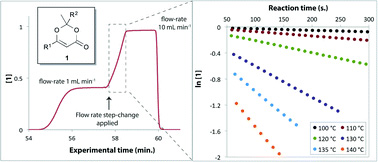 Read the publication that featured this abstract
Read the publication that featured this abstractRapid acquisition of kinetic data is demonstrated with a commercial meso-scale flow reactor, using a step-change in flow rate or ‘push-out’ from the flow line. For thermolysis of 1,3-dioxin-4-ones (1), we obtain excellent reproducibility in the activation energies measured from spectroscopic data collected by in-line UV or transmission FT-IR monitoring of the output during the transitional period between two flow rates (±3 kJ mol−1, 0.7 kcal mol−1). Analysis of multi-component UV and IR data is conducted using an orthogonal projection approach (multivariate curve resolution by alternating least squares) for complex spectra, or by calibration-less integration of non-overlapping peak absorbance. All analysis methods were validated using off-line 1H NMR analysis, and kinetic parameters obtained using the method of a flow rate step-change were validated against conventional steady-state measurements in which time-series data were acquired across multiple experiments. Thermal transfer and dispersion effects are addressed. The experimental methods described herein are valuable for accelerated reaction study and in process development.
Continuous photochemistry: the flow synthesis of ibuprofen via a photo-Favorskii rearrangement
- M. Baumanna
- Ian R. Baxendale* a
- a Department of Chemistry, University of Durham, South Road, Durham, UK
 Read the publication that featured this abstract
Read the publication that featured this abstractA new enabling technology for performing photochemical reactions in a continuous fashion is presented. This photo-reactor is compatible with existing flow systems and can be furthermore linked to a photo-spectrometer in order to allow for real time analysis of photochemical reactions. In this communication we wish to report the profiling of this system and its application to the continuous synthesis of ibuprofen based on a photo-Favorskii rearrangement reaction of a readily available α-chloropropiophenone precursor.
Automated glycan assembly of xyloglucan oligosaccharides
- Pietro Dallabernardinaa b
- Frank Schuhmachera b
- Peter H. Seebergera b
- Fabian Pfrengle* a b
- a Department of Biomolecular Systems, Max-Planck-Institute of Colloids and Interfaces, Am Mühlenberg 1, 14476 Potsdam, Germany
- b Freie Universität Berlin, Institute of Chemistry and Biochemistry, Arnimallee 22, 14195 Berlin, Germany
 Read the publication that featured this abstract
Read the publication that featured this abstractWe report the automated glycan assembly of oligosaccharide fragments related to the hemicellulose xyloglucan (XG). Iterative addition of monosaccharide and disaccharide building blocks to a solid support provided seven cellulose and xyloglucan fragments including XXGG- and XXXG-type oligosaccharides.
Dynamic flow synthesis of porous organic cages
- Michael E. Briggsa
- Anna G. Slatera
- Neil Lunta
- Shan Jianga
- Marc A. Littlea
- Rebecca L. Greenawaya
- Tom Hasella
- Claudio Battilocchiob
- Steven V. Leyb
- Andrew I. Cooper* a
- a Department of Chemistry and Centre for Materials Discovery, University of Liverpool, Crown Street, Liverpool, UK
- b Innovative Technology Centre, Department of Chemistry, University of Cambridge, Lensfield Road, Cambridge, UK
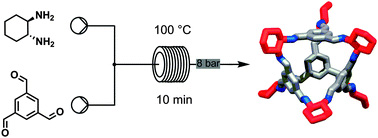 Read the publication that featured this abstract
Read the publication that featured this abstractThe dynamic covalent synthesis of two imine-based porous organic cages was successfully transferred from batch to continuous flow. The same flow reactor was then used to scramble the constituents of these two cages in differing ratios to form cage mixtures. Preparative HPLC purification of one of these mixtures allowed rapid access to a desymmetrised cage molecule.
An integrated flow and microwave approach to a broad spectrum protein kinase inhibitor
- Cecilia Russella
- Andrew J. S. Lina
- Peter Hainsb
- Michela I. Simonea
- Phillip J. Robinsonb
- Adam McCluskey* a
- A Centre for Chemical Biology, Chemistry, School of Environmental and Life Science, The University of Newcastle, University Drive, Callaghan, Australia
- B Children's Medical Research Institute, 214 Hawkesbury Road, Westmead, Australia
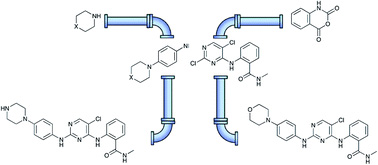 Read the publication that featured this abstract
Read the publication that featured this abstractThe protein kinase inhibitor CTx-0152960 (6, 2-((5-chloro-2-((4-morpholinophenyl)amino)pyrimidin-4-yl)amino)-N-methylbenzamide), and the piperazinyl analogue, CTx-0294885 (7, 2-((5-chloro-2-((4-piperazin-1-ylphenyl)amino)pyrimidin-4-yl)amino)-N-methylbenzamide), were prepared using a hybrid flow and microwave approach. The use of flow chemistry approaches avoided the need for Boc-protection of piperidine in the key SNAr coupling with 1-fluoro-4-nitrobenzene. Microwave coupling of 4-morphilinoaniline 8 and 4-(piperazine-1-yl)aniline 9 with 2-(2,5-dichloropyrimidine-4-ylamino)-N-methylbenzamide 10, proved to be the most efficacious route to the target analogues 6 and 7. This hybrid methodology reduced the number of synthetic steps, gave enhanced overall yields and increased atom economy through step reduction and minimal requirement for chromatographic purification, relative to the original batch synthesis approach.
A Flow-based Synthesis of Telmisartan
Alex Martin, Ali Siamaki, Katherine Belecki, B. Gupton
- Department of Chemistry and Department of Chemical and Life Science Engineering Virginia Commonwealth University 601 W. Main St. Richmond Virginia 23284 United States
Read the publication that featured this abstractA highly efficient continuous synthesis has been developed for telmisartan, the active ingredient in the antihypertensive drug, Micardis. This synthetic route employs a convergent strategy that requires no intermediate purifications or solvent exchanges. The key step in the reaction scheme is a Suzuki cross-coupling reaction between two functionalized benzimidazoles that is catalyzed by a solid-supported Pd catalyst. This flow-based approach utilizes a tubular reactor system coupled with a plug flow packed bed cartridge unit that produces telmisartan in an 81% isolated yield.
The Preparation of Ethyl Levulinate Facilitated by Flow Processing: The Catalyzed and Uncatalyzed Esterification of Levulinic Acid
Meghan P. Negus1, Andrew C. Mansfield2, Nicholas E. Leadbeater1
- 1 Department of Chemistry, University of Connecticut, 55 North Eagleville Road, Storrs, CT 06269, United States
- 2 Vapourtec Ltd., Park Farm Business Centre, Bury St. Edmunds IP28 6TS, United Kingdom
- 3 Department of Community Medicine and Health Care, University of Connecticut Health Center, The Exchange, 263 Farmington Ave, Farmington, CT 06030, United States
Read the publication that featured this abstractThe catalyzed and uncatalyzed preparation of ethyl levulinate from levulinic acid and ethanol is presented. In the case of acid-catalyzed reactions, conditions were optimized in batch using microwave heating and then scaled-up using continuousflow processing. Both p-toluenesulfonic acid and sulfuric acid were used as catalysts, the latter proving most amenable. For the uncatalyzed reactions, all reactions were performed under continuous-flow conditions, using apparatus capable of operating at high temperature and pressure. Optimal conditions for the uncatalyzed process required heating a 3.6-M solution of levulinic acid in ethanol at 270 °C with a residence time of 30 min.
Photodecarboxylations in an advanced meso-scale continuous flow photoreactor
Sam Josland1, Saira Mumtaz2, Michael Oelgemöller2 *
- 1 University of Southampton, Department of Chemistry, University Road, Southampton, SO17 1BJ, United Kingdom
- 2 James Cook University, College of Science, Technology and Engineering, Townsville, QLD 4811, Australia
Read the publication that featured this abstractSelected photodecarboxylations of phthalimides were realized under continuous-flow conditions using an advanced meso-scale photoreactor. The improved efficiency, yields, and productivities of these photochemical reactions highlight the benefits of using flow as opposed to conventional batch operation modes. Flow chemistry furthermore allows for an easy combination of multiple reaction steps in series. This is demonstrated by the successful synthesis of a pharmaceutical target molecule through a tandem photochemical-thermal procedure carried out in uninterrupted flow.
Efficient Continuous-Flow Synthesis of Macrocyclic Triazoles
Anne-Catherine Bédard, Jeffrey Santandrea, Shawn K. Collins
- Department of Chemistry and Centre for Green Chemistry and Catalysis, University of Montreal
Read the publication that featured this abstractThe continuous-flow synthesis of a series of 11- to 26-membered macrocycles via copper-catalyzed azide-alkyne cycloaddition is reported. The approach employs homogeneous catalysis to promote formation of triazole-containing macrocycles in good to excellent yields (65–90%) at relatively high concentration (30–50 mM) using a phase separation strategy.
Amination of Aryl Halides and Esters Using Intensified Continuous Flow Processing
Thomas M. Kohl *, Christian H. Hornung, John Tsanaktsidis
- CSIRO Manufacturing Flagship, Bag 10, Clayton South, Victoria 3169, Australia
Read the publication that featured this abstractSignificant process intensification of the amination reactions of aryl halides and esters has been demonstrated using continuous flow processing. Using this technology traditionally difficult amination reactions have been performed safely at elevated temperatures. These reactions were successfully conducted on laboratory scale coil reactor modules with 1 mm internal diameter (ID) and on a preparatory scale tubular reactor with 6 mm ID containing static mixers.
A Short Multi-step Flow Synthesis of a Potential Spirocyclic Fragrance Component
Ian R. Baxendale*
- Department of Chemistry, University of Durham, South Road, Durham, DH1 3LE, UK
Read the publication that featured this abstractThe search for novel chemical architectures displaying improved biological properties is a never-ending synthetic challenge. In this context many new test structures are often conceived by selecting and replicating specific design elements from naturally occurring molecules and displaying them in an alternative format by way of a new chemical assembly. Constructing these newly designed compounds can be a timely and expensive process especially when a large quantity of the target material is required for physiochemical and property testing. To permit easier scale-up and safer working practice, many chemical researchers are employing flow chemistry approaches to aid in their synthesis challenges. The preparation of a key spirocyclic lactone using flow-based reaction processing techniques is reported.
Flow Synthesis of 2-Methylpyridines via α-Methylation
Camille Manansala1, Geoffrey K. Tranmer1 2 *
- 1 College of Pharmacy, Faculty of Health Science, University of Manitoba, Winnipeg, MB R3E 0T6, Canada
- 2 Department of Chemistry, Faculty of Science, University of Manitoba, Winnipeg, MB R3T 2N2, Canada
Read the publication that featured this abstractA series of simple 2-methylpyridines were synthesized in an expedited and convenient manner using a simplified bench-top continuous flow setup. The reactions proceeded with a high degree of selectivity, producing α-methylated pyridines in a much greener fashion than is possible using conventional batch reaction protocols. Eight 2-methylated pyridines were produced by progressing starting material through a column packed with Raney® nickel using a low boiling point alcohol (1-propanol) at high temperature. Simple collection and removal of the solvent gave products in very good yields that were suitable for further use without additional work-up or purification. Overall, this continuous flow method represents a synthetically useful protocol that is superior to batch processes in terms of shorter reaction times, increased safety, avoidance of work-up procedures, and reduced waste. A brief discussion of the possible mechanism(s) of the reaction is also presented which involves heterogeneous catalysis and/or a Ladenberg rearrangement, with the proposed methyl source as C1 of the primary alcohol.
The development of a short route to the API ropinirole hydrochloride
- Zeshan Yousufa
- Andrew K. Richardsb
- Andrew N. Dwyerc
- Bruno Linclaua
- David C. Harrowven* a
- a Chemistry, University of Southampton, Highfield, Southampton, UK
- b GlaxoSmithKline Medicines Research Centre, Gunnels Wood Road, Stevenage, UK
- c Formally at GlaxoSmithKline Innovation and Sustainable Manufacturing COE, Worthing, UK
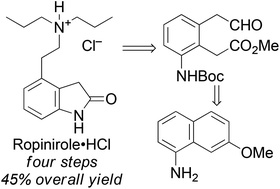 Read the publication that featured this abstract
Read the publication that featured this abstractA four-step, three-stage synthesis of the API ropinirole hydrochloride has been developed from a commercially available naphthalene derivative. The new route has half the step-count and twice the overall yield of the current manufacturing process. Key features of the synthesis are a regioselective Birch reduction and an ozonolysis with concomitant ring closure to induce the required ring contraction.
Rapid Discovery of a Novel Series of Abl Kinase Inhibitors by Application of an Integrated Microfluidic Synthesis and Screening Platform
- Bimbisar Desai
- Karen Dixon
- Elizabeth Farrant
- Qixing Feng
- Karl R. Gibson
- Willem P. van Hoorn
- James Mills
- Trevor Morgan
- David M. Parry
- Manoj K. Ramjee
- Christopher Nicholas Selway
- Gary J. Tarver
- Gavin Whitlock
- Adrian G. Wright
- Cyclofluidic Ltd.
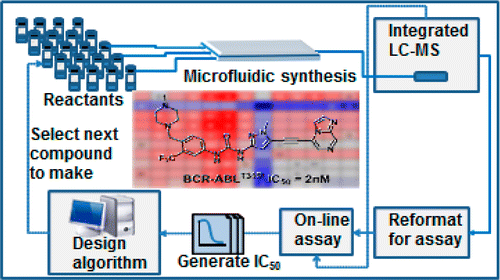 Read the publication that featured this abstract
Read the publication that featured this abstractDrug discovery faces economic and scientific imperatives to deliver lead molecules rapidly and efficiently. Using traditional paradigms the molecular design, synthesis, and screening loops enforce a significant time delay leading to inefficient use of data in the iterative molecular design process. Here, we report the application of a flow technology platform integrating the key elements of structure–activity relationship (SAR) generation to the discovery of novel Abl kinase inhibitors. The platform utilizes flow chemistry for rapid in-line synthesis, automated purification, and analysis coupled with bioassay. The combination of activity prediction using Random-Forest regression with chemical space sampling algorithms allows the construction of an activity model that refines itself after every iteration of synthesis and biological result. Within just 21 compounds, the automated process identified a novel template and hinge binding motif with pIC50 > 8 against Abl kinase — both wild type and clinically relevant mutants. Integrated microfluidic synthesis and screening coupled with machine learning design have the potential to greatly reduce the time and cost of drug discovery within the hit-to-lead and lead optimization phases.
Investigating the continuous synthesis of a nicotinonitrile precursor to nevirapine
- Ashley R. Longstreet1
- Suzanne M. Opalka1
- Brian S. Campbell1
- B. Frank Gupton2
- Tyler McQuade1
- 1 Department of Chemistry and Biochemistry, Florida State University, United States
- 1 Department of Chemistry, Virginia Commonwealth University, United States
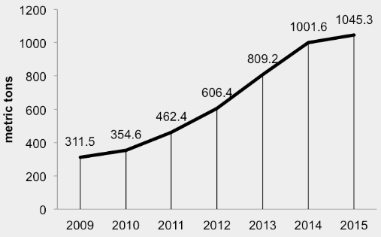 Read the publication that featured this abstract
Read the publication that featured this abstract2-Chloro-3-amino-4-picoline (CAPIC) is a strategic building block for the preparation of nevirapine, a widely-prescribed non-nucleosidic reverse transcriptase inhibitor for the treatment of HIV-infected patients. A continuous synthesis to the bromo derivative of a CAPIC intermediate, 2-bromo-4-methylnicotinonitrile, that terminates in a dead-end crystallization is described. The route uses inexpensive, acyclic commodity-based raw materials and has the potential to enable lower cost production of nevirapine as well as other value added structures that contain complex pyridines. The route terminates in a batch crystallization yielding high purity CAPIC. This outcome is expected to facilitate regulatory implementation of the overall process.
Efficient synthesis of panaxadiol derivatives using continuous-flow microreactor and evaluation of anti-tumor activity
Yan Wua,1, Wei-Qi Chenb,1, Yu-Qing Zhaoc, Hu-Ri Piaoa
- aKey Laboratory of Natural Resources and Functional Molecules of the Changbai Mountain, Affiliated Ministry of Education, Yanbian University College of Pharmacy, China
- bDepartment of Chemistry, Fudan University, Shanghai, China
- cSchool of Traditional Chinese Materia Medica, Shenyang Pharmaceutical University, Shenyang, China
Read the publication that featured this abstractAn efficient method has been developed for the synthesis of a series of (20R)-panaxadiol derivatives (4a–w) using a continuous-flow microreactor. The antitumor activities of the newly synthesized compounds were evaluated in vitro in two human prostate adenocarcinoma tumor cell lines (i.e., PC-3 and LNCaP cells), and their cytotoxicities were evaluated using a standard MTT assay. Compounds 4c, 4h, 4p, 4q and 4s exhibited higher antitumor activities toward PC-3 cell line than panaxadiol, which was used as a reference standard.
Continuous Reductions and Reductive Aminations Using Solid Sodium borohydride
- Kerry Gilmore†
- Stella Vukelic‡
- D. Tyler McQuade†§
- Beate Koksch‡
- Peter H. Seeberger*†‡
- † Max Planck Institute of Colloids and Interfaces, Germany
- ‡ Institute of Chemistry and Biochemistry, Freie Universität Berlin, Germany
- § Department of Chemistry and Biochemistry, Florida State University, United States
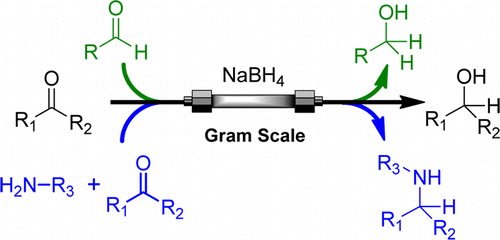 Read the publication that featured this abstract
Read the publication that featured this abstractMost successful reactions carried out under continuous flow conditions mix homogeneous solutions yielding homogeneous products. Using solids is avoided to prevent pump and reactor clogging; even though solid reagents may often be the best choice for a given transformation. Here we demonstrate that by pumping aldehydes, ketones, or in situ formed imines through a specially formulated NaBH4 column results in efficient reductions. The column design and performance characteristics, along with substrate scope, are discussed.
Photodecarboxylative Benzylations of N-Methoxyphthalimide under Batch and Continuous-Flow Conditions
- Hossein Mohammadkhani Pordanjani A B
- Christian Faderl A C
- Jun Wang A
- Cherie A. Motti D
- Peter C. Junk A
- Michael Oelgemöller A E
- A James Cook University, College of Science, Technology and Engineering, Townsville, Qld 4811, Australia.
- B Faculty of Chemistry, Bu-Ali Sina University, Hamedan, 6517838683, Iran.
- C Institut für Organische Chemie, Universität Regensburg, Universitätsstr. 31, D-93053 Regensburg, Germany.
- D Australian Institute of Marine Science (AIMS), Biomolecular Analysis Facility, Townsville, Qld 4810, Australia.
- E Corresponding author. Email: [email protected]
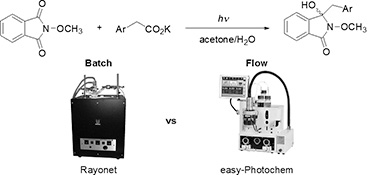 Read the publication that featured this abstract
Read the publication that featured this abstractA series of photodecarboxylative benzylations of N-methoxyphthalimide were successfully realised using easily accessible starting materials. The reactions proceeded smoothly and the corresponding benzylated hydroxyphthalimidines were obtained in moderate to good yields of 52–73 %. No competing photoinduced dealkoxylation of the N-methoxy group was observed. The reaction with potassium phenylacetate was subsequently investigated in an advanced continuous-flow photoreactor. The reactor allowed rapid optimization of the reaction conditions and gave the desired benzylated product in higher yield and shorter irradiation time compared with the batch process.
Chemical Assembly Systems: Layered Control for Divergent, Continuous, Multistep Syntheses of Active Pharmaceutical Ingredients
Dr. Diego Ghislieri, Dr. Kerry Gilmore, Prof. Dr. Peter H. Seeberger*
- Department of Biomolecular Systems, Max-Planck Institute for Colloids and Interfaces, Universität Berlin, Germany
Read the publication that featured this abstractWhile continuous chemical processes have attracted both academic and industrial interest, virtually all active pharmaceutical ingredients (APIs) are still produced by using multiple distinct batch processes. To date, methods for the divergent multistep continuous production of customizable small molecules are not available. A chemical assembly system was developed, in which flow-reaction modules are linked together in an interchangeable fashion to give access to a wide breadth of chemical space. Control at three different levels—choice of starting material, reagent, or order of reaction modules—enables the synthesis of five APIs that represent three different structural classes (γ-amino acids, γ-lactams, β-amino acids), including the blockbuster drugs Lyrica and Gabapentin, in good overall yields (49–75 %).
We gratefully acknowledge financial support from the Max-Planck Society. We thank Dr. D. Kopetzki for helpful discussions, Dr. M. Rasparini from providing a pure sample of Pregabalin and Thales Nano for providing the H-Cube hydrogenator.
Light-Induced C-H Arylation of (Hetero)arenes by In Situ Generated Diazo Anhydrides
Dr. David Cantillo1, Dr. Carlos Mateos2, Dr. Juan A. Rincon2, Dr. Oscar de Frutos2 *, Prof. Dr. C. Oliver Kappe1 *
- 1 Institute of Chemistry, University of Graz, NAWI Graz, Heinrichstrasse 28, 8010 Graz (Austria)
- 2 Centro de Investigación Lilly S. A. Avda. de la Industria 30, 28108 Alcobendas-Madrid (Spain)
Read the publication that featured this abstractDiazo anhydrides (Ar-N=N-O-N=N-Ar) have been known since 1896 but have rarely been used in synthesis. This communication describes the development of a photochemical catalyst-free C-H arylation methodology for the preparation of bi(hetero)aryls by the one-pot reaction of anilines with tert-butyl nitrite and (hetero)arenes under neutral conditions. The key step in this procedure is the in situ formation and subsequent photochemical (>300 nm) homolytic cleavage of a transient diazo anhydride intermediate. The generated aryl radical then efficiently reacts with a (hetero)arene to form the desired bi(hetero)aryls producing only nitrogen, water, and tert-butanol as byproducts. The scope of the reaction for several substituted anilines and (hetero)arenes was investigated. A continuous-flow protocol increasing selectivity and safety has been developed enabling the experimentally straightforward preparation of a variety of substituted bi(hetero)aryls within 45 min of reaction time.
Continuous flow polymerisation process
Inventors:, John Chiefari, Christian Hornung, Simon Saubern
- Assignee: Commonwealth Scientific and Industrial Research Organization CSIRO
Read the publication that featured this abstractThe present invention relates to a process for continuously preparing polymer by RAFT solution polymerization, the process comprising: introducing into a flow reactor a reaction solution comprising one or more ethylenically unsaturated monomers, RAFT agent, non-reactive solvent and free radical initiator; and promoting RAFT polymerization of the one or more ethylenically unsaturated monomers within the reactor so as to form a polymer solution that flows out of the reactor.
Two-Stage Flow Synthesis of Coumarin via O-Acetylation of Salicylaldehyde
Xin Li1, Anbang Chen1, Yangzhi Zhou1, Lingling Huang2, Zheng Fang2, Haifeng Gan1, Kai Guo1
- 1 College of Biotechnology and Pharmaceutical Engineering, Nanjing Tech University, 30 Puzhu Rd S., Nanjing 211816, PR China
- 2 School of Pharmaceutical Sciences, Nanjing Tech University, 30 Puzhu Rd S., Nanjing 211816, PR China
- 3 State Key Laboratory of Materials-Oriented Chemical Engineering, Nanjing Tech University, 30 Puzhu Rd S., Nanjing 211816, PR China
Read the publication that featured this abstractContinuous-flow synthesis of coumarin was realized in a tandem microflow system containing two microreactors in this study. Generally, better reaction yield (91%) and less side reaction were obtained in the flow system compared with conventional method. Interestingly, different reaction pathways were observed between continuous-flow system and batch methods.
Flow Alkylation of Thiols, Phenols, and Amines Using a Heterogenous Base in a Packed-Bed Reactor
Alastair Baker1, Michael Graz2, Robert Saunders2, Gareth J. S. Evans2, Ilaria Pitotti1 Thomas Wirth1
- 1 School of Chemistry, Cardiff University, Park Place, Main Building, Cardiff CF10 3AT, UK
- 2 Neem Biotech, Willowbrook Technical Units, Llandogo Road, St. Mellons, Cardiff CF3 0EF, UK
Read the publication that featured this abstractRapid alkylations of thiols are performed in a packed-bed flow reactor where potassium carbonate acts as a heterogeneous base in anhydrous solvents at ambient temperature. The reaction also has a high efficiency as the removal of the solvent is the only work up required to isolate the product. The products can be used in a subsequent oxidation which was performed sequentially in semibatch mode. The alkylations of phenol and benzyl amine have been demonstrated on an array of bases, but higher temperatures and longer reaction times are required than with thiols.
An efficient continuous flow process for the synthesis of a non-conventional mixture of fructooligosaccharides
Paolo Zambellia, Lucia Tamborinib, Samuele Cazzamallib, Andrea Pintob, Stefania Ariolia, Silvia Balzarettia, Francisco J. Plouc, Lucia Fernandez-Arrojoc, Francesco Molinaria, Paola Contib, Diego Romanoa
- a Department of Food Environmental and Nutritional Science (DeFENS), University of Milan, Via Mangiagalli, 20133 Milan, Italy
- b Department of Pharmaceutical Sciences (DISFARM), University of Milan, Via Mangiagalli 25, 20133 Milan, Italy
- c Instituto de Catálisis y Petroleoquímica, CSIC, 28049 Madrid, Spain
Read the publication that featured this abstractA sustainable and scalable process for the production of a new mixture of fructooligosaccharides (FOS) was developed using a continuous-flow approach based on an immobilized whole cells-packed bed reactor. The technological transfer from a classical batch system to an innovative flow environment allowed a significant improvement of the productivity. Moreover, the stability of this production system was ascertained by up to 7 days of continuous working. These results suggest the suitability of the proposed method for a large-scale production of the desired FOS mixture, in view of a foreseeable use as a novel prebiotic preparation.
A practical deca-gram scale ring expansion of (R)-(−)-carvone to (R)-(+)-3-methyl-6-isopropenyl- cyclohept-3-enone-1
- Leandro de C. Alvesa
- André L. Desideráa
- Kleber T. de Oliveiraa
- Sean Newtonb
- Steven V. Ley* b
- Timothy J. Brocksom* a
- a Departamento de Química, Universidade Federal de São Carlos, P.O. Box 676, São Carlos – SP, Brazil
- b Department of Chemistry, University of Cambridge, Lensfield Road, Cambridge, UK
 Read the publication that featured this abstract
Read the publication that featured this abstractA route to enantiopure (R)-(+)-3-methyl-6-isopropenyl-cyclohept-3-enone-1, an intermediate for terpenoids, has been developed and includes a highly chemo- and regioselective Tiffeneau–Demjanov reaction. Starting from readily available (R)-(−)-carvone, this robust sequence is available on a deca-gram scale and uses flow chemistry for the initial epoxidation reaction. The stereochemistry of the addition of two nucleophiles to the carbonyl group of (R)-(−)-carvone has been determined by X-ray diffraction studies and chemical correlation.
Factors Influencing the Regioselectivity of the Oxidation of Asymmetric Secondary Amines with Singlet Oxygen
Dr. Dmitry B. Ushakov 1 †, Matthew B. Plutschack 1 †, Dr. Kerry Gilmore 1 *, Prof. Dr. Peter H. Seeberger 1
- 1 Max Planck Institute of Colloids and Interfaces, Am Mühlenberg 1, 14476 Potsdam (Germany)
Read the publication that featured this abstractAerobic amine oxidation is an attractive and elegant process for the α functionalization of amines. However, there are still several mechanistic uncertainties, particularly the factors governing the regioselectivity of the oxidation of asymmetric secondary amines and the oxidation rates of mixed primary amines. Herein, it is reported that singlet-oxygen-mediated oxidation of 1° and 2° amines is sensitive to the strength of the α-C[BOND]H bond and steric factors. Estimation of the relative bond dissociation energy by natural bond order analysis or by means of one-bond C[BOND]H coupling constants allowed the regioselectivity of secondary amine oxidations to be explained and predicted. In addition, the findings were utilized to synthesize highly regioselective substrates and perform selective amine cross-couplings to produce imines.
Electroactive and Photoactive Poly[Isoindigo-alt-EDOT] Synthesized Using Direct (Hetero)Arylation Polymerization in Batch and in Continuous Flow
- François Grenier †
- Badrou Réda Aïch † ‡
- Yu-Ying Lai §
- Maxime Guérette †
- Andrew B. Holmes §
- Ye Tao ‡
- Wallace W. H. Wong * §
- Mario Leclerc * †
- † Département de Chimie, Université Laval, Québec City, Qc G1V 0A6, Canada
- ‡ Information and Communications Technologies Portfolio, National Research Council of Canada, Ottawa, ON K1A 0R6, Canada
- § School of Chemistry, Bio21 Institute, the University of Melbourne, 30 Flemington Road, Parkville, Victoria 3010, Australia
![Electroactive and Photoactive Poly[Isoindigo-alt-EDOT] Synthesized Using Direct (Hetero)Arylation Polymerization in Batch and in Continuous Flow](https://www.vapourtec.com/wp-content/uploads/2016/01/electroactive-and-photoactive-poly-isoindigo-alt-edot-synthesized-using-direct-hetero-arylation-polymerization-in-batch-and-in-continuous-flow.jpg) Read the publication that featured this abstract
Read the publication that featured this abstractIn this work, a combined approach was used to obtain a low-cost material for organic electronics by focusing on inexpensive monomers, short synthetic pathway, high-yielding polymerization method, low waste, and easy scalability. To achieve this, a new material, poly[isoindigo-alt-3,4-ethylenedioxythiophene], was synthesized using direct (hetero)arylation polymerization (DHAP). Only a few synthetic steps are required to obtain this material, and no organometallic intermediates are used. In order to make a bigger step toward a truly inexpensive technology, continuous flow methods were applied for the first time to DHAP. This method helped solving a common problem encountered in conjugated polymers synthesis, namely, batch-to-batch variations. Electronic properties of this polymeric material were evaluated using field effect transistors (μh = 7 × 10–3 cm2·V–1·s–1) and solar cells (η = 3.0%).
A Concise Flow Synthesis of Efavirenz
Dr. Camille A. Correia1, Dr. Kerry Gilmore1, Prof. Dr. D. Tyler McQuade3, Prof. Dr. Peter H. Seeberger1 2 *
- 1 Department of Biomolecular Systems, Max Planck Institute of Colloids and Interfaces, Am Mühlenberg 1, 14476 Potsdam (Germany)
- 2 Institute for Chemistry and Biochemistry, Freie Universität Berlin, Arnimallee 22, 14195 Berlin (Germany)
- 3 Department of Chemistry and Biochemistry, Florida State University, Tallahassee, FL 32306 (USA)
Read the publication that featured this abstractEfavirenz is an essential medicine for the treatment of HIV, which is still inaccessible to millions of people worldwide. A novel, semi-continuous process provides rac-Efavirenz with an overall yield of 45 %. This streamlined proof-of-principle synthesis relies on the efficient copper-catalyzed formation of an aryl isocyanate and a subsequent intramolecular cyclization to install the carbamate core of Efavirenz in one step. The three-step method represents the shortest synthesis of this life-saving drug to date.
† We gratefully acknowledge generous financial support from the Max-Planck-Society. We also thank Vapourtec for lending us a fully equipped E-Series Flow System.
Flow synthesis of ethyl isocyanoacetate enabling the telescoped synthesis of 1,2,4-triazoles and pyrrolo-[1,2-c]pyrimidines
- Marcus Baumann 1
- Antonio M. Rodriguez Garcia 1 2
- Ian R. Baxendale * 1
- 1 Department of Chemistry, Durham University, South Road, Durham, UK
- 2 Universidad de Castilla-La Mancha, Departamento de Química Orgánica, Facultad de Ciencias y Tecnologías Químicas, Avd. Camilo José Cela, 10, 13071 Ciudad Real, Spain
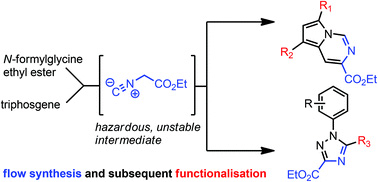 Read the publication that featured this abstract
Read the publication that featured this abstractThe efficient flow synthesis of important heterocyclic building blocks based on the 1,2,4-triazole and pyrrolo[1,2-c]pyrimidine scaffold has been achieved. Crucially, a telescoped continuous flow process was developed based on the reaction of N-formylglycine with triphosgene to deliver a stream of ethyl isocyanoacetate in situ, which subsequently yielded the desired heterocyclic entities in a telescoped reaction. Additionally, the functionalisation of the pyrrolo[1,2-c]pyrimidine core via subsequent SEAr reactions was studied revealing insight into a ‘halogen dance’ phenomenon associated with these medicinally relevant architectures.
Development of a flow method for the hydroboration/oxidation of olefins
- José A. Souto* 1 2
- Robert A. Stockman3
- Steven V. Ley1
- 1 Department of Chemistry, University of Cambridge, Lensfield Road, Cambridge CB2 1EW, UK
- 2 Departamento de Química Orgánica, Universidade de Vigo, Vigo, Spain
- 3 School of Chemistry, University of Nottingham, Nottingham, UK
 Read the publication that featured this abstract
Read the publication that featured this abstractA method for the continuous preparation of alcohols by hydroboration/oxidation of olefins using flow techniques is described. The process allows the isolation of up to 120 mmol h−1 of the desired alcohol in a very rapid manner with good functional group tolerance. The flow setup can be modified to perform a continuous extraction of the desired alcohol from the biphasic mixture produced by the reaction.
Making Ends Meet: Flow Synthesis as the Answer to Reproducible High-Performance Conjugated Polymers on the Scale that Roll-to-Roll Processing Demands
Martin Helgesen, Jon E. Carlé, Gisele A. dos Reis Benatto, Roar R. Søndergaard, Mikkel Jørgensen, Eva Bundgaard, Frederik C. Krebs
- Department of Energy Conversion and Storage, Technical University of Denmark, Roskilde, Denmark
Read the publication that featured this abstractContinuous flow methods are employed for the controlled polymerization of the roll-to-roll (R2R) compatible polymer PBDTTTz-4 including optimization and upscaling experiments. The polymerization rate and materials’ quality can be increased significantly with the continuous flow method where reaction times down to 10 min afforded PBDTTTz-4 with high molecular weight and a constant quality. The flow method enables full control of the molecular weight via tuning of the flow speed, catalyst loading, and temperature and avoids variation in materials’ quality associated with conventional batch synthesis. Upscaling from 300 mg batch synthesis to 10 g flow synthesis affords PBDTTTz-4 with a production rate of up to 120 g day−1 for a very simple in-house build flow reactor. An average power conversion efficiency (PCE) of 3.5% is achieved on a small scale (1 cm2) and an average PCE of 3.3% is achieved on a large scale (29 cm2). This shows that small device efficiencies can be scaled when using full R2R processing of flexible and encapsulated carbon-based modules without the use of vacuum, indium-tin-oxide, or silver, with the best achieving a PCE of 3.8% PCE.
Reevaluation of the 2-nitrobenzyl protecting group for nitrogen containing compounds: an application of flow photochemistry
- Chloe I. Wendell, Michael J. Boyd
- Vertex Pharmaceuticals Inc., 50 Northern Avenue, Boston, MA, United States
 Read the publication that featured this abstract
Read the publication that featured this abstractPhotochemistry under continuous flow conditions has many potential benefits for photochemical reactions that are problematic in batch. The 2-nitrobenzyl moiety is a photolabile protecting group for nitrogen. However, N-deprotection is generally impractical and, therefore, has not been extensively adopted. This Letter reports significant improvements in the N-deprotection of the 2-nitrobenzyl group through the application of continuous flow photolysis. This procedure was applied to a variety of substrates including indoles, indazoles, pyrazoles and secondary amines. Significant improvement in yield, reaction time and scalability was observed under continuous flow conditions.
Flow synthesis of organic azides and the multistep synthesis of imines and amines using a new monolithic triphenylphosphine reagent
- Catherine J. Smith
- Christopher D. Smith
- Nikzad Nikbin
- Steven V. Ley
- Ian R. Baxendale
- Innovative Technology Centre, Cambridge, UK
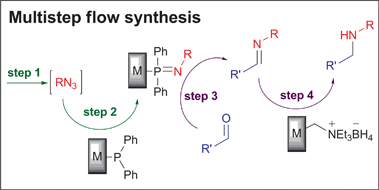 Read the publication that featured this abstract
Read the publication that featured this abstractHere we describe general flow processes for the synthesis of alkyl and aryl azides, and the development of a new monolithic triphenylphosphine reagent, which provides a convenient format for the use of this versatile reagent in flow. The utility of these new tools was demonstrated by their application to a flow Staudinger aza-Wittig reaction sequence. Finally, a multistep aza-Wittig, reduction and purification flow process was designed, allowing access to amine products in an automated fashion.
Generation and Trapping of Ketenes in Flow
Cyril Henry1, David Bolien1, Bogdan Ibanescu1, Sally Bloodworth1, David C. Harrowven1, Xunli Zhang2, Andy Craven3, Helen F. Sneddon3, Richard J. Whitby1 *
- 1 Chemistry, University of Southampton, Southampton, HANTS, SO17 1BJ, UK,
- 2 Bioengineering Group, Faculty of Engineering and the Environment, University of Southampton, Southampton, HANTS, SO17 1BJ, UK
- 3 GlaxoSmithKline R&D Ltd., Medicines Research Centre, Gunnels Wood Road, Stevenage, HERTS, SG1 2NY, UK
Read the publication that featured this abstractKetenes were generated by the thermolysis of alkoxyalkynes under flow conditions, and then trapped with amines and alcohols to cleanly give amides and esters. For a 10 min reaction time, temperatures of 180, 160, and 140 °C were required for >95 % conversion of EtO, iPrO, and tBuO alkoxyalkynes, respectively. Variation of the temperature and flow rate with inline monitoring of the output by IR spectroscopy allowed the kinetic parameters for the conversion of 1-ethoxy-1-octyne to be easily estimated (Ea = 105.4 kJ/mol). Trapping of the in-situ-generated ketenes by alcohols to give esters required the addition of a tertiary amine catalyst to prevent competitive [2+2] addition of the ketene to the alkoxyalkyne precursor.
A monolith immobilised iridium Cp* catalyst for hydrogen transfer reactions under flow conditions
- Maria Victoria Rojo* 1
- Lucie Guetzoyan1
- Ian. R. Baxendale1 2
- 1 Department of Chemistry, University of Cambridge, Lensfield Road, Cambridge, UK
- 2 Department of Chemistry, University of Durham, South Road, Durham, UK
 Read the publication that featured this abstract
Read the publication that featured this abstractAn immobilised iridium hydrogen transfer catalyst has been developed for use in flow based processing by incorporation of a ligand into a porous polymeric monolithic flow reactor. The monolithic construct has been used for several redox reductions demonstrating excellent recyclability, good turnover numbers and high chemical stability giving negligible metal leaching over extended periods of use.
C(sp³)–H functionalisation of N-aryl tetrahydroisoquinolines via an iron-catalysed aerobic nitro-Mannich reaction and continuous flow processing
- Martin Brzozowski
- Jose A. Forni
- G. Paul Savage and Anastasios Polyzos*
- CSIRO Manufacturing Flagship, Bayview Avenue, Clayton, Australia
 Read the publication that featured this abstract
Read the publication that featured this abstractAn efficient nitro-Mannich type direct α-C(sp³)–H functionalisation of N-aryl-1,2,3,4-tetrahydroisoquinolines catalysed by simple iron salts in combination with O2 as the terminal oxidant is described. The use of a Teflon AF-2400 membrane Tube-in-Tube reactor under continuous flow conditions allowed for considerable process intensification to be achieved relative to previous batch methods.
Facilitating Biomimetic Syntheses of Borrerine Derived Alkaloids by Means of Flow-Chemical Methods
- Sonja B. KamptmannA
- Steven V. Ley
- A Department of Chemistry, University of Cambridge, Lensfield Road, Cambridge CB2 1EW, UK
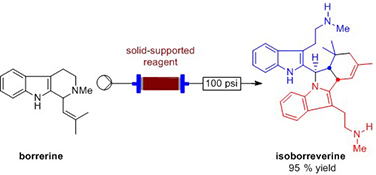 Read the publication that featured this abstract
Read the publication that featured this abstractFlow chemistry is widely used nowadays in synthetic chemistry and has increasingly been applied to complex natural product synthesis. However, to date flow chemistry has not found a place in the area of biomimetic synthesis. Here we show the syntheses of borrerine derived alkaloids, indicating that we can use biomimetic principles in flow to prepare complex architectures in a single step.
The rapid synthesis of oxazolines and their heterogeneous oxidation to oxazoles under flow conditions
- Steffen Glöckner
- Duc N. Tran
- Richard J. Ingham
- Sabine Fenner
- Zoe E. Wilson
- Claudio Battilocchio
- Steven V. Ley*
- Department of Chemistry, University of Cambridge, Cambridge, UK
 Read the publication that featured this abstract
Read the publication that featured this abstractA rapid flow synthesis of oxazolines and their oxidation to the corresponding oxazoles is reported. The oxazolines are prepared at room temperature in a stereospecific manner, with inversion of stereochemistry, from β-hydroxy amides using Deoxo-Fluor®. The corresponding oxazoles can then be obtained via a packed reactor containing commercial manganese dioxide.
Development of a Grignard-Type Reaction for Manufacturing in a Continuous-Flow Reactor
- Fabrice G. J. Odille†§
- Anna Stenemyr†§
- Fritiof Pontén*‡
- † Pharmaceutical Development R&D, Chemical Science, AstraZeneca, SE-151 85 Södertälje, Sweden
- ‡ Innovative Medicines, Cardiovascular and Metabolic Diseases, Medicinal Chemistry, AstraZeneca R&D, Sweden
- § SP Process Development, Forskargatan, Sweden
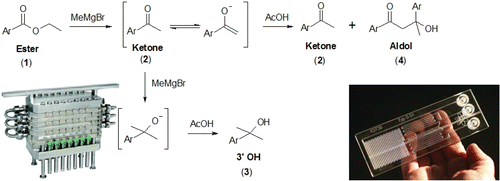 Read the publication that featured this abstract
Read the publication that featured this abstractThis paper describes the scale-up of a highly exothermic and fast reaction from a microreactor with an internal volume of less than 1 mL to a mesoreactor with an internal volume of 13.5 mL. The development of a continuous process for manufacturing a ketone from an ester using a Grignard reagent is described. The different steps undertaken and the considerations made to be able to operate in continuous mode and achieve a product output of ca. 0.5 kg are presented.
Regioselective Synthesis of 3-Aminoimidazo[1,2-a]-pyrimidines under Continuous Flow Conditions
- Ashlie J. E. Butler
- Mark J. Thompson
- Patrick J. Maydom
- James A. Newby
- Kai Guo
- Harry Adams
- Beining Chen*
- Department of Chemistry, University of Sheffield, Sheffield, U.K.
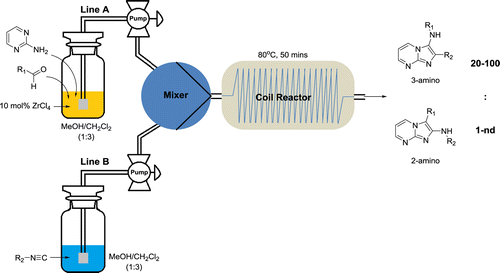 Read the publication that featured this abstract
Read the publication that featured this abstractMulticomponent synthesis of 3-aminoimidazo[1,2-a]pyrimidines usually affords a product mixture containing varying amounts of the corresponding 2-amino regioisomer. Modified methods, particularly microwave heating, have been employed to suppress formation of this side-product, but none of the revised protocols are readily amenable to scale. A continuous flow adaptation was found to offer improved regioselectivity toward the targeted 3-amino regioisomer with significantly shorter reaction times and also widened the scope of the reaction to permit the use of aliphatic aldehyde building blocks.
Microwave irradiation and flow chemistry for a straightforward synthesis of piano-stool iron complexes
- Anastassiya Pagnoux-Ozherelyevaa
- David Bolienb
- Sylvain Gaillarda
- Flavie Peudrua
- Jean-François Lohiera
- Richard J. Whitbyb
- Jean-Luc Renauda
- aNormandie University, University of Caen Basse Normandie, Laboratoire de Chimie Moléculaire et Thioorganique, CNRS, Caen, France
- bChemistry, University of Southampton, Southampton, UK
 Read the publication that featured this abstract
Read the publication that featured this abstractTwo series of piano-stool iron(II) complexes bearing bidentate phosphine or mixed phosphorus–nitrogen ligands have been prepared upon reaction with CpFe(CO)2I or [CpFe(naphthalene)][PF6] under microwave irradiation or using flow chemistry.
Glucuronidation of bile acids under flow conditions: design of experiments and Koenigs–Knorr reaction optimization
- Serena Mostardaa
- Paolo Filipponia
- Roccaldo Sardellaa
- Francesco Venturonia
- Benedetto Natalinia
- Roberto Pellicciariab
- Antimo Gioiello*a
- aLaboratory of Medicinal and Advanced Synthetic Chemistry (Lab MASC), Department of Pharmaceutical Sciences, University of Perugia, Perugia, Italy
- bTES Pharma S.r.l., Corciano, Italy
 Read the publication that featured this abstract
Read the publication that featured this abstractAn efficient method for the C3-glucuronidation of bile acids is developed under flow conditions. A modular mesoreactor assisted flow set-up was combined with statistical design of experiments to speed up the optimization of the Koenigs–Knorr reaction in terms of yield, regioselectivity, costs, as well as technical and practical standpoints. Using the optimal conditions, selective glucuronidation of naturally occurring bile acids was successfully achieved offering a new, valuable route to C3-glucuronidated bile acids useful for biological, diagnostic and PK/ADMET investigations.
A General Continuous Flow Method for Palladium Catalysed Carbonylation Reactions Using Single and Multiple Tube-in-Tube Gas-Liquid Microreactors
- Ulrike Gross1
- Peter Koos1
- Matthew O'Brien1,2,*
- Anastasios Polyzos1,3
- Steven V. Ley1
- 1Whiffen Laboratory, Department of Chemistry, University of Cambridge, Cambridge, UK
- 2School of Physical and Geographical Sciences, Keele University, Staffordshire, UK
- 3CSIRO, Materials Science and Engineering, Clayton South, Australia
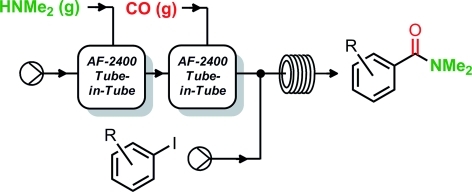 Read the publication that featured this abstract
Read the publication that featured this abstractA series of continuous flow chemistry processes that facilitate the palladium-catalysed carbonylation of aryl and vinyl iodides and aryl bromides with a range of alkoxy, hydroxy and amino nucleophiles is reported. Harnessing a semipermeable Teflon® AF-2400 Tube-in-Tube assembly, these reactors permit the controlled transport of carbon monoxide into solution at elevated pressure to generate homogeneous flow streams, avoiding some potential issues associated with segmented flow gas-liquid reactors. As the volume of pressurised gas contained within the device is low, the hazards associated with this are potentially mitigated relative to comparable batch processes. We also show how the incorporation of a second in-line gas-flow reactor allows for the sequential introduction of two gases (carbon monoxide and a gaseous nucleophile) into the reaction stream.
Consecutive Oxygen-based Oxidations Convert Amines to a-Cyanoepoxides
- Dmitry B. Ushakova
- Kerry Gilmore*a
- Peter H. Seeberger*a,b
- aMax Planck Institute of Colloids and Interfaces, Potsdam, Germany
- bInstitute of Chemistry and Biochemistry, Freie Universität Berlin, Berlin, Germany
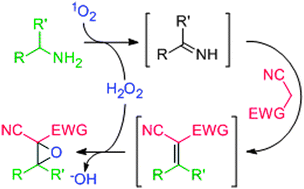 Read the publication that featured this abstract
Read the publication that featured this abstractTri- or tetrasubstituted α-cyanoepoxides can be rapidly prepared from unactivated amines and malononitrile or methyl cyanoacetate when singlet oxygen, produced in a continuous-flow photoreactor, serves as an oxidant and in situ peroxide source. The hydrogen peroxide generated in amine oxidation epoxidizes an electron deficient olefin intermediate, formed by deaminative Mannich coupling. The corresponding α,α-dicyano- or α-cyano-α-esterepoxides were obtained in good yields (43–82%).
Synthesis of a Carprofen Analogue Using a Continuous Flow UV-Reactor
- Antoine Caron
- Augusto C. Hernandez-Perez
- Shawn K. Collins*
- Department of Chemistry and Centre for Green Chemistry and Catalysis, Université de Montréal, Québec, Canada.
 Read the publication that featured this abstract
Read the publication that featured this abstractA continuous flow UV light reactor has been constructed using commercially available equipment, and its efficiency was demonstrated by performing a photocyclodehydrogenation reaction to prepare carbazole derivatives of the drug carprofen.
Flow Chemistry Meets Advanced Functional Materials
Dr. Rebecca M. Myers, Daniel E. Fitzpatrick, Dr. Richard M. Turner, Prof. Steven V. Ley*
- Department of Chemistry, University of Cambridge, Cambridge, UK
Read the publication that featured this abstractFlow chemistry and continuous processing techniques are beginning to have a profound impact on the production of functional materials ranging from quantum dots, nanoparticles and metal organic frameworks to polymers and dyes. These techniques provide robust procedures which not only enable accurate control of the product material’s properties but they are also ideally suited to conducting experiments on scale. The modular nature of flow and continuous processing equipment rapidly facilitates reaction optimisation and variation in function of the products.
Continuous Synthesis of Artemisinin-Derived Medicines
- Kerry Gilmorea
- Daniel Kopetzkia
- Ju Weon Leeb
- Zoltan Horvathb
- D. Tyler McQuadea
- Andreas Seidel-Morgensternb,c
- Peter H. Seebergera,d
- aMax-Planck-Institute of Colloids and Interfaces, Department of Biomolecular Systems, Germany
- bMax-Planck-Institute for Dynamics of Complex Technical Systems, Germany
- cOtto-von-Guericke-University, Chair for Chemical Process Technology, Germany
- dFreie Universität Berlin, Institute of Chemistry and Biochemistry, Berlin, Germany
 Read the publication that featured this abstract
Read the publication that featured this abstractDescribed is a continuous, divergent synthesis system which is coupled to continuous purification and is capable of producing four anti-malarial APIs. The system is comprised of three linked reaction modules for photooxidation/cyclization, reduction, and derivatization. A fourth module couples the crude reaction stream with continuous purification to yield pure API.
A Continuous-Flow Approach to 3,3,3-Trifluoromethylpropenes: Bringing Together Grignard Addition, Peterson Elimination, Inline Extraction, and Solvent Switching
- Trevor A. Hamlin†
- Gillian M. L. Lazarus†
- Christopher B. Kelly†
- Nicholas E. Leadbeater*†‡
- †Department of Chemistry, University of Connecticut, United States
- ‡Department of Community Medicine & Health Care, University of Connecticut Health Center, United States
 Read the publication that featured this abstract
Read the publication that featured this abstractA continuous-flow approach to the synthesis of 3,3,3-trifluoromethylpropenes involving Grignard addition of (trimethylsilyl)methylmagnesium chloride to a trifluoromethyl ketone followed by dehydrative desilylation of the α-trifluoromethyl-β-hydroxysilyl alcohol using trimethylsilyl trifluoromethanesulfonate is reported. An inline aqueous/organic extraction and a concomitant solvent switch were key to the success of the methodology. Transition from batch to continuous flow conditions allows for higher yields, shorter reaction times, and facile scale out.
Heterogenization of Pd–NHC complexes onto a silica support and their application in Suzuki–Miyaura coupling under batch and continuous flow conditions
- Alberto Martíneza
- Jamin L. Krinskya
- Itziar Peñafiela
- Sergio Castillónb
- Konstantin Loponovc
- Alexei Lapkinc
- Cyril Godard*a
- Carmen Claver*a
- aDepartment of Physical and Inorganic Chemistry, Universitat Rovira i Virgili, Tarragona, Spain
- bDepartment of Analytical and Organic Chemistry, Universitat Rovira i Virgili, Tarragona, Spain
- cDepartment of Chemical Engineering and Biotechnology, University of Cambridge, , Cambridge, UK
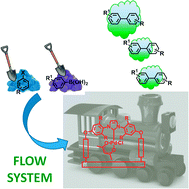 Read the publication that featured this abstract
Read the publication that featured this abstractThe heterogenisation of a new family of Pd–NHC complexes is reported via a straightforward and efficient synthetic procedure. These silica-immobilised materials were successfully applied as catalysts in the Suzuki–Miyaura coupling of aryl chlorides and bromides under mild conditions. The materials exhibited improved stability when the catalytic reaction was run under anhydrous conditions and could be recycled up to five times without significant loss of activity. When the reaction was run within a continuous flow microreactor, these catalysts showed good activity after at least two hours on stream.
Glycosylation with N-acetyl glycosamine donors using catalytic iron(III) triflate: from microwave batch chemistry to a scalable continuous-flow process
- Amandine Xolina
- Arnaud Stévenina
- Mathieu Pucheaultb
- Stéphanie Norsikiana
- François-Didier Boyer*ac
- Jean-Marie Beau*ad
- aCentre de Recherche de Gif, Institut de Chimie des Substances Naturelles, CNRS, Gif-sur-Yvette, France
- bInstitut des Sciences Moléculaires, CNRS-Université de Bordeaux, Talence, France
- cInstitut Jean-Pierre Bourgin, UMR1318 INRA-AgroParisTech, Versailles, France
- dUniversité Paris-Sud and CNRS, Laboratoire de Synthèse de Biomolécules, Institut de Chimie Moléculaire et des Matériaux, Orsay, France
 Read the publication that featured this abstract
Read the publication that featured this abstractEfficient and highly selective glycosylation reactions of peracetylated β-D-N-acetyl gluco- and galactosamine are described using catalytic iron(III) triflate under microwave conditions or in a continuous flow process. Simple β-glycosides and β-(1 → 6), β-(1 → 2) and β-(1 → 3) linked disaccharides bearing various protecting groups were obtained in high yields. Insights into the glycosylation mechanism are discussed.
Multistep Flow Synthesis of 5-Amino-2-aryl-2H-[1,2,3]-triazole-4-carbonitriles
YDr. Jérôme Jacq, Dr. Patrick Pasau*
- UCB Biopharma, Avenue de l'Industrie, 1420 Braine l'Alleud (Belgium)
Read the publication that featured this abstract1,2,3-Triazole has become one of the most important heterocycles in contemporary medicinal chemistry. The development of the copper-catalyzed Huisgen cycloaddition has allowed the efficient synthesis of 1-substituted 1,2,3-triazoles. However, only a few methods are available for the selective preparation of 2-substituted 1,2,3-triazole isomers. In this context, we decided to develop an efficient flow synthesis for the preparation of various 2-aryl-1,2,3-triazoles. Our strategy involves a three-step synthesis under continuous-flow conditions that starts from the diazotization of anilines and subsequent reaction with malononitrile, followed by nucleophilic addition of amines, and finally employs a catalytic copper(II) cyclization. Potential safety hazards associated with the formation of reactive diazonium species have been addressed by inline quenching. The use of flow equipment allows reliable scale up processes with precise control of the reaction conditions. Synthesis of 2-substituted 1,2,3-triazoles has been achieved in good yields with excellent selectivities, thus providing a wide range of 1,2,3-triazoles.
Versatile, High Quality and Scalable Continuous Flow Production of Metal-Organic Frameworks
- Marta Rubio-Martinez
- Michael P. Batten
- Anastasios Polyzos
- Keri-Constanti Carey
- James I. Mardel
- Kok-Seng Lim
- Matthew R. Hill
- CSIRO Materials Science and Engineering, Australia
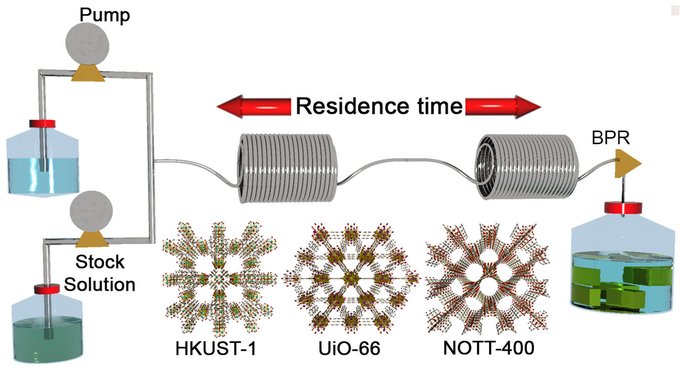 Read the publication that featured this abstract
Read the publication that featured this abstractFurther deployment of Metal-Organic Frameworks in applied settings requires their ready preparation at scale. Expansion of typical batch processes can lead to unsuccessful or low quality synthesis for some systems. Here we report how continuous flow chemistry can be adapted as a versatile route to a range of MOFs, by emulating conditions of lab-scale batch synthesis. This delivers ready synthesis of three different MOFs, with surface areas that closely match theoretical maxima, with production rates of 60 g/h at extremely high space-time yields.
Continuous Flow Magnesiation of Functionalized Heterocycles and Acrylates with TMPMgCl·LiCl
Dr. Trine P. Petersen, Matthias R. Becker, Prof. Dr. Paul Knochel*
- Ludwig-Maximilians-Universität München, Department Chemie, München, Germany
Read the publication that featured this abstractA flow procedure for the metalation of functionalized heterocycles (pyridines, pyrimidines, thiophenes, and thiazoles) and various acrylates using the strong, non-nucleophilic base TMPMgCl⋅LiCl is reported. The flow conditions allow the magnesiations to be performed under more convenient conditions than the comparable batch reactions, which often require cryogenic temperatures and long reaction times. Moreover, the flow reactions are directly scalable without further optimization. Metalation under flow conditions also allows magnesiations that did not produce the desired products under batch conditions, such as the magnesiation of sensitive acrylic derivatives. The magnesiated species are subsequently quenched with various electrophiles, thereby introducing a broad range of functionalities.
Continuous Synthesis of Organozinc Halides Coupled to Negishi Reactions
- Nerea Alonso2,3
- L. Zane Miller1
- Juan de M. Muñoz2
- Jesus Alcázar2,*
- D. Tyler McQuade1,*
- 1Department of Chemistry and Biochemistry, Florida State University, USA
- 2Janssen Research and Development, Janssen-Cilag, Toledo, Spain
- 3Facultad de Química, Universidad de Castilla-La Mancha, Spain
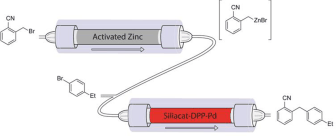 Read the publication that featured this abstract
Read the publication that featured this abstractThe Negishi cross-coupling is a powerful C[BOND]C bond forming reaction. The method is less commonly used relative to other cross-coupling methods in part due to lack of availability of organozinc species. While organozinc species can be prepared, problems with reproducibility and handling of these sensitive species can complicate these reactions. Herein, we describe the continuous formation, using an activated packed-bed of metallic zinc, and subsequent use of organozinc halides. We demonstrate that a single column of zinc can provide excellent yields of organozinc halides and that they can be used downstream in subsequent Negishi cross-couplings. The preparation of the zinc column and the scope of the reaction are discussed.
Continuous Flow Synthesis of Thieno[2,3-c]isoquinolin-5(4H)-one Scaffold: A Valuable Source of PARP-1 Inhibitors
- Paolo Filipponi†
- Carmine Ostacolo‡
- Ettore Novellino‡
- Roberto Pellicciari†§
- Antimo Gioiello*†
- †Dipartimento di Scienze Farmaceutiche, Università di Perugia, Via del Liceo 1, I-06123 Perugia, Italy
- ‡Dipartimento di Farmacia, Università degli Studi di Napoli Federico II, Napoli, Italy §TES Pharma S.r.l., Corciano (Perugia), Italy
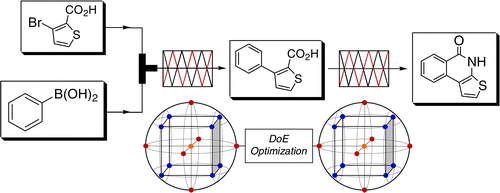 Read the publication that featured this abstract
Read the publication that featured this abstractAn efficient multistep method for the continuous flow synthesis of thieno[2,3-c]isoquinolin-5(4H)-one-A (TIQ-A), an important pharmacological tool and building block for PARP-1 inhibitors, has been developed. The synthesis involves a Suzuki coupling reaction to generate 3-phenylthiophene-2-carboxylic acid which is transformed into the corresponding acyl azide and readily cyclized by a thermal Curtius rearrangement. A statistical design of experiments (DoE) was employed as a valuable support for decision-making of further experiments enabling the development of a robust and reliable protocol for large-scale preparation. As a result, the reactions are facile, safe, and easy to scale-up. The large-scale applicability of this improved flow method was tested by conducting the reactions on multigram scale to produce the desired product in high yield and quality for biopharmacological appraisals.
First Example of a Continuous-Flow Carbonylation Reaction Using Aryl Formates as CO Precursors
- Nerea Alonso1,3
- Juan de Muñoz1
- Brecht Egle2
- Johannes L. Vrijdag2
- Wim M. De Borggraeve2
- Antonio de la Hoz3
- Angel Díaz-Ortiz3
- Jesús Alcázar1
- 1Janssen Research and Development, Janssen-Cilag Department of Medicinal Chemistry S.A., Toledo, Spain
- 2Molecular Design and Synthesis University of Leuven, Department of Chemistry, Heverlee Belgium
- 3Universidad de Castilla-La Mancha Facultad de Ciencias y Tecnologías Químicas Real, Spain
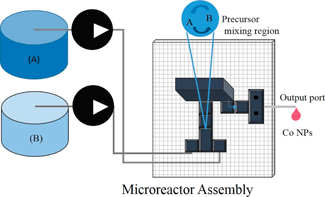 Read the publication that featured this abstract
Read the publication that featured this abstractThe first continuous flow carbonylation reaction using aryl formates as CO precursor is reported. The reaction is practical, scalable and high yielding. The use of a flow protocol safely allows expanding the scope to activated chlorides, nitrogen heterocycles and to the selective introduction of an ester group in dihalo-derivatives. Further selective reduction of the ester formed to an aldehyde in flow is also described.
Integration of enabling methods for the automated flow preparation of piperazine-2-carboxamide
- Richard J. Ingham1
- Claudio Battilocchio1
- Joel M. Hawkins2
- Steven V. Ley1
- 1 Innovative Technology Centre, Department of Chemistry, University of Cambridge, Lensfield Road, CB2 1EW, Cambridge, UK
- 2 Pfizer Worldwide Research and Development, Eastern Point Road, Groton, CT 06340, USA
 Read the publication that featured this abstract
Read the publication that featured this abstractHere we describe the use of a new open-source software package and a Raspberry Pi® computer for the simultaneous control of multiple flow chemistry devices and its application to a machine-assisted, multi-step flow preparation of pyrazine-2-carboxamide – a component of Rifater®, used in the treatment of tuberculosis – and its reduced derivative piperazine-2-carboxamide.
Seamless Integration of Dose-Response Screening and Flow Chemistry: Efficient Generation of Structure–Activity Relationship Data of ?-Secretase (BACE1) Inhibitors
Dr. Michael Werner1,*, Christoph Kuratli1, Dr. Rainer E. Martin1,*, Dr. Remo Hochstrasser1, David Wechsler1, Dr. Thilo Enderle1, Dr. Alexander I. Alanine1, Prof. Dr. Horst Vogel2
- 1 Medicinal Chemistry, Small Molecule Research, Pharma Research & Early Development (pRED), F. Hoffmann-La Roche AG, Grenzacherstrasse 124, 4070 Basel (Switzerland)
- 2 Institute of Chemical Sciences and Engineering, Swiss Federal Institute of Technology of Lausanne (EPFL), Station 6, 1015 Lausanne (Switzerland)
Read the publication that featured this abstractDrug discovery is a multifaceted endeavor encompassing as its core element the generation of structure-activity relationship (SAR) data by repeated chemical synthesis and biological testing of tailored molecules. Herein, we report on the development of a flow-based biochemical assay and its seamless integration into a fully automated system comprising flow chemical synthesis, purification and in-line quantification of compound concentration. This novel synthesis-screening platform enables to obtain SAR data on b-secretase (BACE1) inhibitors at an unprecedented cycle time of only 1 h instead of several days. Full integration and automation of industrial processes have always led to productivity gains and cost reductions, and this work demonstrates how applying these concepts to SAR generation may lead to a more efficient drug discovery process.
Sequential flow process for the controlled polymerisation and thermolysis of RAFT-synthesised polymers
- CH Hornung
- A Postma
- S Saubern
- J Chiefari
- CSIRO Materials Science and Engineering, Victoria, Australia
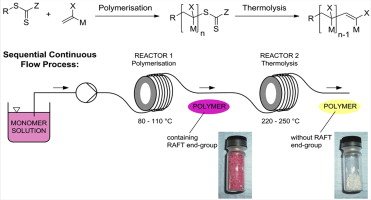 Read the publication that featured this abstract
Read the publication that featured this abstractThe RAFT (Reversible Addition-Fragmentation Chain Transfer) process greatly enhances the control over radical polymerisations, while leaving behind a thiocarbonylthio end-group. Thermolysis presents a convenient and efficient way of removing the thiocarbonylthio end-group from RAFT polymers, without the use of additional reagents. This paper describes a simple two-step flow process for the synthesis of RAFT polymers followed by the subsequent removal of the RAFT end-group via thermolysis, without the need for isolating intermediates. A range of different polymers based on styrene, acrylates, methacrylates and acrylamides were synthesised with different RAFT agents and successfully tested for thermolysis at temperatures between 220 and 250 °C in a stainless steel tube flow reactor, resulting in complete removal of thiocarbonylthio end-groups.
Robust and reusable supported palladium catalysts for cross-coupling reactions in flow
William R. Reynoldsab, Pawel Plucinskibc, Christopher G. Frost*ab
- * Corresponding authors
- a Centre for Sustainable Chemical Technologies, University of Bath, Claverton Down, Bath, UK
- b Department of Chemistry, University of Bath, Claverton Down, Bath, UK
- c Department of Chemical Engineering, University of Bath, Claverton Down, Bath, UK
Read the publication that featured this abstractTwo novel polymer encapsulated silica supported palladium catalysts have been prepared and shown to be highly active, robust and recyclable catalysts for Heck and Suzuki–Miyaura cross coupling reactions under continuous flow conditions. They were demonstrated to give excellent conversions of both electron rich and electron deficient substrates and the catalysts were used for over 50 hours continuous operation without any appreciable decrease in catalytic activity and low levels of Pd leaching measured by ICP-MS.
Continuous-Flow Oxidative Cyanation of Primary and Secondary Amines Using Singlet Oxygen
Dmitry B. Ushakov, Kerry Gilmore, Daniel Kopetzki, D. Tyler McQuade, Peter H. Seeberger
- 1Department für Biomolekulare Systeme, Max-Planck-Institut für Kolloid- und Grenzflächenforschung, Potsdam, Germany
- 2Institut für Chemie und Biochemie, Freie Universität Berlin, Berlin, Germany
- 3Department of Chemistry and Biochemistry, Florida State University, Tallahassee, USA
Read the publication that featured this abstractPrimary and secondary amines can be rapidly and quantitatively oxidized to the corresponding imines by singlet oxygen. This reactive form of oxygen was produced using a variable-temperature continuous-flow LED-photoreactor with a catalytic amount of tetraphenylporphyrin as the sensitizer. α-Aminonitriles were obtained in good to excellent yields when trimethylsilyl cyanide served as an in situ imine trap. At 25°C, primary amines were found to undergo oxidative coupling prior to cyanide addition and yielded secondary α-aminonitriles. Primary α-aminonitriles were synthesized from the corresponding primary amines for the first time, by an oxidative Strecker reaction at –50 °C. This atom-economic and protecting-group-free pathway provides a route to racemic amino acids, which was exemplified by the synthesis of tert-leucine hydrochloride from neopentylamine.
Flow synthesis of a versatile fructosamine mimic and quenching studies of a fructose transport probe
- Matthew B. Plutschack1,2
- D. Tyler McQuade1,2
- Giulio Valenti2
- Peter H. Seeberger2
- 1Department of Chemistry and Biochemistry, Florida State University, USA
- 2Max Planck Institute of Colloids and Interfaces, Germany
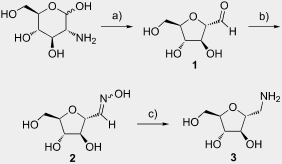 Read the publication that featured this abstract
Read the publication that featured this abstractWe describe the synthesis of 1-amino-2,5-anhydro-D-mannose (“mannitolamine”), a key intermediate to the 7-nitro-1,2,3-benzadiazole conjugate (NBDM), using commercially available fluidic devices to increase the throughput. The approach is the first example of a flow-based Tiffeneau–Demjanov rearrangement. Performing this step in flow enables a ~64-fold throughput enhancement relative to batch. The flow process enables the synthesis to be accomplished three times faster than the comparable batch route. The high throughput enabled the production of larger quantities of the fluorescent fructose transport probe NBDM, enabling us to measure key photophysical properties that will facilitate future uptake studies.
The Fit For Purpose Development of S1P1 Receptor Agonist GSK2263167 Using a Robinson Annulation and Saegusa Oxidation to Access an Advanced Phenol Intermediate
- Robert M. Harris
- Benjamin I. Andrews
- Stacy Clark
- Jason W. B. Cooke
- John C. S. Gray
- Stephanie Q. Q. Ng
- Chemical Development, GlaxoSmithKline Research and Development Ltd., UK
 Read the publication that featured this abstract
Read the publication that featured this abstractA fit for purpose approach has been adopted in order to develop a robust, scalable route to the S1P1 receptor agonist, GSK2263167. The key steps include a Robinson ring annulation followed by a Saegusa oxidation, providing rapid access to an advanced phenol intermediate. Despite the use of stoichiometric palladium acetate for the Saegusa oxidation, near complete recovery of the palladium has been demonstrated. The remaining steps have been optimised including the removal of all chromatography. An alternative to the Saegusa oxidation is described as well as the development of a flow process to facilitate further scale-up of the amidoxime preparation using hydroxylamine at elevated temperature.
Flow-Based, Cerium Oxide Enhanced, Low-Level Palladium Sonogashira and Heck Coupling Reactions by Perovskite Catalysts
Claudio Battilocchio1, Benjamin N. Bhawal1, Rajeev Chorghade1, Benjamin J. Deadman1, Joel M. Hawkins2, Steven V. Ley1
- 1 Innovative Technology Centre, Department of Chemistry, University of Cambridge, UK
- 2 Pfizer Worldwide Research & Development, Groton, USA
Read the publication that featured this abstractA flow chemistry procedure for Sonogashira and Heck cross-coupling reactions using a low-level palladium perovskite catalyst (LaFe0.95Pd0.05O3) deposited on cerium oxide is reported. The catalyst was generated in situ at high temperature using a flow platform. The system could be applied to a wide range of functionalised substrates, allowing clean and fast delivery of the products within a few minutes (10–30 min), after scavenging with thiourea polymer (QP-TU) and sulfonic acid resin (QP-SA). The use of an in-line evaporator/solvent switching device allowed us to recover the solvent and transport the material into the following stage. The catalyst could be continuously used for at least 24 h, without any noticeable decrease in the catalytic efficiency. In one example the system was scaled to deliver 10 mmol of product.
Raman spectroscopy as a tool for monitoring mesoscale continuous-flow organic synthesis: Equipment interface and assessment in four medicinally-relevant reactions
- Trevor A. Hamlin
- Nicholas E. Leadbeater
- Department of Chemistry, University of Connecticut, USA
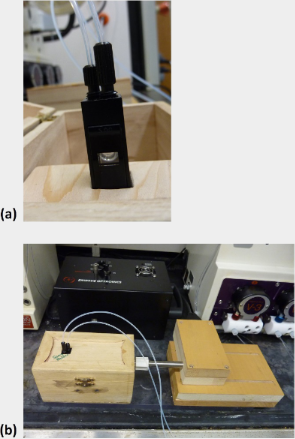 Read the publication that featured this abstract
Read the publication that featured this abstractAn apparatus is reported for real-time Raman monitoring of reactions performed using continuous-flow processing. Its capability is assessed by studying four reactions, all involving formation of products bearing α,β-unsaturated carbonyl moieties; synthesis of 3-acetylcoumarin, Knoevenagel and Claisen–Schmidt condensations, and a Biginelli reaction. In each case it is possible to monitor the reactions and also in one case, by means of a calibration curve, determine product conversion from Raman spectral data as corroborated by data obtained using NMR spectroscopy.
Continuous Flow-Processing of Organometallic Reagents Using an Advanced Peristaltic Pumping System and the Telescoped Flow Synthesis of (E/Z)-Tamoxifen
- Philip R D Murray
- Duncan L Browne
- Julio C Pastre
- Chris Butters
- Duncan Guthrie
- Steven V Ley
- Department of Chemistry, University of Cambridge, UK Instituto de Química, University of Campinas, Brazil Vapourtec Ltd, UK
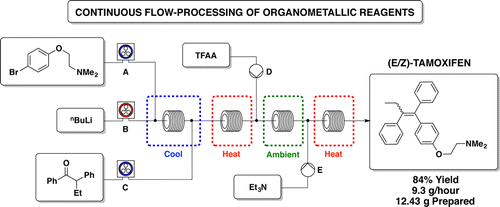 Read the publication that featured this abstract
Read the publication that featured this abstractA new enabling technology for the pumping of organometallic reagents such as n-butyllithium, Grignard reagents, and DIBAL-H is reported, which utilises a newly developed, chemically resistant, peristaltic pumping system. Several representative examples of its use in common transformations using these reagents, including metal–halogen exchange, addition, addition–elimination, conjugate addition, and partial reduction, are reported along with examples of telescoping of the anionic reaction products. This platform allows for truly continuous pumping of these highly reactive substances (and examples are demonstrated over periods of several hours) to generate multigram quantities of products. This work culminates in an approach to the telescoped synthesis of (E/Z)-tamoxifen using continuous-flow organometallic reagent-mediated transformations.
Biotransformation with whole microbial systems in a continuous flow reactor: resolution of (RS)-flurbiprofen using Aspergillus oryzae by direct esterification with ethanol in organic solvent
- Lucia Tamborinia
- Diego Romanob
- Andrea Pintoa
- Martina Contentea
- Maria C. Iannuzzia
- Paola Contia
- Francesco Molinarib
- a Dipartimento di Scienze Farmaceutiche, Universitá degli Studi di Milano, Italy
- b Dipartimento di Scienze per gli Alimenti, la Nutrizione e l'Ambiente (DEFENS), Universitá degli Studi di Milano, Italy
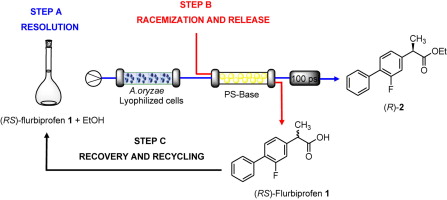 Read the publication that featured this abstract
Read the publication that featured this abstractCell-bound lipases of dry mycelium of Aspergillus oryzae were used in organic solvent for the resolution of racemic flurbiprofen by direct esterification with ethanol in a flow-chemistry reactor. Under flow conditions a significant reduction of the reaction time and an increase of the enantioselectivity were achieved compared to the batch mode. Moreover, the process was implemented by adding an in-line purification step integrated with the racemization of the unreacted flurbiprofen directly into a polymer-supported resin.
Porous, functional, poly(styrene-co-divinylbenzene) monoliths by RAFT polymerization
- Kristine J. Barlow (née Tan)
- Xiaojuan Hao
- Timothy C. Hughes
- Oliver E. Hutt
- Anastasios Polyzos
- Kathleen A. Turner
- Graeme Moad
- Commonwealth Scientific and Industrial Research Organisation (CSIRO), Materials Science & Engineering, Australia
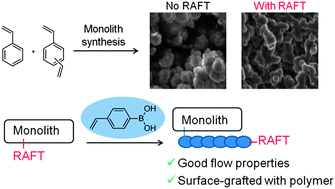 Read the publication that featured this abstract
Read the publication that featured this abstractHerein we provide the first report of a new method for the preparation of porous functional poly(styrene-co-divinylbenzene) monoliths by use of reversible addition–fragmentation chain transfer (RAFT) polymerization. The method, exemplified by styrene–divinylbenzene copolymerization in the presence of 2-cyano-2-propyl dodecyl trithiocarbonate, provides control over polymerization kinetics, monolith morphology and surface functionality. Kinetic studies of monolith formation show a period of slow copolymerization, with a rate similar to RAFT homopolymerization of styrene, followed by rapid copolymerization, with a rate similar to that observed in conventional styrene–divinylbenzene copolymerization. The time to onset of rapid polymerization (gelation) and the monolith morphology depend strongly on the RAFT agent concentration. The RAFT-synthesized monoliths show a modified morphology with smaller pores and polymer globules when compared to non-RAFT monoliths, but importantly retain good flow properties. Retention of the thiocarbonylthio group within the monolith structure in an active form for surface-functionalization of the polymeric monoliths is demonstrated by the successful RAFT “grafting from” polymerization of (4-vinylphenyl)boronic acid. These functional monoliths have potential applications in chromatography and flow chemistry.
The application of a monolithic triphenylphosphine reagent for conducting Ramirez gem-dibromoolefination reactions in flow
- Kimberley A. Roper1
- Malcolm B. Berry2
- Steven V. Ley1
- 1 Innovative Technology Centre, Department of Chemistry, University of Cambridge, Cambridge, U.K.
- 2 GlaxoSmithKline, Gunnels Wood Road, Stevenage, Hertfordshire, SG1 2NY, U.K.
 Read the publication that featured this abstract
Read the publication that featured this abstractThe application of a monolithic form of triphenylphosphine to the Ramirez gem-dibromoolefination reaction using flow chemistry techniques is reported. A variety of gem-dibromides were synthesised in high purity and excellent yield following only removal of solvent and no further off-line purification. It is also possible to perform the Appel reaction using the same monolith and the relationship between the mechanisms of the two reactions is discussed.
Continuous Flow Synthesis of Coumarin
Anbang Chen1, Xin Li1, Yangzhi Zhou1, Lingling Huang2, Zheng Fang2, Haifeng Gan1, Kai Guo1
- 1 College of Biotechnology and Pharmaceutical Engineering, Nanjing University of Technology 2 School of Pharmceutical Sciences, Nanjing University of Technology
Read the publication that featured this abstractFlow chemistry, as a rapidly emerging technology, is exploited to provide a safe and scalable route for the pharmaceutically interesting coumarin. Here, a continuous flow approach for the generation of coumarin is reported, which relies on the two connected coil reactors design. The synthesis of coumarin has been performed successfully in high conversion on small scale and can be scaled up substantially.
Synthesis of All Four Stereoisomers of 3-(tert-Butoxycarbonyl)-3-azabicyclo[3.1.0]hexane-2-carboxylic Acid
- Bettina Bakonyi†
- Markus Furegati*‡
- Christian Kramer§
- Luigi La Vecchia‡
- Flavio Ossola‡
- † Doetsch Grether AG, Falkensteinerstrasse 37, 4132 Muttenz, Switzerland
- ‡ Preparations Laboratories, Global Discovery Chemistry, Novartis Institutes for Biomedical Research, Klybeckstrasse 141, 4057 Basel,Switzerland
- § Institute of General, Inorganic and Theoretical Chemistry and Center for Molecular Biosciences Innsbruck (CMBI), University of Innsbruck, Innsbruck, Austria
 Read the publication that featured this abstract
Read the publication that featured this abstractA synthesis of all four stereoisomers of 3-(tert-butoxycarbonyl)-3-azabicyclo[3.1.0]hexane-2-carboxylic acid has been developed, thereby significantly shortening the known literature procedures for the syntheses of these unnatural amino acids. With a simple adjustment of the reaction conditions, we were able to obtain either pure cis or trans acid. Optical resolution was accomplished via diastereomeric salt formation or alternatively via chromatography on a chiral stationary phase. Finally, ab initio calculations gave an explanation for the observed cis selectivity in the initial step.
The rapid generation of isothiocyanates in flow
- Marcus Baumann
- Ian R. Baxendale
- Department of Chemistry, University of Durham, U.K.
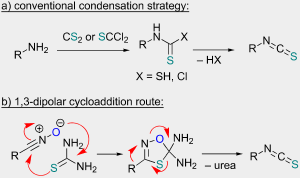 Read the publication that featured this abstract
Read the publication that featured this abstractIsothiocyanates are versatile starting materials for a wide range of chemical reactions. However, their high nucleophilic susceptibility means they are best prepared and used immediately. We report here on a flow platform for the fast and efficient formation of isothiocyanates by the direct conversion of easily prepared chloroximes. To expedite this chemistry a flow insert cartridge containing two immobilised reagents is used to affect the chemical transformation which typically eliminates the requirements for any conventional work-up or purification of the reaction stream.
Continuous synthesis of pyridocarbazoles and initial photophysical and bioprobe characterization
- D. Tyler McQuade*ab
- Alexander G. O'Briena
- Markus Dörrc
- Rajathees Rajaratnamc
- Ursula Eisoldd
- Bopanna Monnandaa
- Tomoya Nobutaa
- Hans-Gerd Löhmannsröbend
- Eric Meggersc
- Peter H. Seebergerae
- a Department for Biomolecular Systems, Max Planck Institute for Colloids and Interfaces
- b Department of bChemistry and Biochemistry, Florida State University
- c Fachbereich Chemie, Philipps-Universität Marburg
- d Potsdam Institut für Chemie
- e Freie Universität Berlin
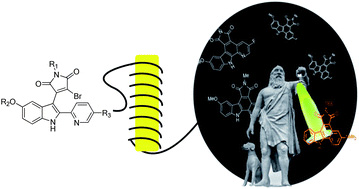 Read the publication that featured this abstract
Read the publication that featured this abstractPyridocarbazoles when ligated to transition metals yield high affinity kinase inhibitors. While batch photocyclizations enable the synthesis of these heterocycles, the non-oxidative Mallory reaction only provides modest yields and difficult to purify mixtures. We demonstrate here that a flow-based Mallory cyclization provides superior results and enables observation of a clear isobestic point. The flow method allowed us to rapidly synthesize ten pyridocarbazoles and for the first time to document their interesting photophysical attributes. Preliminary characterization reveals that these molecules might be a new class of fluorescent bioprobe.
Microwave heating and conventionally-heated continuous-flow processing as tools for performing cleaner palladium-catalyzed decarboxylative couplings using oxygen as the oxidant – a proof of principle study
Nicholas E. Leadbeater1, DiAndra M. Rudzinski1
- 1 Department of Chemistry, University of Connecticut, 55 North Eagleville Road, Storrs, CT 06269, USA
Read the publication that featured this abstractA microwave unit interfaced with a gas-loading accessory is used as a tool for facilitating the palladium-catalyzed decarboxylative Heck reaction of 2,6-dimethoxybenzoic acid and methyl acrylate, using molecular oxygen as the oxidant. The reaction is complete in less time and at a lower catalyst loading than when using conventional approaches. The reaction is scaled up using continuous-flow processing, employing a reactor in which both gas input and heating can be performed simultaneously. An 86% isolated product yield is obtained. This proof-of-principle study paves the way for the technology to be used in other cases of these increasingly popular decarboxylative coupling reactions.
Hypervalent iodine/TEMPO-mediated oxidation in flow systems: a fast and efficient protocol for alcohol oxidation
Nida Ambreen, Ravi Kumar, Thomas Wirth
- Innovative Technology Centre, Cardiff University, School of Chemistry, Park Place, Cardiff, UK
Read the publication that featured this abstractAryl- and heteroarylcyclobutenone rearrangements proceed in excellent yield under continuous-flow conditions. The former shows a Hammett correlation with σI providing strong evidence that electrocyclisation is the rate-determining step and has a late transition state. The reaction has been modelled by using DFT and CCSD(T) methods, with the latter giving excellent correlation with the experimental rate constant. A short and efficient total synthesis of cribrostatin 6, an anti-neoplastic and anti-microbial agent, provides a topical demonstration of the value of this method.
First Example of Alkyl-Aryl Negishi Cross-Coupling in Flow: Mild, Efficient and Clean Introduction of Functionalized Alkyl Groups
- Brecht Egle2
- Juan de Muñoz1
- Nerea Alonso1
- Wim M. De Borggraeve2
- Antonio de la Hoz3
- Angel Díaz-Ortiz3
- Jesús Alcázar1
- 1Janssen Research and Development Department of Medicinal Chemistry Janssen-Cilag, Toledo Spain
- 2Department of Chemistry, Molecular Design and Synthesis University of Leuven, Heverlee Belgium
- 3Universidad de Castilla-La Mancha Facultad de Ciencias y Tecnologías Químicas, Spain
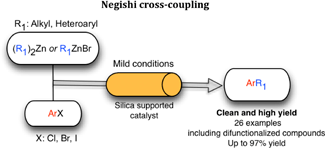 Read the publication that featured this abstract
Read the publication that featured this abstractThe first example of an alkyl–aryl Negishi coupling in a practical, sustainable, and high-yielding process using a silica-supported catalyst in flow is described. Excellent conversions and good functional group compatibility were obtained under very mild conditions. Functionalized alkyl groups were also introduced to provide access to synthetically useful molecules and to demonstrate the versatility of the method. The scalability was assessed, and a throughput of 7.5 mmol/h of processed substrate was achieved. All crude products were free from phosphine derivatives and ready for use in subsequent reaction steps.
Controlled synthesis of poly(3-hexylthiophene) in continuous flow
- Helga Seyler
- Jegadesan Subbiah
- David J. Jones
- Andrew B. Holmes
- Wallace W. H. Wong*
- School of Chemistry, Bio21 Institute, University of Melbourne, 30 Flemington Road, Parkville, Victoria 3010, Australia
- *Corresponding author
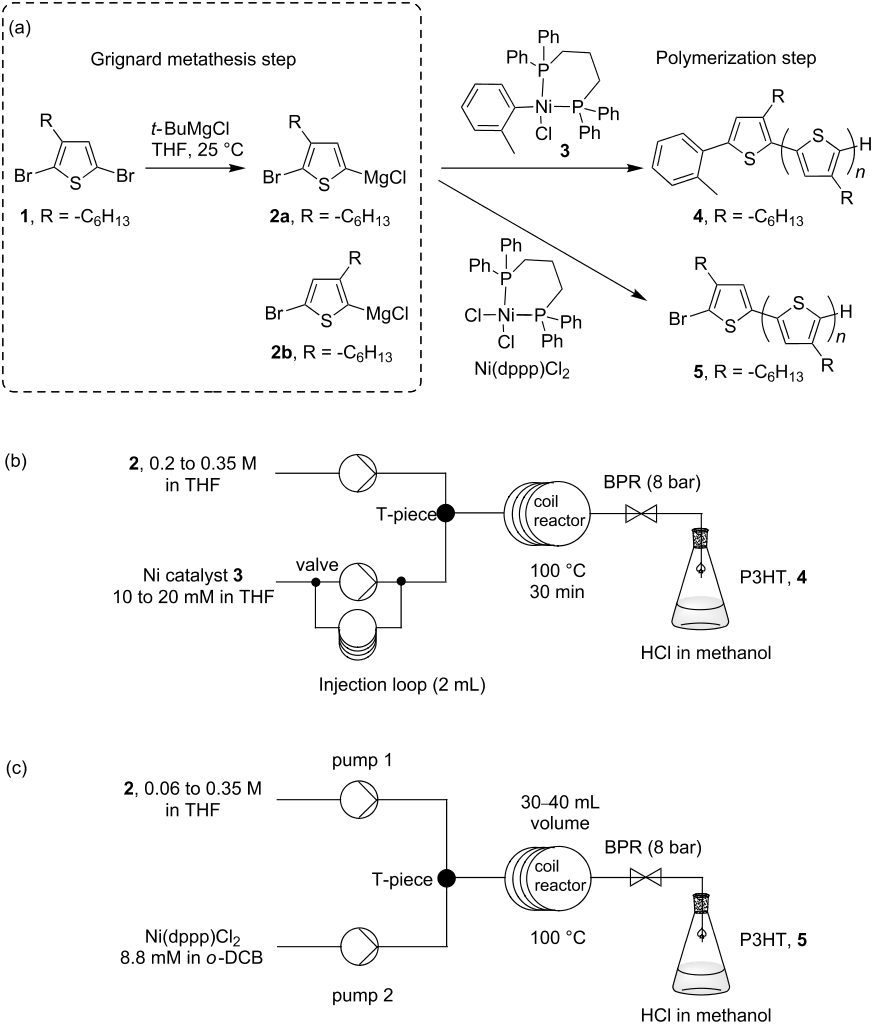 Read the publication that featured this abstract
Read the publication that featured this abstractThere is an increasing demand for organic semiconducting materials with the emergence of organic electronic devices. In particular, large-area devices such as organic thin-film photovoltaics will require significant quantities of materials for device optimization, lifetime testing and commercialization. Sourcing large quantities of materials required for the optimization of large area devices is costly and often impossible to achieve. Continuous-flow synthesis enables straight-forward scale-up of materials compared to conventional batch reactions. In this study, poly(3-hexylthiophene), P3HT, was synthesized in a bench-top continuous-flow reactor. Precise control of the molecular weight was demonstrated for the first time in flow for conjugated polymers by accurate addition of catalyst to the monomer solution. The P3HT samples synthesized in flow showed comparable performance to commercial P3HT samples in bulk heterojunction solar cell devices.
Integrated Synthesis and Testing of Substituted Xanthine Based DPP4 Inhibitors: Application to Drug Discovery
- Werngard Czechtizky
- Jurgen Dedio
- Bimbisar Desai
- Karen Dixon
- Elizabeth Farrant
- Qixing Feng Trevor Morgen
- David M Parry
- Manoj K. Ramjee
- Christopher N. Selway
- Thorsten Schmidt
- Gary J. Tarver
- Adrian G. Wright
- Sanofi-Aventis, Frankfurt, Germany. Cyclofluidic Ltd., U.K.
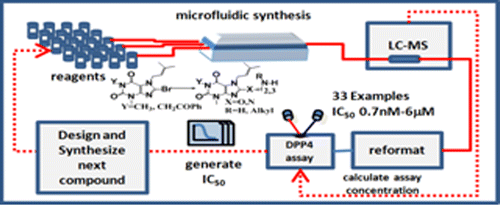 Read the publication that featured this abstract
Read the publication that featured this abstractA novel integrated discovery platform has been used to synthesize and biologically assay a series of xanthine-derived dipeptidyl peptidase 4 (DPP4) antagonists. Design, synthesis, purification, quantitation, dilution, and bioassay have all been fully integrated to allow continuous automated operation. The system has been validated against a set of known DPP4 inhibitors and shown to give excellent correlation between traditional medicinal chemistry generated biological data and platform data. Each iterative loop of synthesis through biological assay took two hours in total, demonstrating rapid iterative structure–activity relationship generation.
Applying Flow Chemistry: Methods, Materials, and Multistep Synthesis
- D. Tyler McQuade1 3
- Peter H. Seeberger1 2
- 1 Department of Biomolecular Systems, Max Planck Institute of Colloids and Interfaces
- 2 Institute for Chemistry and Biochemistry, Freie Universität Berlin,
- 3 Department of Chemistry and Biochemistry, Florida State University
 Read the publication that featured this abstract
Read the publication that featured this abstractThe synthesis of complex molecules requires control over both chemical reactivity and reaction conditions. While reactivity drives the majority of chemical discovery, advances in reaction condition control have accelerated method development/discovery. Recent tools include automated synthesizers and flow reactors. In this Synopsis, we describe how flow reactors have enabled chemical advances in our groups in the areas of single-stage reactions, materials synthesis, and multistep reactions. In each section, we detail the lessons learned and propose future directions.
Continuous flow macrocyclization at high concentrations: synthesis of macrocyclic lipids
Anne-Catherine Bédard, Sophie Régnie, Shawn K. Collins
- Département de Chimie, Centre for Green Chemistry, Catalysis, Université de Montréal, Montréal, Canada
Read the publication that featured this abstractA phase separation/continuous flow macrocyclization protocol eliminates the need for high-dilution conditions and can be used to prepare gram quantities of biologically relevant macrocyclic lipid structures. The method presents several green advantages towards macrocycle synthesis: (1) the prevention of unwanted oligomers and waste, (2) a reduction in the large quantities of toxic, volatile organic solvents and (3) the use of PEG as an environmentally benign reaction media. Macrocycles could be synthesized in high yields (up to 99%) in short reaction times (1.5 h) and on gram scales without the need to alter the reaction conditions.
Continuous Synthesis and Use of N-Heterocyclic Carbene Copper(I) Complexes from Insoluble Cu2O
- Suzanne M. Opalka1
- Jin Kyoon Park3
- Ashley R. Longstreet2
- D. Tyler McQuade2
- 1Department of Chemistry and Biochemistry, Florida State University, USA
- 2Department of Chemistry and Chemical Biology, Cornell University, USA
- 3Department of Chemistry and Chemical Institute for Functional Materials, Pusan National University, Korea
 Read the publication that featured this abstract
Read the publication that featured this abstractIt is demonstrated that homogeneous N-heterocyclic carbene–copper(I)-chloride complexes can be prepared continuously by flowing NHC precursors through a packed bed of solid Cu2O suspended in molecular sieves. The method enables the synthesis of a wide range of complexes including those that are challenging to prepare using standard approaches. Our strategy enables both sustained output of complex production for long-term catalytic reactions (greater than 5 h) and for generation of gram quantities for storage (greater than 1 g of complex in ∼16 min).
Ozonolysis of some complex organic substrates in flow
- M. D. Roydhouse1
- W. B. Motherwell1
- A. Constantinou2
- A. Gavriilidis2
- R. Wheeler3
- K. Down3
- I. Campbell3
- 1Dept of Chemistry, University College London, UK
- 2Dept of Chemical Engineering, University College London, UK
- 3GSK, Stevenage, UK
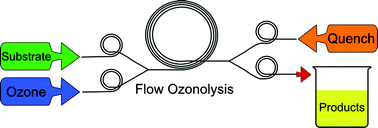 Read the publication that featured this abstract
Read the publication that featured this abstractThe ozonolysis of several organic substrates to give carbonyl compounds, carboxylic acids and nicotinic acids in flow using a standard lab-scale flow system equipped with a cooled flow cell was examined. Alkyl and aryl alkenes showed good conversion (49–99%) to the corresponding aldehydes and ketones utilising an “in flow” quench of triphenylphosphine. The ozonolysis of either 2 or 3-substituted furans obtained furnished a variety of carboxylic acids including the pharmaceutically important oxetane-3-carboxylic acids in two steps from furan and oxetan-3-one. Substituted benzoic acids were generated with high yields in two steps from aryl iodides. The non-selective ozonolysis of quinolines is known to give 2,3-dicarbonyl substituted pyridines, herein we report the selective ozonolysis of 8-hydroquinoline to give 3-[(1E)-3-oxoprop-1-en-1-yl]pyridine-2-carboxylic acid using flow techniques.
Synthesis of Carbohydrate-Functionalised Sequence-Defined Oligo(amidoamine)s by Photochemical ThiolEne Coupling in a Continuous Flow Reactor
Felix Wojcik1,2, Alexander G. O'Brien1,2, Sebastian Götze1,2, Peter H. Seeberger1,2, Laura Hartmann1,2
- 1Department of Biomolecular Systems, Max Planck Institute of Colloids and Interfaces, Potsdam (Germany)
- 2Institute for Chemistry and Biochemistry, Freie Universität Berlin, Berlin (Germany)
Read the publication that featured this abstractPoly/oligo(amidoamine)s (PAAs) have recently been recognised for their potential as well-defined scaffolds for multiple carbohydrate presentation and as multivalent ligands. Herein, we report two complimentary strategies for the preparation of such sequence-defined carbohydrate-functionalised PAAs that use photochemical thiol[BOND]ene coupling (TEC) as an alternative to the established azide–alkyne cycloaddition (“click”) reaction. In the first approach, PAAs that contained multiple olefins were synthesised on a solid support from a new building block and subsequent conjugation with unprotected thio-carbohydrates. Alternatively, a pre-functionalised building block was prepared by using TEC and assembled on a solid support to provide a carbohydrate-functionalised PAA. Both methods rely on the use of a continuous flow photoreactor for the TEC reactions. This system is highly efficient, owing to its short path length, and requires no additional radical initiator. Performing the reactions at 254 nm in Teflon AF-2400 tubing provides a highly efficient TEC procedure for carbohydrate conjugation, as demonstrated in the reactions of O-allyl glycosides with thiols. This method allowed the complete functionalisation of all of the reactive sites on the PAA backbone in a single step, thereby obtaining a defined homogeneous sequence. Furthermore, reaction at 366 nm in FEP tubing in the flow reactor enabled the large-scale synthesis of an fluorenylmethyloxycarbonyl (Fmoc)-protected glycosylated building block, which was shown to be suitable for solid-phase synthesis and will also allow heterogeneous sequence control of different carbohydrates along the oligomeric backbone. These developments enable the synthesis of sequence-defined carbohydrate-functionalised PAAs with potential biological applications.
Continuous-flow generation of diazoesters and their direct use in S-H and P-H insertion reactions: synthesis of a-sulfanyl, a-sulfonyl and a-phosphono carboxylates
- Hannah E. Bartrum1
- David C. Blakemore2
- Christopher J. Moody1
- Christopher J. Hayes1
- 1School of Chemistry, University of Nottingham, University Park, Nottingham, NG7 2RD, UK
- 2Pfizer Neusentis, The Portway Building, Granta Park, Cambridge, CB21 6GS, UK
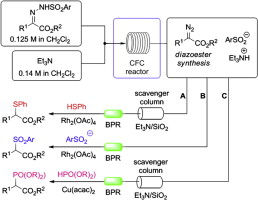 Read the publication that featured this abstract
Read the publication that featured this abstractThe synthesis of α-sulfanyl, α-sulfonyl, and α-phosphono carboxylates has been achieved using a two-step procedure involving the in-flow generation of diazoesters from sulfonylhydrazones, via Bamford–Stevens elimination, and then subsequent S–H, sulfinate, and P–H carbene insertion reactions. The method for α-sulfonyl ester is particularly noteworthy as it represents a very atom economic (‘green’) way to access the products, and it completely avoids the use of alkyl halides.
Synthesis of RAFT Block Copolymers in a Multi-Stage Continuous Flow Process Inside a Tubular Reactor
- Christian H. Hornung
- Xuan Nguyen
- Stella Kyi
- John Chiefari
- Simon Saubern
- CSIRO Materials Science & Engineering, Victoria, Australia.
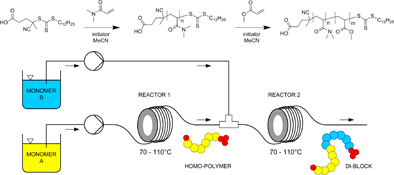 Read the publication that featured this abstract
Read the publication that featured this abstractThis work describes a multi-stage continuous flow polymerisation process for the synthesis of block copolymers using the RAFT polymerization method. The process retains all the benefits and versatility of the RAFT method and has been adapted for a series of monomer combinations, including acrylates, acrylamides, and vinyl monomers. It resulted in polymers with molecular weights between 13500 and 34100 g mol–1, and dispersities typically between 1.21 and 1.58. Different architectures were prepared (including combinations of hydrophilic and hydrophobic blocks) which are soluble in a range of different solvents including aqueous and organic media.
An expeditious synthesis of imatinib and analogues utilising flow chemistry methods
- Mark D Hopkin
- Ian Baxendale
- Steven.V.Ley
- Dept of Chemistry, University of Cambridge, UK
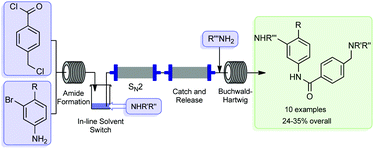 Read the publication that featured this abstract
Read the publication that featured this abstractA flow-based route to imatinib, the API of Gleevec, was developed and the general procedure then used to generate a number of analogues which were screened for biological activity against Abl1. The flow synthesis required minimal manual intervention and was achieved despite the poor solubility of many of the reaction components.
A Multi-Step Continuous Flow Process for the N-Demethylation of Alkaloids
- Yuji Nakano1
- G. Paul Savage1
- Simon Saubern1
- Peter J. Scammells2
- Anastasios Polyzos1
- 1 CSIRO Materials Science and Engineering, Victoria, Australia.
- 2 Medicinal Chemistry, Monash Institute of Pharmaceutical Sciences, Monash University, Victoria, Australia.
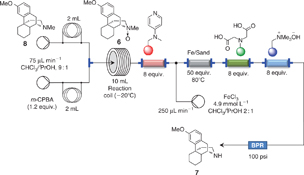 Read the publication that featured this abstract
Read the publication that featured this abstractDextromethorphan was N-demethylated using the non-classical Polonovski reaction under continuous flow conditions, in two steps: initial N-oxidation with m-chloroperbenzoic acid followed by iron-catalysed N-demethylation of the resulting N-oxide.
A Two-Stage Continuous-Flow Synthesis of Spirooxazine Photochromic Dyes
- Mark York123
- Adriana Edenharter1
- 1CSIRO Materials Science and Engineering, Clayton, Vic. 3169, Australia.
- 2Cooperative Research Centre for Polymers, Notting Hill, Vic. 3168, Australia.
- 3Advanced Polymerik Pty Ltd, Notting Hill, Vic. 3168, Australia.
 Read the publication that featured this abstract
Read the publication that featured this abstractA continuous-flow process for the synthesis of several known and previously unreported spirooxazine photochromic dyes is reported. The process proceeds via an initial copper catalysed addition of substituted anilines to naphthalene-1,2-dione. This is followed by reaction with 1,3,3-trimethyl-2-methyleneindoline in the presence of hydroxylamine hydrochloride to give the desired spirooxazine products. The photochromic dyes were then cast into lenses to allow a preliminary evaluation of their properties.
Continuous Flow Synthesis of Organic Electronic Materials : Case Studies in Methodology Translation and Scale-up
- Helga Seyler1
- Stefan Haid2
- Tae-Hyuk Kwon1
- David J. Jones1
- Peter Bäuerle2
- Andrew B. Holmes1
- Wallace W. H. Wong1*
- 1Bio21 Institute, University of Melbourne, Australia.
- 2Institute of Organic Chemistry II and Advanced Materials, University of Ulm, Germany.
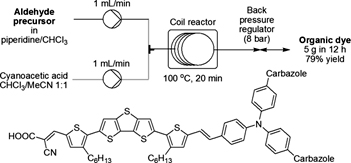 Read the publication that featured this abstract
Read the publication that featured this abstractThe continuous flow synthesis of functional thiophene derivatives was examined. Methodology for the lithiation of thiophene building blocks was developed using a commercial bench-top flow reactor. In addition, the advantages of flow processing were demonstrated in the synthesis of a high performance organic dye in gram scale.
Preparation of Arene Chromium Tricarbonyl Complexes Using Continuous-Flow Processing: (n6-C6H5CH3)Cr(CO)3 as an example
- Christopher (Xiang) Lee1
- Elizabeth A. Pedrick1
- Nicholas E. Leadbeater1
- 1Department of Chemistry, University of Connecticut, USA
- 2Department of Community Medicine and Health Care, University of Connecticut Health Center, USA
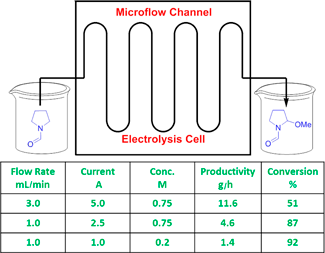 Read the publication that featured this abstract
Read the publication that featured this abstractA continuous-flow approach to the direct synthesis of arene chromium tricarbonyl complexes is presented. By working in flow mode, it is possible to avoid some of the problems of batch synthesis, especially sublimation of the Cr(CO)6 starting material and the competitive decomposition of the product during the lengthy reaction times. Heating at 220 °C and operating with a residence time of 10 min through the heated zone allows for the synthesis of (η6-C6H5CH3)Cr(CO)3 as an example, along with a selection of other (arene)Cr(CO)3 complexes.
Visible Light-Initiated Preparation of Functionalized Polystyrene Monoliths for Flow Chemistry
- Farhan R. Bou-Hamdan1
- Kathleen Krüger1, Klaus Tauer1, Tyler McQuade1,3 , Peter H. Seeberger 1,2
- 1Max Planck Institute of Colloids and Interfaces Potsdam, Germany.
- 2Institute of Chemistry and Biochemistry, Freie Universität Berlin , Germany.
- 3Department of Chemistry and Biochemistry, Florida State University, USA.
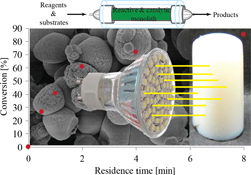 Read the publication that featured this abstract
Read the publication that featured this abstractStyrenic monoliths are produced using a novel visible light-initiated method. Monoliths with varying pore sizes are produced using 1-dodecanol and 1-dodecanol/THF mixtures and it was demonstrated that the more volatile i-PrOH can replace 1-dodecanol while still providing the same porogenic properties. In addition, the visible light-initiation protocol enables the facile incorporation of monomers that are incompatible with thermal or UV-initiated monolith formation methods. In particular, a reactive N-hydroxysuccinimidyl (NHS)-ester can be incorporated into the monolith and then subsequently used as an attachment point for a catalyst. Lastly, we demonstrate that the functionalized monolith supports acylation reactions well and that the loading of the catalyst impacts the reaction rate.
Integrated Continuous Processing and Flow Characterization of RAFT Polymerization in Tubular Flow Reactors
- Christian H. Hornung
- Xuan Nguyen
- Geoff Dumsday
- Simon Saubern*
- CSIRO Materials Science and Engineering, Victoria. Australia
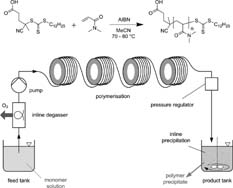 Read the publication that featured this abstract
Read the publication that featured this abstractSeveral unit operations are combined in series to form an integrated, continuous polymerization process; namely inline degassing of monomer stock solution prior to reaction, polymerization using the RAFT approach and precipitation after reaction to form a solid polymeric product. The polymerization is conducted at 70–80 °C with reaction times of 30–90 min in a stainless steel tubular flow reactor, yielding poly(acrylamide) at high conversion (typically >90%) and with a low polydispersity of 1.14–1.23. The axial dispersion occurring inside the tubular flow reactor during polymerization is characterized by reaction profiling using a series of NMR samples. The process can be scaled up to a total output of 1.36 kg of polymer per day on this laboratory-scale reactor.
Synthesis of an H3 Antagonist via Sequential One-Pot Additions of a Magnesium Ate Complex and an Amine to a 1,4-Ketoester followed by Carbonyl-Directed Fluoride Addition
- Joel M. Hawkins
- Pascal Dubé
- Mark T. Maloney
- Lulin Wei. Marcus Ewing
- Stephen M. Chesnut
- Joshua R. Denette
- Brett M. Lillie
- Rajappa Vaidyanathan
- Pharmaceutical Sciences, Pfizer Inc., Groton, USA
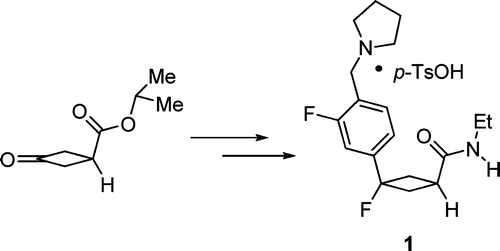 Read the publication that featured this abstract
Read the publication that featured this abstractWe describe the development of an efficient and scalable process for the preparation of fluorocyclobutane-containing H3 antagonist, 1. The synthesis was accomplished by the chemoselective addition of a magnesium ate complex and an amine to a 1,4-ketoester in a one-pot sequence, followed by a diastereoselective carbonyl-directed fluorination. The chemoselective addition of the magnesium ate complex to the ketoester benefited from tight stoichiometric control, short addition times, and lower reaction temperatures, and thus was amenable to rapid mixing and excellent heat transfer in a flow reactor.
A “Catch-React-Release” Method for the Flow Synthesis of 2-Aminopyrimidines and Preparation of the Imatinib Base
- Richard J. Ingham
- Elena Riva
- Nikzad Nikbin
- Ian R. Baxendale
- Steven V. Ley*
- Innovative Technology Centre, University of Cambridge, U.K.
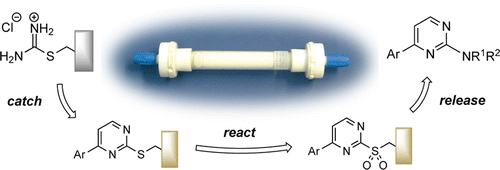 Read the publication that featured this abstract
Read the publication that featured this abstractThe development of a monolith-supported synthetic procedure is reported, taking advantage of flow processing and the superior flow characteristics of monolithic reagents over gel-phase beads, to allow facile access to an important family of 2-aminopyrimidine derivatives. The process has been successfully applied to a key precursor on route to Imatinib (Ar = 3-pyridyl, R1 = 2-methyl-5-nitrobenzyl, R2 = H).
Sustainable and efficient methodology for CLA synthesis and identification
- Andres Moreno
- Maria Moreno
- Maria Victoria Gómez
- Cristina Cebrian
- Pilar Prieto
- Antonio de la Hoz
- Departamento de Química Inorgánica, , Universidad de Castilla-La Mancha, Ciudad Real, Spain.
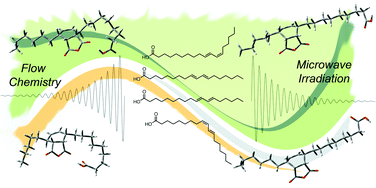 Read the publication that featured this abstract
Read the publication that featured this abstractMicrowave-assisted organic synthesis and continuous-flow techniques have been successfully employed for the preparation of conjugated linoleic acids (CLA), compounds with high health beneficial effects. A good production rate of CLA was obtained. A sustainable methodology for the differentiation of both positional and geometrical CLA isomers (diene), based on the analysis by NMR spectroscopy of the resulting Diels–Alder cycloadducts with an appropriate dienophile, was developed.
A Continuous Flow Process for the Radical Induced End Group Removal of RAFT Polymers
- Christian H. Hornung
- Almar Postma
- Simon Saubern
- John Chiefari
- CSIRO Materials Science & Engineering, Victoria Australia
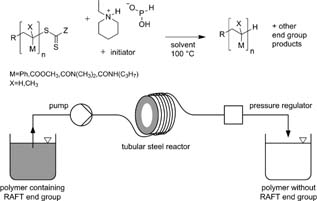 Read the publication that featured this abstract
Read the publication that featured this abstractA continuous flow process for the radical-induced end-group removal of polymers made by a RAFT process is described. A series of different monomers, including acrylamides, methacrylate, and styrene are polymerized at 70–100 °C using various different RAFT agents, solvents, and radical initiators. The subsequent end group removal process is carried out in a steel tube flow reactor system at 100 °C in organic solvents or water. After reaction, the polymers exhibit low polydispersities between 1.03 and 1.19, and average molecular weights between 7500 and 22 800 g · mol−1. This continuous flow approach provides a facile alternative scale-up route to conventional batch operation and can be integrated into a sequential flow process consisting of RAFT polymerization followed by post-treatment.
Continuous Synthesis and Purification by Direct Coupling of a Flow Reactor with Simulated Moving-Bed Chromatography
- Alexander G. O’Brien1
- Zoltán Horváth3
- François Lévesque1
- Ju Weon Lee3
- Andreas Seidel-Morgenstern3
- Peter H. Seeberger1,2
- 1Department for Biomolecular Systems, Max-Planck Institute for Colloids and Interfaces, Potsdam, Germany
- 2Freie Universität Berlin, Germany
- 3Max-Planck Institute for Dynamics of Complex Technical Systems, Magdeburg, Germany
 Read the publication that featured this abstract
Read the publication that featured this abstractContinuous synthesis meets continuous purification to produce pure products from crude reaction mixtures. In the nucleophilic aromatic substitution of 2,4-difluoronitrobenzene with morpholine the desired monosubstituted product can be continuously separated from the byproducts in a purity of over 99 % by coupling a flow reactor to a simulated moving bed (SMB) chromatography module (see scheme).
Asymmetric Homogeneous Hydrogenation in Flow using a Tube-in-Tube Reactor
Sean Newton1, Steven V. Ley1, Eva Casas Arcé2, Damian M. Grainger2
- 1Department of Chemistry, University of Cambridge, U.K.
- 2Johnson Matthey Catalysis and Chiral Technology, Cambridge, U.K.
Read the publication that featured this abstractIn this update, the asymmetric homogeneous hydrogenation of a number of trisubstituted olefins utilizing the recently developed tube-in-tube gas-liquid flow reactor is described. A number of chiral iridium- and rhodium-based catalysts and other parameters such as pressure, solvent, temperature and catalyst loading were screened. The advantage of the flow set-up for rapid screening and optimization of reaction parameters is illustrated. Furthermore, a comparative study using batch conditions aided in the optimization of the flow reaction set-up. The set-up was further modified to recycle the catalyst which prolonged catalytic activity.
Continuous Flow Synthesis of Secondary Amides by Tandem Azidation- Amidation of Anilines
- Christian Spiteri
- John E. Moses*
- School of Chemistry, University of Nottingham, UK
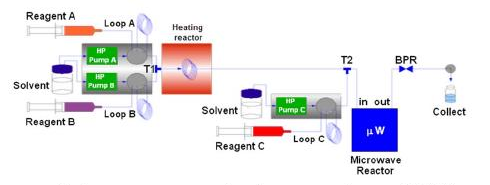 Read the publication that featured this abstract
Read the publication that featured this abstractThe continuous flow synthesis of a variety of secondary amides by tandem azidation–amidation of anilines is described. This new procedure benefits from the improved safety feature of generating aromatic azides in flow, thus ensuring low concentrations of any potentially hazardous intermediates. The protocol was amenable to the production of multi-gram quantities of the amide product.
Continuous Flow Hydrogenation Using an On-Demand Gas Delivery Reactor
- Michael A. Mercadante
- Christopher B. Kelly
- Christopher (Xiang) Lee
- Nicholas E. Leadbeater*
- Department of Chemistry, University of Connecticut, USA
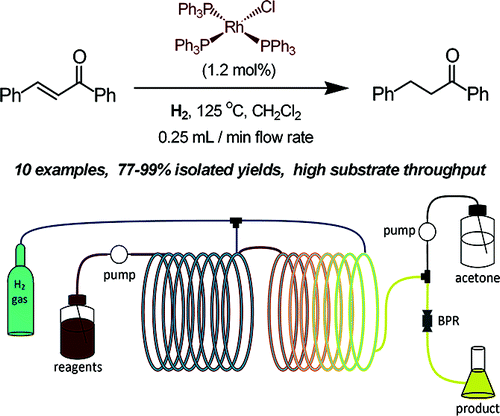 Read the publication that featured this abstract
Read the publication that featured this abstractA continuous-flow approach to the hydrogenation of alkenes utilizing Wilkinson’s catalyst is reported. The approach relies on a newly developed coil design in which it is possible to load gas and heat the reaction mixture simultaneously. The hydrogenation of various substrates has been performed successfully on small scale and can be scaled up substantially.
Continuous flow synthesis and scale-up of glycine- and taurine-conjugated bile salts
- Francesco Venturoni
- Antimo Gioiello
- Roccaldo Sardella
- Benedetto Natalini
- Roberto Pellicciari
- Dipartimento di Chimica e Tecnologia del Farmaco, Università di Perugia, Italy
 Read the publication that featured this abstract
Read the publication that featured this abstractA multi-gram scale protocol for the N-acyl amidation of bile acids with glycine and taurine has been successfully developed under continuous flow processing conditions. Selecting ursodeoxycholic acid (UDCA) as the model compound and N-ethoxycarbonyl-2-ethoxy-1,2-dihydroquinoline (EEDQ) as the condensing agent, a modular mesoreactor assisted flow set-up was employed to significantly speed up the optimization of the reaction conditions and the flow scale-up synthesis. The results in terms of yield, in line purification, analysis, and implemented flow set-up for the reaction optimization and large scale production are reported and discussed.
Phase-Transfer Catalysis under Continuous Flow Conditions: An Alternative Approach to the Biphasic Liquid/Liquid O-Alkylation of Phenols
- Daniele De Zani2
- Matteo Colombo1
- 1NiKem Research 20021 via Zambeletti 25 Milan Baranzate Italy
- 2Erregierre, San Paolo D'Argon Bergamo Italy
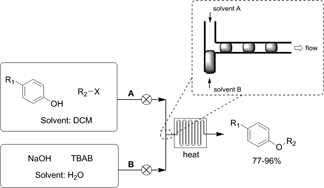 Read the publication that featured this abstract
Read the publication that featured this abstractO-Alkylation of phenol compounds was performed in a continuous flow apparatus under biphasic liquid/liquid conditions and promoted by tetrabutylammonium bromide (TBAB) as a phase-transfer catalyst. The segmented flow that is generated within the flow system is able to afford the desired ethers in high yield and in very short times.
An efficient method for the lipase-catalysed resolution and in-line purification of racemic flurbiprofen in a continuous-flow reactor
- Lucia Tamborini1
- Diego Romano2
- Andrea Pinto1
- Arianna Bertolani1,2
- Francesco Molinari2
- Paola Conti1
- 1Dipartimento di Scienze Farmaceutiche ‘Pietro Pratesi’, Universitá degli Studi di Milano, Italy
- 2Dipartimento di Scienze e Tecnologie Alimentari e Microbiologiche, Universitá degli Studi di Milano, Italy
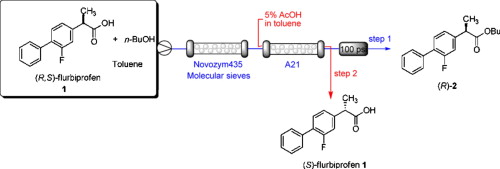 Read the publication that featured this abstract
Read the publication that featured this abstractThe lipase-catalysed kinetic resolution of flurbiprofen was performed in a flow-chemistry reactor allowing for a significant reduction of the reaction time compared to the classical batch method. The process was implemented by adding an in-line purification step of the exiting solution, consisting in a catch and release protocol, which allows easy separation and recovery of both (S)-flurbiprofen and (R)-flurbiprofen butyl ester with an enantiomeric excess ≥90% and a chemical purity >98%.
Development of a Continuous Flow Scale-Up Approach of Reflux Inhibitor AZD6906
- Tomas Gustafsson
- Henrik Sörensen
- Fritiof Pontén*
- Medicinal Chemistry, AstraZeneca R&D Mölndal, Sweden
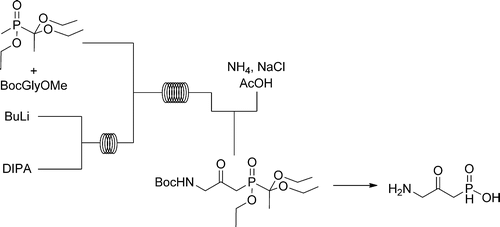 Read the publication that featured this abstract
Read the publication that featured this abstractEarly scale-up work of a promising reflux inhibitor AZD6906 is described. Two steps of an earlier route were adapted to be performed in continuous flow to avoid issues related to batch procedures, resulting in a robust method with reduced cost of goods and improved product quality. Toxic and reactive reagents and starting materials could be handled in a flow regime, thereby allowing safer and more convenient reaction optimization and production.
Soluble Polymer-Supported Flow Synthesis: A Green Process for the Preparation of Heterocycles
Nicolò Prosa, Raphaël Turgis, Riccardo Piccardi, Marie-Christine Scherrmann
- Institut de Chimie Moléculaire et des Matériaux d'Orsay, Université Paris-Sud, France
Read the publication that featured this abstractPEG-supported aqueous flow synthesis coupled with ultrafiltration as the separation technique has been investigated for the first time. This strategy was applied to the preparation of new 3,4-dihydropyrimidin-2(1H)-ones, tetrazoles and tetrahydro-1,3-oxazines from the same PEG-linked aldehyde as case studies. Dihydropyrimidinones were prepared by a copper(II)-catalysed Biginelli reaction whereas a new tetrazole-containing compound was obtained by Baylis–Hillman reaction followed by reduction and 1,3-dipolar cycloaddition. Finally, various new tetrahydro-1,3-oxazines were prepared by a four-step synthesis, that is, Baylis–Hillman reaction, Michael addition of amines, cyclization with formaldehyde and hydrolysis of the linkage to PEG. The use of water during the synthesis and most of the purification steps, as well as the benefits of the flow process in terms of improved safety and heat transfer agree with the principles of green chemistry.
Scale-Up of Flow-Assisted Synthesis of C2-Symmetric Chiral PyBox Ligands
Claudio Battilocchio1,3, Marcus Baumann1, Ian R. Baxendale1, Mariangela Biava3, Matthew O. Kitching1, Steven V. Ley1, Rainer E. Martin*2, Stephan A. Ohnmacht2, Nicholas D. C. Tappin1
- 1Department of Chemistry, University of Cambridge, UK
- 2F. Hoffmann-La Roche Ltd., Pharmaceuticals Division, Basel, Switzerland
- 3Department of Pharmaceutical Chemistry and Technology, Sapienza University of Rome, Italy
Read the publication that featured this abstractA series of PyBox ligands were prepared from commercially available chelidonic acid by a multistep flow sequence using mesoreactor technology. A chloro group introduced onto the ligand scaffold was subsequently exploited to give amine derivatives ready for immobilization through microencapsulation technologies.
Continuous-Flow Synthesis of the Anti-Malaria Drug Artemisinin
- François Lévesque1
- Peter H. Seeberger1,2
- 1Department for Biomolecular Systems, Max-Planck Institute for Colloids and Interfaces, Germany
- 2Institute for Chemistry and Biochemistry, Freie Universität Berlin, Germany
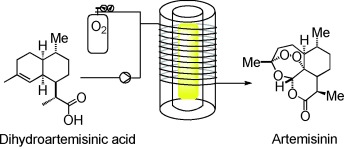 Read the publication that featured this abstract
Read the publication that featured this abstractMalaria is a serious global health issue. Artemisinin combination treatments are the first-line drugs, but supplies are limited because artemisinin is obtained solely by extraction from Artemisia annua. A continuous-flow process that converts dihydroartemisinic acid into artemisinin (see scheme) was shown to be an inexpensive and scalable process that can ensure a steady, affordable supply of artemisinin.
The Continuous-Flow Synthesis of Carboxylic Acids using CO2 in a Tube-In-Tube Gas Permeable Membrane Reactor
- Anastasios Polyzos
- Matthew O’Brien
- Trine P. Petersen
- Ian R. Baxendale
- Steven V. Ley
- Innovative Technology Centre, Department of Chemistry, University of Cambridge
 Read the publication that featured this abstract
Read the publication that featured this abstractKeep it simple: A gas–liquid flow reactor has been developed based on a gas permeable tube-in-tube configuration which effectively delivers gas to a liquid substrate stream in a safe, continuous fashion. A series of carboxylic acids were prepared from the reaction of CO2 with a range of Grignard reagents (see picture).
Continuous proline catalysis via leaching of solid proline
- Suzanne M. Opalka1
- Ashley R. Longstreet2
- D. Tyler McQuade2
- 1Department of Chemistry and Chemical Biology, Cornell University, USA
- 2Department of Chemistry and Biochemistry, Florida State University,USA
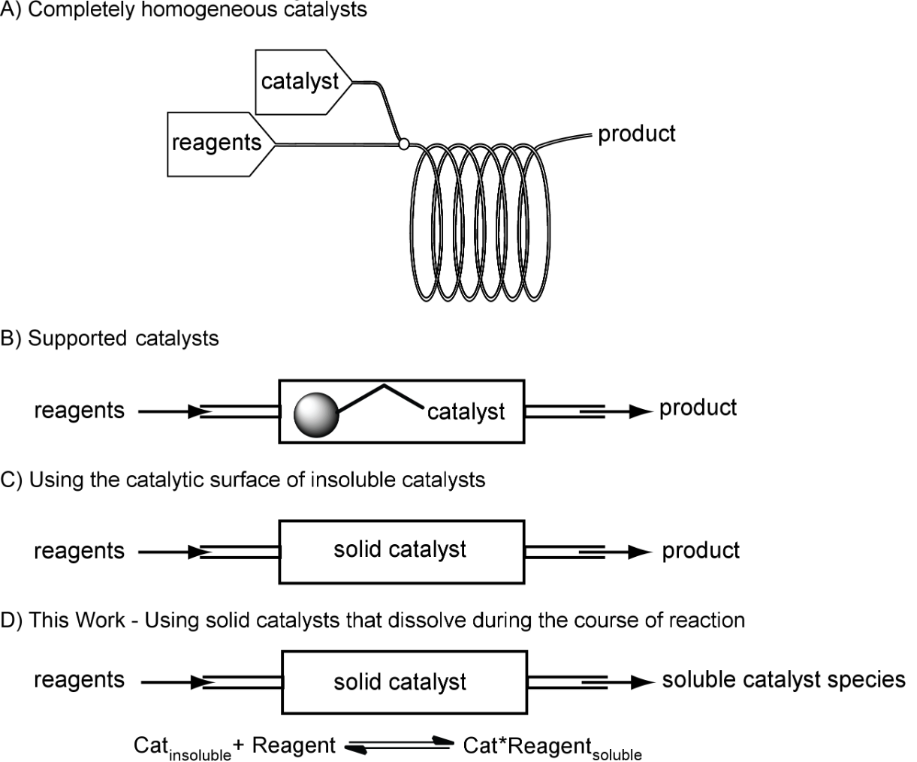 Read the publication that featured this abstract
Read the publication that featured this abstractHerein, we demonstrate that a homogeneous catalyst can be prepared continuously via reaction with a packed-bed of a catalyst precursor. Specifically, we perform continuous proline catalyzed α-aminoxylations using a packed-bed of L-proline. The system relies on a multistep sequence in which an aldehyde and thiourea additive are passed through a column of solid proline, presumably forming a soluble oxazolidinone intermediate. This transports a catalytic amount of proline from the packed-bed into the reactor coil for subsequent combination with a solution of nitrosobenzene, affording the desired optically active α-aminooxy alcohol after reduction. To our knowledge, this is the first example in which a homogeneous catalyst is produced continuously using a packed-bed. We predict that the method will not only be useful for other L-proline catalyzed reactions, but we also foresee that it could be used to produce other catalytic species in flow.
The application of a monolithic triphenylphosphine reagent for conducting Appel reactions in flow microreactors
- Kimberley A. Roper1
- Heiko Lange1
- Anastasios Polyzos1
- Malcolm B. Berry2
- Ian R. Baxendale1
- Steven V. Ley1
- 1Innovative Technology Centre, University of Cambridge
- 2GlaxoSmithKline, Stevenage, UK
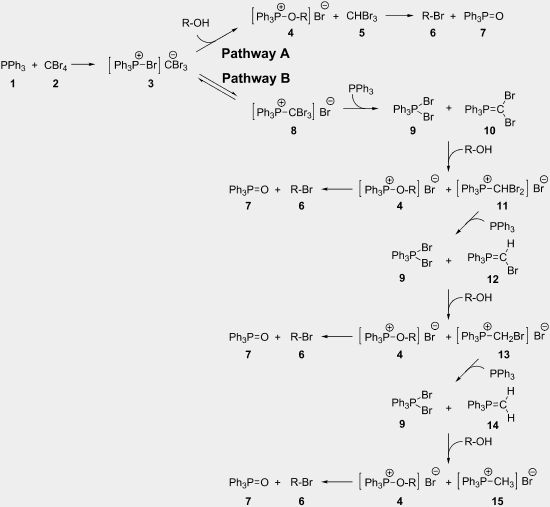 Read the publication that featured this abstract
Read the publication that featured this abstractHerein we describe the application of a monolithic triphenylphosphine reagent to the Appel reaction in flow-chemistry processing, to generate various brominated products with high purity and in excellent yields, and with no requirement for further off-line purification.Herein we describe the application of a monolithic triphenylphosphine reagent to the Appel reaction in flow-chemistry processing, to generate various brominated products with high purity and in excellent yields, and with no requirement for further off-line purification.
Application of Flow Chemistry to the Selective Reduction of Esters to Aldehydes
Juan de M. Muñoz1, Jesús Alcázar1, Antonio de la Hoz2, Angel Díaz-Ortiz2
- 1Janssen, Toledo, Spain
- 2Facultad de Ciencias Químicas, Universidad de Castilla-La Mancha, Spain
Read the publication that featured this abstractThe reduction of esters to aldehydes is an important transformation in organic chemistry and several reducing agents have been described. However, the use of this reaction in medicinal and natural product chemistry is limited due to the instability of the intermediates and the high reactivity of the reaction products. In the current article, the general and selective reduction of esters with diisobutyl-tert-butoxyaluminum hydride in flow is reported. This reagent allows esters to be reduced in the presence of different functional groups, including those considered to be of similar or higher reactivity.
Synthesis of Annulated Pyridines by Intramolecular Inverse-Electron-Demand Hetero-Diels-Alder Reaction under Superheated Continuous Flow Conditions
Rainer E. Martin1, Falk Morawitz1, Christoph Kuratli1, André M. Alker2, Alexander I. Alanine1
- 1Chemistry Technology and Innovation, F. Hoffmann-La Roche Ltd, Basel, Switzerland
- 2Biostructure Section, F. Hoffmann-La Roche Ltd,Basel, Switzerland
Read the publication that featured this abstractPyrimidine alkynes can be transformed into the corresponding annulated pyridines efficiently in flow. The superheating of organic solvents far beyond their boiling point enables toxic and difficult to workup solvents such as nitrobenzene or chlorobenzene, which are usually employed for these reactions, to be replaced by less harmful ones like toluene. The relative rate of reactivity for a series of structurally close starting materials was investigated and a scalable flow process was developed, providing facile access to a series of novel annulated pyridine building blocks. The effect of thermal volume expansion of solvents under superheated conditions was found to be significant and influenced the residence times considerably. To obtain meaningful and accurate residence times, flow rates need to be corrected for volume expansion. To avoid confusion with residence times, tR, calculated from nominal flow rates, we would propose to use for such corrected residence times the term effective residence time, tR,eff.
Continuous Preparation of Arylmagnesium Reagents in Flow with Inline IR Monitoring
- Tobias Brodmann1
- Peter Koos1
- Albrecht Metzger1
- Paul Knochel*2
- Steven V. Ley*1
- 1Department of Chemistry, University of Cambridge, U.K.
- 2Department of Chemistry, Ludwig Maximilians-Universität München, Germany
 Read the publication that featured this abstract
Read the publication that featured this abstractA newly developed microscale ReactIR flow cell was used as a convenient and versatile inline analytical tool for Grignard formation in continuous flow chemical processing. The LiCl-mediated halogen/Mg exchange reaction was used for the preparation of functionalized arylmagnesium compounds from aryl iodides or bromides. Furthermore, inline IR monitoring was used for the analysis of conversion and possible byproduct formation, as well as a potential tool for elucidation of mechanistic details. The results described herein indicate that the continuous flow systems are effective for highly exothermic reactions such as the Grignard exchange reaction due to fast mixing and efficient heat transfer.
Lead Diversification 2: Application to P38, gMTP and lead compounds
- M. Abid Masood1
- Marc Bazin2
- Mark E. Bunnage1
- Andrew Calabrese3
- Mark Cox1
- Sally-Ann Fancy1
- Elizabeth Farrant1
- David W. Pearce1
- Manuel Perez1
- Laure Hitzel1
- Torren Peakman1
- 1Worldwide Medicinal Chemistry, Pfizer, UK
- 2Hepatochem, Cambridge, MA, USA
- 3Celgene San Diego, USA
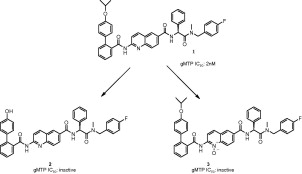 Read the publication that featured this abstract
Read the publication that featured this abstractLead Diversification is a new technology platform developed at Pfizer for the functionalization of drug molecules using C–H activation. We describe its application to some drug programs such as P38 and gMTP and the development of some new plate based screens including a fluorination screen.
New Insights into Cyclobutenone Rearrangements: A Total Synthesis of the Natural ROS-Generating Anti-Cancer Agent Cribrostatin 6
Mubina Mohamed1, Théo P. Gonçalves1, Prof. Richard J. Whitby1, Dr. Helen F. Sneddon2, Prof. David C. Harrowven1
- 1 Chemistry, University of Southampton, UK
- 2 GlaxoSmithKline Medicines Research Centre, UK
Read the publication that featured this abstractAryl- and heteroarylcyclobutenone rearrangements proceed in excellent yield under continuous-flow conditions. The former shows a Hammett correlation with σI providing strong evidence that electrocyclisation is the rate-determining step and has a late transition state. The reaction has been modelled by using DFT and CCSD(T) methods, with the latter giving excellent correlation with the experimental rate constant. A short and efficient total synthesis of cribrostatin 6, an anti-neoplastic and anti-microbial agent, provides a topical demonstration of the value of this method.
New Insights into Cyclobutenone Rearrangements: A Total Synthesis of the Natural ROS-Generating Anti-Cancer Agent Cribrostatin (ROS=reactive-oxygen species)
Mubina Mohamed1, Théo P. Gonçalves1, Richard J. Whitby1, Helen F. Sneddon2, David C. Harrowven1
- 1Dept of Chemistry, University of Southampton, UK
- 2GSK Medicines Research Centre, Stevenage, UK
Read the publication that featured this abstractAryl- and heteroarylcyclobutenone rearrangements proceed in excellent yield under continuous-flow conditions. The former shows a Hammett correlation with σI providing strong evidence that electrocyclisation is the rate-determining step and has a late transition state. The reaction has been modelled by using DFT and CCSD(T) methods, with the latter giving excellent correlation with the experimental rate constant. A short and efficient total synthesis of cribrostatin 6, an anti-neoplastic and anti-microbial agent, provides a topical demonstration of the value of this method.
A continuous-flow synthesis of annulated and polysubstituted furans from the reaction of ketones and a-haloketones
- Mark York
- CSIRO Materials Science and Engineering, Australia
- Cooperative Research Centre for Polymers, Notting Hill, Australia
 Read the publication that featured this abstract
Read the publication that featured this abstractA synthesis of di-, tri- and tetra-substituted furans from reaction of the corresponding ketones and α-haloketones with LiHMDS is reported. Reaction under continuous-flow conditions gave increased yields and removed the need for external cooling when compared to the unoptimised batch conditions.
The Oxygen-Mediated Synthesis of 1,3-Butadiynes in Continuous Flow: Using Teflon AF-2400 to Effect Gas/Liquid Contact
- Trine P. Petersen1,2,3
- Anastasios Polyzos1,4
- Matthew O’Brien1
- Trond Ulven2
- Ian R. Baxendale1
- Steven V. Ley1
- 1Whiffen Laboratory, University of Cambridge, UK
- 2Department of Physics and Chemistry, University of Southern Denmark
- 3Discovery Chemistry and DMPK, H. Lundbeck A/S,Denmark
- 4CSIRO, Materials Science and Engineering, Australia
 Read the publication that featured this abstract
Read the publication that featured this abstractThe gas is always greener: A continuous flow Glaser–Hay coupling reaction system, mediated by molecular oxygen, is developed based on a tube-in-tube gas/liquid reactor/injector. The system uses a semi-permeable Teflon AF-2400 membrane to effect rapid gas/liquid contact in flow, affording homogeneous solutions of oxygen. Measurements of out-gassing downstream of the back-pressure regulator indicate the onset of saturation is reached after about 16 seconds.
Continuous flow synthesis of conjugated polymers
- Helga Seyler
- David J. Jones
- Andrew B. Holmes
- Wallace W. H. Wong
- Bio21 Institute, University of Melbourne, Australia
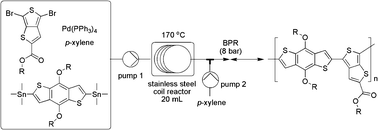 Read the publication that featured this abstract
Read the publication that featured this abstractA selection of conjugated polymers, widely studied in organic electronics, was synthesised using continuous flow methodology. As a result of superior heat transfer and reagent control, excellent polymer molecular mass distributions were achieved in significantly reduced reaction times compared to conventional batch reactions.
Suzuki-Miyaura Cross-Coupling of Heteroaryl Halides and Arylboronic Acids in Continuous Flow
- Timothy Noël
- Andrew J. Musacchio
- Department of Chemistry, MIT, USA
 Read the publication that featured this abstract
Read the publication that featured this abstractGeneral continuous-flow conditions for the Suzuki–Miyaura cross-coupling of heteroaryl halides and (hetero)arylboronic acids have been developed. A wide range of heterobiaryl products is obtained in excellent yields (20 examples) employing low catalyst loadings (0.05–1.5 mol % Pd).
Nitrile Oxide 1,3-Dipolar Cycloaddition by Dehydration of Nitromethane Derivatives Under Continuous Flow Conditions
Malte Brasholz, Simon Saubern*, G. Paul Savage
- CSIRO Materials Science and Engineering, Victoria, Australia.
Read the publication that featured this abstractAliphatic nitrile oxides were generated in situ, by dehydration of terminal nitro compounds, and reacted with dipolarophiles using continuous flow techniques to afford substituted isoxazolines. The yields of cycloadducts were comparable with traditional flask-based reactions but reaction times were much shorter. In-line scavenger cartridges conveniently removed by-products and unreacted reagents to give almost pure crude products. The process was demonstrated up to gram scale.
Continuous-flow, palladium-catalysed alkoxycarbonylation reactions using a prototype reactor in which it is possible to load gas and heat simultaneously
- Michael A. Mercadante
- Nicholas E. Leadbeater
- Department of Chemistry, University of Connecticut, USA
 Read the publication that featured this abstract
Read the publication that featured this abstractA prototype tube-in-tube reactor in which it is possible to load gas and heat simultaneously has been used in a continuous-flow approach to alkoxycarbonylation reactions of aryl iodides. In the stainless steel coil, liquid flows on the outside of a gas-permeable membrane. The coil can be heated and the temperature can be measured accurately via a probe touching the outer steel surface. A range of aryl iodides can be transformed to the corresponding esters in excellent conversion by reaction at 120 °C using 0.5 mol% palladium acetate as the catalyst with no additional ligand required. Small-scale optimization and substrate screening runs were followed by scale-up.
Continuous flow photolysis of aryl azides: Preparation of 3H-azepinones
- Farhan R. Bou-Hamdan
- François Lévesque
- Alexander G. O'Brien
- Peter H. Seeberger
- Max Planck Institute of Colloids and Interfaces, Berlin, Germany
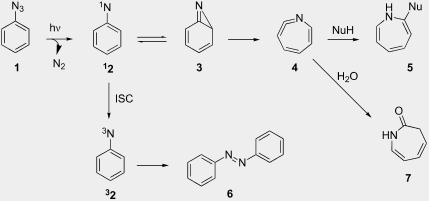 Read the publication that featured this abstract
Read the publication that featured this abstractPhotolysis of aryl azides to give nitrenes, and their subsequent rearrangement in the presence of water to give 3H-azepinones, is performed in continuous flow in a photoreactor constructed of fluorinated ethylene polymer (FEP) tubing. Fine tuning of the reaction conditions using the flow reactor allowed minimization of secondary photochemical reactions.
Teflon AF-2400 mediated gas–liquid contact in continuous flow methoxycarbonylations and in-line FTIR measurement of CO concentration
- Peter Koos
- Ulrike Gross
- Anastasios Polyzos
- Matthew O'Brien
- Ian Baxendale
- Steven V. Ley
- Innovative Technology Centre, University of Cambridge, UK
 Read the publication that featured this abstract
Read the publication that featured this abstractWe report on the development of a continuous flow process for the palladium catalysed methoxycarbonylation of aryl, heteroaromatic and vinyl iodides and an aryl bromide using a Teflon AF-2400 based Tube-in-Tube reactor to mediate the selective permeation of carbon monoxide into solution at elevated pressures. The low volume of pressurised gas within the reactor (5.6 mL) offers the potential for an enhanced safety profile compared to batch processes. We also present preliminary results for the use of in situFTIR to measure solution concentrations of carbon monoxide and demonstrate the use of a second reactor to effect the removal of carbon monoxide from the flow stream.
Rapid Access to α-Alkoxy and α-Amino Acid Derivatives through Safe Continuous-Flow Generation of Diazoesters
- Hannah E. Bartrum1
- David C. Blakemore2
- Christopher J. Moody1
- Christopher J. Hayes1
- 1School of Chemistry, University of Nottingham, UK
- 2Pfizer Global Research and Development, Sandwich, UK
 Read the publication that featured this abstract
Read the publication that featured this abstractMicroreactors: A highly efficient continuous-flow process has been developed for the synthesis of diazoesters from arylsulfonylhydrazones by means of in-flow Bamford–Stevens reactions. Furthermore, a range of α-alkoxy and α-amino acid derivatives have been prepared in excellent yields through rhodium(II)-mediated O[BOND]H and N[BOND]H insertions, without the need to isolate or handle the potentially hazardous diazo species (see scheme).
Ozonolysis in Flow Using Capillary Reactors
- M. D. Roydhouse1
- A. Ghaini2
- A. Constantinou
- A. Cantu-Perez2
- W. B. Motherwell1
- A. Gavriilidis2
- 1 Department of Chemistry, University College London, 20 Gordon Street, London WC1H 0AJ
- 2 Department of Chemical Engineering, University College London, Torrington Place, London WC1E 7JE
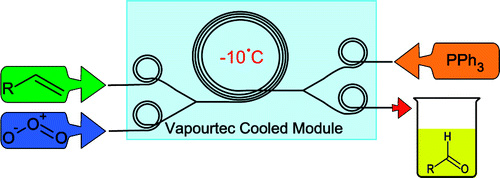 Read the publication that featured this abstract
Read the publication that featured this abstractReactions of n-decene with ozone and subsequent quenching of the formed ozonides were carried out under flow conditions using the standard Vapourtec flow system equipped with a cooled flow cell. The reactions were performed continuously and in the annular flow regime within the circular cross-section channels. Typical flow rates were 0.25–1 mL min–1 for liquid and 25–100 mL min–1 for gas, reactor volumes were 0.07–10 mL formed of 1 mm ID PFA tubing. The reaction temperature was −10 °C. The flow was not always smooth, while waves in the liquid film and droplets in the gas core were observed. Liquid residence times were found to be independent of gas flow rates and increasing with decreasing liquid flow rates. Substrate residence times in the ozonolysis reactor ranged between 1 and 80 s, and complete conversion could be achieved at ∼1 s residence time. Two common reductants, triethylphosphite and triphenylphosphine, were examined as to their suitability under flow conditions. Triphenylphosphine achieved faster reduction of the intermediate ozonides, resulting in a greater than 10:1 selectivity for the aldehyde over the corresponding acid. The cooling system provided a safe and efficient control of the highly exothermic reaction system. The configuration of the system allowed the production of chemically significant amounts (1.8 g h–1 at 1.3 ozone equivalents), with minimal amounts of ozonides present at any time.
An Integrated Flow and Batch-Based Approach for the Synthesis of O-Methyl Siphonazole
- Marcus Baumann
- Ian R. Baxendale
- Malte Brasholz
- John J. Hayward
- Steven V. Ley
- Nikzad Nikbin
- Innovative Technology Centre, Cambridge, UK
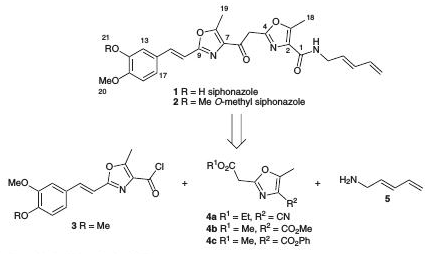 Read the publication that featured this abstract
Read the publication that featured this abstractThe bisoxazole containing natural product O-methyl siphonazole was assembled using a suite of microreactors via a flow-based approach in concert with traditional batch methods. The use of a toolbox of solid-supported scavengers and reagents to aid purification afforded the natural product in a total of nine steps.
Synthesis of a Drug-Like Focused Library of Trisubstituted Pyrrolidines Using Integrated Flow Chemistry and Batch Methods
- Marcus Baumann1
- Ian R. Baxendale1
- Steven V. Ley1
- Christoph Kuratli2
- Rainer E. Martin2
- Josef Schneider2
- 1Innovative Technology Centre, University of Cambridge, U.K.
- 2F. Hoffmann-La Roche Ltd., Basel, Switzerland
 Read the publication that featured this abstract
Read the publication that featured this abstractA combination of flow and batch chemistries has been successfully applied to the assembly of a series of trisubstituted drug-like pyrrolidines. This study demonstrates the efficient preparation of a focused library of these pharmaceutically important structures using microreactor technologies, as well as classical parallel synthesis techniques, and thus exemplifies the impact of integrating innovative enabling tools within the drug discovery process.
Nitration Chemistry in Continuous Flow using Fuming Nitric Acid in a Commercially Available Flow Reactor
- Cara E. Brocklehurst
- Hansjoerg Lehmann
- Luigi La Vecchia
- Global Discovery Chemistry, Novartis, Basel, Switzerland
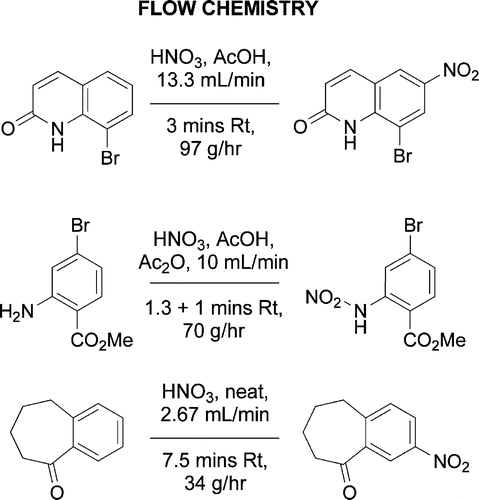 Read the publication that featured this abstract
Read the publication that featured this abstractThe paper will describe the use of flow chemistry for scaling up exothermic or hazardous nitration reactions. Such reactions often cause time delays to the delivery of larger batches of intermediates or final compounds for medicinal chemistry projects, because considerable time is required for safety evaluation and, if necessary, modification of the procedure so that it can be scaled-up and run in a safe manner. A commercially available continuous flow reactor was used in the scale up of three challenging nitrations including a reaction involving a potentially explosive mixture of acetic acid and fuming nitric acid, with a productivity of 97 g/h.
Synthesis of (+)-Dumetorine and Congeners by Using Flow Chemistry Technologies
Elena Riva2, Anna Rencurosi1, Stefania Gagliardi1, Daniele Passarella2, Marisa Martinelli1*
- 1NiKem Research S.r.l., Milan, Italy
- 2Università degli Studi di Milano,Milan, Italy
Read the publication that featured this abstractAn efficient total synthesis of the natural alkaloid (+)-dumetorine by using flow technology is described. The process entailed five separate steps starting from the enantiopure (S)-2- (piperidin-2-yl)ethanol 4 with 29 % overall yield. Most of the reactions were carried out by exploiting solvent superheating and by using packed columns of immobilized reagents or scavengers to minimize handling. New protocols for performing classical reactions under continuous flow are disclosed: the ring-closing metathesis reaction with a novel polyethylene glycol-supported Hoveyda catalyst and the unprecedented flow deprotection/Eschweiler–Clarke methylation sequence. The new protocols developed for the synthesis of (+)-dumetorine were applied to the synthesis of its simplified natural congeners (−)-sedamine and (+)-sedridine.
Continuous flow synthesis of fullerene derivatives
- Helga Seyler
- Wallace Wing Ho Wong
- Dave Jones
- Andrew B. Holmes
- University Of Melbourne, Australia
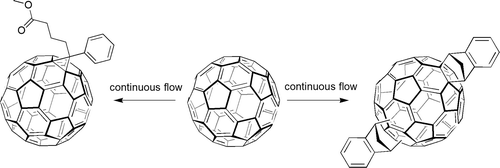 Read the publication that featured this abstract
Read the publication that featured this abstractVarious fullerene-based electron acceptor materials for organic photovoltaic applications were prepared via [3 + 2] and [4 + 2] cycloadditions using a continuous flow approach. The 1,3-dipolar cycloaddition of the tosylhydrazone precursor and the Diels−Alder cycloaddition of indene to either C60 or C70 under conventional batch reaction conditions were translated to the continuous flow process. By varying the residence time, temperature, and equivalents of cycloaddition reagent, significant improvements in yields and reaction times were achieved over conventional batch processes.
Preparation of fluoxetine by multiple flow processing steps
- Batoul Ahmed-Omer
- Adam J. Sanderson
- Eli Lilly and Co. Ltd.
- Lilly Research Centre, UK.
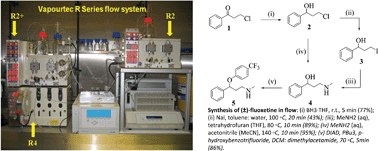 Read the publication that featured this abstract
Read the publication that featured this abstractMicroflow technology is established as a modern and fashionable tool in synthetic organic chemistry, bringing great improvement and potential, on account of a series of advantages over flask methods. The study presented here focuses on the application of flow chemistry process in performing an efficient multiple step syntheses of (±)-fluoxetine as an alternative to conventional synthetic methods, and one of the few examples of total synthesis accomplished by flow technique.
Oxidation Reactions in Segmented and Continuous Flow Chemical Processing Using an N-(tert-Butyl)phenylsulfinimidoyl Chloride Monolith
- Heiko Lange
- Matthew J. Capener
- Alexander X. Jones
- Catherine J. Smith
- Nikzad Nikbin
- Ian R. Baxendale
- Steven V. Ley*
- Innovative Technology Centre, Department of Chemistry, University of Cambridge, Lensfield Road, Cambridge, CB2 1EW, UK
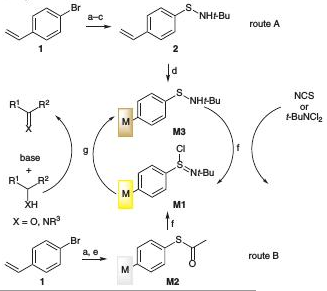 Read the publication that featured this abstract
Read the publication that featured this abstractA supported version of N-(tert-butyl)phenylsulfinimidoyl chloride on a monolithic material is described, which can be incorporated into a flow chemical processing arrangement to oxidise a variety of substrates in both stoichiometric and catalytic processes to yield products in high yields and in high purity after in-line workup.
Highly efficient dehydration of carbohydrates to 5-(chloromethyl)furfural (CMF), 5-(hydroxymethyl)furfural (HMF) and levulinic acid by biphasic continuous flow processing
- Malte Brasholz
- Karin von Känel
- Christian H. Hornung
- Simon Saubern
- John Tsanaktsidis
- CSIRO Materials Science & Engineering, Victoria , Australia
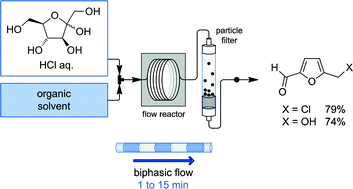 Read the publication that featured this abstract
Read the publication that featured this abstractUsing a continuous flow reactor, the dehydration of D-fructose and other carbohydrates to 5-(chloromethyl)furfural (1) is achieved in reaction times as short as 60 s. The biphasic flow process allows for high-yielding multigram scale production of CMF (1) which is obtained with excellent purity after a simple extractive work-up. Efficient conversion of D-fructose into 5-(hydroxymethyl)furfural (2) and levulinic acid (6) is also demonstrated using flow reactor techniques.
A General, One-Step Synthesis of Substituted Indazoles using a Flow Reactor
- Rob C. Wheeler
- Emma Baxter
- Ian B. Campbell
- Simon J. F. Macdonald
- GlaxoSmithKline, Stevenage, UK
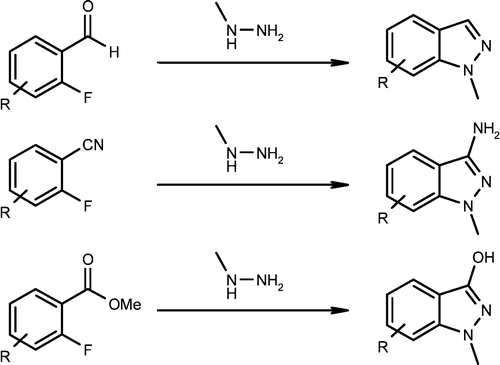 Read the publication that featured this abstract
Read the publication that featured this abstractFlow chemistry is a rapidly emerging technology within the pharmaceutical industry, both within medicinal and development chemistry groups. The advantages of flow chemistry, increased safety, improved reproducibility, enhanced scalability, are readily apparent, and we aimed to exploit this technology in order to provide small amounts of pharmaceutically interesting fragments via a safe and scalable route, which would enable the rapid synthesis of multigram quantities on demand. Here we report a general and versatile route which utilises flow chemistry to deliver a range of known and novel indazoles, including 3-amino and 3-hydroxy analogues.
Controlled RAFT Polymerization in a Continuous Flow Microreactor
- Christian H. Hornung
- Carlos Guerrero-Sanchez
- Malte Brasholz
- Simon Saubern
- John Chiefari
- Graeme Moad
- Ezio Rizzardo
- San H. Thang
- CSIRO Materials Science & Engineering, Victoria, Australia
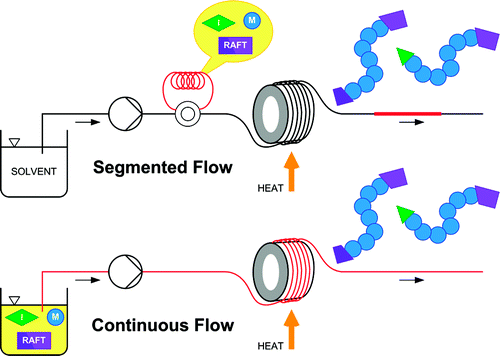 Read the publication that featured this abstract
Read the publication that featured this abstractControlled radical polymerization using the reversible addition−fragmentation chain transfer approach (RAFT) was successfully conducted under continuous flow processing conditions, provided that steel tubing was used to prevent quenching of the radical process by oxygen. A series of different monomers, including acrylamides, acrylates, and vinyl acetate, were polymerized to high conversions (between 80 and 100%) at temperatures between 70 and 100 °C using various initiators, solvents, and RAFT agents. Low dispersities, typically between 1.15−1.20, and average molecular weights similar to those of batch RAFT polymerizations were obtained. The methodology provides a facile, alternative scale-up route to conventional batch polymerization, which can be challenging because of the oxygen-sensitive nature of the RAFT process.
Diastereoselective Chain-Elongation Reactions Using Microreactors for Applications in Complex Molecule Assembly
Catherine F. Carter1, Heiko Lange1, Daiki Sakai2, Ian R. Baxendale1, Steven V. Ley1
- 1Innovative Technology Centre, University of Cambridge, UK, CB2 1EW, UK
- 2Mitsubishi Tanabe Pharma Corporation, Yokohama, Japan
Read the publication that featured this abstractDiastereoselective chain-elongation reactions are important transformations for the assembly of complex molecular structures, such as those present in polyketide natural products. Here we report new methods for performing crotylation reactions and homopropargylation reactions by using newly developed low-temperature flow-chemistry technology. In-line purification protocols are described, as well as the application of the crotylation protocol in an automated multi-step sequence.
Decarboxylative biaryl synthesis in a continuous flow reactor
- 1Paul P. Lange
- 1Lukas J. Gooßen
- 2Philip Podmore
- 2Toby Underwood
- 2Nunzio Sciammetta
- 1Technische Universität Kaiserslautern, Germany
- 2Pfizer Global R&D, Sandwich, UK
 Read the publication that featured this abstract
Read the publication that featured this abstractA practical protocol was developed that allows performing decarboxylative cross-coupling reactions in continuous flow reactors. Various biaryls were thus synthesized from aromatic carboxylic acids and aryl triflates using a Cu/Pd-catalyst system.
A fully automated, multistep flow synthesis of 5-amino-4-cyano-1,2,3-triazoles
- Catherine J. Smith
- Nikzad Nikbin
- Steven V. Ley
- Heiko Lange
- Ian R. Baxendale
- Innovative Technology Centre, Cambridge, UK
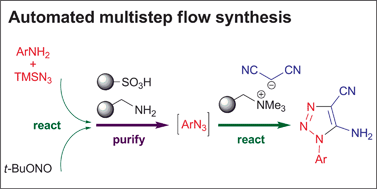 Read the publication that featured this abstract
Read the publication that featured this abstractHaving demonstrated in the preceding publication the flow synthesis of aryl azides, we describe here a general protocol for the in-line purification of these versatile intermediates. As part of this investigation, we evaluated the use of ReactIR 45m as a tool for real-time detection of hazardous azide contaminants. This azide synthesis and purification process was then incorporated into a multistep flow sequence to generate a small collection of 5-amino-4-cyano-1,2,3-triazoles directly from aniline starting materials in a fully automated fashion.
A breakthrough method for the accurate addition of reagents in multi-step segmented flow processing
- Heiko Lange1
- Catherine F. Carter1
- Mark D. Hopkin1
- Adrian Burke2
- Jon G. Goode2
- Ian R. Baxendale1
- Steven V. Ley1
- 1Innovative Technology Centre, University of Cambridge, UK
- 2Mettler-Toledo AutoChem UK
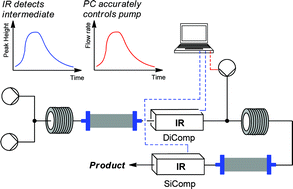 Read the publication that featured this abstract
Read the publication that featured this abstractIn order to use segmented chemical flow processing in more complex reaction sequences, a method has been developed to precisely control the addition of reagent streams during multi-step operations. Using in-line infra-red monitoring with a new LabVIEW software application, it is possible to control additional pumps to dispense further reagents in real time based upon the concentration of reaction intermediates. This enables precise mixing with perfect timing thus greatly increasing product quality and enabling segmented chemical flow processing to be used in extended reaction sequences.
One-Flow, Multistep Synthesis of Nucleosides by Brønsted Acid-Catalyzed Glycosylation
- Adam Sniady
- Matthew W. Bedore
- Timothy F. Jamison
- Novartis Institutes for Biomedical Research Inc., Cambridge, USA MIT, Cambridge, USA
 Read the publication that featured this abstract
Read the publication that featured this abstractNukleoside im Fluss: Eine universelle, skalierbare Methode für die Brønsted-Säure-katalysierte Bildung von Nukleosiden wird beschrieben. Dank der hohen Reaktionstemperaturen, die das Durchflussformat ermöglicht, können milde Brønsted-Säuren wie Pyridiniumtriflate eingesetzt werden. Auch die mehrstufige Synthese von ungeschützten Nukleosiden in einer einzelnen Durchflussprozedur ist möglich (siehe Schema).
Continuous flow thermolysis of azidoacrylates for the synthesis of heterocycles and pharmaceutical intermediates
- Alexander G. O'Brien
- François Lévesque
- Peter H. Seeberger
- Max Planck Institute of Colloids and Interfaces, Potsdam, Germany
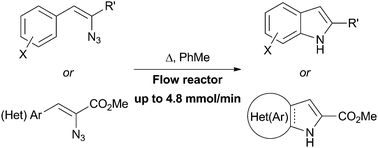 Read the publication that featured this abstract
Read the publication that featured this abstractAn efficient, safe and scalable procedure for the continuous flow thermolysis of azidoacrylates to yield indoles has been developed and was applied to the synthesis of related heterocycles. The scalability of the process was demonstrated in the continuous flow synthesis of a precursor to the DAAO inhibitor 4H-furo[3,2-b]pyrrole-5-carboxylic acid.
Safe and Reliable Synthesis of Diazoketones and Quinoxalines in a Continuous Flow Reactor
- Laetitia J. Martin1
- Andreas L. Marzinzik1
- Steven V. Ley2
- Ian R. Baxendale2
- 1Novartis Institute for BioMedical Research, Basel, Switzerland
- 2Innovative Technology Centre, Department of Chemistry, University of Cambridge
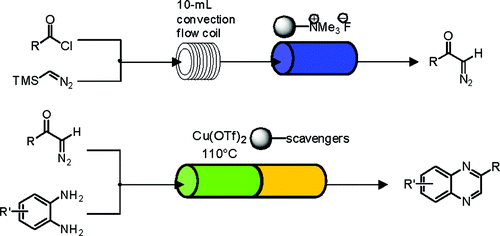 Read the publication that featured this abstract
Read the publication that featured this abstractA flow method for the synthesis of aliphatic and aromatic diazoketones from acyl chloride precursors has been developed and used to prepare quinoxalines in a multistep sequence without isolation of the potentially explosive diazoketone. The protocol showcases an efficient in-line purification using supported scavengers with time-saving and safety benefits and in particular a reduction in the operator’s exposure to carcinogenic phenylenediamines.
Continuous Flow Coupling and Decarboxylation Reactions Promoted by Copper Tubing
- Yun Zhang1
- Timothy F. Jamison2
- Sejal Patel1
- Nello Mainolfi1
- 1Novartis Institutes for Biomedical Research Inc., Cambridge, USA
- 2MIT, Cambridge, USA
 Read the publication that featured this abstract
Read the publication that featured this abstractA convenient and efficient flow method for Ullmann condensations, Sonogashira couplings, and decarboxylation reactions using a commercially available copper tube flow reactor (CTFR) is described. The heated CTFR effects these transformations without added metals (e.g., Pd), ligands, or reagents, and in greater than 90% yield in most cases examined.
Synthesis of β-Keto Esters In-Flow and Rapid Access to Substituted Pyrimidines
Hannah E. Bartrum1, David C. Blakemore2, Christopher J. Moody1, Christopher J. Hayes1
- 1School of Chemistry, University of Nottingham, UK
- 2Pfizer Global Research and Development, Sandwich, UK
Read the publication that featured this abstractWe have developed an in-flow process for the synthesis of β-keto esters via the BF3·OEt2-catalyzed formal C−H insertion of ethyl diazoacetate into aldehydes. The β-keto esters were then condensed with a range of amidines to give a variety of 2,6-substituted pyrimidin-4-ols.
Synthesis of 3-Aryl/benzyl-4,5,6,6a-tetrahydro-3aH-pyrrolo[3,4-d]isoxazole Derivatives: A Comparison between Conventional, Microwave-Assisted and Flow-Based Methodologies
Sabrina Castellano1, Lucia Tamborini2, Monica Viviano1, Andrea Pinto2, Gianluca Sbardella1, Paola Conti2
- 1Dipartimento di Scienze Farmaceutiche, Universit degli Studi di Salerno, Via Ponte Don Melillo, 84084 Fisciano, Italy
- 2Dipartimento di Scienze Farmaceutiche “Pietro Pratesi”, Universit degli Studi di Milano , Italy
Read the publication that featured this abstractTwo modern synthetic technologies to perform 1,3-dipolar cycloaddition reactions were compared. This study puts in evidence the power of microwave-assisted and flow-based methodologies compared to the conventional one in terms of reaction time and yield, and demonstrates the potential of flow chemistry in terms of time, automation, and scaling up opportunities.
Preparation of arylsulfonyl chlorides by chlorosulfonylation of in situ generated diazonium salts using a continuous flow reactor
- Laia Malet-Sanz
- Julia Madrzak
- Steven V.Ley
- Ian R.Baxendale
- Innovative Technology Centre, University of Cambridge
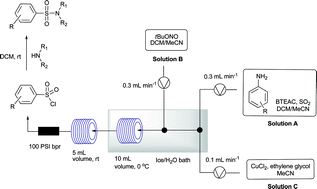 Read the publication that featured this abstract
Read the publication that featured this abstractA new flow procedure for the preparation of arylsulfonyl chlorides from aniline starting materials is described. The reaction conditions are mild, requiring no added acid and are amenable to continuous flow processing, in a safe, easily scalable and less labour intensive way than the corresponding batch method.
A Gram-Scale Batch and Flow Total Synthesis of Perhydrohistrionicotoxin
- Dr. Malte Brasholz1
- Dr. James M. Macdonald1
- Dr. Simon Saubern1
- Dr. John H. Ryan1
- Prof. Dr. Andrew B. Holmes1,2
- 1CSIRO Molecular and Health Technologies, Victoria, Australia
- 2School of Chemistry, Bio 21 Institute, University of Melbourne, Victoria, Australia
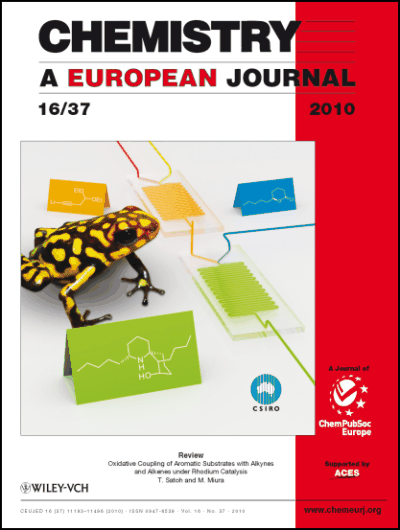 Read the publication that featured this abstract
Read the publication that featured this abstractBiologically valuable histrionicotoxin spiropiperidine alkaloids are found in the Colombian poison arrow frog Dendrobates histrionicus (shown on the cover). In their Full Paper on page 11471 ff., J. H. Ryan et al. describe efforts to synthesize an unnatural analogue, perhydrohistrionicotoxin, by combining conventional with microreactor techniques. (Photograph of Dendrobates histrionicus by Mauricio Rivera. Design by Martin Kowalski.)
A Continuous Flow Process Using a Sequence of Microreactors with In-line IR Analysis for the Preparation of N,N-Diethyl-4-(3-fluorophenylpiperidin-4-ylidenemethyl)benzamide as a Potent and Highly Selective δ-Opioid Receptor Agonist
Zizheng Qian, Ian R. Baxendale, Steven V. Ley
- Innovative Technology Centre, University of Cambridge
Read the publication that featured this abstractThis article describes the design, optimisation and development of a continuous flow synthesis of N,N-diethyl-4-(3-fluorophenylpiperidin-4-ylidenemethyl)benzamide, a potent δ-opioid receptor agonist developed by AstraZeneca. The process employs a sequence of flow-based microreactors, with integrated purification employing solid-supported reagents and in-line IR analytical protocols using a newly developed ReactIR flow cell. With this monitoring device, initiation of the fourth input flow stream can be precisely controlled during the synthesis.
Synthesis of Highly Substituted Nitropyrrolidines, Nitropyrrolizines and Nitropyrroles via Multicomponent-Multistep Sequences within a Flow Reactor
- Marcus Baumann
- Ian R. Baxendale
- Andreas Kirschning
- Steven V. Ley*
- Jens Wegner
- Department of Chemistry, University of Cambridge
 Read the publication that featured this abstract
Read the publication that featured this abstractWe expand upon recent results concerning dipolar cycloaddition reactions of unstabilized azomethine ylids with nitro alkenes to generate 3-nitropyrrolidines via a flow chemistry sequence. This new work describes the development of a three-component coupling reaction between glycine esters, aldehydes and nitro alkenes. In order to further demonstrate the utility of flow technology in concert with heterogeneous reagents and scavengers for complex reaction sequences an in-line oxidation resulting in the conversion of tetra-substituted pyrrolidines to their pyrrole congeners has been developed.
KMnO4-Mediated Oxidation as a Continuous Flow Process
- Jorg Sedelmeier
- Steven V. Ley
- Ian R. Baxendale
- Marcus Baumann
- Innovative Technology Centre, University of Cambridge
 Read the publication that featured this abstract
Read the publication that featured this abstractAn efficient and easily scalable transformation of alcohols and aldehydes to carboxylic acids and nitroalkane derivatives to the corresponding carbonyls and carboxylic acids using permanganate as the oxidant within a continuous flow reactor is reported. Notably, the generation and downstream processing of MnO2 slurries was not found to cause any blocking of the reactor when ultrasound pulses were applied to the flow system.
Flow synthesis of tricyclic spiropiperidines as building blocks for the histrionicotoxin family of alkaloids
- Malte Brasholz1
- Brian A. Johnson2
- James M. Macdonald1
- Anastasios Polyzos1
- John Tsanaktsidis1
- Simon Saubern1
- Andrew B. Holmes1,2
- John H. Ryan1
- 1CSIRO Molecular and Health Technologies, Victoria, Australia
- 2School of Chemistry, Bio 21 Institute, University of Melbourne, Victoria, Australia
 Read the publication that featured this abstract
Read the publication that featured this abstractA domino cyclization reaction of the bis-unsaturated ketone 3 with hydroxylamine proceeds with good yield and high stereoselectivity, in a flow reactor system. The tricyclic spiropiperidine products 5 and 2 obtained are valuable building blocks for the synthesis of analogues of the histrionicotoxin alkaloids.
Effect of phase transfer chemistry, segmented fluid flow, and sonication on the synthesis of cinnamic esters
- Mauro Riccaboni
- Elena La Porta
- Andrea Martorana
- Roberta Attanasio
- Department of Medicinal Chemistry, NiKem Research Srl, Milan, Italy
 Read the publication that featured this abstract
Read the publication that featured this abstractWittig reaction under Phase Transfer conditions was performed in a flow reaction system. Different bases, aldehydes, phosphonium salts, and flow reaction parameters were investigated, in absence of a phase transfert catalyst. An improvement of the reaction outcome (yield and reaction time) was achieved through the immersion of the reactor into an ultrasound bath
Continuous Flow Palladium(II)-Catalyzed Oxidative Heck Reactions with Arylboronic Acids
- Luke R. Odell1
- Jonas Lindh1
- Tomas Gustafsson2
- Mats Larhed1*
- 1Organic Pharmaceutical Chemistry, Department of MedChem, Uppsala University, Sweden
- 2AstraZeneca R&D Mölndal, Sweden
 Read the publication that featured this abstract
Read the publication that featured this abstractPalladium(II)-catalyzed oxidative Heck reactions were investigated under continuous flow conditions. Selective, fast and convenient protocols for the coupling of arylboronic acids with electron-rich and electron-poor olefins were developed by using a commercially available flow reactor.
A flow-based synthesis of Imatinib: the API of Gleevec
- Mark D. Hopkin
- Ian R. Baxendale
- Steven V. Ley
- Innovative Technology Centre, Department of Chemistry, University of Cambridge
 Read the publication that featured this abstract
Read the publication that featured this abstractA concise, flow-based synthesis of Imatinib, a compound used for the treatment of chronic myeloid leukaemia, is described whereby all steps are conducted in tubular flow coils or cartridges packed with reagents or scavengers to effect clean product formation. An in-line solvent switching procedure was developed enabling the procedure to be performed with limited manual handling of intermediates.
Reaction of Grignard reagents with carbonyl compounds under continuous flow conditions
- E. Riva1
- S. Gagliardi2
- M. Martinelli2
- D. Passarella1
- D. Vigo2
- A. Rencurosi2
- 1Dipartimento di Chimica Organica e Industriale, Università degli Studi di Milano, Milano, Italy
- 2NiKem Research S.r.l., , Milan, Italy
 Read the publication that featured this abstract
Read the publication that featured this abstractThis contribution details how a continuous flow reactor was used to react carbonyl compounds with Grignard reagents at room temperature in an efficient and safe manner. Flow rate, residence time and temperature were optimized for the preparation of a small collection of secondary and tertiary alcohols. Excellent yields and general applicability were observed using the set-up protocol. The procedure was also applied for the preparation of Tramadol, an analgesic drug belonging to the opioid group. The developed conditions allowed the selective addition of Grignard reagents to aldehydes and ketones in the presence of a nitrile function.
The application of flow microreactors to the preparation of a family of casein kinase I inhibitors
- Francesco Venturoni
- Nikzad Nikbin
- Steven V. Ley
- Ian R. Baxendale
- Innovative Technology Centre, Department of Chemistry, University of Cambridge
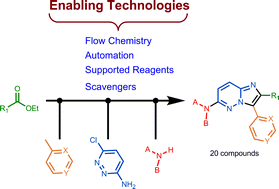 Read the publication that featured this abstract
Read the publication that featured this abstractIn this article we demonstrate how a combination of enabling technologies such as flow synthesis, solid-supported reagents and scavenging resins utilised under fully automated software control can assist in typical medicinal chemistry programmes. In particular automated continuous flow methods have greatly assisted in the optimisation of reaction conditions and facilitated scale up operations involving hazardous chemical materials. Overall a collection of twenty diverse analogues of a casein kinase I inhibitor has been synthesised by changing three principle binding vectors.
A Flow Process Using Microreactors for the Preparation of a Quinolone Derivative as a Potent 5HT1B> Antagonist
- Zizheng Qian
- Ian R. Baxendale
- Steven V. Ley
- Innovative Technology Centre, Department of Chemistry, University of Cambridge
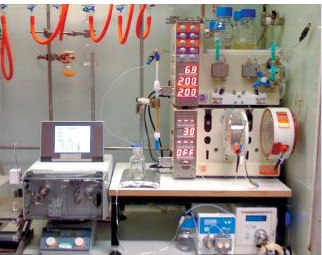 Read the publication that featured this abstract
Read the publication that featured this abstractThis article describes the continuous flow synthesis of 6-methoxy-8-(4-methyl-1,4-diazepan-1-yl)-N-(4-morpholinophen-yl)-4-oxo-1,4-dihydroquinoline-2-carboxamide, a potent 5HT1B antagonist developed by AstraZeneca.
ReactIR Flow Cell: A New Analytical Tool for Continuous Flow Chemical Processing
- Catherine F. Carter1
- Heiko Lange1
- Steven V. Ley1
- Ian R. Baxendale1
- Brian Wittkamp2
- Jon G. Goode3
- Nigel L. Gaunt3
- 1Innovative Technology Centre, Department of Chemistry, University of Cambridge
- 2Mettler-Toledo AutoChem, USA
- 3Mettler-Toledo AutoChem, UK
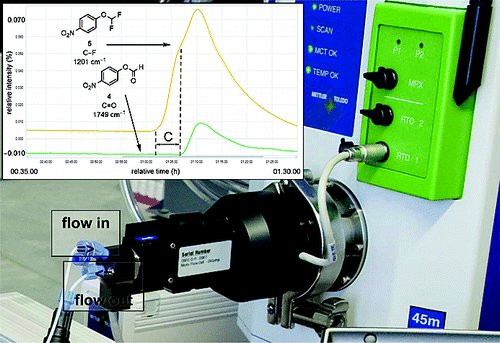 Read the publication that featured this abstract
Read the publication that featured this abstractA newly developed ReactIR flow cell is reported as a convenient and versatile inline analytical tool for continuous flow chemical processing. The flow cell, operated with ATR technology, is attached directly into a reaction flow stream using standard OmniFit (HPLC) connections and can be used in combination with both meso- and microscale flow chemistry equipment. The iC IR analysis software (version 4.0) enables the monitoring of reagent consumption and product formation, aiding the rapid optimisation of procedures. Short-lived reactive intermediates can also be observed in situ, giving further mechanistic insight into complex transformations.
A highly efficient flow reactor process for the synthesis of N-Boc-3,4-dehydro-l-proline methyl ester
- Lucia Tamborini
- Paola Conti
- Andrea Pinto
- Carlo De Micheli
- Dipartimento di Scienze Farmaceutiche ‘Pietro Pratesi’,
- Università degli Studi di Milano, Italy
 Read the publication that featured this abstract
Read the publication that featured this abstractThe multi-step preparation of N-Boc-3,4-dehydro-l-proline methyl ester using a modular flow reactor is reported. The use of immobilised reagents and scavengers in pre-packed glass tubes allows us to obtain the pure product in 87% overall yield, 97% purity, and >98% enantiomeric excess without any additional purification step. Our flow-based protocol enables the rapid multi-gram synthesis (about 9 g/12 h) of the desired product.
[3+2] Dipolar cycloadditions of an unstabilised azomethine ylide under continuous flow conditions
- Mark Grafton
- Andrew C. Mansfield
- M. Jonathan
- Pfizer Global Research and Development, Sandwich, UK
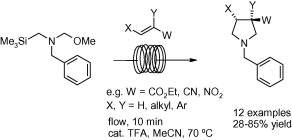 Read the publication that featured this abstract
Read the publication that featured this abstractThe [3+2] dipolar cycloaddition reactions of the unstabilised azomethine ylide precursor benzyl(methoxymethyl)(trimethylsilylmethyl)amine with 12 electron-deficient alkenes in the presence of catalytic trifluoroacetic acid are examined under continuous flow conditions (20–100 °C, 10–60 min residence time). The more reactive and hazardous alkenes such as ethyl acrylate, N-methylmaleimide and (E)-2-nitrostyrene afford substituted N-benzylpyrrolidine products in 77–83% yields, whereas less reactive dipolarophiles such as (E)-crotononitrile and ethyl methacrylate give lower yields (59–63%). Under optimised conditions, the reaction with ethyl acrylate is scaled up to afford ethyl N-benzylpyrrolidine-3-carboxylate (30 g, 87%) in 1 h.
Multi-Step Synthesis by Using Modular Flow Reactors: The Preparation of YneOnes and Their Use in Heterocycle Synthesis
- Ian R. Baxendale1
- Søren C. Schou2
- Jörg Sedelmeier1
- Steven V. Ley1
- 1ITC, Department of Chemistry, University of Cambridge
- 2LEO Pharma, Medicinal Chemistry Research, Denmark
 Read the publication that featured this abstract
Read the publication that featured this abstractMulti-step in flow: The palladium-catalysed acylation of terminal alkynes for the synthesis of yne[BOND]ones as well as their further transformation to various heterocycles in a continuous-flow mode is presented. Furthermore, an extension of the simple flow configuration that allows for easy batch splitting and the generation of a heterocyclic library is described (see scheme).
A safe and reliable procedure for the iododeamination of aromatic and heteroaromatic amines in a continuous flow reactor
- Laia Malet-Sanz
- Julia Madrzak
- Rhian S. Holvey
- Toby Underwood
- Research Chemistry, Pfizer Global Research and Development, Sandwich, UK
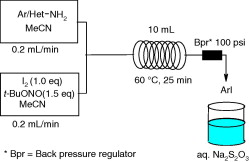 Read the publication that featured this abstract
Read the publication that featured this abstractA method for the safe and reliable iododeamination of aromatic and heteroaromatic amines under copper-free conditions is described and its scope is evaluated.
Development of fluorination methods using continuous-flow microreactors
- Marcus Baumann
- Ian R. Baxendale
- Laetitia J. Martin
- Steven V. Ley
- Innovative Technology Centre, Cambridge, UK
 Read the publication that featured this abstract
Read the publication that featured this abstractThe safe and reliable use of various fluorination methods including nucleophilic fluorination (DAST), trifluoromethylation (Ruppert’s reagent) and electrophilic fluorination (Selectfluor®) in a continuous-flow microreactor is reported. Special attention was given to the use of in-line scavenging procedures in order to obtain clean products without the need for further purification.
Multistep Synthesis Using Modular Flow Reactors: Bestmann-Ohira Reagent for the Formation of Alkynes and Triazoles
- Ian R. Baxendale1
- Steven V. Ley1
- Andrew C. Mansfield2
- Christopher D. Smith1
- 1ITC, Department of Chemistry, University of Cambridge,
- 2Pfizer Global R&D Research Centre, Sandwich, (UK)
 Read the publication that featured this abstract
Read the publication that featured this abstractMultistep in flow: The Seyferth–Gilbert reagent 1 has been applied in a flow system to rapidly synthesize terminal alkynes. The system has been further applied to synthesize triazole 3 from alcohol 2 in a three-step oxidation/homologation/copper(I)-catalyzed azide–alkyne cycloaddition sequence without isolation of intermediates (see scheme).
Efficient Continuous Flow Synthesis of Hydroxamic Acids and Suberoylanilide Hydroxamic Acid Preparation
- E. Riva1
- S. Gagliardi2
- Caterina Mazzoni2
- M. Martinelli2
- D. Passarella1
- D. Vigo2
- A. Rencurosi2
- 1Dipartimento di Chimica Organica e Industriale, Università degli Studi di Milano, Italy
- 2NiKem Research S.r.l., Milan, Italy
 Read the publication that featured this abstract
Read the publication that featured this abstractA continuous flow tubing reactor can be used to readily transform methyl or ethyl carboxylic esters into the corresponding hydroxamic acids. Flow rate, reactor volume, and temperature were optimized for the preparation of a small collection of hydroxamic acids. Synthetic advantages were identified as an increased reaction rate and higher product purity. This method was also successfully applied to the multistep preparation of suberoylanilide hydroxamic acid, a potent HDAC inhibitor used in anticancer therapy.
A Bifurcated Pathway to Thiazoles and Imidazoles Using a Modular Flow Microreactor
Ian R. Baxendale, Steven V. Ley, Christopher D. Smith, Lucia Tamborini, Ana-Florina Voica
- Innovative Technology Centre, Cambridge, UK
Read the publication that featured this abstractA scalable method for the preparation of 4,5-disubstituted thiazoles and imidazoles as distinct regioisomeric products using a modular flow microreactor has been devised. The process makes use of microfluidic reaction chips and packed immobilized-reagent columns to effect bifurcation of the reaction pathway.
The Use of Diethylaminosulfur Trifluoride (DAST) for Fluorination in a Continuous-Flow Microreactor
Baumann, Marcus, Baxendale, Ian R., Ley, Steven V.
- Innovative Technology Centre, Cambridge, UK
Read the publication that featured this abstractThe convenient and safe use of diethylaminosulfur trifluoride as a fluorinating agent in a continuous-flow microreactor is described using an in-line purification method to obtain clean reaction products.
A modular flow reactor for performing Curtius rearrangements as a continuous flow process
- Marcus Baumann1
- Ian R. Baxendale1
- Steven V. Ley1
- Nikzad Nikbin1
- Christopher D. Smith1
- Jason P. Tierney2
- 1Innovative Technology Centre, Department of Chemistry, University of Cambridge
- 2Neurology Lead Discovery Chemistry, GlaxoSmithKline R and D, Harlow, UK
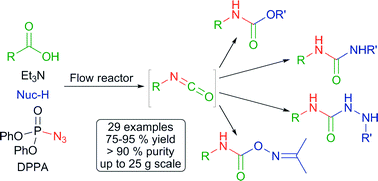 Read the publication that featured this abstract
Read the publication that featured this abstractThe use of a mesofluidic flow reactor is described for performing Curtius rearrangement reactions of carboxylic acids in the presence of diphenylphosphoryl azide and trapping of the intermediate isocyanates with various nucleophiles.
Azide monoliths as convenient flow reactors for efficient Curtius rearrangement reactions
- Marcus Baumann
- Ian R. Baxendale
- Steven V. Ley
- Nikzad Nikbin
- Christopher D. Smith
- Innovative Technology Centre, Cambridge, UK
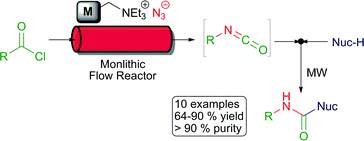 Read the publication that featured this abstract
Read the publication that featured this abstractThe preparation and use of an azide-containing monolithic reactor is described for use in a flow chemistry device and in particular for conducting Curtius rearrangement reactions via acid chloride inputs.
A Microcapillary Flow Disc Reactor for Organic Synthesis
- Christian H. Hornung1
- Malcolm R. Mackley2
- Ian R. Baxendale1
- Steven V. Ley1
- 1Department of Chemistry, University of Cambridge
- 2Department of Chemical Engineering, University of Cambridge
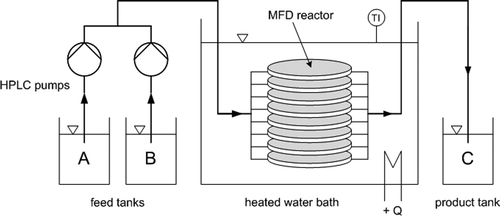 Read the publication that featured this abstract
Read the publication that featured this abstractThis paper reports proof of concept, development, and trials for a novel plastic microcapillary flow disc (MFD) reactor. The MFD was constructed from a flexible, plastic microcapillary film (MCF), comprising parallel capillary channels with diameters in the range of 80−250 μm. MCFs were wound into spirals and heat treated to form solid discs, which were then capable of carrying out continuous flow reactions at elevated temperatures and pressures and with a controlled residence time. Three reaction schemes were conducted in the system, namely the synthesis of oxazoles, the formation of an allyl-ether, and a Diels−Alder reaction. Reaction scales of up to four kilograms per day could be achieved. The potential benefits of the MFD technology are compared against those of other reactor geometries including both conventional lab-scale and other microscale devices.
Tagged phosphine reagents to assist reaction work-up by phase-switched scavenging using a modular flow reactor
- Christopher D. Smith
- Ian Baxendale
- Geoffrey Tranmer
- Marcus Baumann
- Stephen Smith
- Russell Lewthwaite
- Steven V. Ley
- Department of Chemistry, University of Cambridge, UK
 Read the publication that featured this abstract
Read the publication that featured this abstractThe use of three orthogonally tagged phosphine reagents to assist chemical work-up via phase-switch scavenging in conjunction with a modular flow reactor is described. These techniques (acidic, basic and Click chemistry) are used to prepare various amides and tri-substituted guanidines from in situ generated iminophosphoranes.
[3 + 2] Cycloaddition of acetylenes with azides to give 1,4-disubstituted 1,2,3-triazoles in a modular flow reactor
- Christopher D. Smith1
- Ian R. Baxendale1
- Steve Lanners1
- John J. Hayward1
- Steven V. Ley1
- Stephen C. Smith2
- 1Innovative Technology Centre, University of Cambridge, UK
- 2Syngenta, Jealots Hill International Research Centre, UK
 Read the publication that featured this abstract
Read the publication that featured this abstractThe cycloaddition of acetylenes with azides to give the corresponding 1,4-disubstituted 1,2,3-triazoles is reported using immobilised reagents and scavengers in pre-packed glass tubes in a modular flow reactor.
Continuous Flow Ligand-Free Heck Reactions Using Monolithic Pd [0] Nanoparticles
- Nikzad Nikbin
- Mark Ladlow
- Steven V. Ley
- Department of Chemistry, University of Cambridge, UK
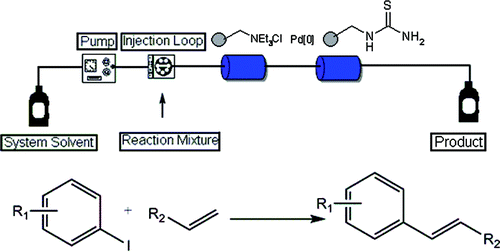 Read the publication that featured this abstract
Read the publication that featured this abstractAn automated reactor has been developed for performing ligand-free Heck reactions in continuous flow mode. The reactor utilises a monolithic reactor cartridge derivatised with Pd(0) nanoparticles in-line with a scavenging cartridge containing Quadrapure-TU to efficiently capture palladium residues and thereby afford Heck products directly in high purity.
Fully Automated Flow-Through Synthesis of Secondary Sulfonamides in a Binary Reactor System
- Charlotte M. Griffiths-Jones
- Mark D. Hopkin
- Daniel Jönsson
- Steven V. Ley
- David J. Tapolczay
- Emma Vickerstaffe
- Mark Ladlow
- GlaxoSmithKline Cambridge Technology Centre, Cambridge
 Read the publication that featured this abstract
Read the publication that featured this abstractA fully automated flow-through process for the production of secondary sulfonamides is presented. Primary sulfonamides were monoalkylated using a two-step “catch and release” protocol to generate library products of high purity. The automated flow synthesis platform incorporates four independent reactor columns and is able to perform automated column regeneration. A 48-member sulfonamide library was prepared as two 24-member sublibraries, affording library compounds in good yields and high purities without the need for further column chromatographic purification.
Fully Automated Continuous Flow Synthesis of 4,5-Disubstituted Oxazoles
- Marcus Baumann
- Ian R. Baxendale
- Steven V. Ley
- Christoper D. Smith
- Geoffrey K. Tranmer
- Innovative Technology Center, University of Cambridge
 Read the publication that featured this abstract
Read the publication that featured this abstractA multipurpose mesofluidic flow reactor capable of producing gram quantities of material has been developed as an automated synthesis platform for the rapid on-demand synthesis of key building blocks and small exploratory libraries. The reactor is configured to provide the maximum flexibility for screening of reaction parameters that incorporate on-chip mixing and columns of solid supported reagents to expedite the chemical syntheses.
A flow reactor process for the synthesis of peptides utilizing immobilized reagents, scavengers and catch and release protocols
- Ian R. Baxendale
- Steven V. Ley
- Christopher D. Smith
- Geoffrey K. Tranmer
- Innovative Technology Centre, Cambridge, UK
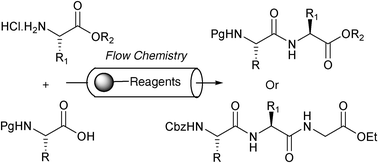 Read the publication that featured this abstract
Read the publication that featured this abstractA general flow process for the multi-step assembly of peptides has been developed and this procedure has been used to successfully construct a series of Boc, Cbz and Fmoc N-protected dipeptides in excellent yields and purities, including an extension of the method to enable the preparation of a tripeptide derivative.
A flow process for the multi-step synthesis of the alkaloid natural product oxomaritidine: a new paradigm for molecular assembly
Ian R. Baxendale, Jon Deeley, Charlotte M. Griffiths-Jones, Steven V. Ley, Steen Saaby, Geoffrey K. Tranmer
- Innovative Technology Centre, University of Cambridge
Read the publication that featured this abstractA flow process for the multi-step synthesis of the alkaloid natural product (±)-oxomaritidine is described, mediated through the use of microfluidic pumping systems that progress material through various packed columns containing immobilized reagents, catalysts, scavengers or catch and release agents; our route involves the combination of seven separate synthetic steps linked into one continuous sequence utilizing flow chemistry.
Get in touch
For more information on flow chemistry systems and services please use the contact methods below.
Call us on +44 (0)1284 728659 or Email us
Resource Centre
R-Series
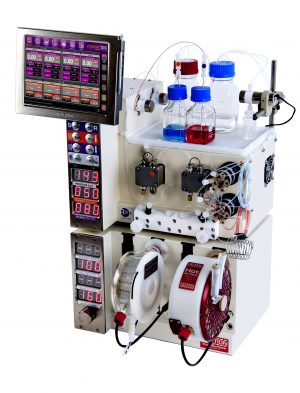
The Vapourtec R-Series is, quite simply, unrivalled for flow chemistry
- Flexible |
- Precise |
- Automatable
The R-Series is undoubtedly the most versatile, modular flow chemistry system available today.
E-Series
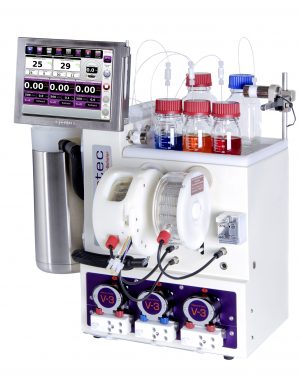
The Vapourtec E-Series is the perfect introductory system for flow chemistry
- Robust |
- Easy to use |
- Affordable
The E-Series is a robust and affordable, entry level flow chemistry system designed for reliability and ease of use.

